My most current blog entry:
Entries in Gardens (11)
The Outer Hebrides
 Sunday, June 7, 2020 at 6:44PM
Sunday, June 7, 2020 at 6:44PM
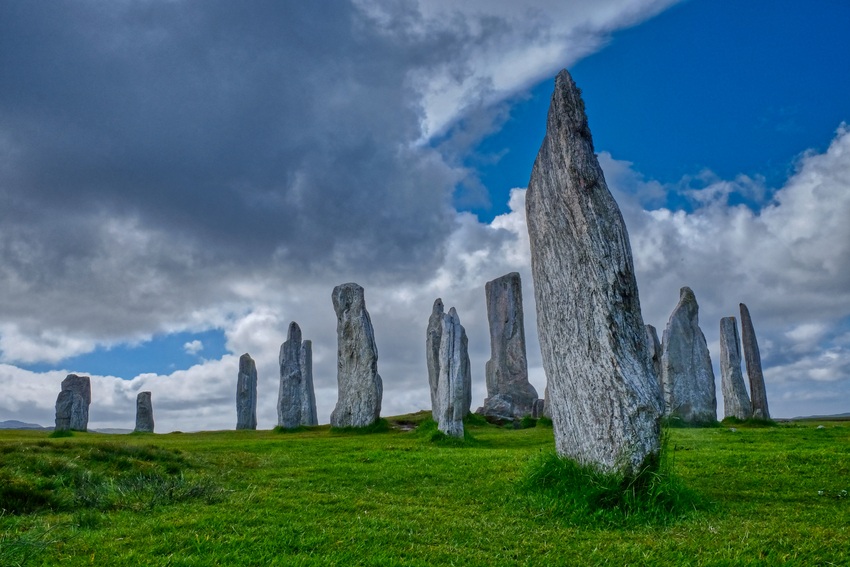 The Outer Hebrides are filled with archeological wonders!
The Outer Hebrides are filled with archeological wonders!
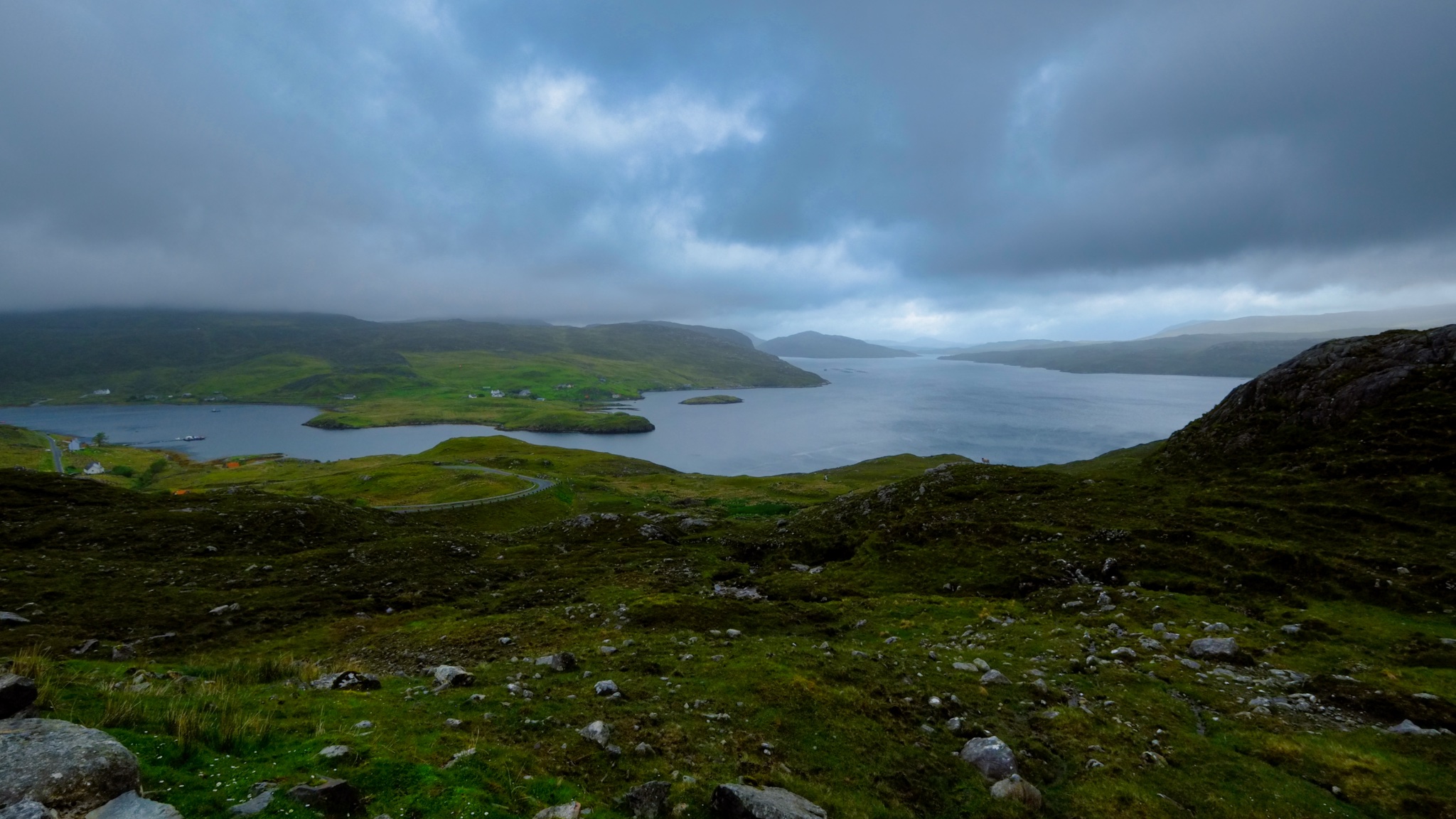
Magnificent views around every corner of the winding single track roads!
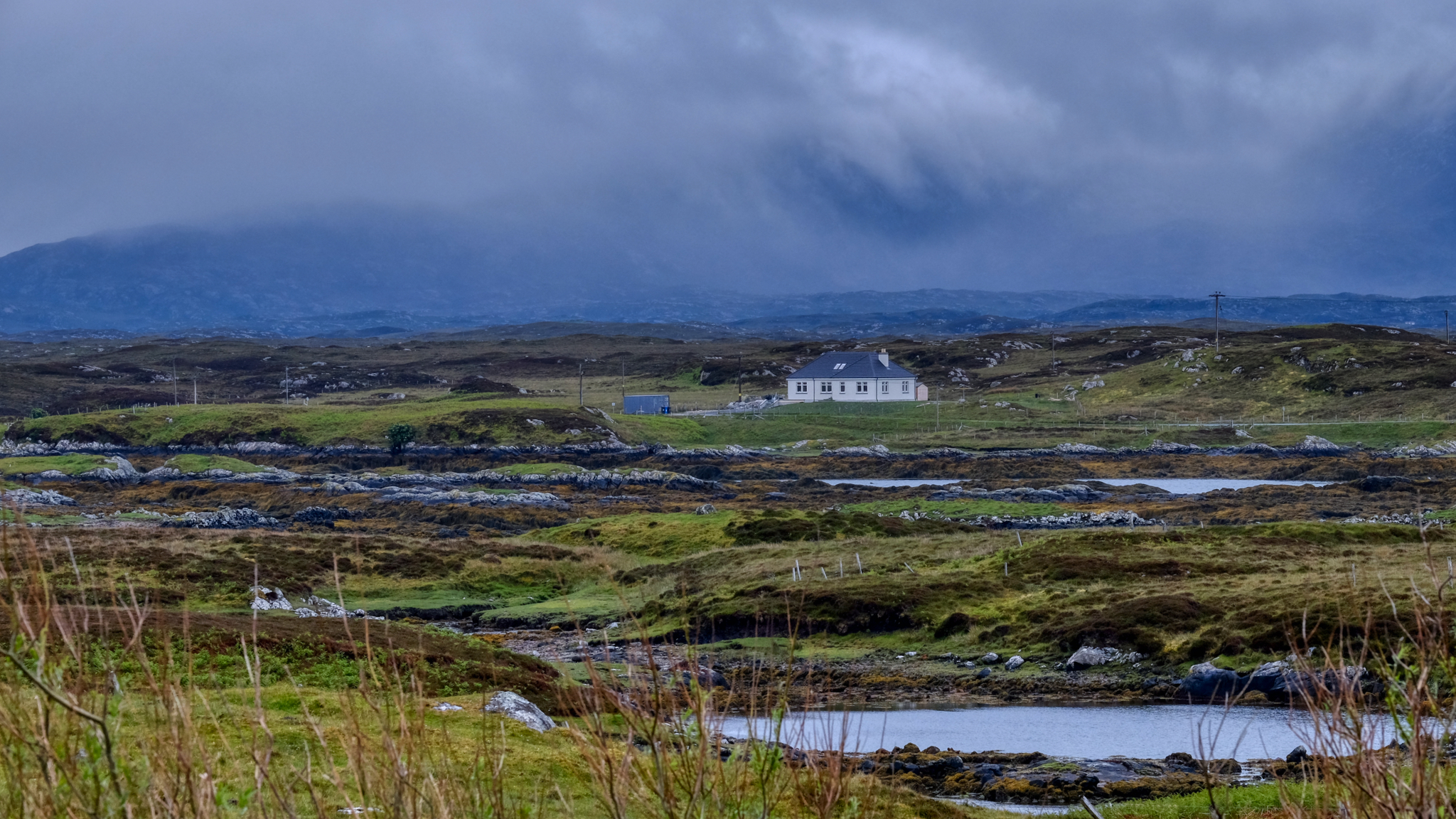 Otherworldly scenes . . .
Otherworldly scenes . . .
-----------------------------------------------------
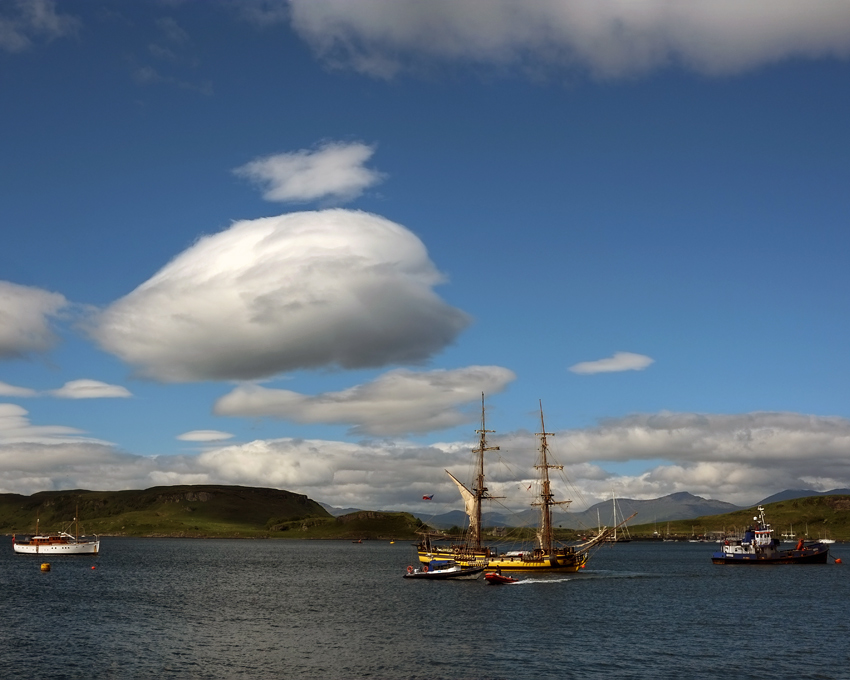
Our journey from the mainland of Scotland began on a fine late June day in Oban harbour.
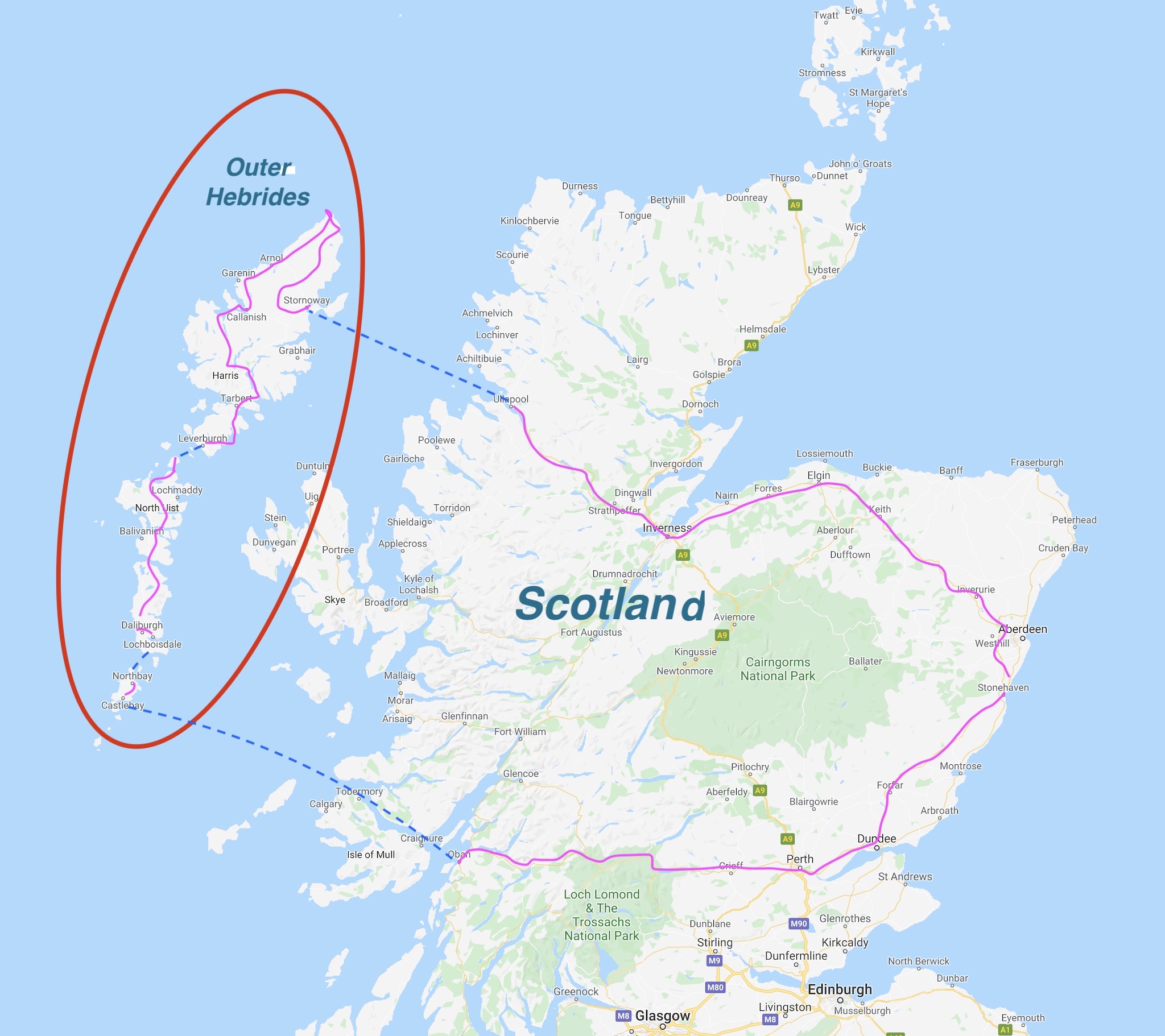 Our 10-day road and ferry trip began at our [then] home in Aberdeen, on the east coast. We spent six of those wonderful days out on the one-lane roads and ferry crossings of the Outer Hebrides.
Our 10-day road and ferry trip began at our [then] home in Aberdeen, on the east coast. We spent six of those wonderful days out on the one-lane roads and ferry crossings of the Outer Hebrides.
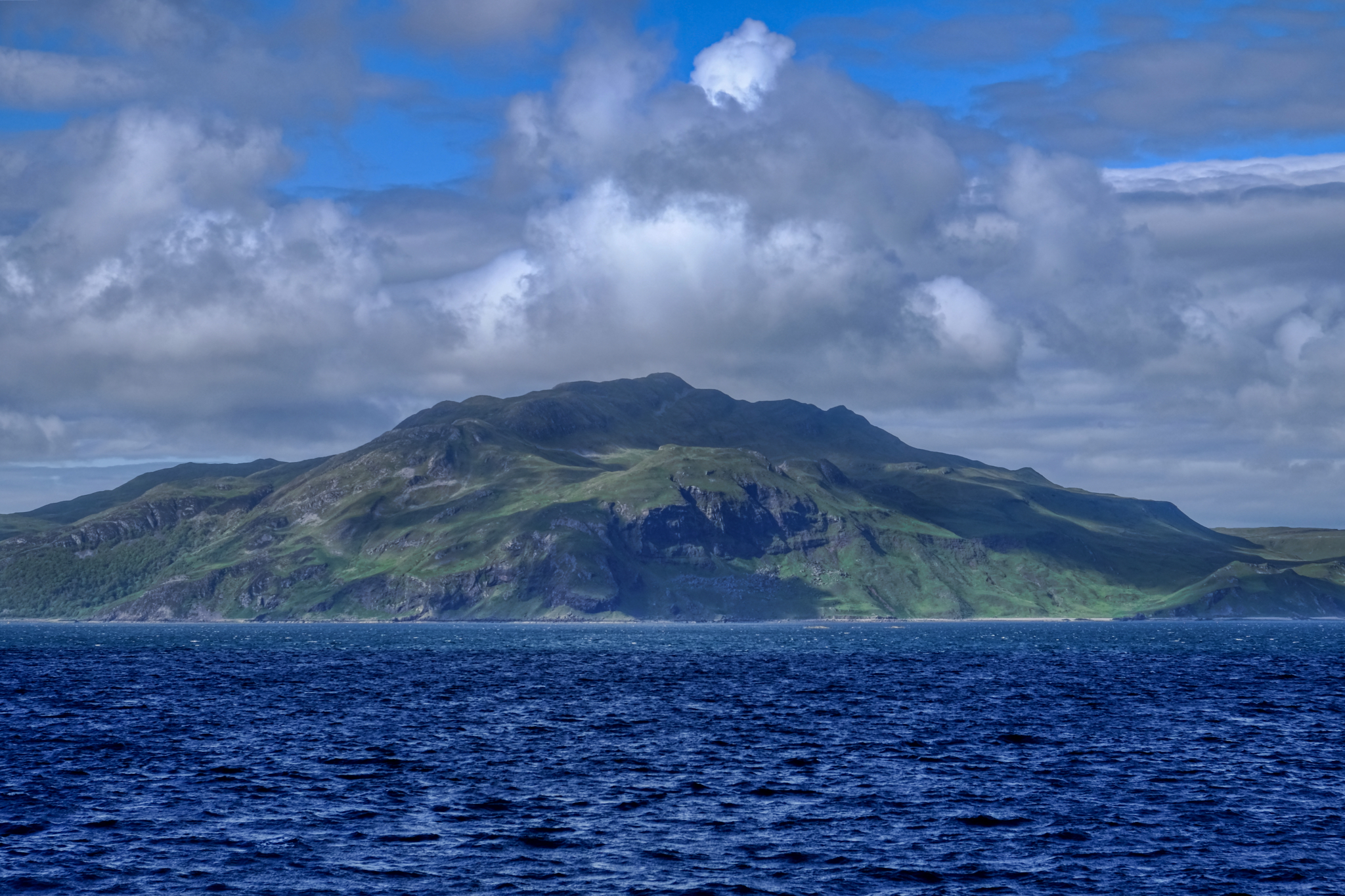
The ferry out of Oban passes through a straight with views of the Isle of Mull on one side.
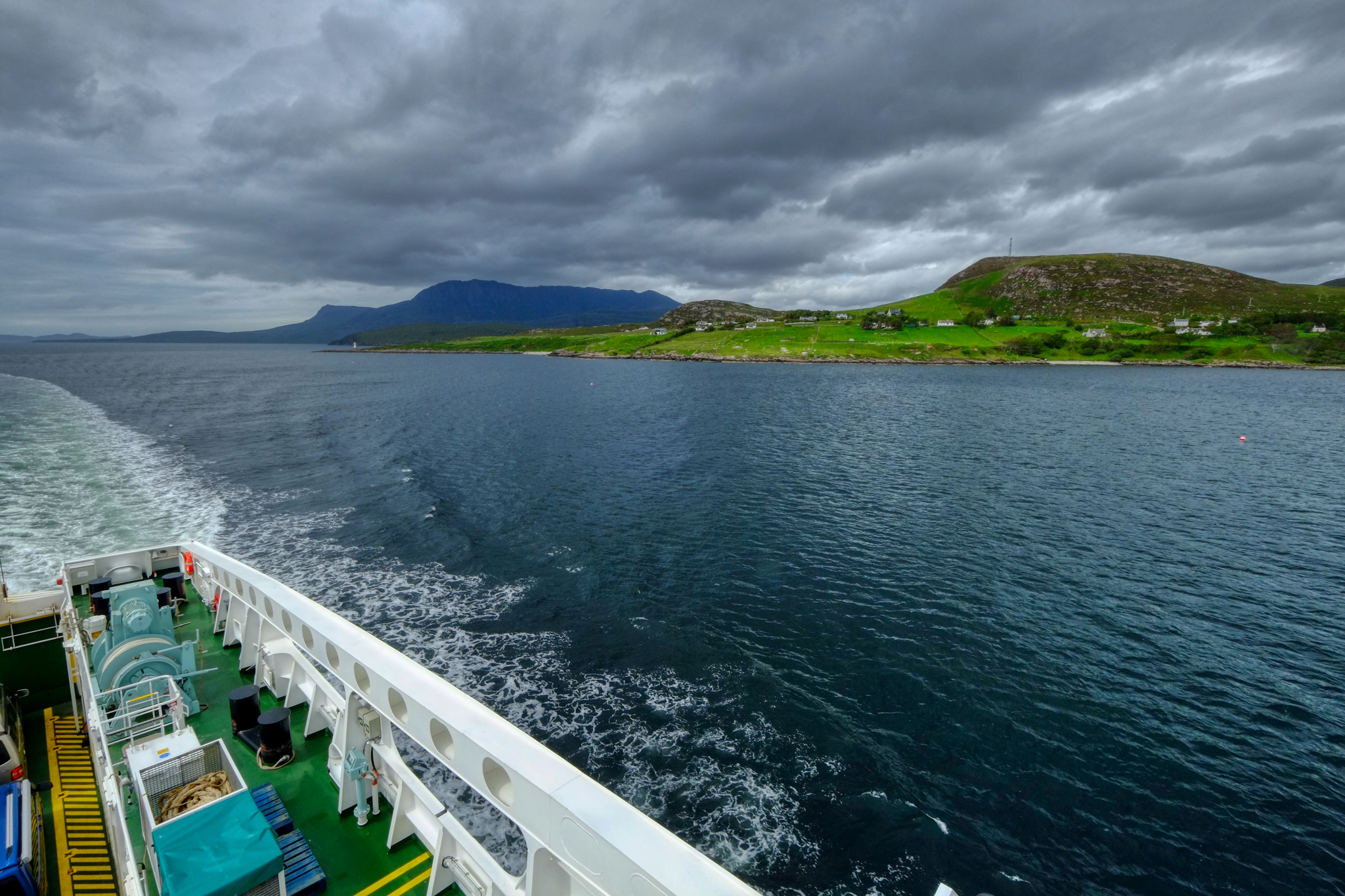 It was a gorgeous 4 hour and 45 minute ferry trip . . . it is important to book your ferry well in advance in the summer months, including the small inter-island ferries out in the Outer Hebrides.
It was a gorgeous 4 hour and 45 minute ferry trip . . . it is important to book your ferry well in advance in the summer months, including the small inter-island ferries out in the Outer Hebrides.
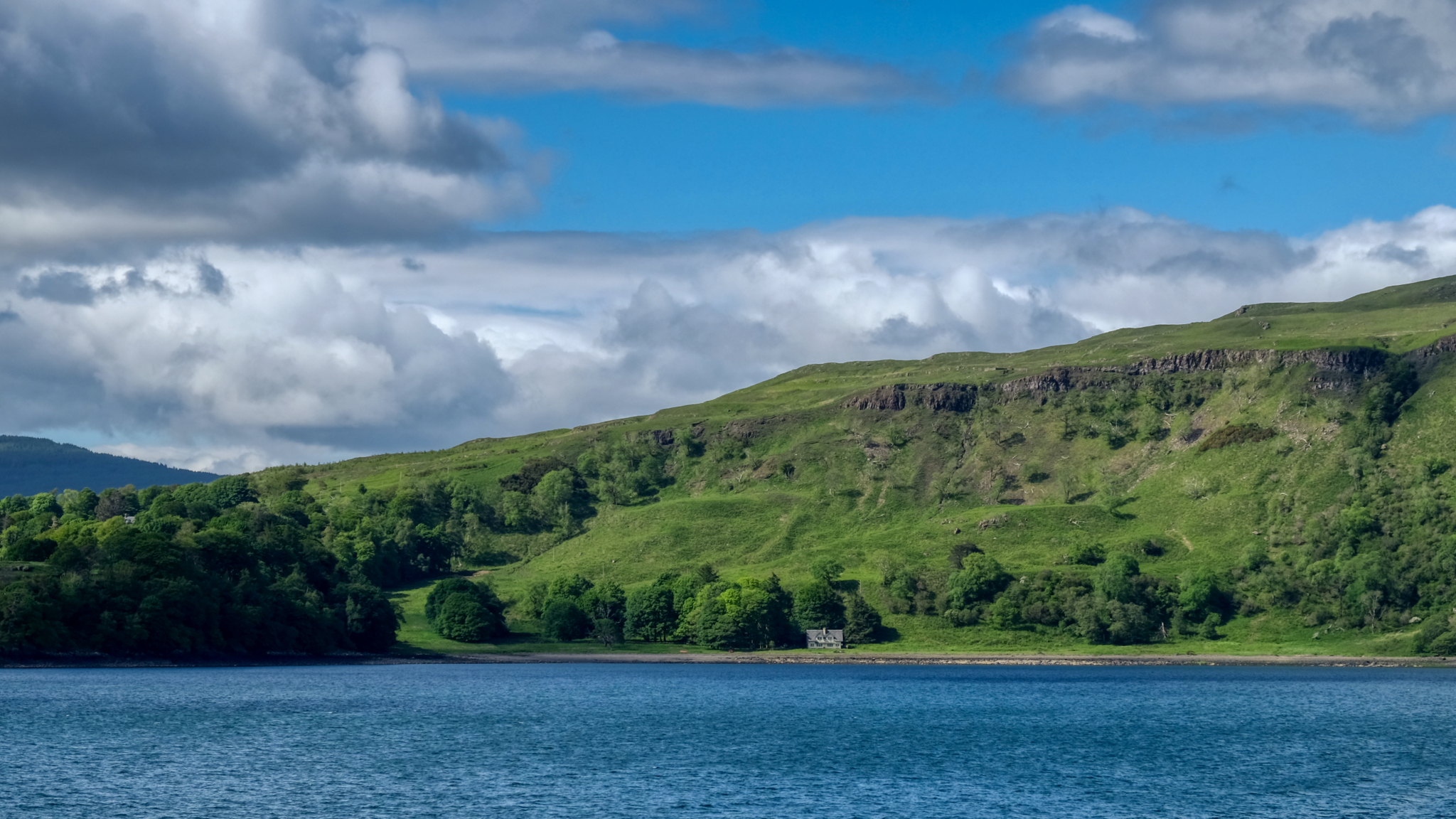 Yes, I would live here . . . .
Yes, I would live here . . . .
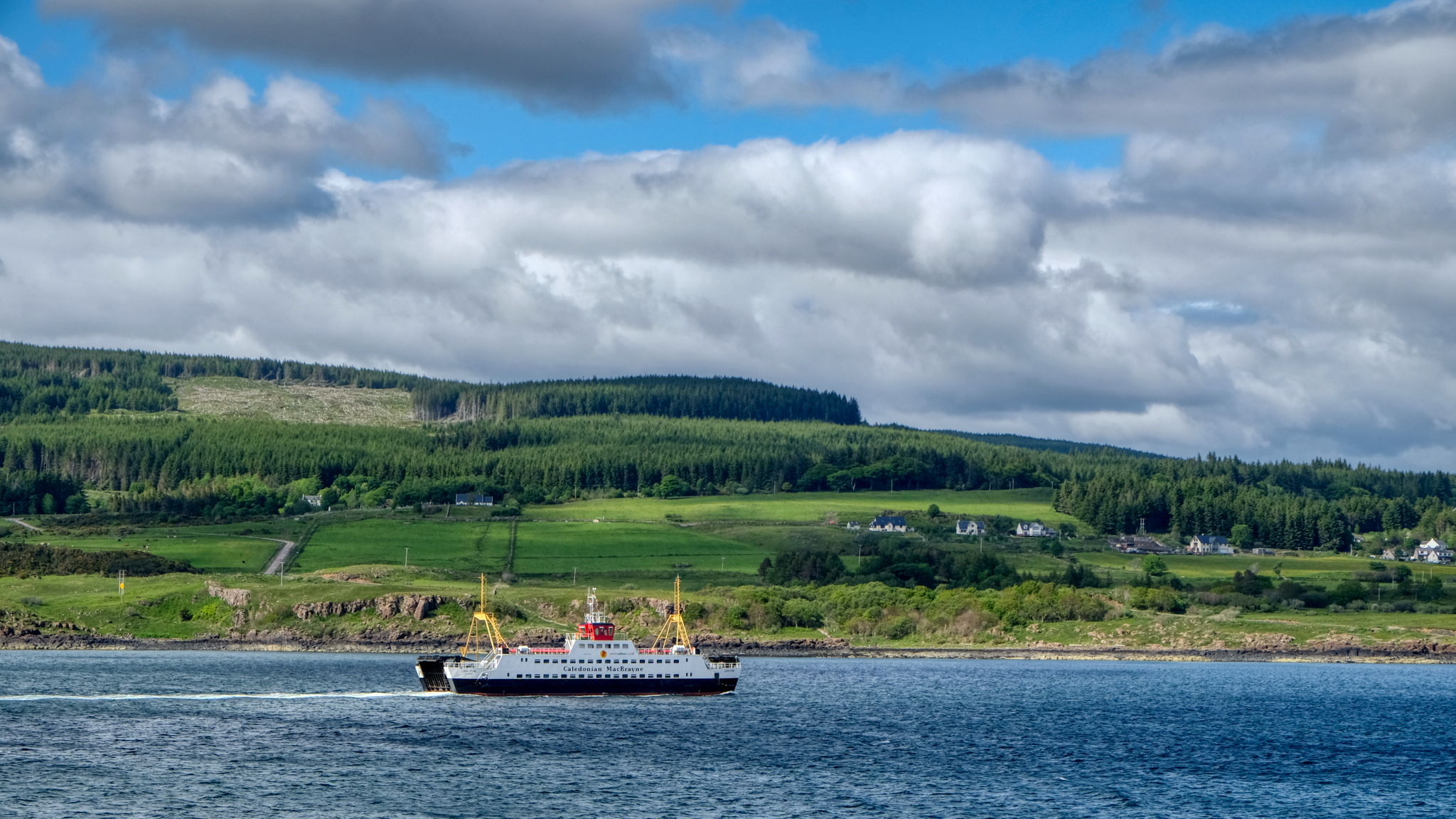 With so many islands off the west coast of Scotland, there are many small ferry routes.
With so many islands off the west coast of Scotland, there are many small ferry routes.
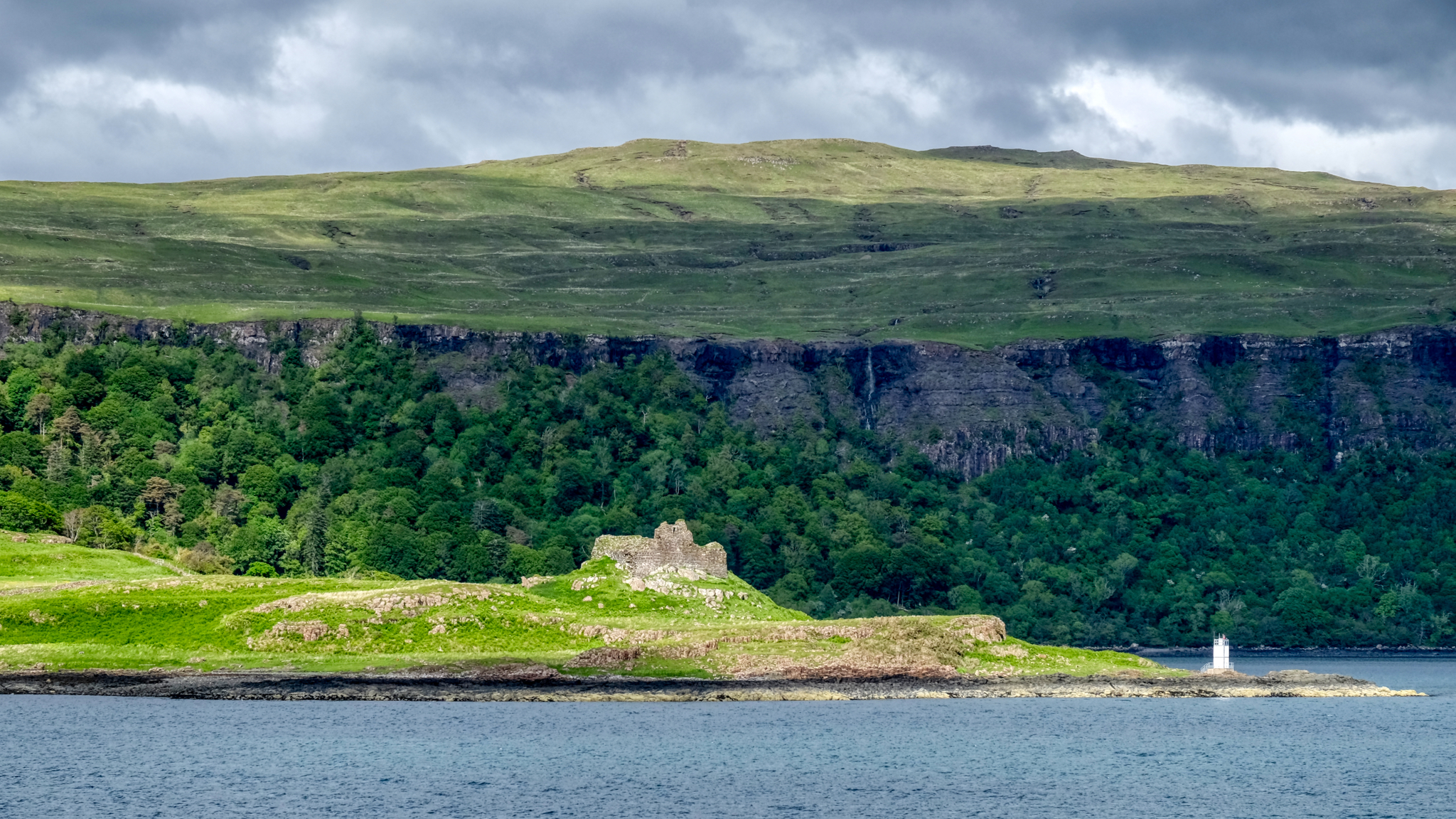 History is everywhere along our route. Castle ruins seem to dot the landscape.
History is everywhere along our route. Castle ruins seem to dot the landscape.
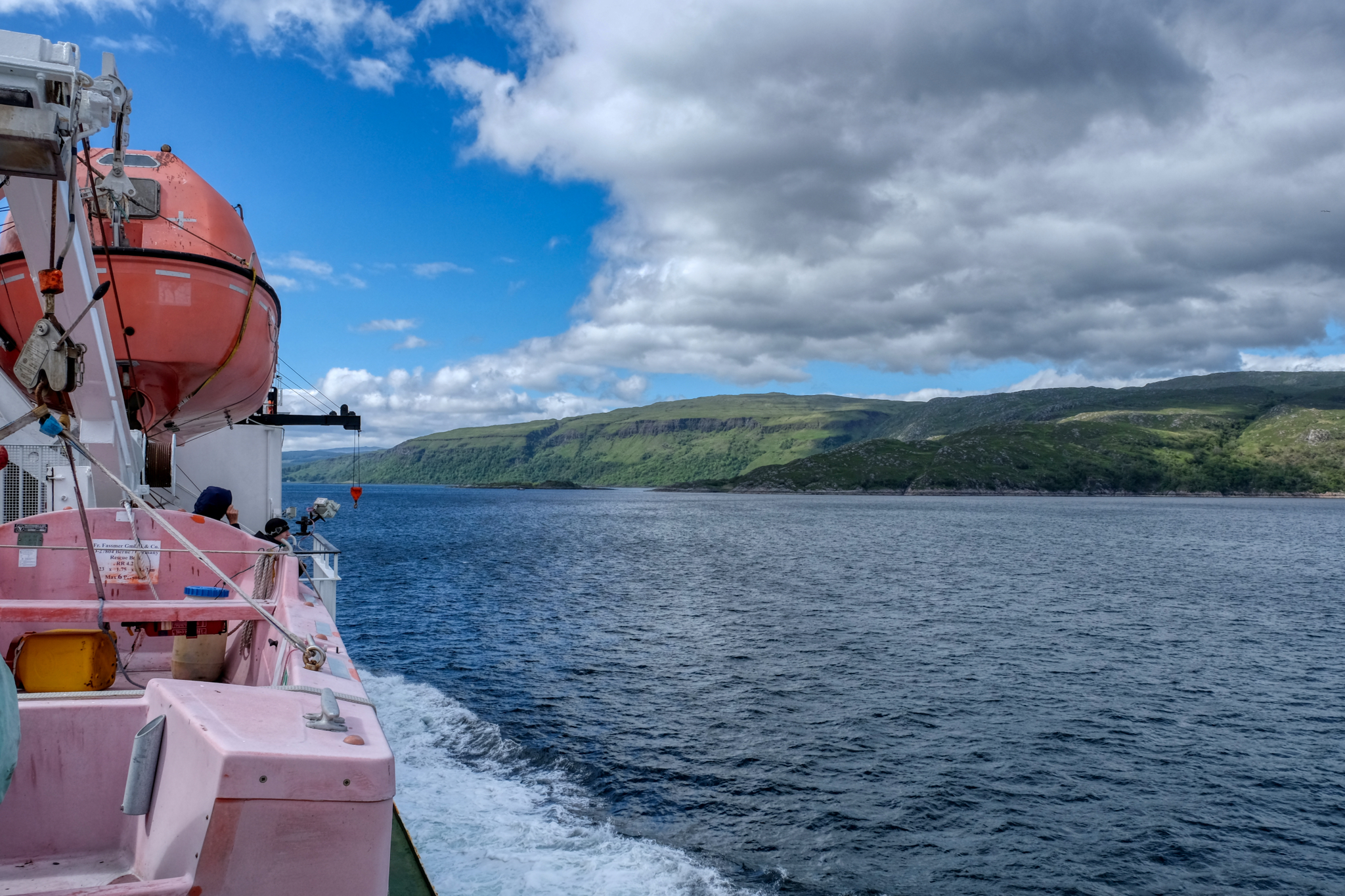 Such a relaxing way to travel.
Such a relaxing way to travel.
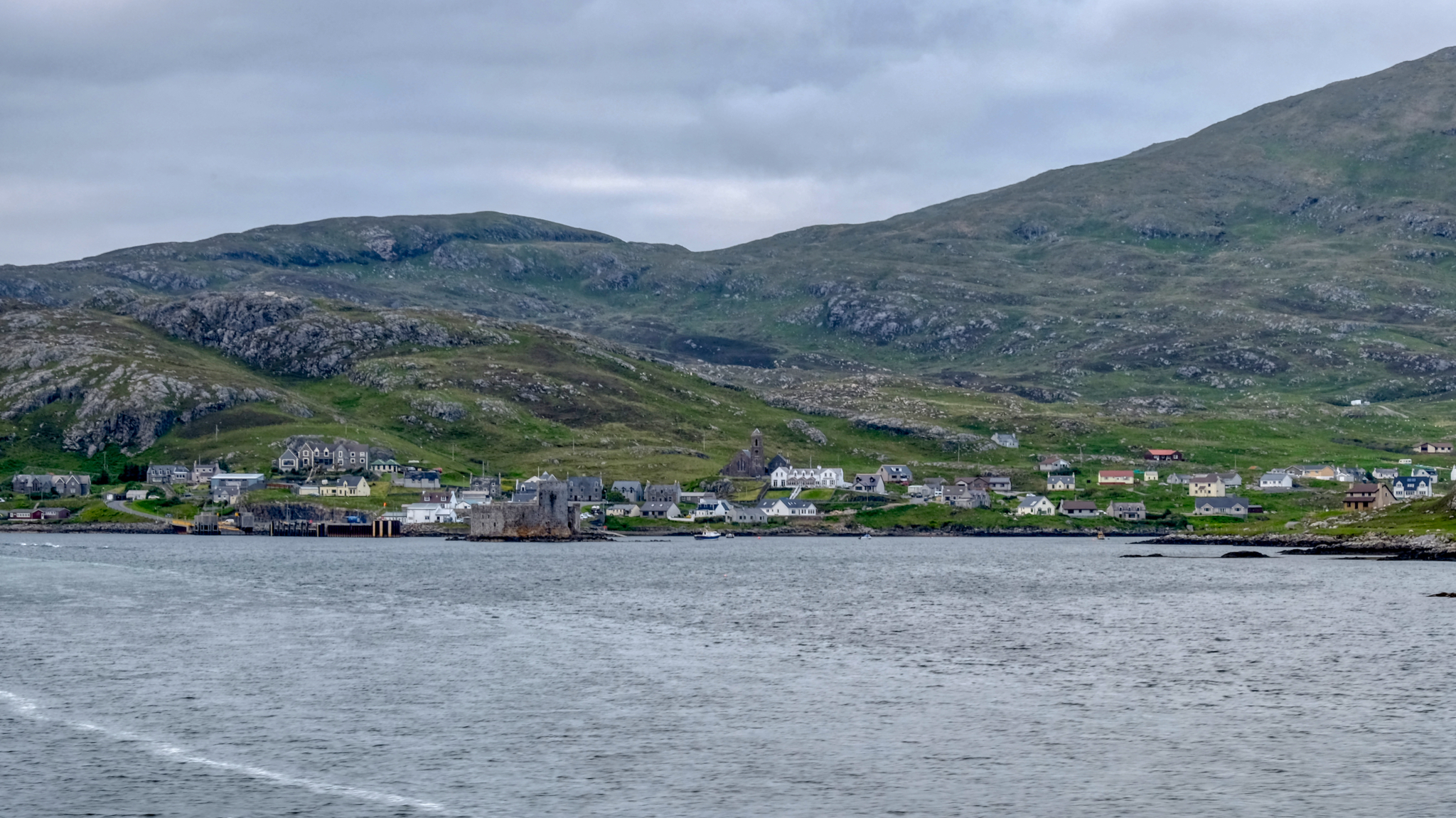 Time passed quickly and we found ourselves nearing Castlebay, the southernmost port on the Outer Hebrides, the Isle of Barra.
Time passed quickly and we found ourselves nearing Castlebay, the southernmost port on the Outer Hebrides, the Isle of Barra.
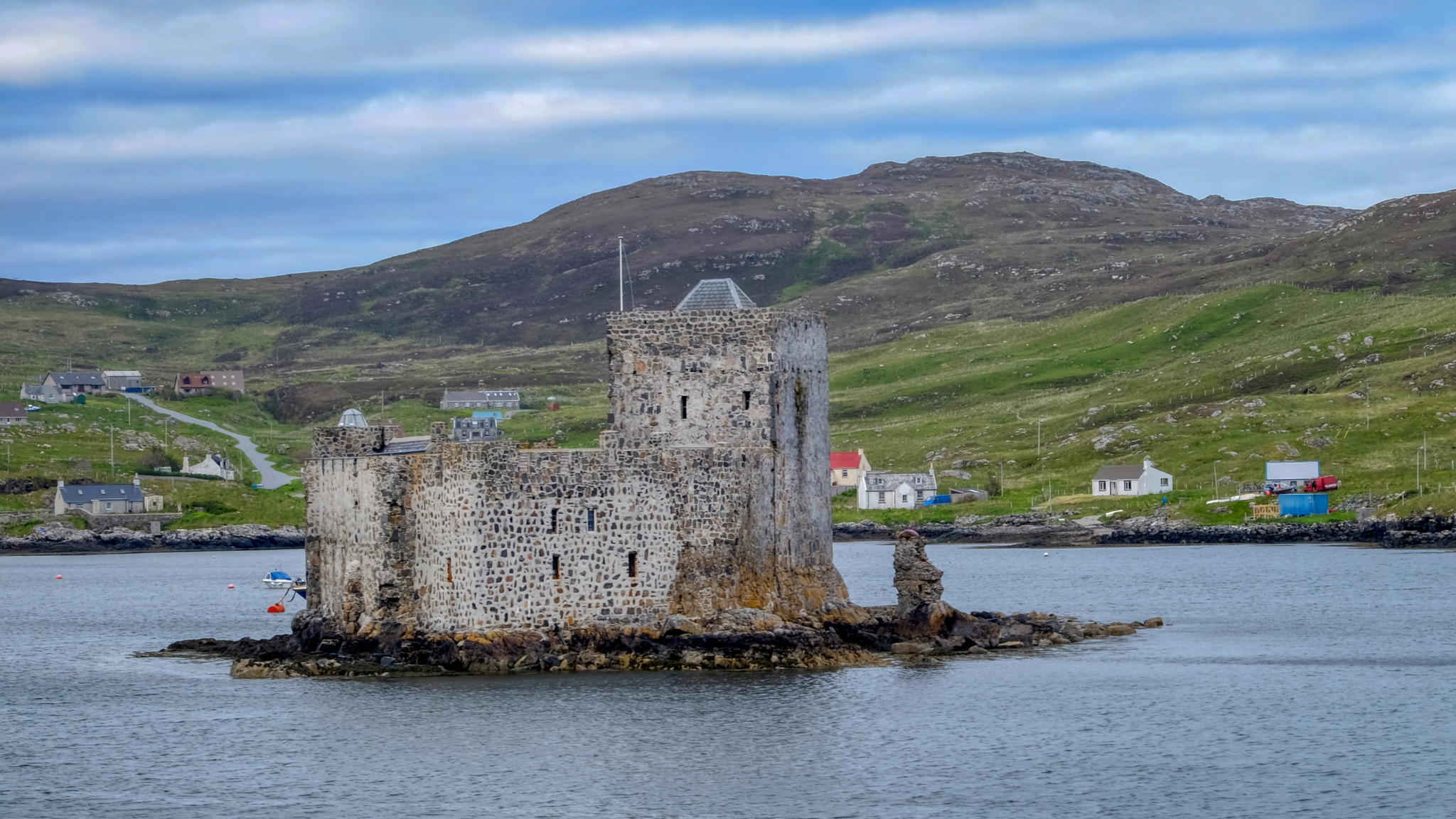 This castle sits in the bay of Castlebay . . . perhaps having something to do with the naming of the town . . . perhaps.
This castle sits in the bay of Castlebay . . . perhaps having something to do with the naming of the town . . . perhaps.
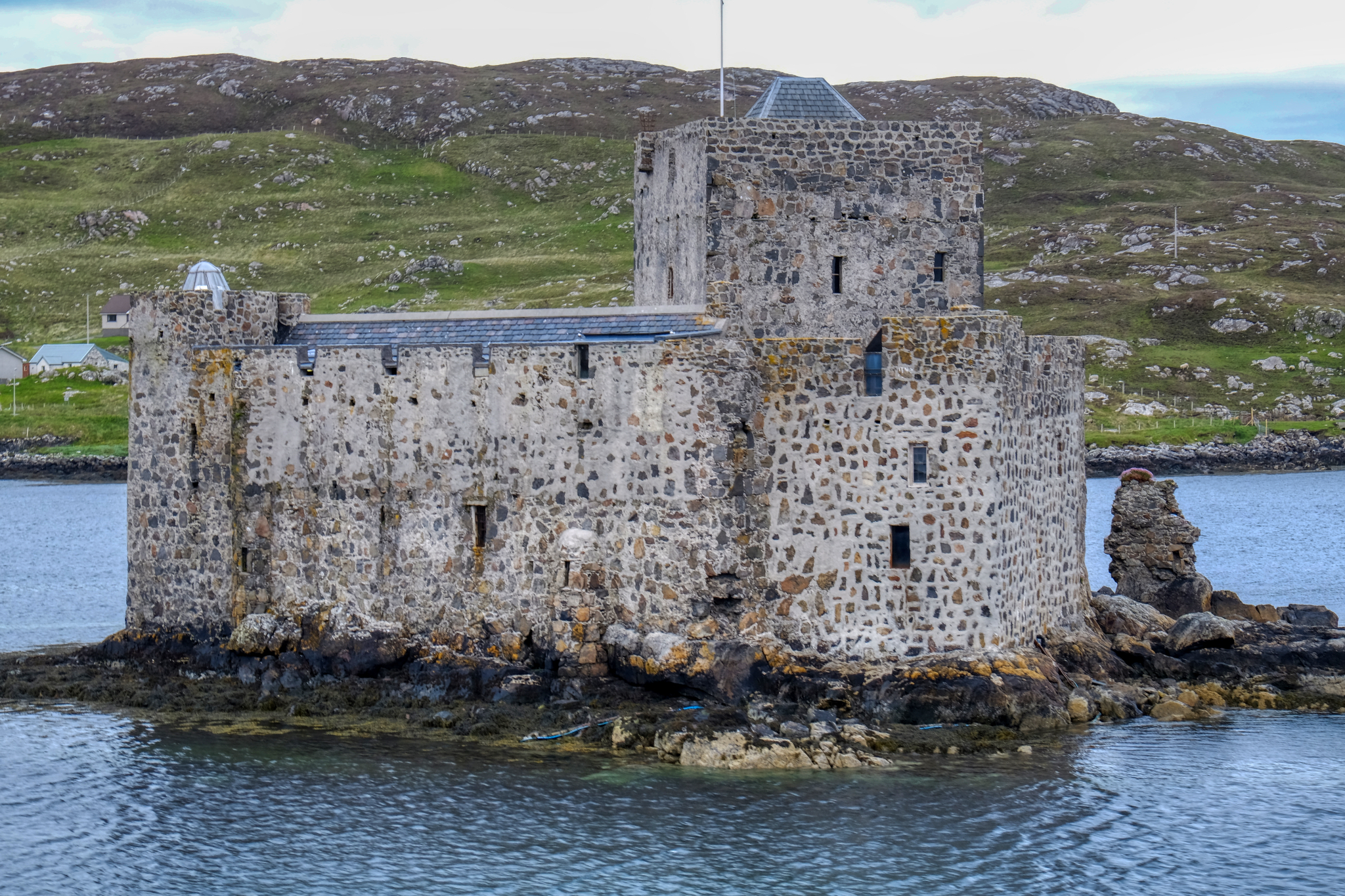 The castle in the bay of Castlebay is Kisimul Castle, dating from the late 16th century. It is now leased to Historic Scotland Trust by the Clan MacNeil for 1 pound a year. It is a castle with an interesting history (see link).
The castle in the bay of Castlebay is Kisimul Castle, dating from the late 16th century. It is now leased to Historic Scotland Trust by the Clan MacNeil for 1 pound a year. It is a castle with an interesting history (see link).
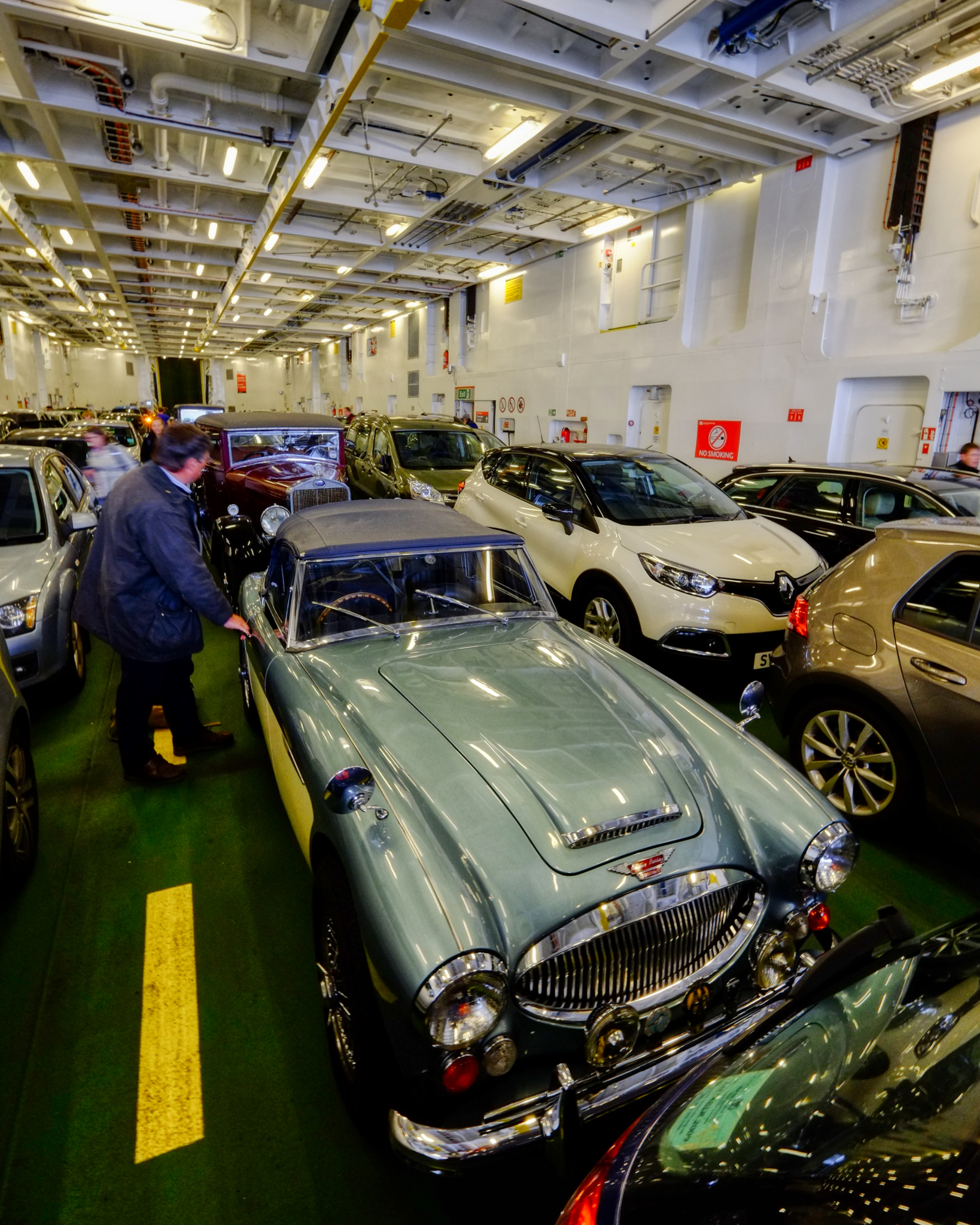
We were called to the car deck just before docking in Castlebay . . . what a surprise to see several antique and collector cars there (they must have loaded after we did). Perhaps there was a collector car rally . . . or they were returning from one.
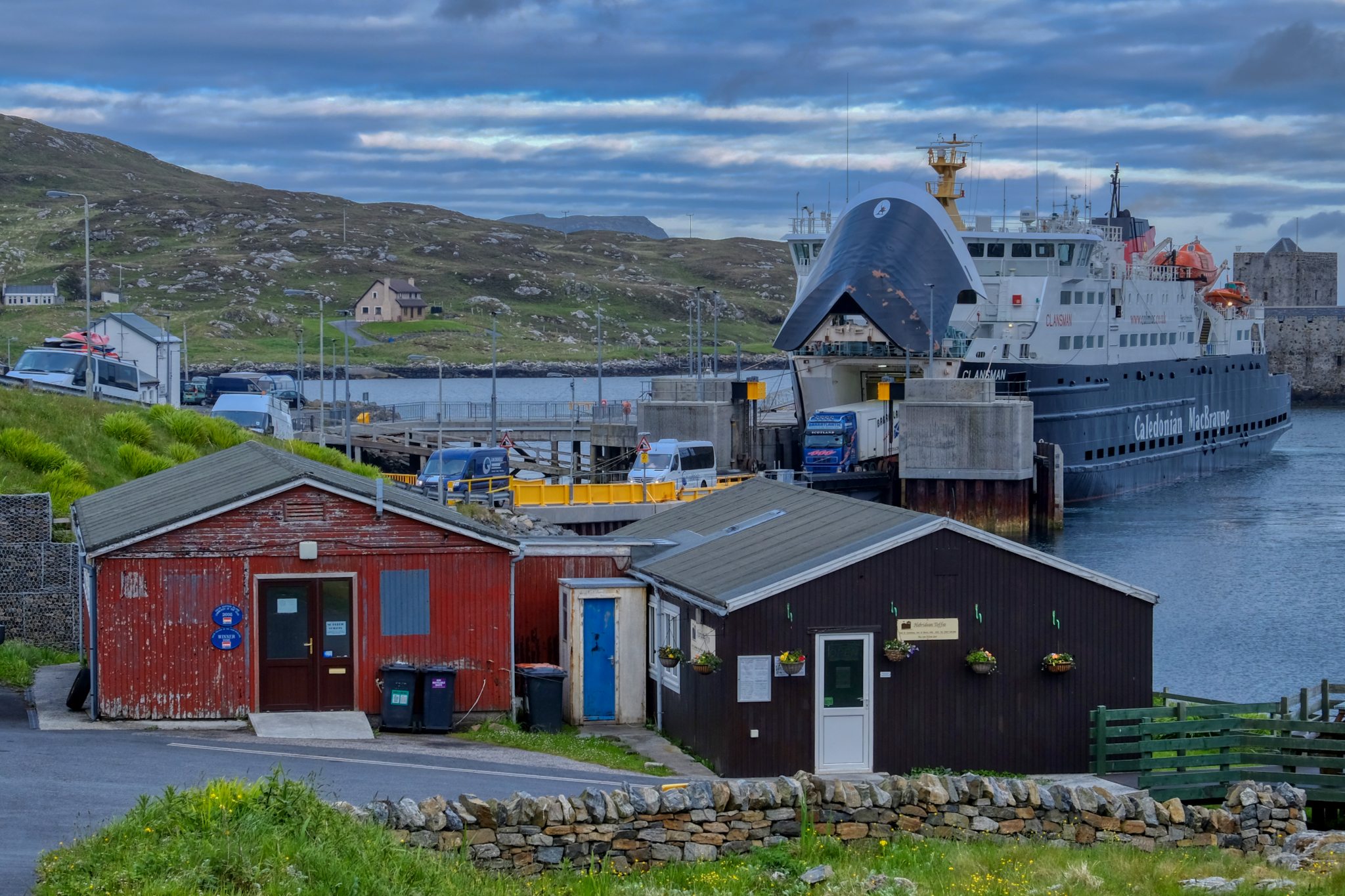 We drove off the ferry and turned, stopped to take a look at where we had come from.
We drove off the ferry and turned, stopped to take a look at where we had come from.
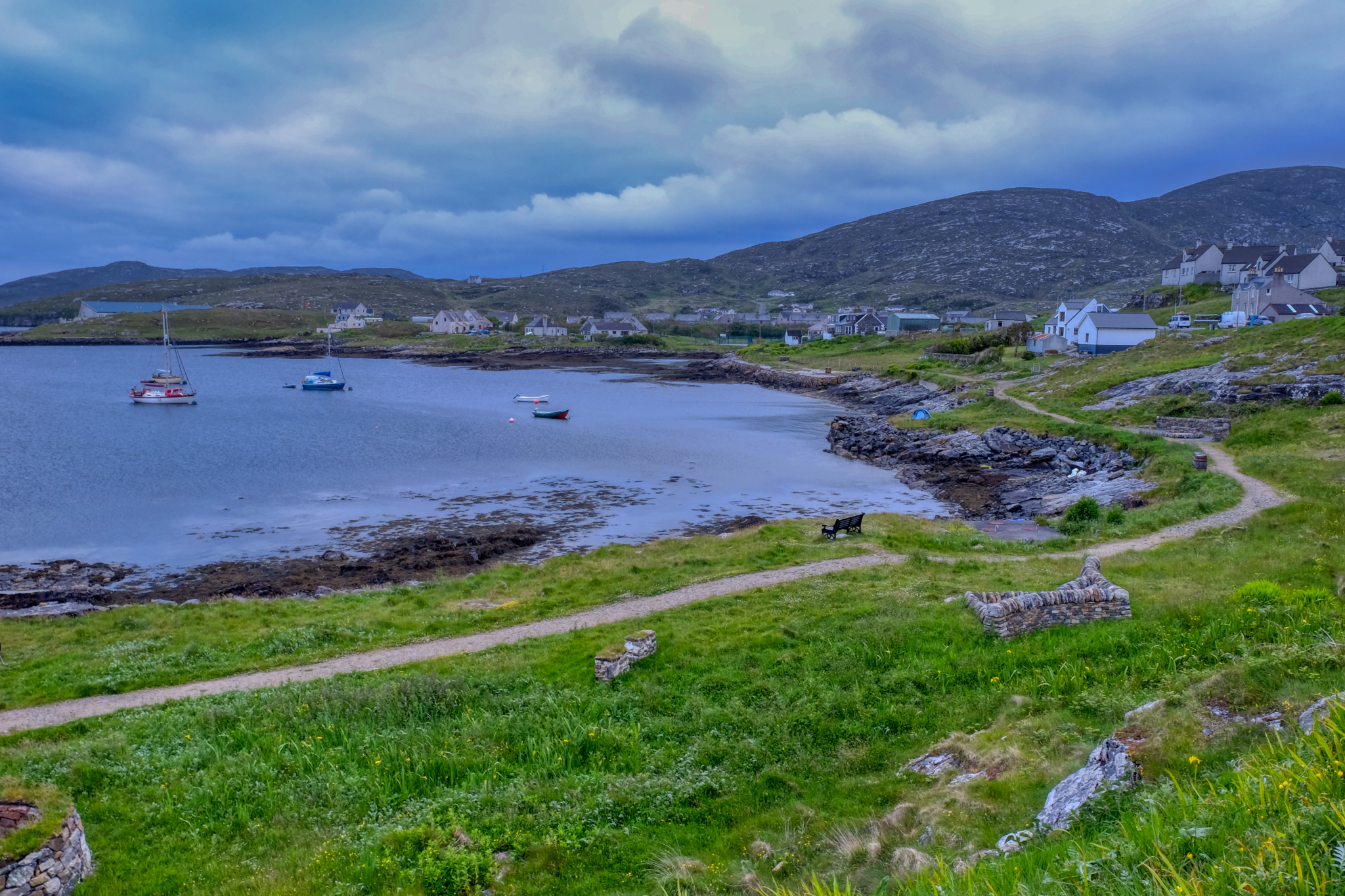 Castlebay has an 'End of the World' feeling of remoteness about it like no other place I have ever been.
Castlebay has an 'End of the World' feeling of remoteness about it like no other place I have ever been.
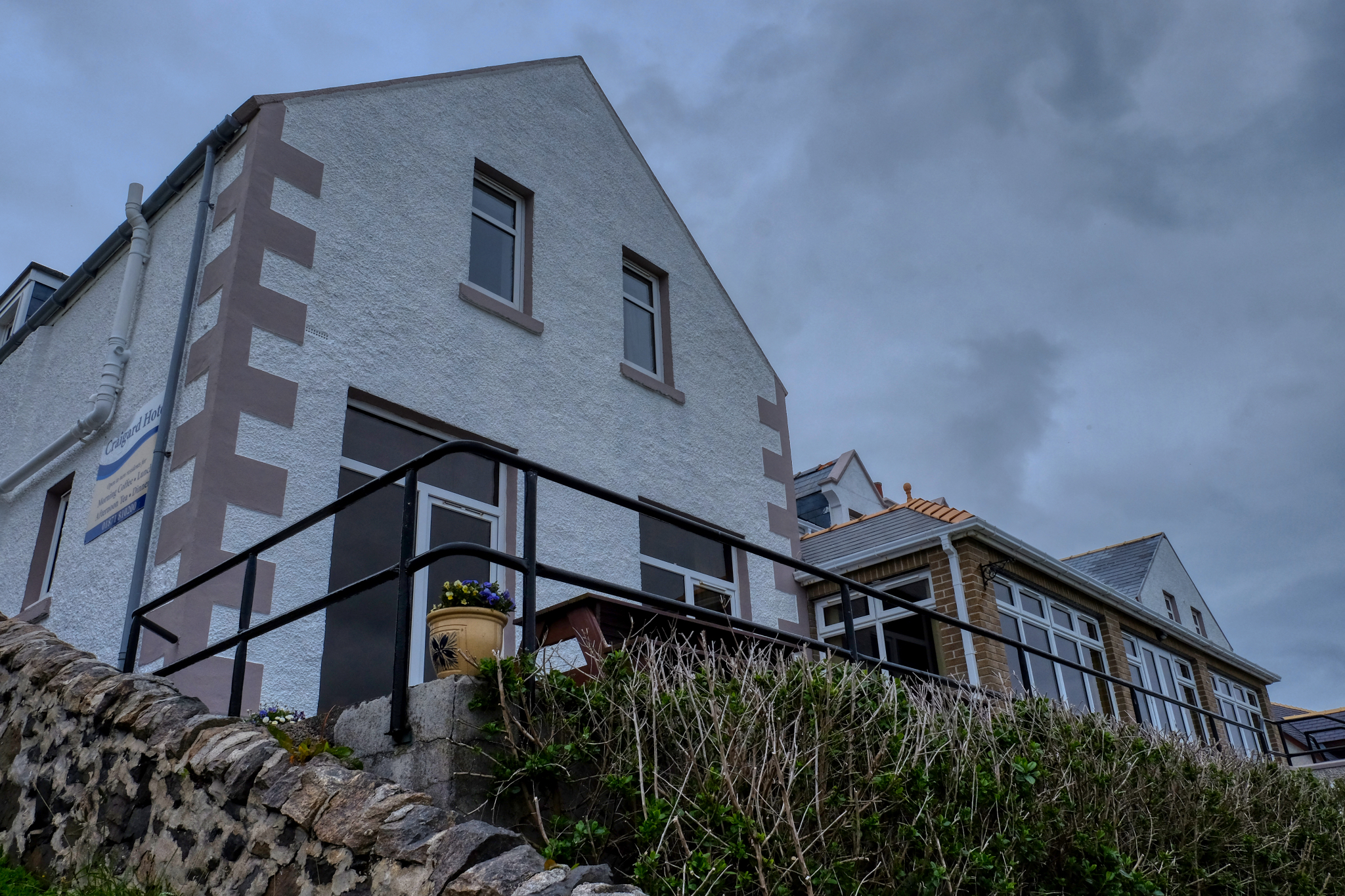 We found our old hotel (it wasn't too difficult!) and checked in.
We found our old hotel (it wasn't too difficult!) and checked in.
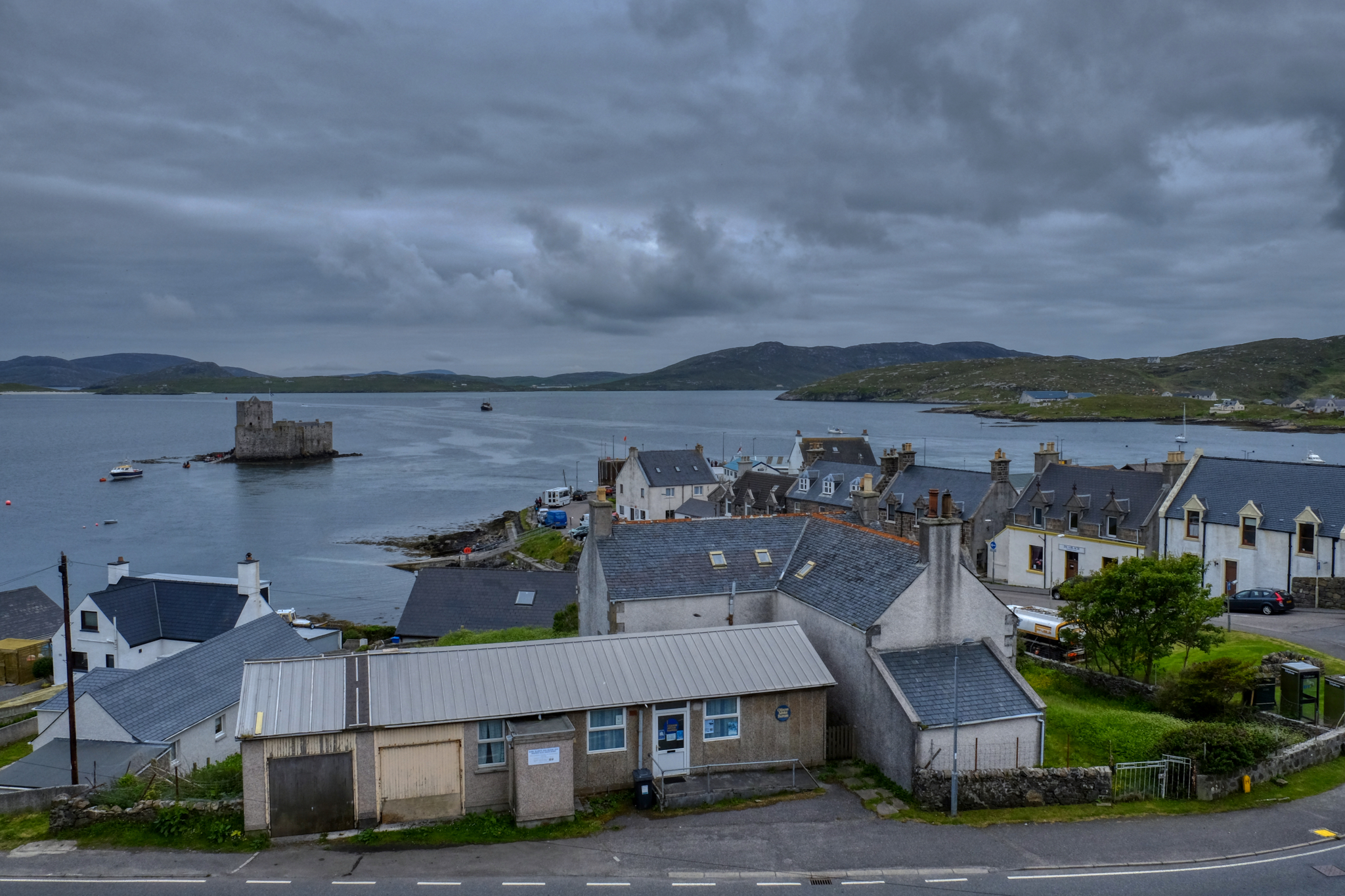 The view of Castlebay from our hotel room. Very nice.
The view of Castlebay from our hotel room. Very nice.
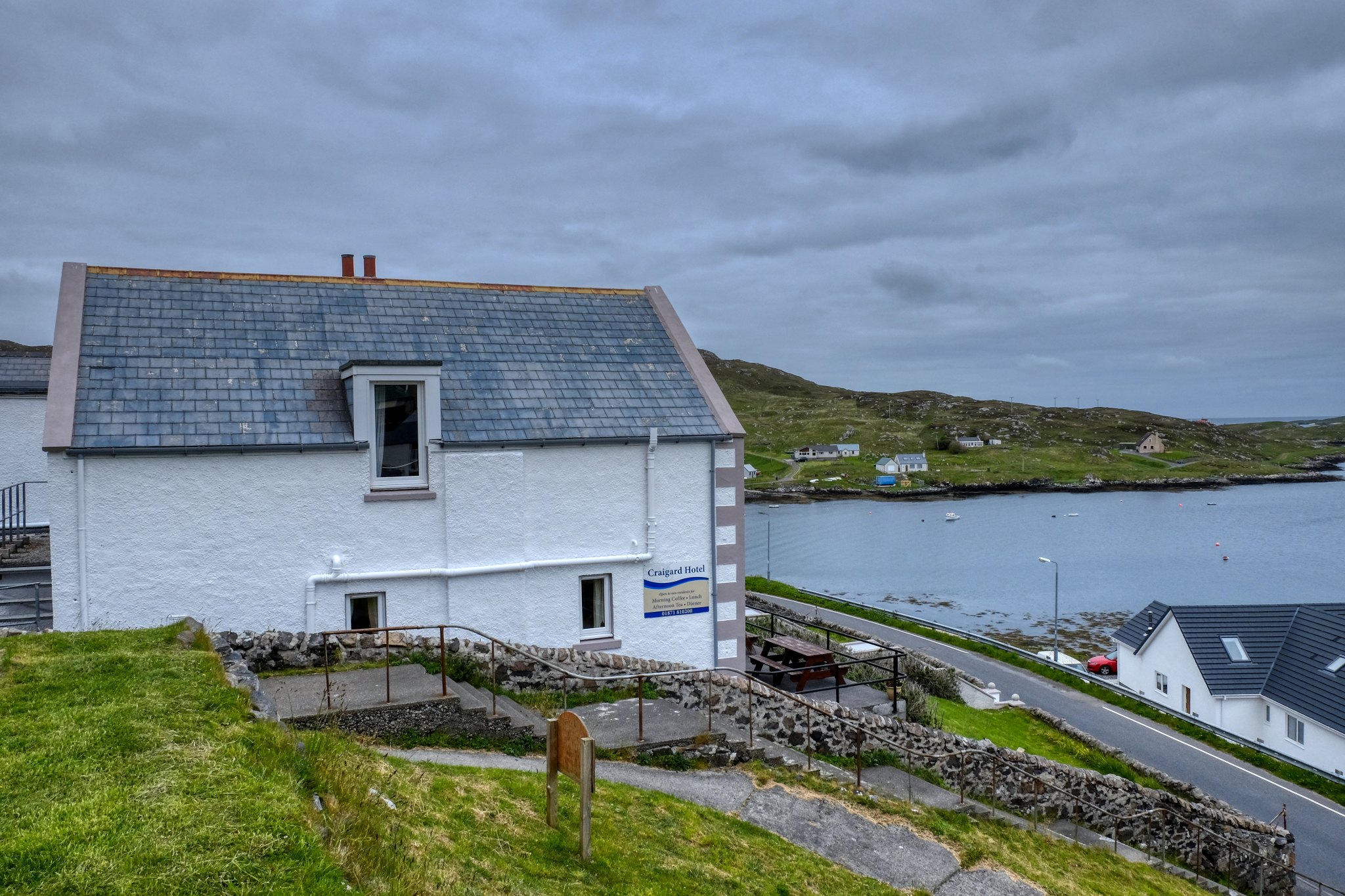 The sun stays up very late in June this far north. I took a walk from our Craigard Hotel at 10:30pm.
The sun stays up very late in June this far north. I took a walk from our Craigard Hotel at 10:30pm.
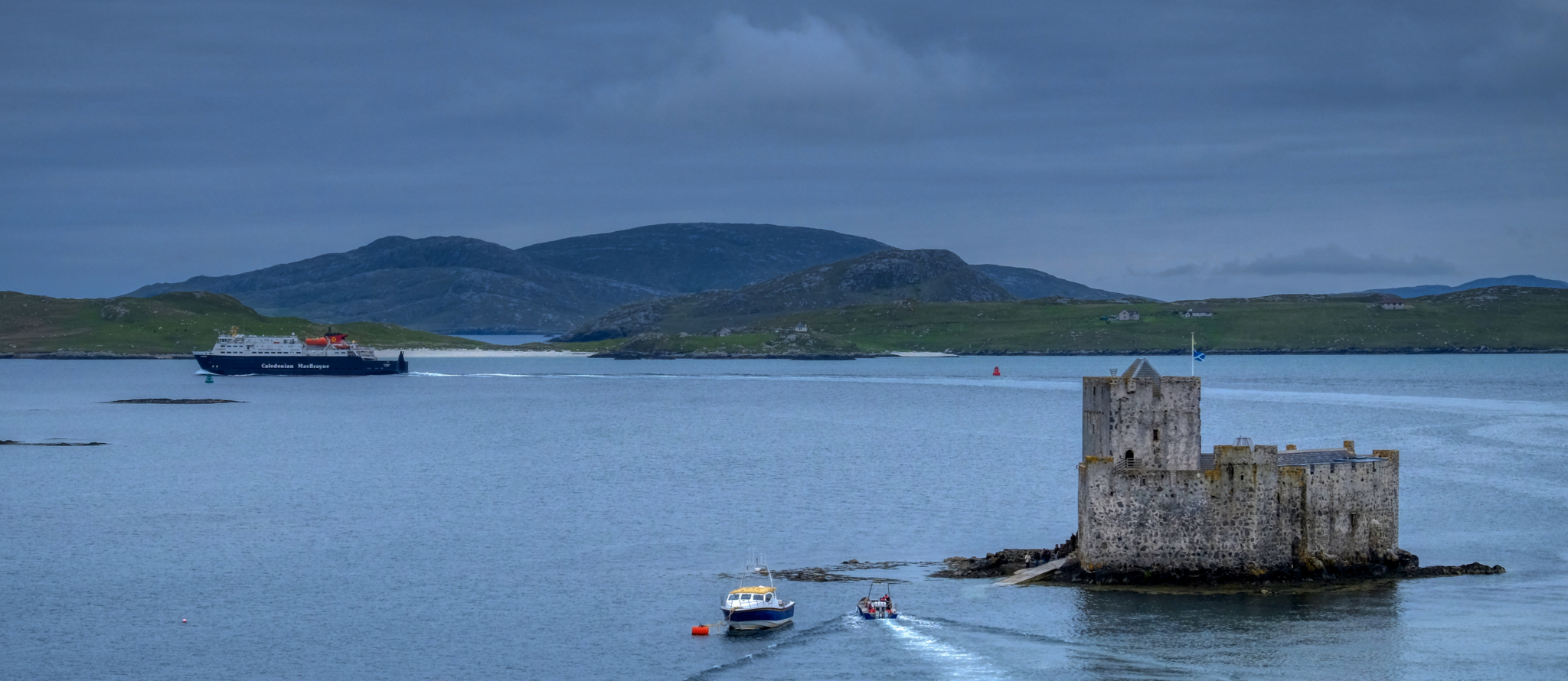 From the hill behind our hotel I saw our ferry, reloaded, making its return voyage to Oban.
From the hill behind our hotel I saw our ferry, reloaded, making its return voyage to Oban.
 I sat in the evening gloom and watched the ferry pass out of sight.
I sat in the evening gloom and watched the ferry pass out of sight.
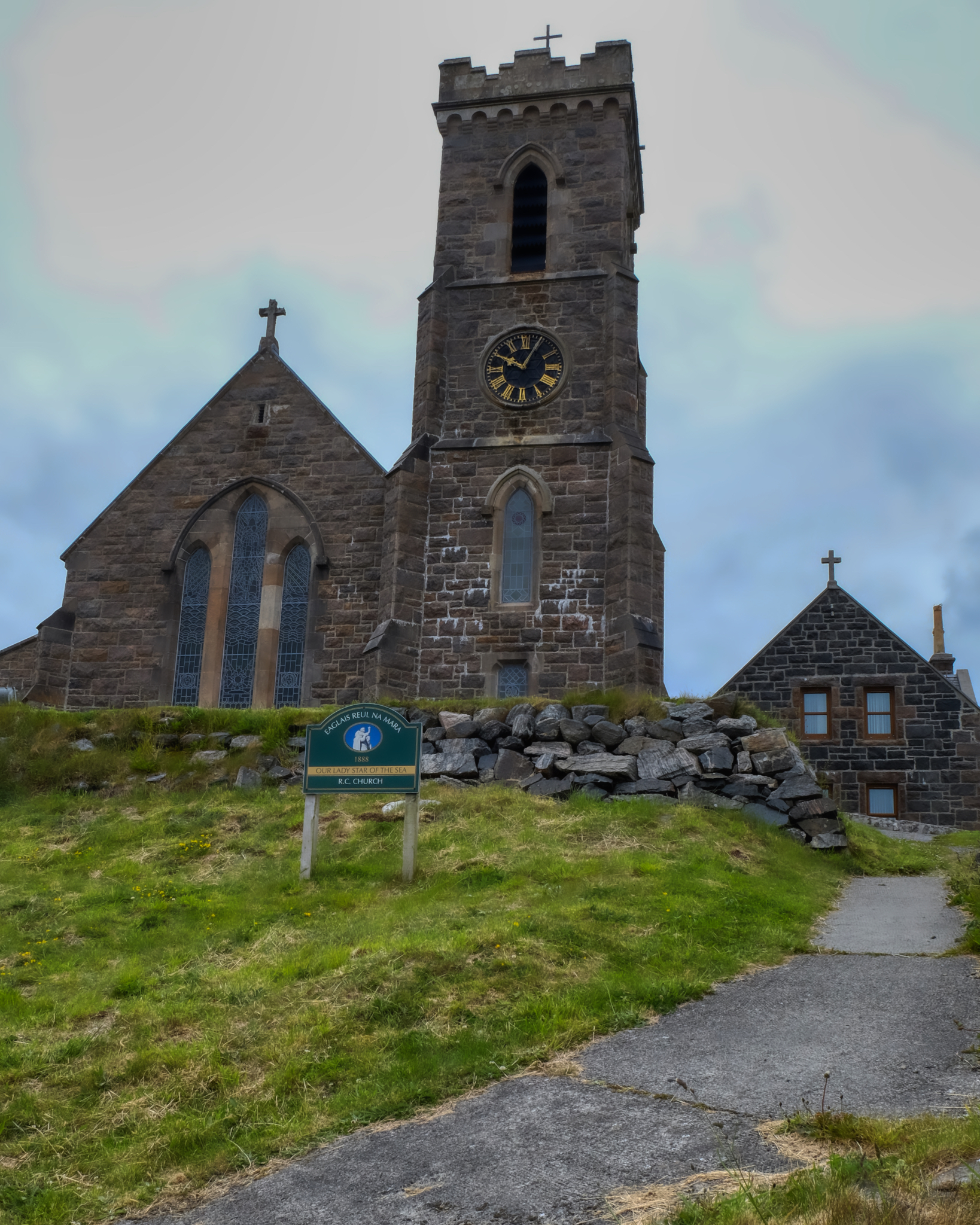 An old church, Our Lady of the Sea, behind our hotel.
An old church, Our Lady of the Sea, behind our hotel.
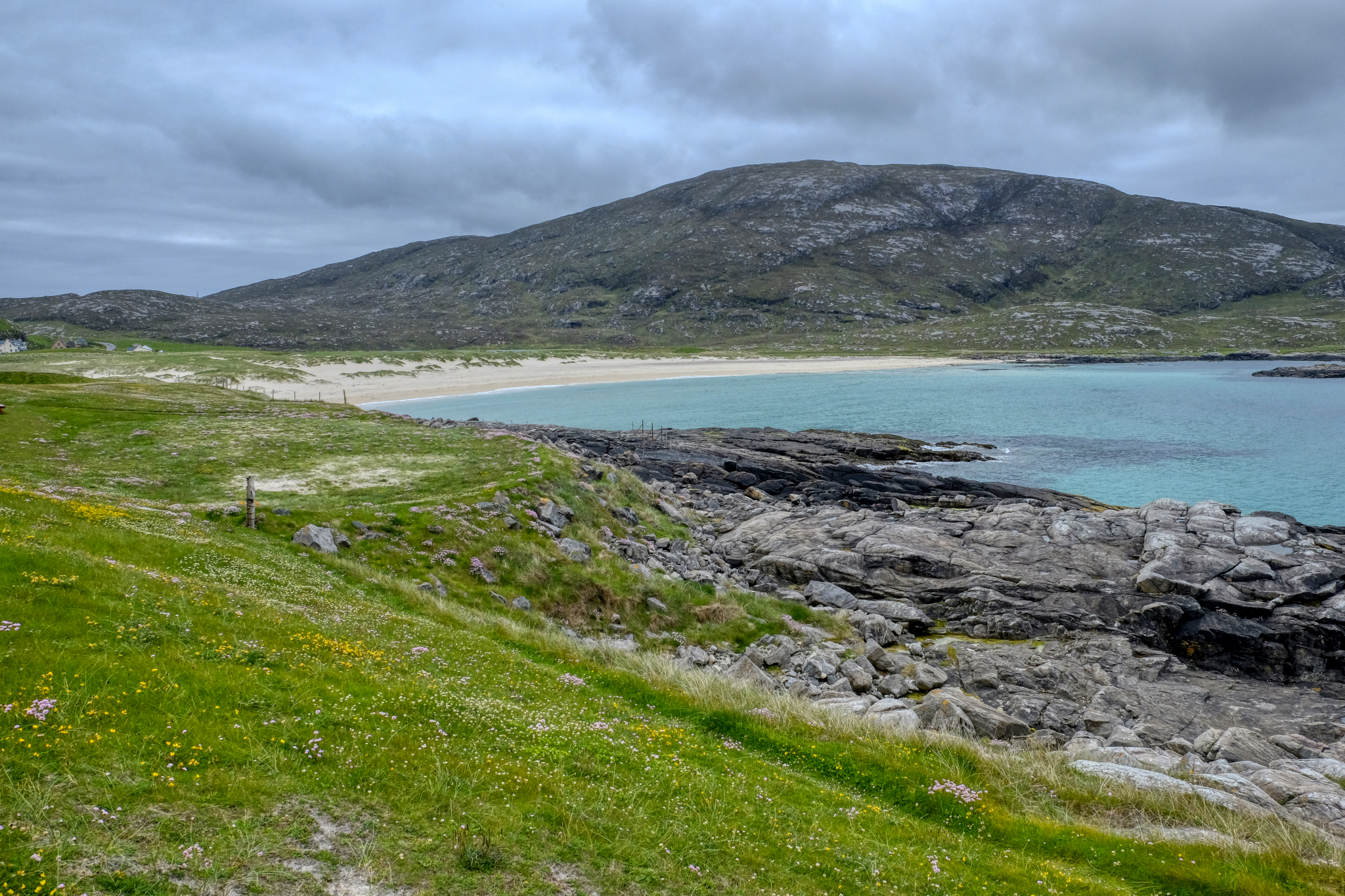 And off we drove up the west coast of the Isle of Barra. Magnificent bay views, white sand and aqua waters.
And off we drove up the west coast of the Isle of Barra. Magnificent bay views, white sand and aqua waters.
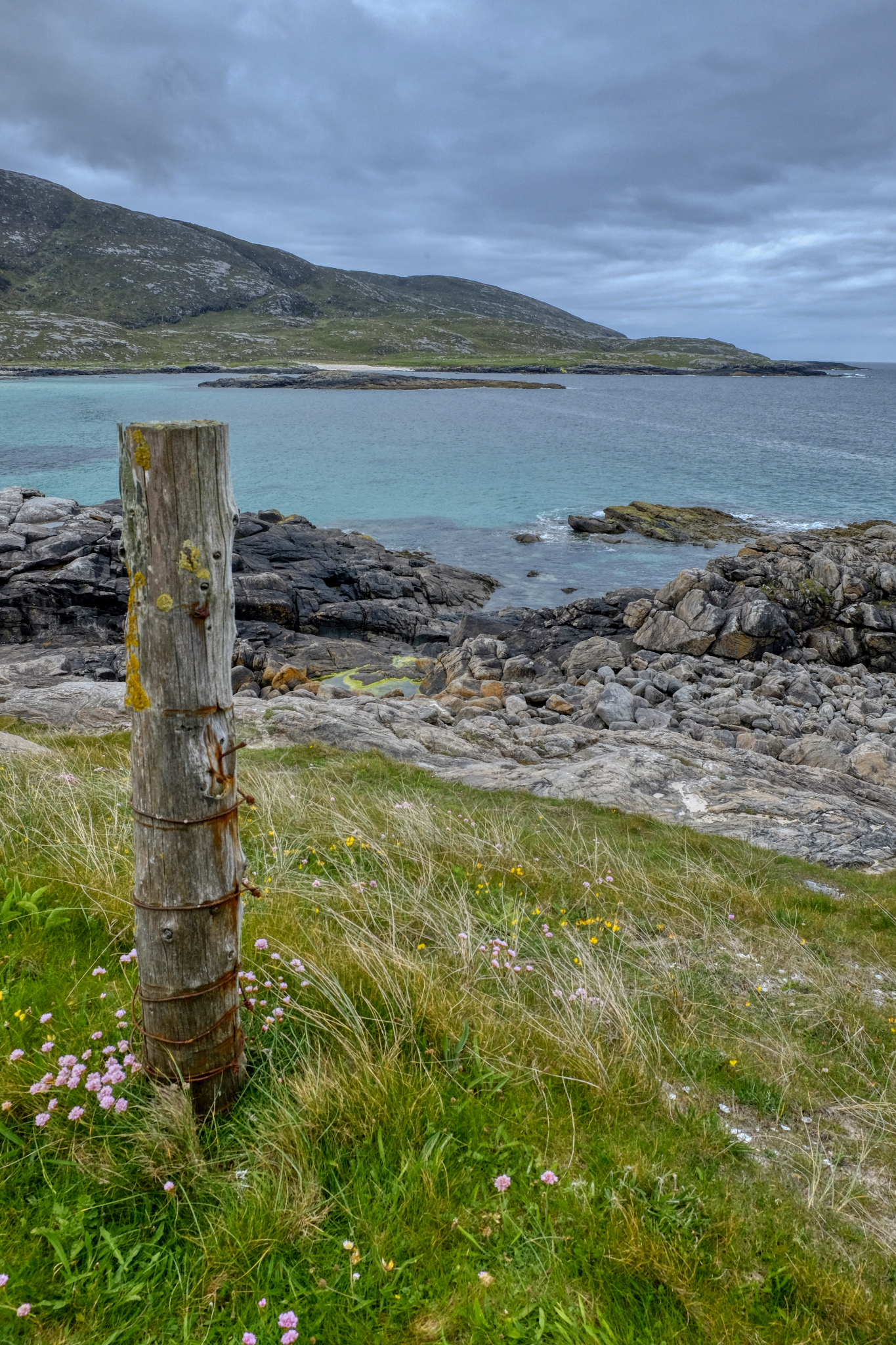 Such a pleasant place.
Such a pleasant place.
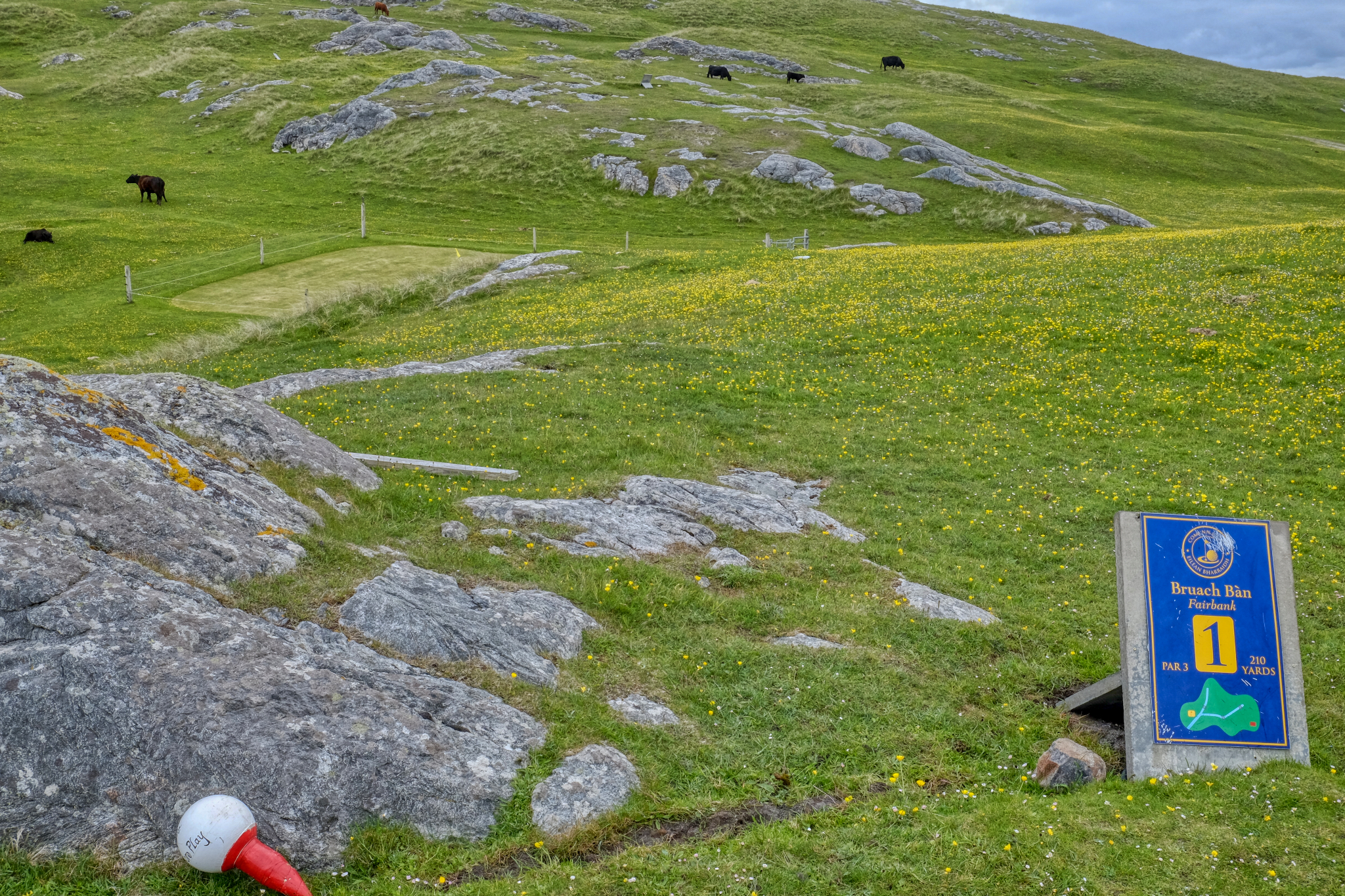 My wife is an avid golfer, so of course we stopped in at the amazing Barra Golf Course.
My wife is an avid golfer, so of course we stopped in at the amazing Barra Golf Course.
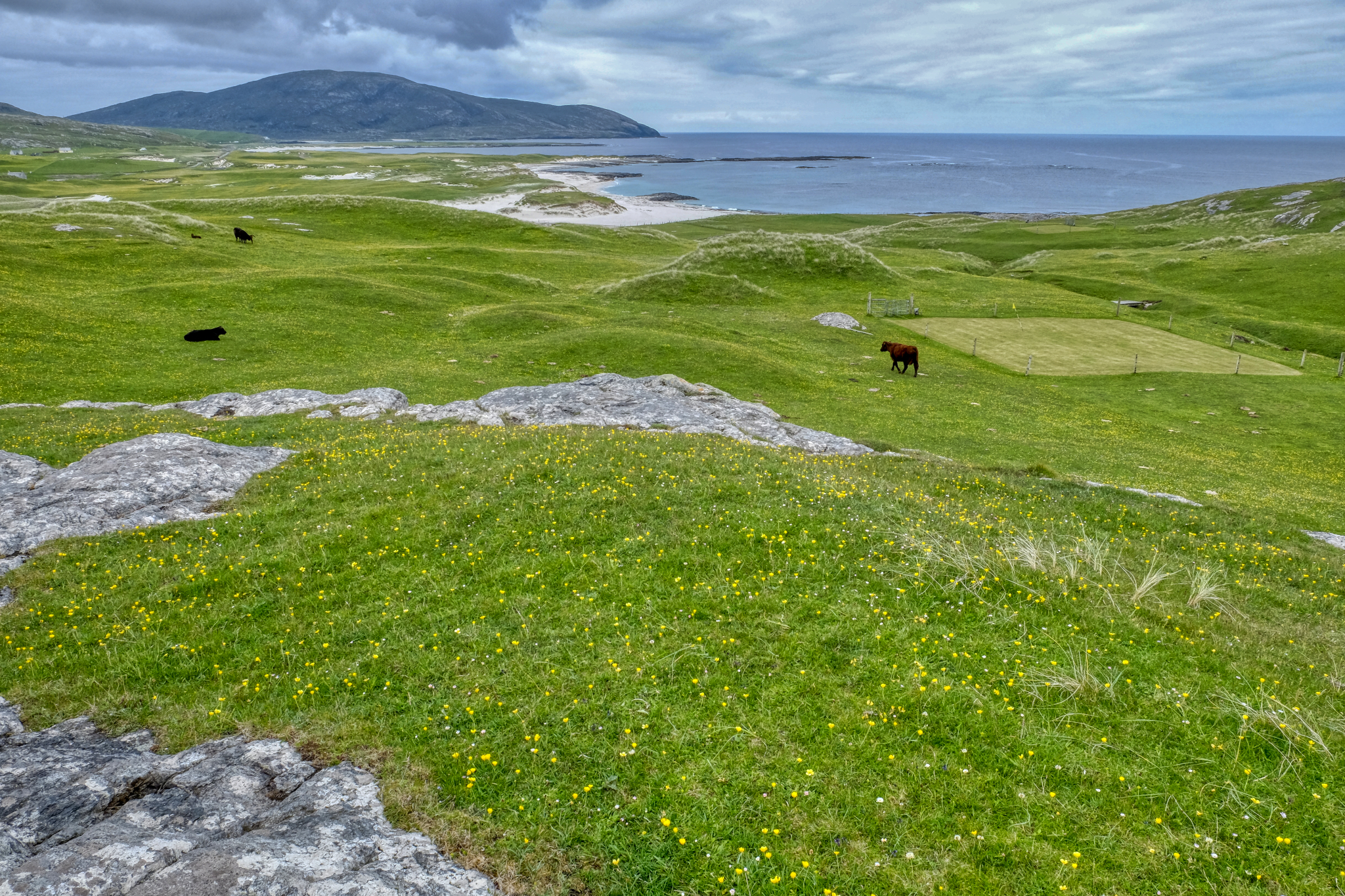 Small yellow wild flowers, the sea, cows, and a fenced off putting green (to keep the cow paddies from becoming a 'green hazard'!!!). Lovely.
Small yellow wild flowers, the sea, cows, and a fenced off putting green (to keep the cow paddies from becoming a 'green hazard'!!!). Lovely.
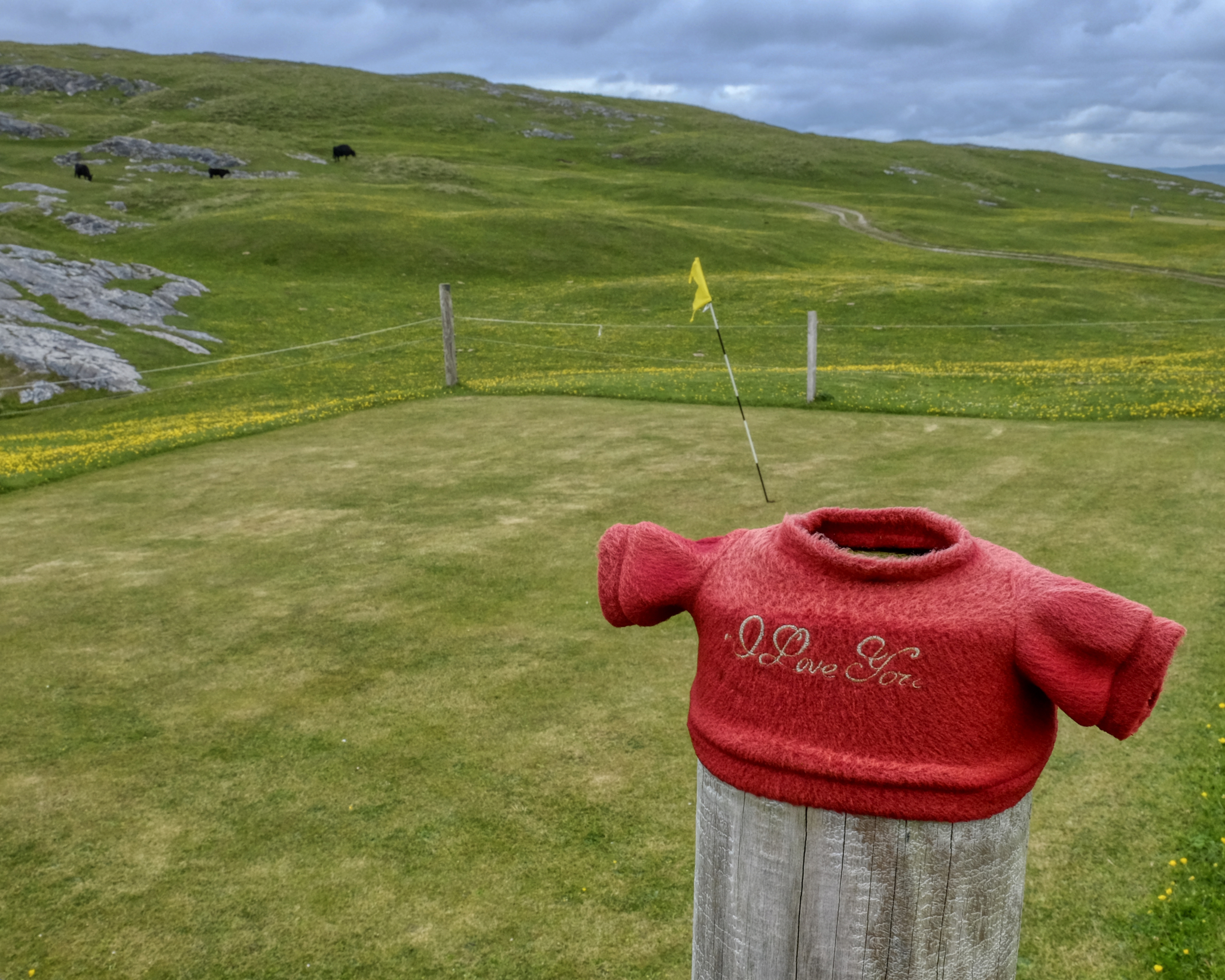 Cute . . .
Cute . . .
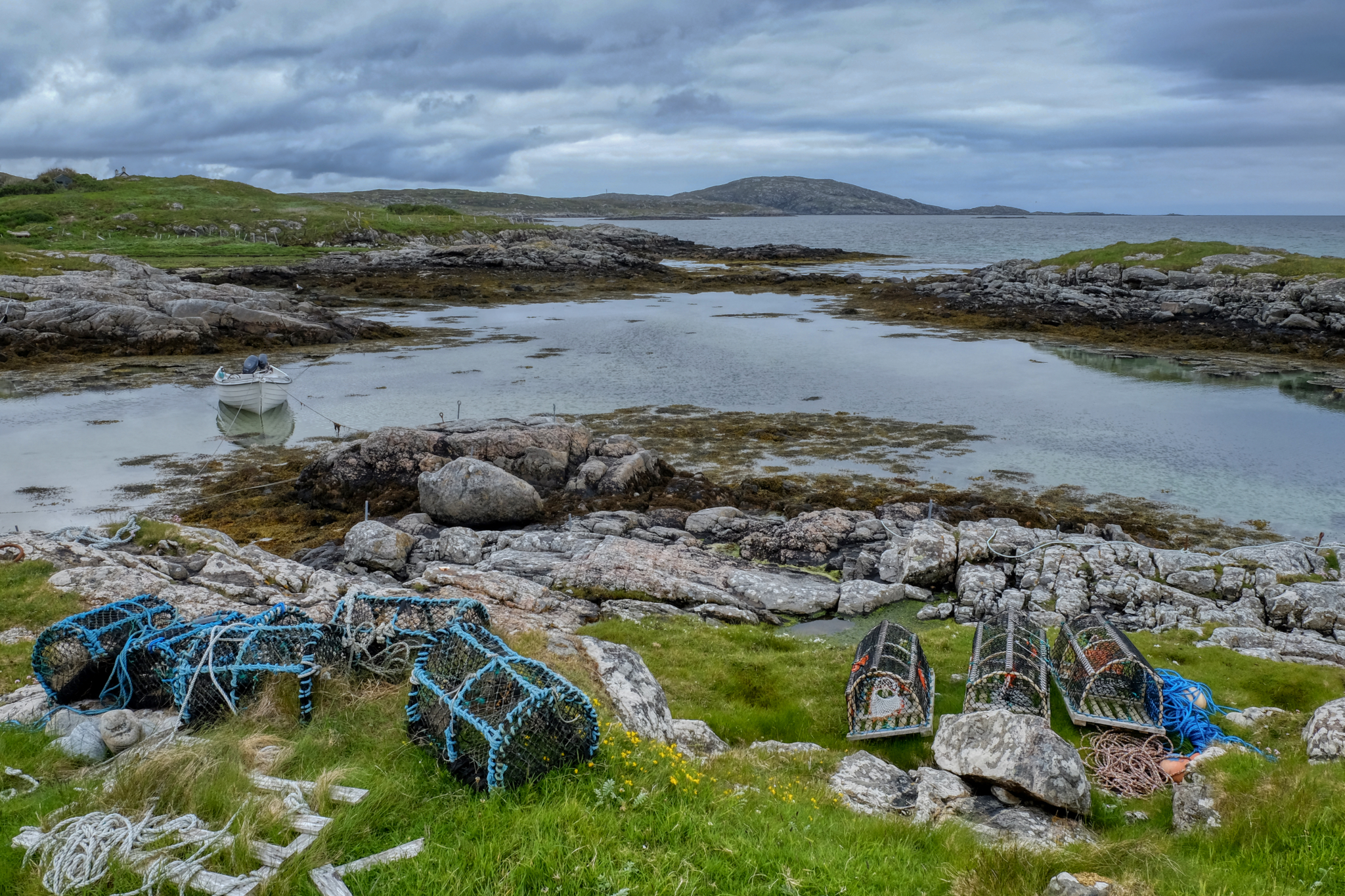 Lobster/Crab pots along a rocky cove. The scenery constantly changes.
Lobster/Crab pots along a rocky cove. The scenery constantly changes.
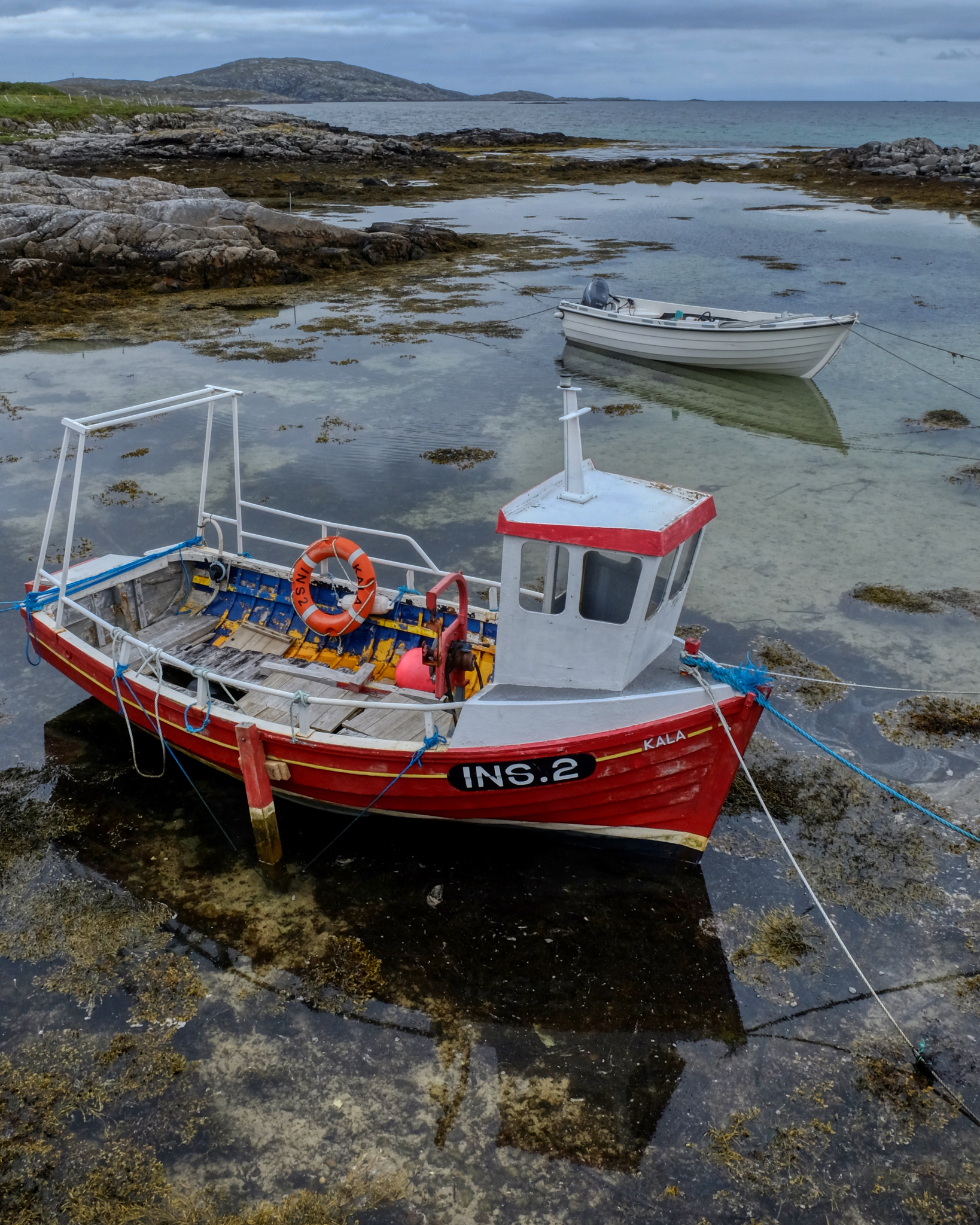 Gorgeous scenes of island life, so connected to the sea.
Gorgeous scenes of island life, so connected to the sea.
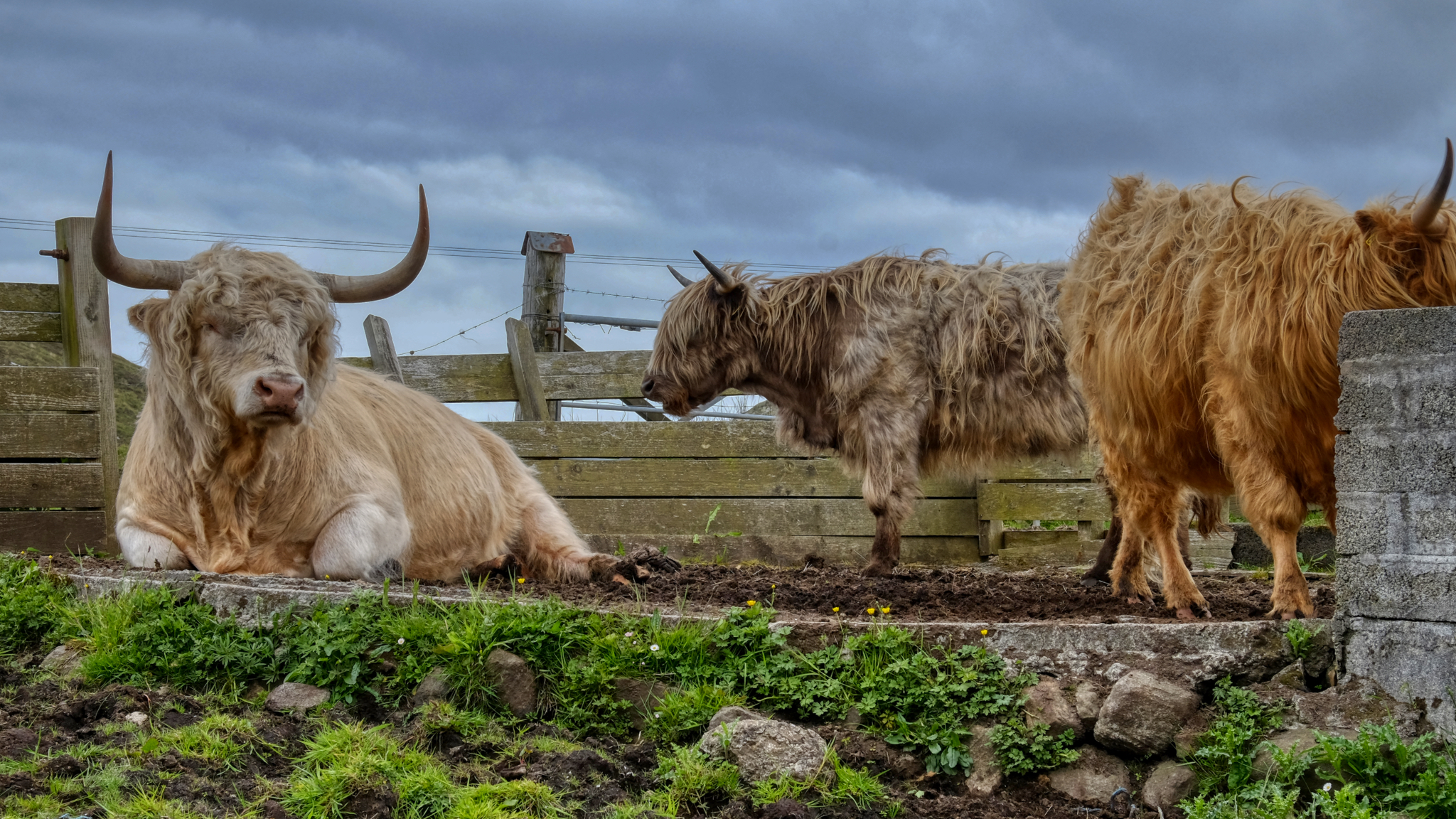 We met these fine fellows along the road. Highland cows.
We met these fine fellows along the road. Highland cows.
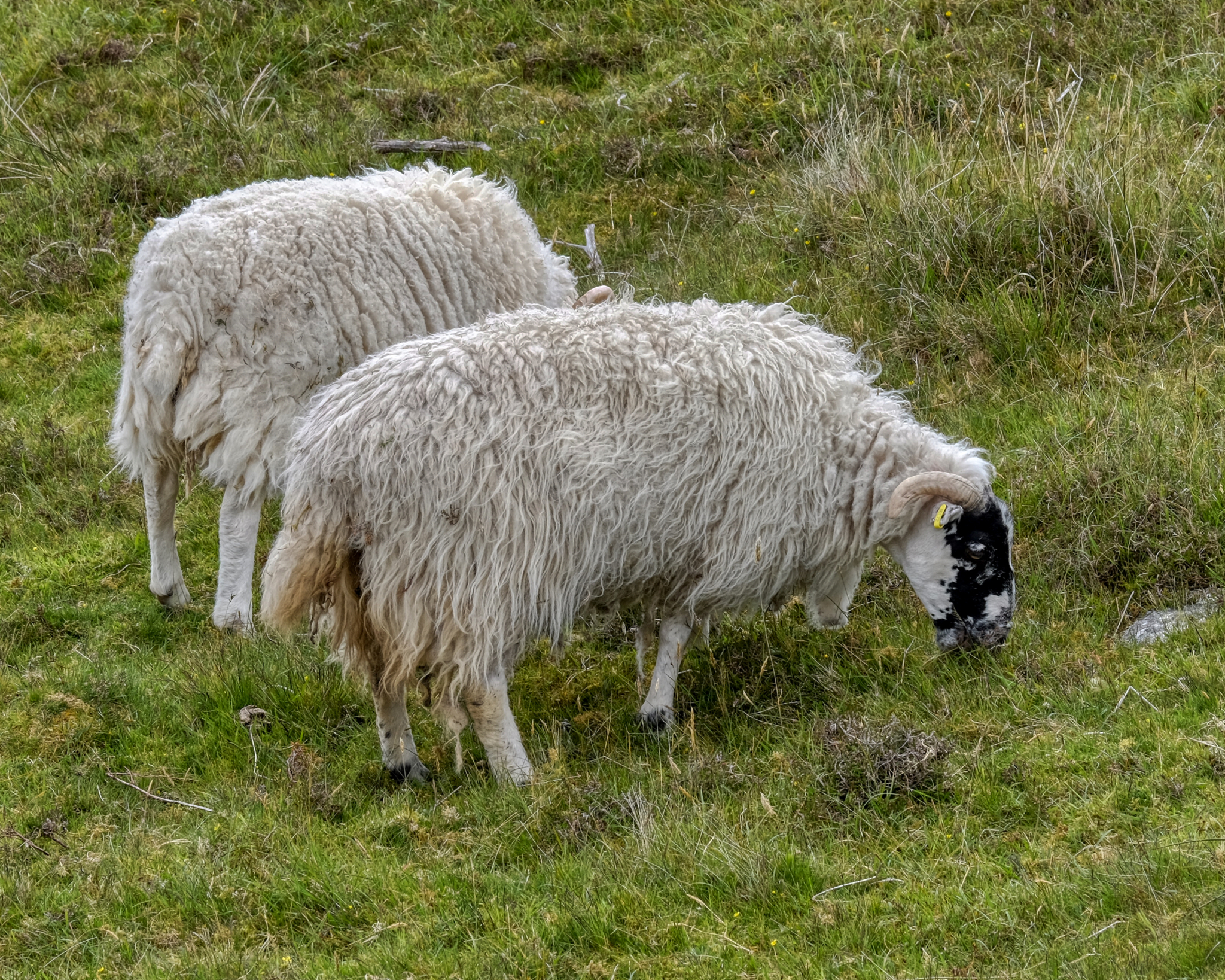 The ever-present wet sheep. We joked that all of the wool from the Outer Hebrides is already 'pre-washed.'
The ever-present wet sheep. We joked that all of the wool from the Outer Hebrides is already 'pre-washed.'
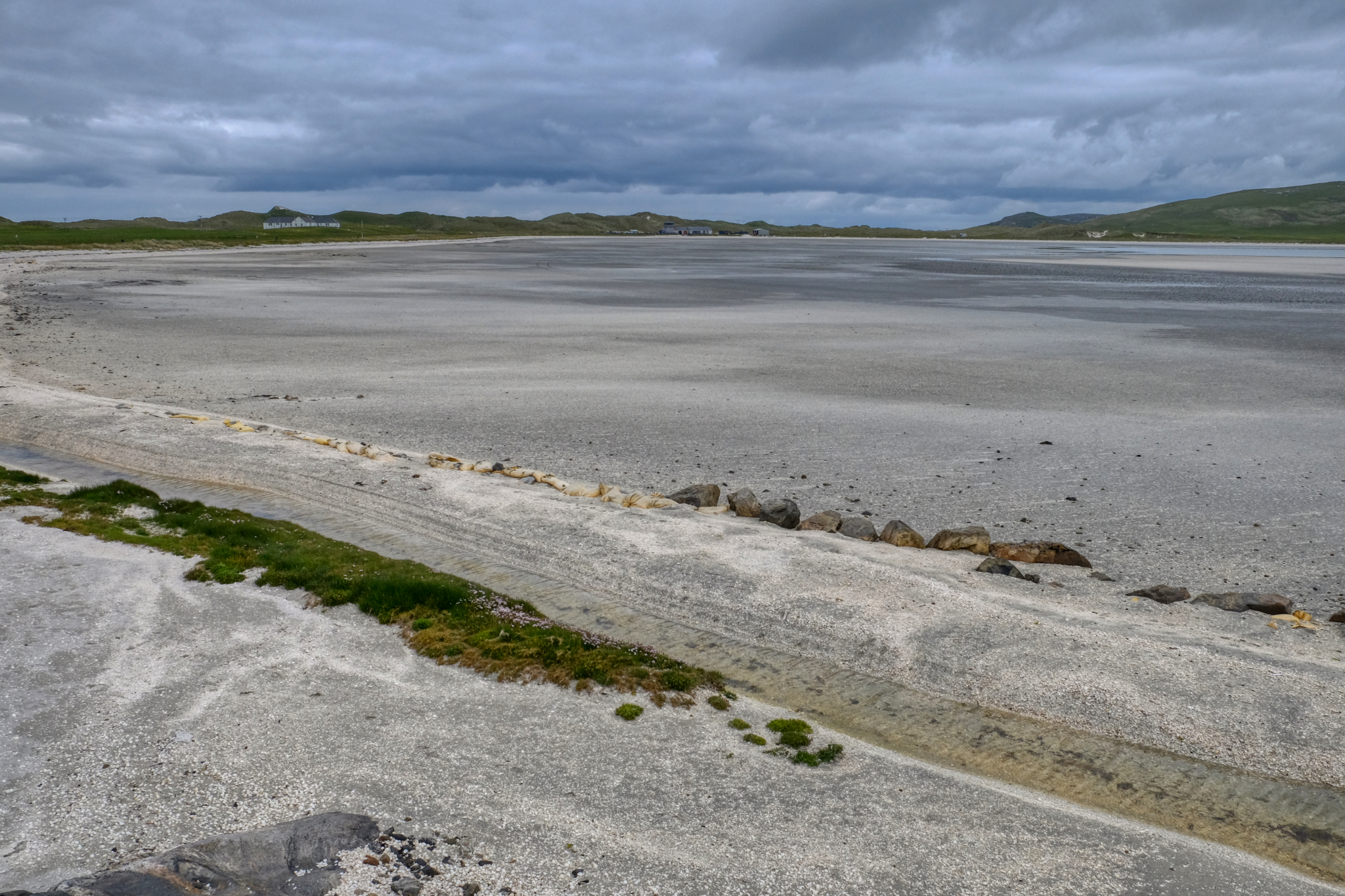 A vast stretch of the white sandy beach of a bay at low tide. Barra Airport in the background.
A vast stretch of the white sandy beach of a bay at low tide. Barra Airport in the background.
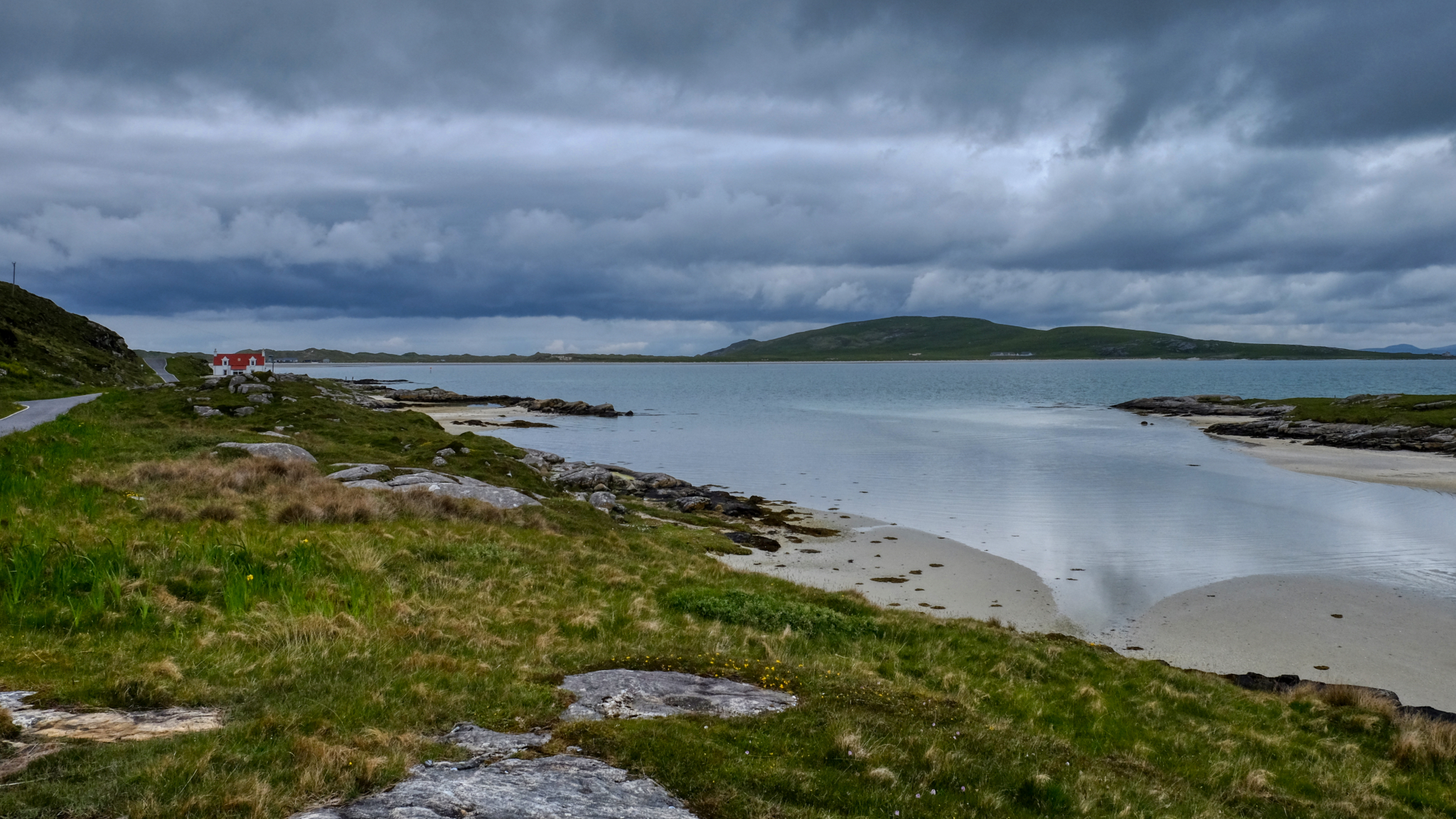 The sight of the small airport drew our attention and we drove along the bay to take a better look.
The sight of the small airport drew our attention and we drove along the bay to take a better look.
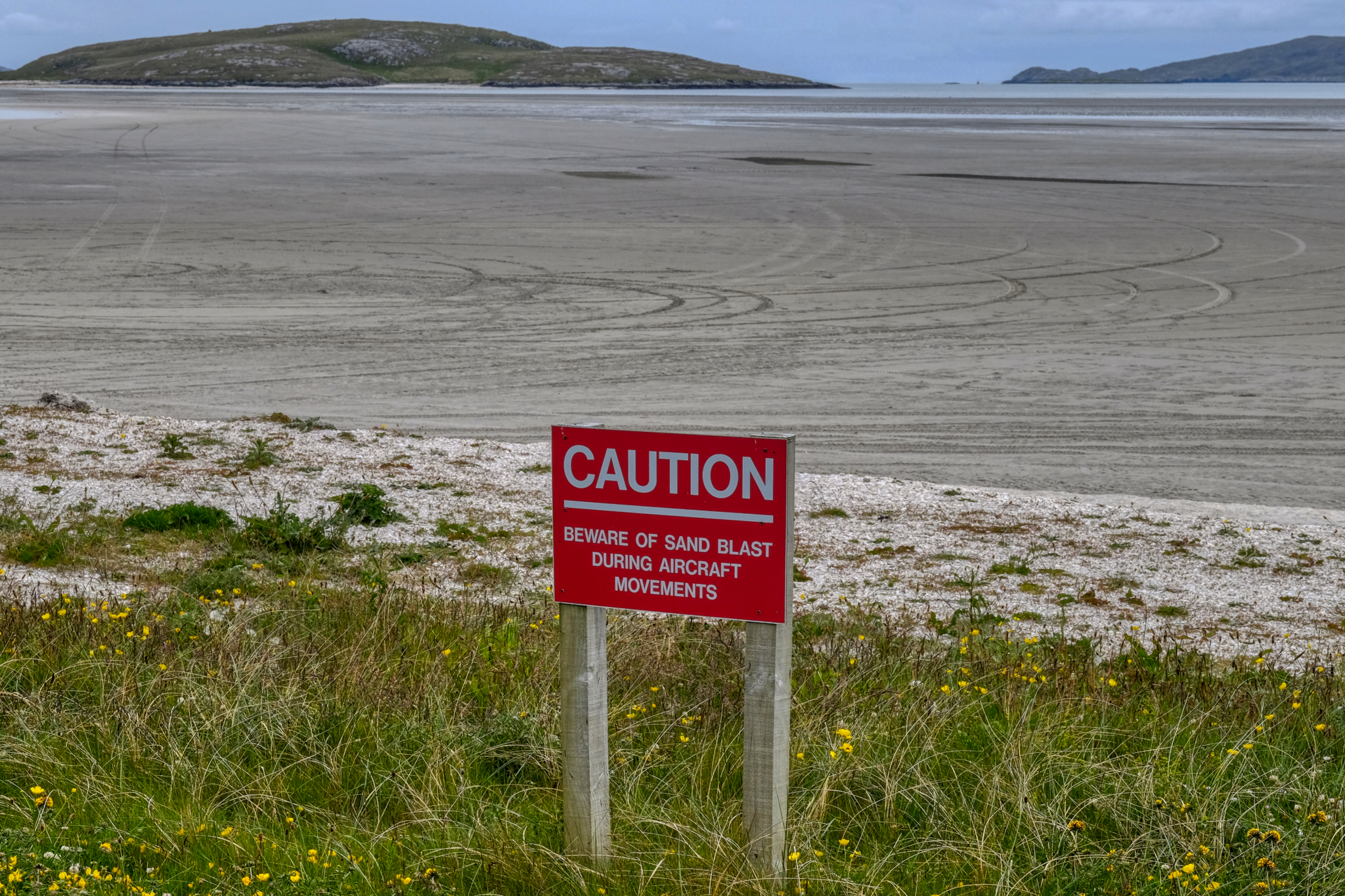 Barra Airport is the only airport in the world with regularly scheduled flights that use a sand beach for a landing strip!
Barra Airport is the only airport in the world with regularly scheduled flights that use a sand beach for a landing strip!
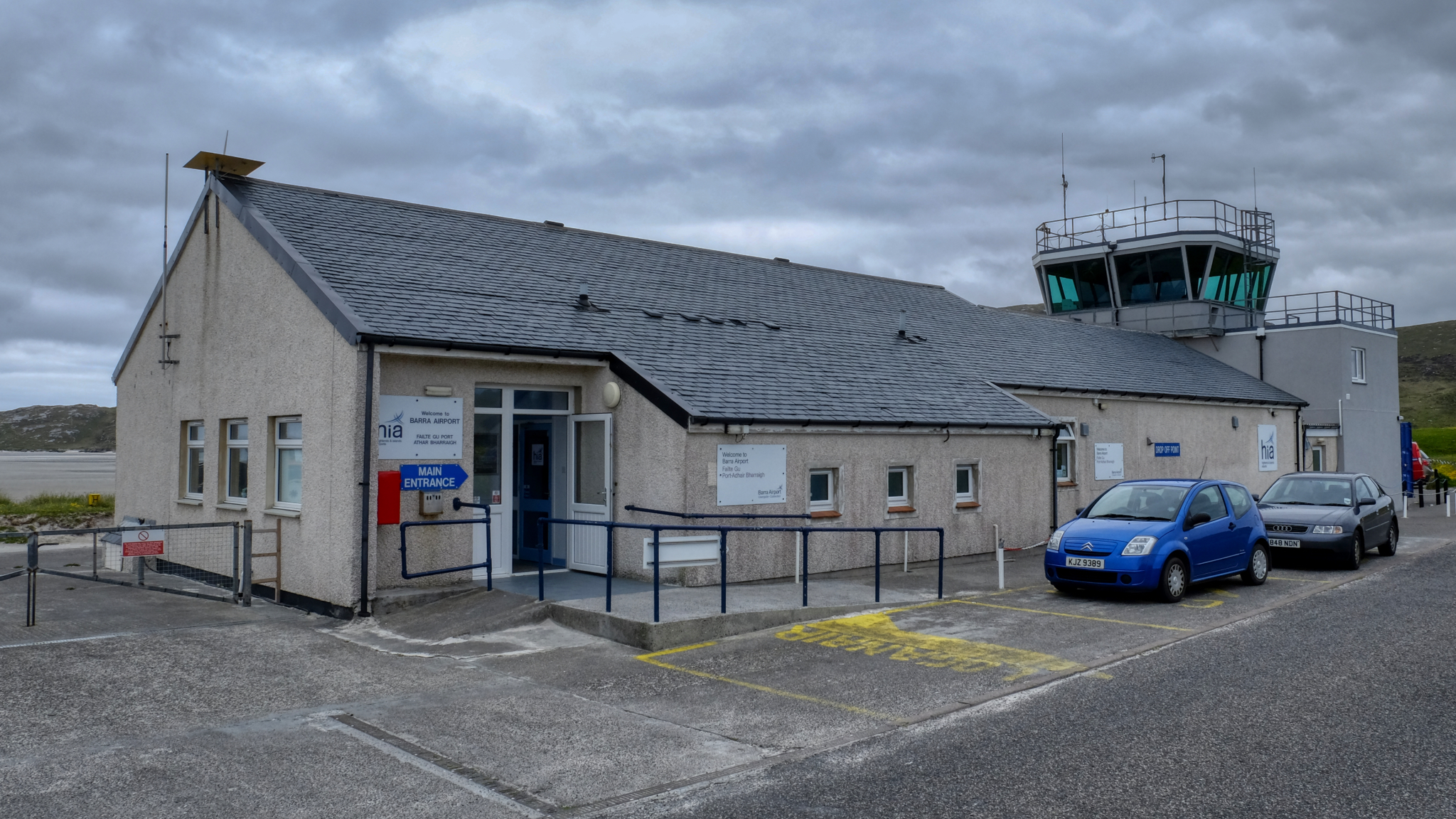 We went in the Barra Airport Terminal . . . for a cup of coffee and a snack. While we were there many people started to show up. There was a plane expected any minute. We stayed to see the big event!
We went in the Barra Airport Terminal . . . for a cup of coffee and a snack. While we were there many people started to show up. There was a plane expected any minute. We stayed to see the big event!
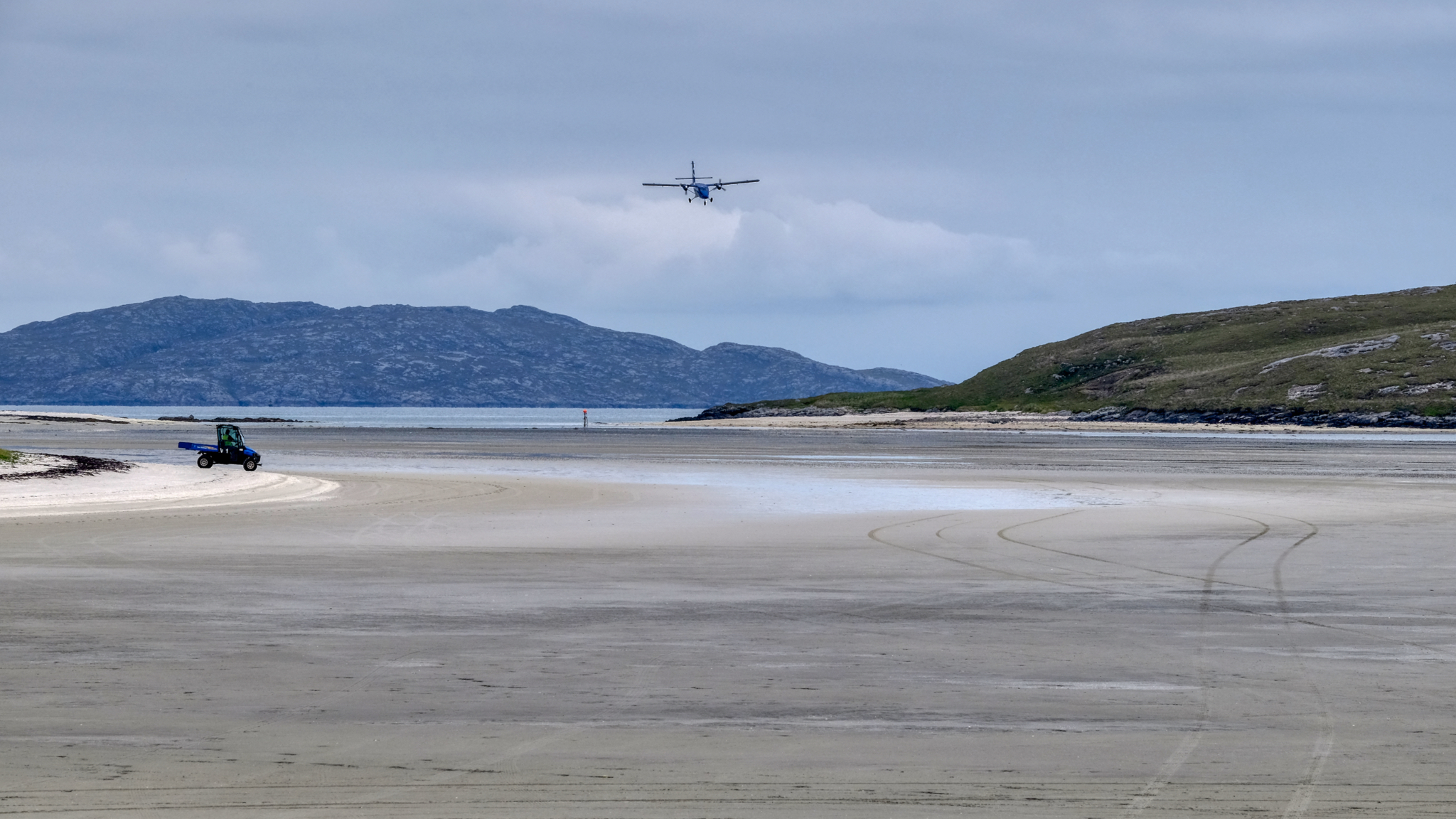 Someone called out, "There it is" . . . and we all turned to look at the airplane approaching from a distance.
Someone called out, "There it is" . . . and we all turned to look at the airplane approaching from a distance.
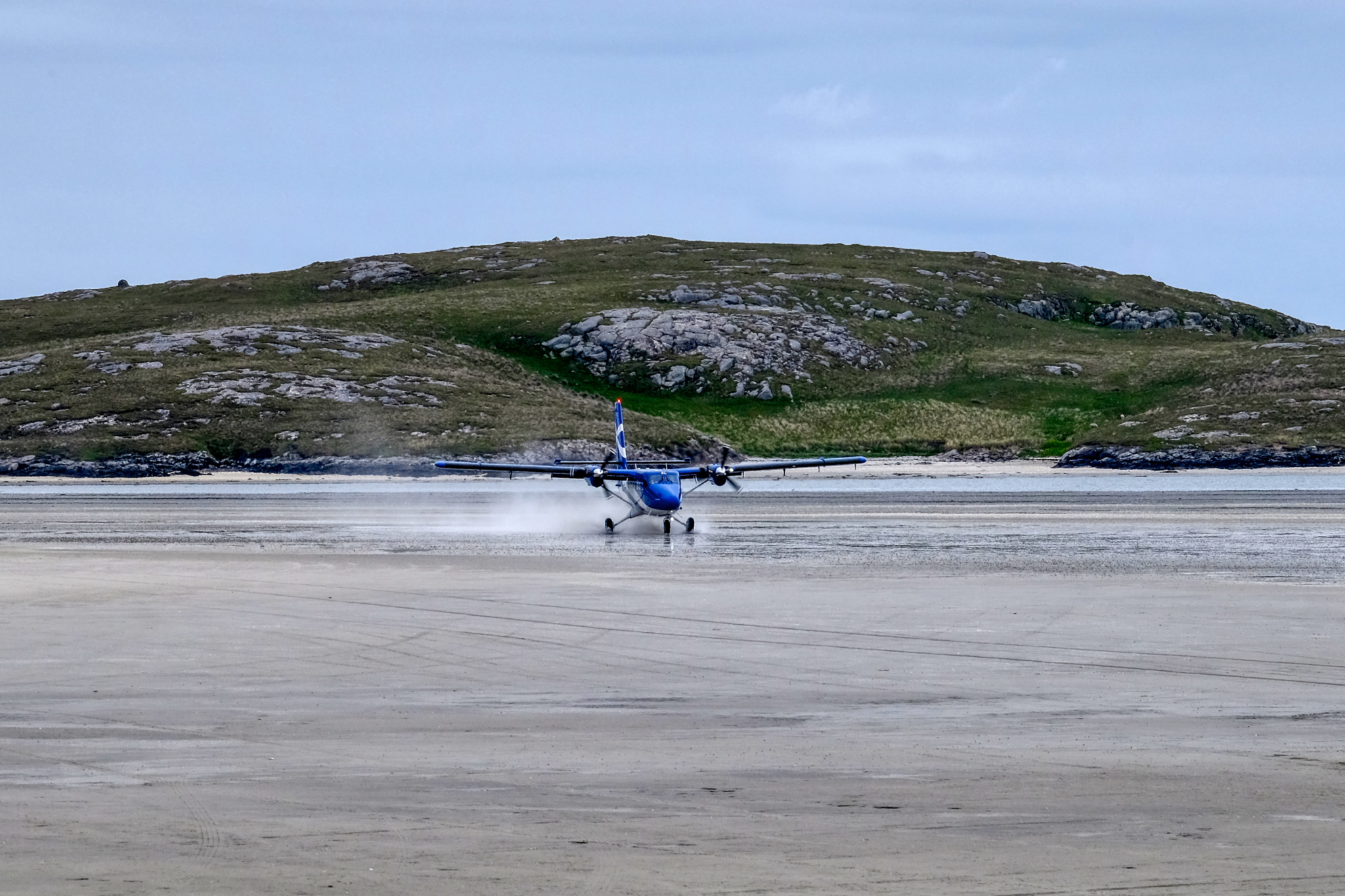 Landing on the wet beach . . .
Landing on the wet beach . . .
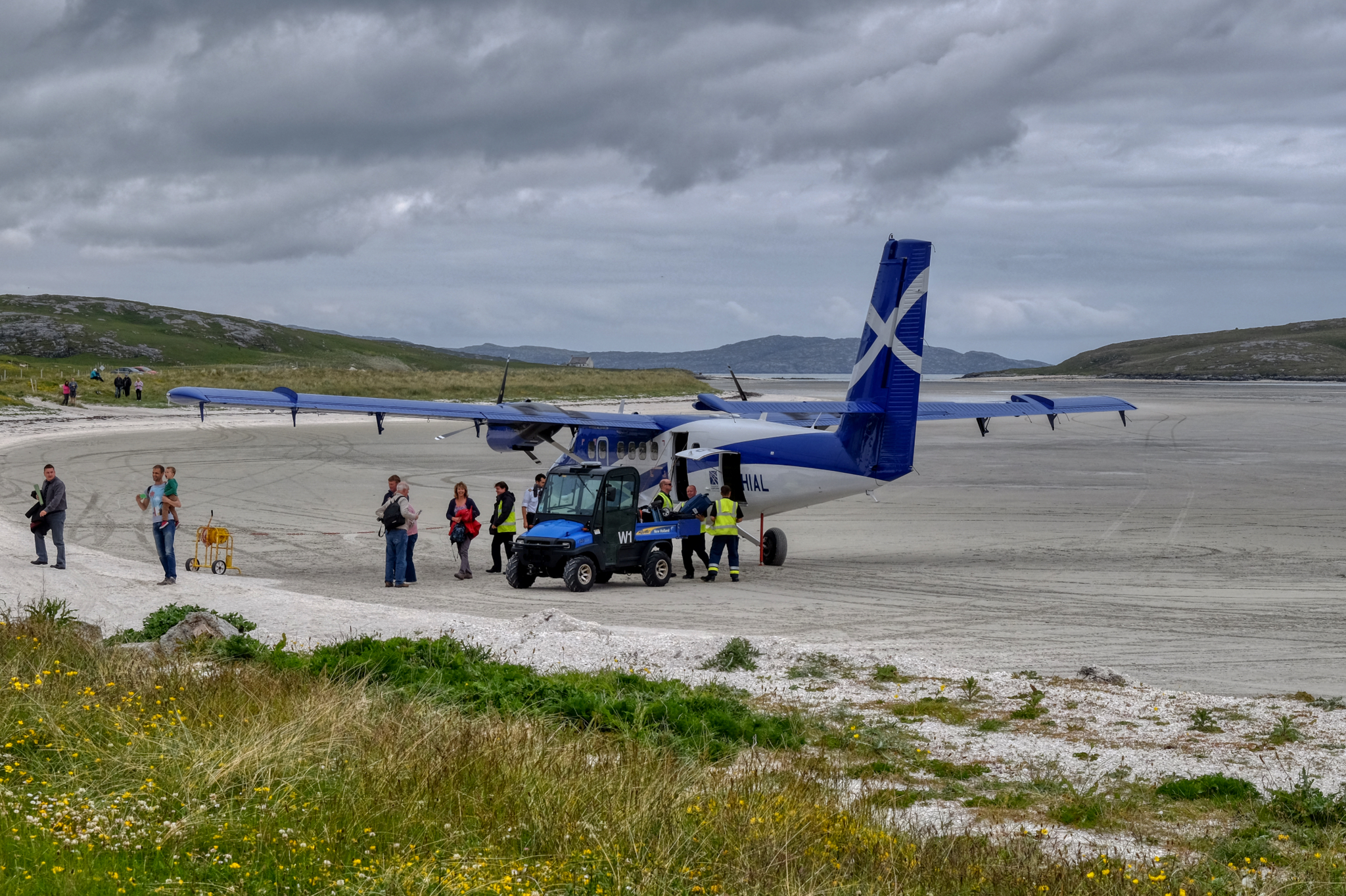 The passengers disembarked onto a sandy runway . . . as they have been doing since 1936. The only destination from this airport is Glasgow.
The passengers disembarked onto a sandy runway . . . as they have been doing since 1936. The only destination from this airport is Glasgow.
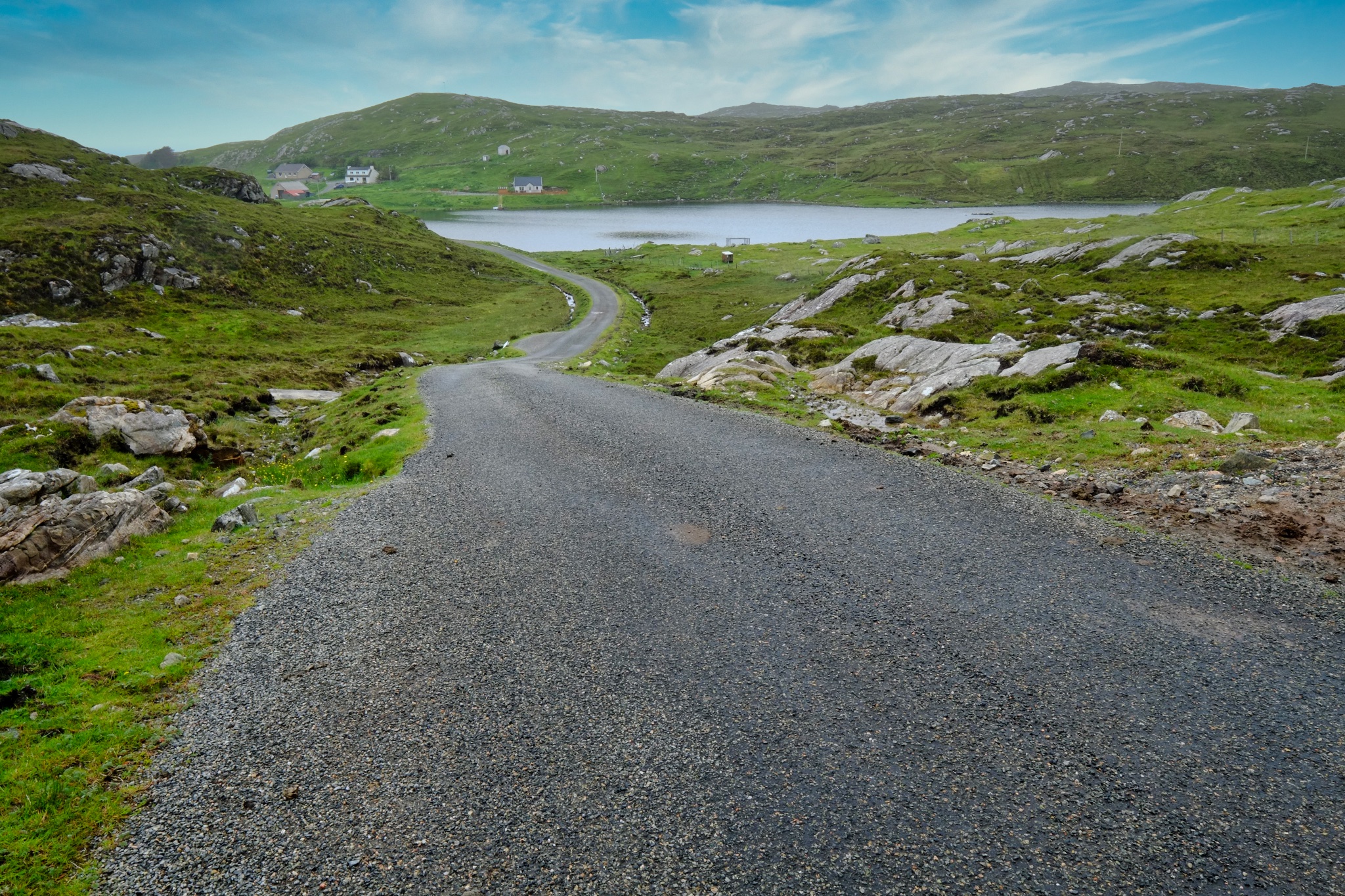 And onward we drove north on these marvelous one lane roads.
And onward we drove north on these marvelous one lane roads.
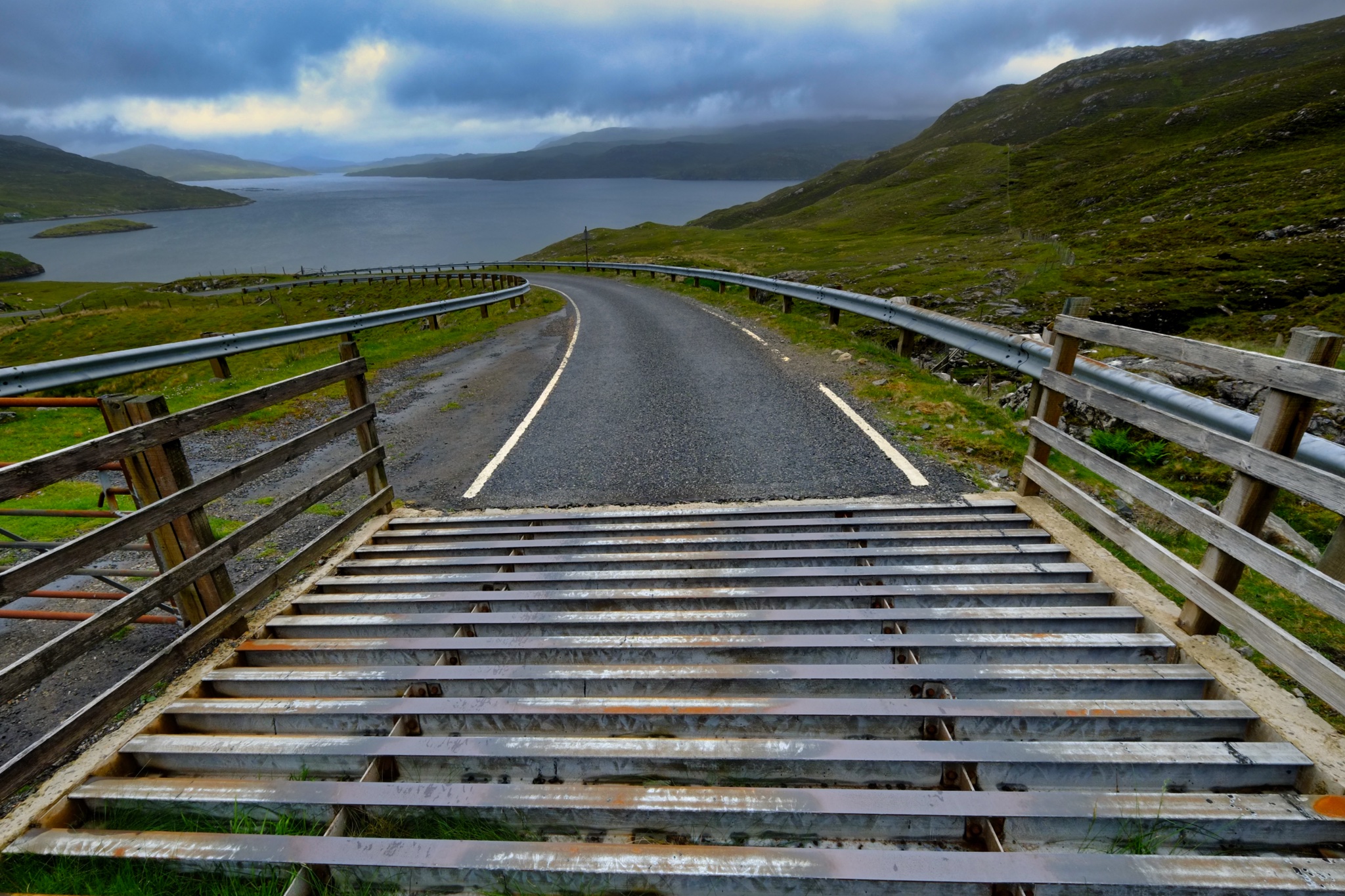 With sheep and Highland cows grazing everywhere, we encountered many of these 'cattle guards.'
With sheep and Highland cows grazing everywhere, we encountered many of these 'cattle guards.'
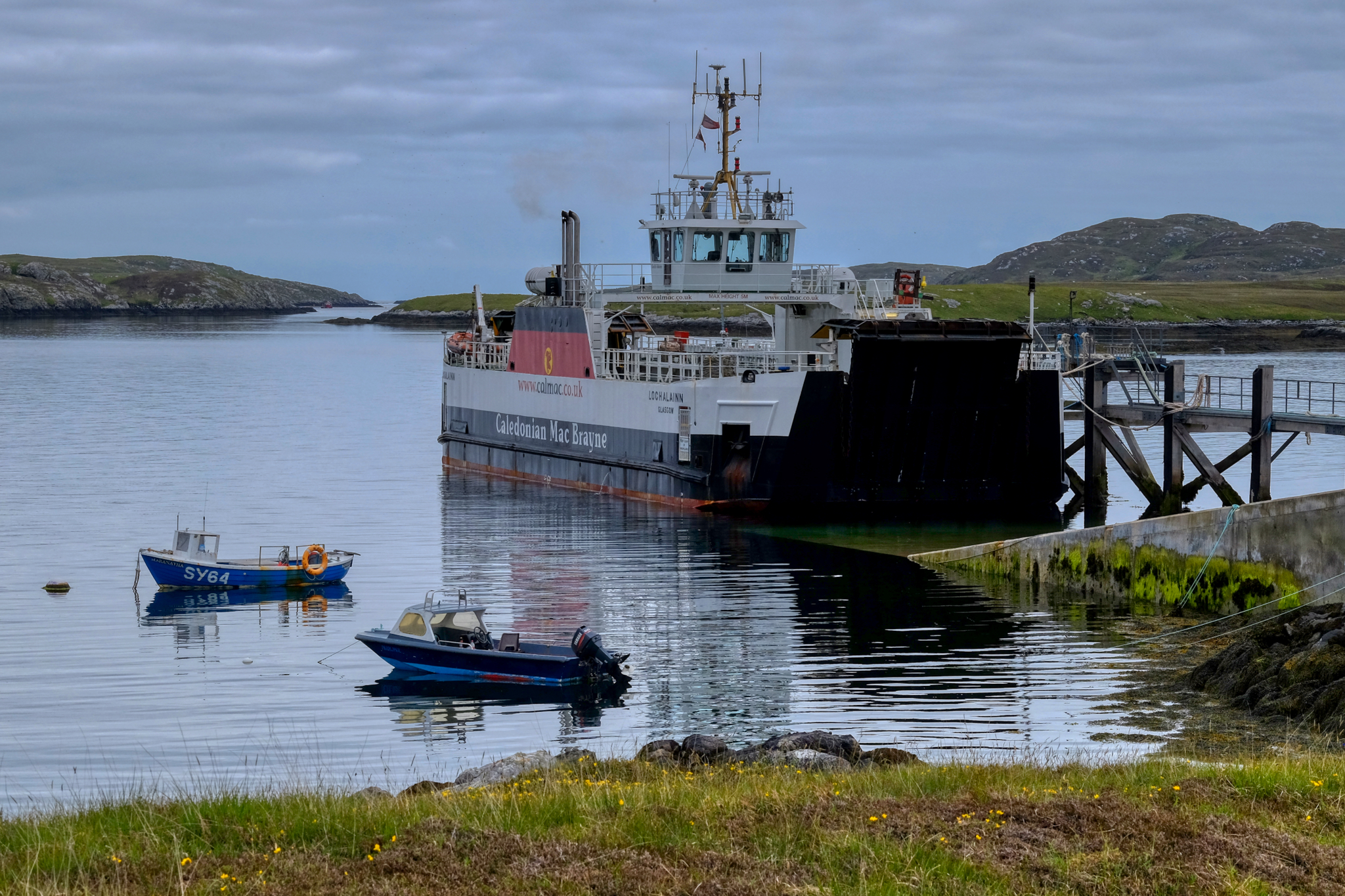 At the northern tip of Barra Island we reached the Ardmhor to Eriskay ferry. There are 5 round trips a day, each carrying only 18 vehicles. With only 90 possible places on this ferry to drive north up through the length of the Outer Hebrides, it is important to book in advance. We had.
At the northern tip of Barra Island we reached the Ardmhor to Eriskay ferry. There are 5 round trips a day, each carrying only 18 vehicles. With only 90 possible places on this ferry to drive north up through the length of the Outer Hebrides, it is important to book in advance. We had.
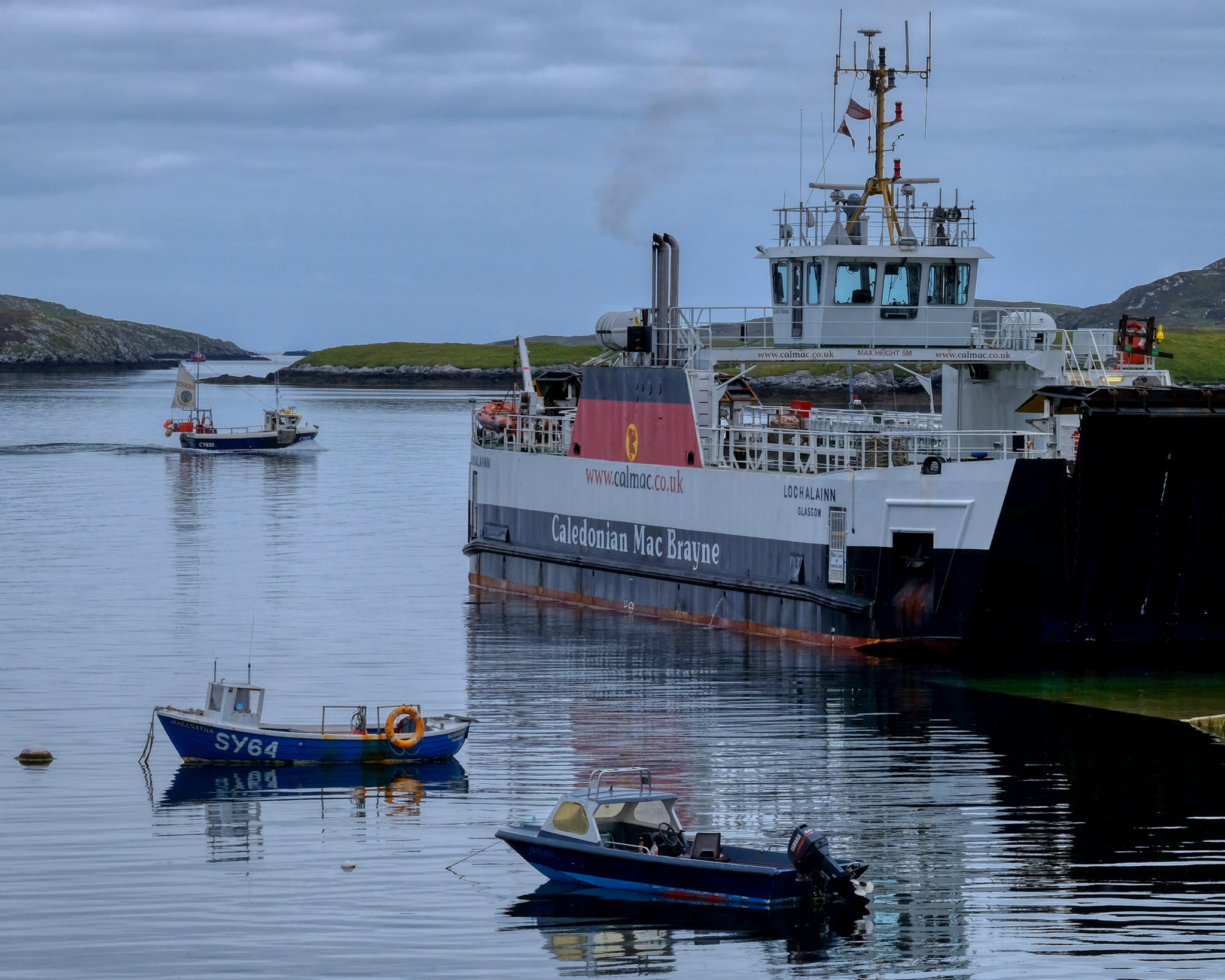 We arrived at the ferry terminal a little early . . . which allowed me some time to explore the area.
We arrived at the ferry terminal a little early . . . which allowed me some time to explore the area.
 Such a remote and fascinating place.
Such a remote and fascinating place.
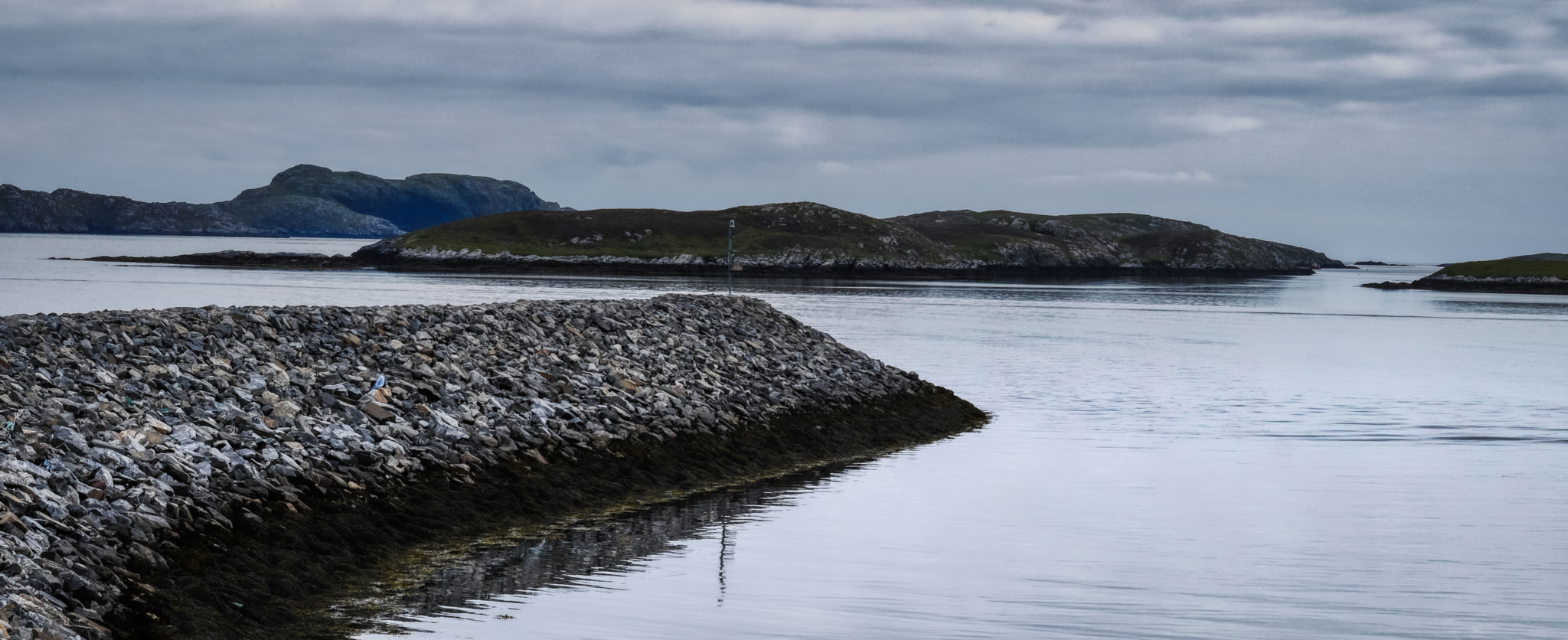 The sea always framed by outcrops of stone islands . . .
The sea always framed by outcrops of stone islands . . .
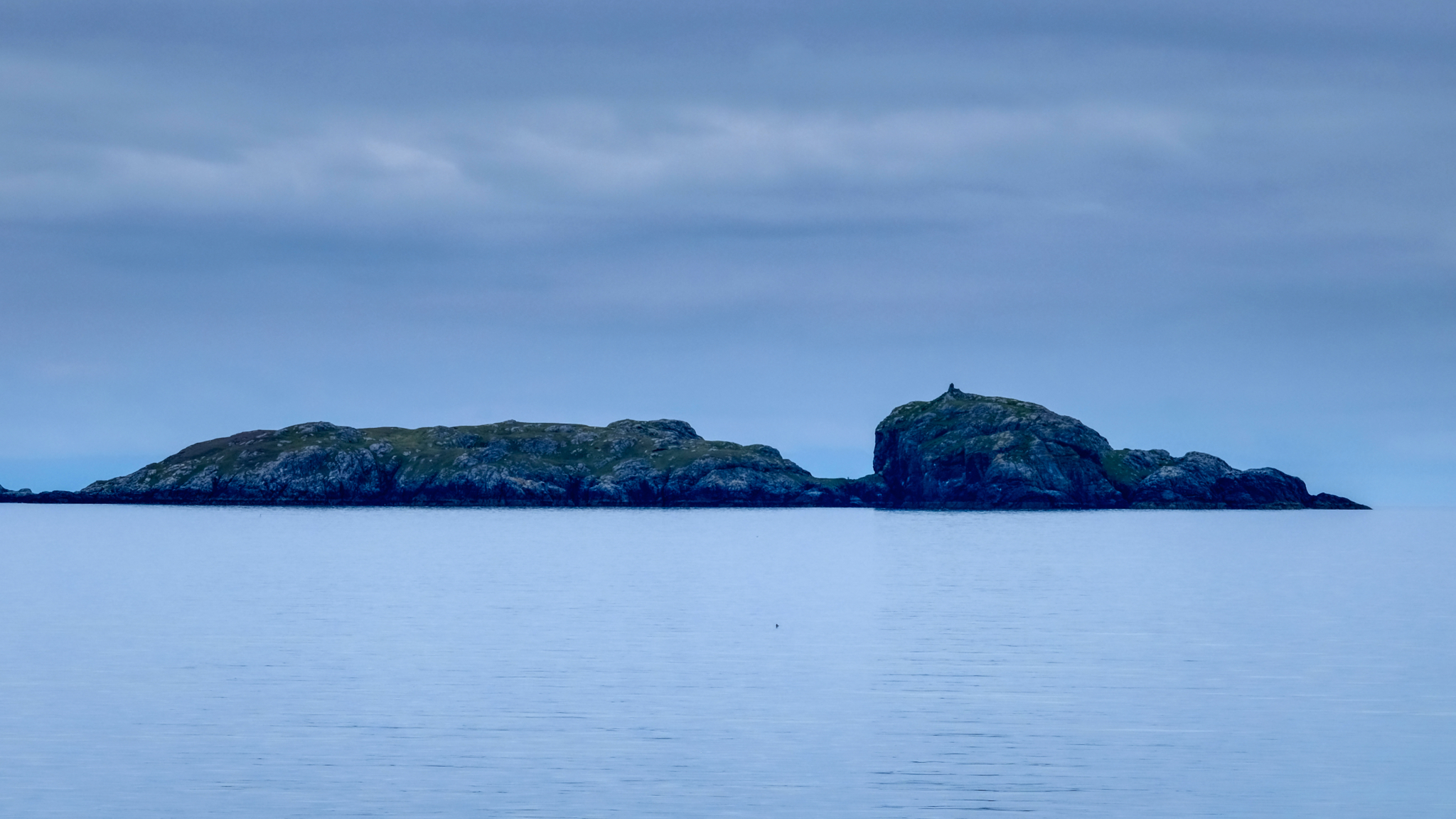 The passage between Barra Island and Eriskay Island was eerily mystical . . .
The passage between Barra Island and Eriskay Island was eerily mystical . . .
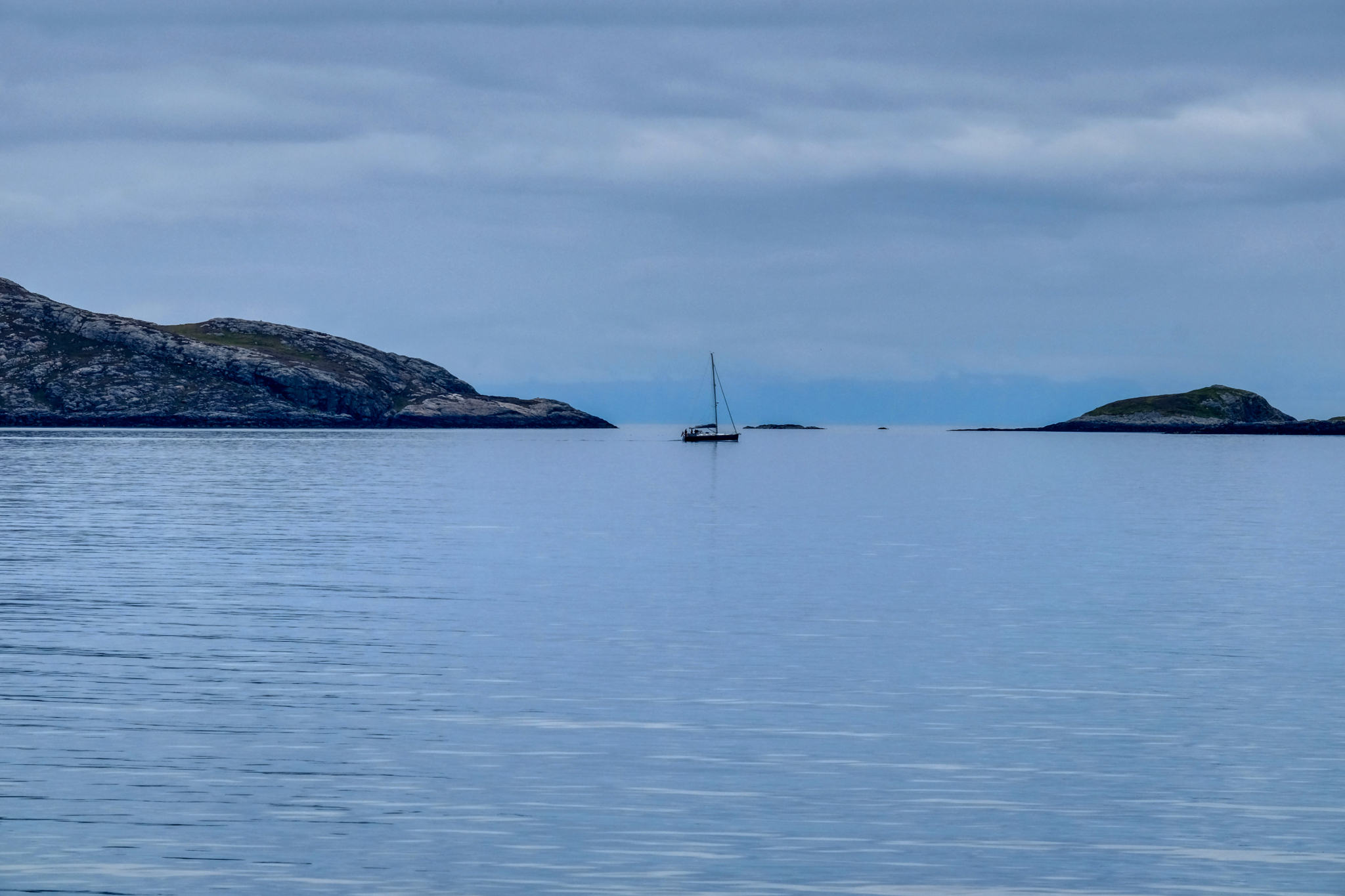 My memory of the passage was of the total silence . . . hardly a sound beyond the quiet thumping of the ferry diesel at work. Calm. Remote.
My memory of the passage was of the total silence . . . hardly a sound beyond the quiet thumping of the ferry diesel at work. Calm. Remote.
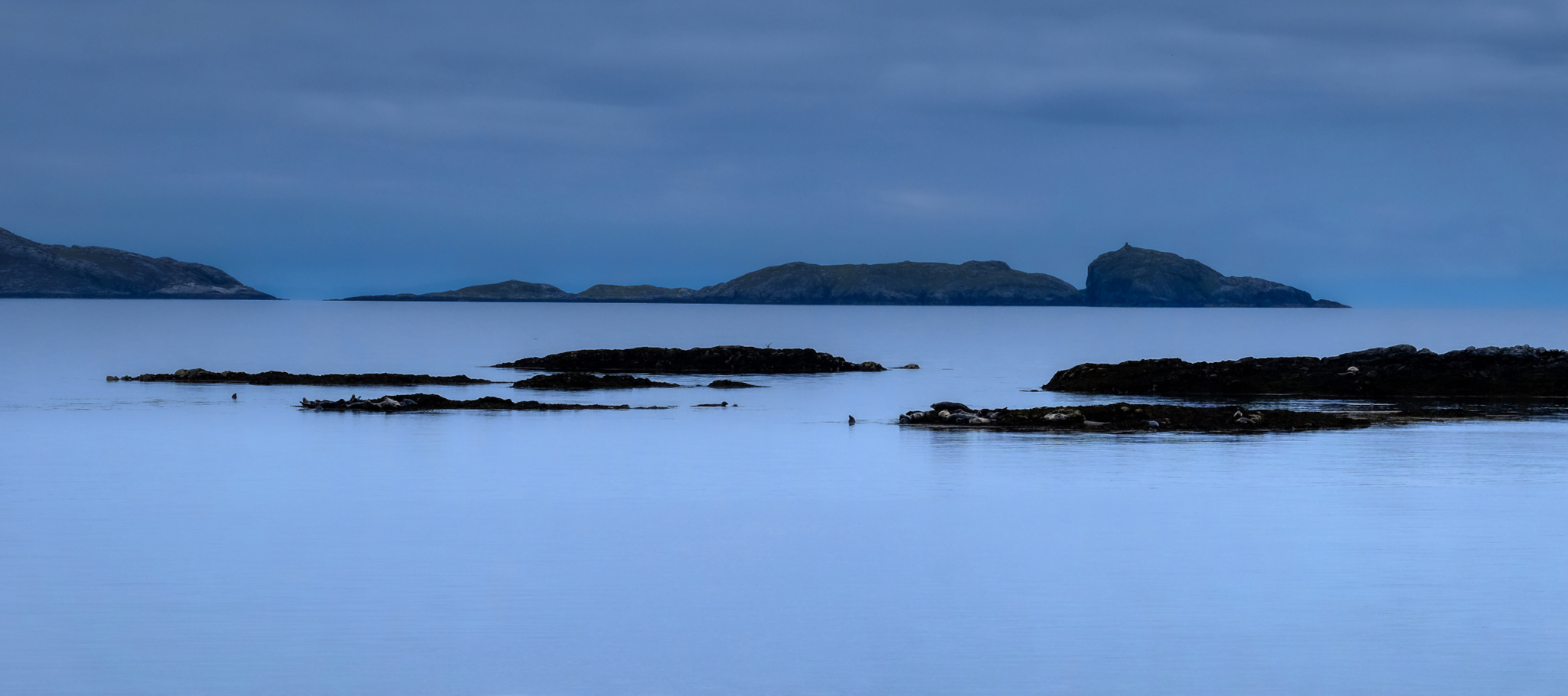 There was a bit of commotion among my fellow passengers. Someone remarked, "Look. Seals." And there they were.
There was a bit of commotion among my fellow passengers. Someone remarked, "Look. Seals." And there they were.
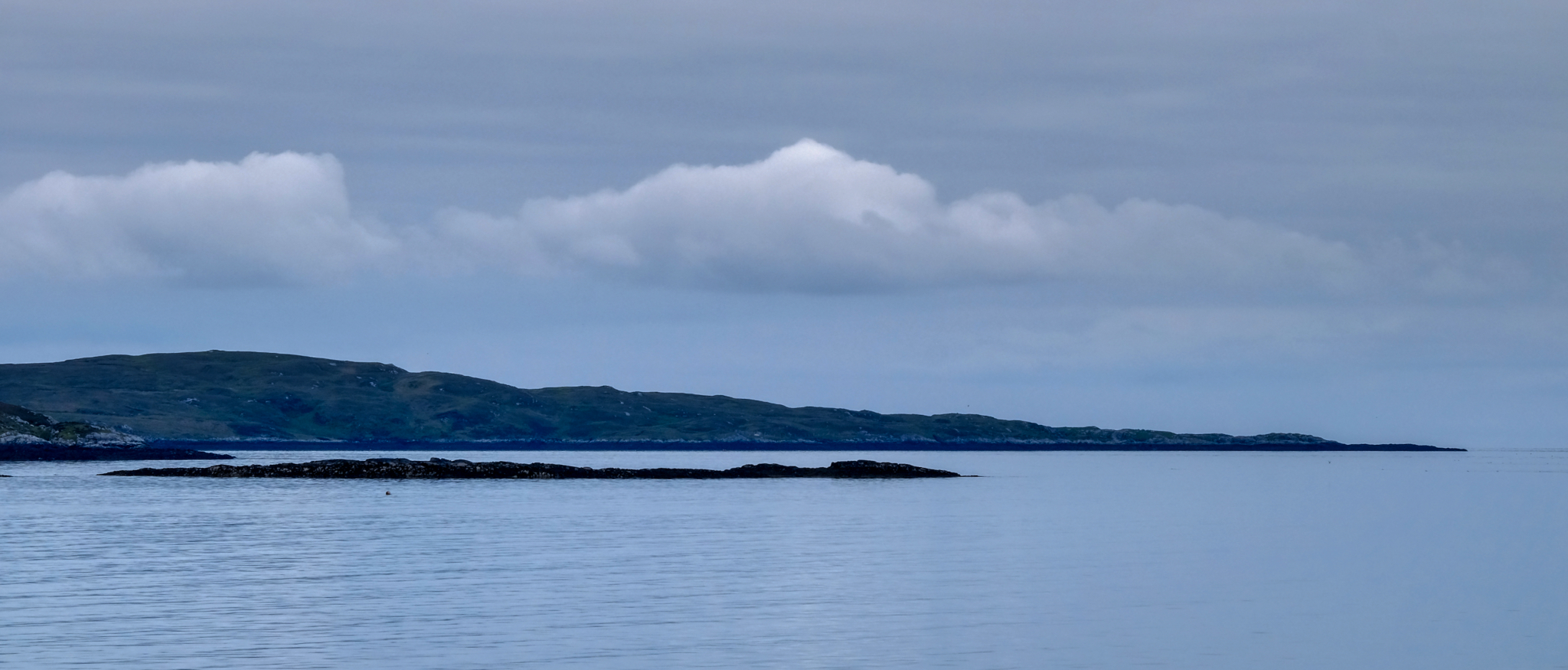 A strange, captivating, natural beauty.
A strange, captivating, natural beauty.
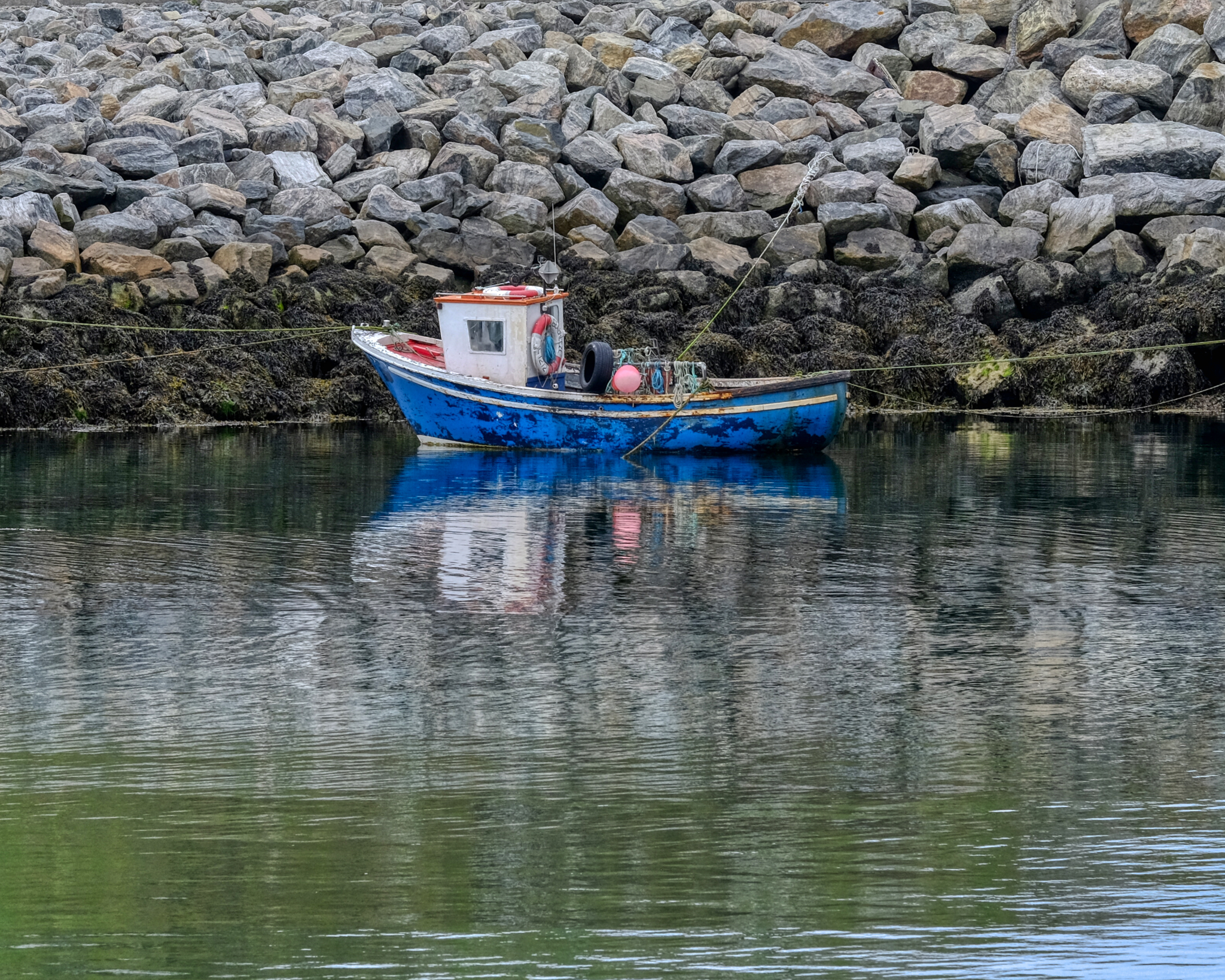 Arriving on the Isle of Eriskay.
Arriving on the Isle of Eriskay.
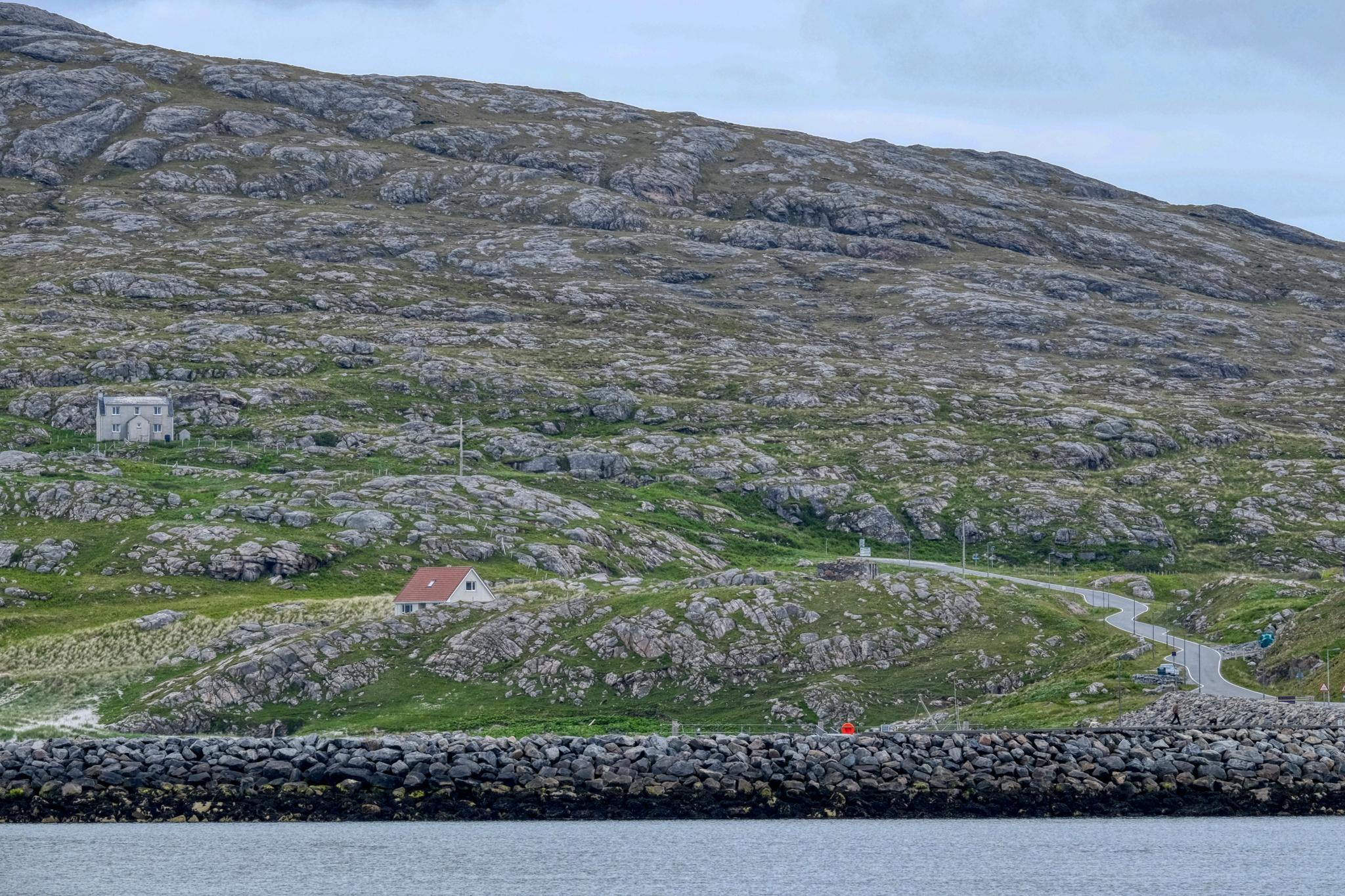 Rocky, barren hillside . . . and the one-lane road that will take us further up the Outer Hebrides chain of islands.
Rocky, barren hillside . . . and the one-lane road that will take us further up the Outer Hebrides chain of islands.
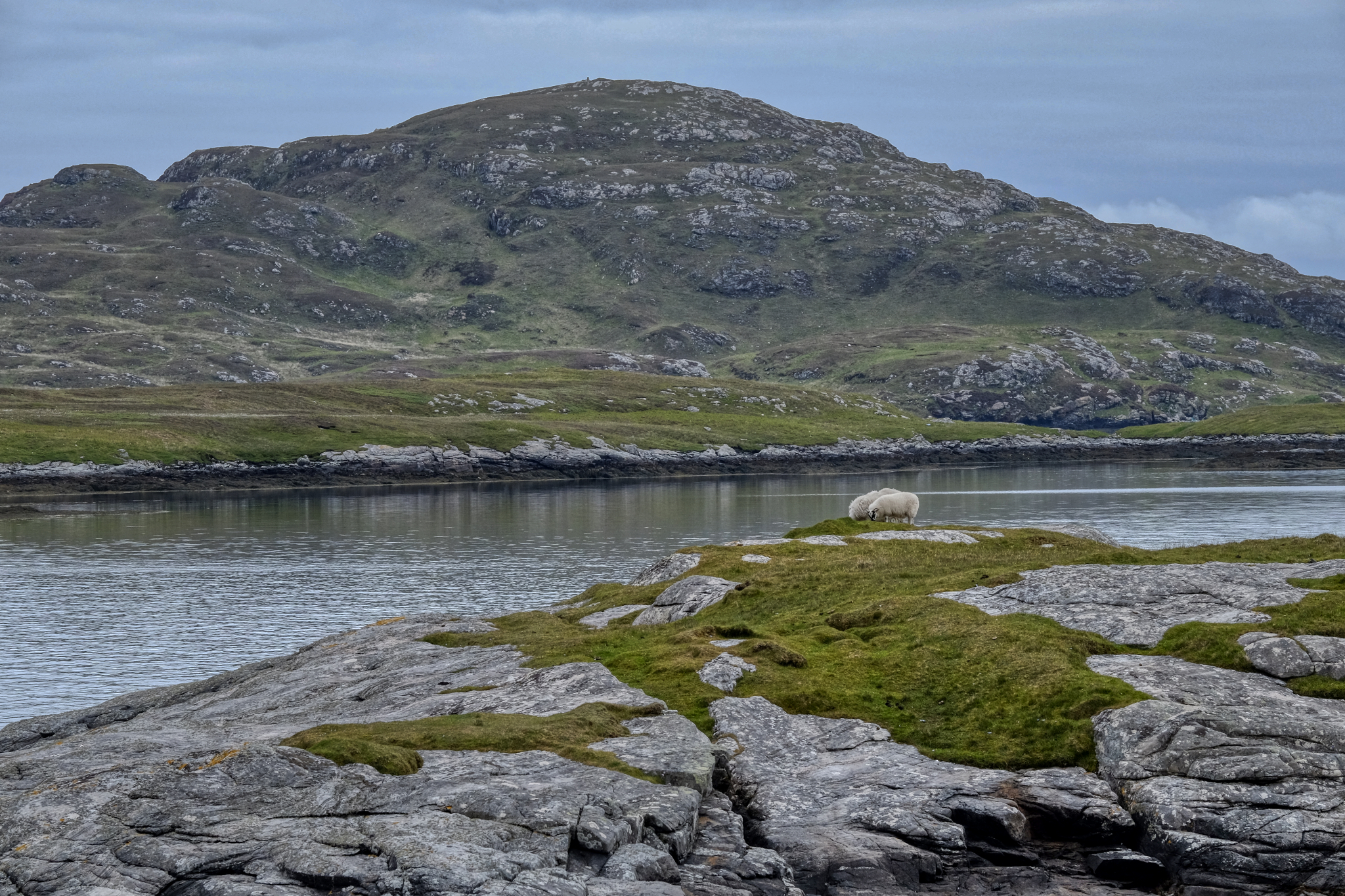 We quickly crossed Eriskay Island and drove up and across a causeway to South Uist Island.
We quickly crossed Eriskay Island and drove up and across a causeway to South Uist Island.
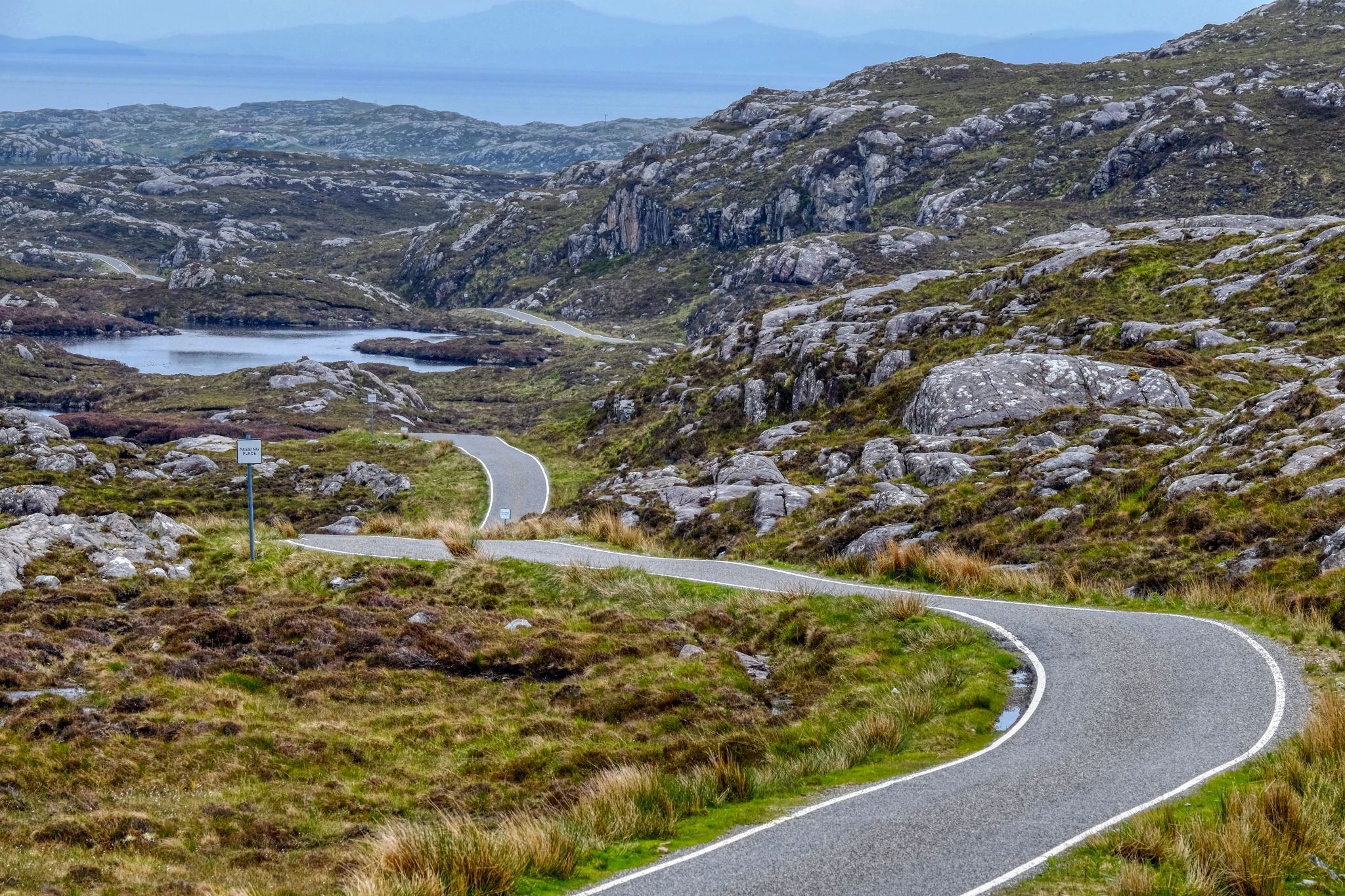 I absolutely loved driving on these narrow, winding, one-lane roads through this unique topography.
I absolutely loved driving on these narrow, winding, one-lane roads through this unique topography.
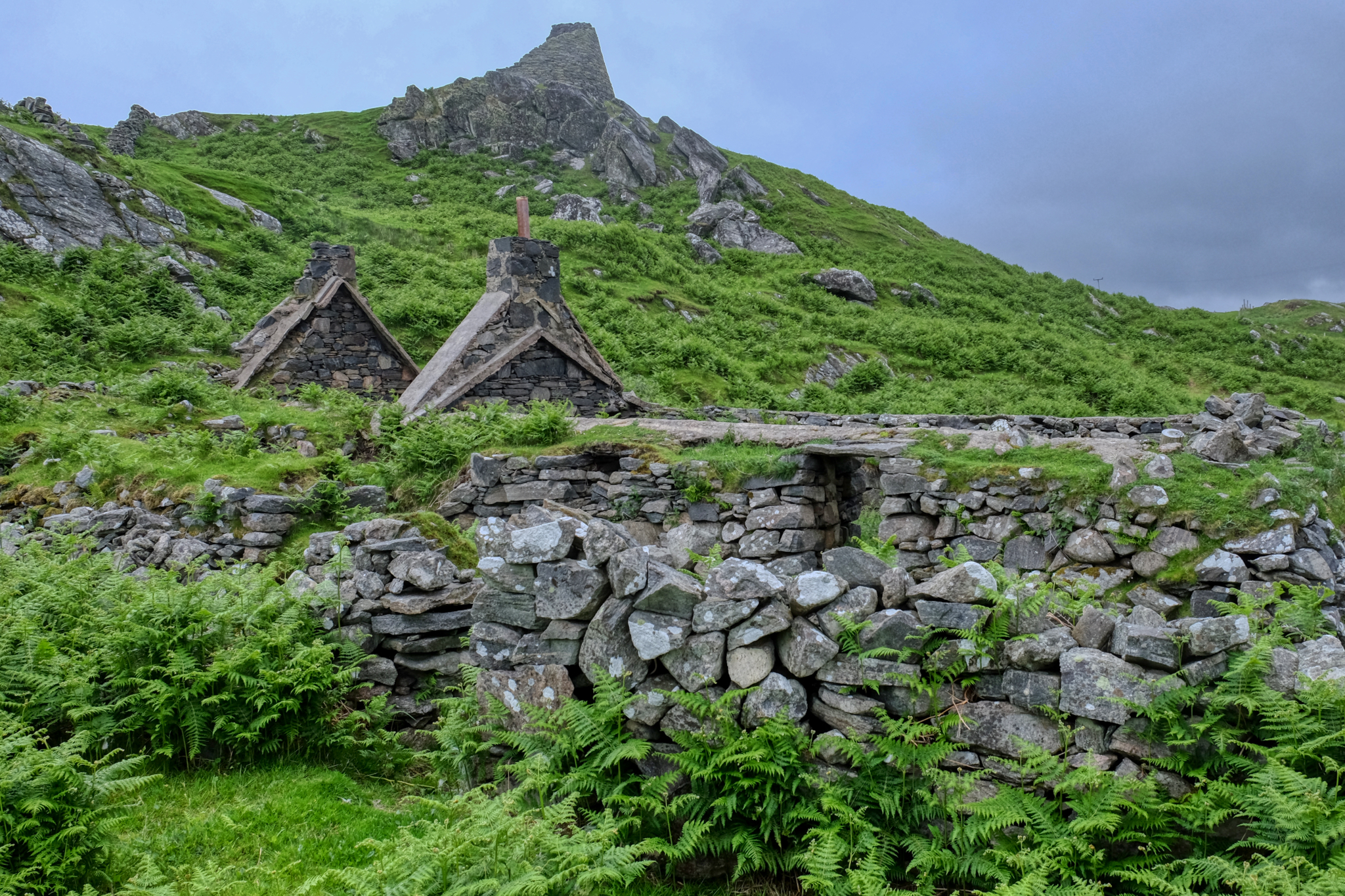 The remains of an old stone crofters house . . . and a stone tower on the hilltop.
The remains of an old stone crofters house . . . and a stone tower on the hilltop.
 Midsummer flowers, grey skies, dilapidated stone ruins . . . . The Isle of Lewis.
Midsummer flowers, grey skies, dilapidated stone ruins . . . . The Isle of Lewis.
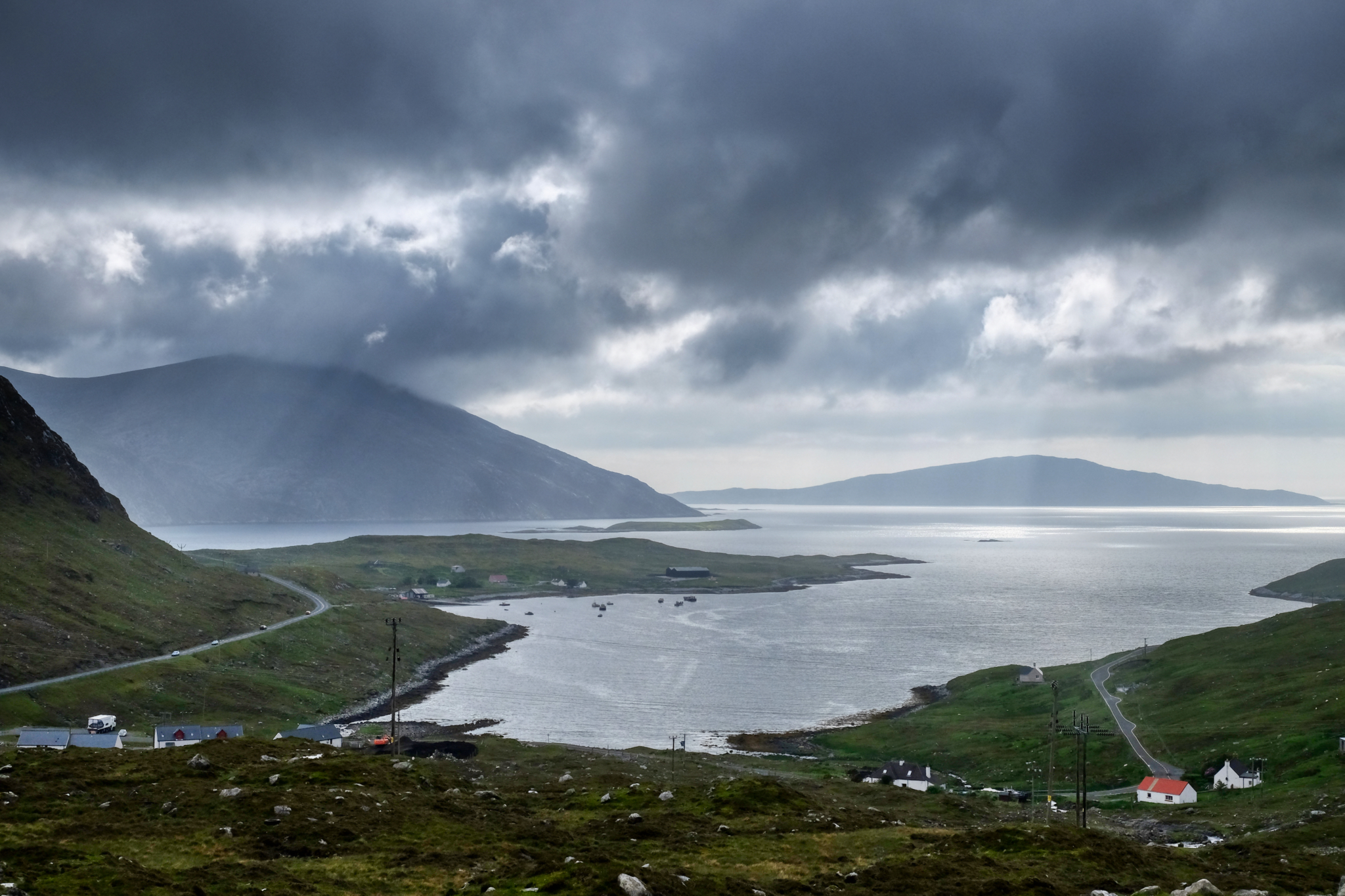 In and around mountain passes, sudden grand views out across the bays to the outlying islands. Magnificent scenery. Like no other place I have ever been.
In and around mountain passes, sudden grand views out across the bays to the outlying islands. Magnificent scenery. Like no other place I have ever been.
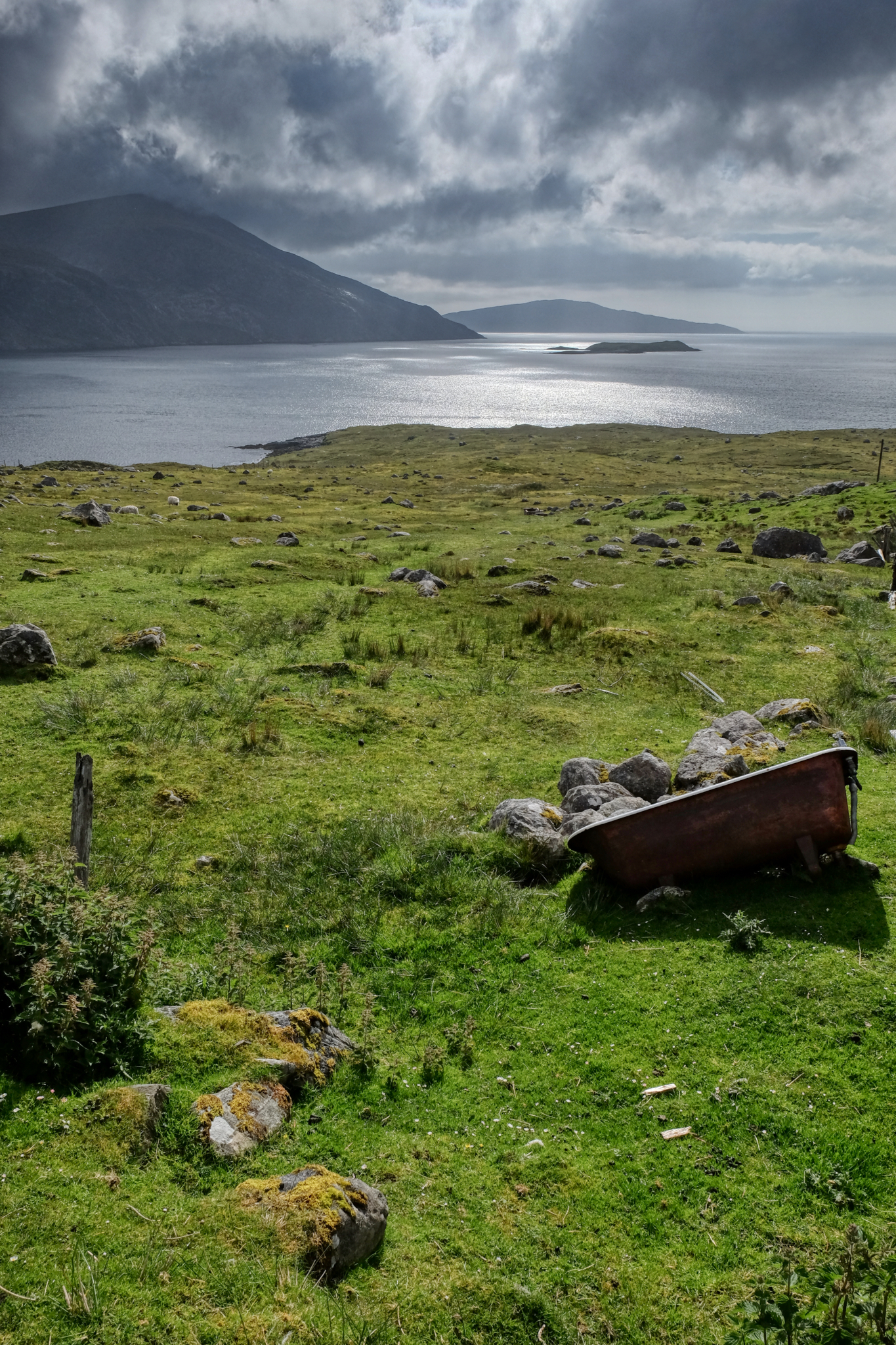 Grand views like no place else.
Grand views like no place else.
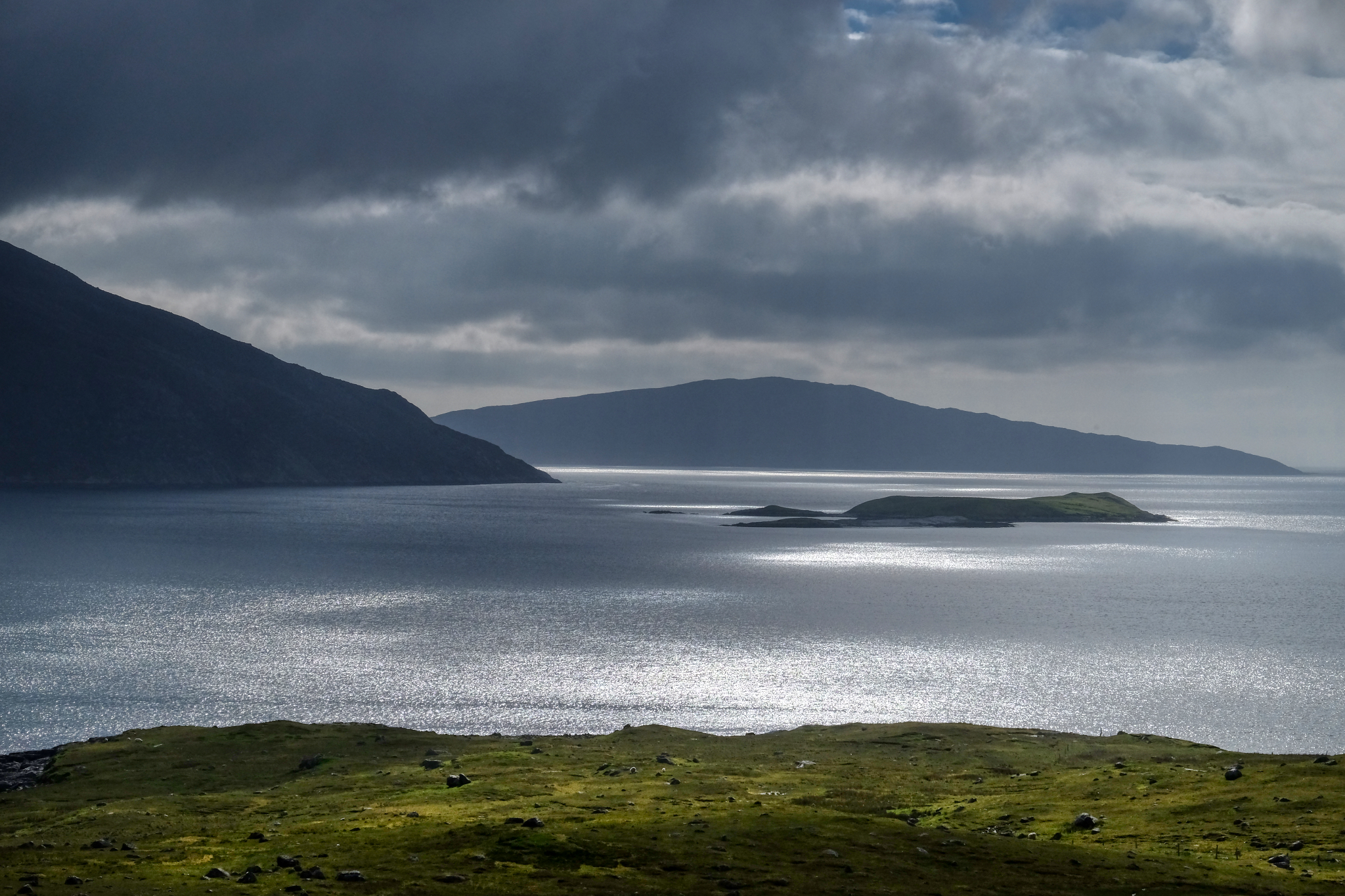 Patches of light on the sea . . .
Patches of light on the sea . . .
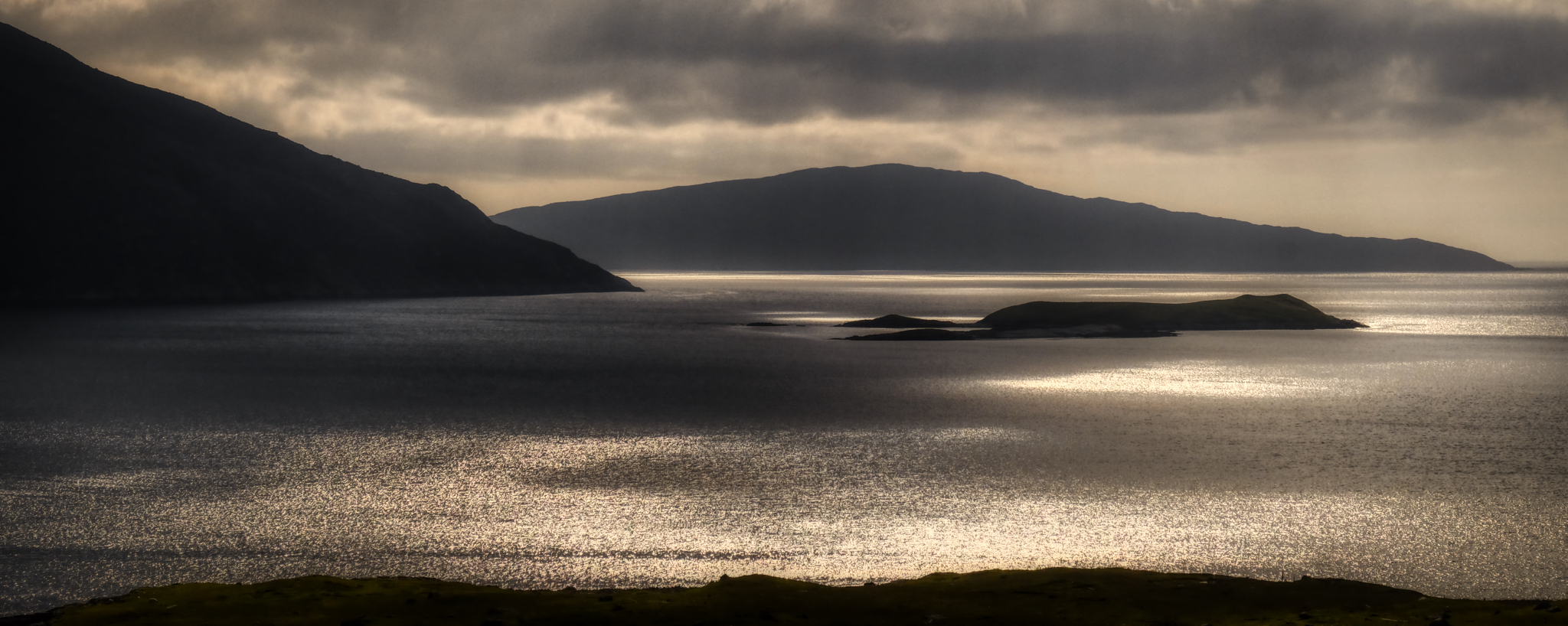 I am not usually partial to added photo 'artsy' technique, but this scene seemed to demand a sepia tone. Amazing.
I am not usually partial to added photo 'artsy' technique, but this scene seemed to demand a sepia tone. Amazing.
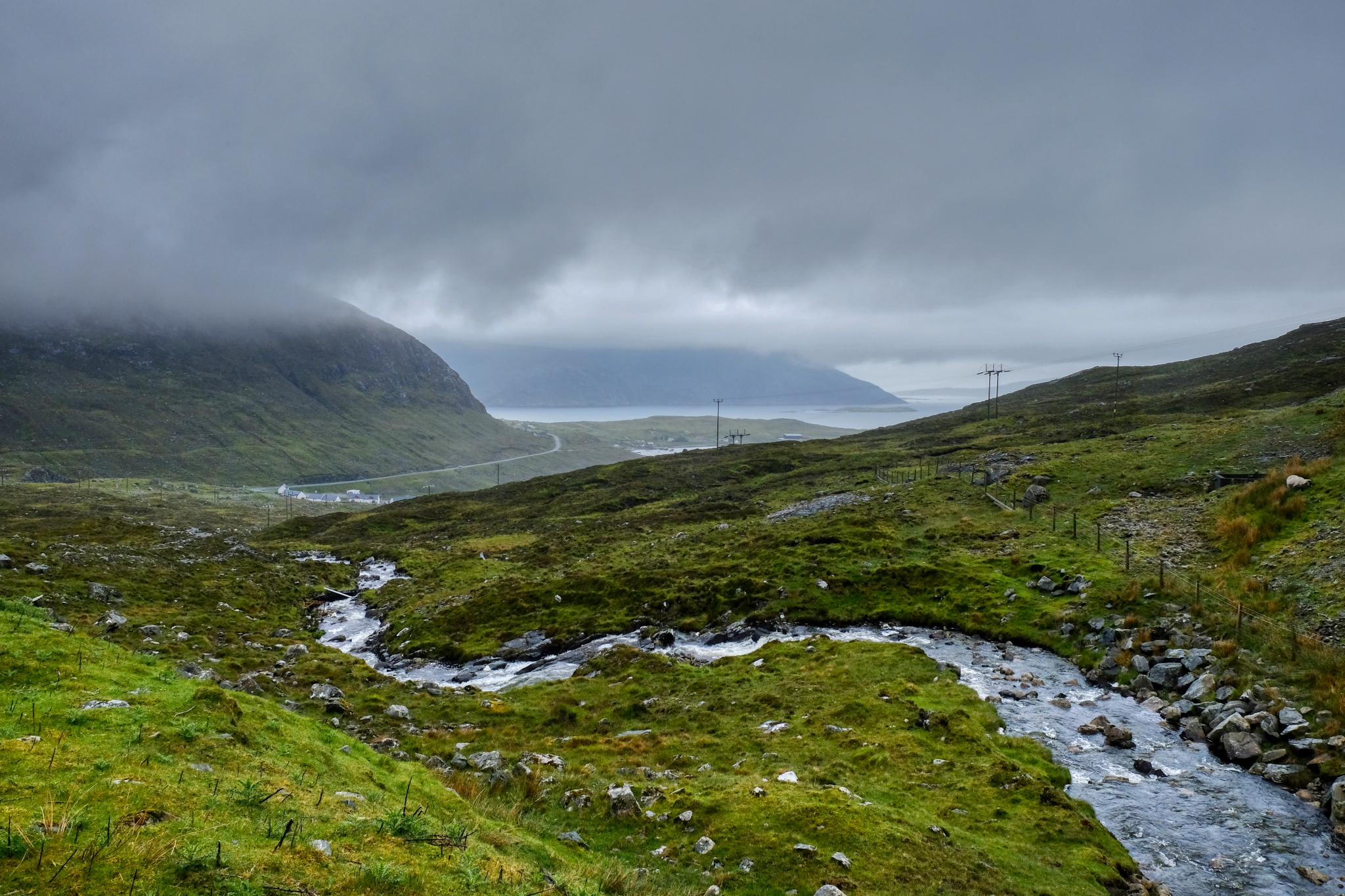 Driving up the small winding road along side a rushing stream . . . .
Driving up the small winding road along side a rushing stream . . . .
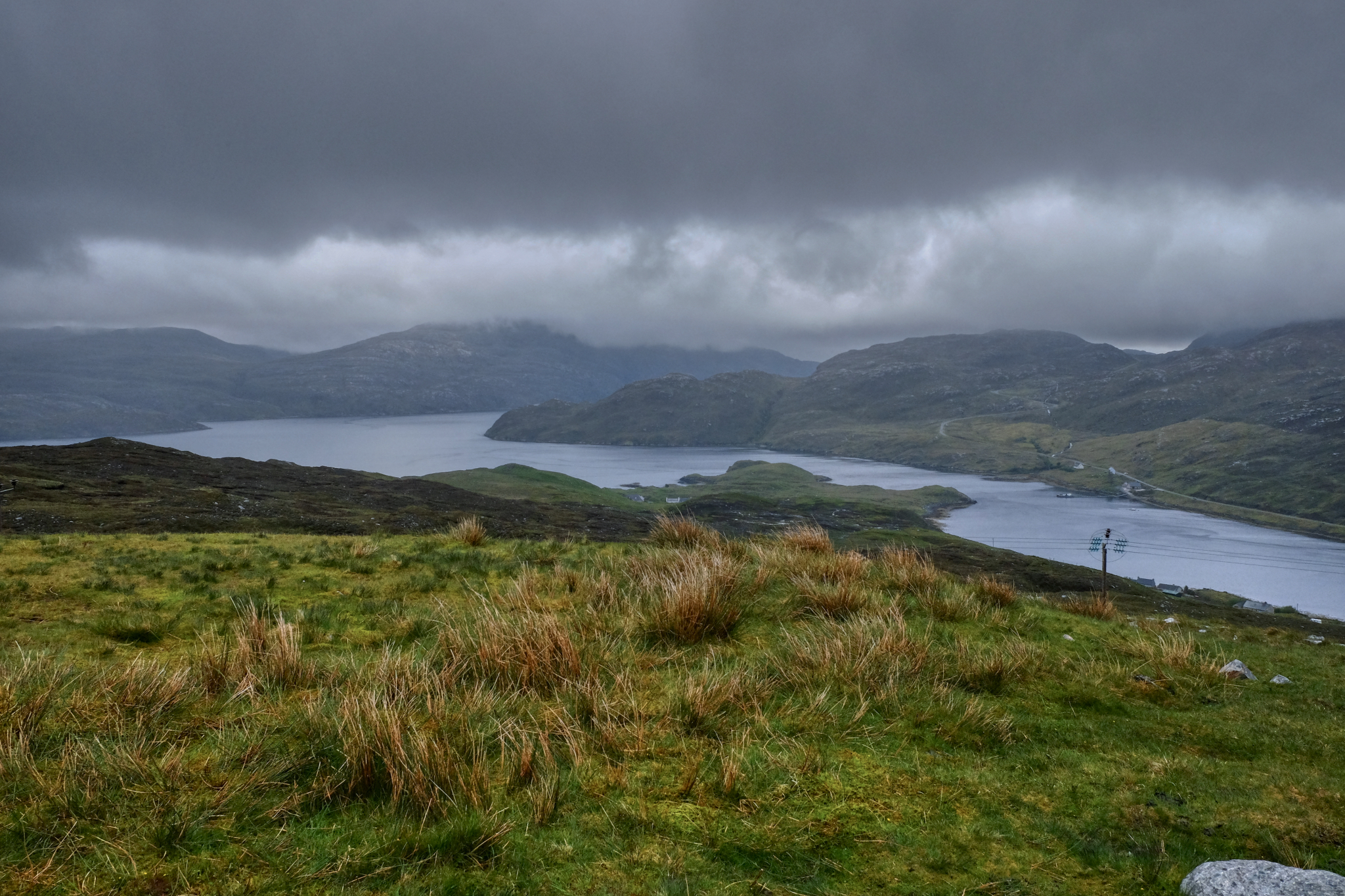 And around the bend at the hilltop . . . another magnificent view of a picturesque inlet . . . in the rain.
And around the bend at the hilltop . . . another magnificent view of a picturesque inlet . . . in the rain.
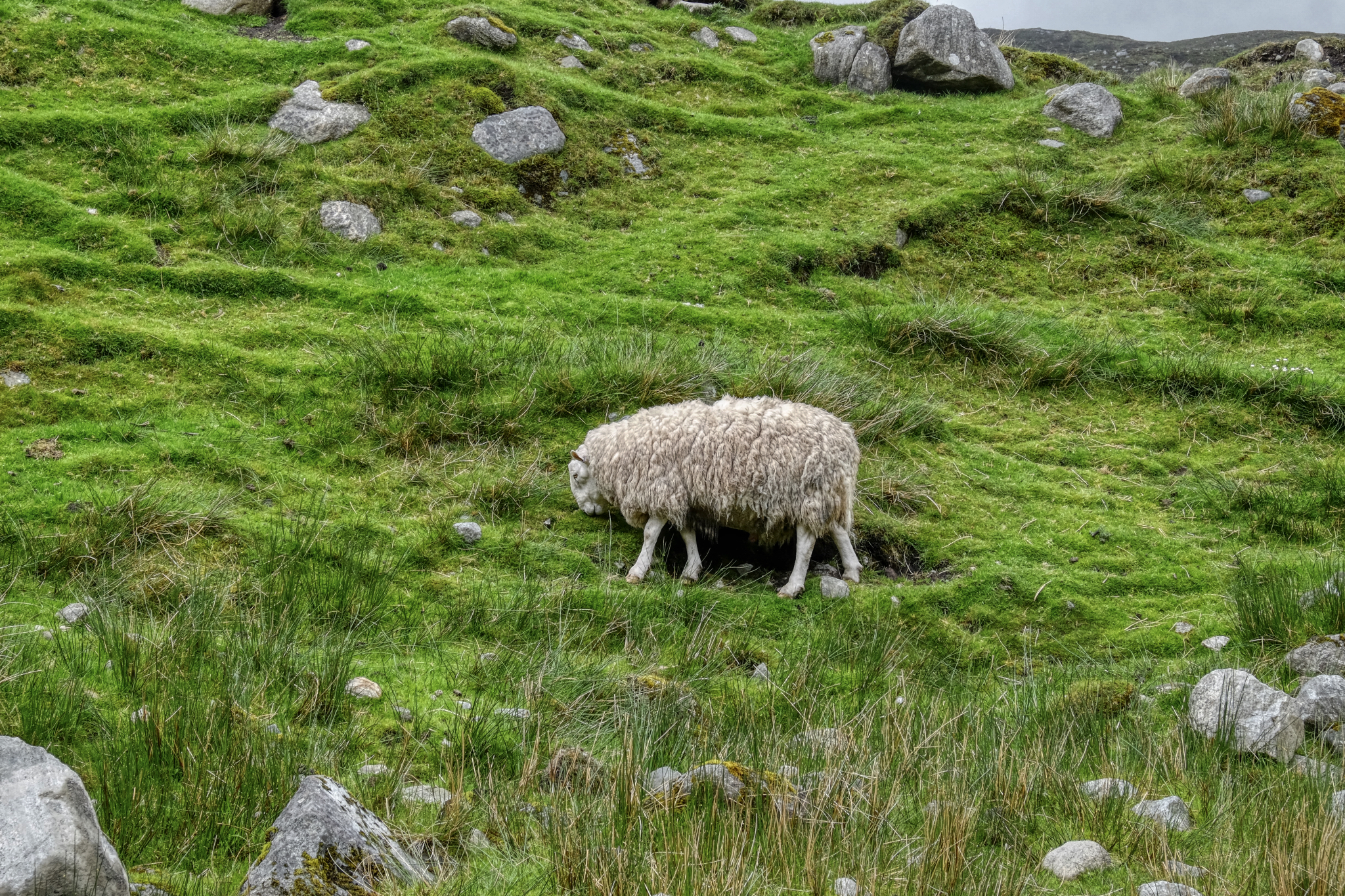 Wet sheep . . . everywhere . . .
Wet sheep . . . everywhere . . .
 Wild Hebridean stream running down out of the rugged hills.
Wild Hebridean stream running down out of the rugged hills.
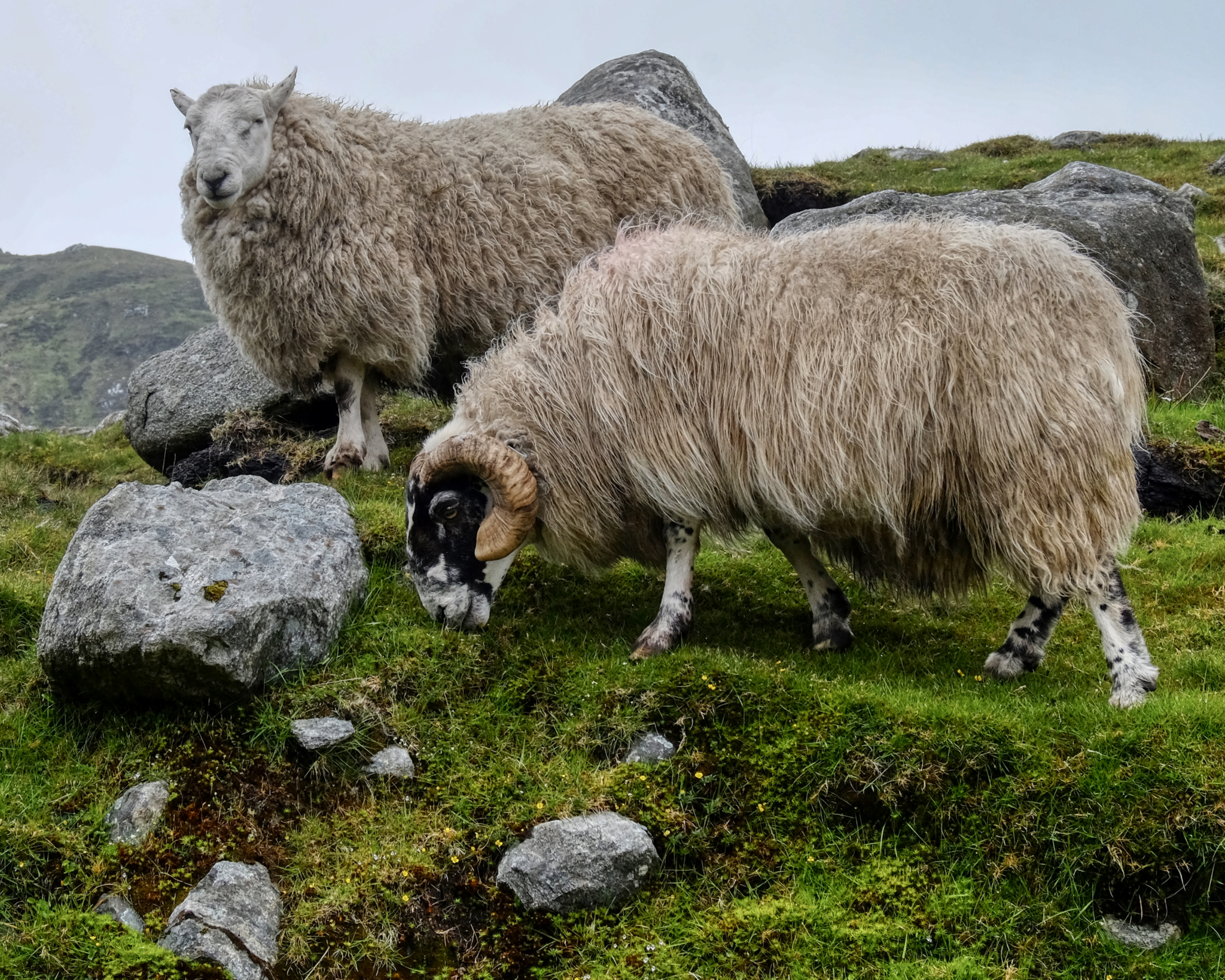 Portrait of two wet sheep. Why not?
Portrait of two wet sheep. Why not?
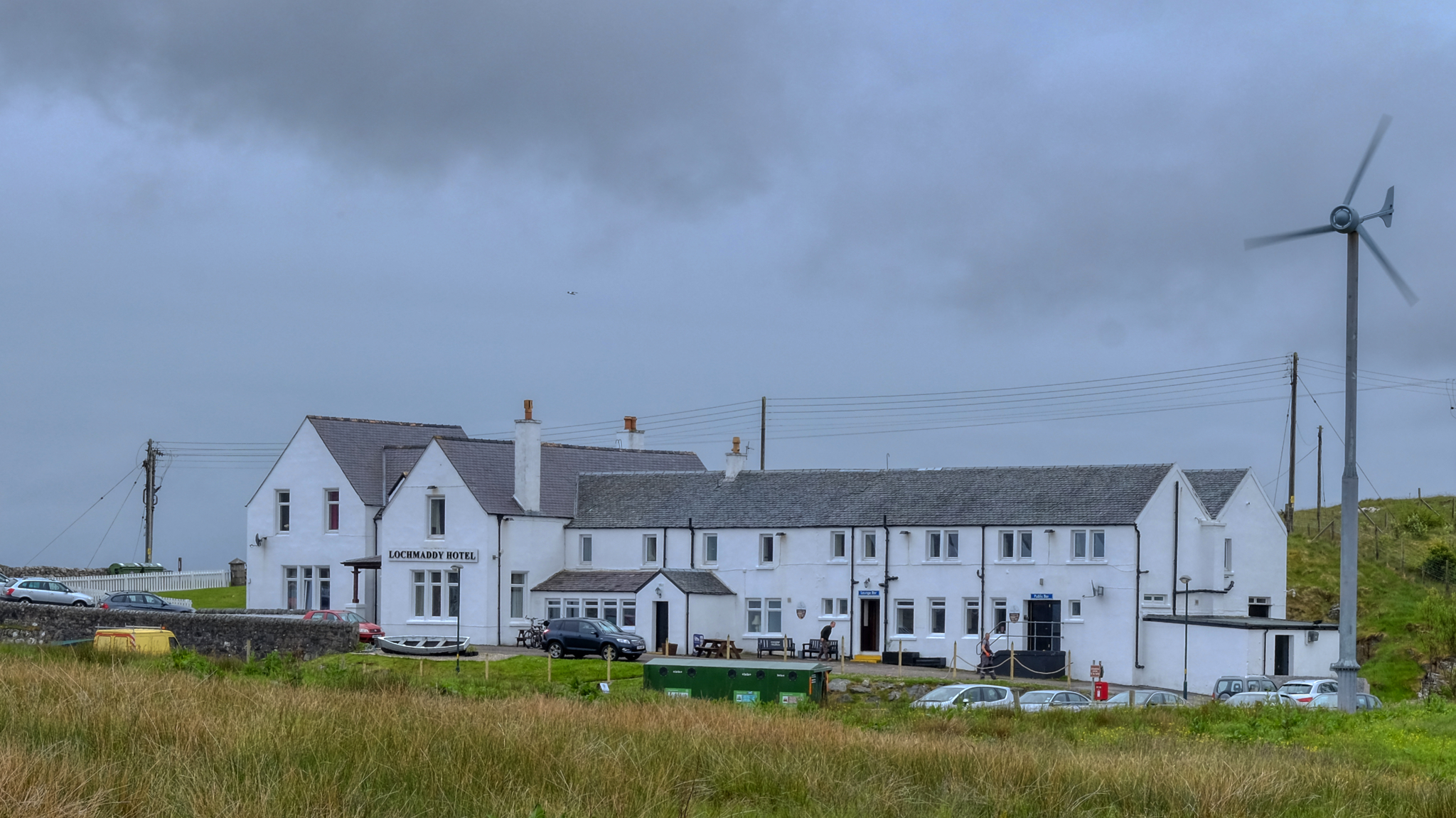 We spent one night at the charming and remote Lochmaddy Hotel on North Uist Island.
We spent one night at the charming and remote Lochmaddy Hotel on North Uist Island.
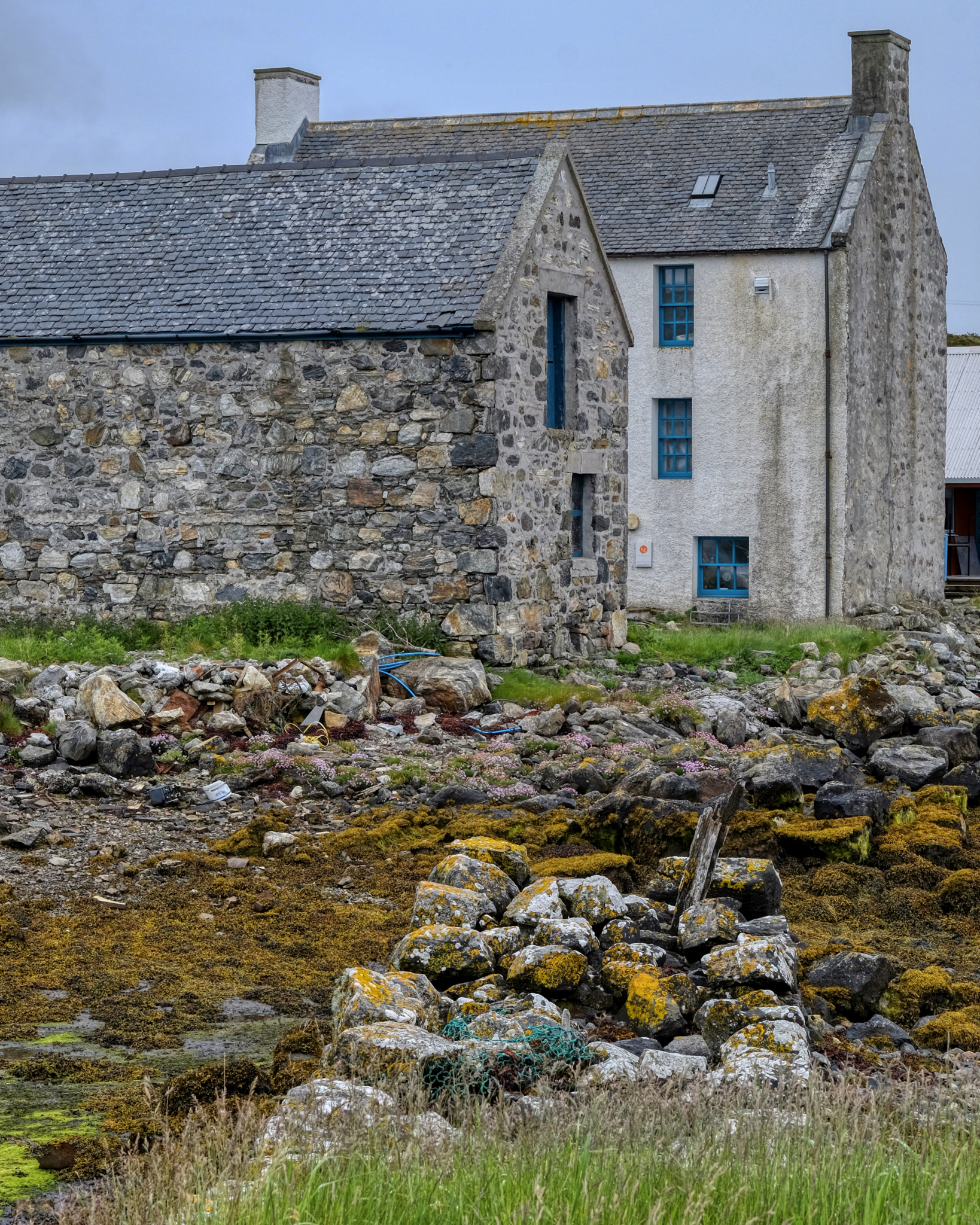 Out along the rocky bay.
Out along the rocky bay.
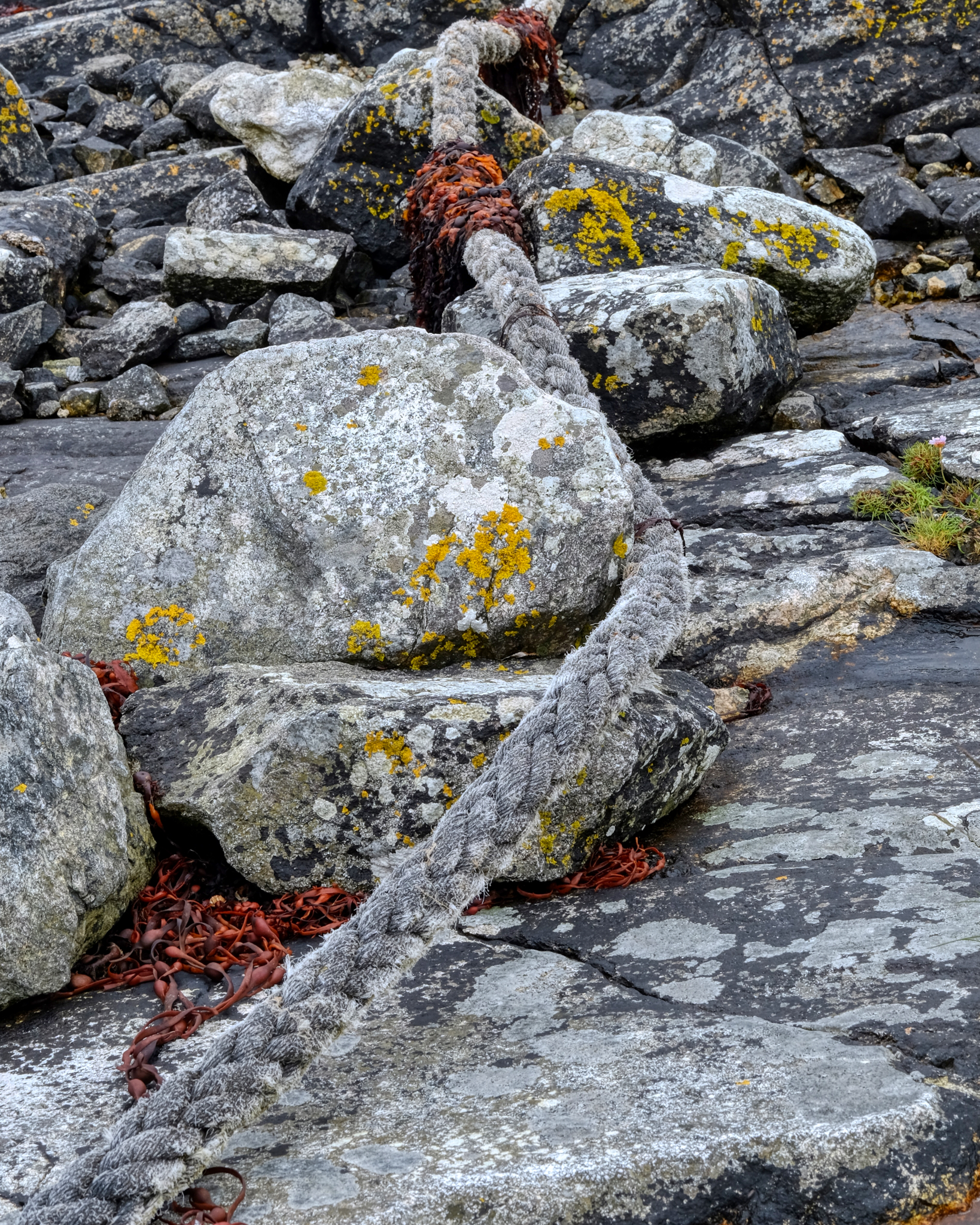 Rope mooring and stones.
Rope mooring and stones.
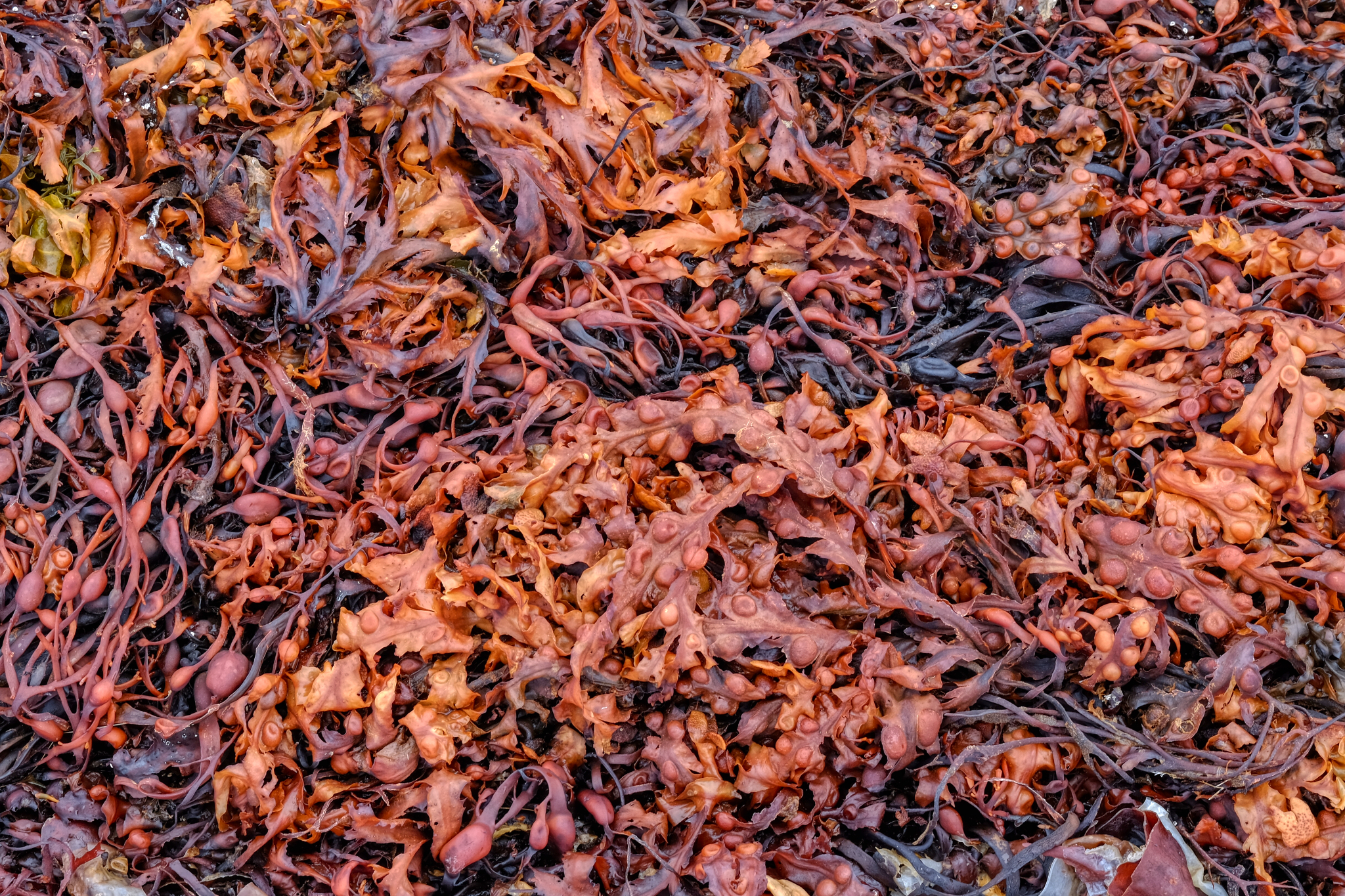 Incredibly fascinating seaweed in a North Uist bay.
Incredibly fascinating seaweed in a North Uist bay.
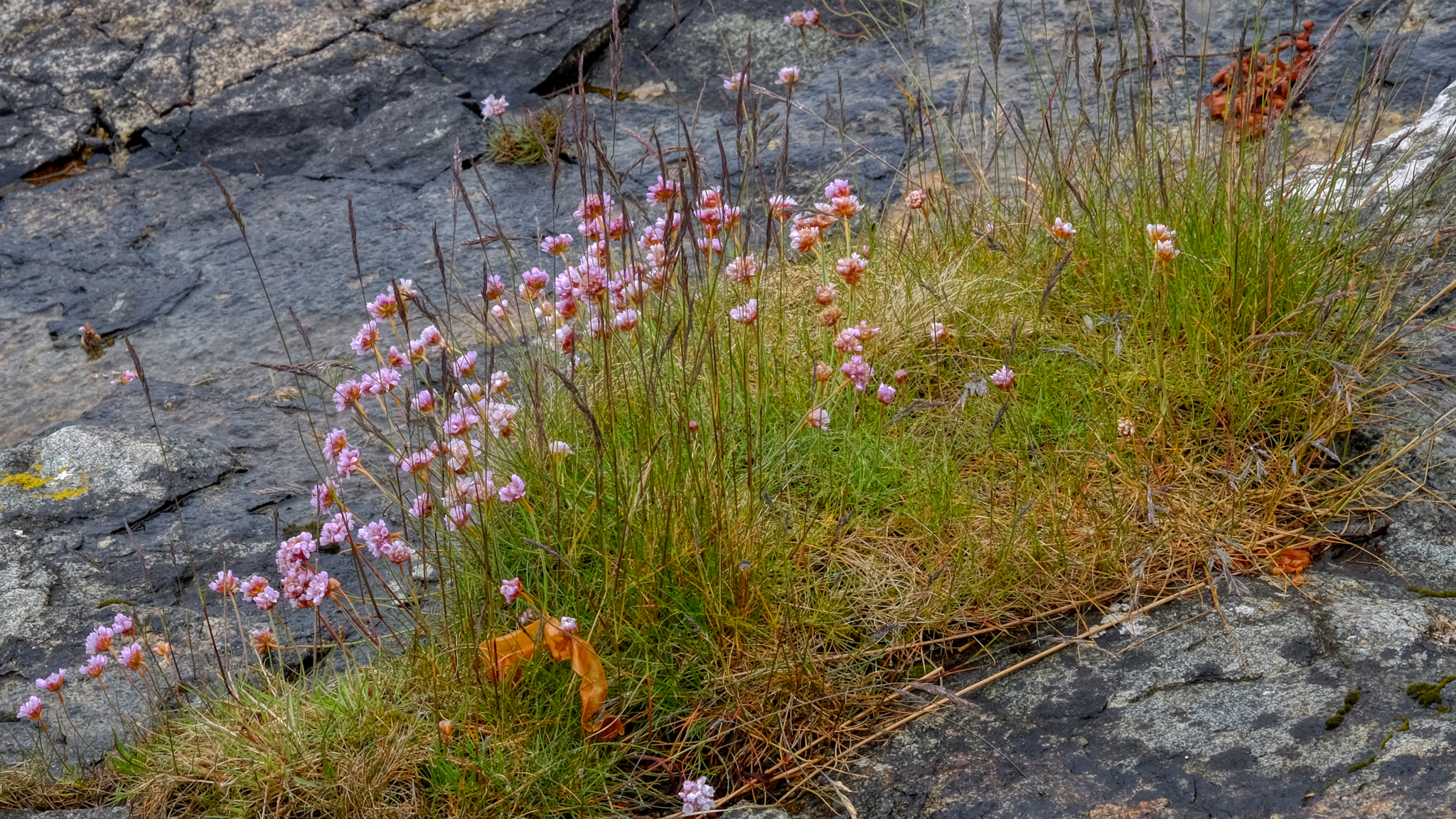 Wild flowers growing in the stony shore.
Wild flowers growing in the stony shore.
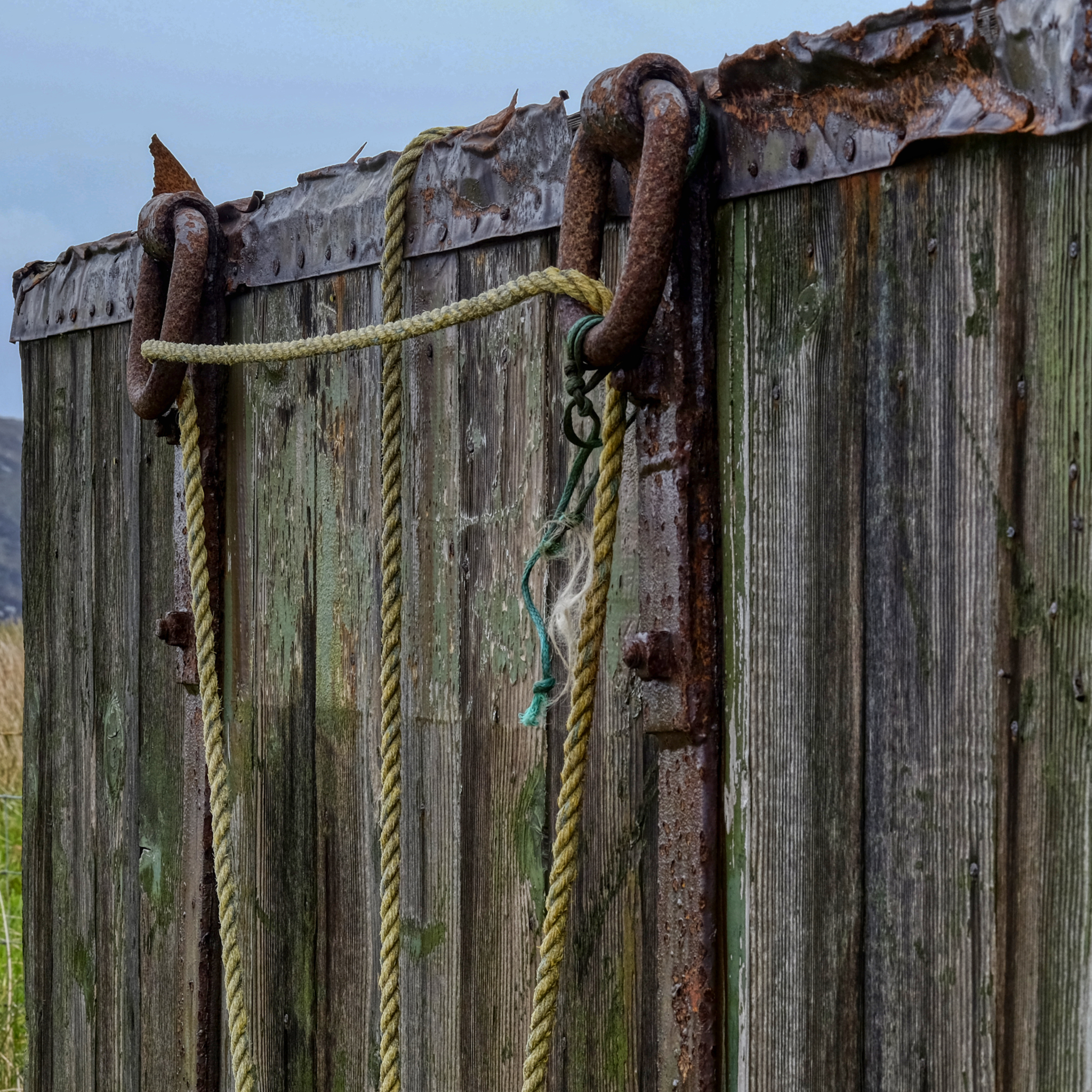 Leftover signs of fishermen long gone.
Leftover signs of fishermen long gone.
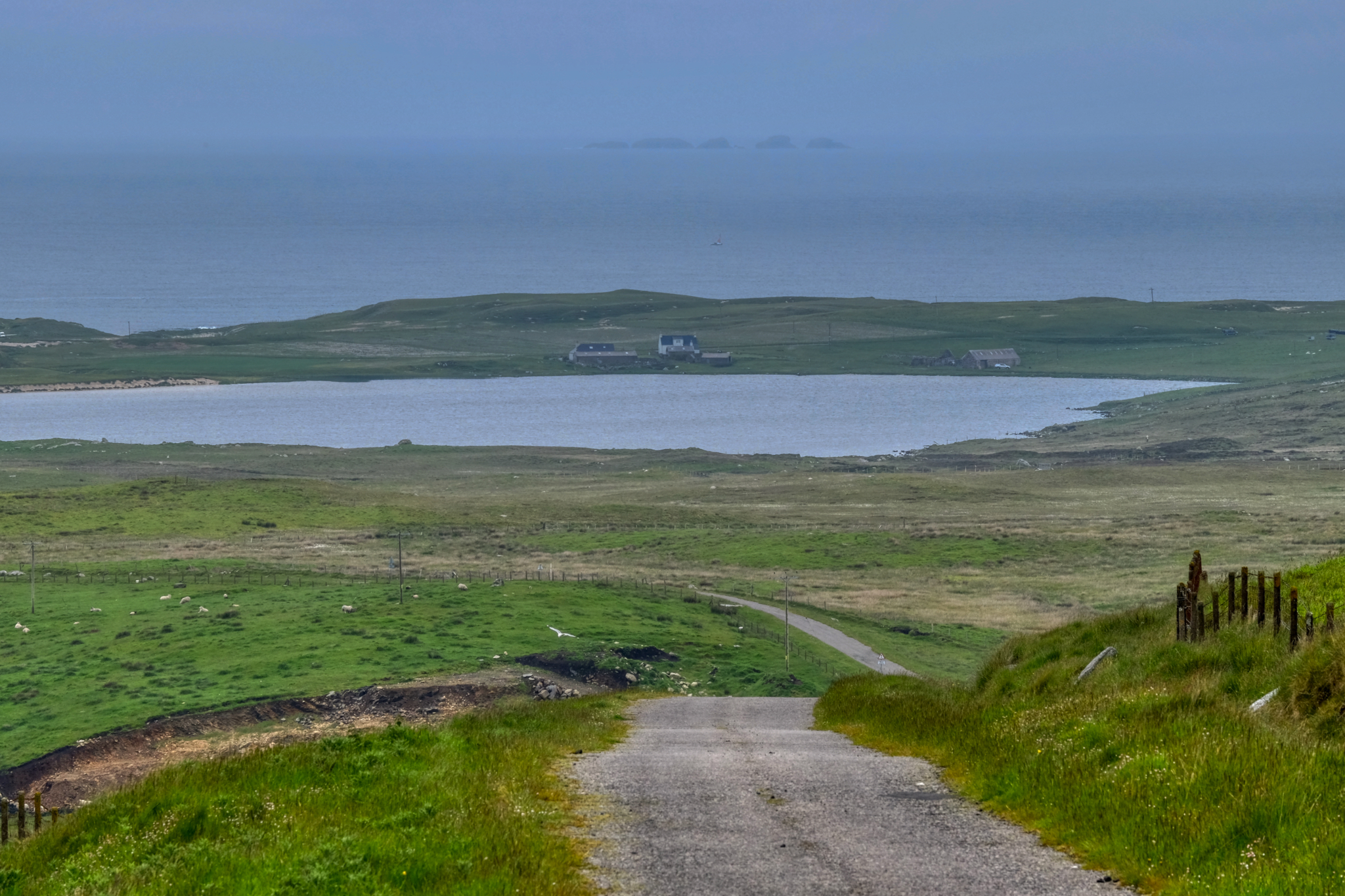 Off we went in the morning mist on the tiny roads . . .
Off we went in the morning mist on the tiny roads . . .
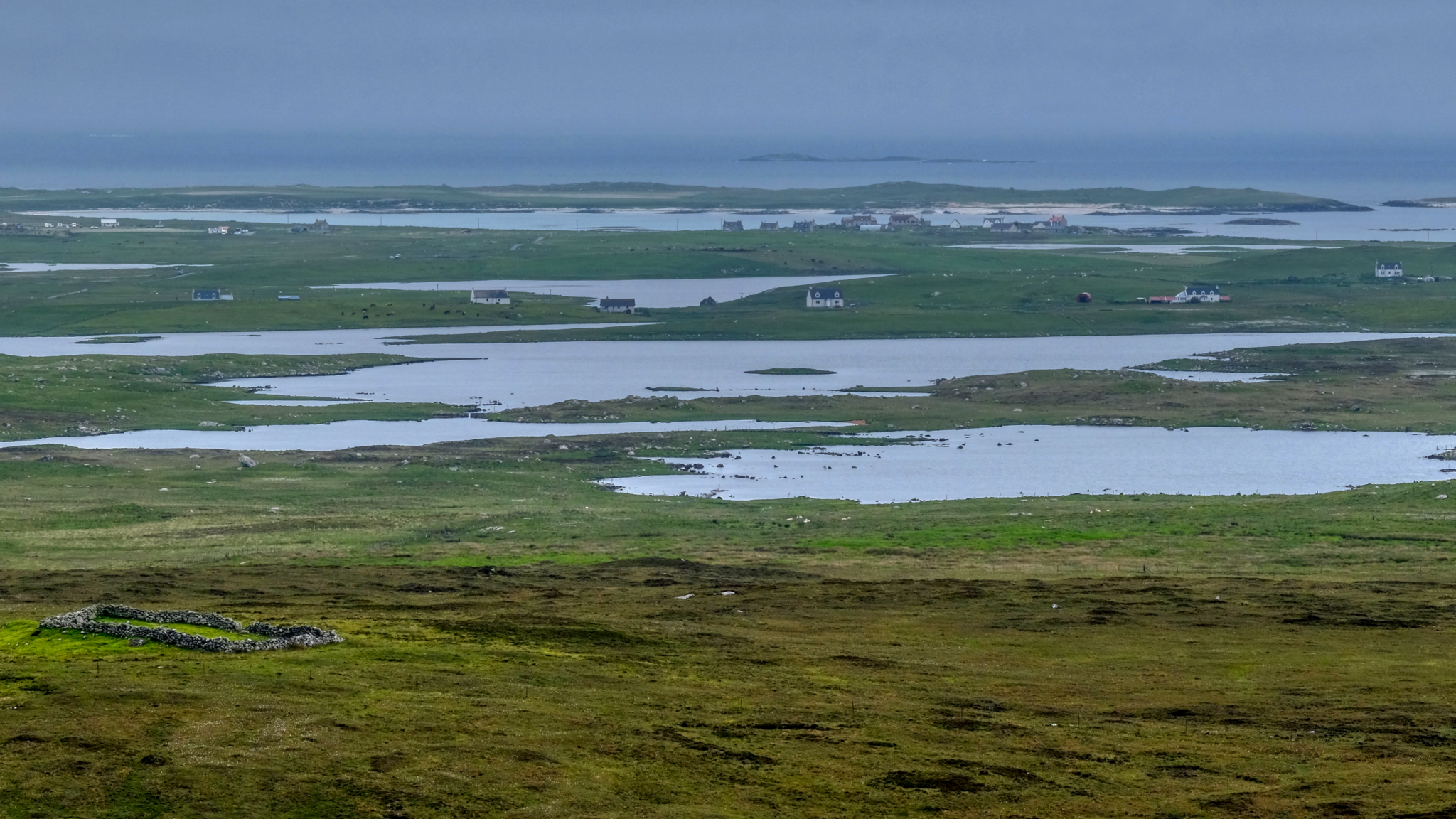 A most unusual landscape. I have never seen anything like it. Fantastically beautiful. I always have a compunction to think I would love to live in one of those houses . . . but stop myself by thinking there would be nothing for me to do there.
A most unusual landscape. I have never seen anything like it. Fantastically beautiful. I always have a compunction to think I would love to live in one of those houses . . . but stop myself by thinking there would be nothing for me to do there.
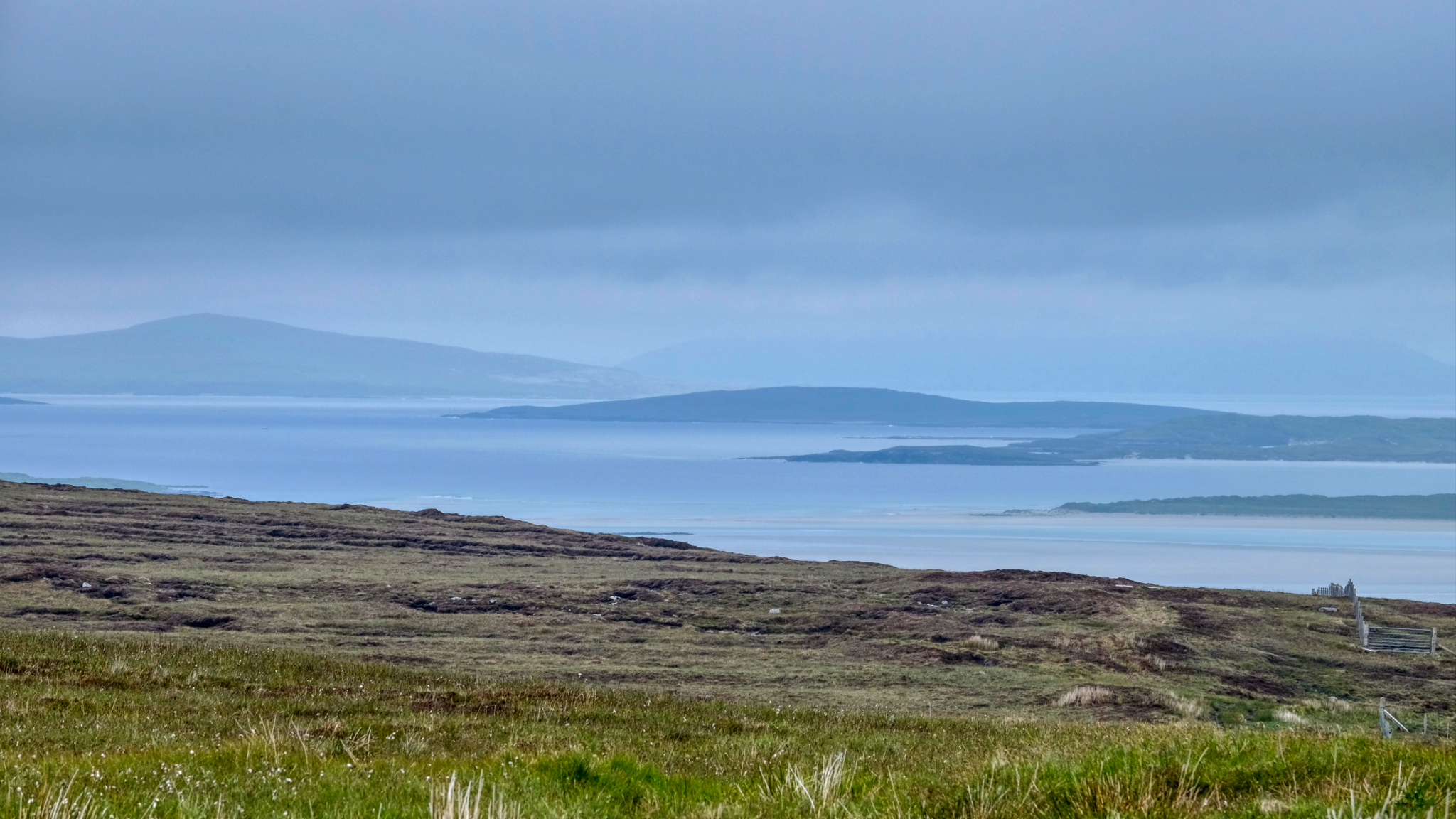 We learned there was a good restaurant out in these soggywet landscapes.
We learned there was a good restaurant out in these soggywet landscapes.
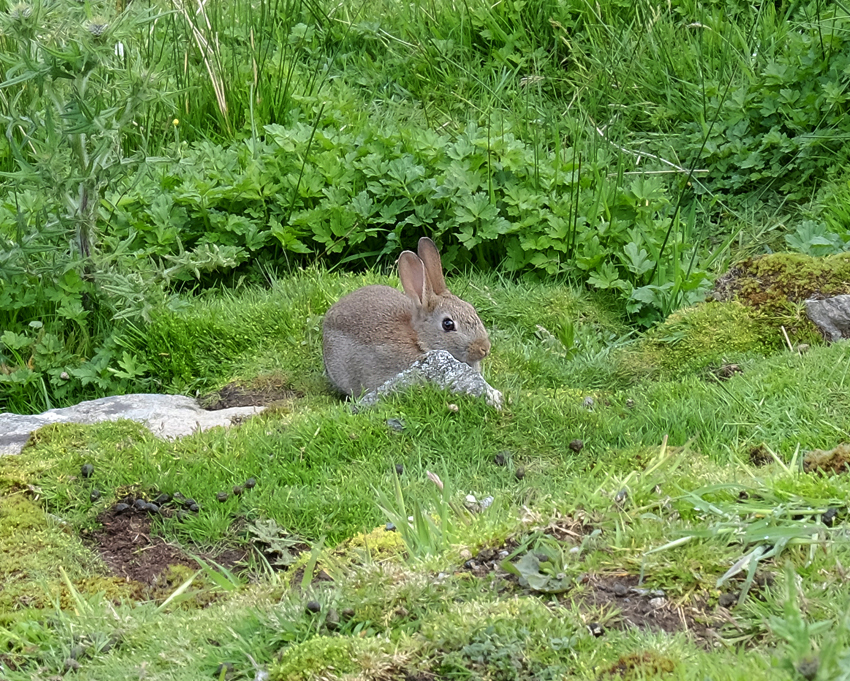 More Hebridean wildlife!
More Hebridean wildlife!
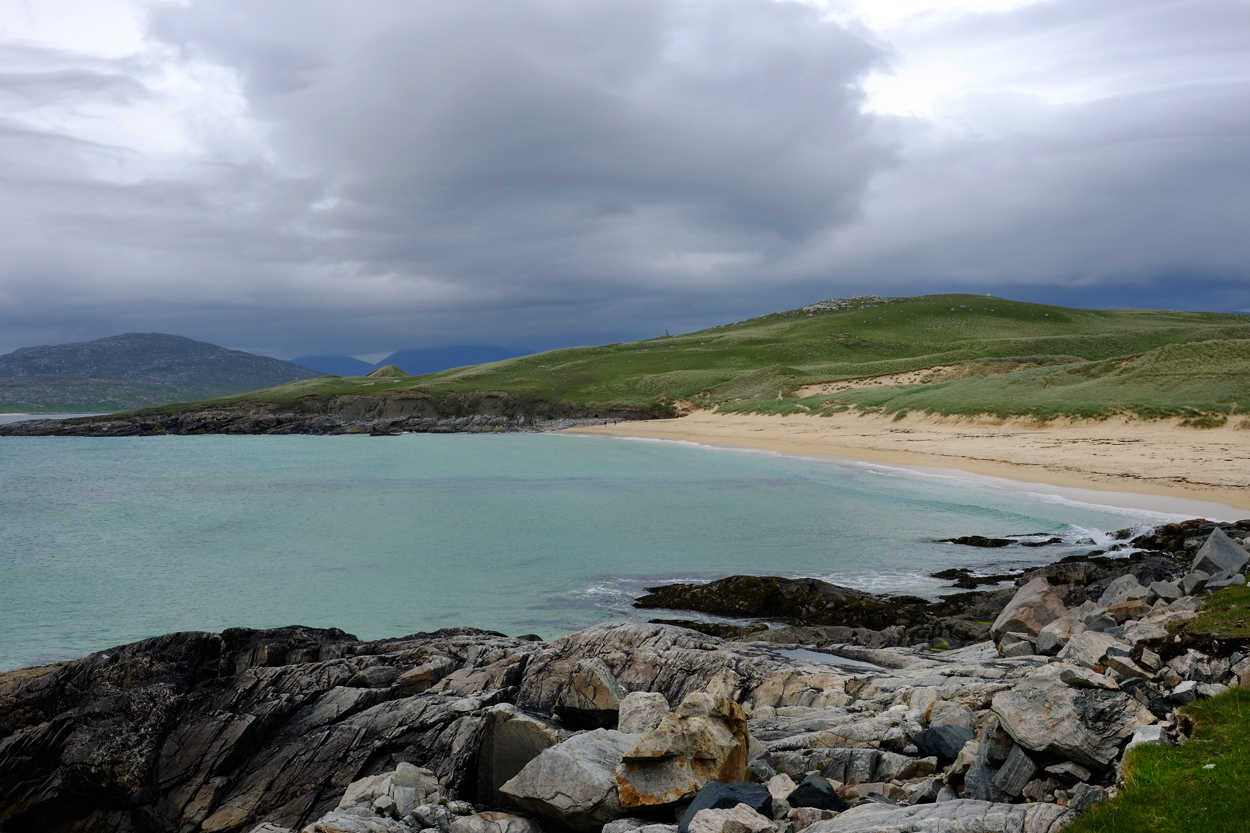 And here and there, around a bend, a sudden, almost tropical, turquoise sea and white sandy beach. Marvelous.
And here and there, around a bend, a sudden, almost tropical, turquoise sea and white sandy beach. Marvelous.
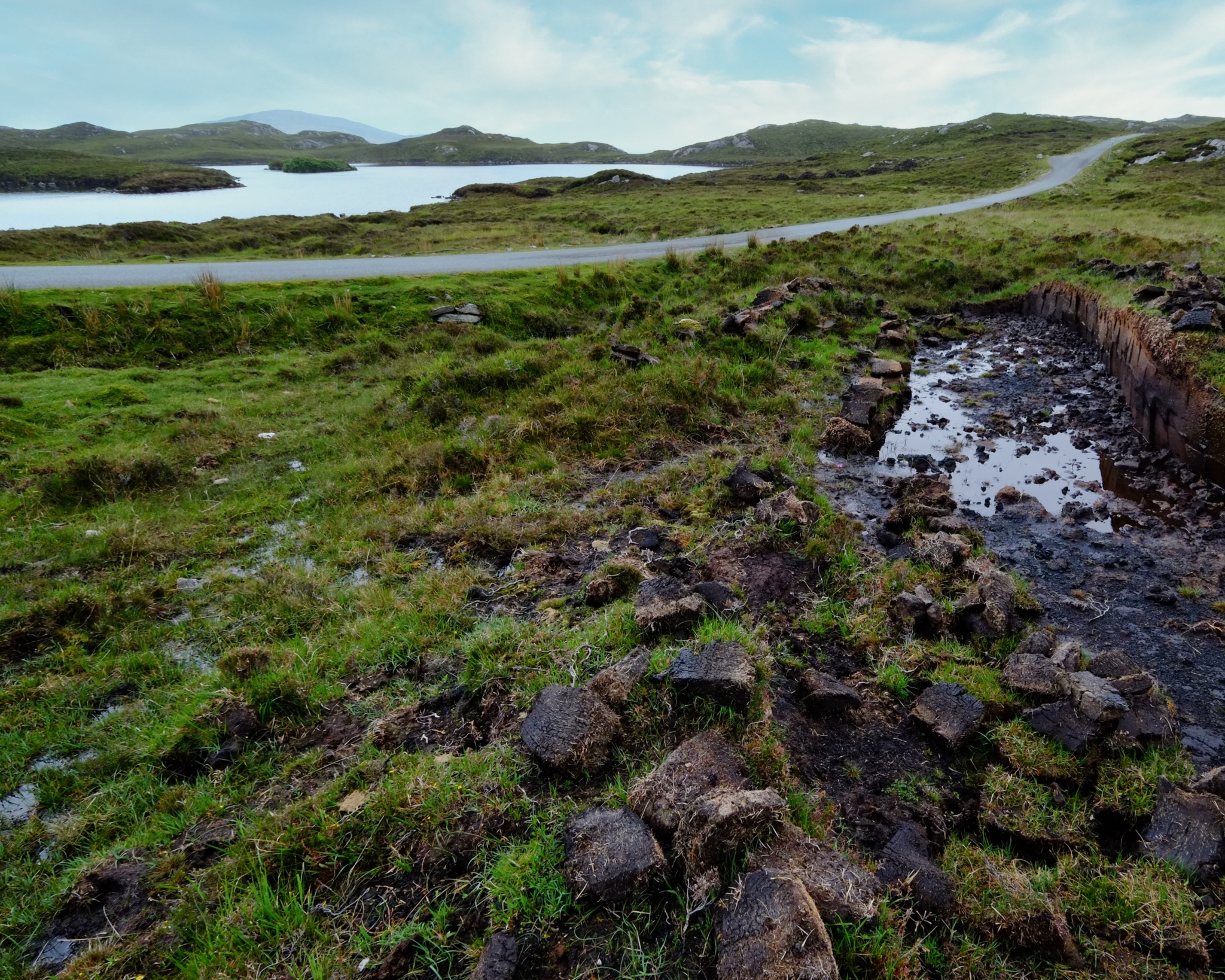 And around another bend a vale with deep cut peat harvesting in progress.
And around another bend a vale with deep cut peat harvesting in progress.
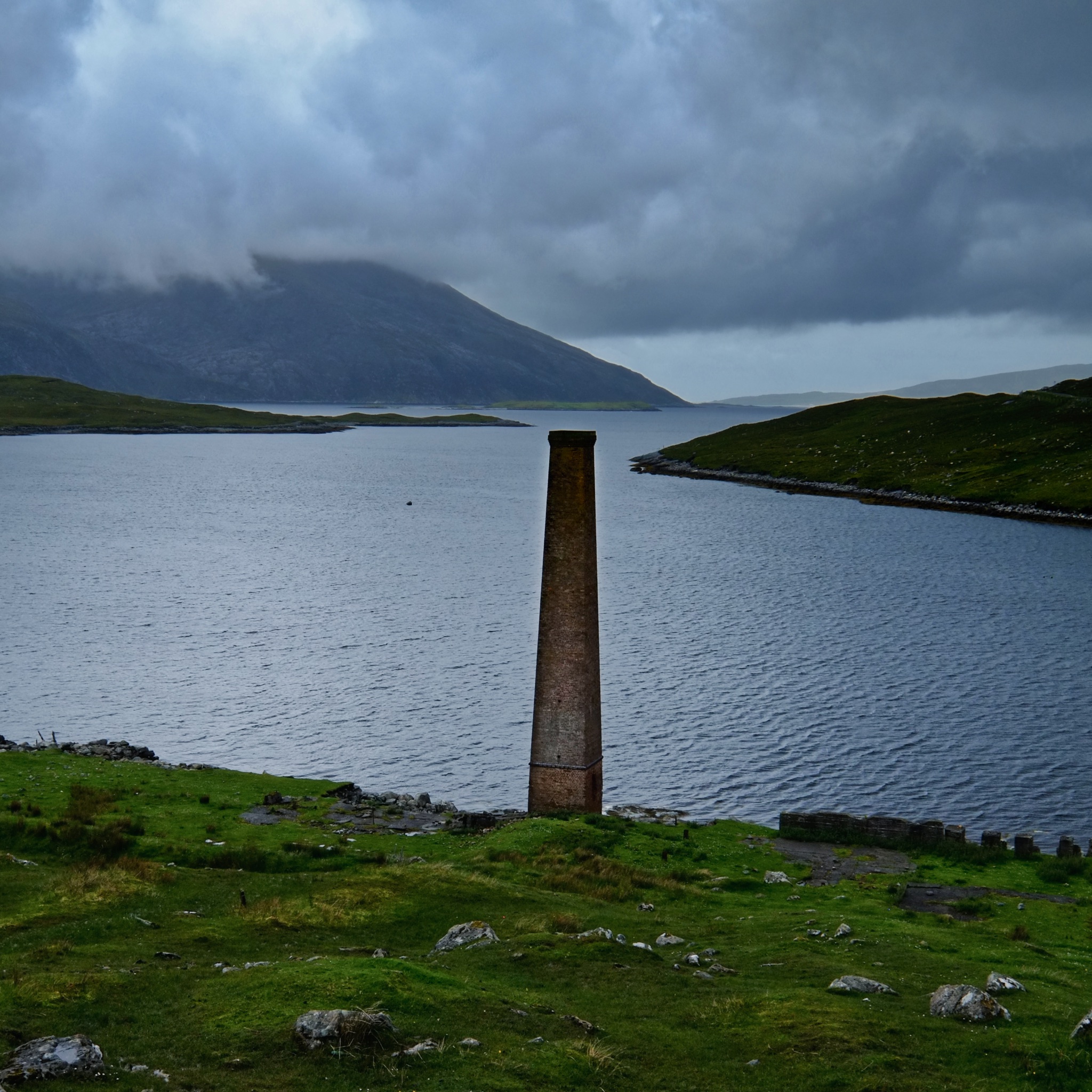 A tall smokestack . . . a monument to some previous industrial endeavor . . . all the way out here.
A tall smokestack . . . a monument to some previous industrial endeavor . . . all the way out here.
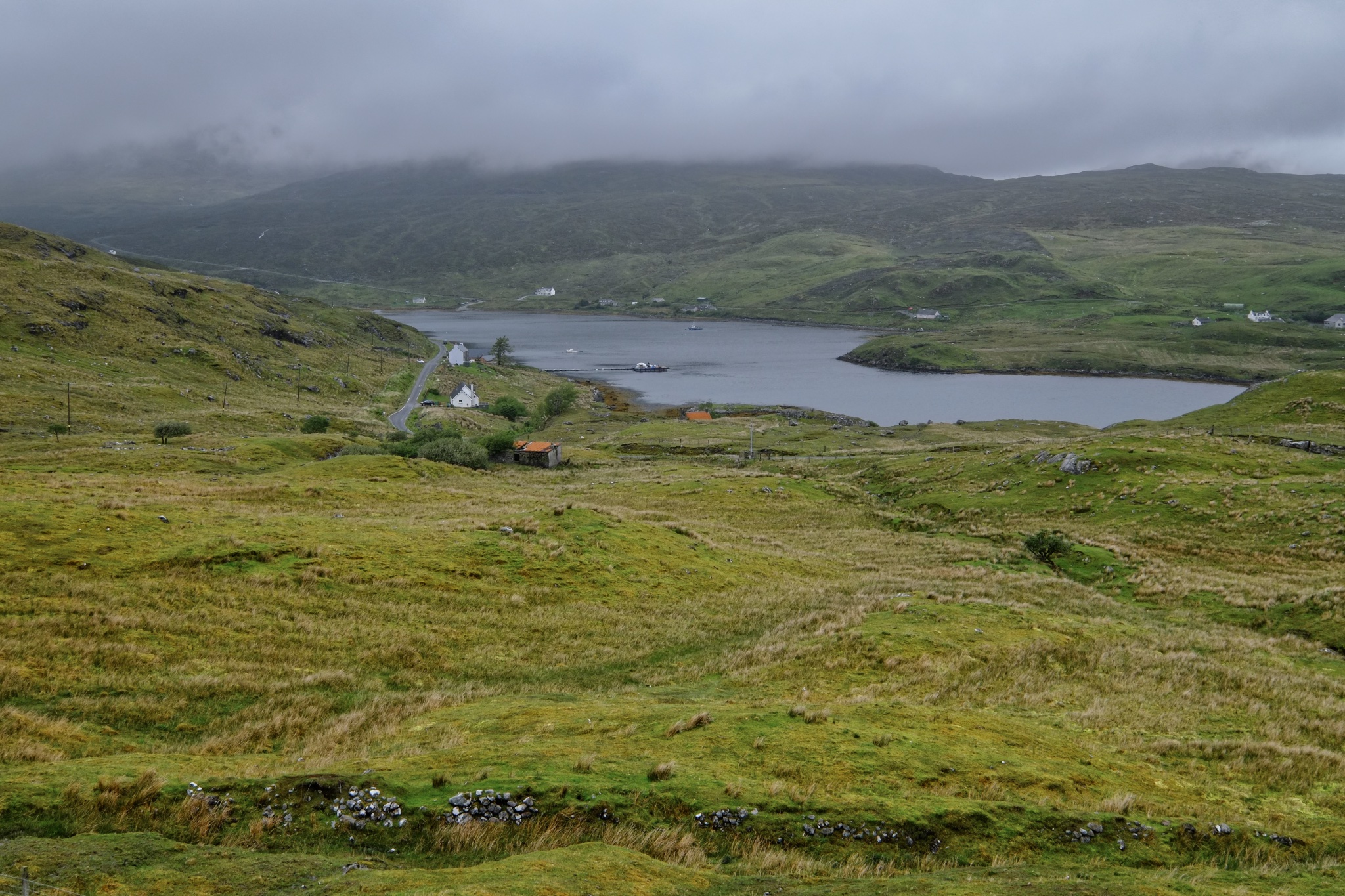 Driving the single track road in and out of the strange hills . . . always a new view . . . sometimes of a narrow bay dotted with small houses, a pier, and a fishing boat.
Driving the single track road in and out of the strange hills . . . always a new view . . . sometimes of a narrow bay dotted with small houses, a pier, and a fishing boat.
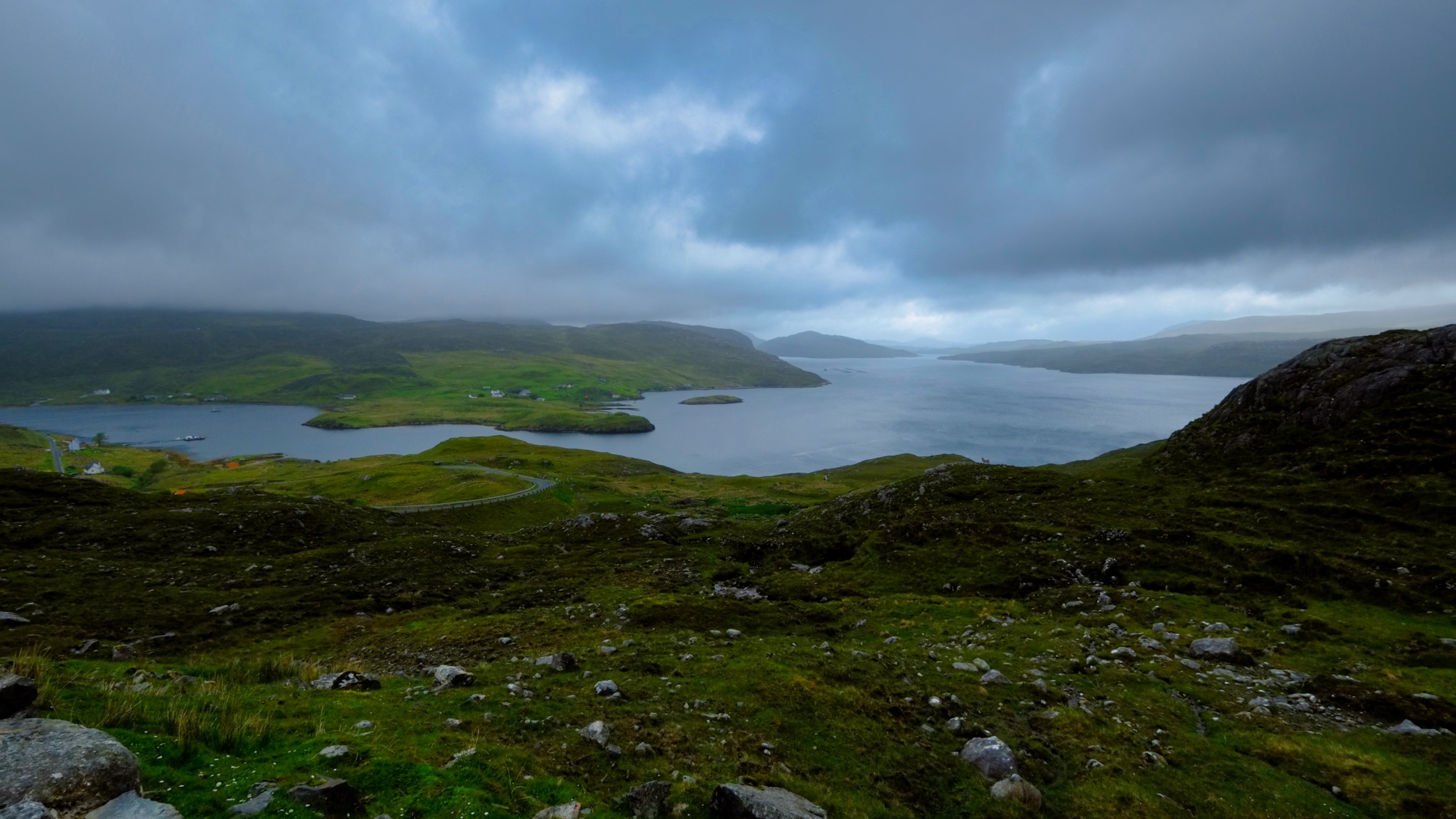 These views! The gloom!
These views! The gloom!
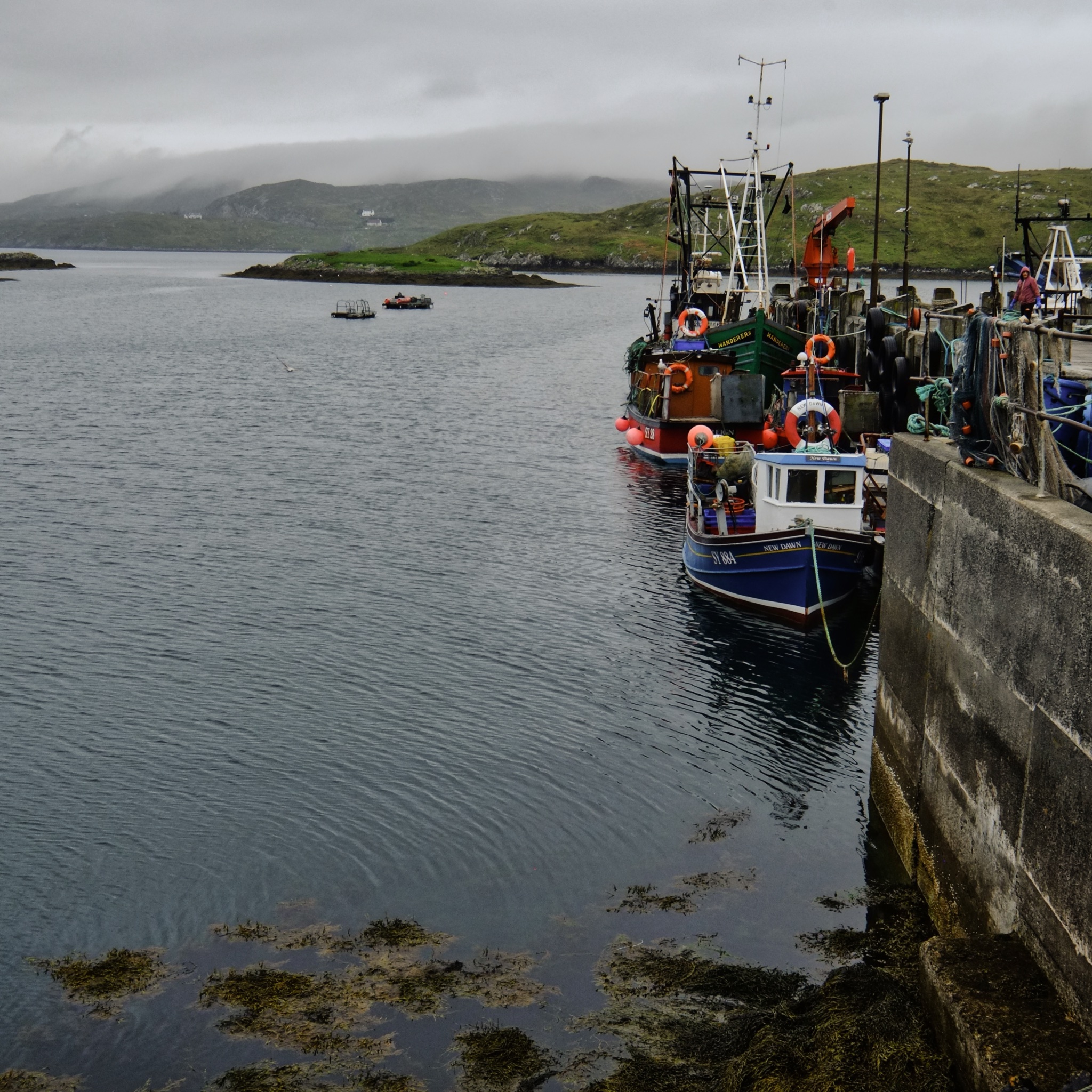 We rounded a bend in the road and arrived at a tiny fishing village, Scalpay.
We rounded a bend in the road and arrived at a tiny fishing village, Scalpay.
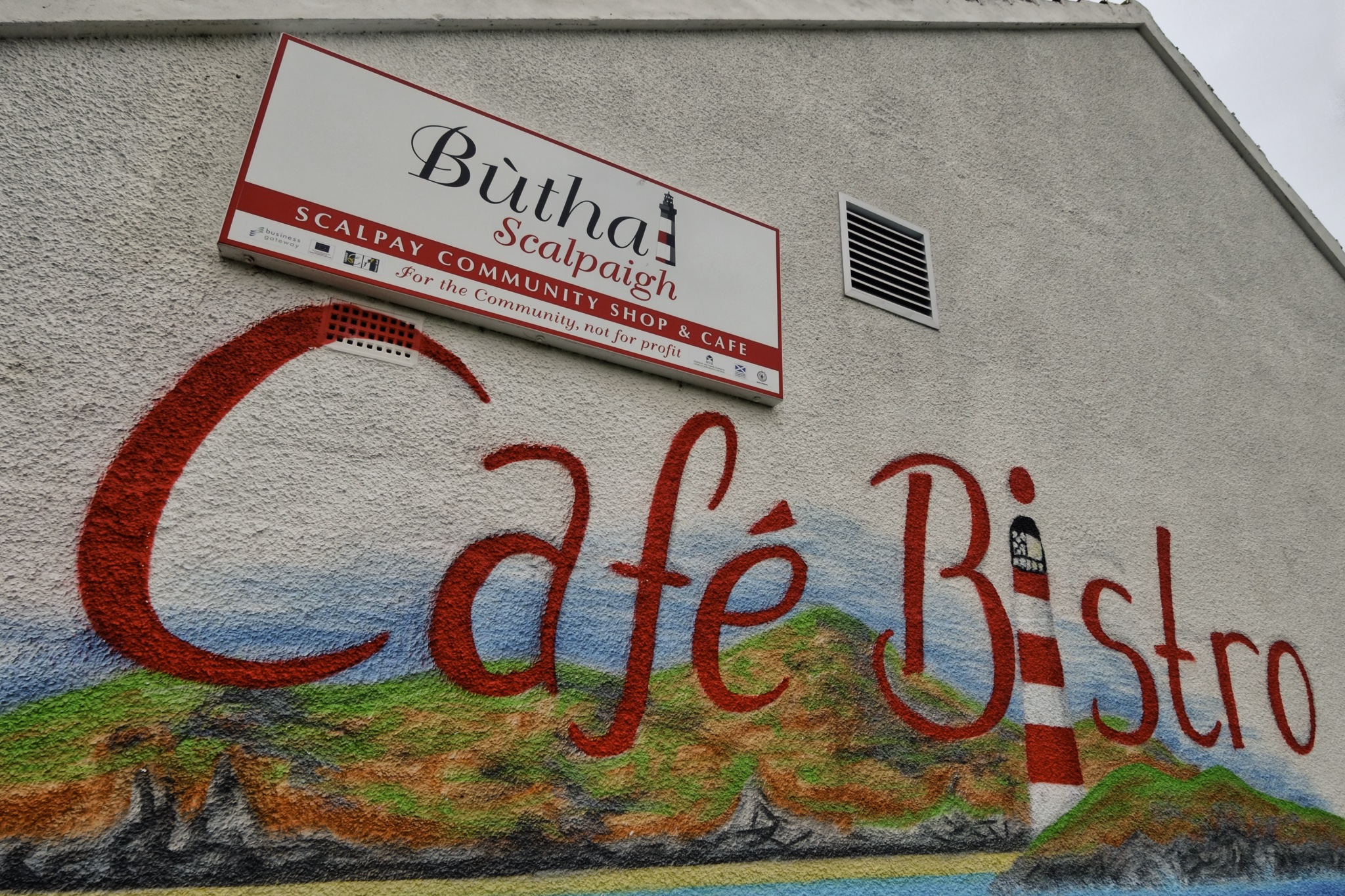
"The island used to have more than 10 shops over 30 years ago but due to lack of people and work, the last shop closed in 2007. There also used to be a salmon factory, which was a major local employer from 2001 until its closure in 2005. In the spring of 2009, local newspapers reported that the factory was to reopen as a net washing facility to support the local fish farming industry. In 2012, the Scalpay community bought and opened a community shop/café, Buth Scalpaigh." We had a delicious lunch here with friendly service . . , soup, rolls, and fried fish.
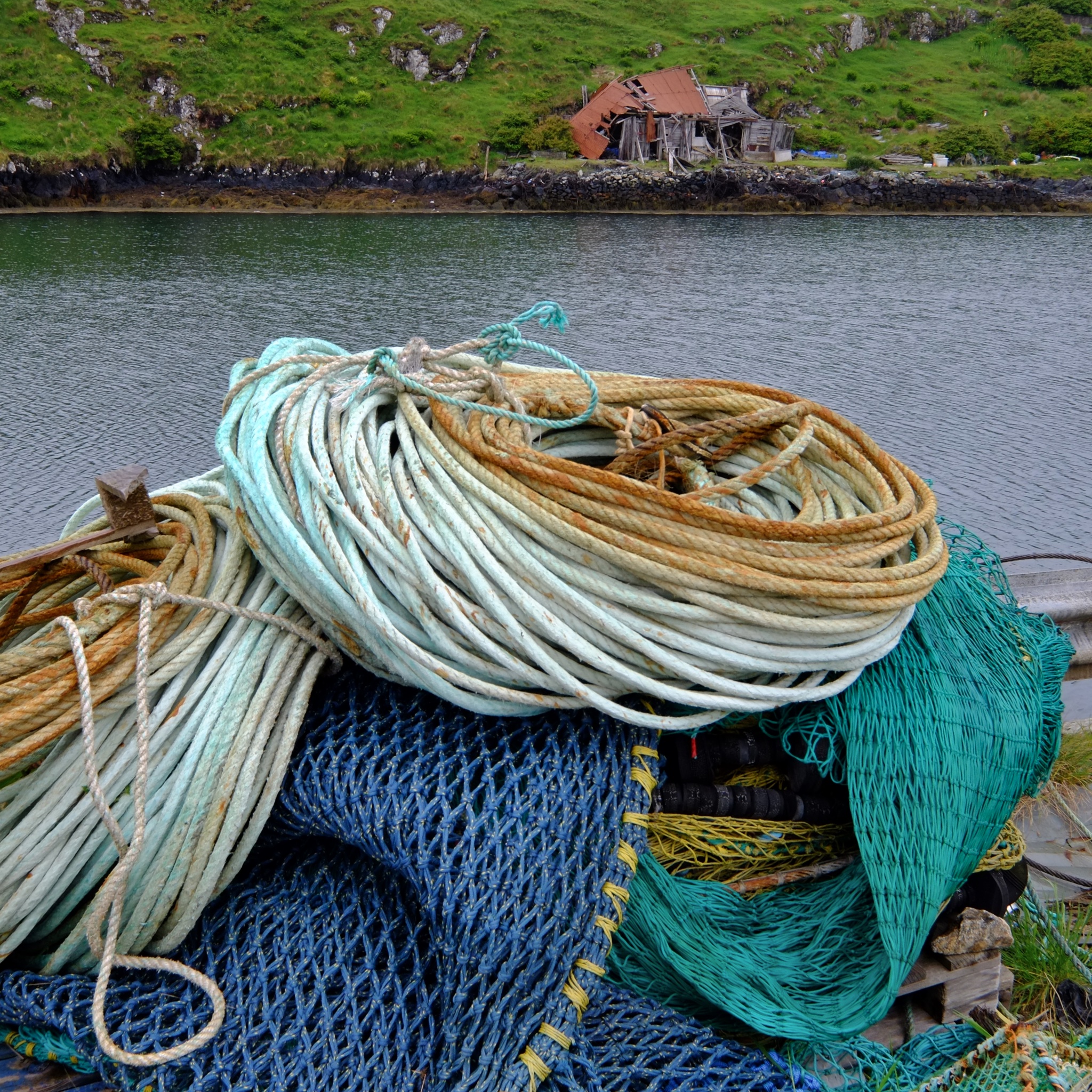 Some fishing activity survives these remote places along the craggy inlets of the Outer Hebrides.
Some fishing activity survives these remote places along the craggy inlets of the Outer Hebrides.
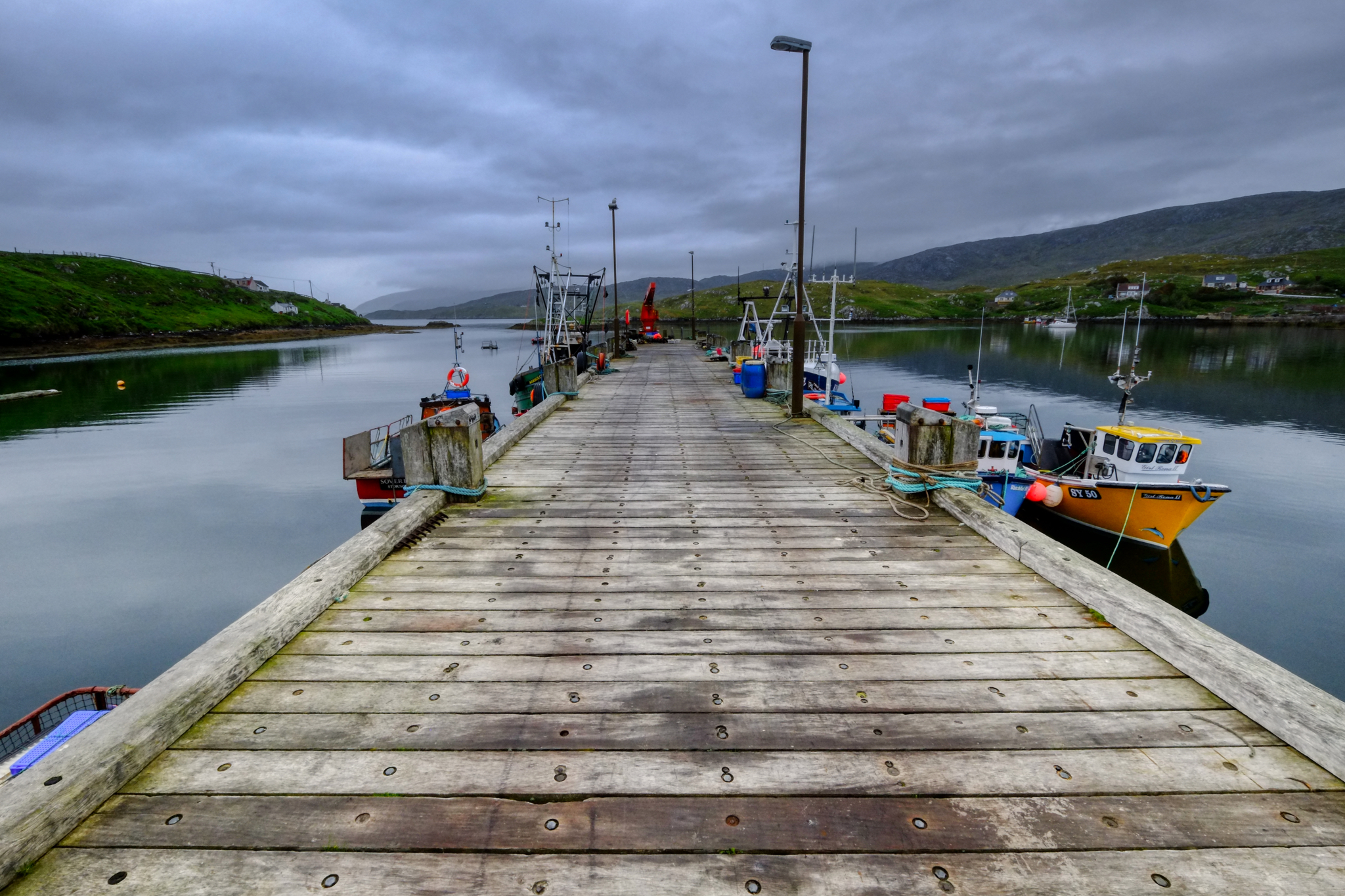 People have to eat and people have to make a living.
People have to eat and people have to make a living.
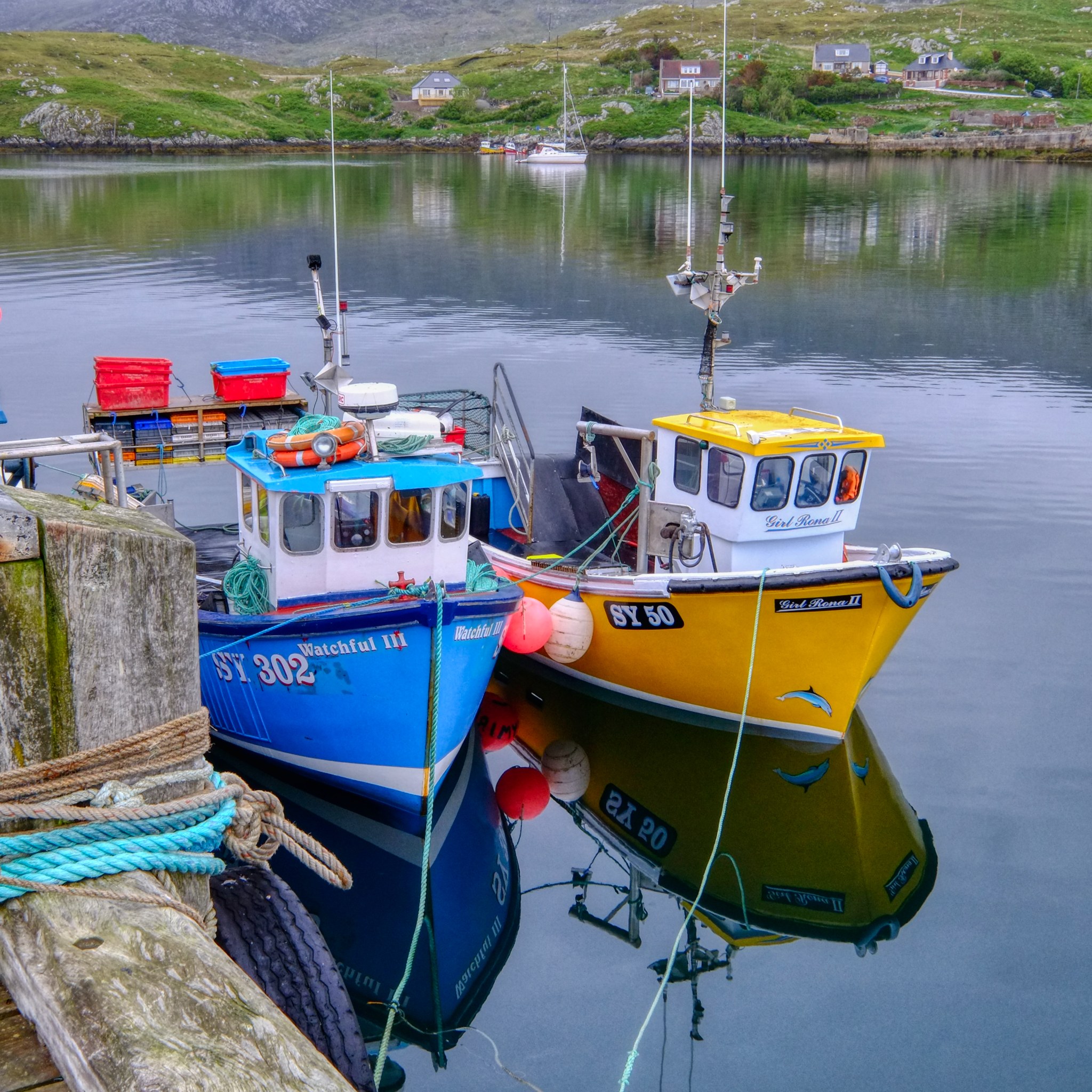 Picturesque little fishing boats.
Picturesque little fishing boats.
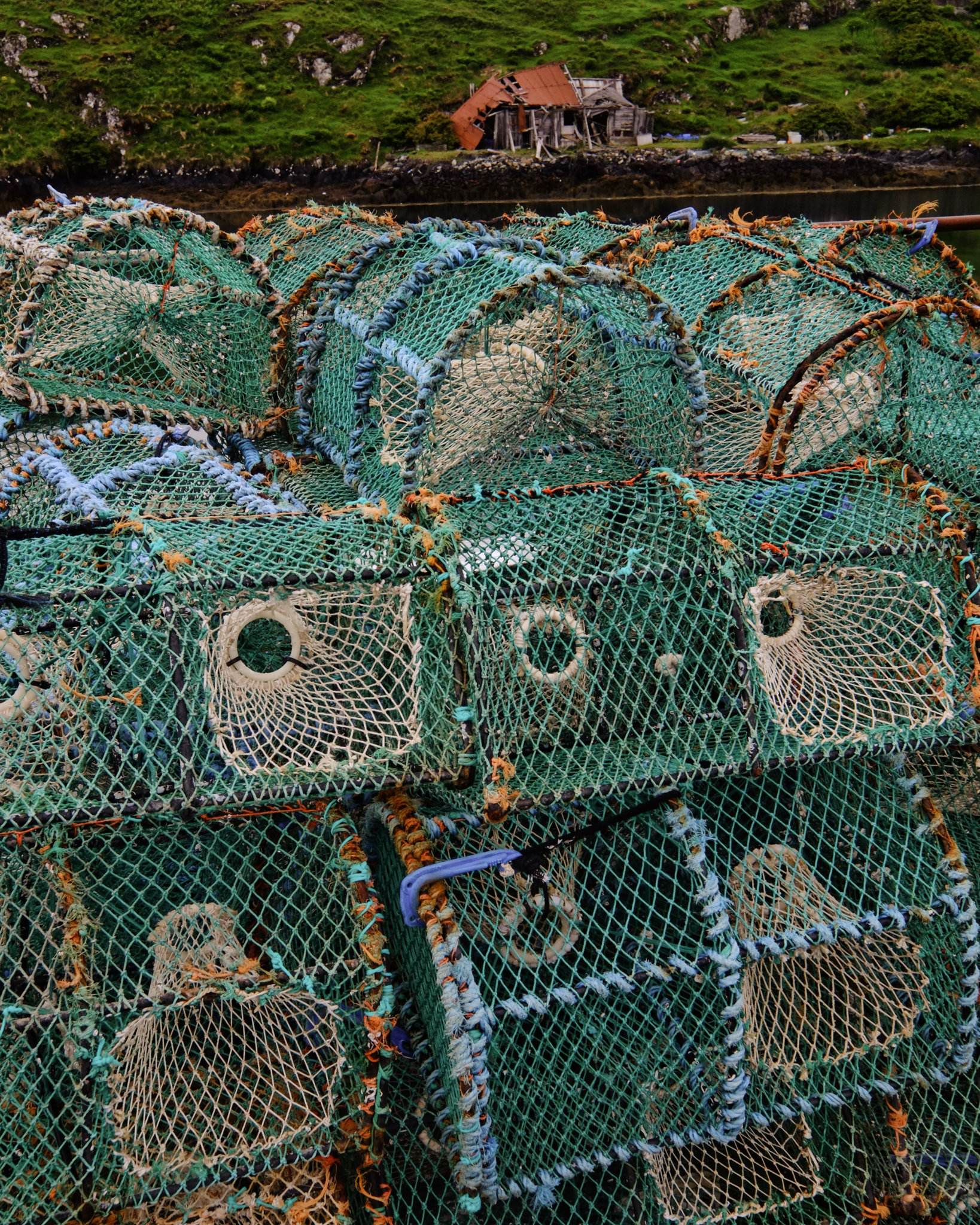 Crab or lobster pots . . .
Crab or lobster pots . . .
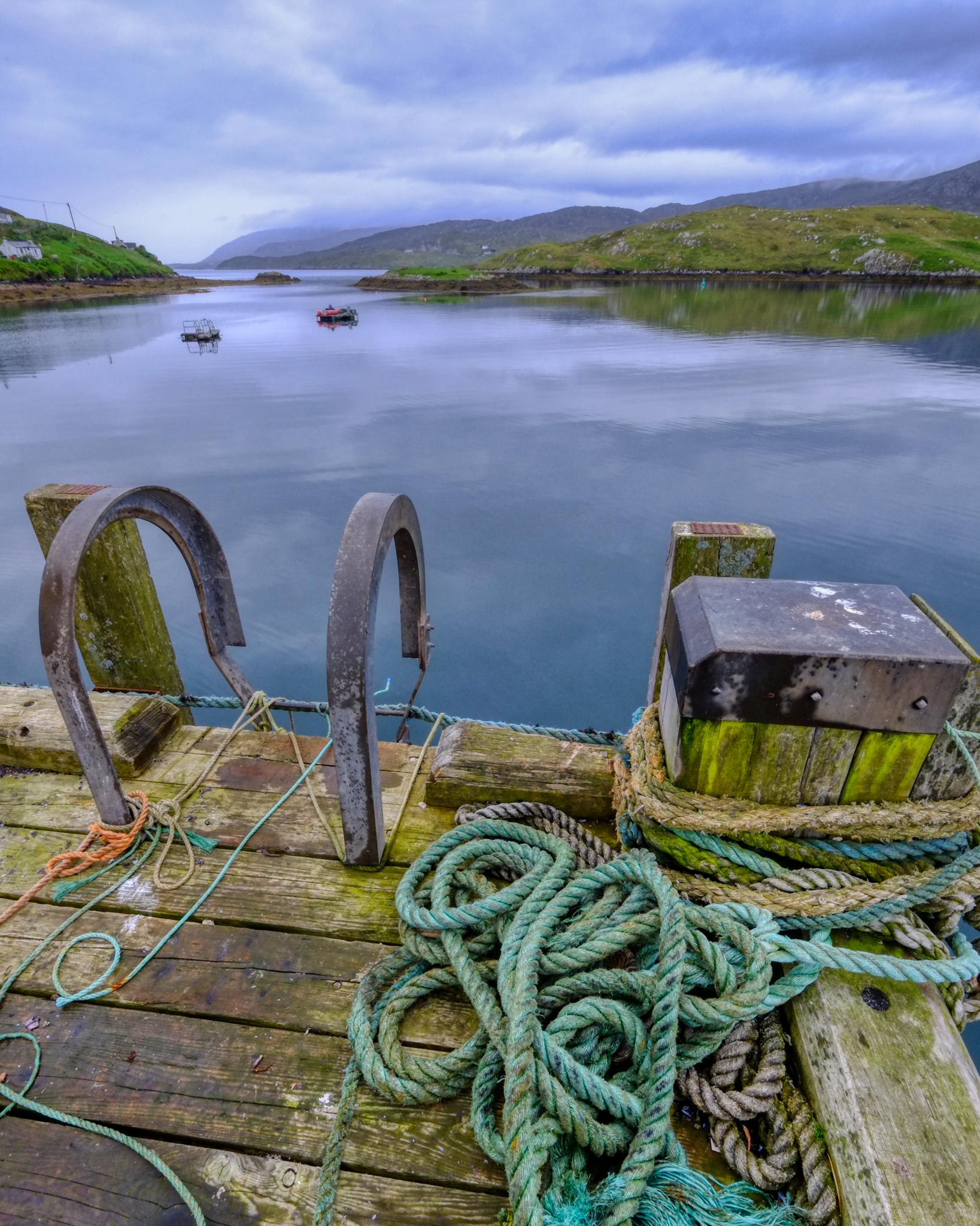 We drove North up into the Isles of Lewis and Harris.
We drove North up into the Isles of Lewis and Harris.
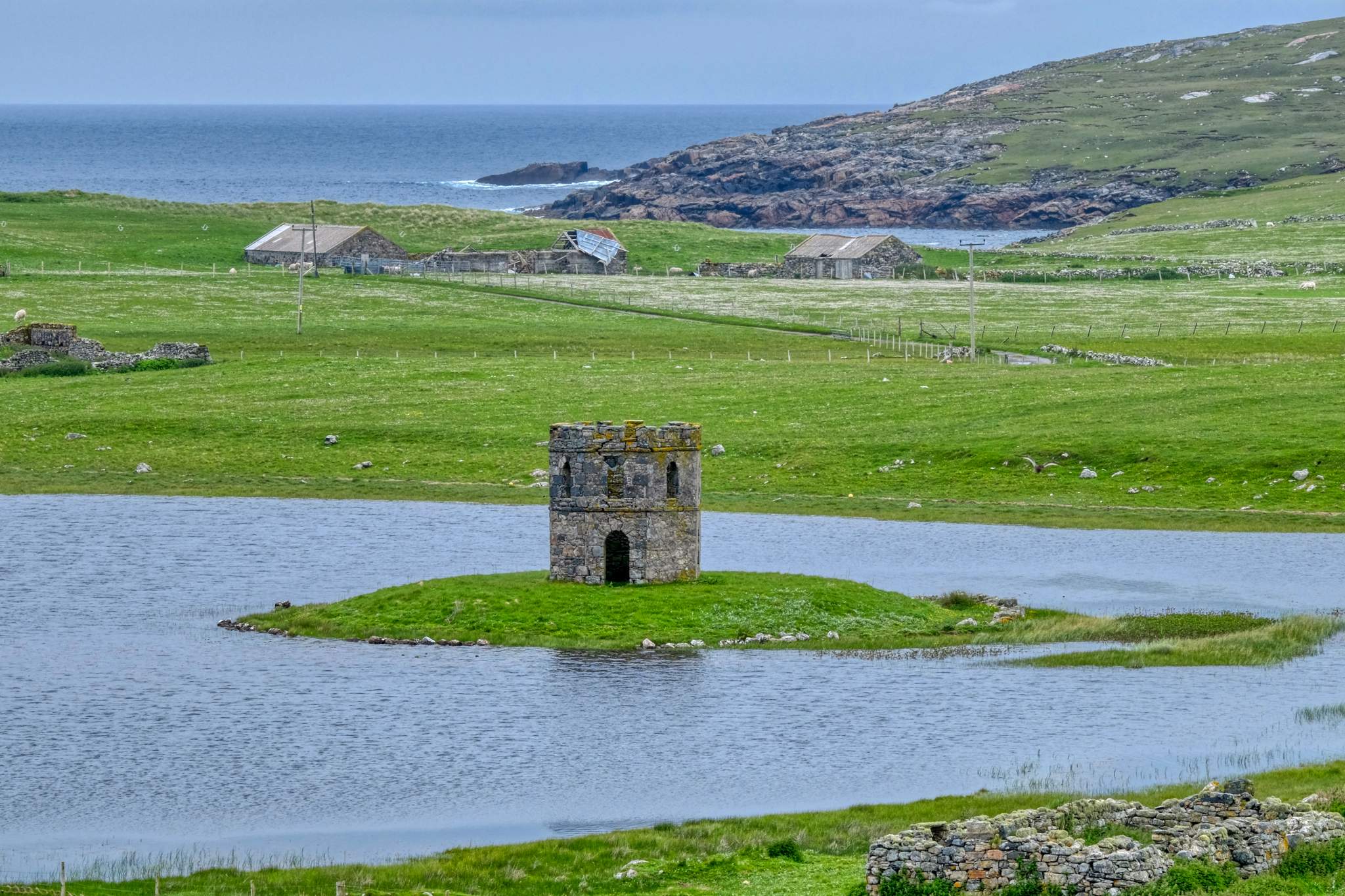 An old tower keep on a crofters place.
An old tower keep on a crofters place.
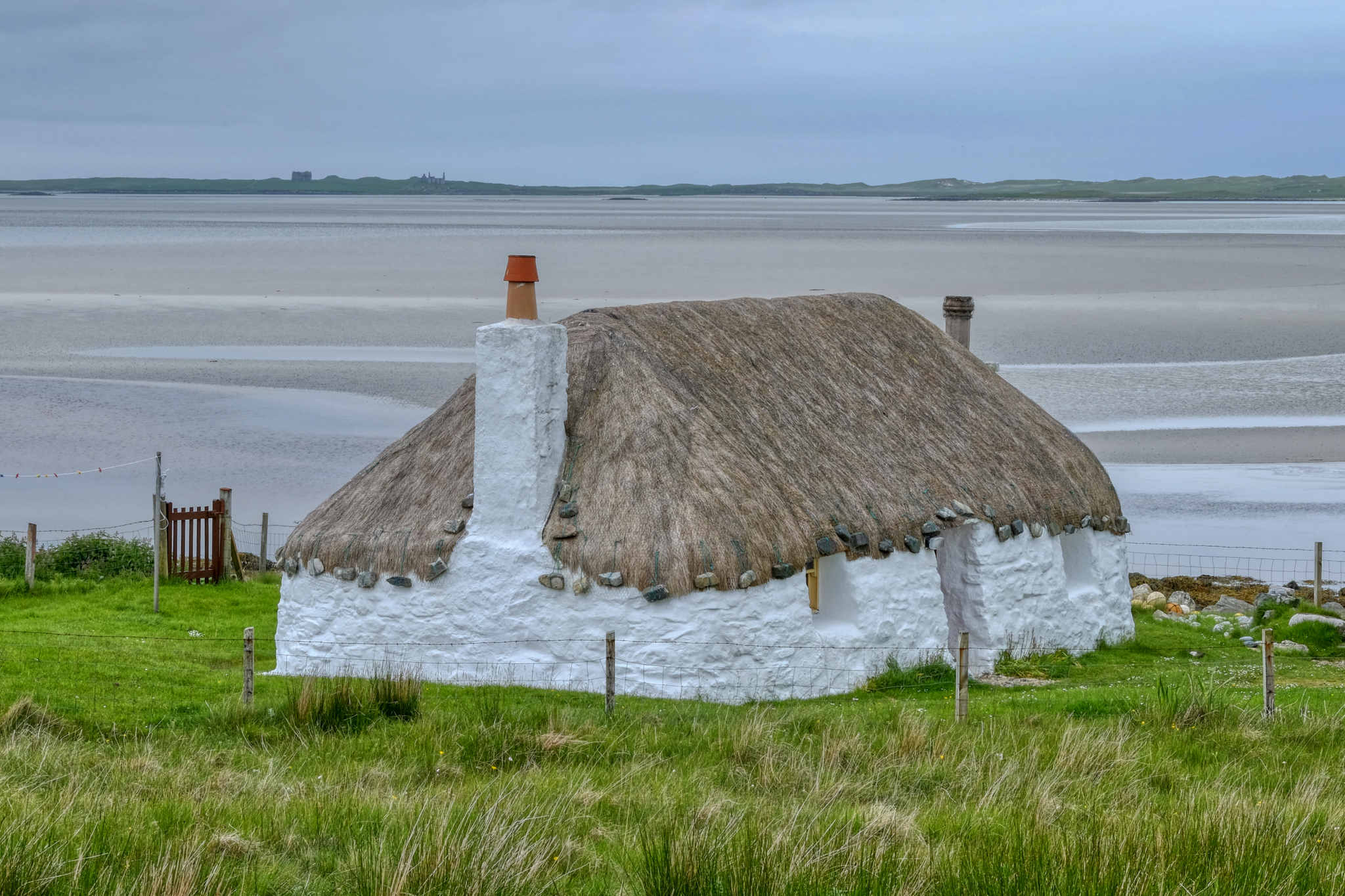 An old whitewash, thatched-roof cottage on the dandy bay. Charming.
An old whitewash, thatched-roof cottage on the dandy bay. Charming.
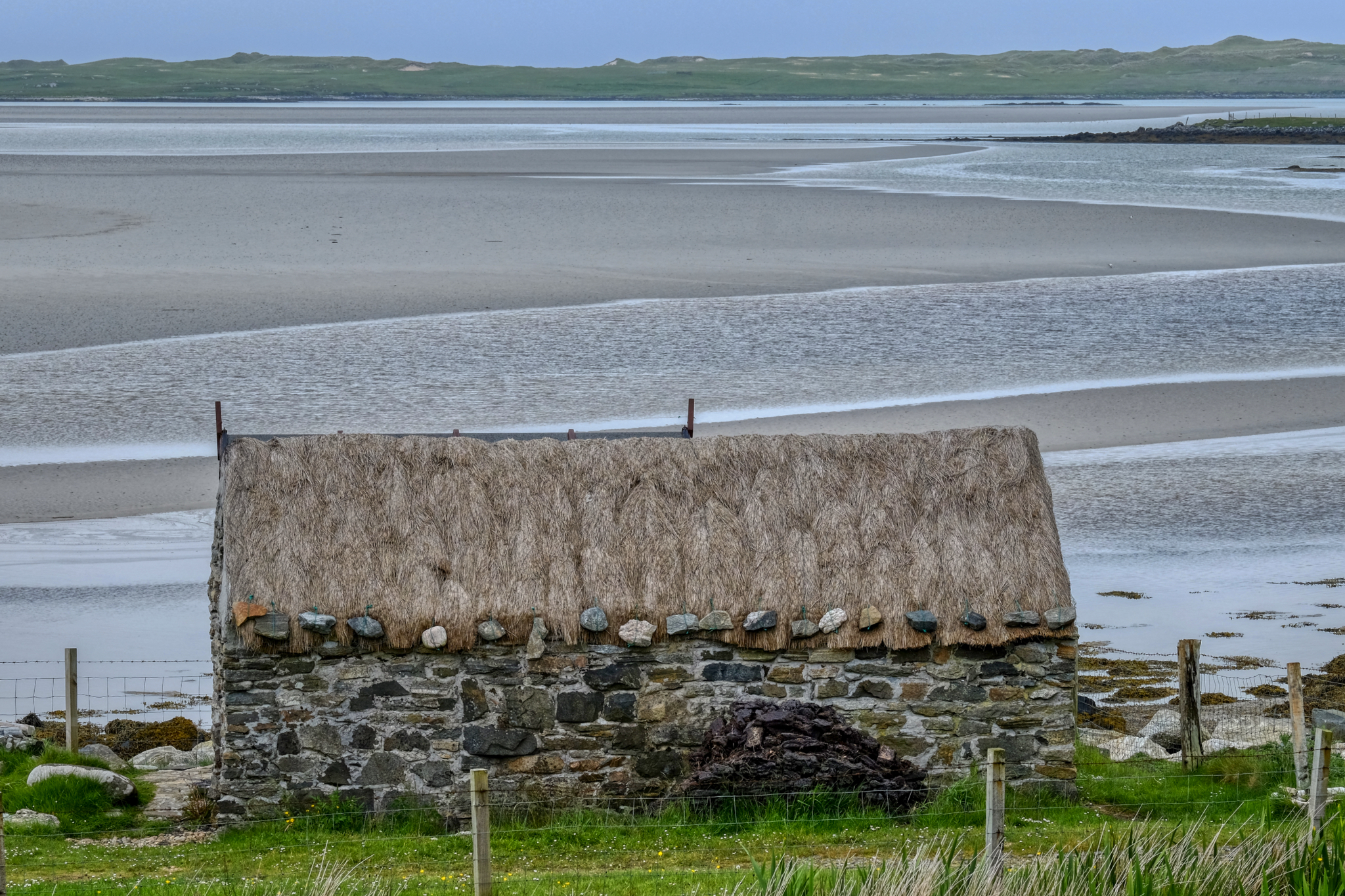 A lovely old crofter's stone barn.
A lovely old crofter's stone barn.
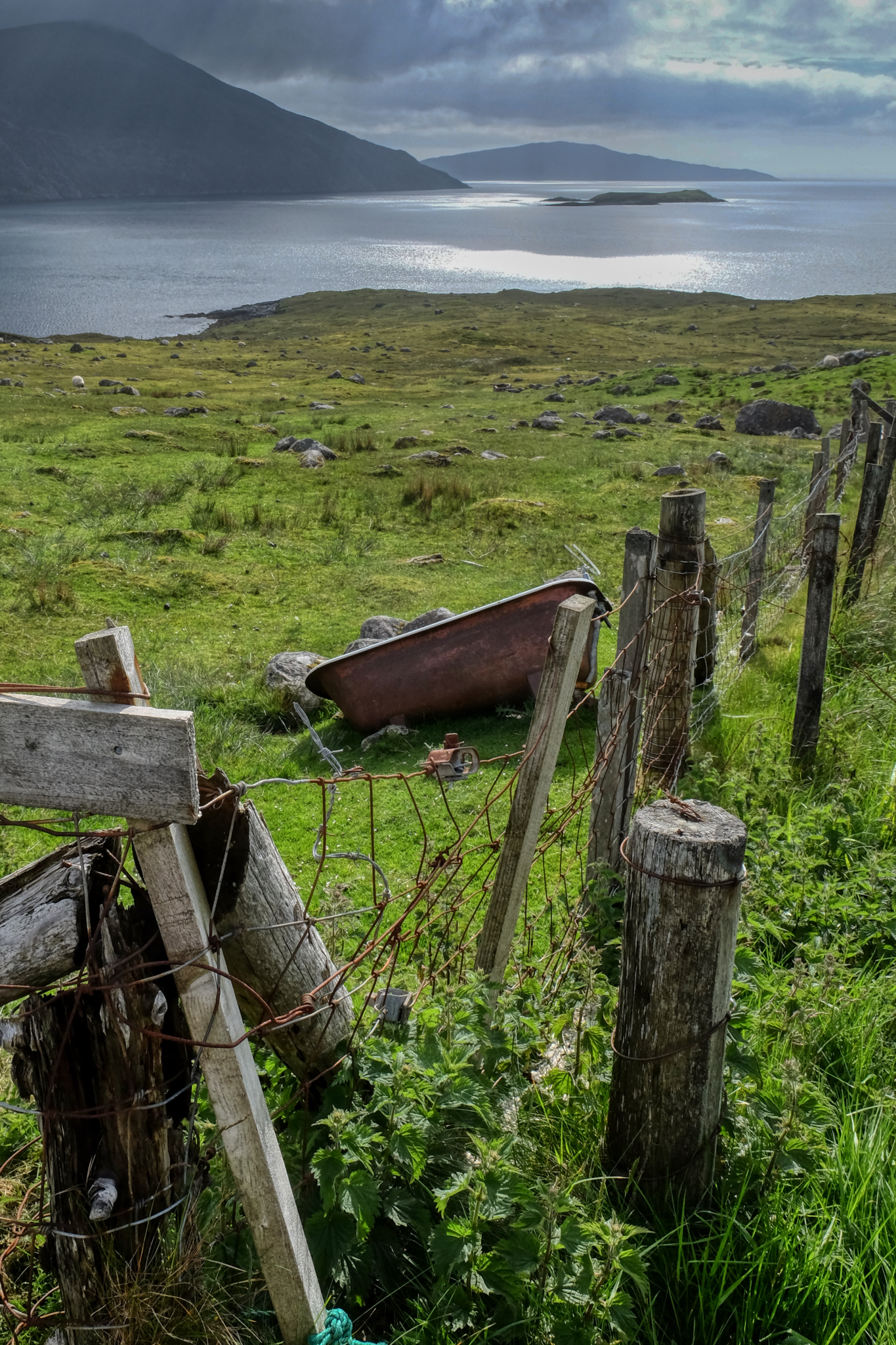 The views! Literally around every bend in the road . . . so many stunning landscapes!
The views! Literally around every bend in the road . . . so many stunning landscapes!
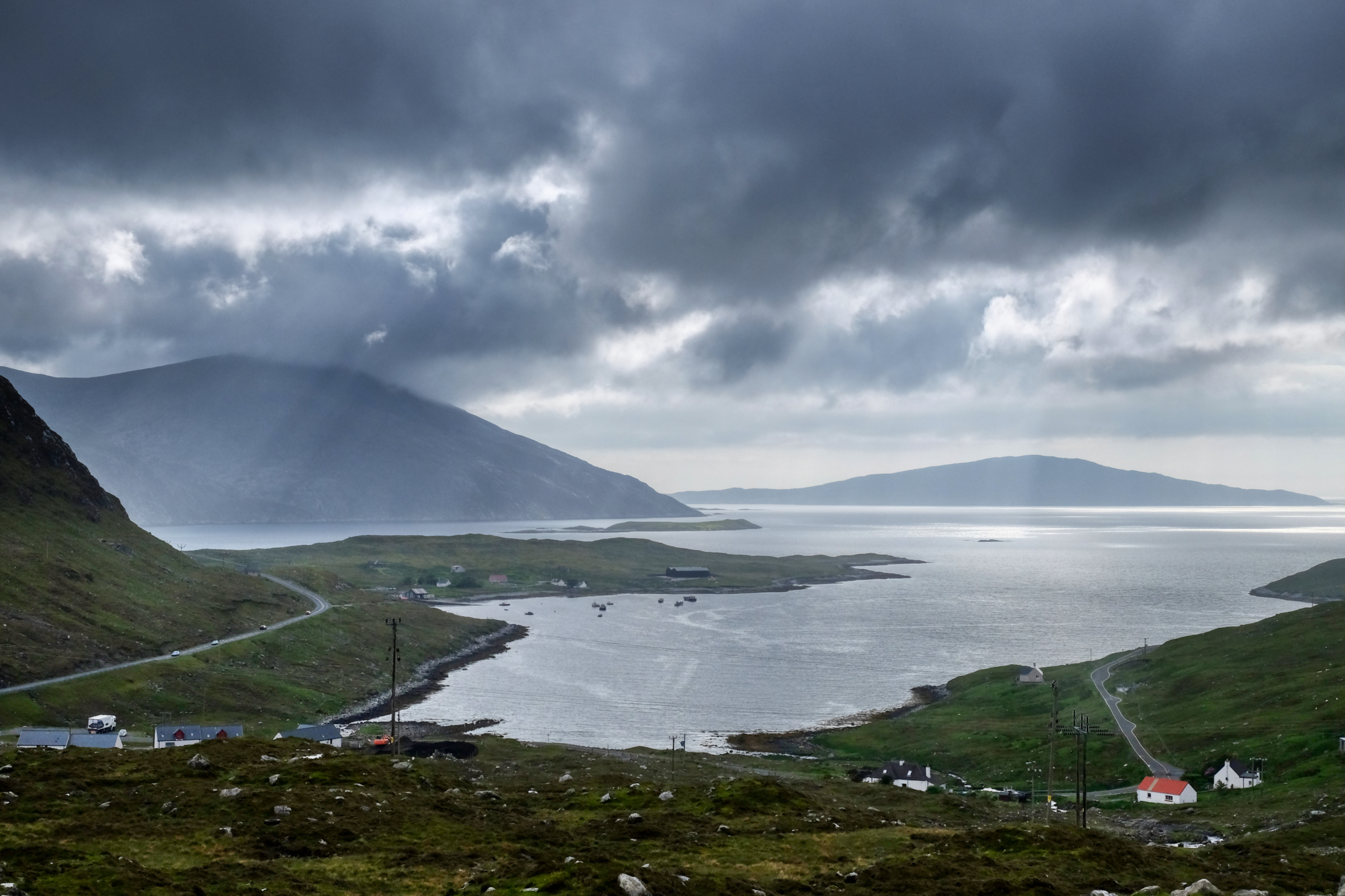 Mountains, light, sea, sky.
Mountains, light, sea, sky.
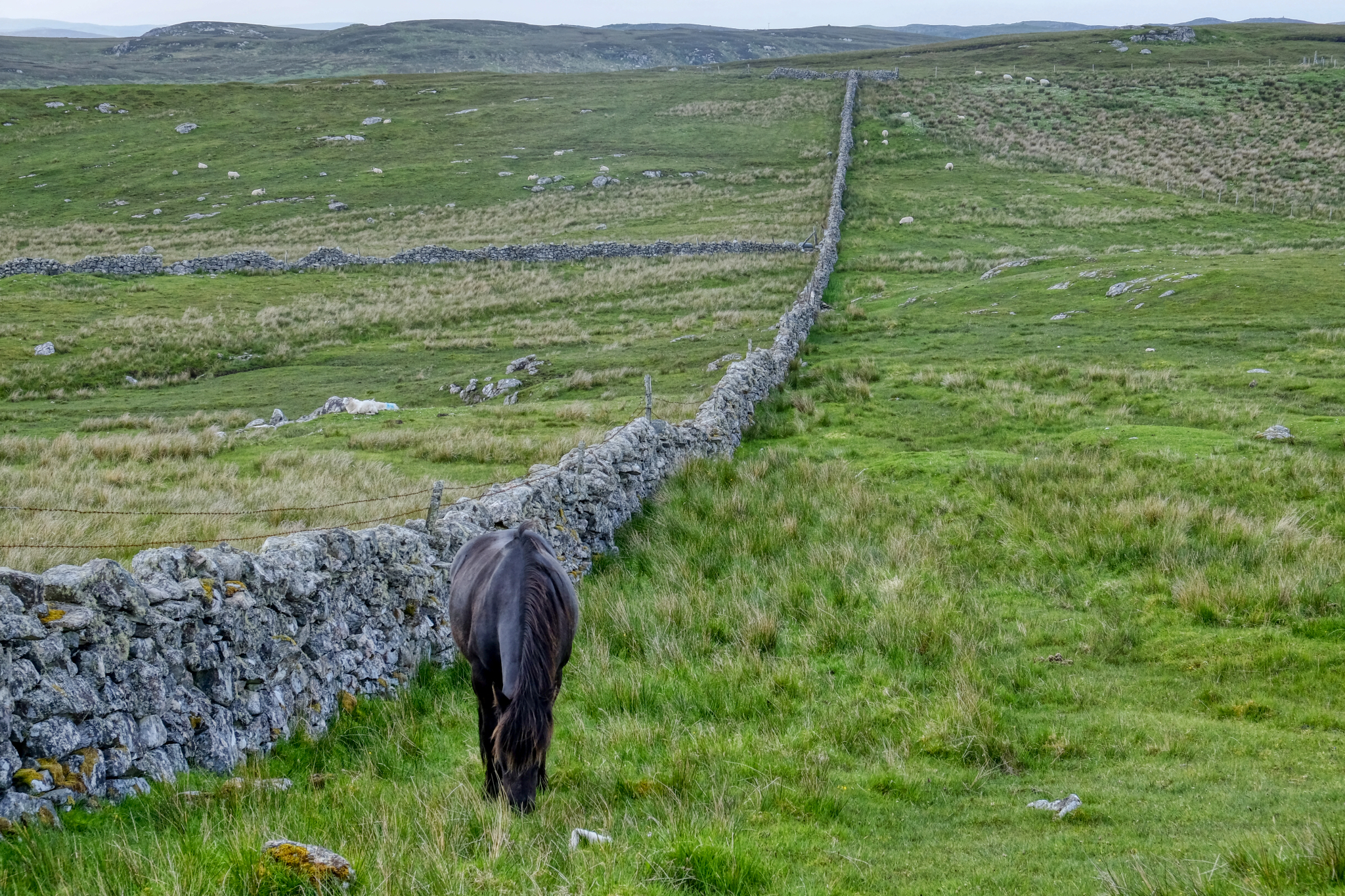 We diverted west, following a sign to Gearrannan Black House Village.
We diverted west, following a sign to Gearrannan Black House Village.
Gearrannan Black House Village
The Black House Village was a well-preserved museum of old thatched stone houses.
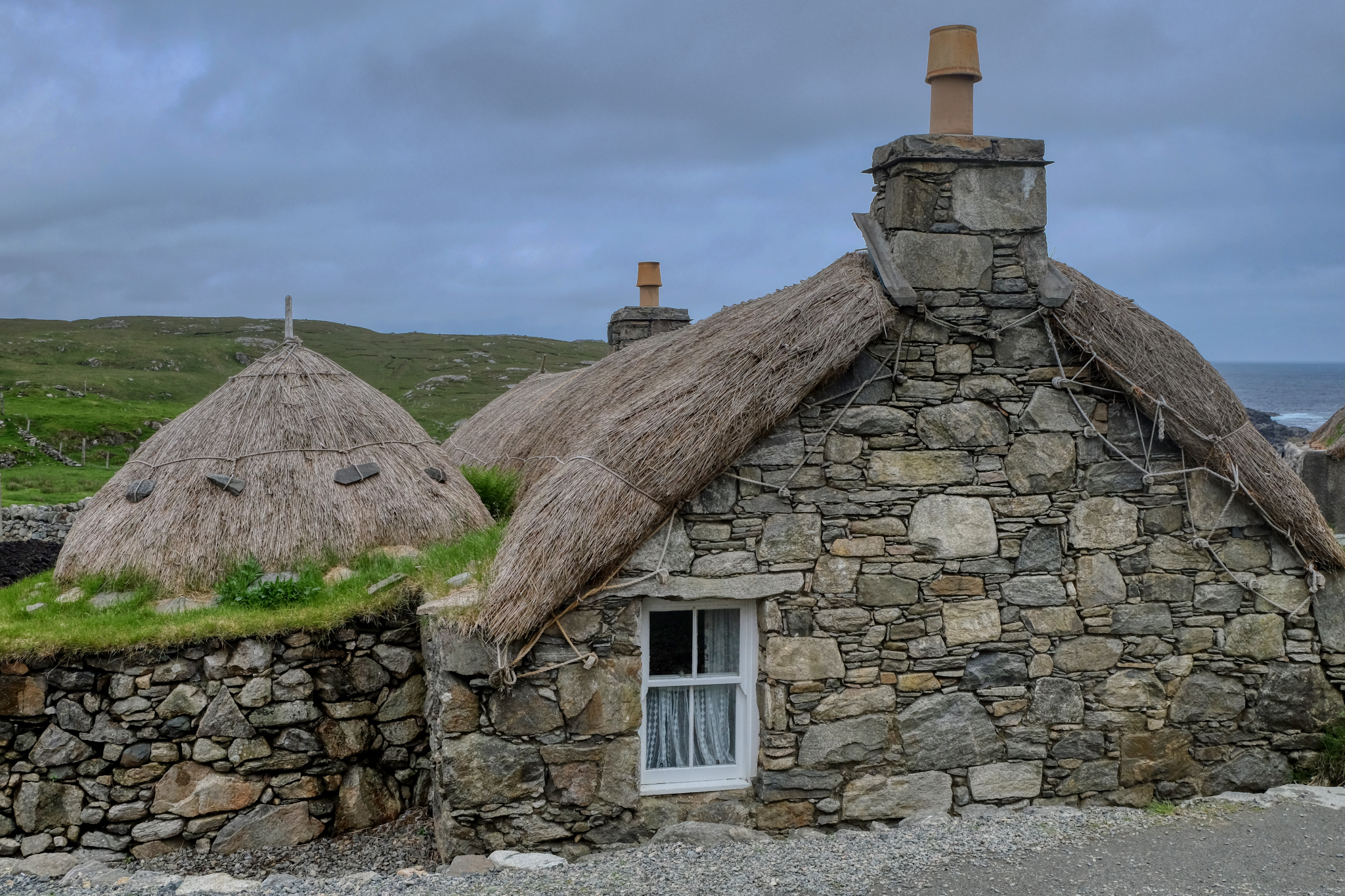 The houses here are all occupied . . . one is even a bed and breakfast . . . if we had only known!!!
The houses here are all occupied . . . one is even a bed and breakfast . . . if we had only known!!!
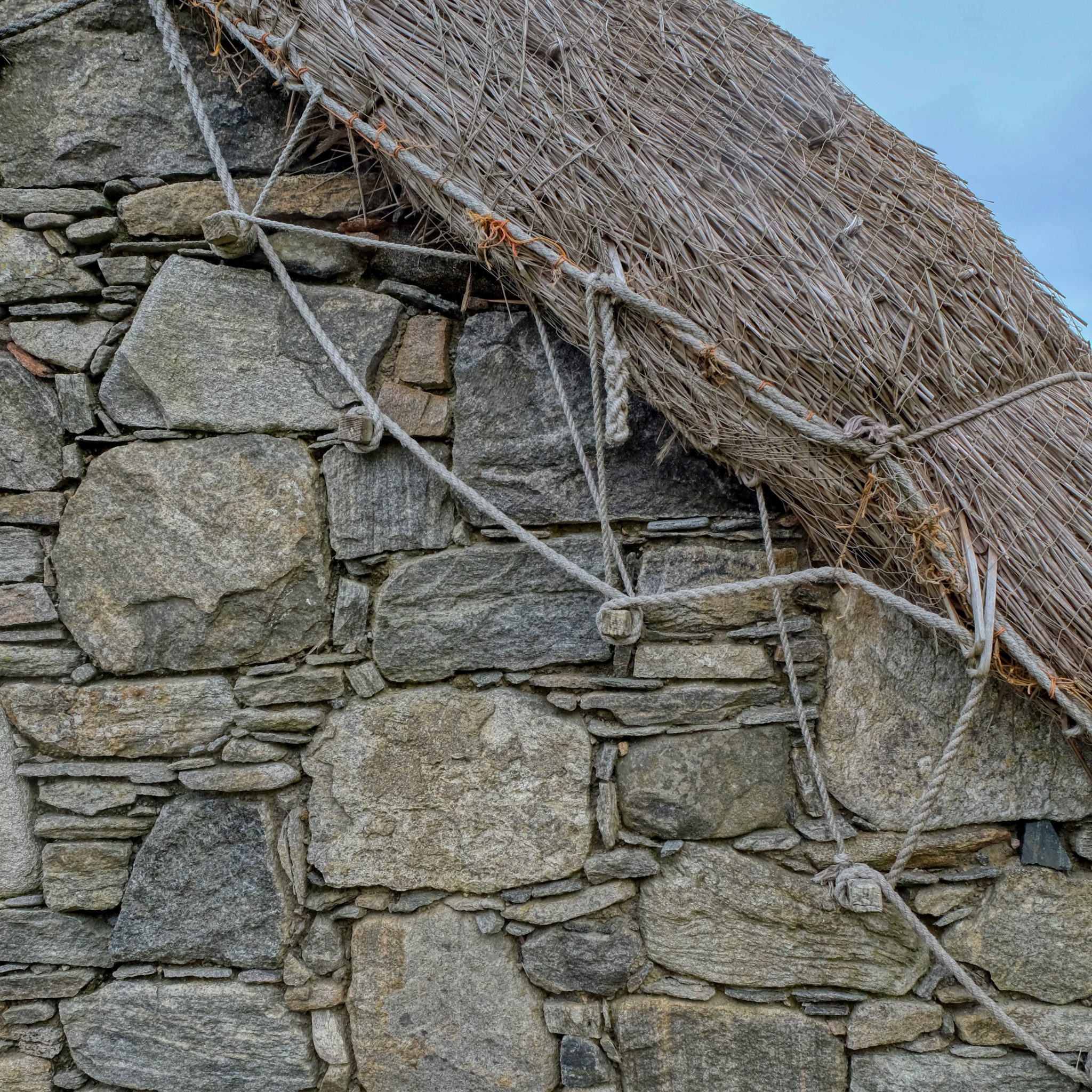 Beautifully detailed construction craft.
Beautifully detailed construction craft.
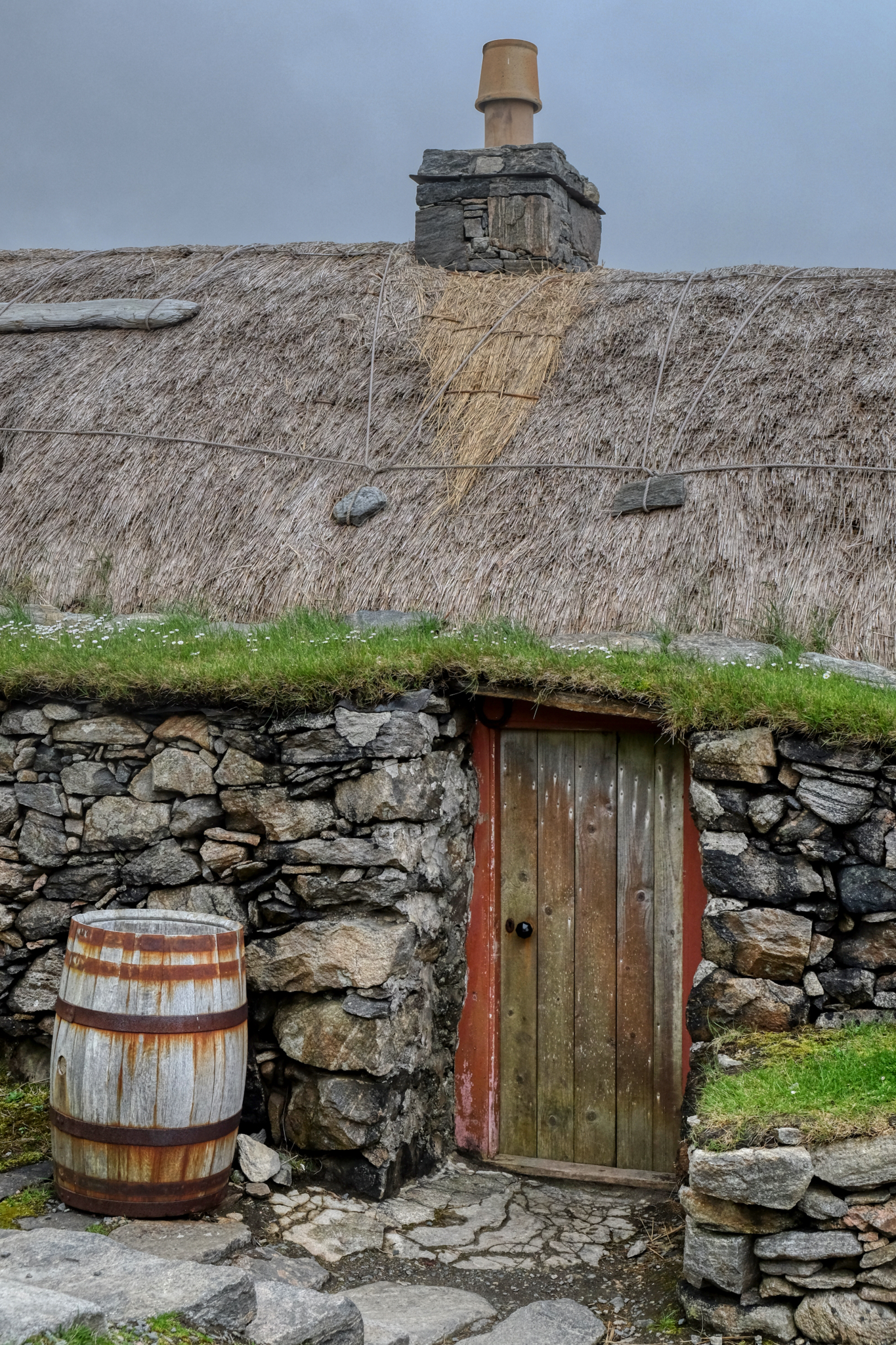 An unbelievably picturesque place.
An unbelievably picturesque place.
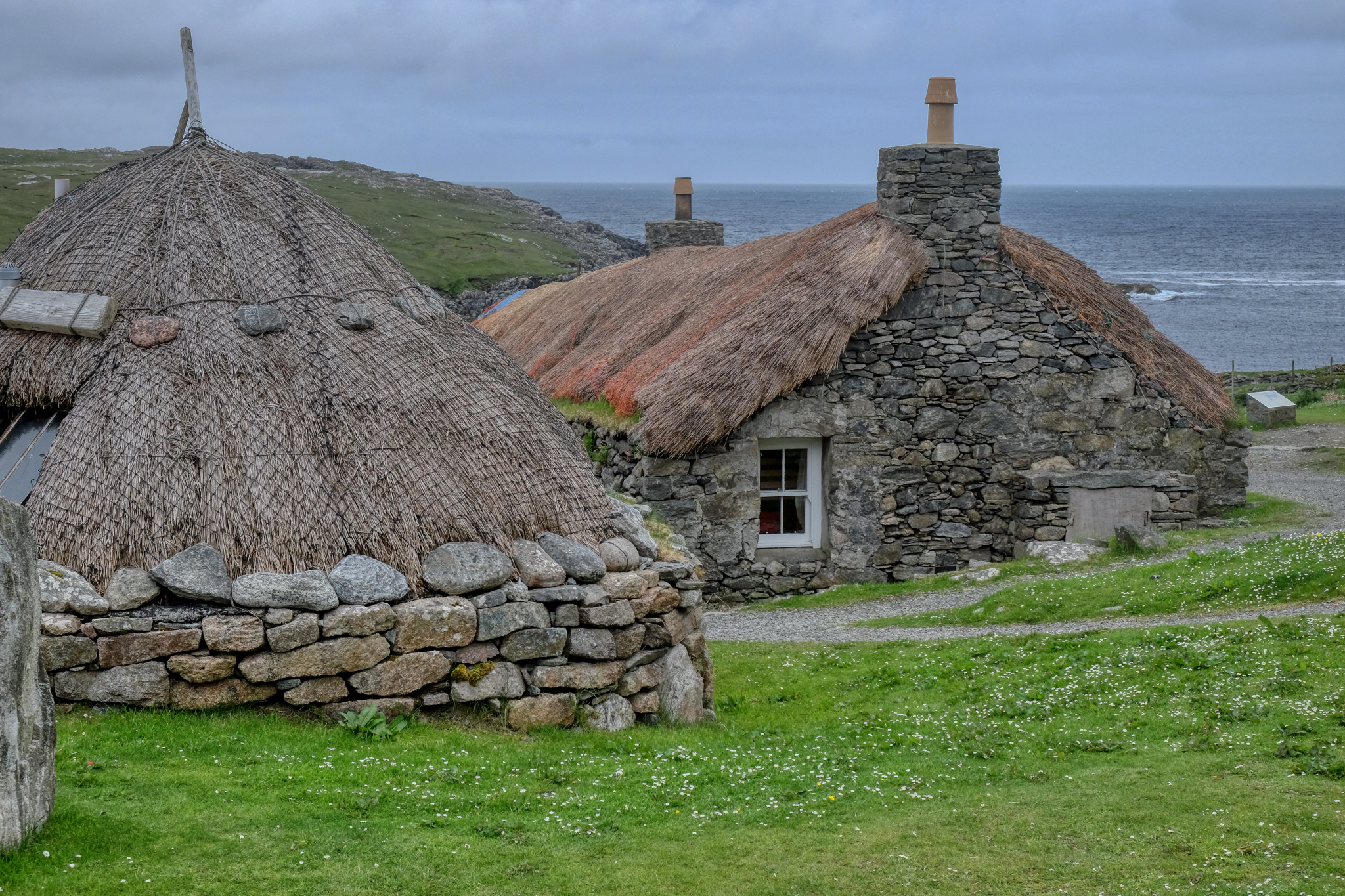 The village served as fishermen's cottages on a small bay.
The village served as fishermen's cottages on a small bay.
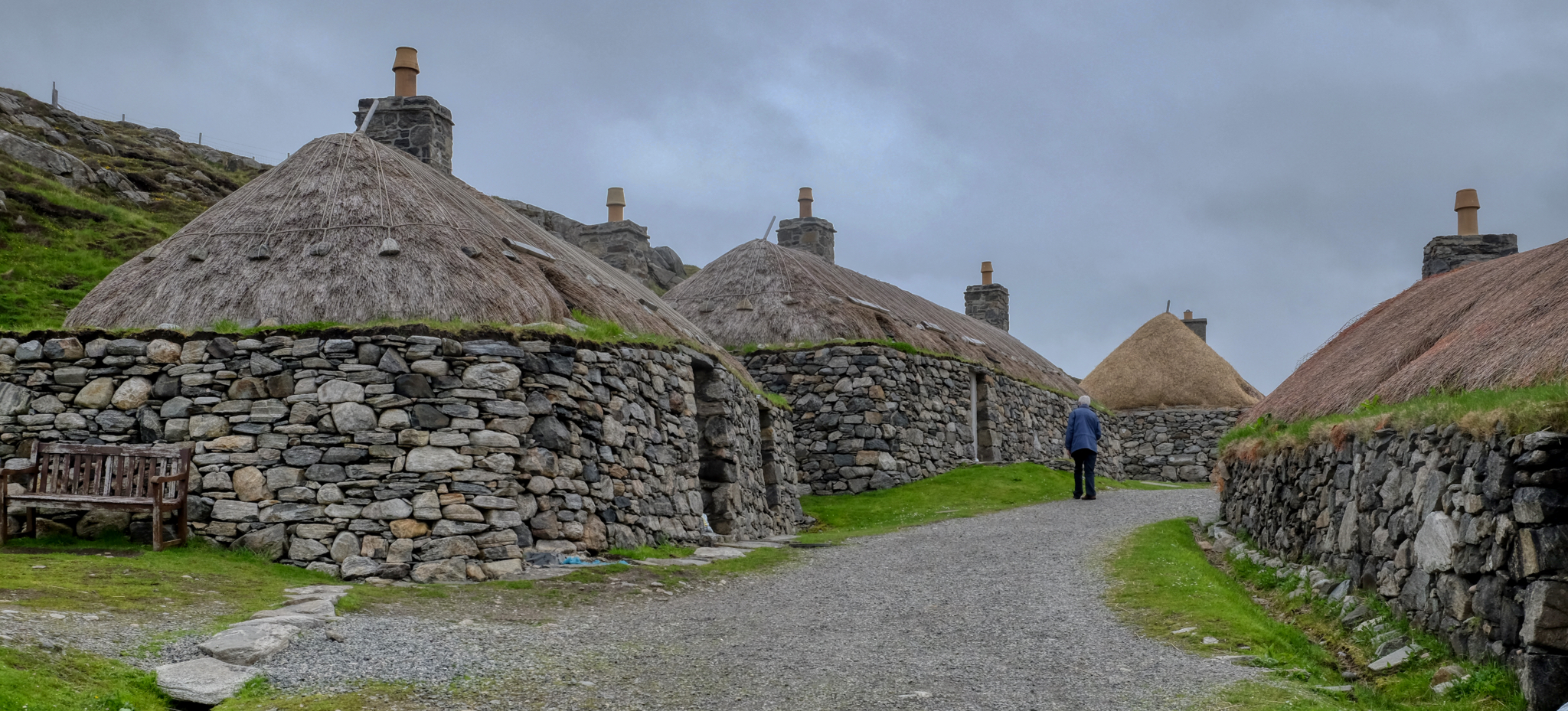 We strolled around this wonderful place for hours.
We strolled around this wonderful place for hours.
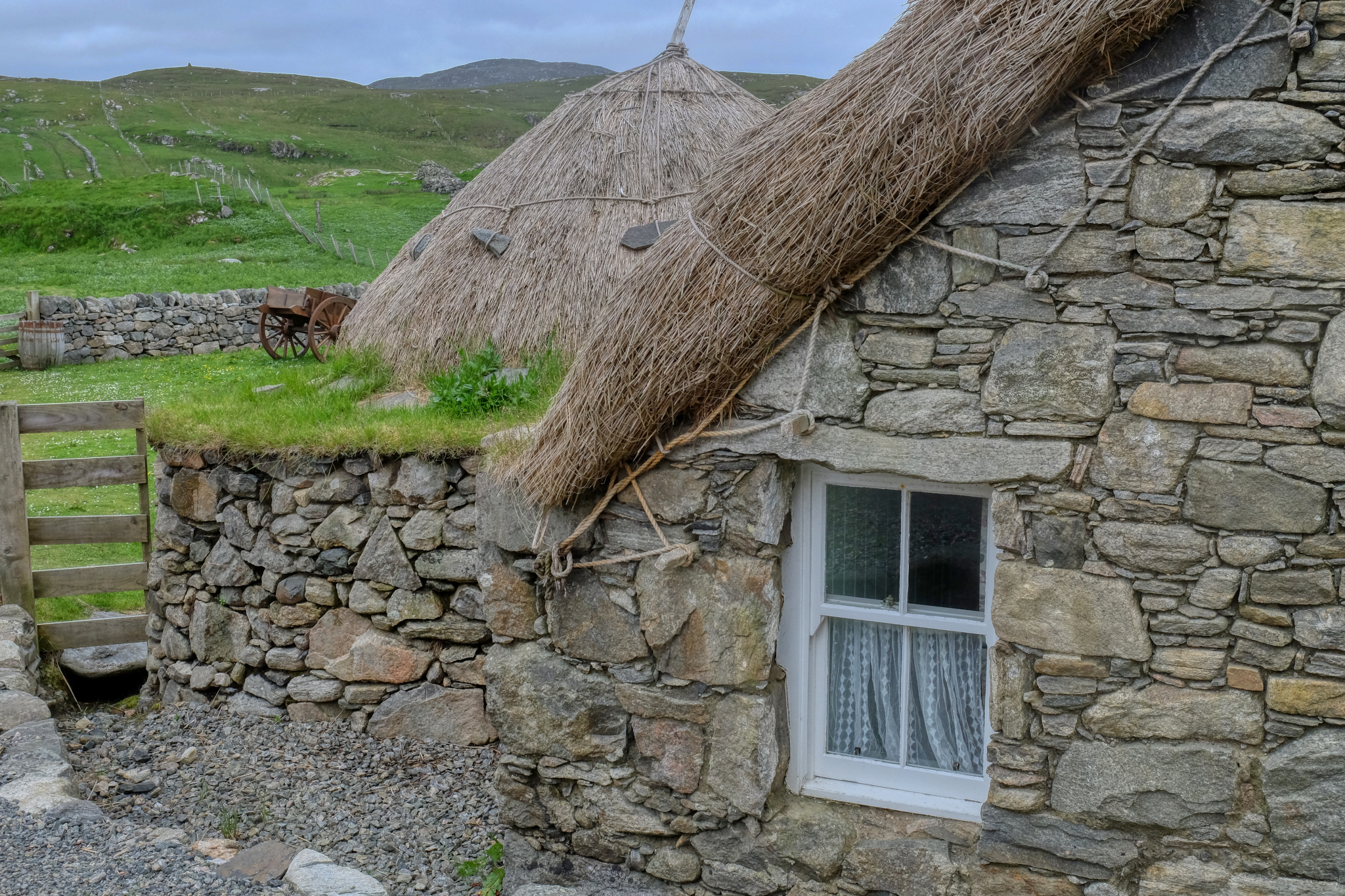 I have to confess: I took over 100 photos here . . . I couldn't help myself, I was overcome by the charming beauty.
I have to confess: I took over 100 photos here . . . I couldn't help myself, I was overcome by the charming beauty.
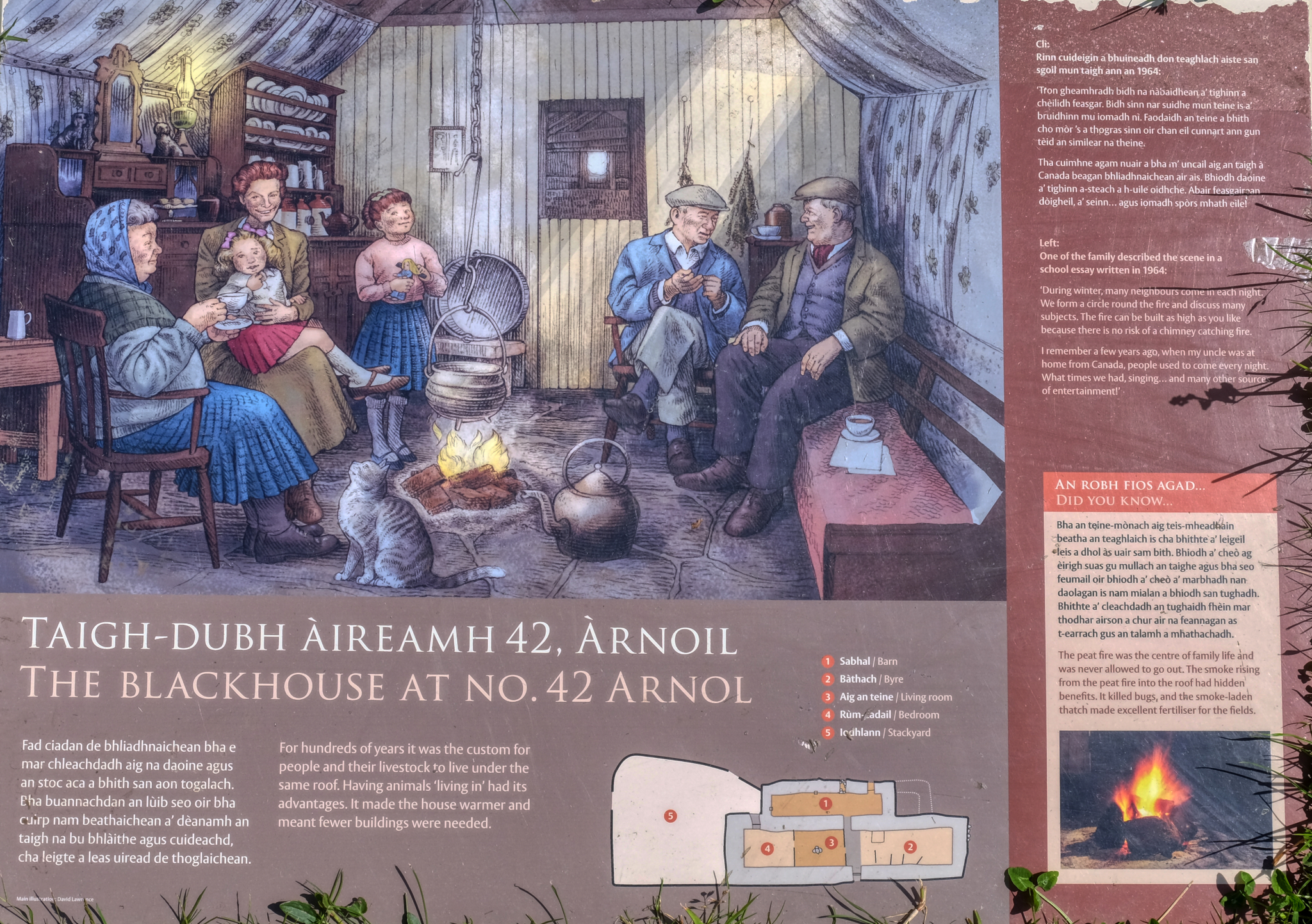 An historical marker on one of the black houses. Fascinating.
An historical marker on one of the black houses. Fascinating.
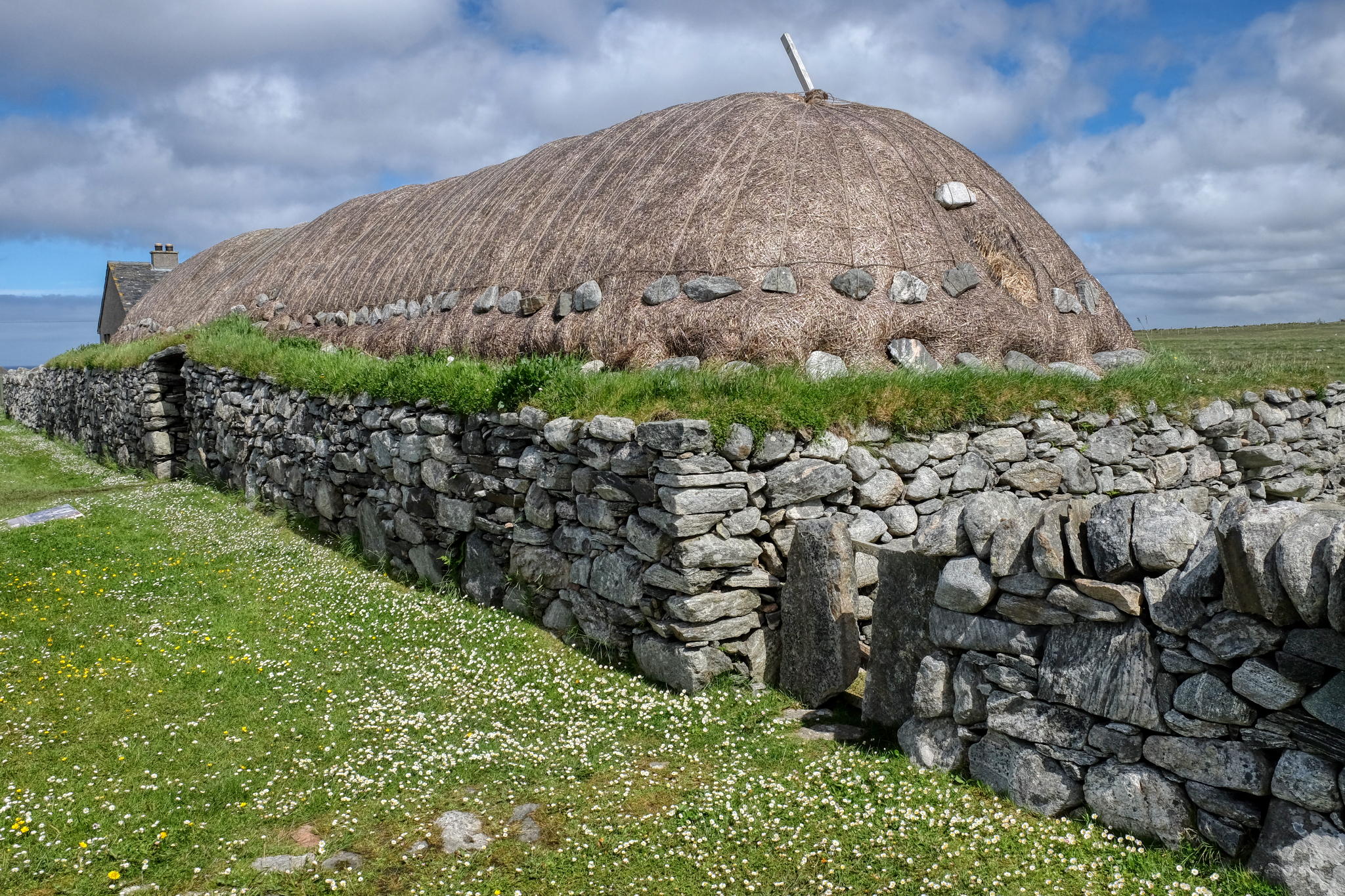 Out along the seaside west coast road of the Isle of Harris. A crofters barn, freshly thatched . . . and still in use.
Out along the seaside west coast road of the Isle of Harris. A crofters barn, freshly thatched . . . and still in use.
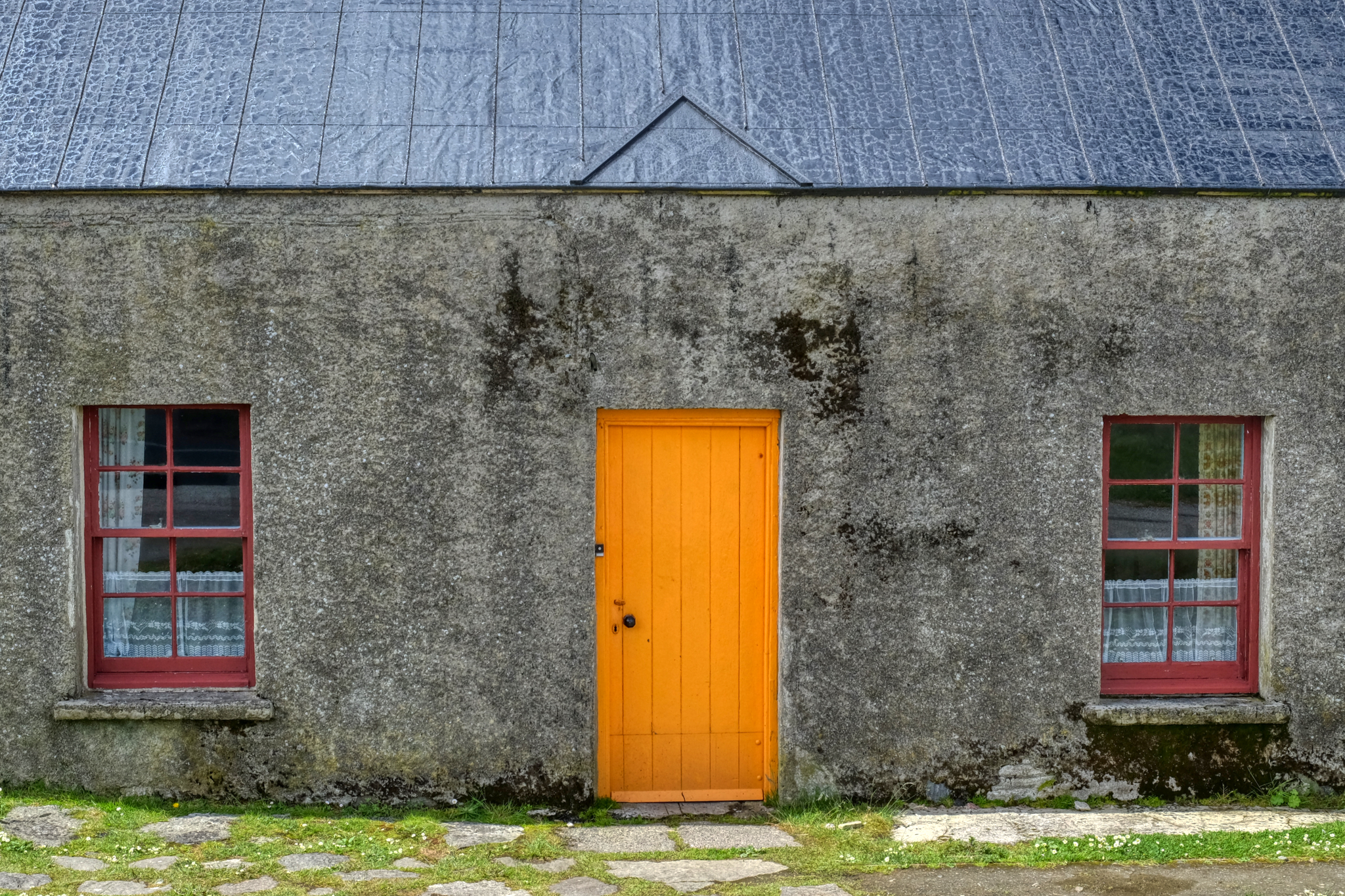 The houses here are very simple and austere . . . almost no decoration at all.
The houses here are very simple and austere . . . almost no decoration at all.
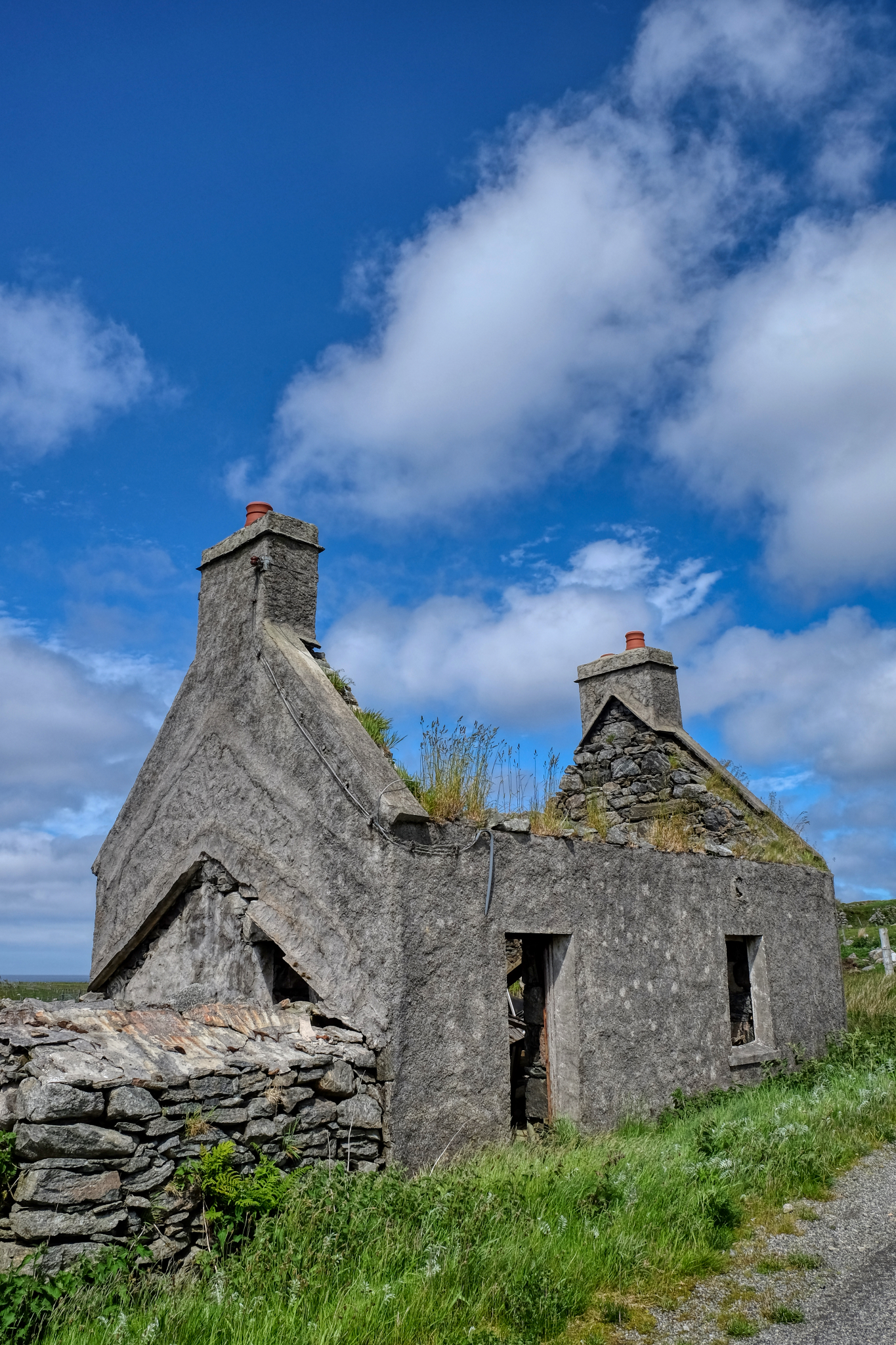 There are many abandoned houses in the west of these islands. There has been a steady drop in population as younger people move to towns and cities on the mainland of Scotland for jobs. However, some of the old houses are being restored by pensioners from as far away as London.
There are many abandoned houses in the west of these islands. There has been a steady drop in population as younger people move to towns and cities on the mainland of Scotland for jobs. However, some of the old houses are being restored by pensioners from as far away as London.
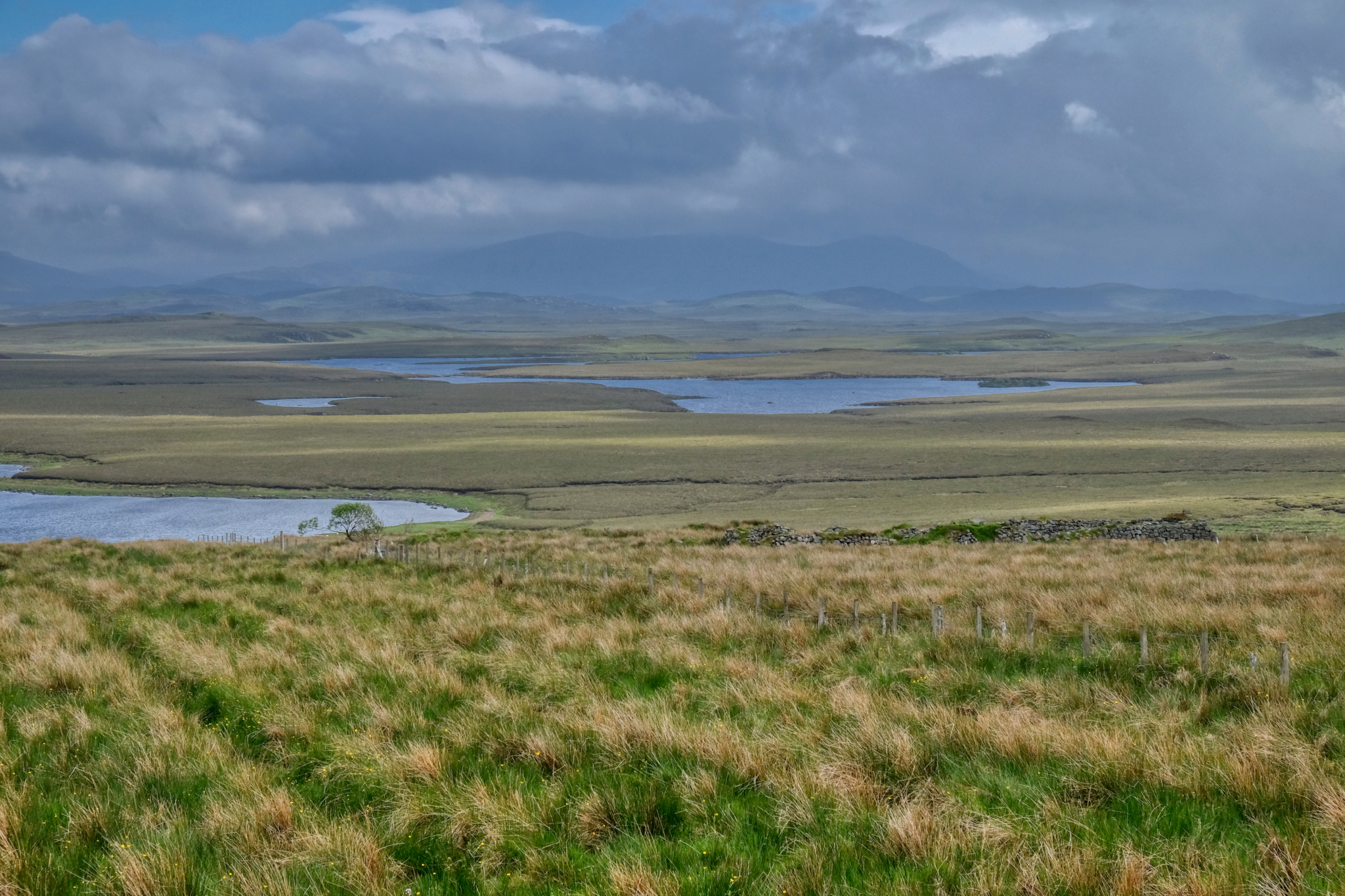 And on and on we went . . . north to see an amazing landmark . . .
And on and on we went . . . north to see an amazing landmark . . .
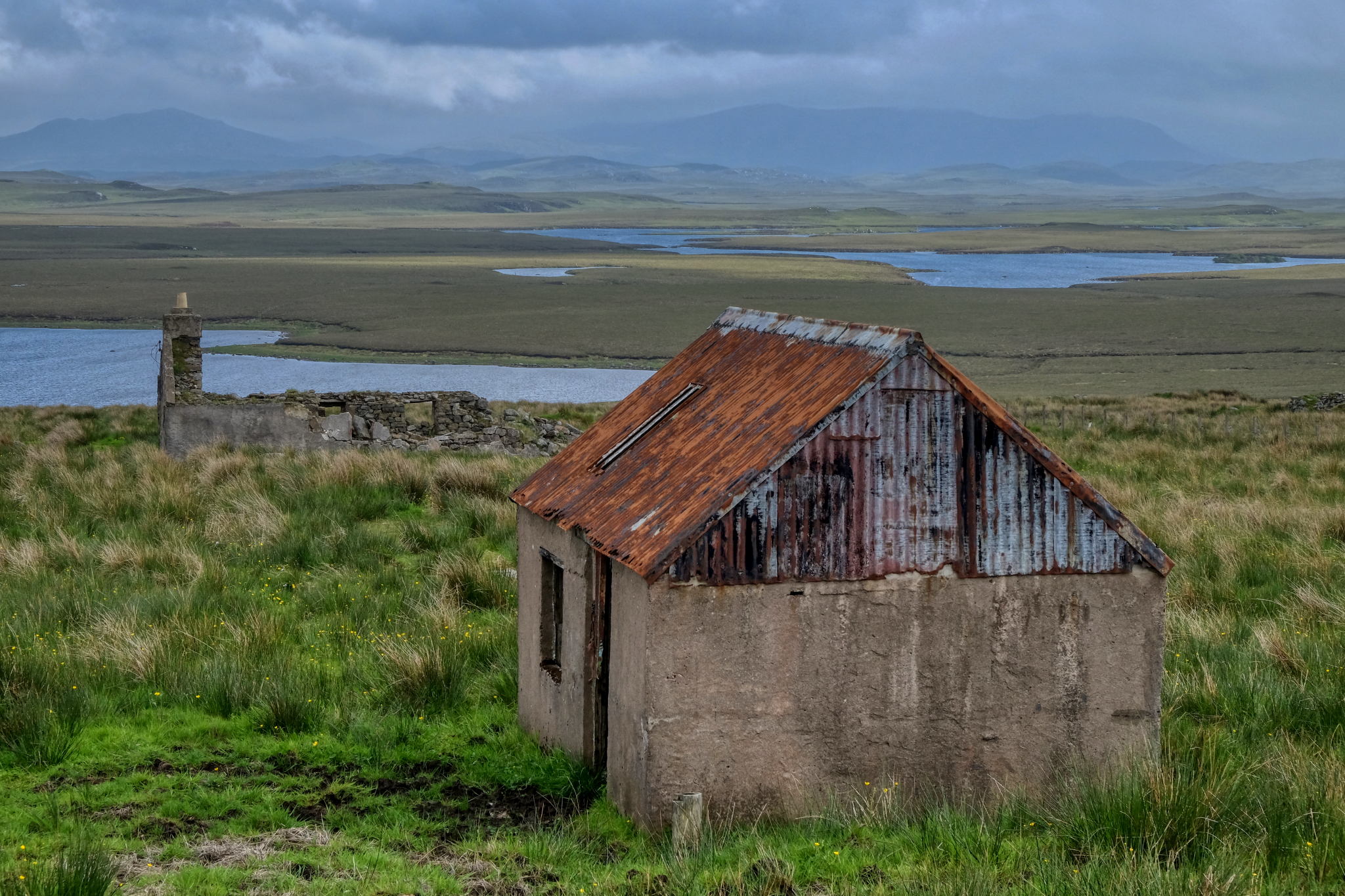 Out on a remote stretch of the north of the Isle of Lewis, more abandoned crofters cottages.
Out on a remote stretch of the north of the Isle of Lewis, more abandoned crofters cottages.
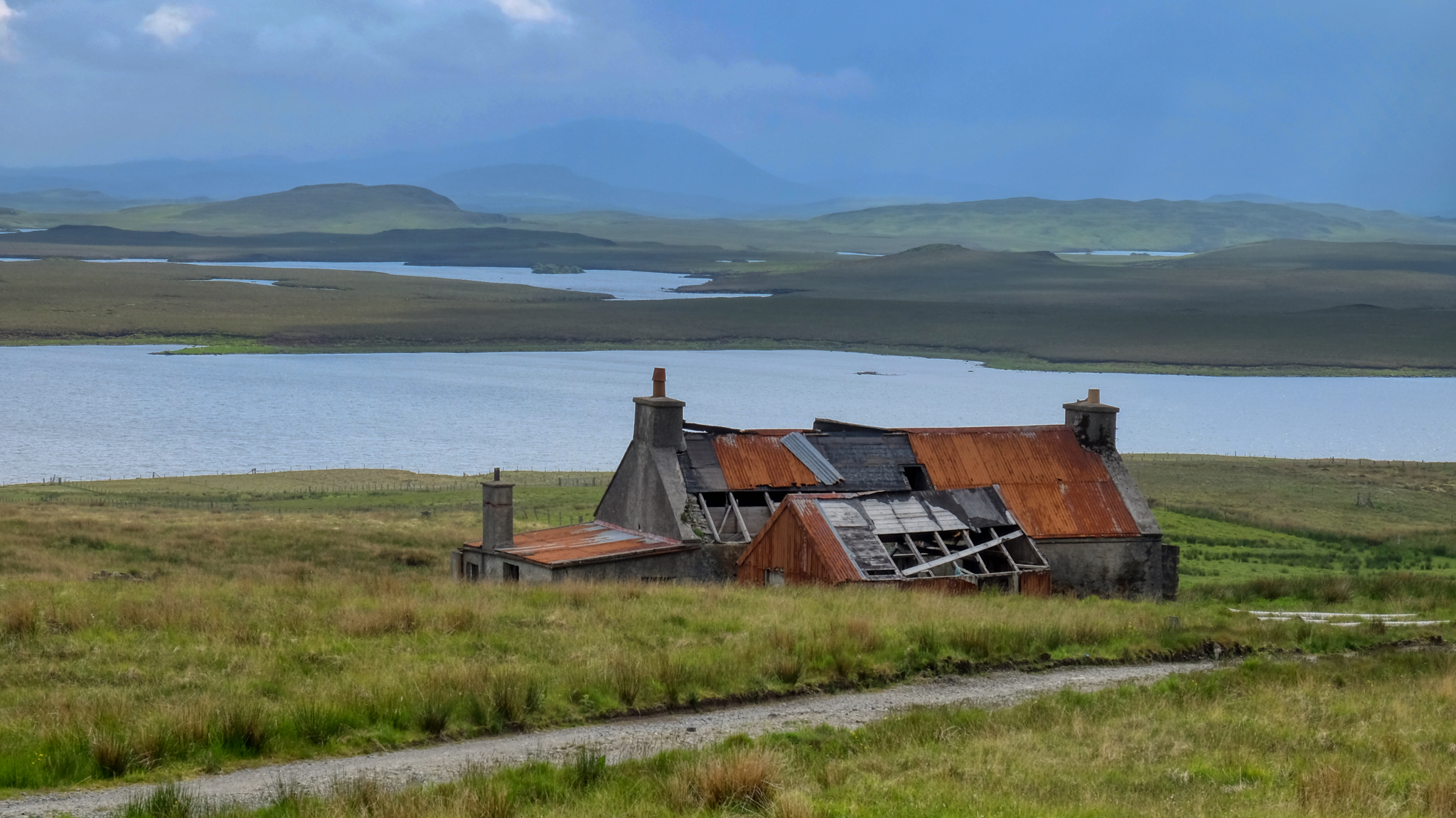 The views became more fantastical, otherworldly.
The views became more fantastical, otherworldly.
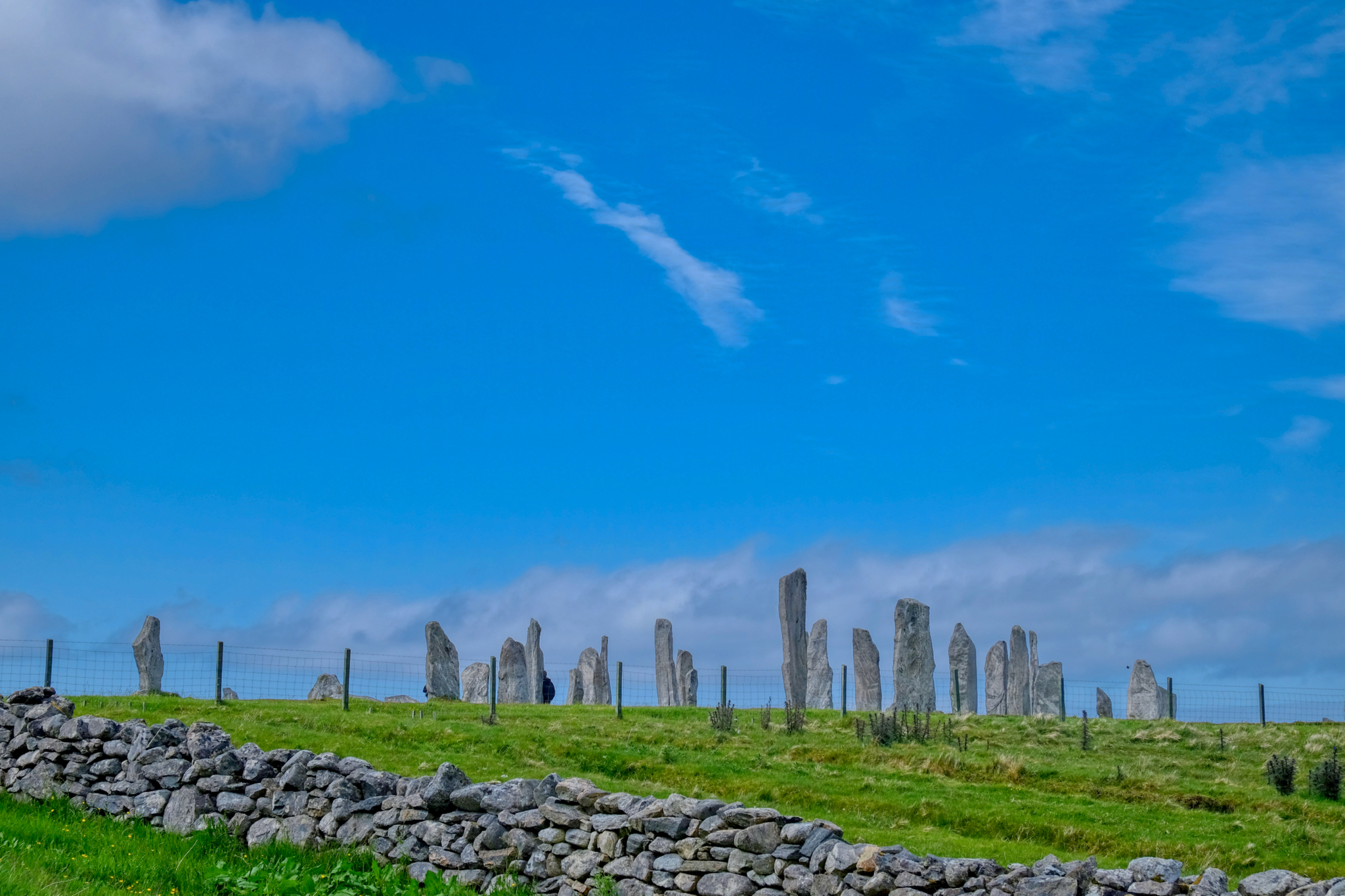 At last we had arrived at our destination: The Callanish Standing Stones!
At last we had arrived at our destination: The Callanish Standing Stones!
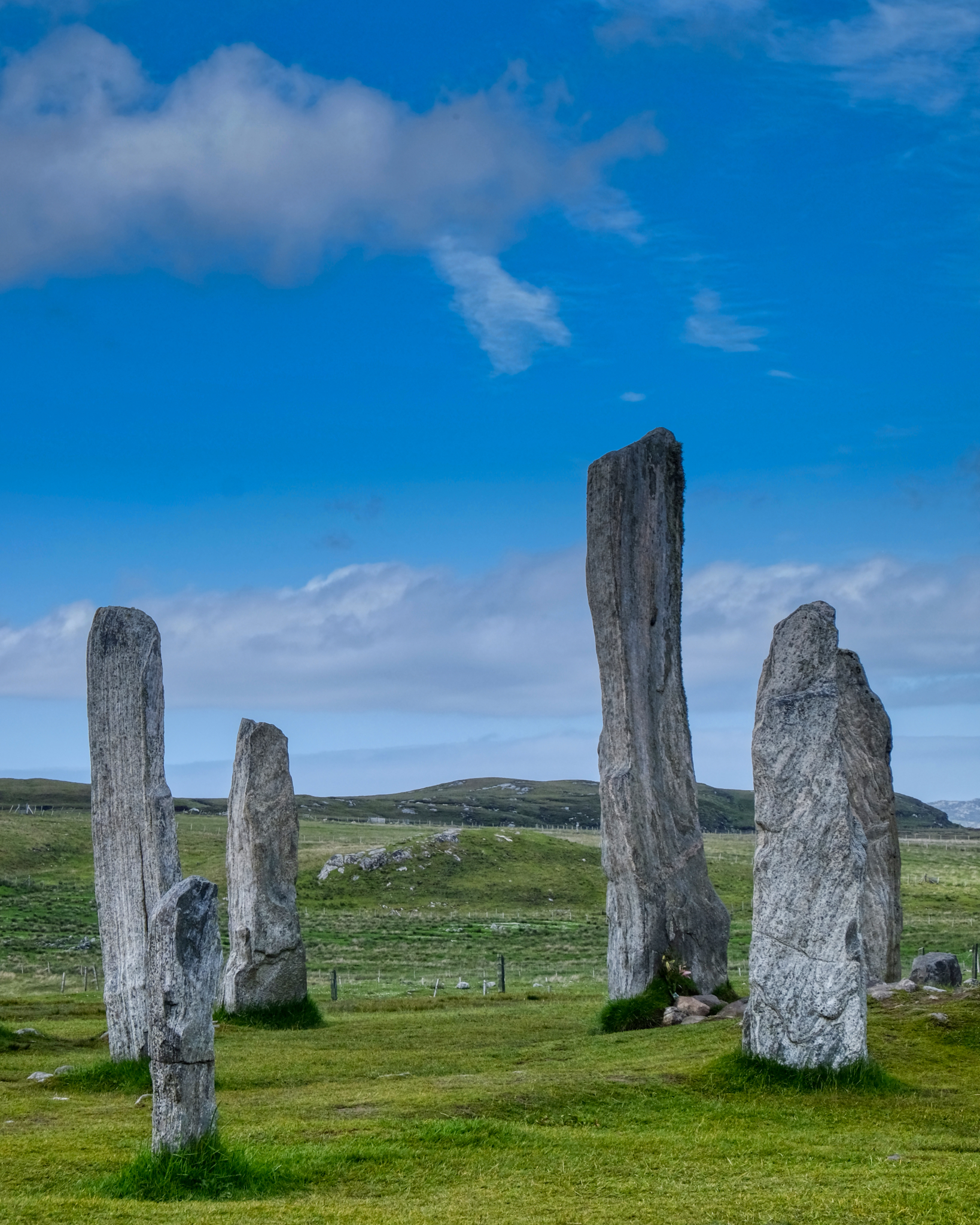 I have been to Stonehenge, but these were far more magnificent!
I have been to Stonehenge, but these were far more magnificent!
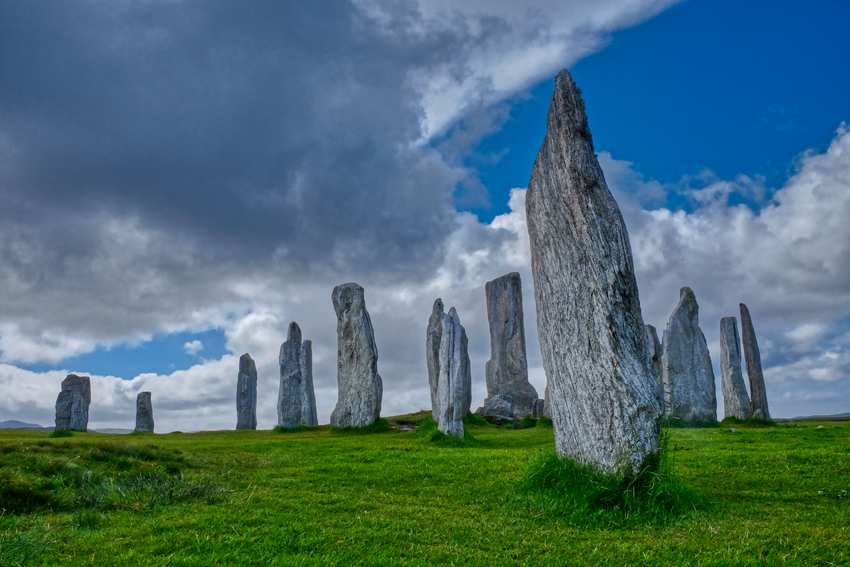
"The first traces of human activity are indicated by a broad ditch (no longer visible above ground) which appears to have belonged to some structure or enclosure. This may have been ritual, but could instead have been domestic. In the centuries around 3000 BC, however, the site was turned over to agriculture, which obliterated most of the earlier traces. After this, the site was allowed to grass over for a time." - Callanish Standing Stones
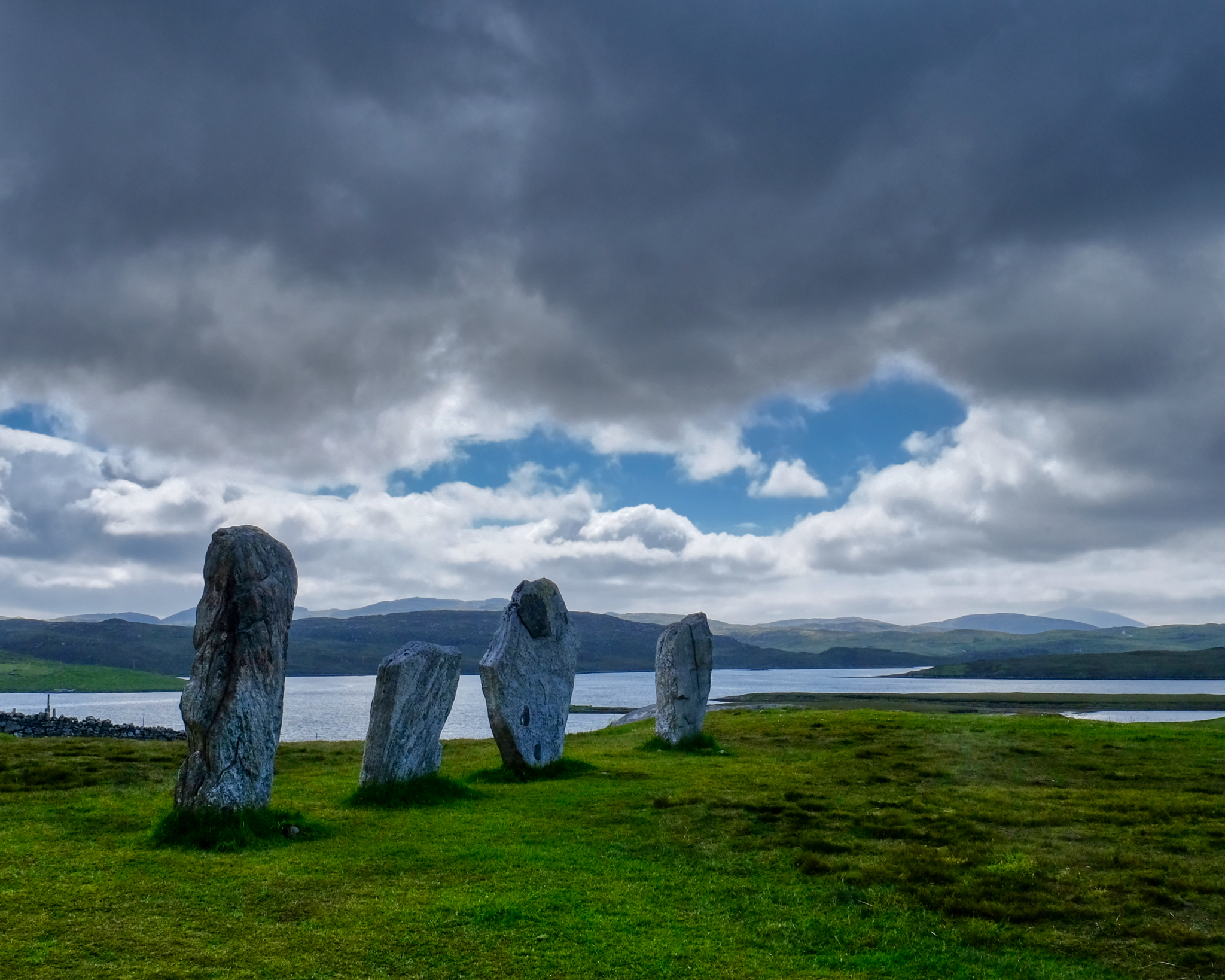 The stones sit on a hill with awesome views.
The stones sit on a hill with awesome views.
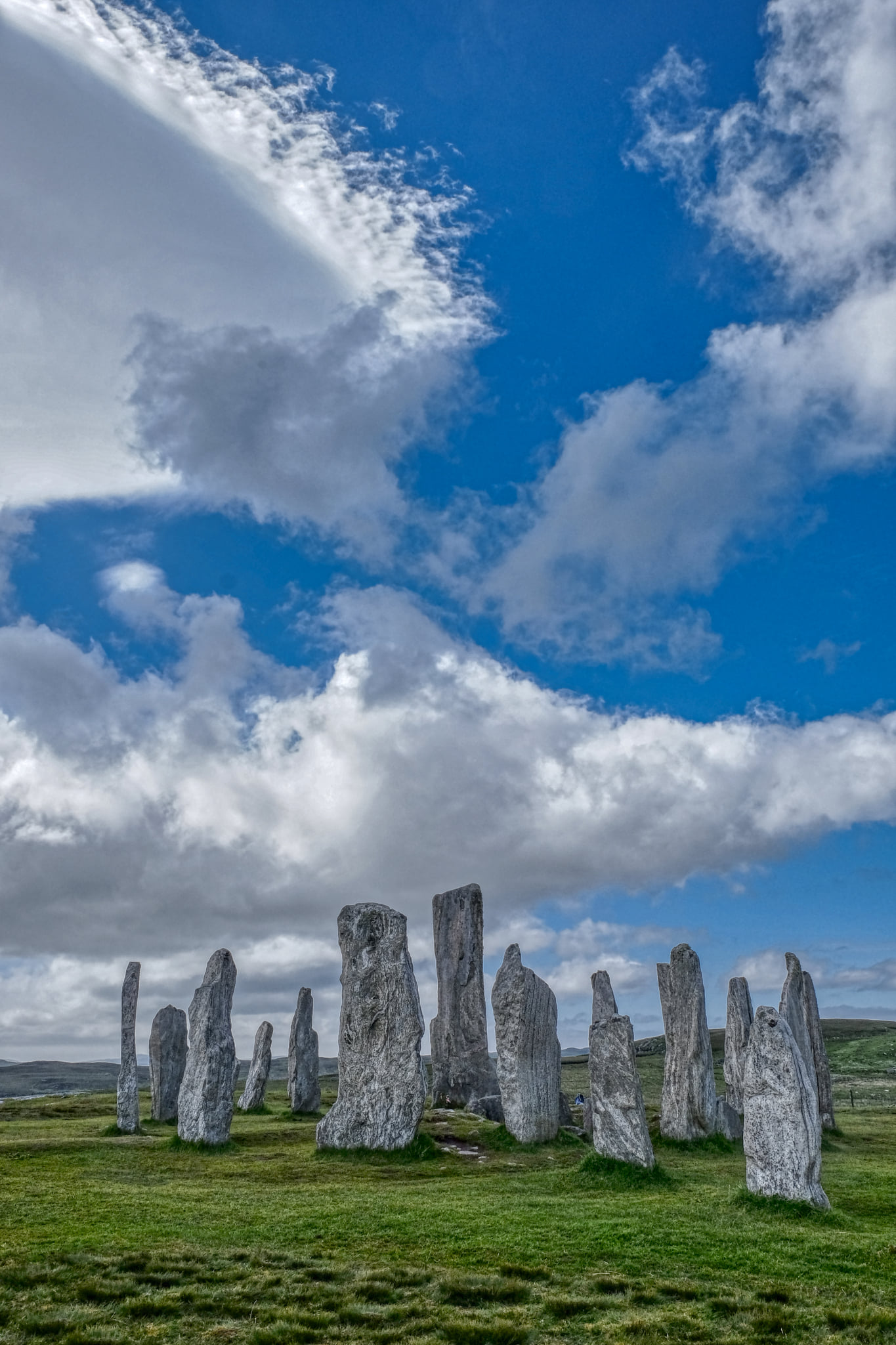 Under a stunning, ever-changing sky . . . the sun popping through now and again.
Under a stunning, ever-changing sky . . . the sun popping through now and again.
 Magic.
Magic.
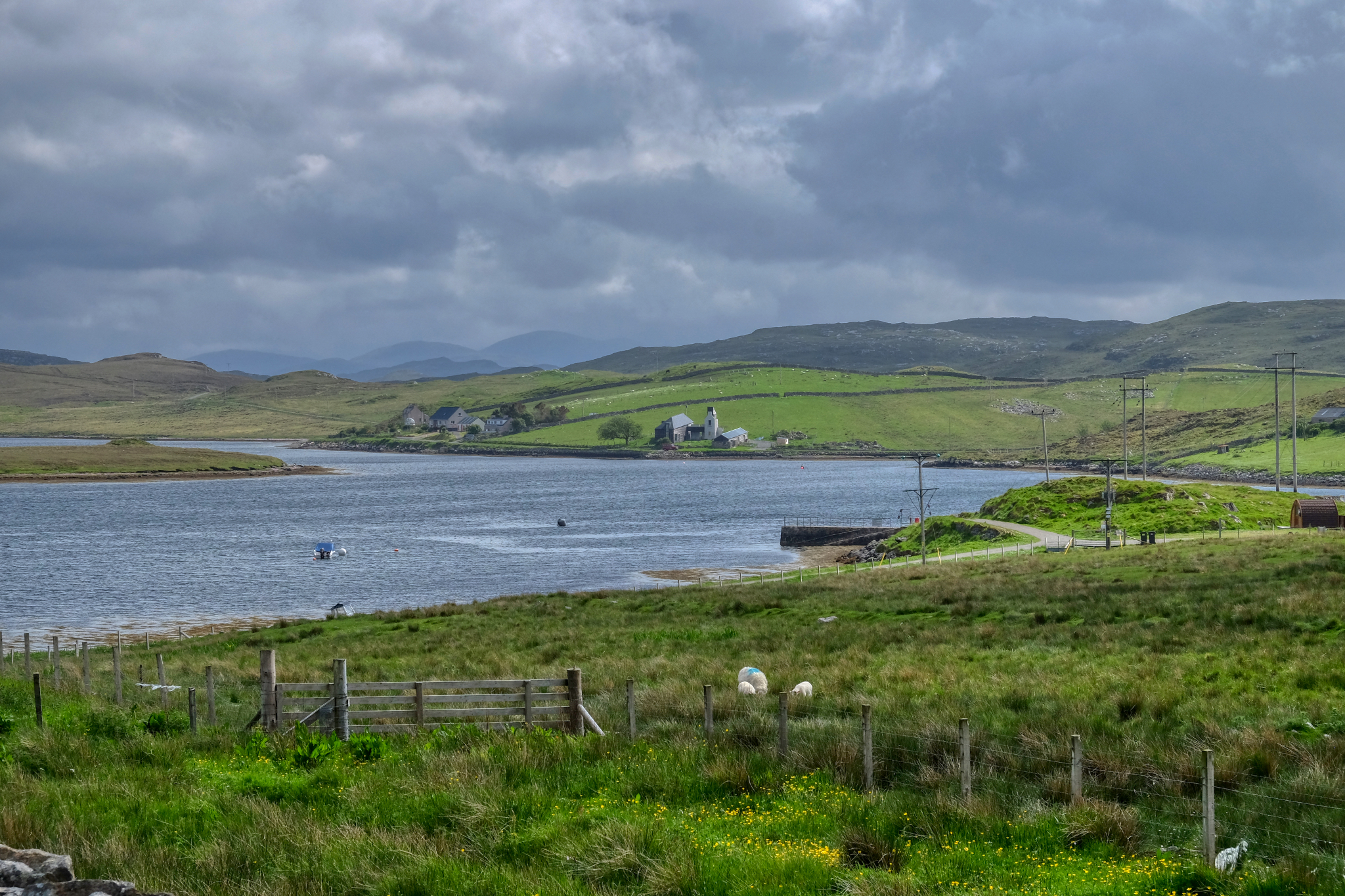 A view from the standing stones. Imagine living in a farm like this . . . in this place.
A view from the standing stones. Imagine living in a farm like this . . . in this place.
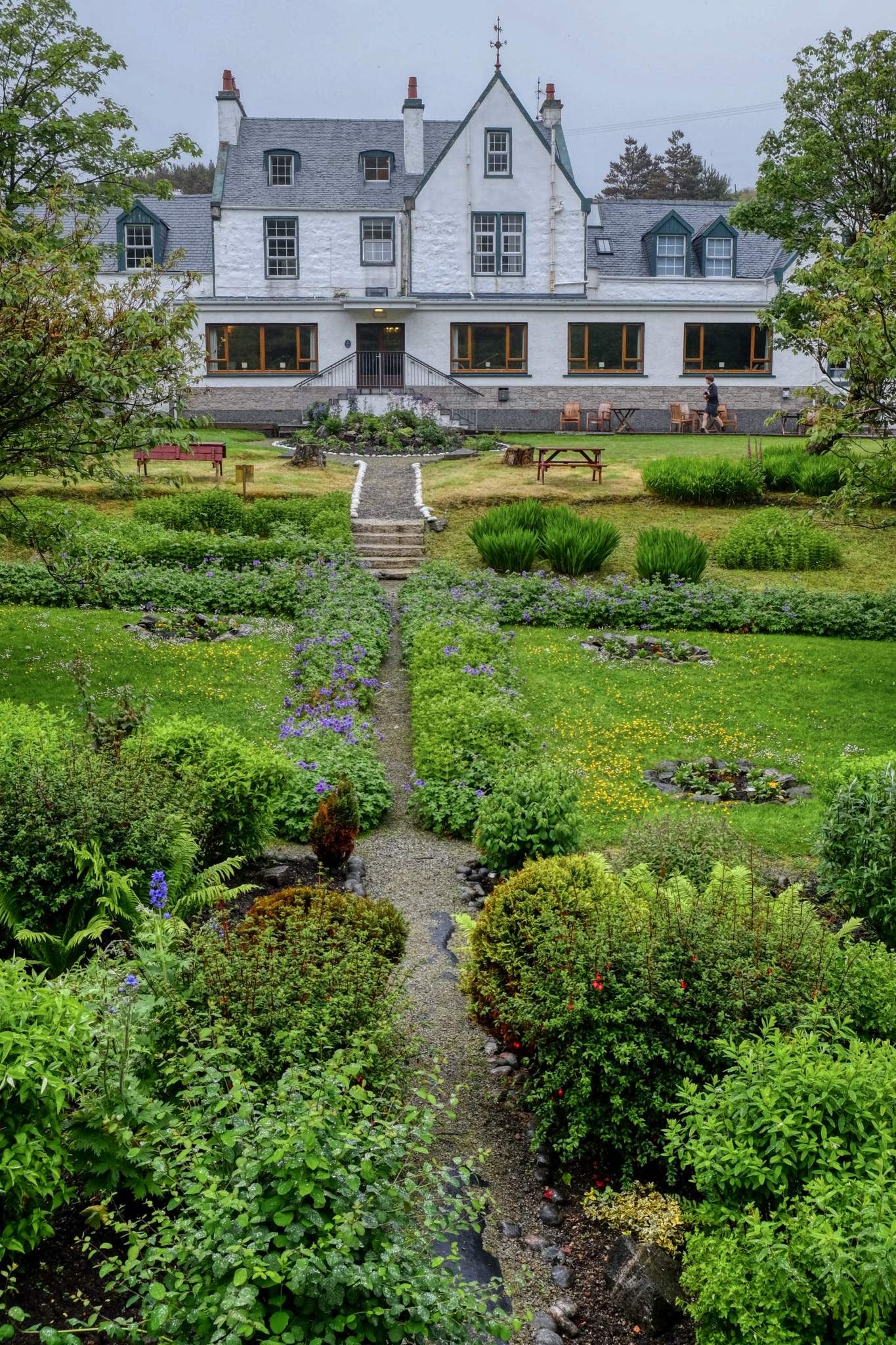 We stayed a lovely evening at the Harris Hotel, Isle of Lewis and Harris.
We stayed a lovely evening at the Harris Hotel, Isle of Lewis and Harris.
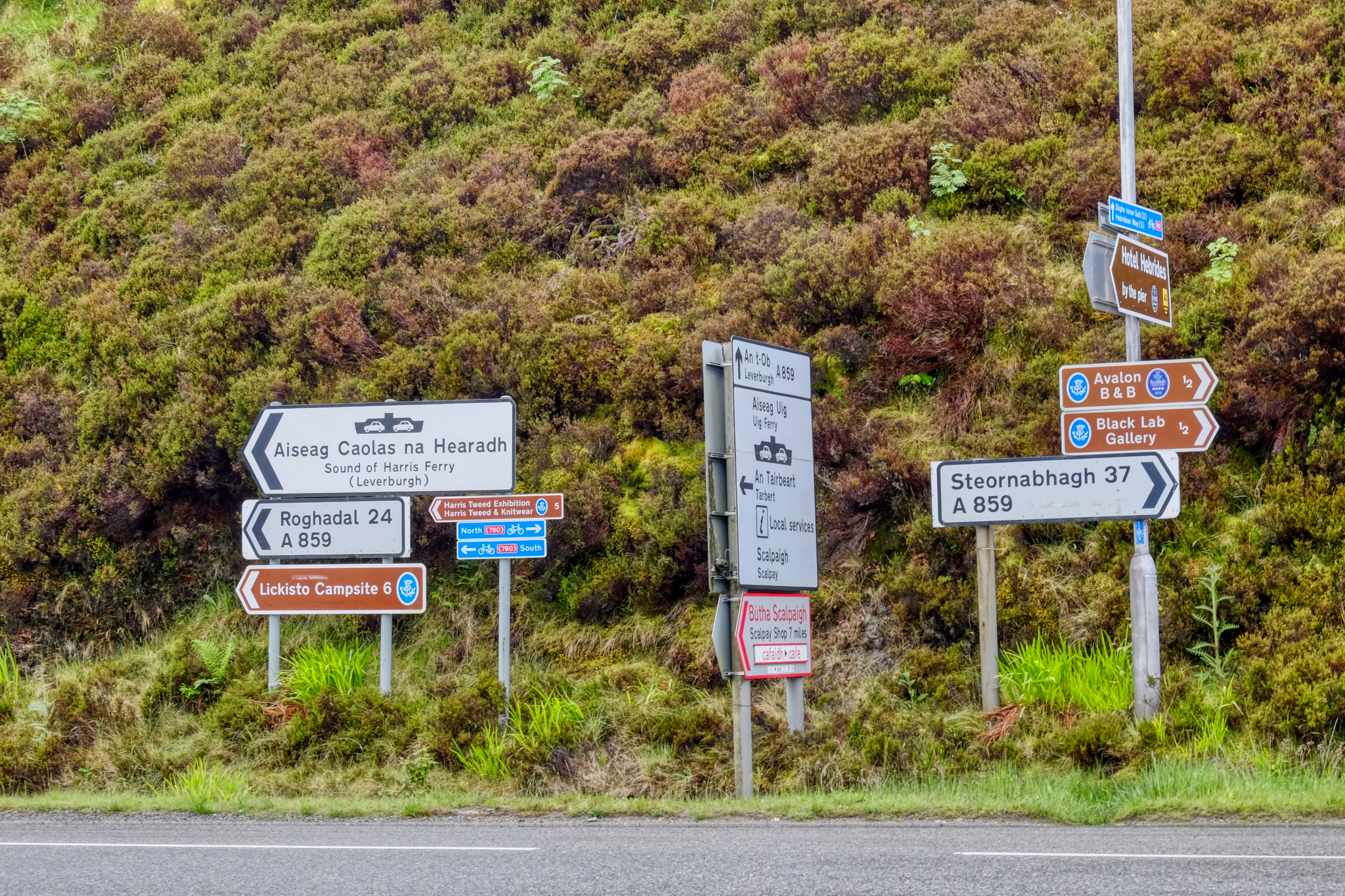 Ah! Harris tweed that way!
Ah! Harris tweed that way!
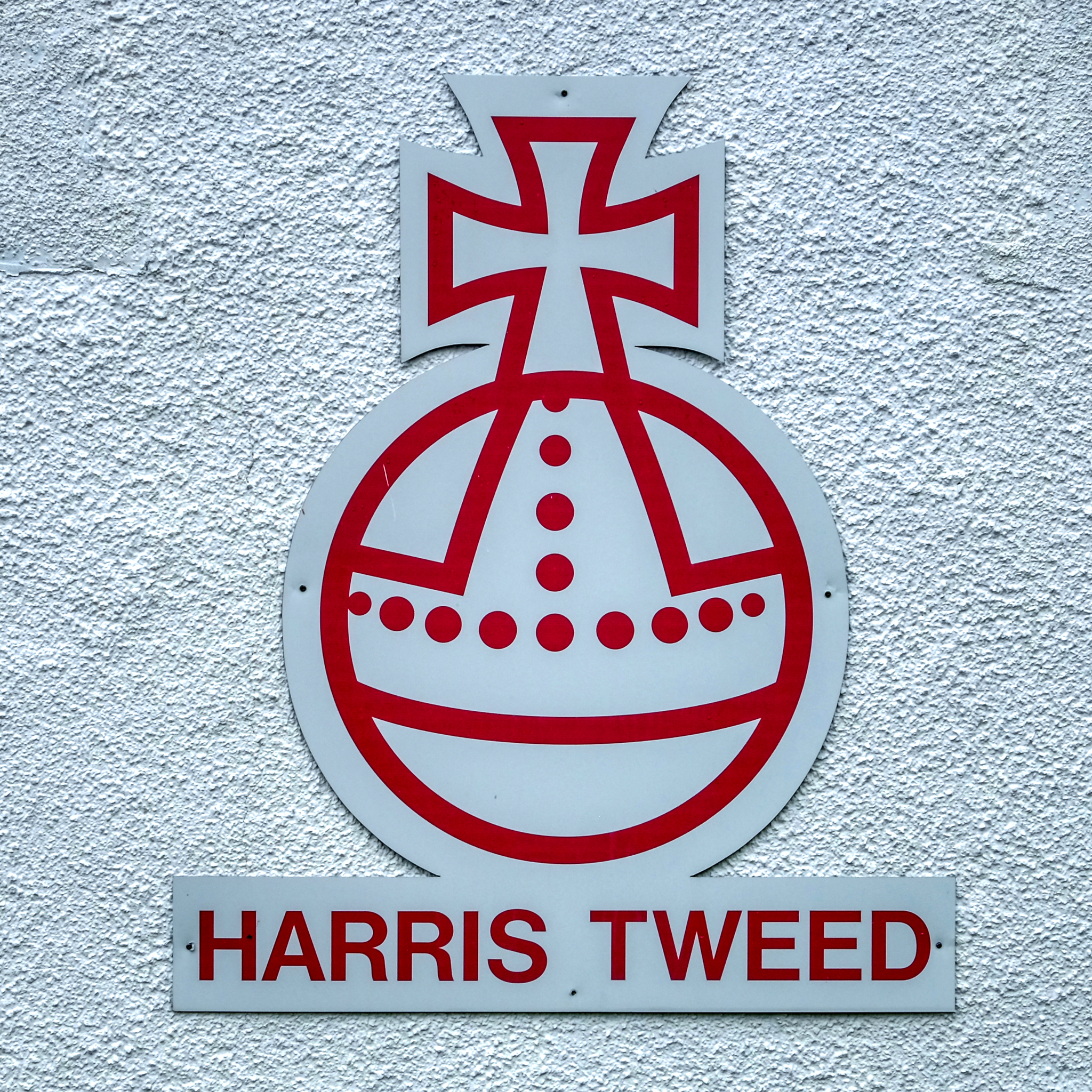 Only tweed that has been woven on the Isle of Harris can be called Harris tweed. It is famous all over the world.
Only tweed that has been woven on the Isle of Harris can be called Harris tweed. It is famous all over the world.
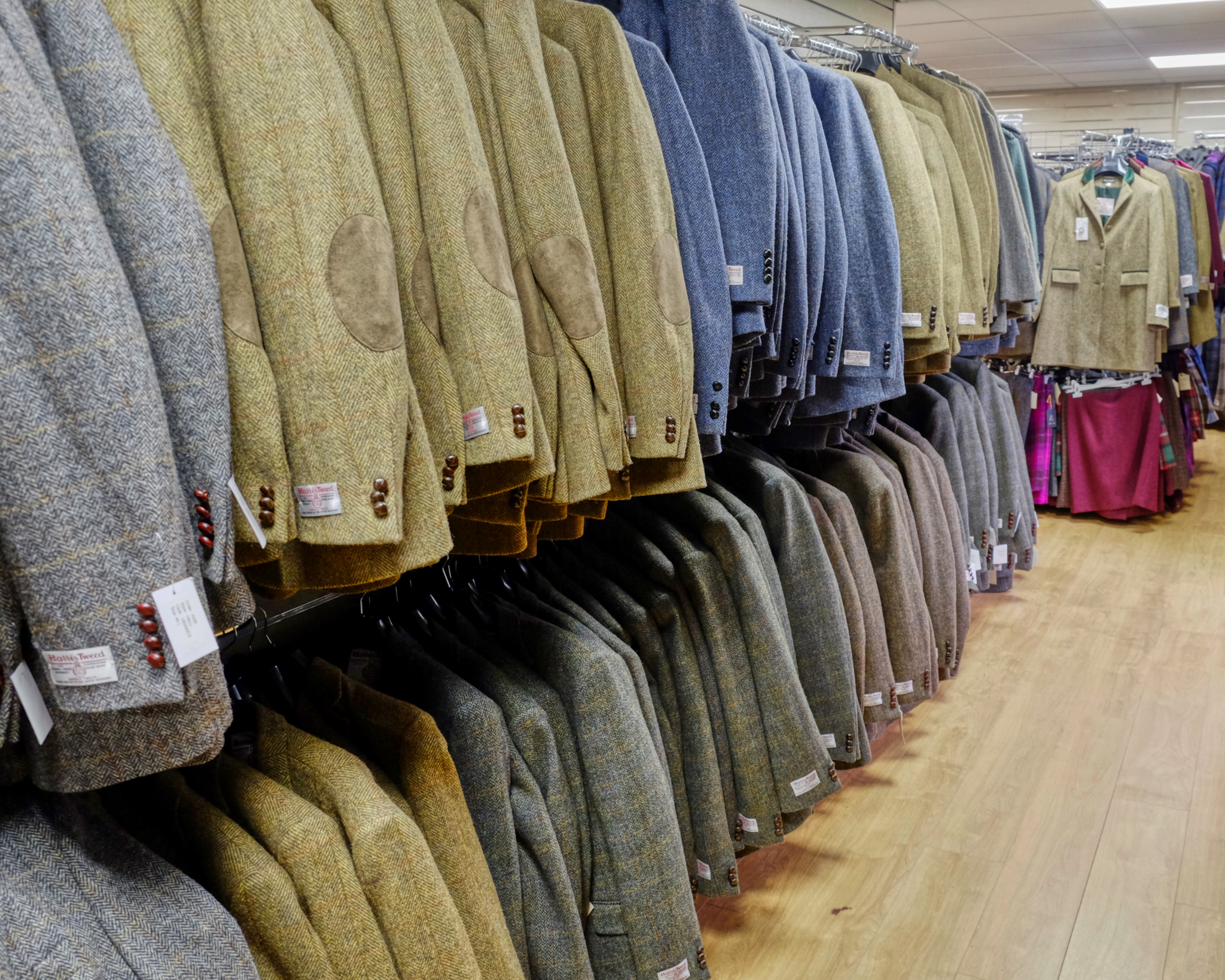 When I lived in London many years ago, I had a very nice Harris tweed sport coat. I tried several of these on . . . but they felt too old fashioned . . . and professorial.
When I lived in London many years ago, I had a very nice Harris tweed sport coat. I tried several of these on . . . but they felt too old fashioned . . . and professorial.
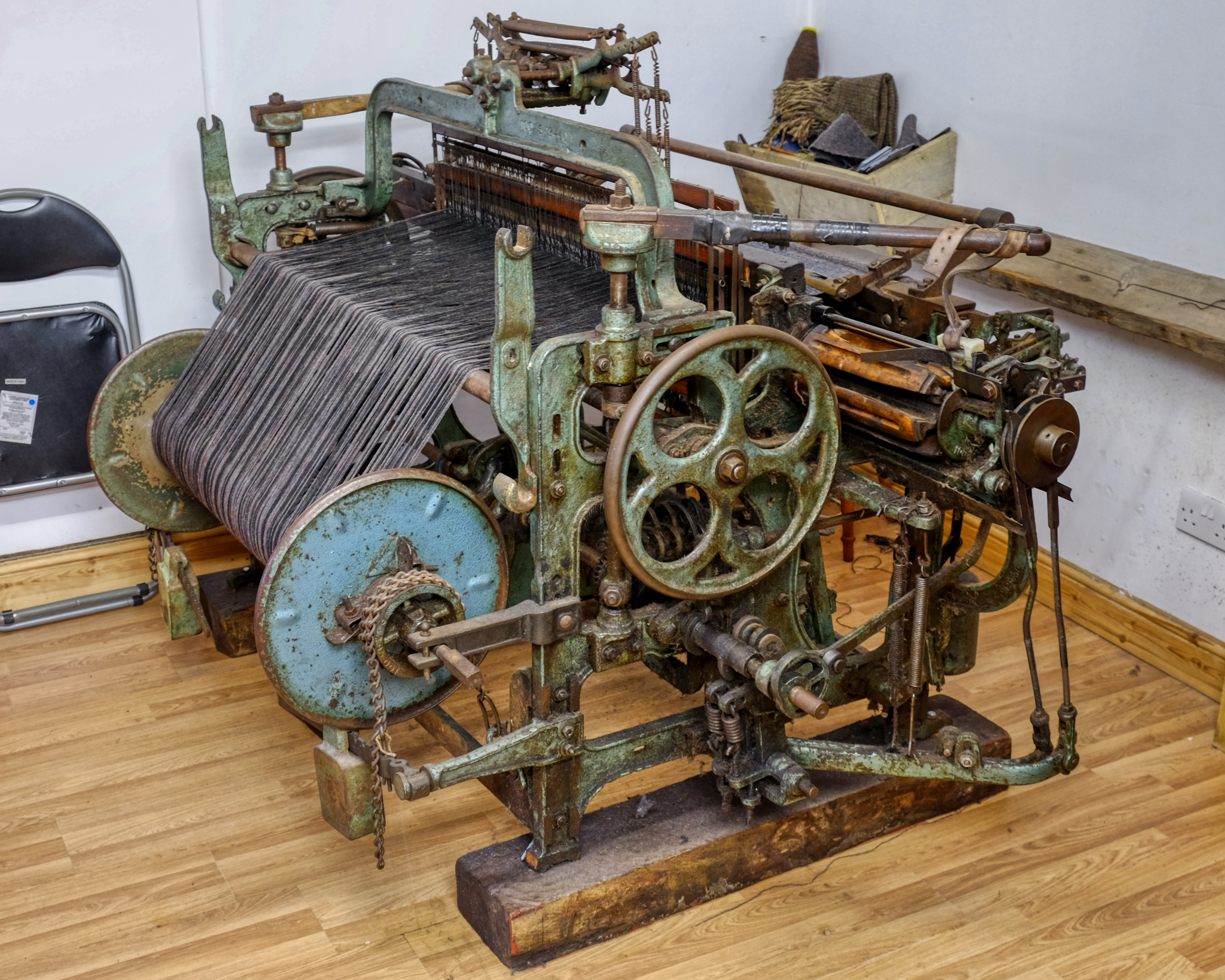 The winter nights on the Outer Hebrides are long, dark, cold, and windy. Local residents have spent the dark months weaving the distinctive tweed the island is famous for on these looms.
The winter nights on the Outer Hebrides are long, dark, cold, and windy. Local residents have spent the dark months weaving the distinctive tweed the island is famous for on these looms.
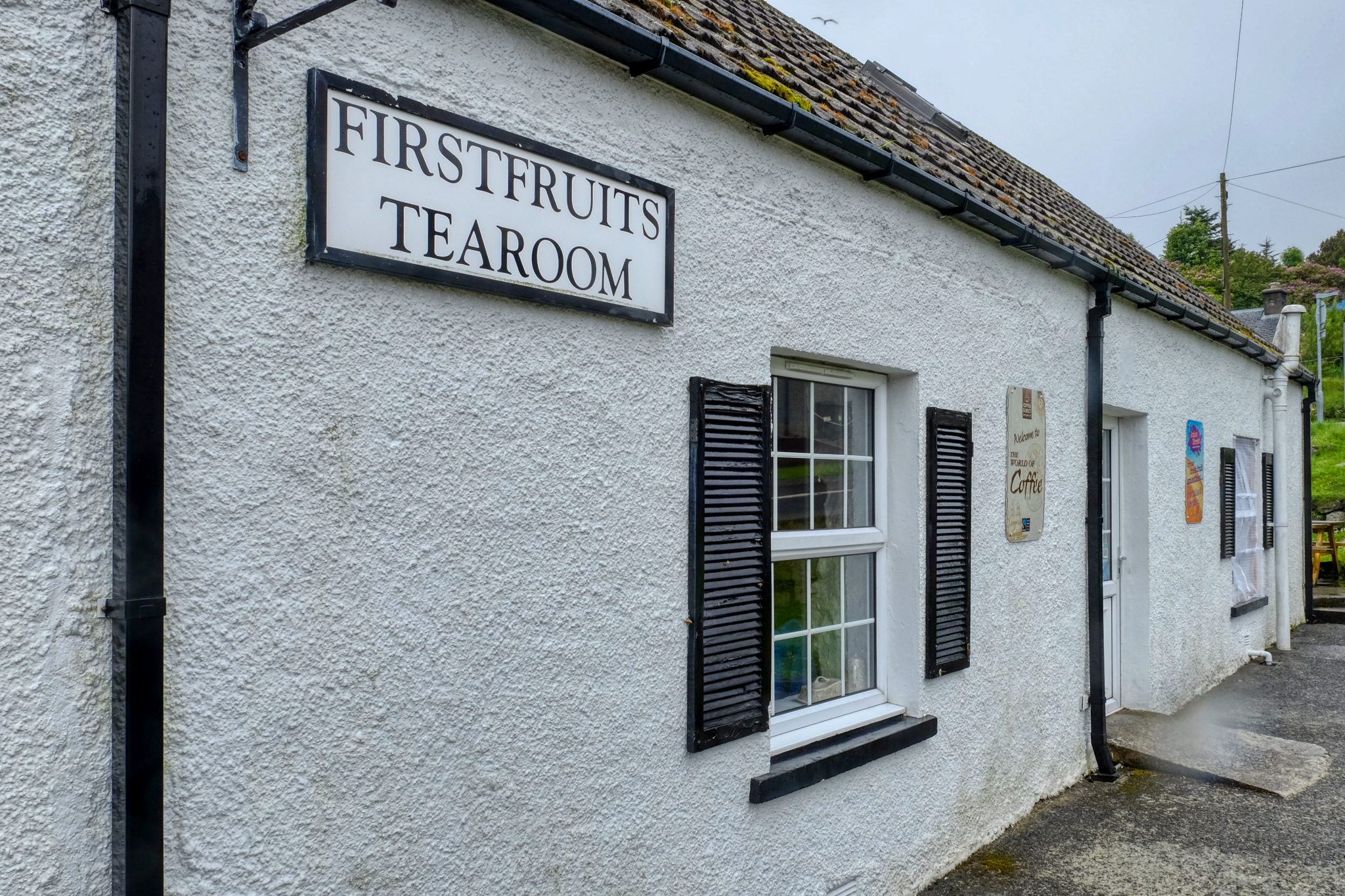 We eagerly explored the few small villages out on the islands. A nice cup of coffee and scones was very welcome.
We eagerly explored the few small villages out on the islands. A nice cup of coffee and scones was very welcome.
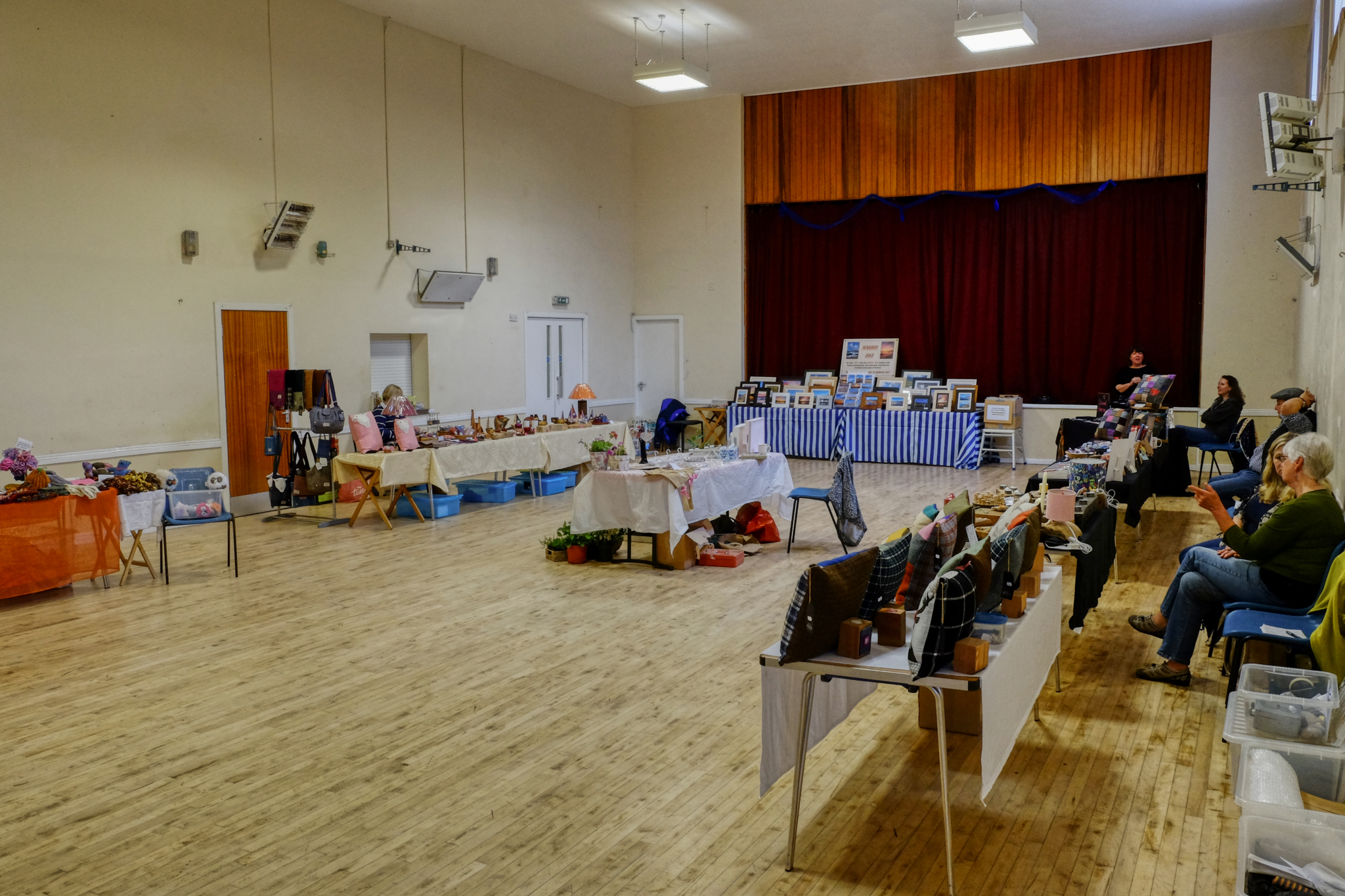 We always stop whenever we see a "craft sale" sign. You never know what amazing things you might find . . . and we have found and purchased many fantastic things on our world travels in these kinds of places . . . but not at this place. We always try to buy something, but could not find a thing we wanted here. Sorry ladies.
We always stop whenever we see a "craft sale" sign. You never know what amazing things you might find . . . and we have found and purchased many fantastic things on our world travels in these kinds of places . . . but not at this place. We always try to buy something, but could not find a thing we wanted here. Sorry ladies.
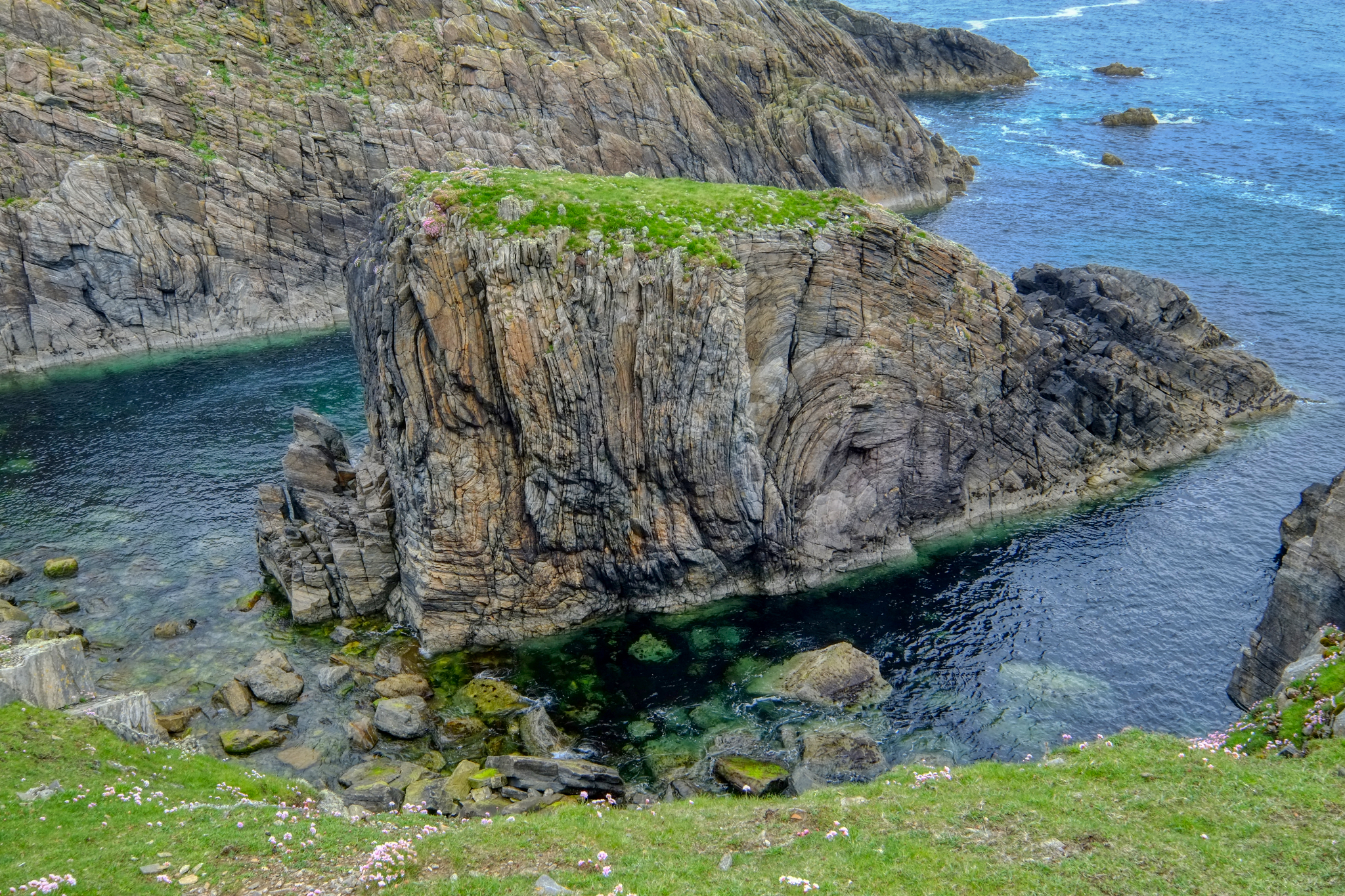
After five days on the small roads, we eventually made it to the very tip top of the chain of islands that make up the Outer Hebrides. And we were not disappointed!
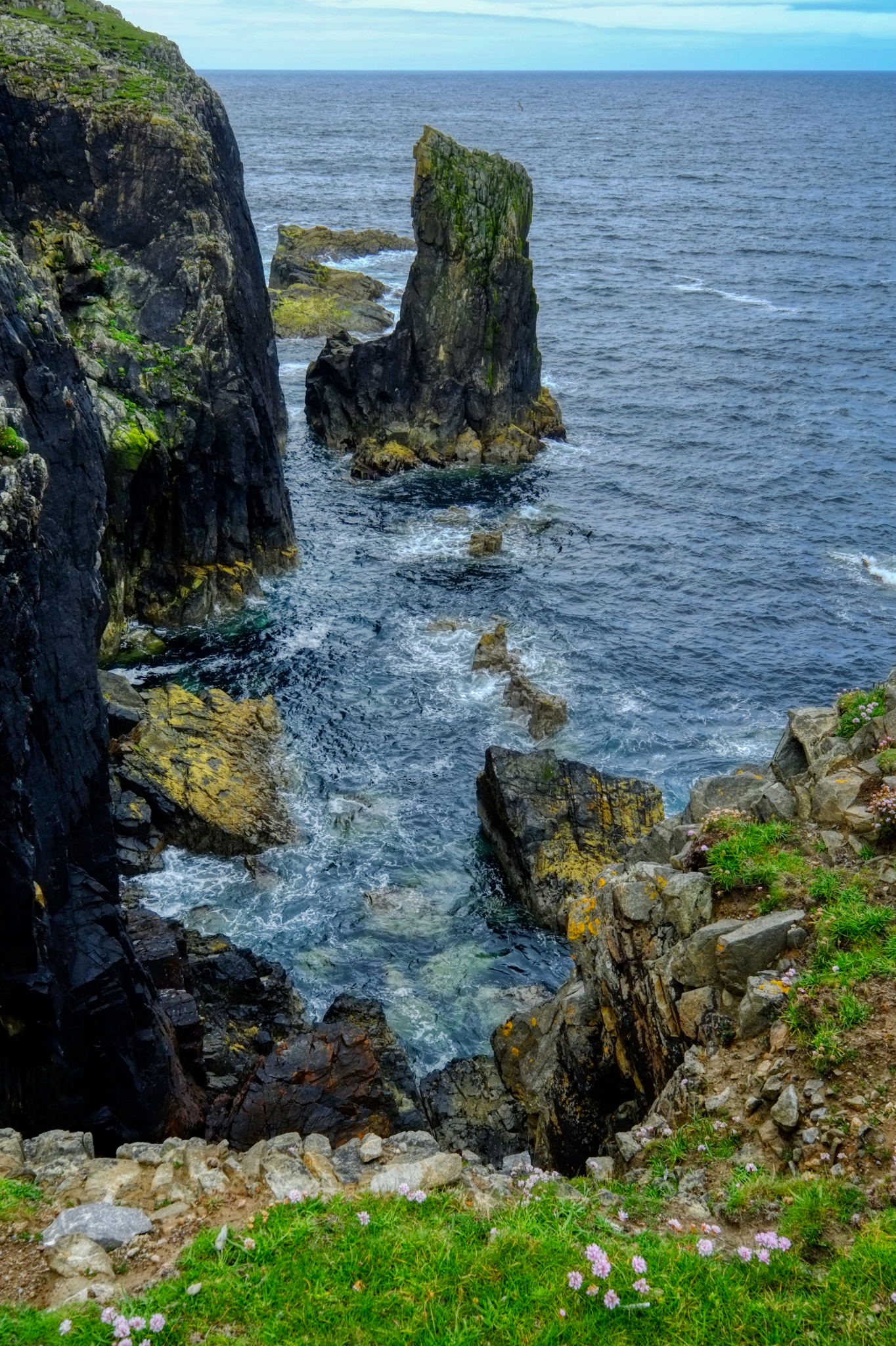 Fantastic cliff top views at the northernmost tip of the Hebrides.
Fantastic cliff top views at the northernmost tip of the Hebrides.
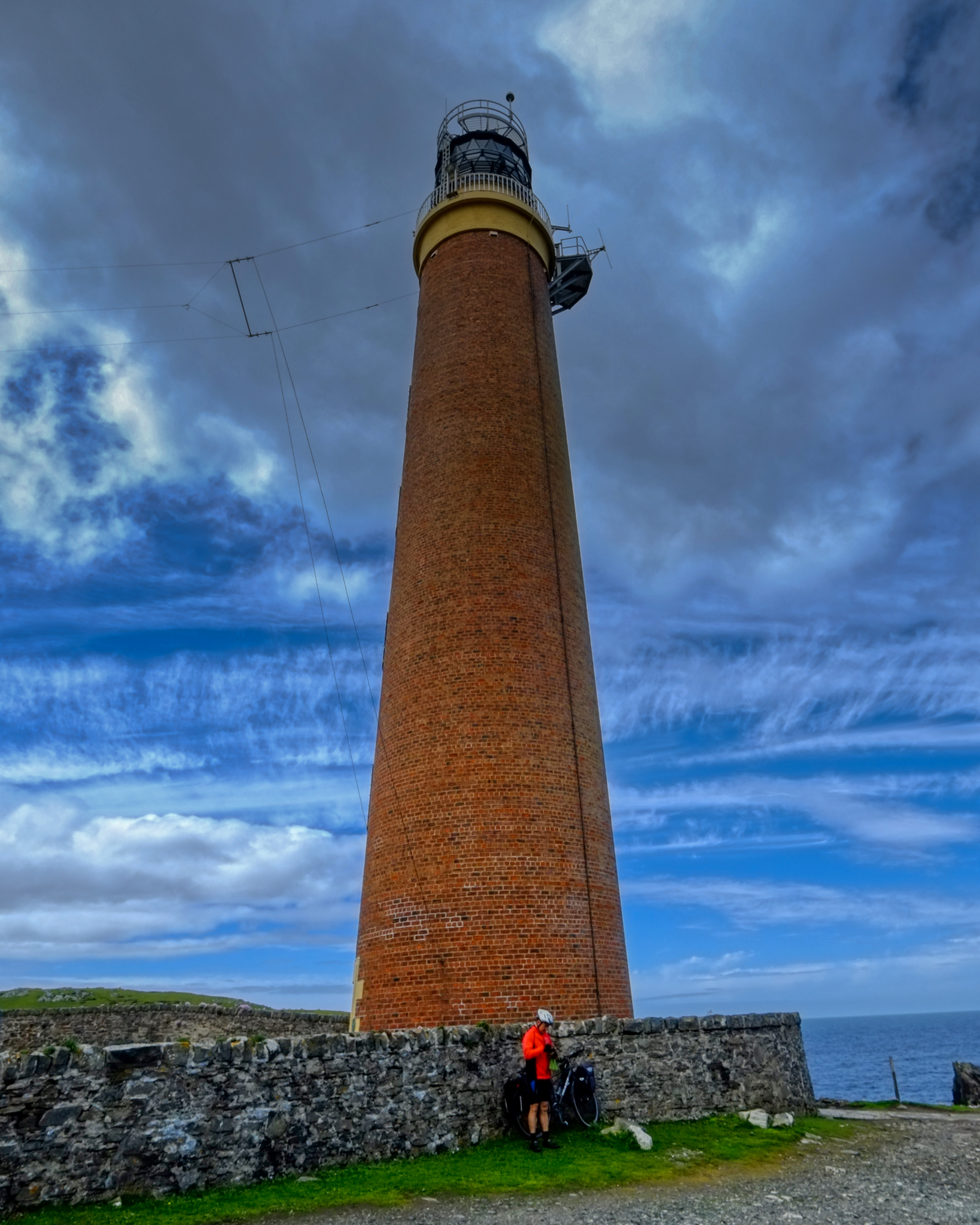 A lighthouse sits at the tip of the Isle of Lewis and Harris. This man rode his bicycle all the way from his home in London, England. He was going to turn around here and ride back down the east coast to get home.
A lighthouse sits at the tip of the Isle of Lewis and Harris. This man rode his bicycle all the way from his home in London, England. He was going to turn around here and ride back down the east coast to get home.
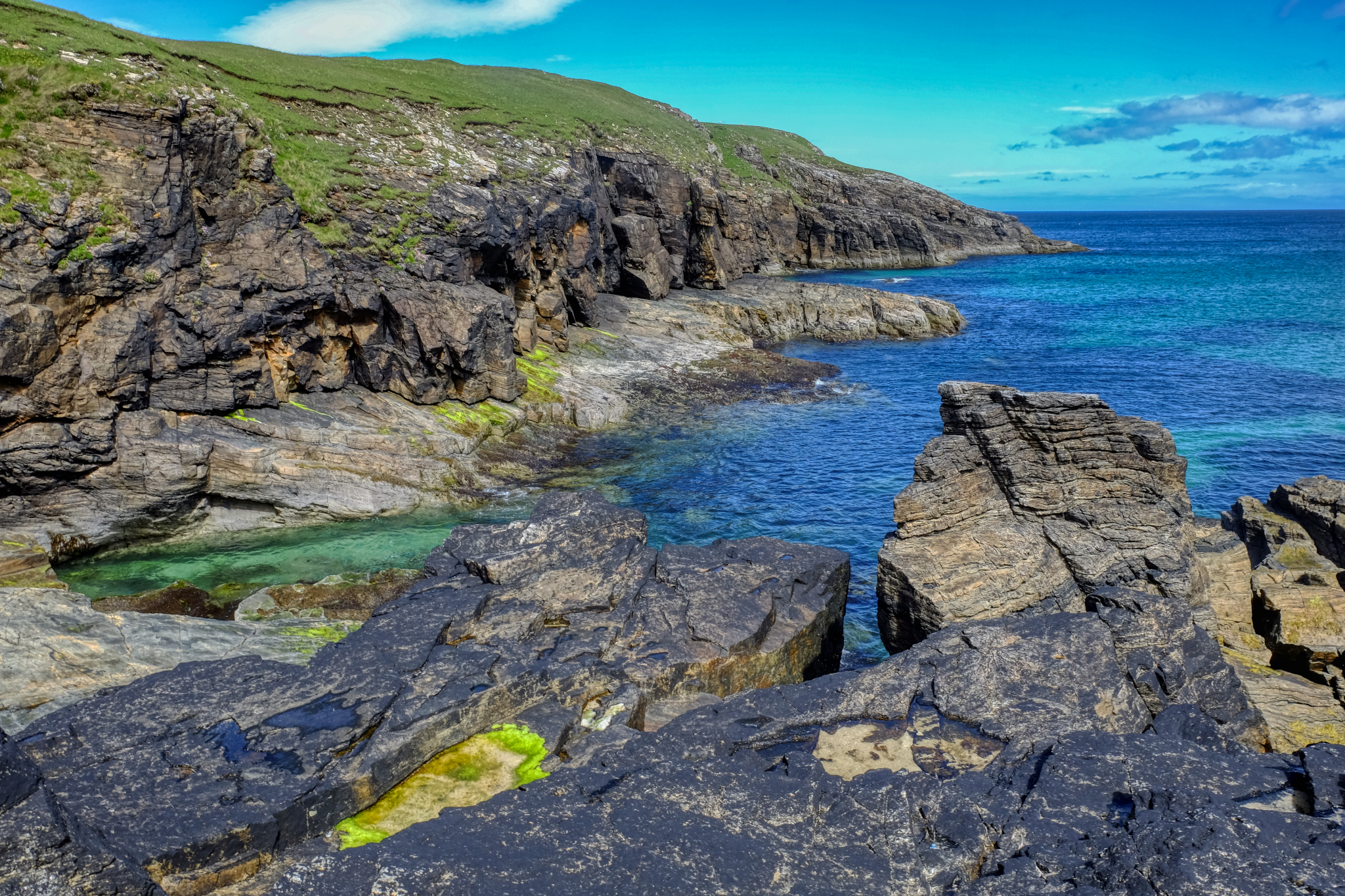 We drove back along the north coast as much as possible toward Stornaway and our ferry back to the mainland of Scotland.
We drove back along the north coast as much as possible toward Stornaway and our ferry back to the mainland of Scotland.
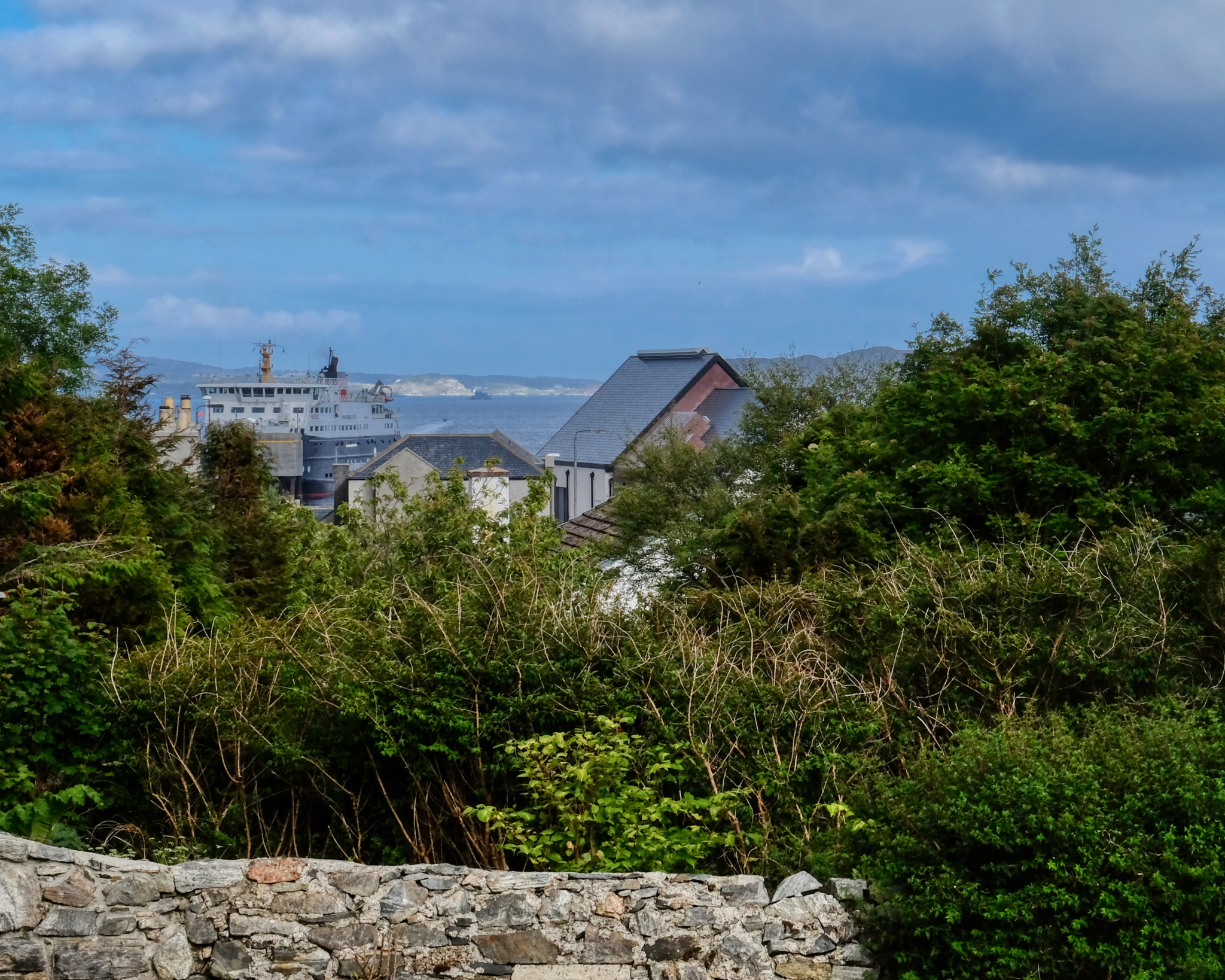 In Stornoway with our waiting ferry . . . but not until morning of the next day.
In Stornoway with our waiting ferry . . . but not until morning of the next day.
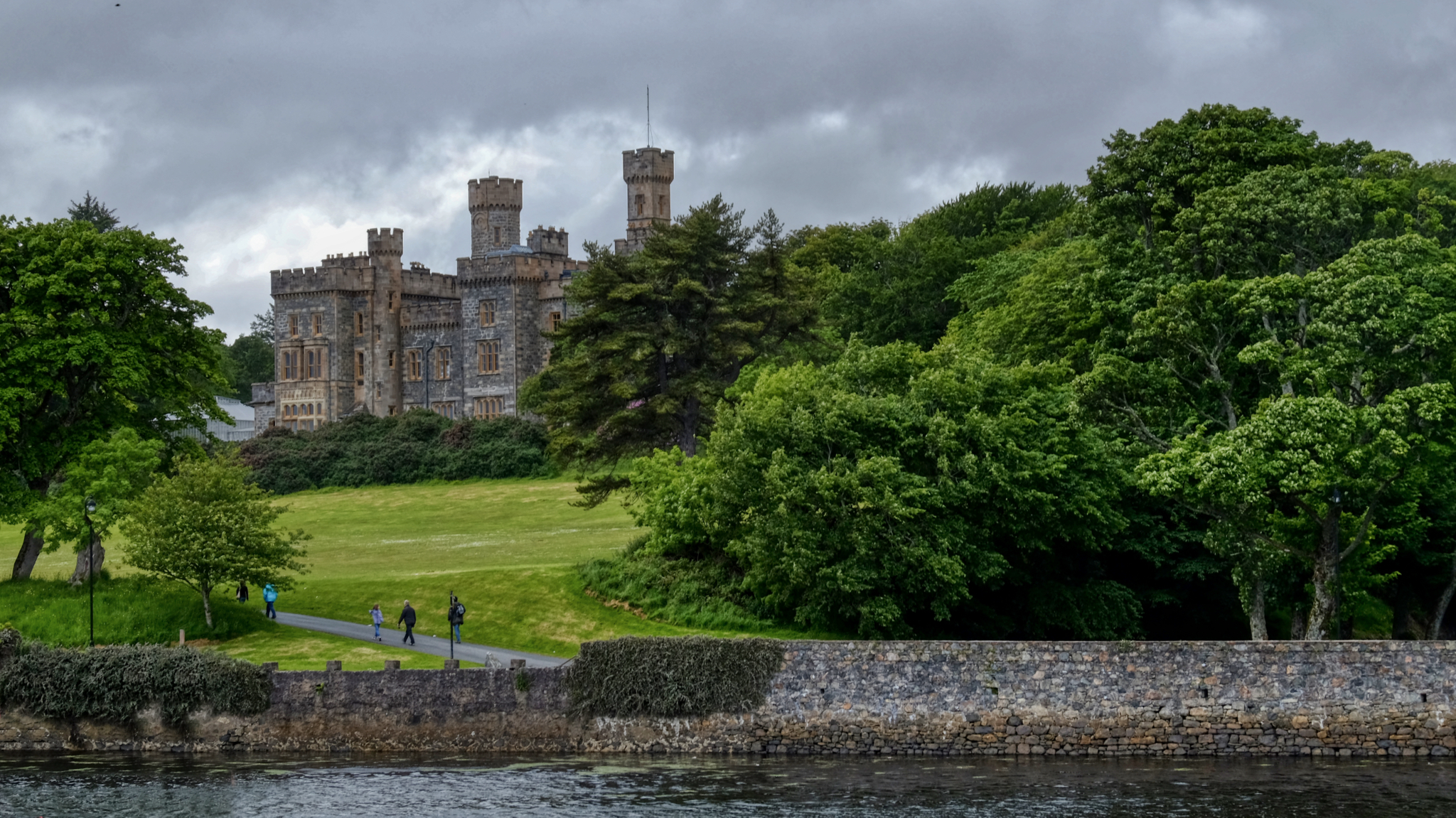 Lews Castle on Stornoway yacht harbour.
Lews Castle on Stornoway yacht harbour.
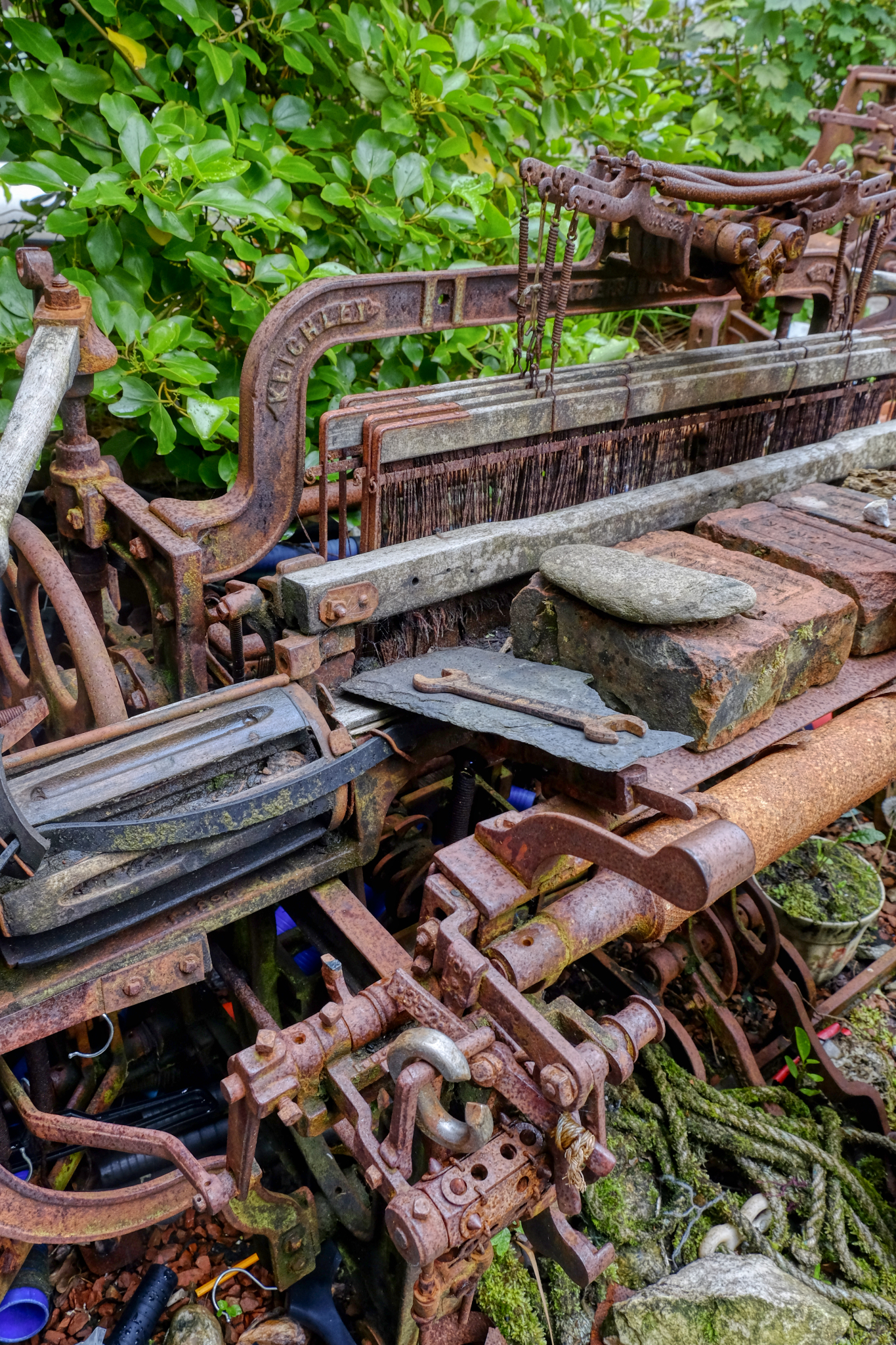 We explored the small town of Stornoway. I loved this old weathered rusty loom sitting outside a tweed museum.
We explored the small town of Stornoway. I loved this old weathered rusty loom sitting outside a tweed museum.
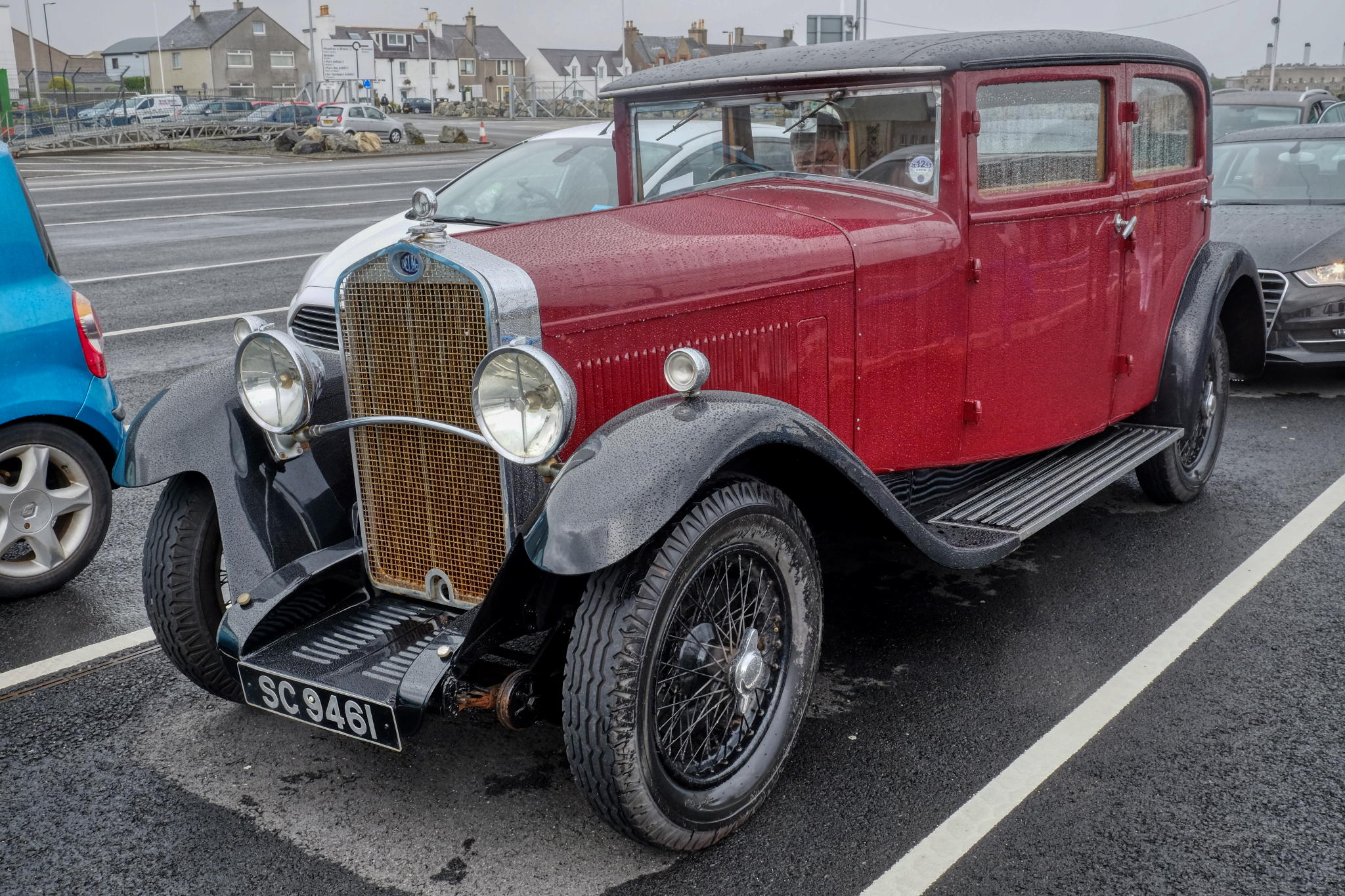 The next morning we joined the line-up at the ferry terminal for our passage home. Again, in the rain, there were many old classic cars waiting, including this Delage.
The next morning we joined the line-up at the ferry terminal for our passage home. Again, in the rain, there were many old classic cars waiting, including this Delage.
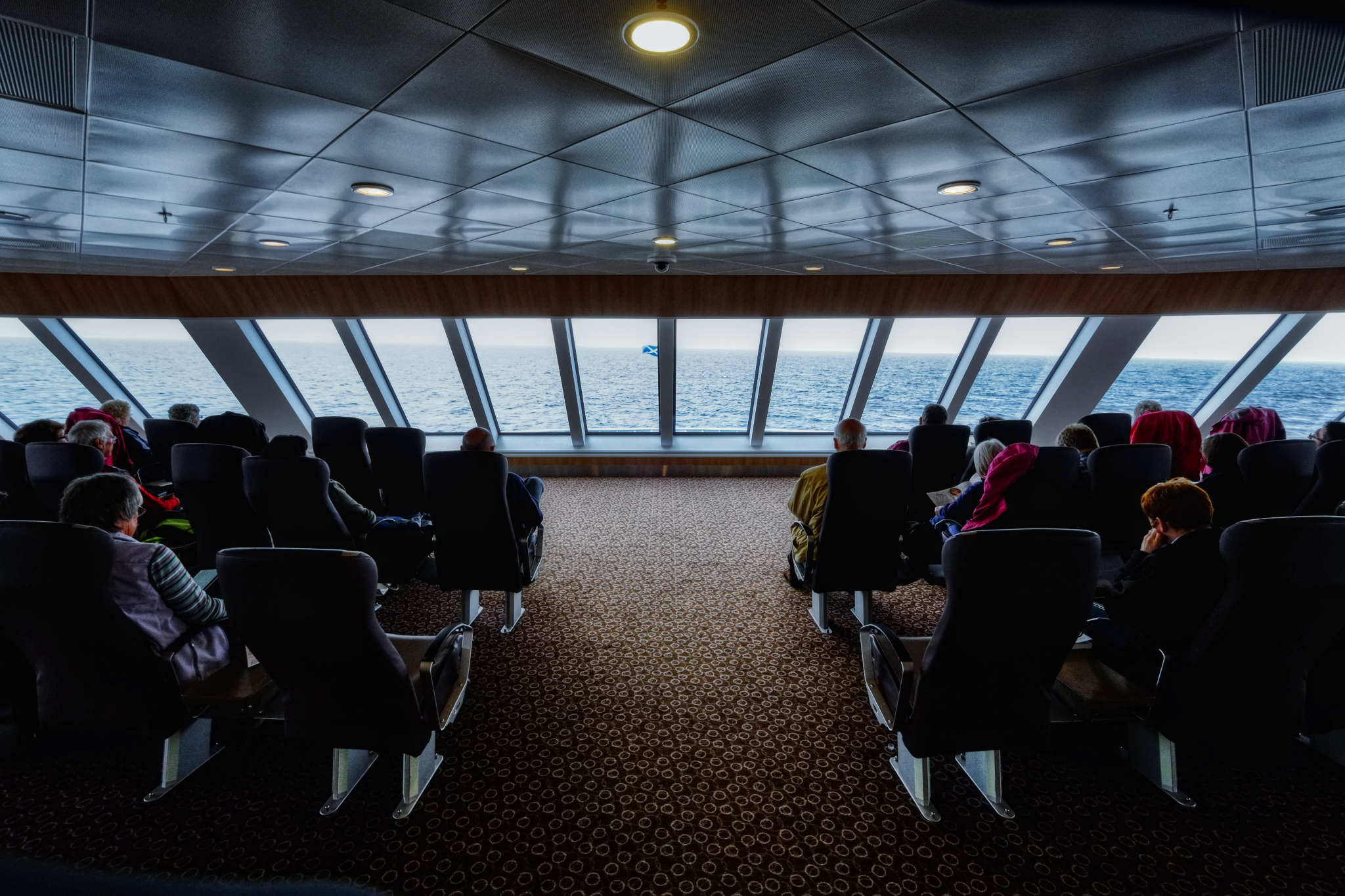 Heading home on the big ferry.
Heading home on the big ferry.
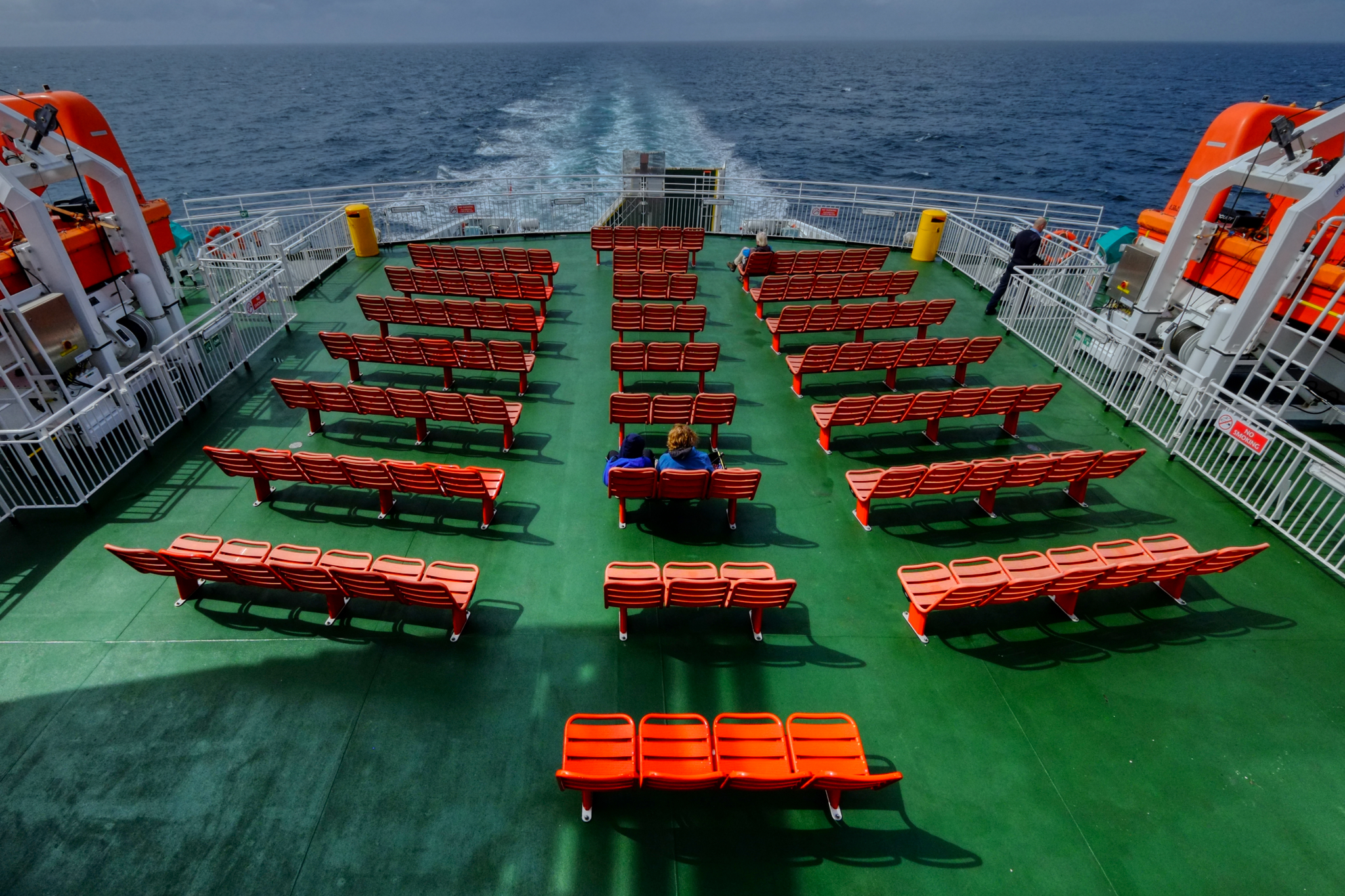 I spent most of my time on the return ferry trip sitting out n the wind on the aft deck. Glorious.
I spent most of my time on the return ferry trip sitting out n the wind on the aft deck. Glorious.
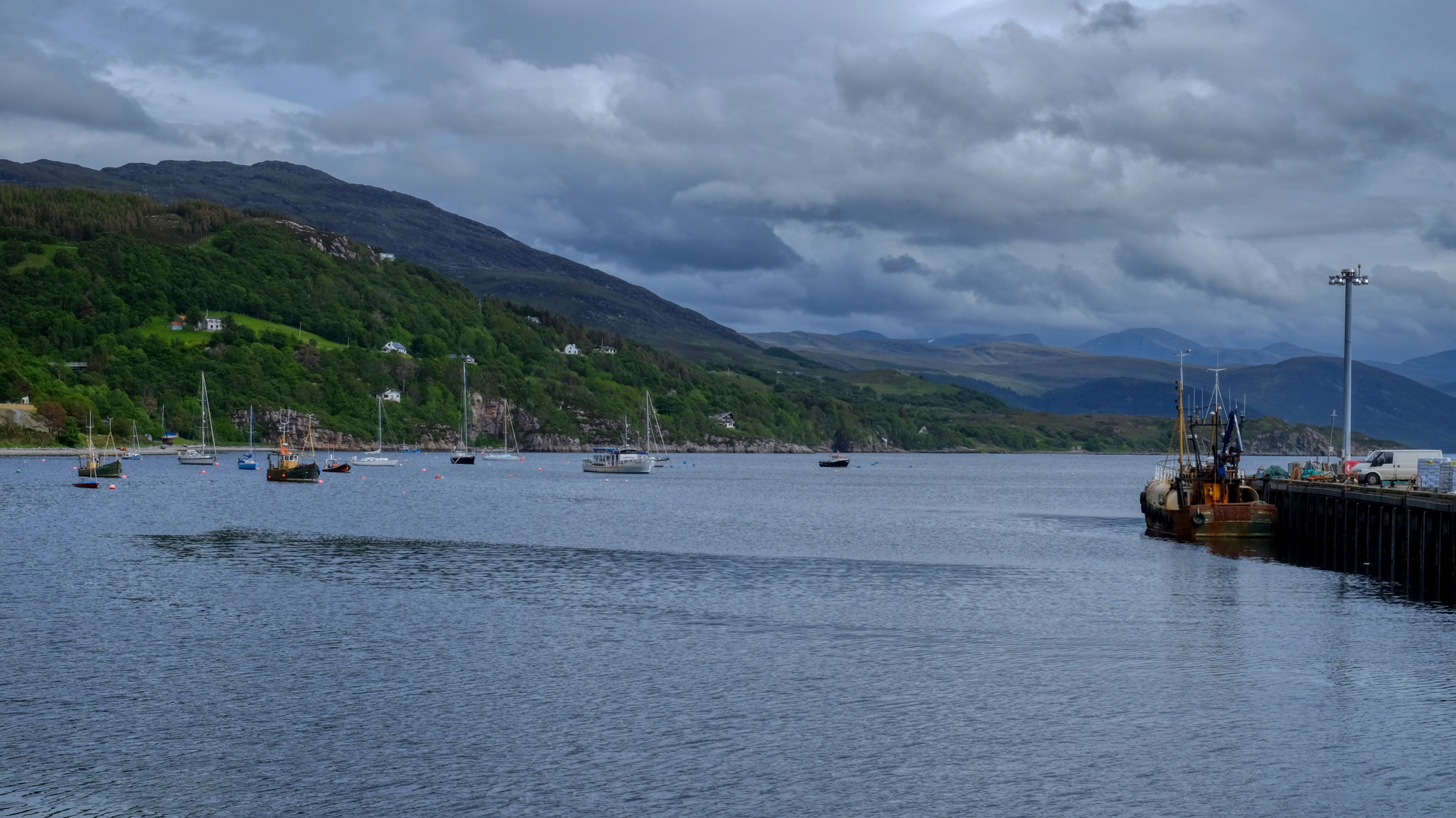 Arriving in Ullapool Harbour after a 3 hour cruise.
Arriving in Ullapool Harbour after a 3 hour cruise.
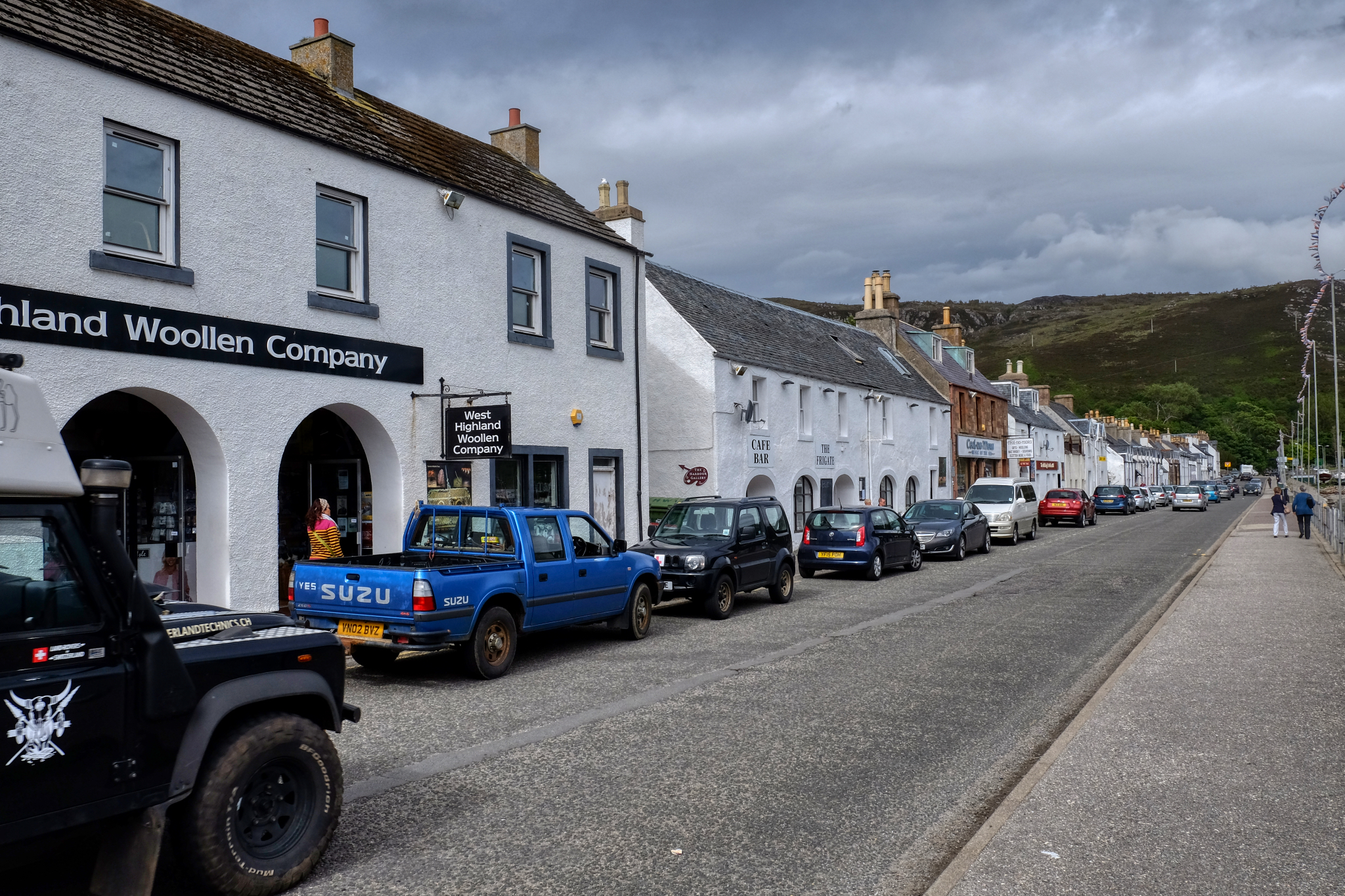 Harbour Street Ullapool.
Harbour Street Ullapool.
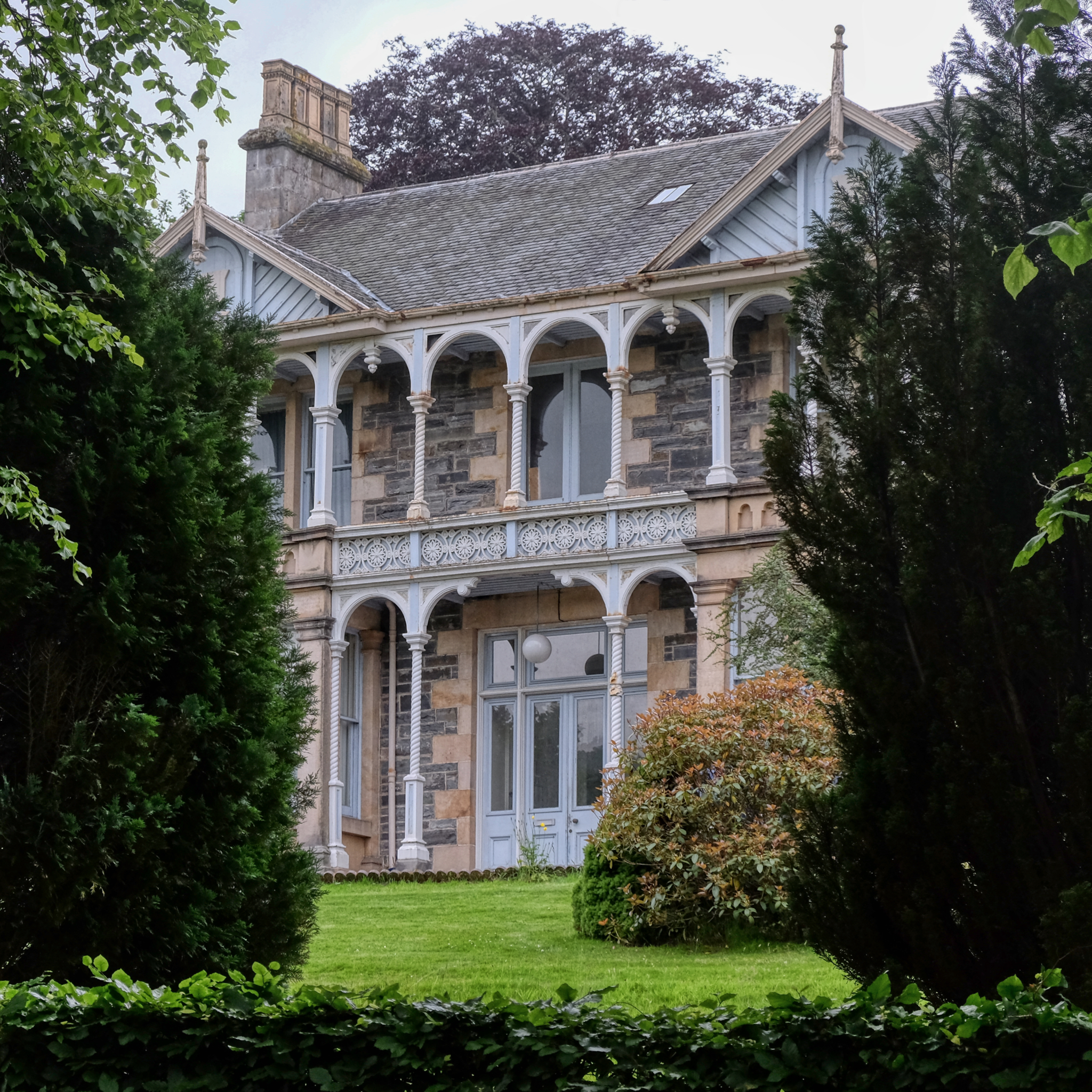 We stopped halfway home between Ullapool and Aberdeen at a rural hotel that turned out to be on a tour bus company hotel with a HUGE dining room full of French and Hungarian bus tourists. It was loud and fun!
We stopped halfway home between Ullapool and Aberdeen at a rural hotel that turned out to be on a tour bus company hotel with a HUGE dining room full of French and Hungarian bus tourists. It was loud and fun!
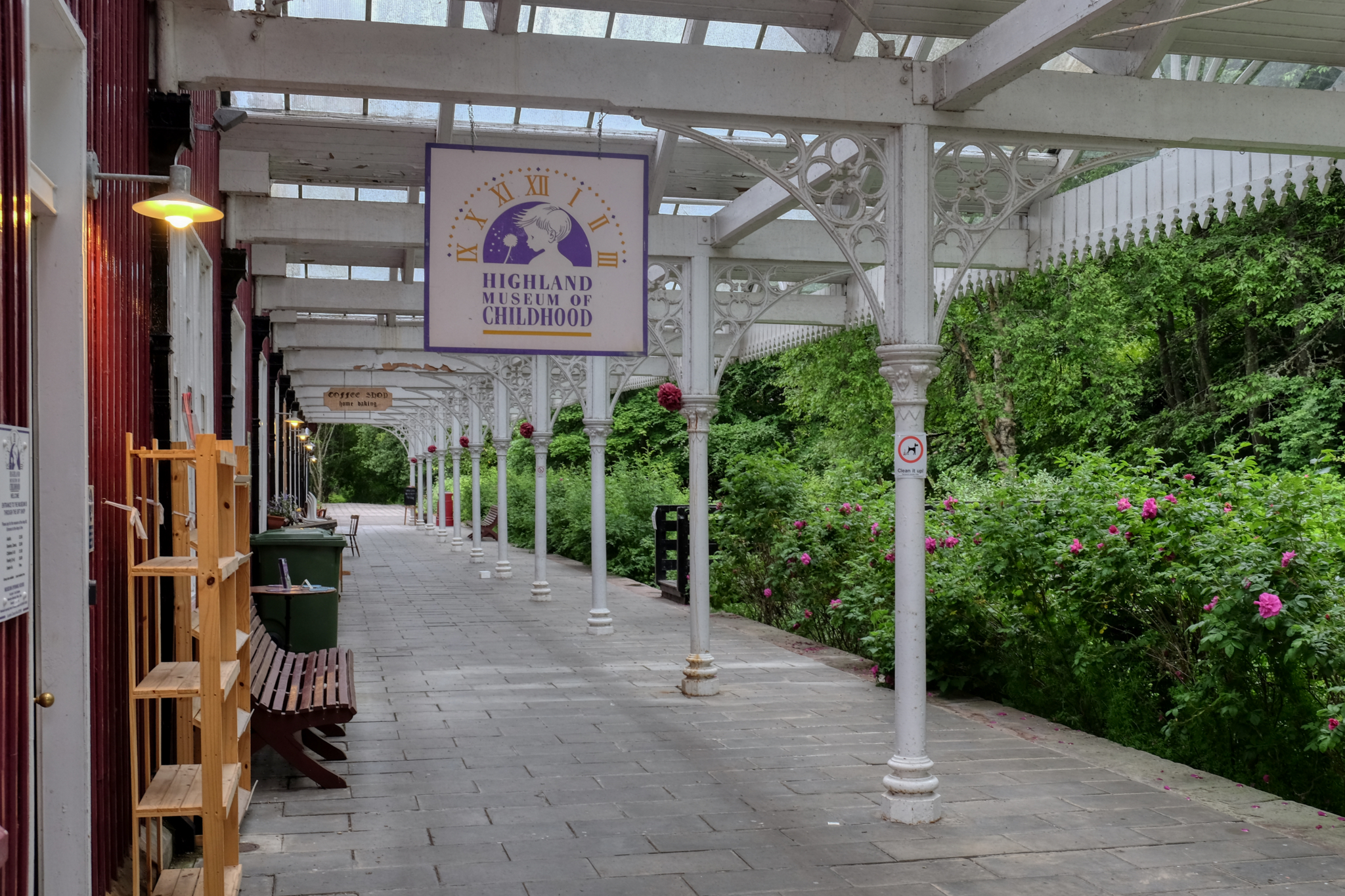 We walked around the small village near the tourist hotel and discovered the Highland Museum of Childhood . . . an interesting name. It was closed . . . like my childhood.
We walked around the small village near the tourist hotel and discovered the Highland Museum of Childhood . . . an interesting name. It was closed . . . like my childhood.
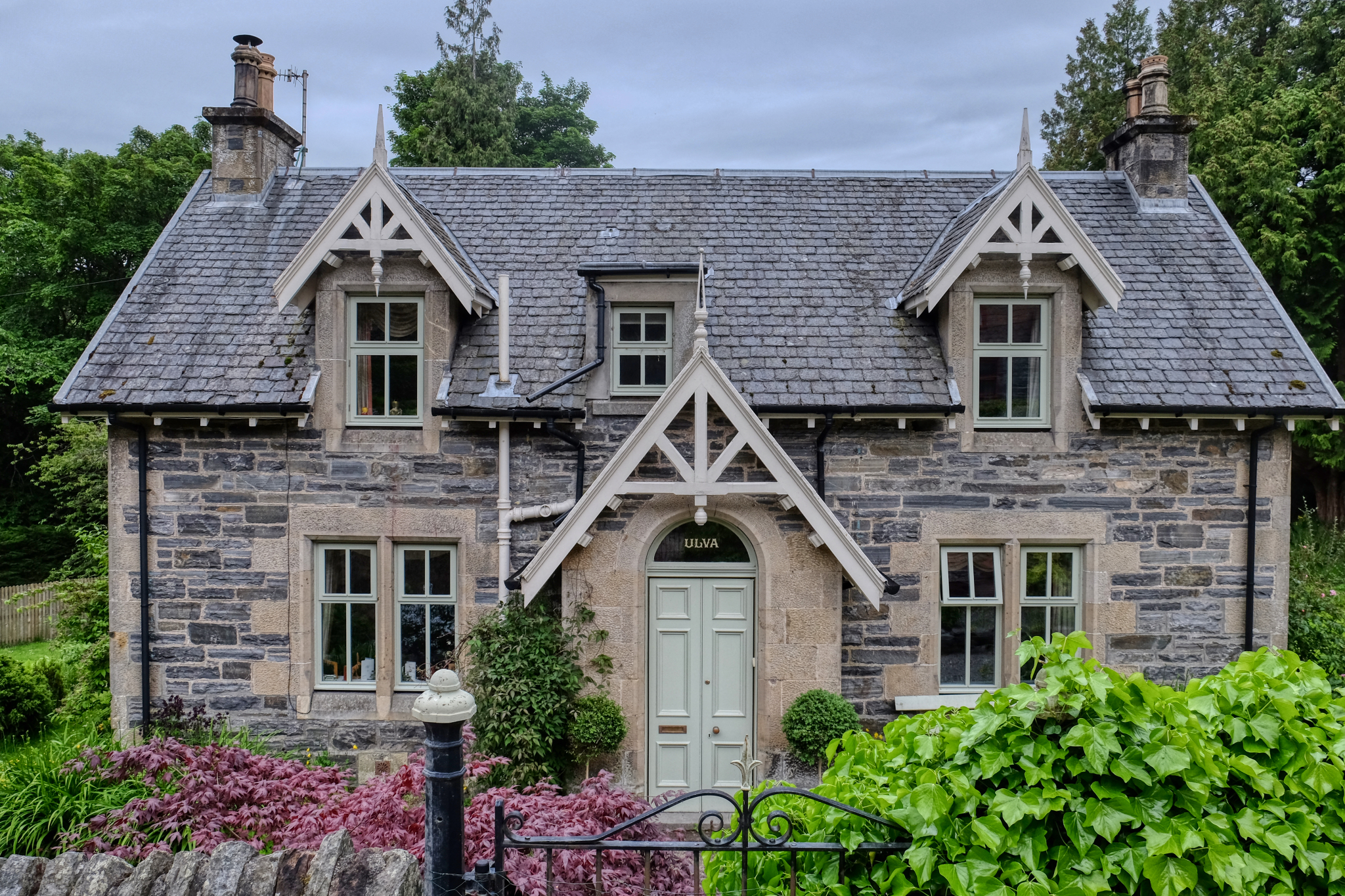 All the houses in the village were named. Ulva . . . named after an island in the Inner Hebrides of Scotland, off the west coast of the Isle of Mull.
All the houses in the village were named. Ulva . . . named after an island in the Inner Hebrides of Scotland, off the west coast of the Isle of Mull.
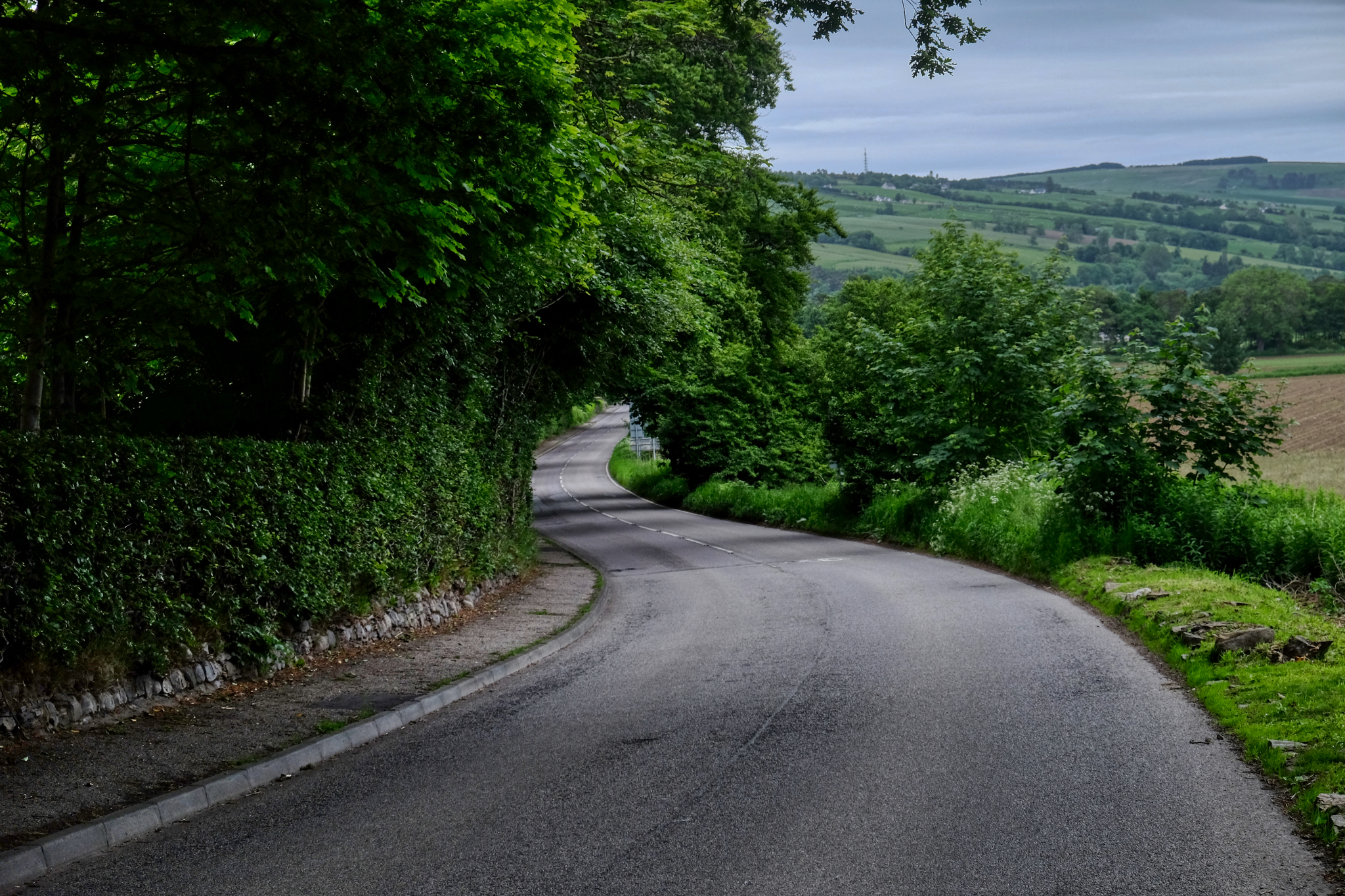 The next morning we were off down the Scottish country roads toward our home in Aberdeen.
The next morning we were off down the Scottish country roads toward our home in Aberdeen.
First Post-Lockdown Jaunt: Two Days in Rural Khao Yai!
 Wednesday, June 3, 2020 at 2:18PM
Wednesday, June 3, 2020 at 2:18PM 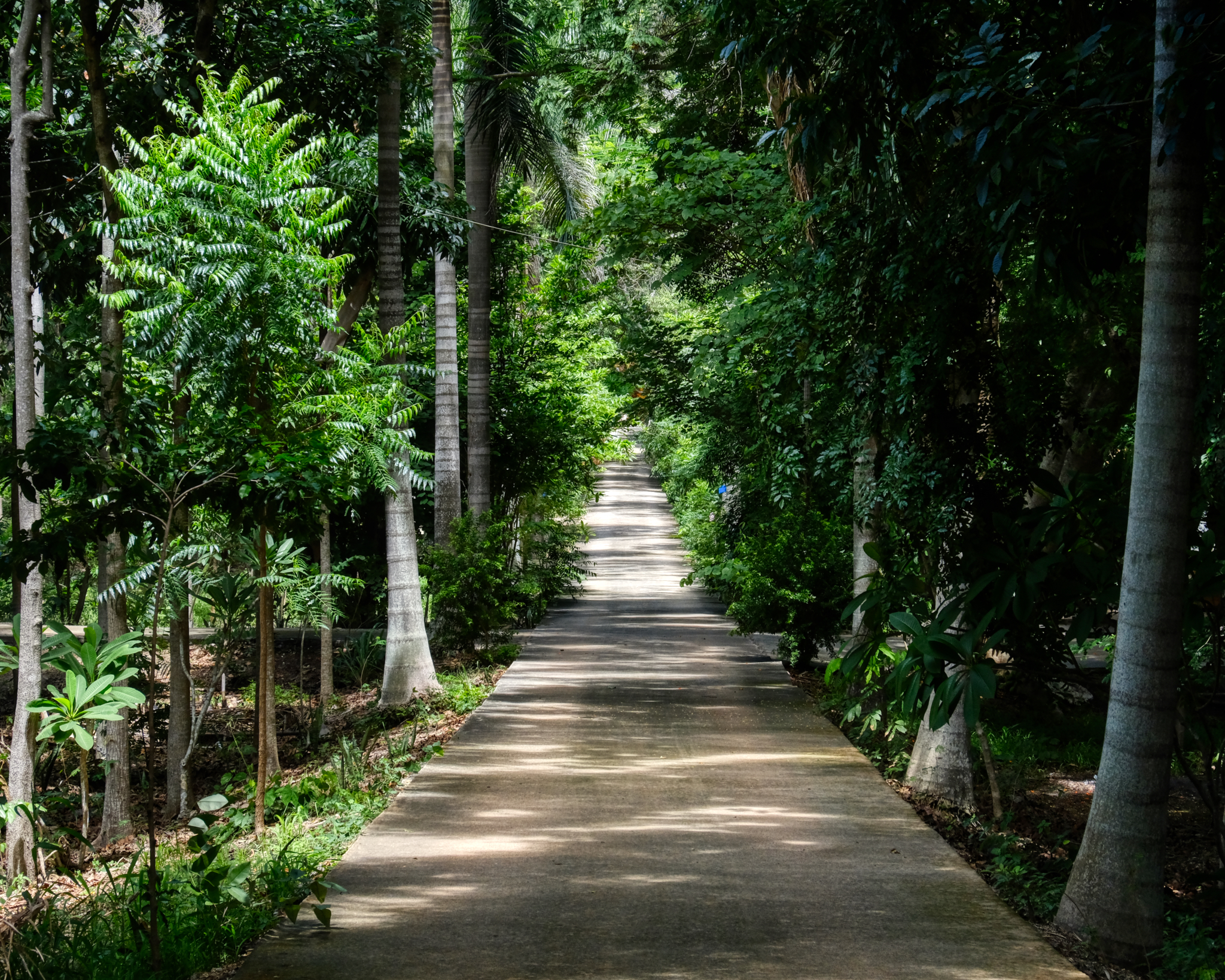
Khao Yai (literally, "large mountain" in the Thai language) is a region of Thailand about a three hour drive northeast of Bangkok. It is thought of as an area with a national park, mountains, and nature, although the mountains are really just tall hills. There is a lot to see in this part of rural Thailand . . . and one very special temple: Wat PA Phrom Prathan (last half of this entry).
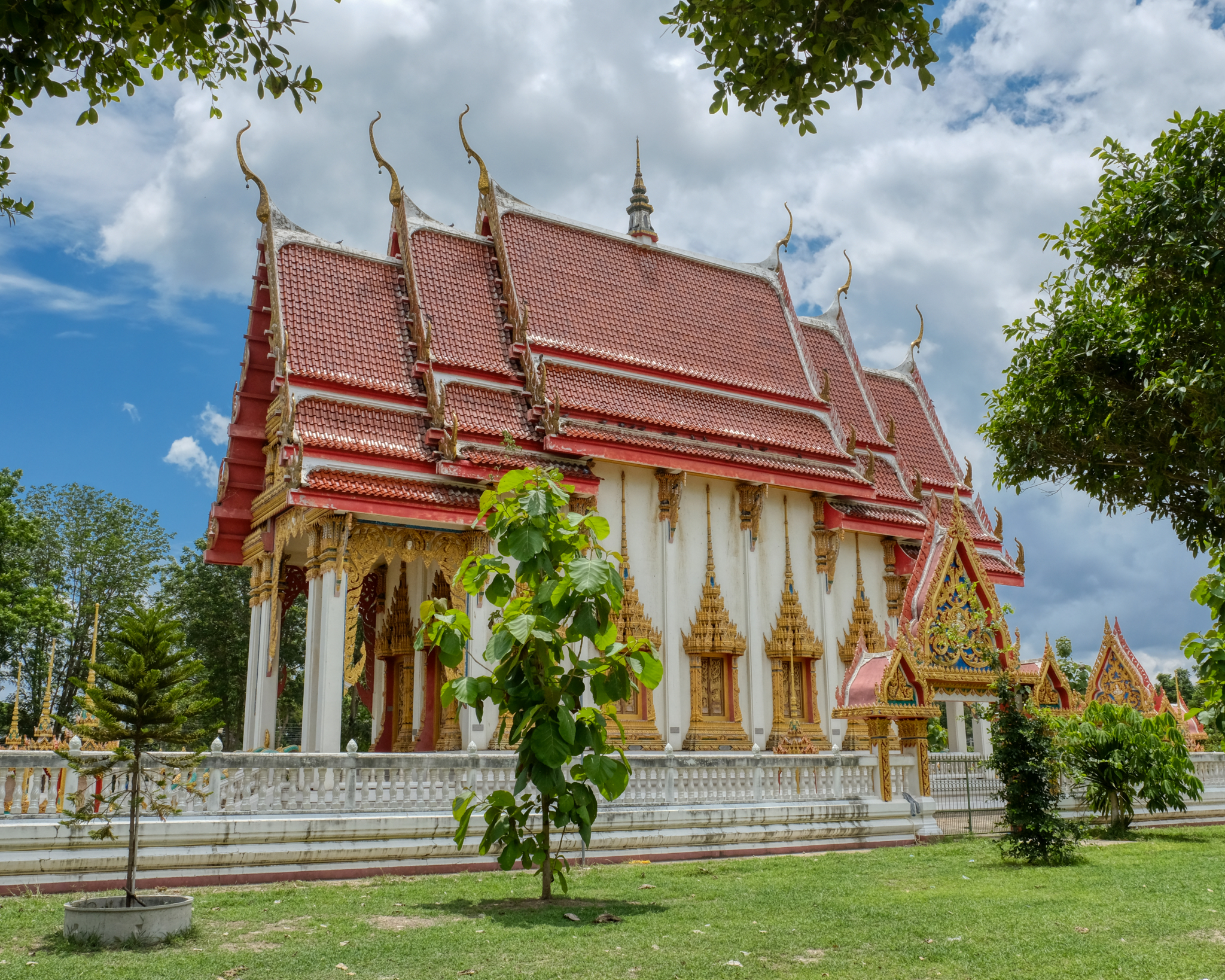 While my wife played golf with her golfing gang, I escaped to the small back roads. There are always Buddhist temples (wats) every 4-5 kilometers along almost every road in Thailand.
While my wife played golf with her golfing gang, I escaped to the small back roads. There are always Buddhist temples (wats) every 4-5 kilometers along almost every road in Thailand.
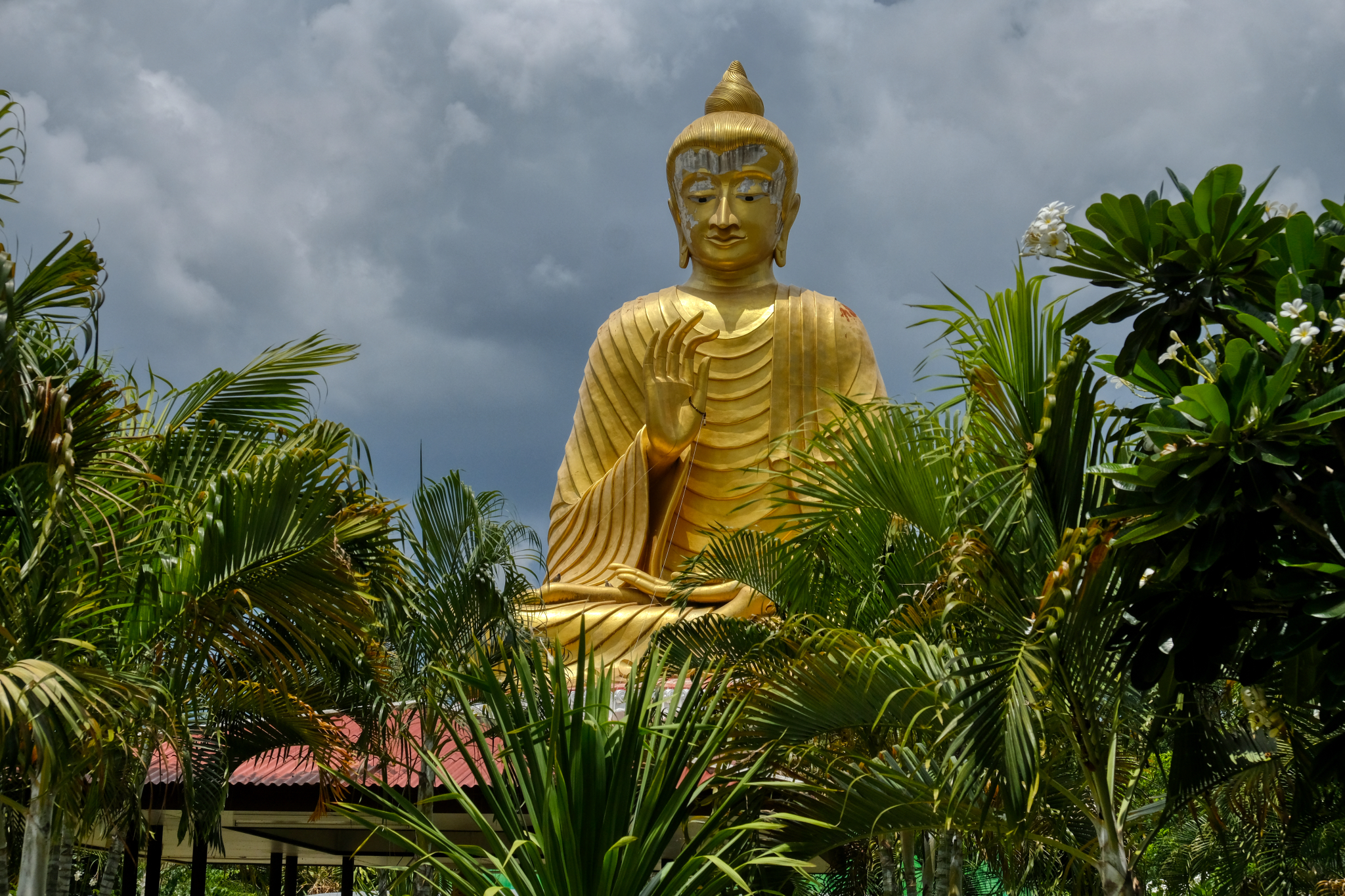 I stopped in at many of these roadside wats and walked around and took a few photos. I have lived in Thailand for a very long time and have been in literally many hundreds of these Thai wats.
I stopped in at many of these roadside wats and walked around and took a few photos. I have lived in Thailand for a very long time and have been in literally many hundreds of these Thai wats.
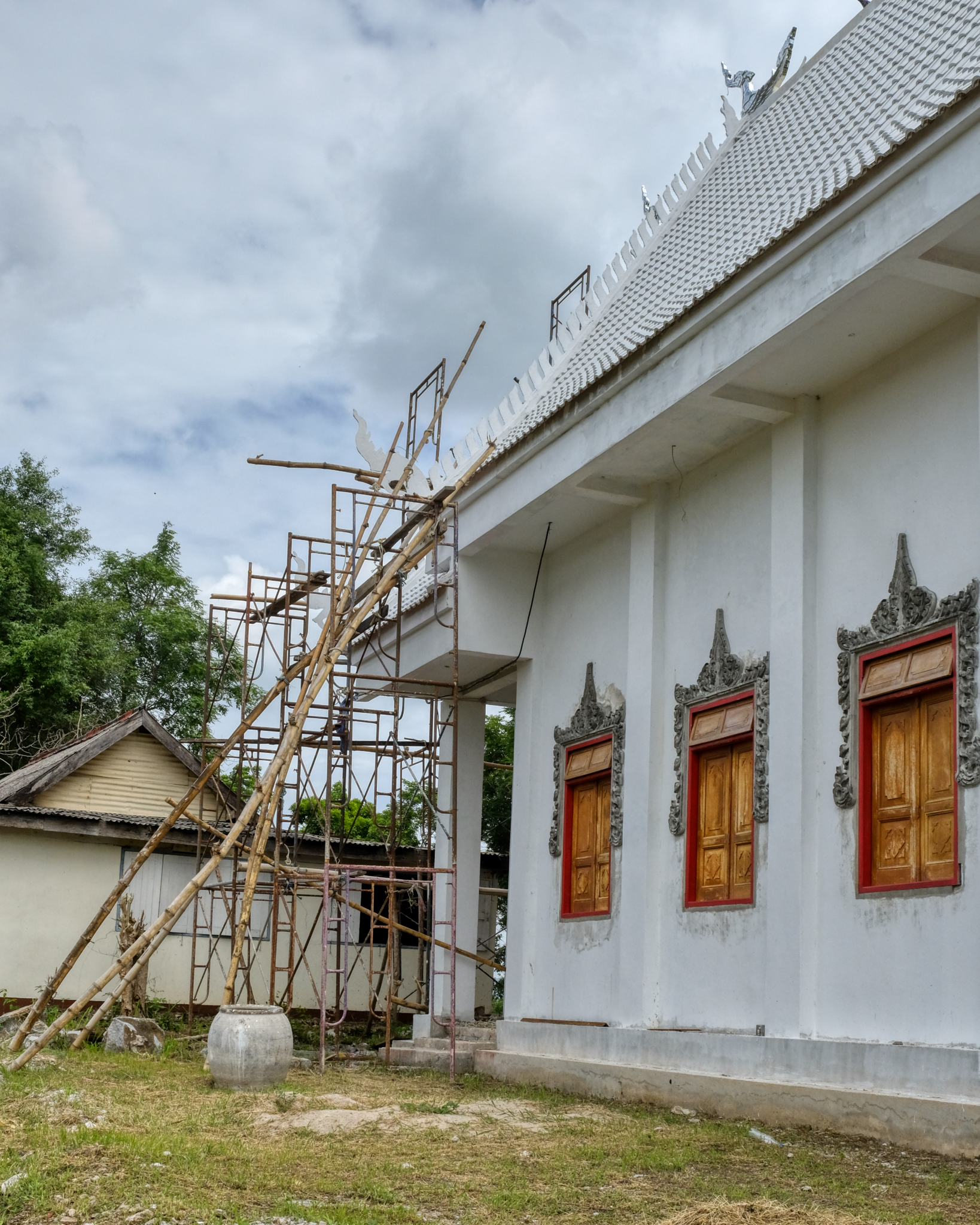 Rural Thai wats can be very similar, but there are always surprises and idiosyncrasies. This wat was in the process of building a new temple building.
Rural Thai wats can be very similar, but there are always surprises and idiosyncrasies. This wat was in the process of building a new temple building.
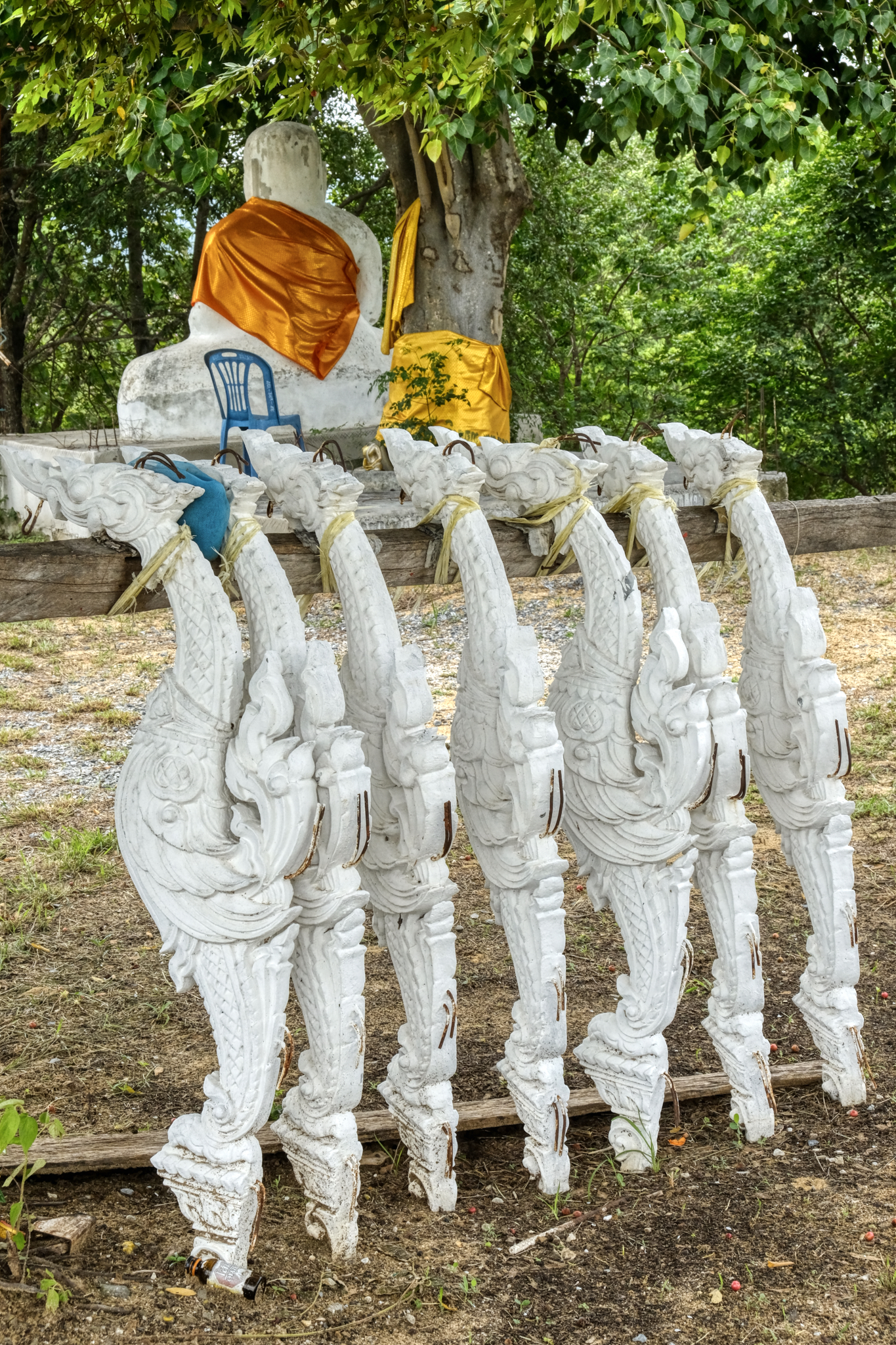 Pre cast decor waiting too be added to the exterior of the new wat structure.
Pre cast decor waiting too be added to the exterior of the new wat structure.
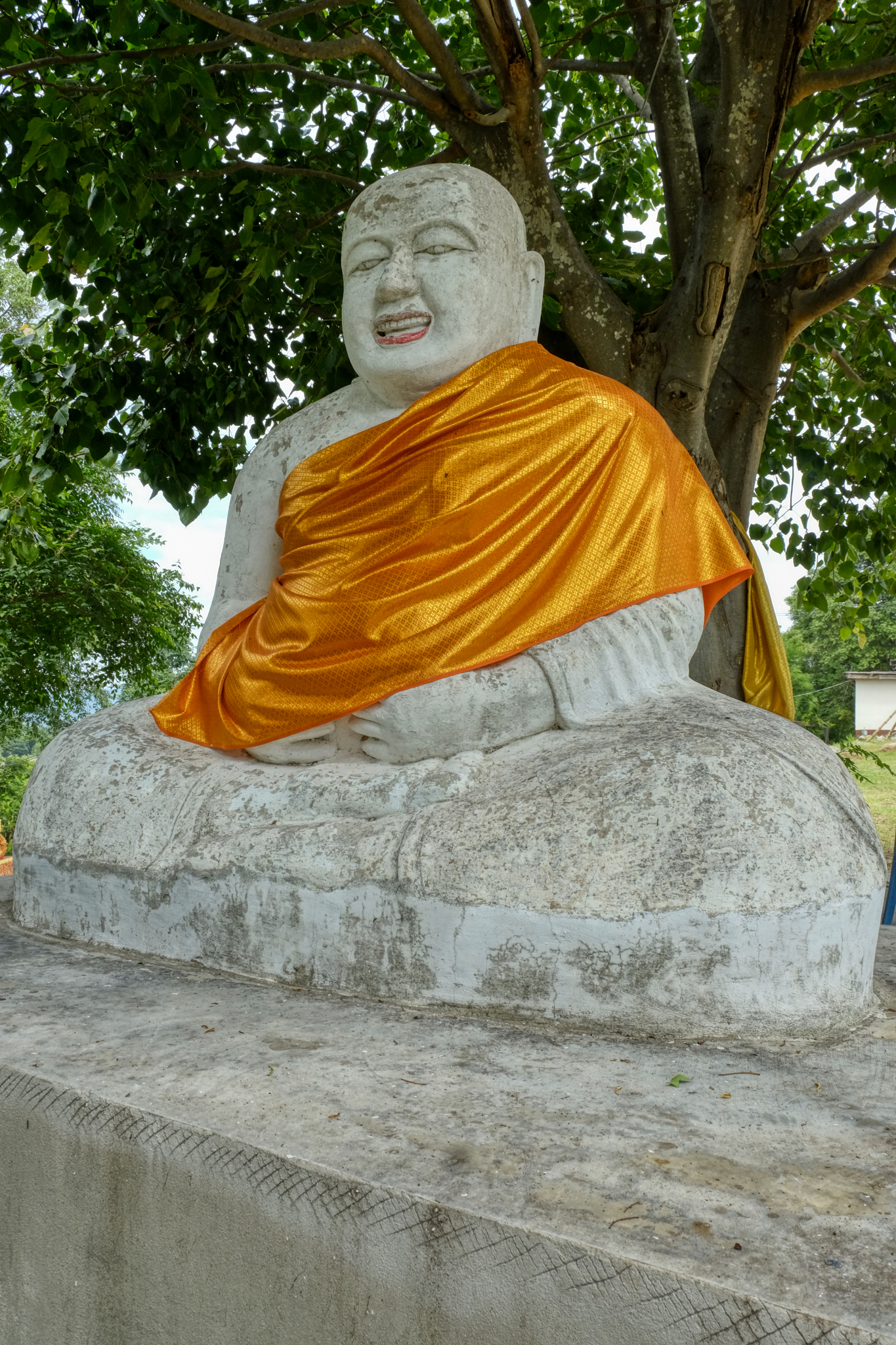 This Buddha image was very unusual for Thailand! It seems more Japanese . . .
This Buddha image was very unusual for Thailand! It seems more Japanese . . .
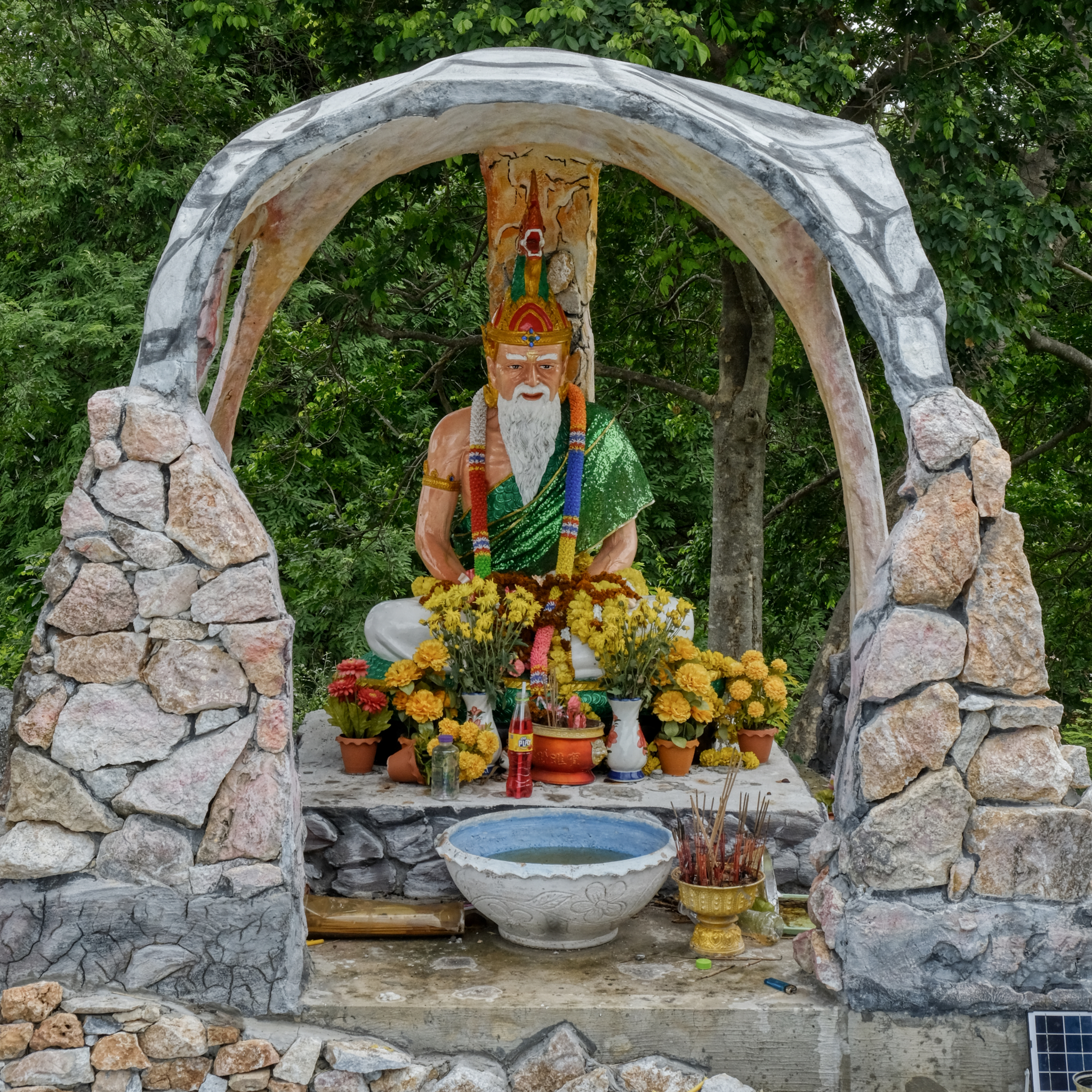 You have to remember that what is found inside a Buddhist temple was put there by the donors, not necessarily by monks who live there. This is a grotto dedicated to a Hindu guru. It is not uncommon to see Hindu gods and iconography in Thai wats.
You have to remember that what is found inside a Buddhist temple was put there by the donors, not necessarily by monks who live there. This is a grotto dedicated to a Hindu guru. It is not uncommon to see Hindu gods and iconography in Thai wats.
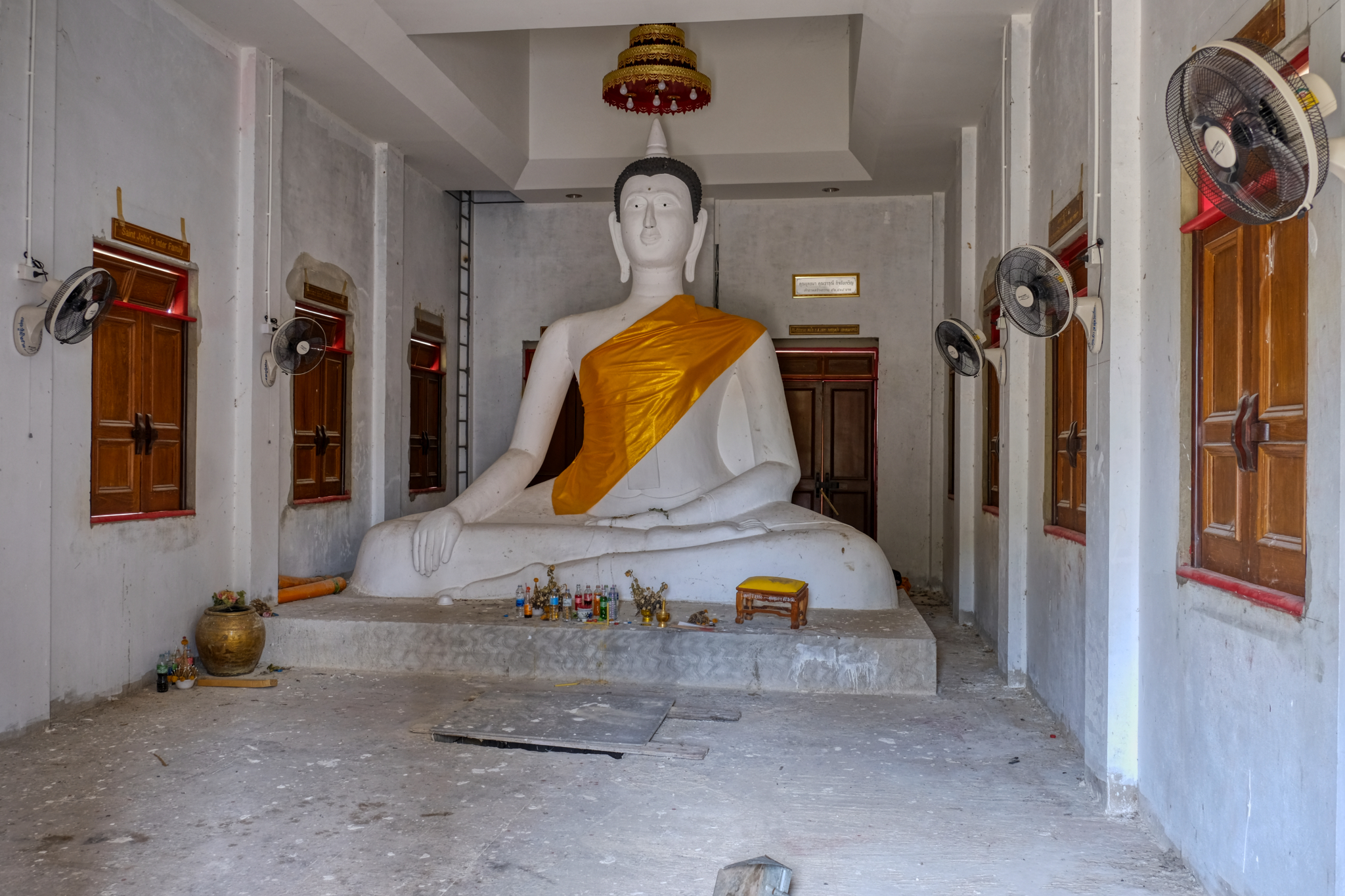 Having been a sponsor of the construction of a wat myself, I am always excited to see a new wat being built . . . I especially enjoy the interiors . . . . a wonderfully naive Buddha statue awaiting a gold leaf covering, I assume.
Having been a sponsor of the construction of a wat myself, I am always excited to see a new wat being built . . . I especially enjoy the interiors . . . . a wonderfully naive Buddha statue awaiting a gold leaf covering, I assume.
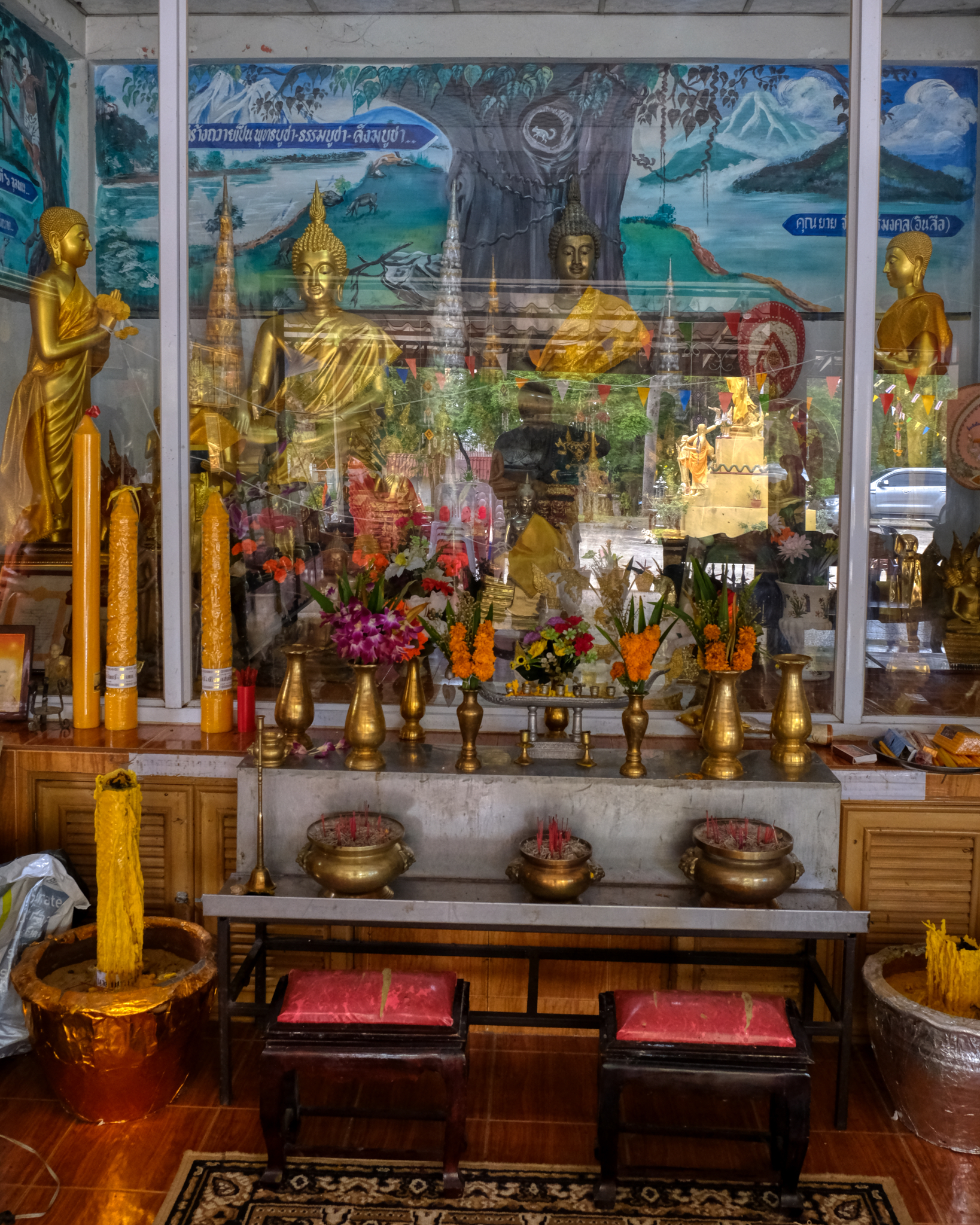 The wat did not have a proper temple building. This is the altar the new building will replace . . . just a covered portico.
The wat did not have a proper temple building. This is the altar the new building will replace . . . just a covered portico.
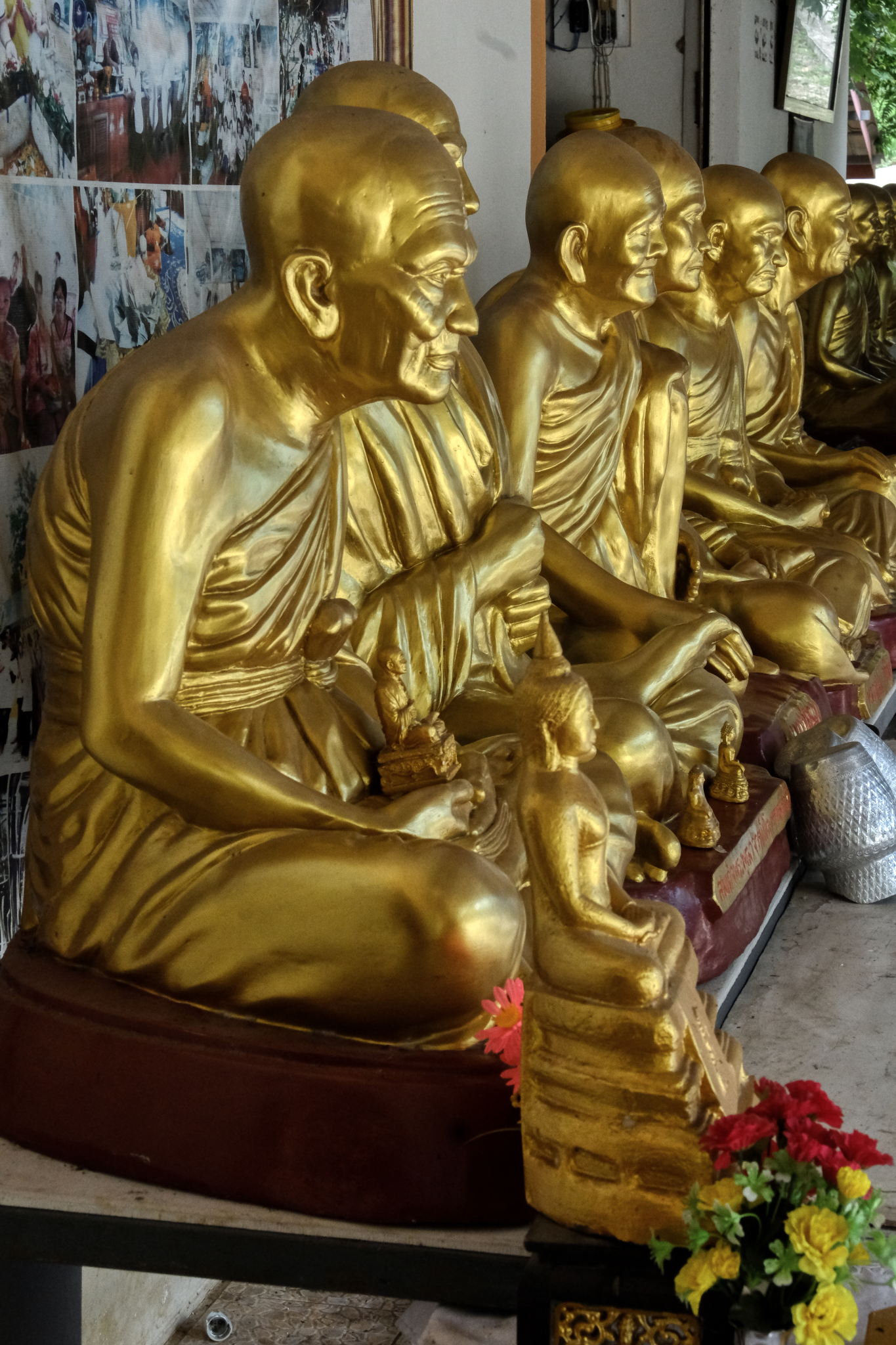 This wat had a line of gilded revered monk statues. Very powerful: These Guys Made It All The Way And You Can Too!
This wat had a line of gilded revered monk statues. Very powerful: These Guys Made It All The Way And You Can Too!
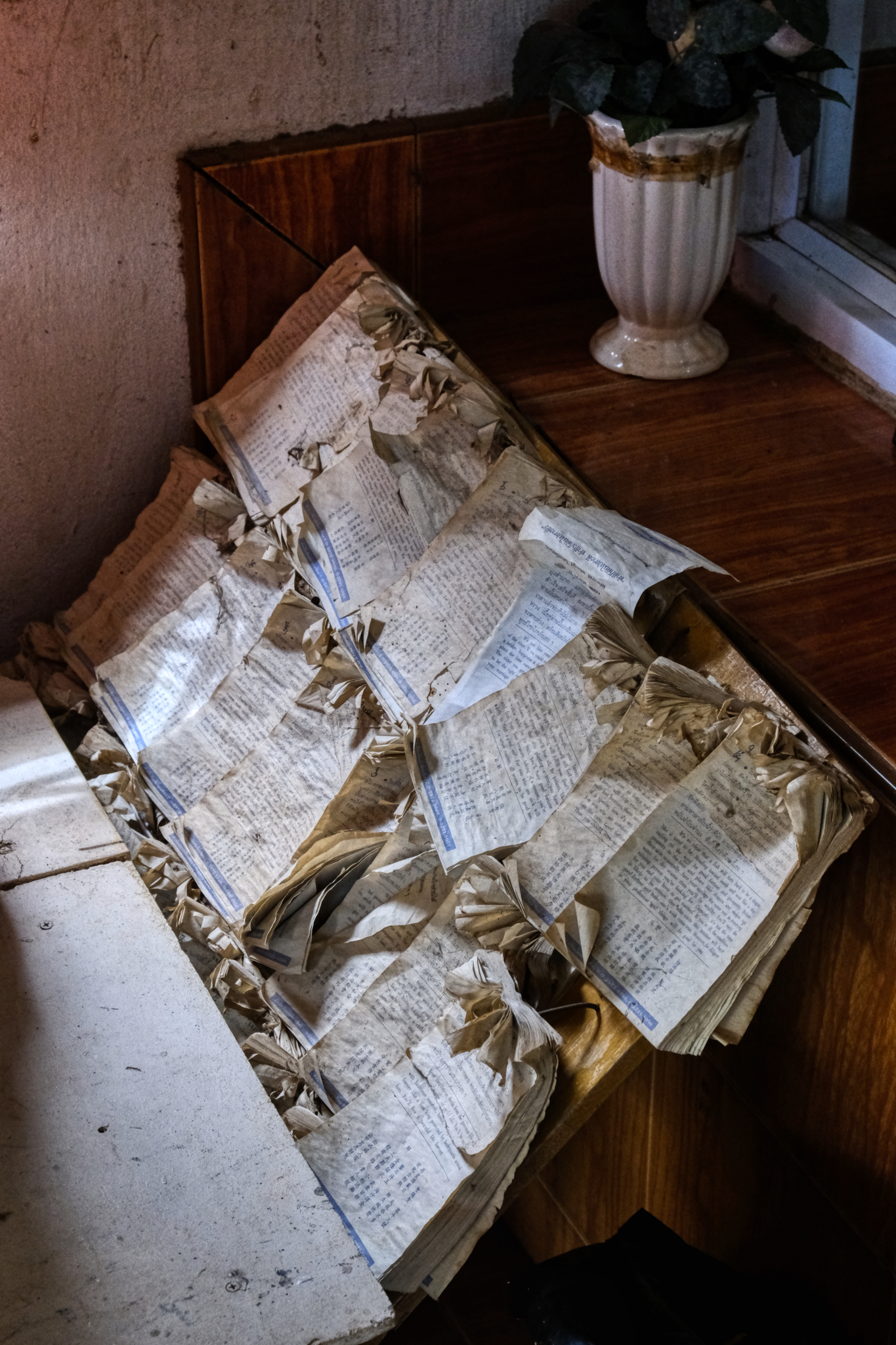 There are non-Buddhist, but old spiritual practices to be found in Thai Buddhist temples. These are for use in a numerological system for fortune telling. Beautifully weathered.
There are non-Buddhist, but old spiritual practices to be found in Thai Buddhist temples. These are for use in a numerological system for fortune telling. Beautifully weathered.
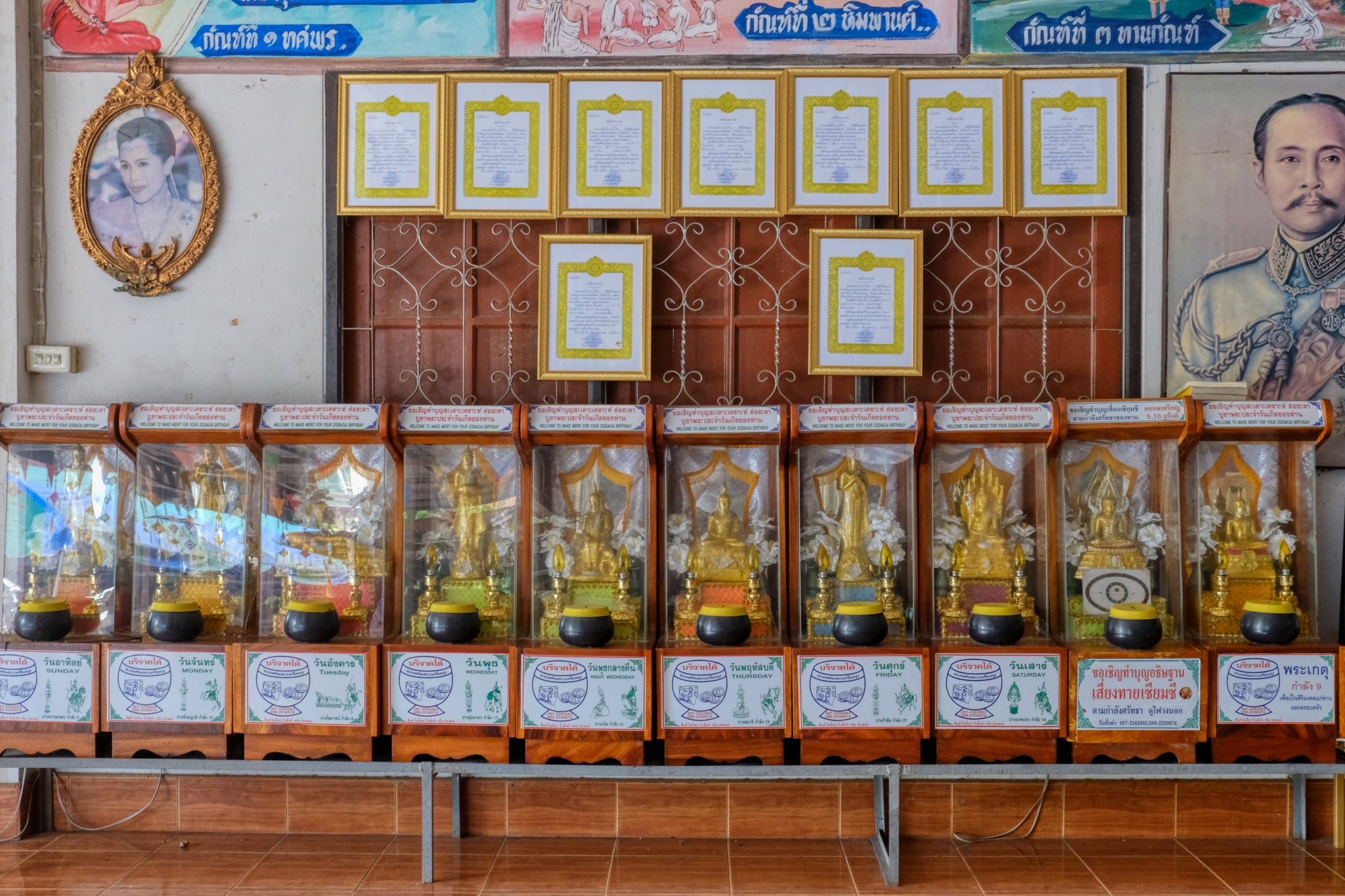 "Welcome to make merit for your Zodiacal Birthday" . . . . and a little something for the days of the week too!
"Welcome to make merit for your Zodiacal Birthday" . . . . and a little something for the days of the week too!
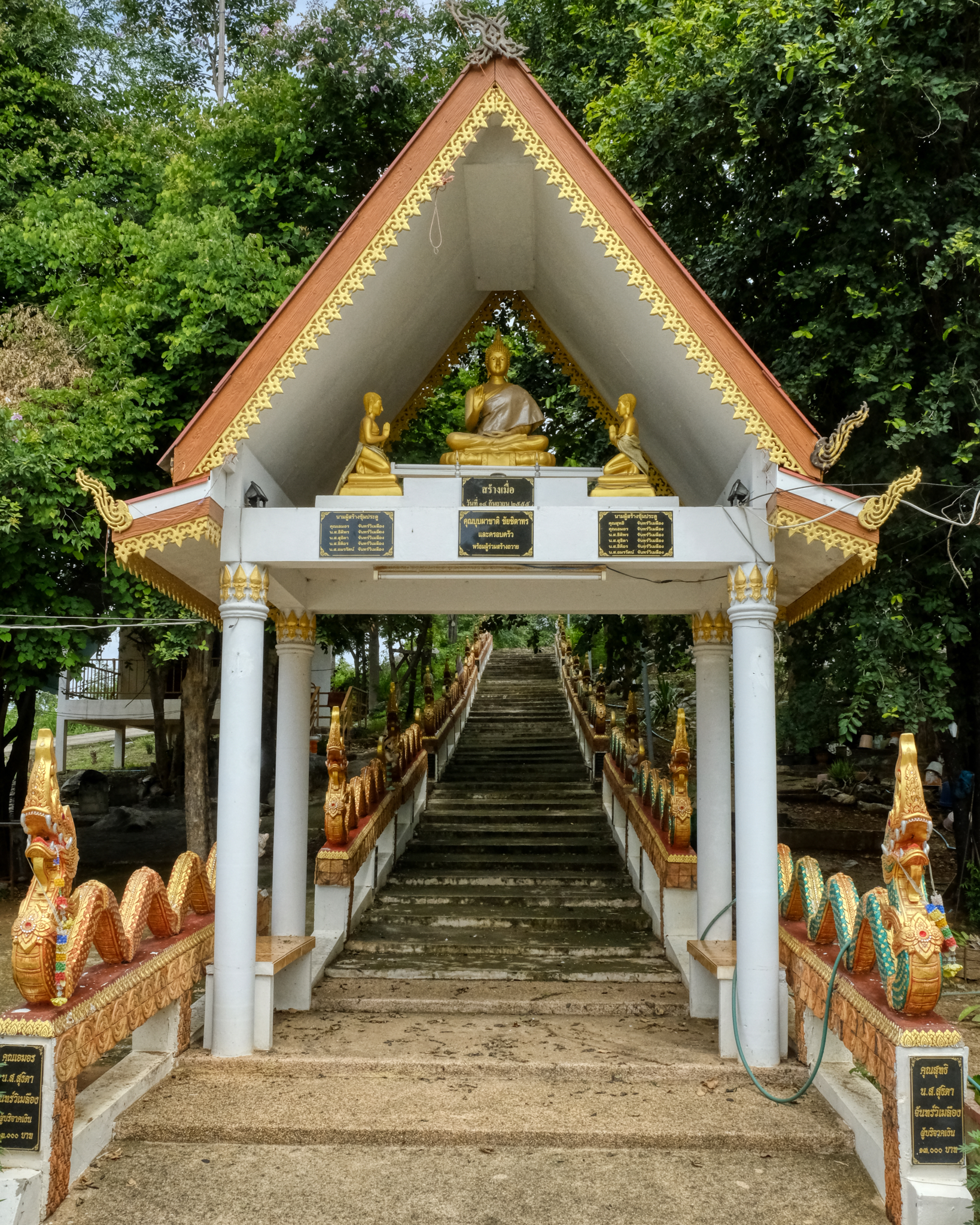 The hillside wat had a beautiful staircase up to the new wat location.
The hillside wat had a beautiful staircase up to the new wat location.
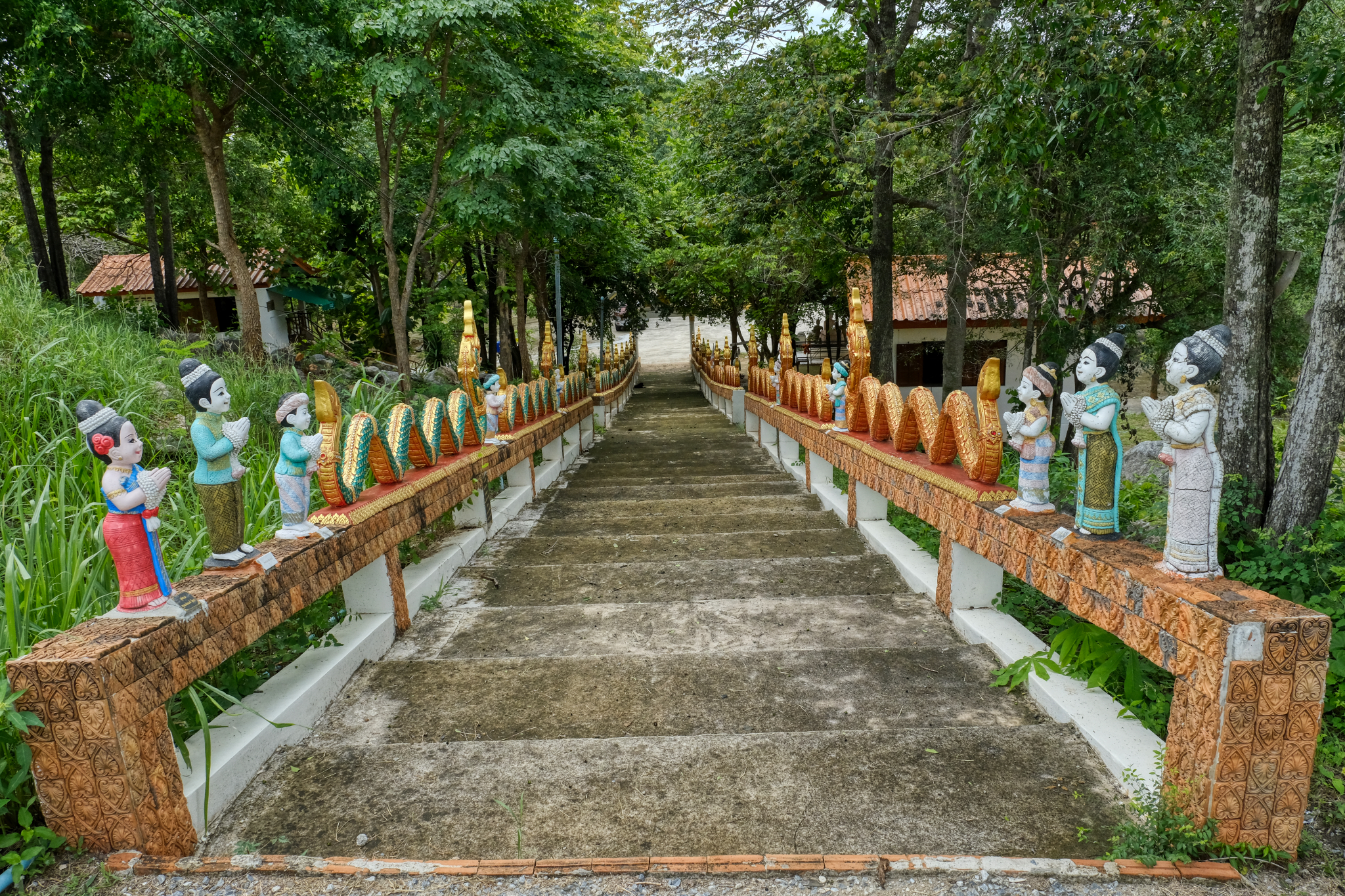 The same staircase looking down.
The same staircase looking down.
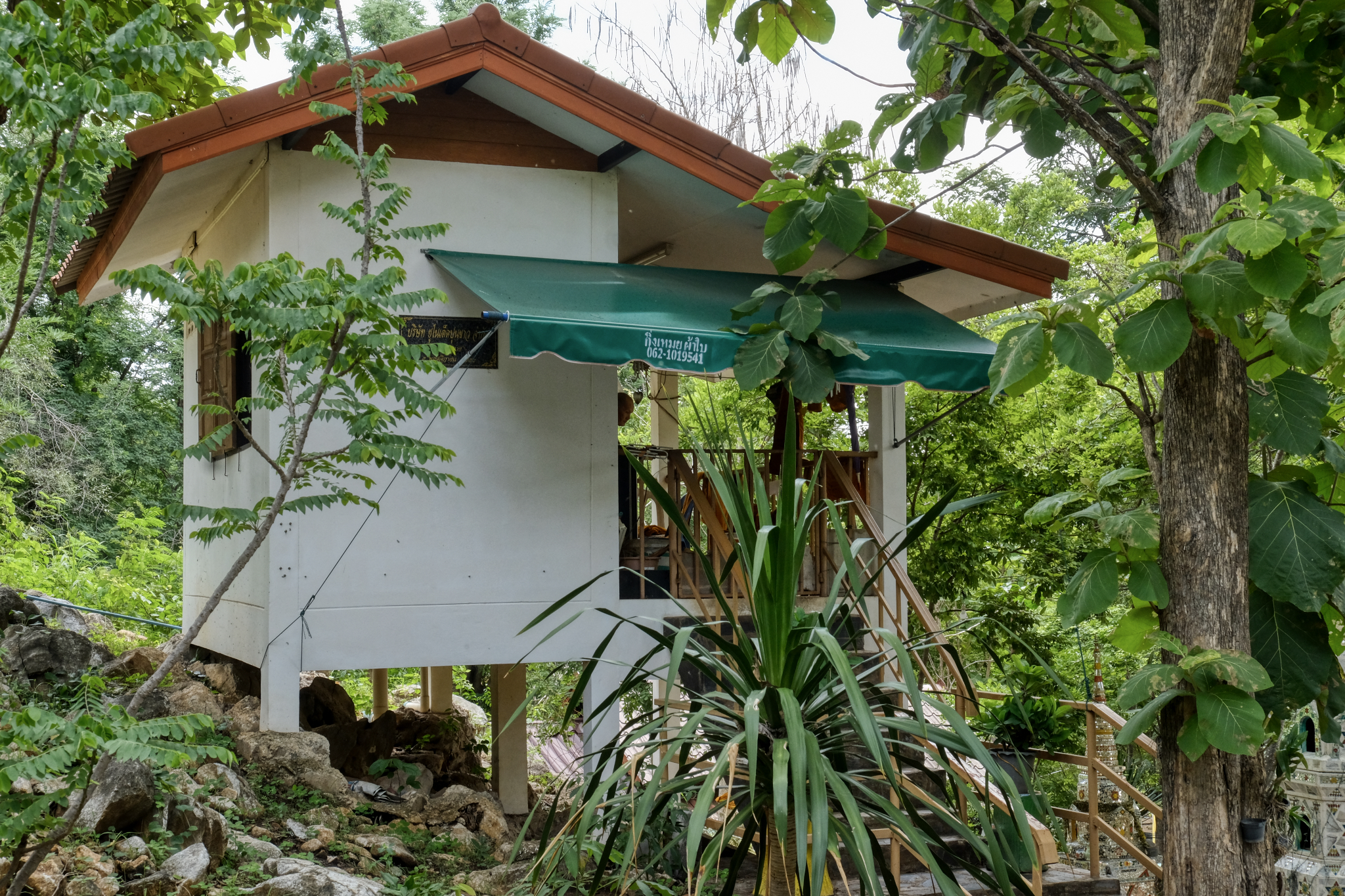 The monks live in a variety of accommodation: sometimes they have their own 'hut' or cabin, like this one. Sometimes these can be very nice, and sometimes very austere dormitories.
The monks live in a variety of accommodation: sometimes they have their own 'hut' or cabin, like this one. Sometimes these can be very nice, and sometimes very austere dormitories.
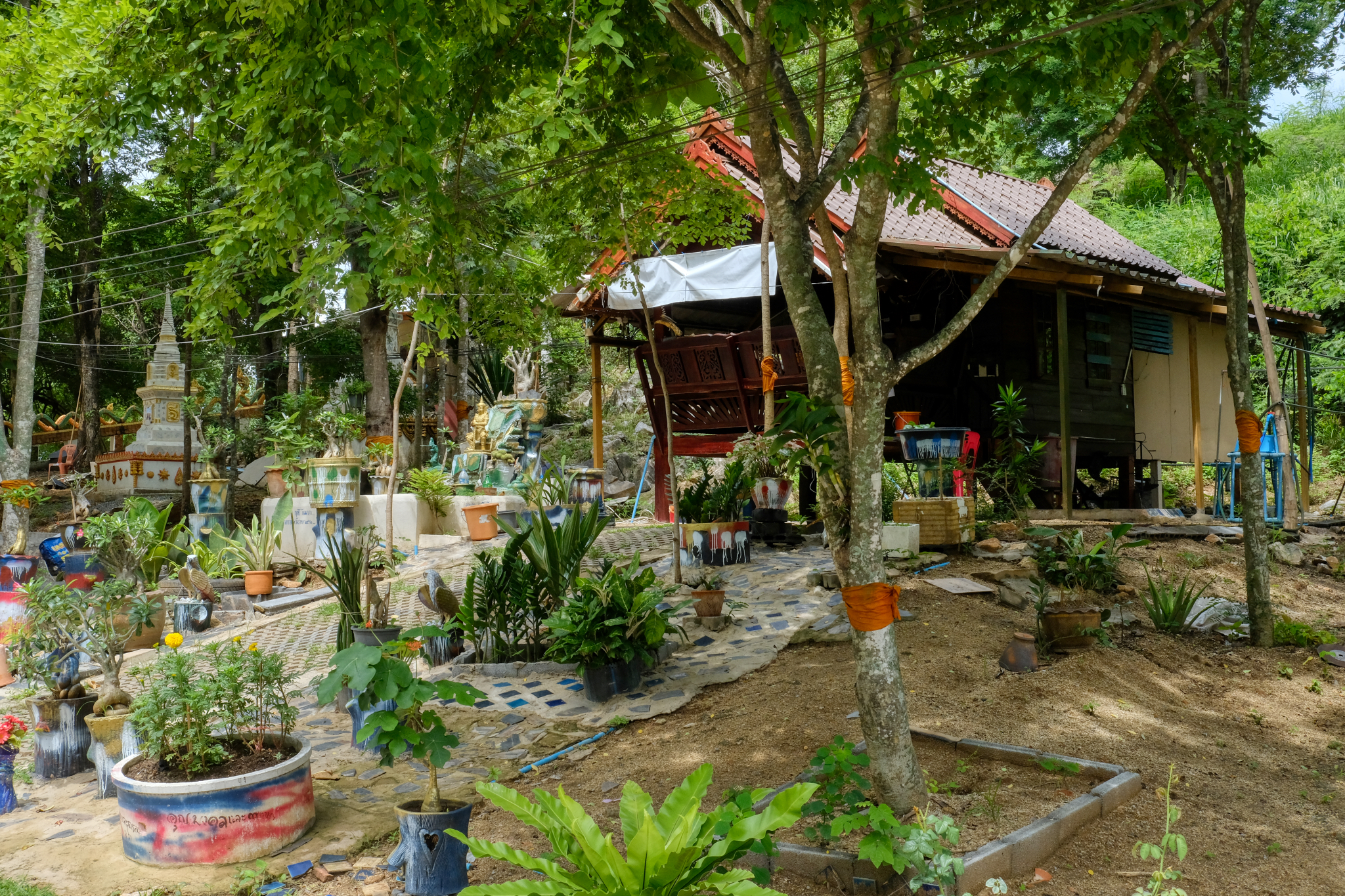 This monk keeps an interesting and cluttered front yard!
This monk keeps an interesting and cluttered front yard!
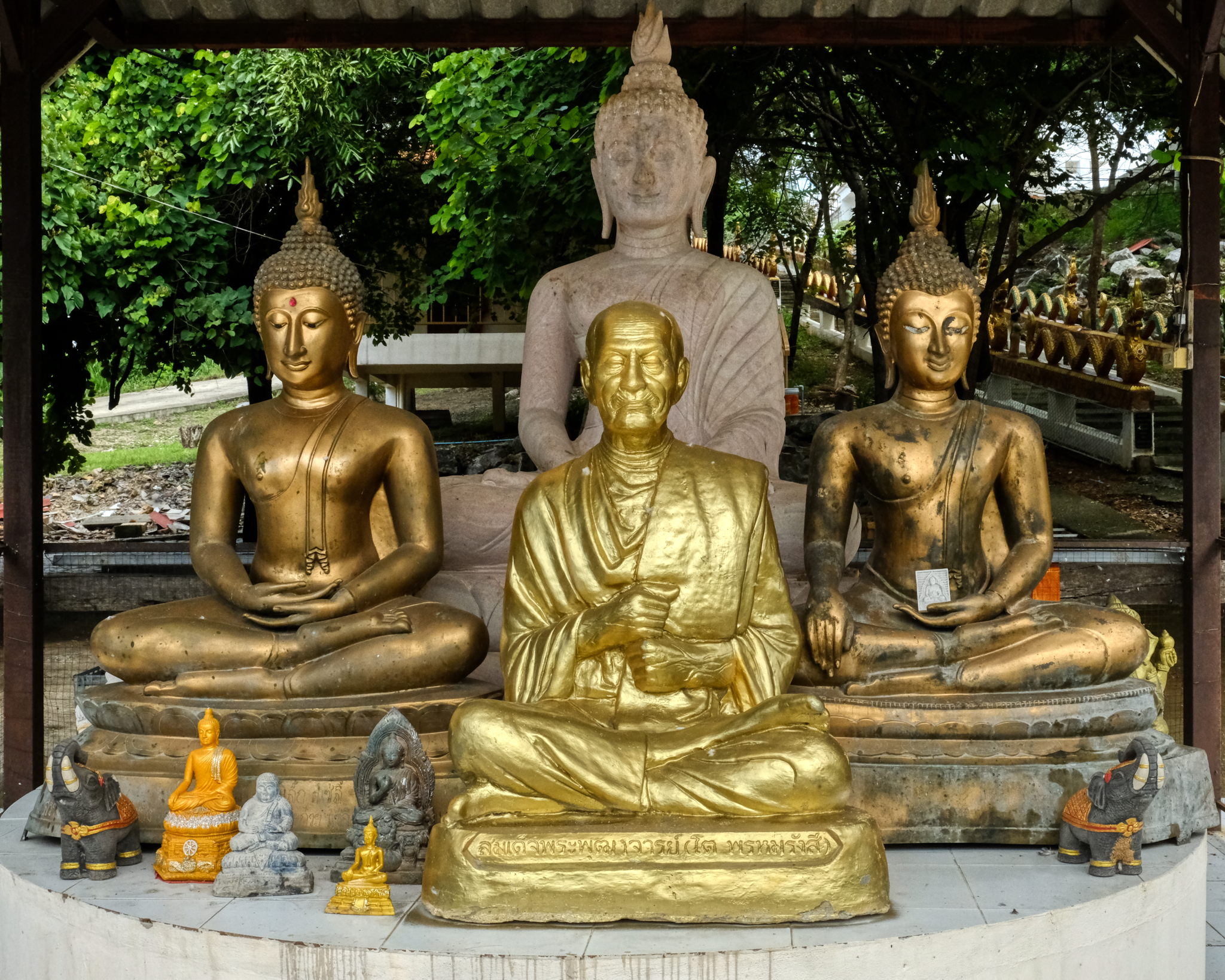 I found this wonderful altar in a sala out in a wooded area of the wat.
I found this wonderful altar in a sala out in a wooded area of the wat.
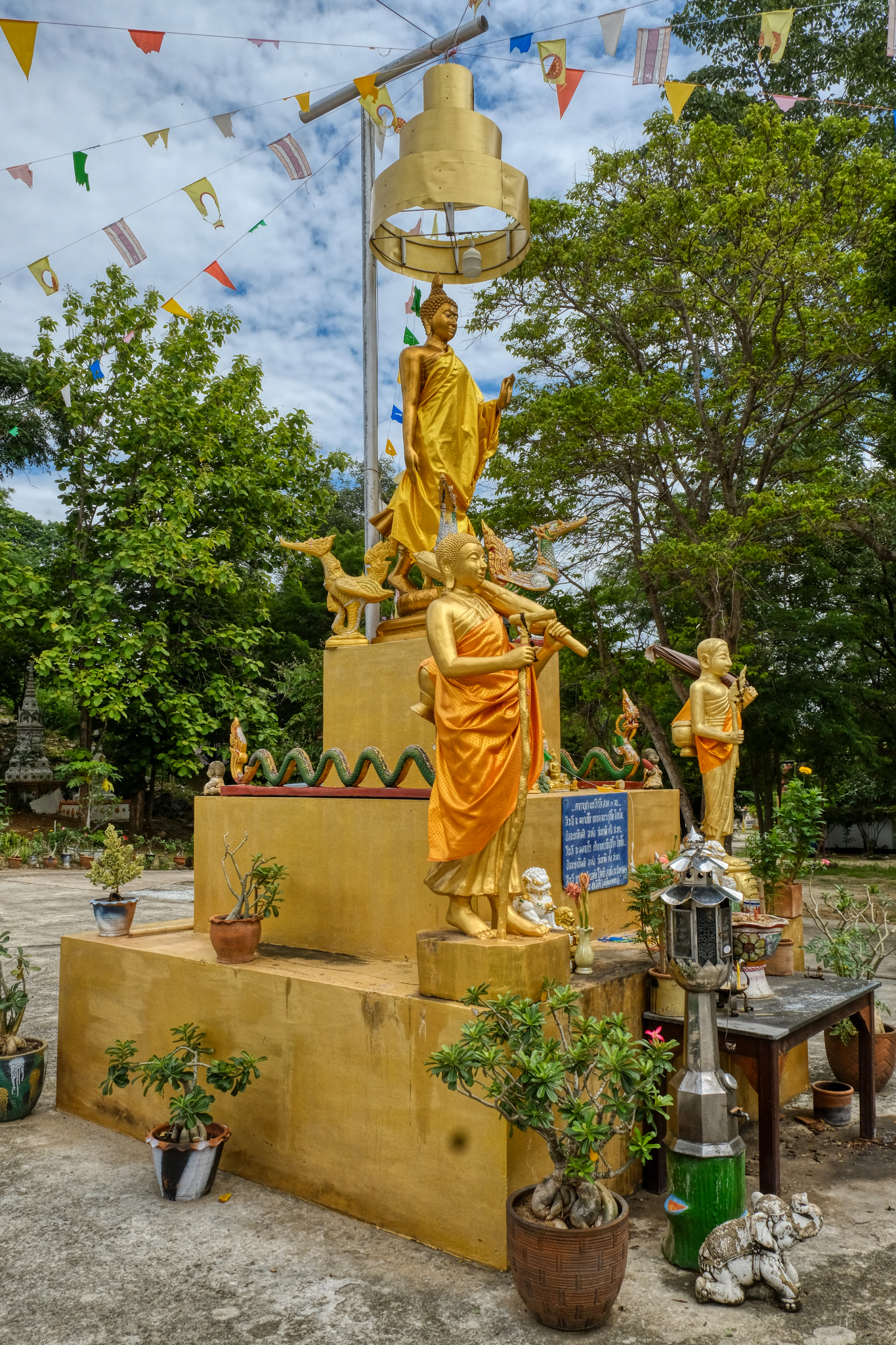 There always some amazing things to see on the grounds of Thai Buddhist wats!
There always some amazing things to see on the grounds of Thai Buddhist wats!
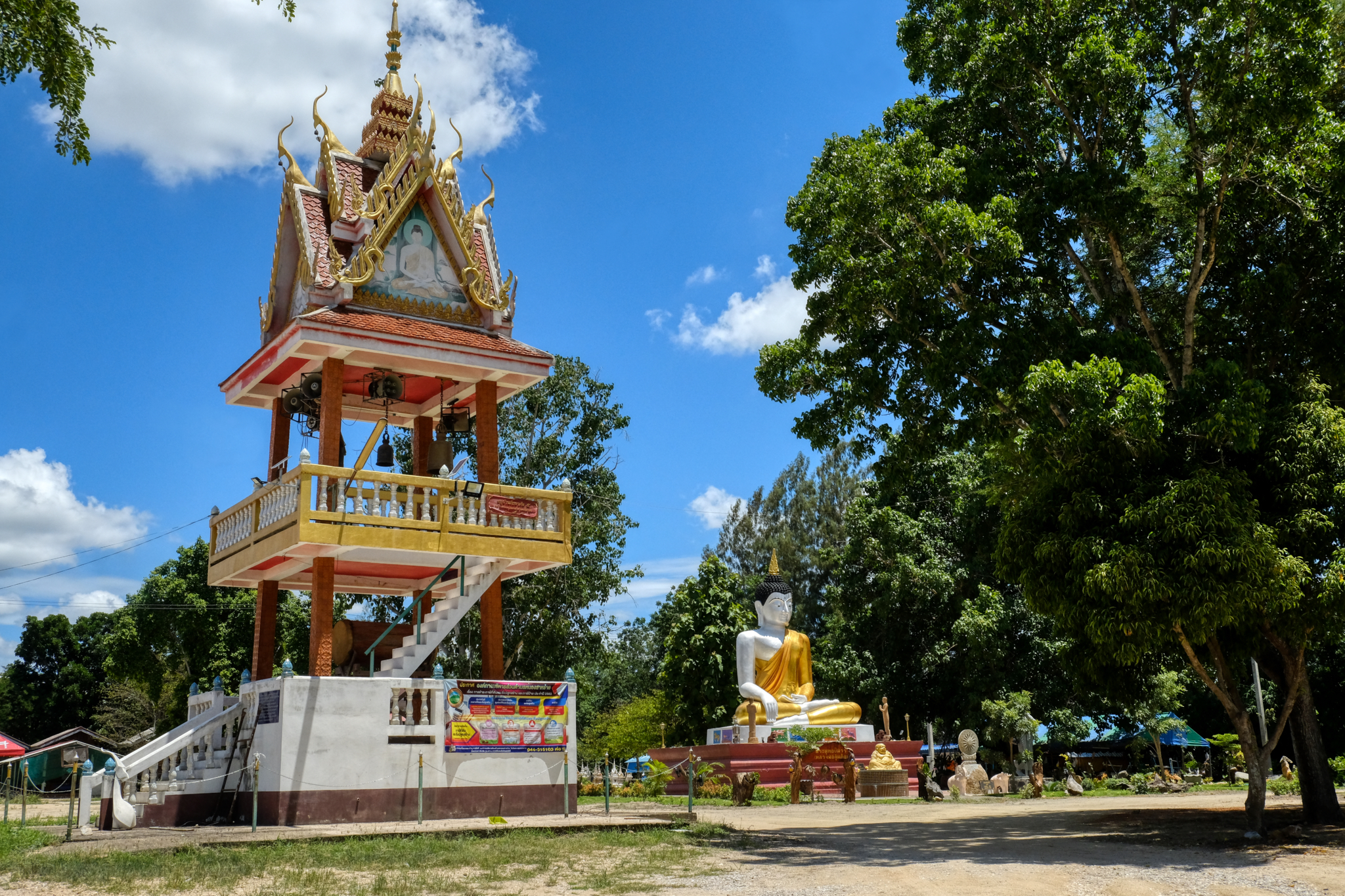 At another wat along a country lane . . . a bell and drum tower and very large outdoor Buddha.
At another wat along a country lane . . . a bell and drum tower and very large outdoor Buddha.
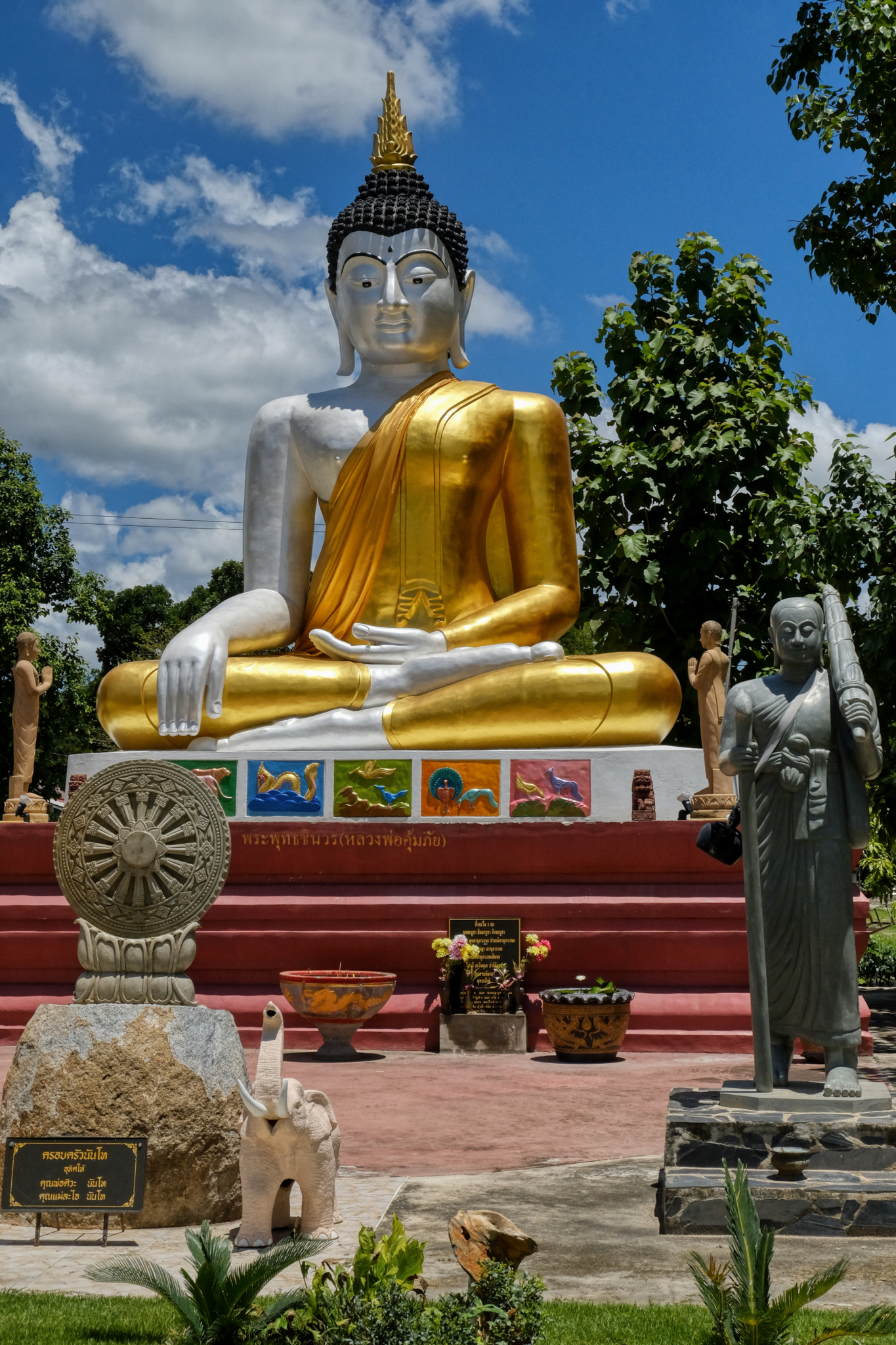 Such a serious-looking Buddha . . .
Such a serious-looking Buddha . . .
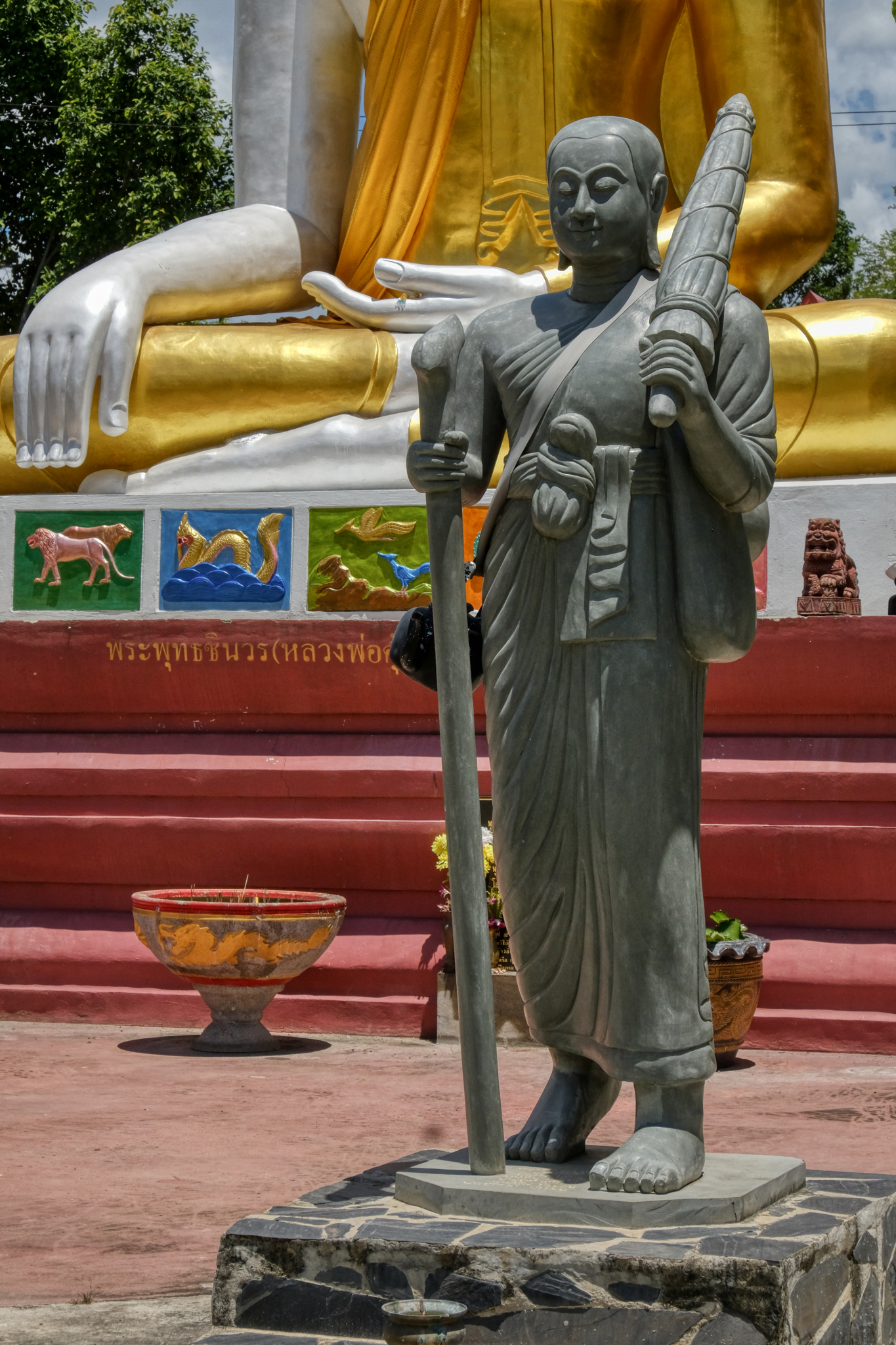 I loved this statue of the Buddha as a wondering monk . . . which he was.
I loved this statue of the Buddha as a wondering monk . . . which he was.
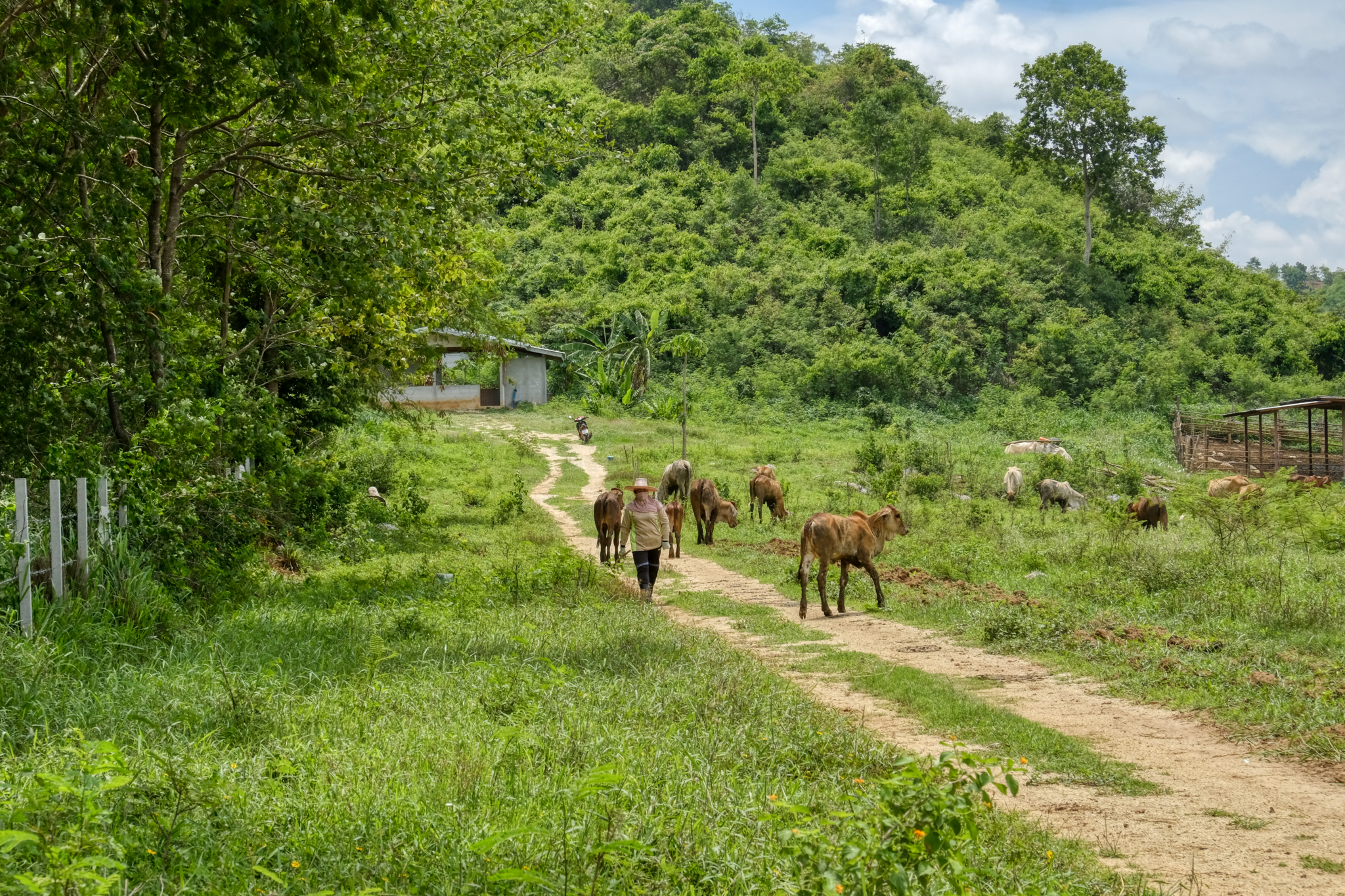 Sometimes my small rural lanes would come to a dead-end . . . as it did here in a farmers field.
Sometimes my small rural lanes would come to a dead-end . . . as it did here in a farmers field.
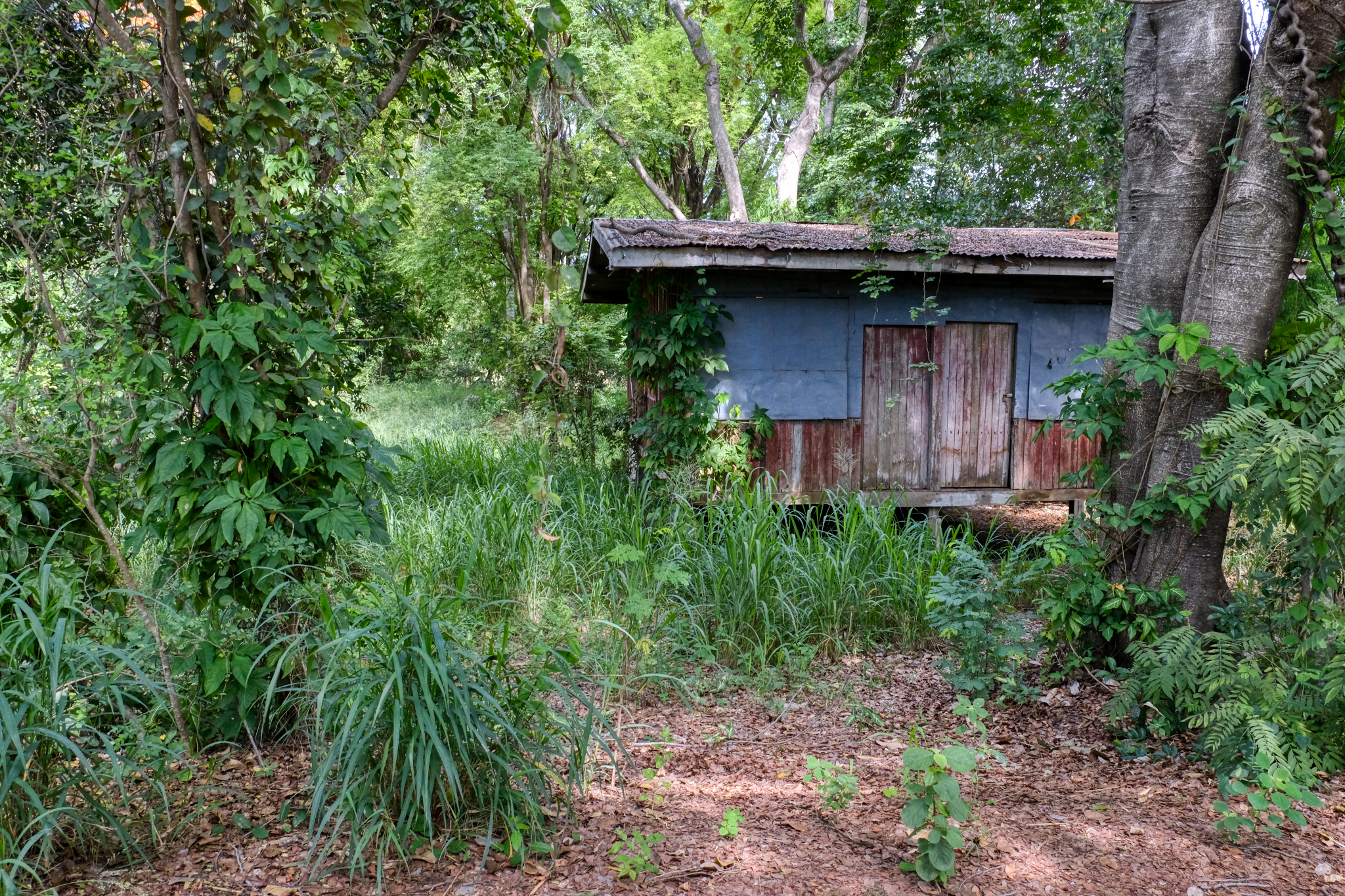 Many small work sheds dot the agricultural landscape in this part of Thailand.
Many small work sheds dot the agricultural landscape in this part of Thailand.
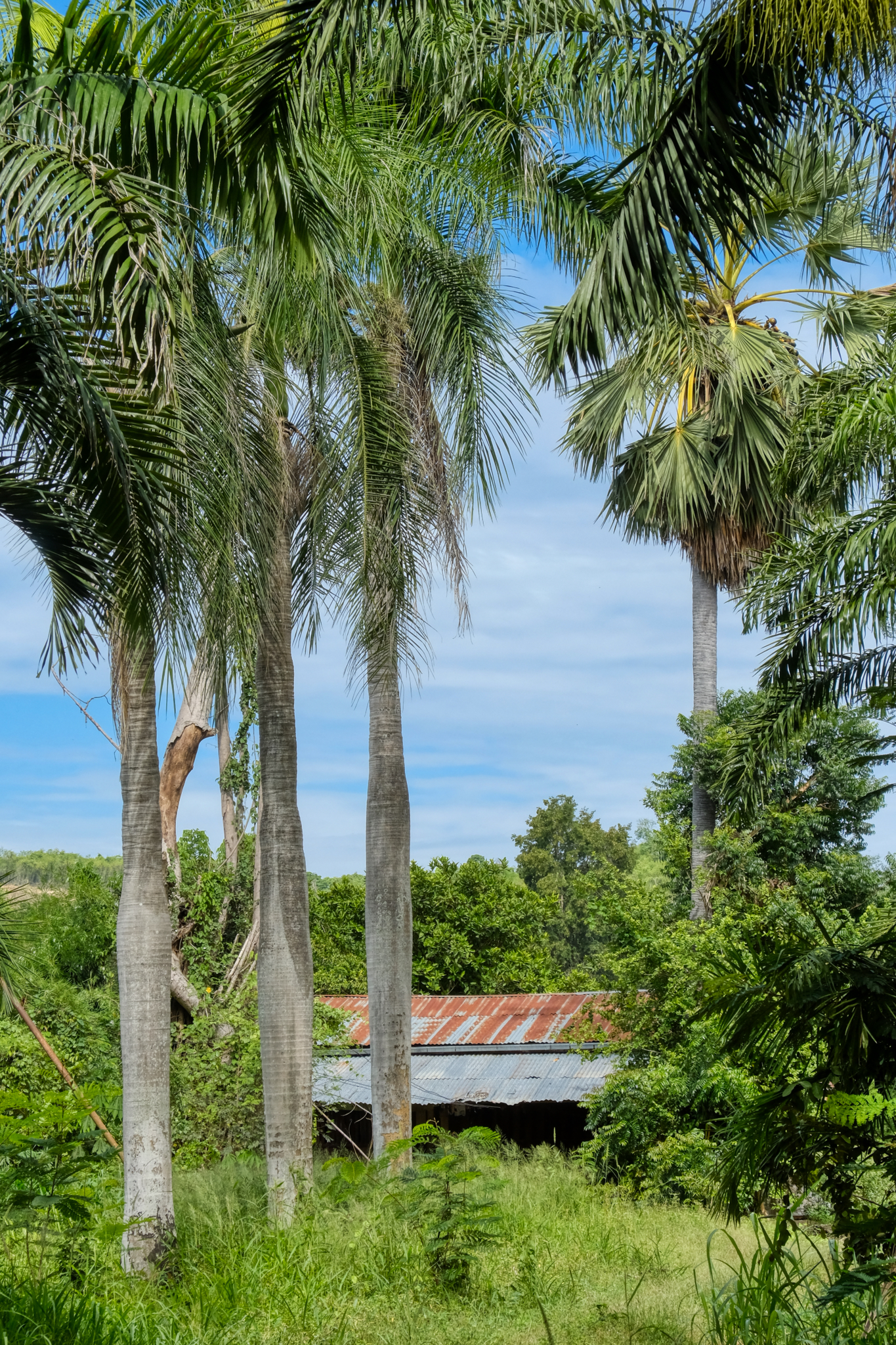 It was a beautiful day to be out rambling in the Thai countryside.
It was a beautiful day to be out rambling in the Thai countryside.
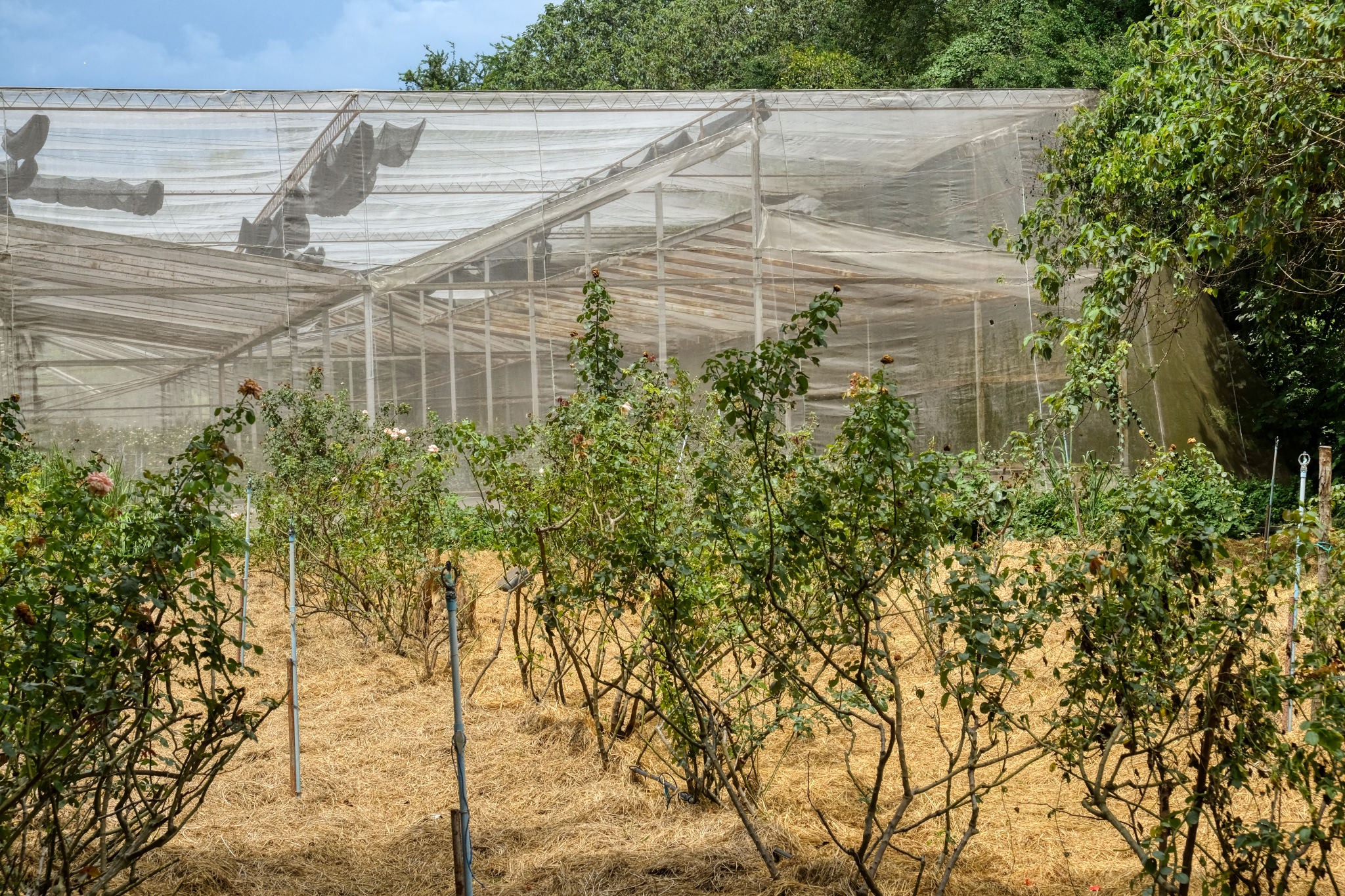 I stumbled upon this big greenhouse operation raising roses. Big agribusiness out in the deep forest.
I stumbled upon this big greenhouse operation raising roses. Big agribusiness out in the deep forest.
 A bamboo pump house.
A bamboo pump house.
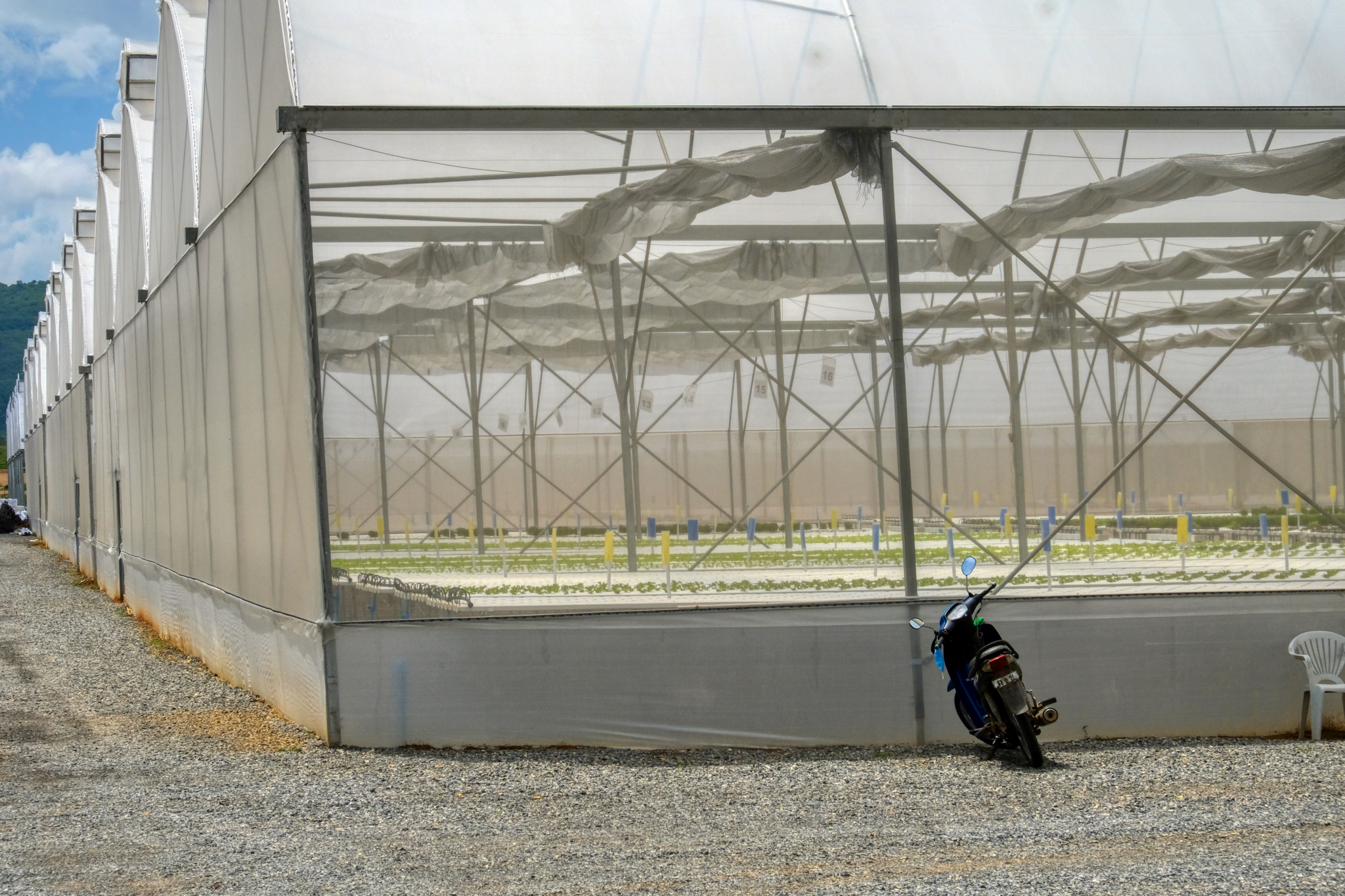 More rural agribusiness . . . lettuce.
More rural agribusiness . . . lettuce.
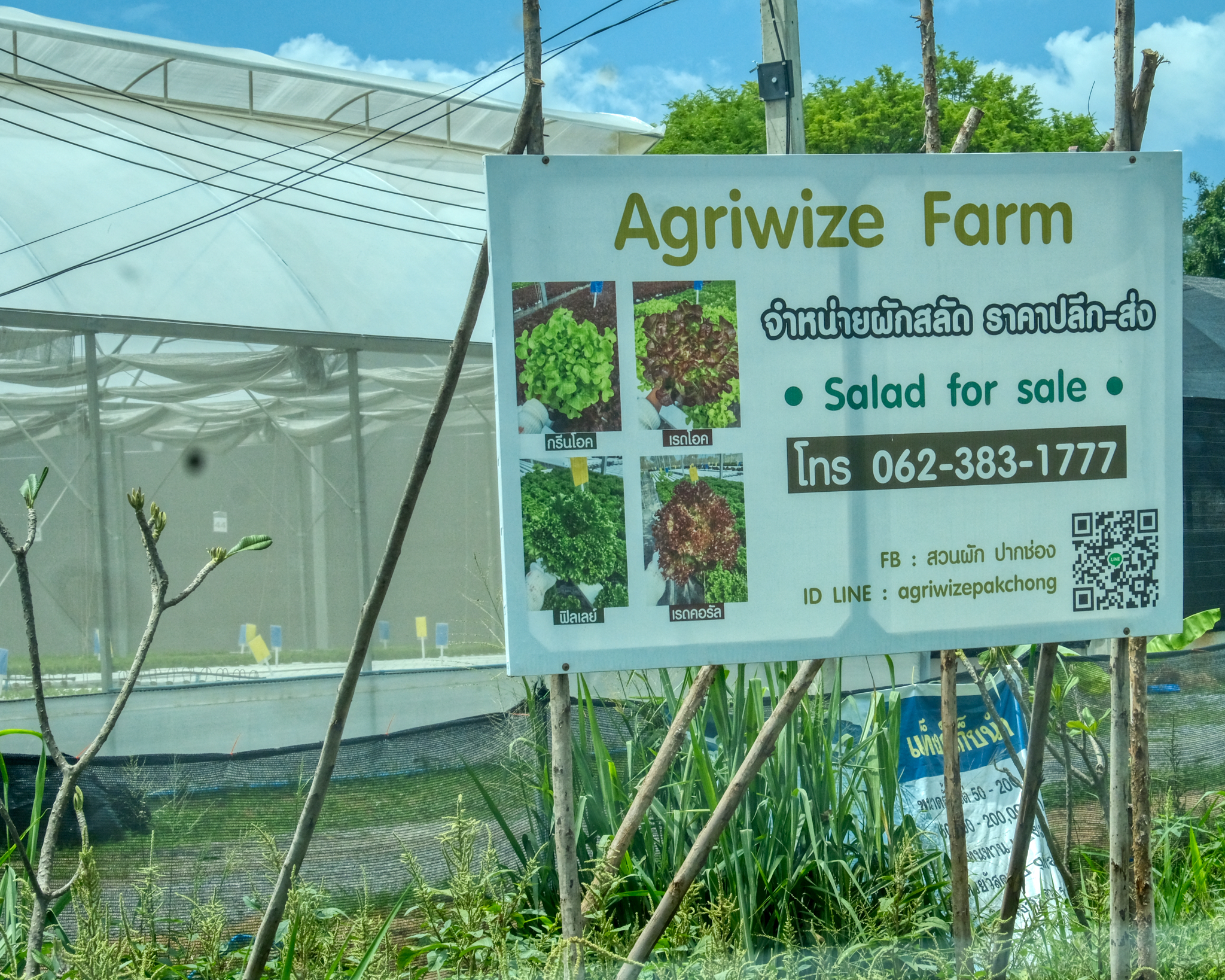 Being only 3 hours to a city of 13 million people, this kind of big agribusiness was to be expected.
Being only 3 hours to a city of 13 million people, this kind of big agribusiness was to be expected.
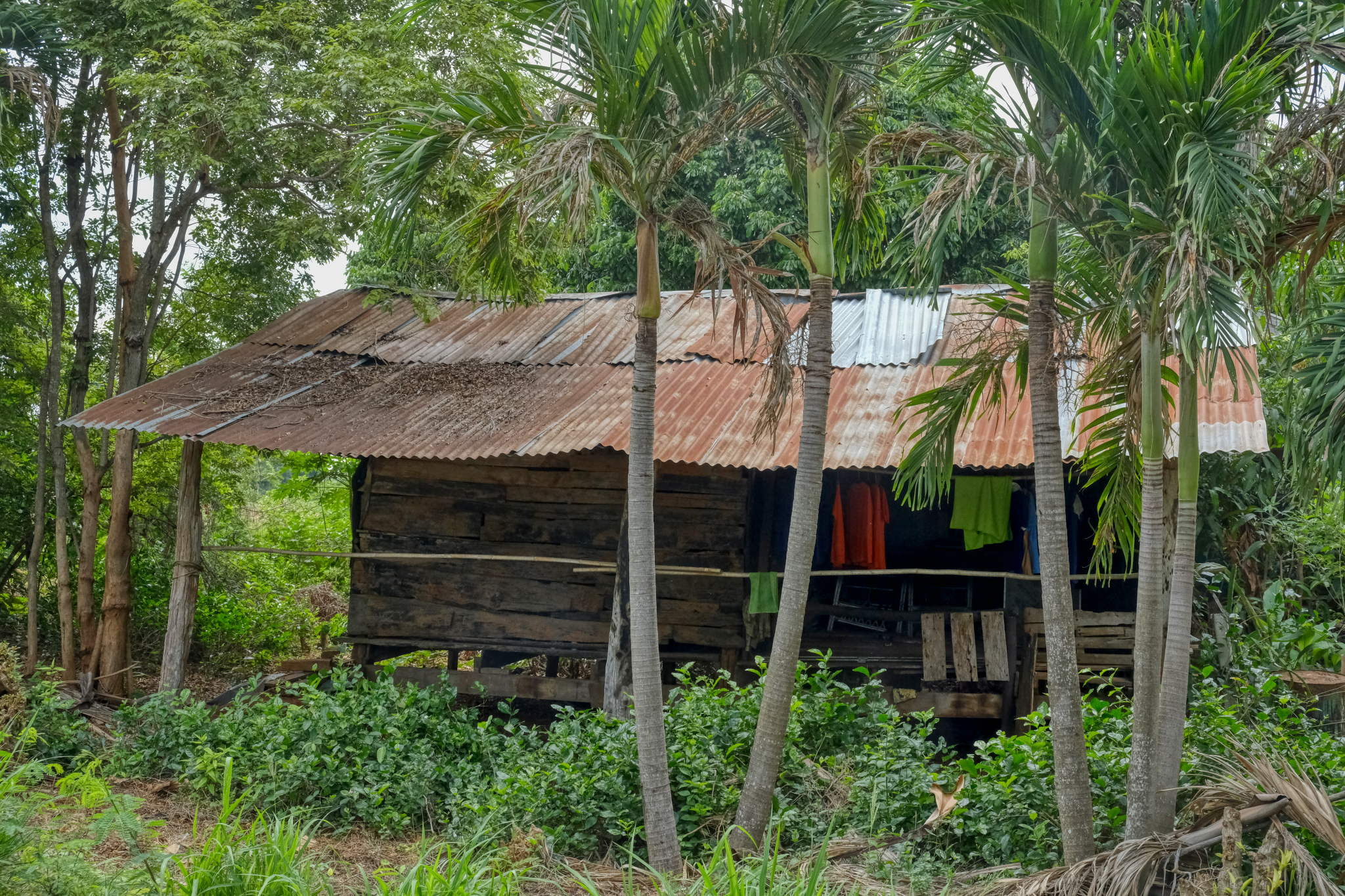 This old teakwood shack was occupied . . . rural splendor?
This old teakwood shack was occupied . . . rural splendor?
-----------------------------------------------------------------------------------------------------------------
WAT PA PHROM PRATHAN
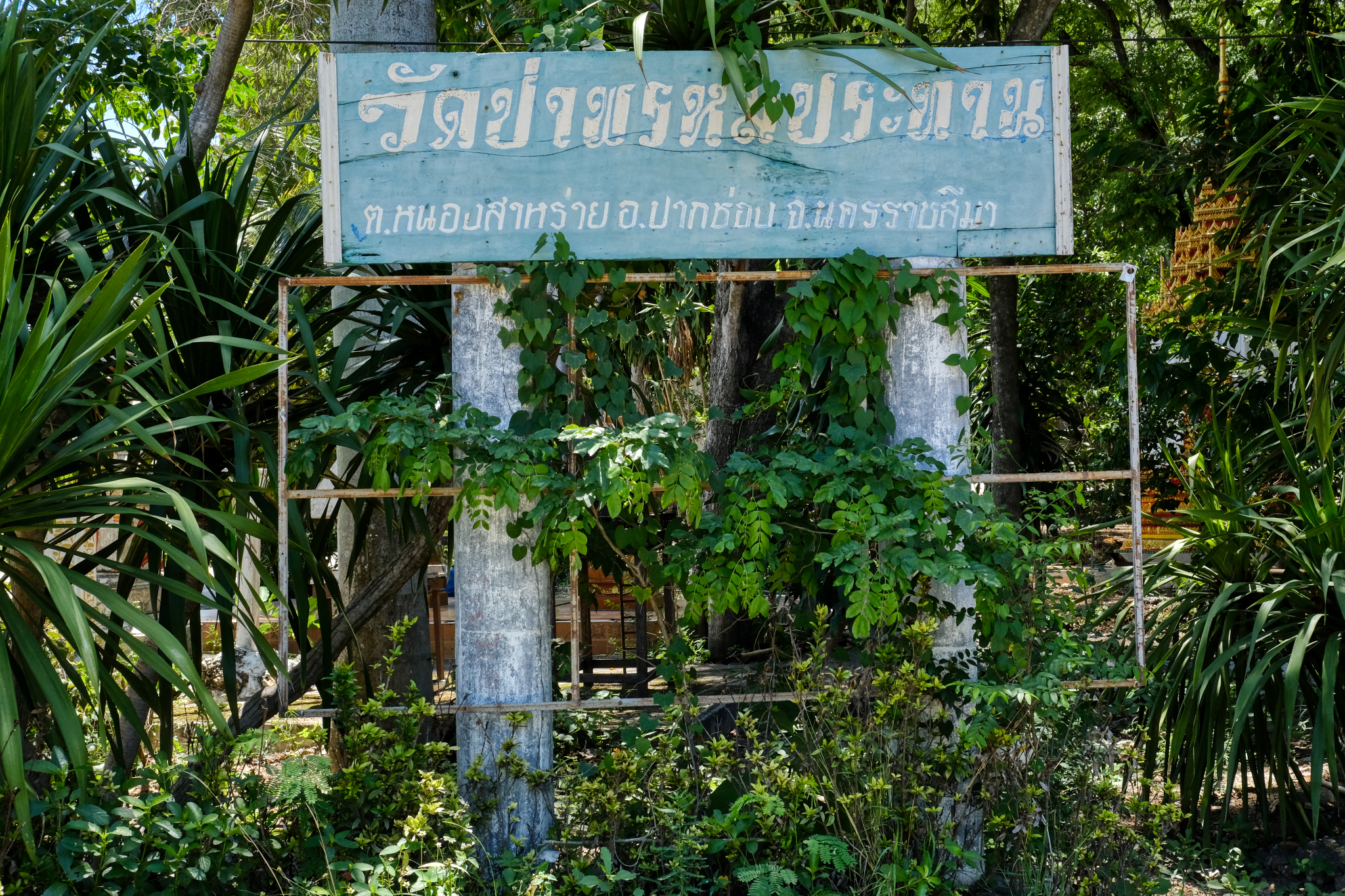 This small sign caught my eye . . . It must be a wat . . .
This small sign caught my eye . . . It must be a wat . . .
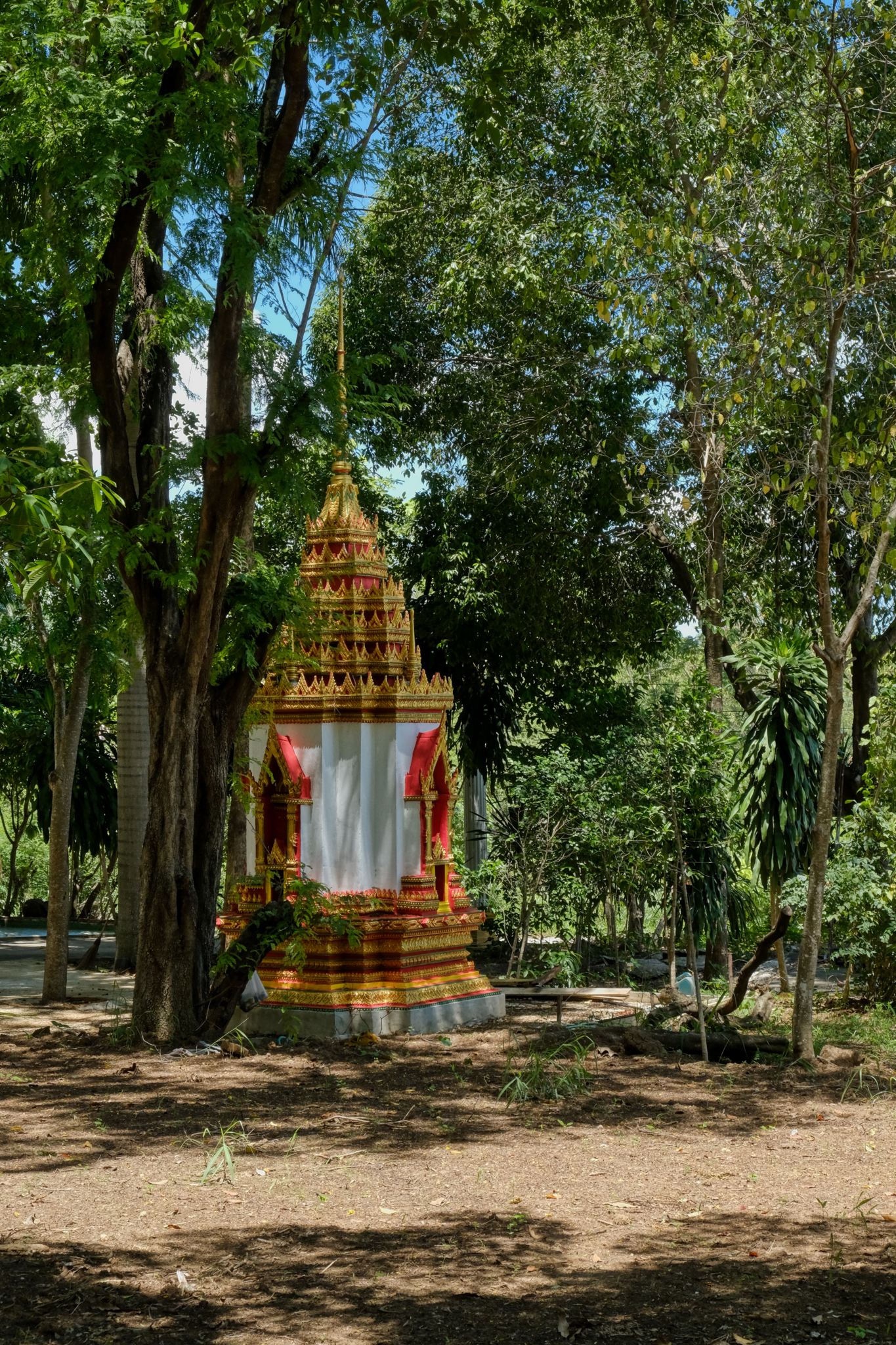 While driving into the wat grounds I did not notice anything unusual at first.
While driving into the wat grounds I did not notice anything unusual at first.
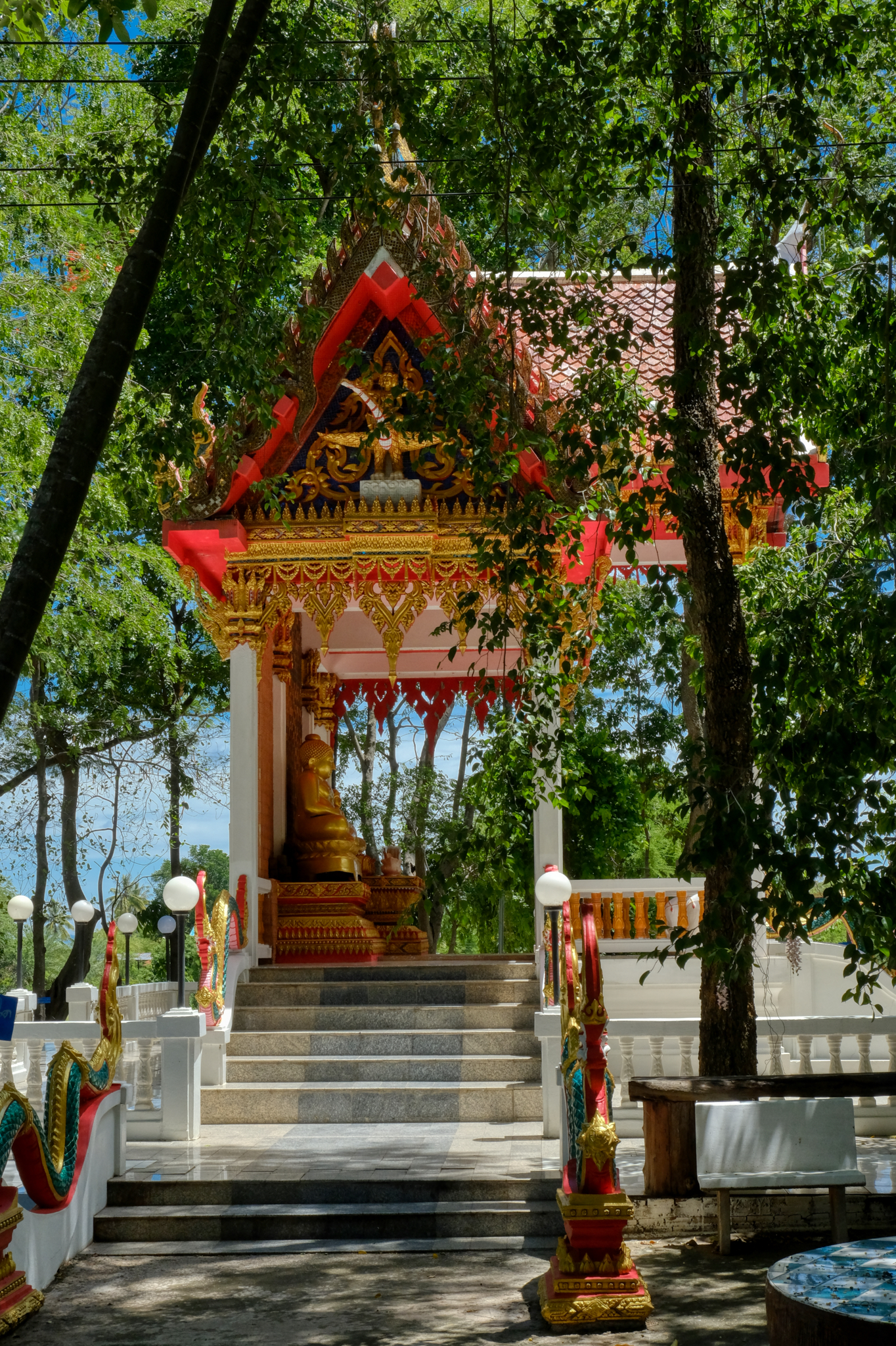 For such a deeply rural wat in a forested area, the salas and monuments seemed especially wonderful.
For such a deeply rural wat in a forested area, the salas and monuments seemed especially wonderful.
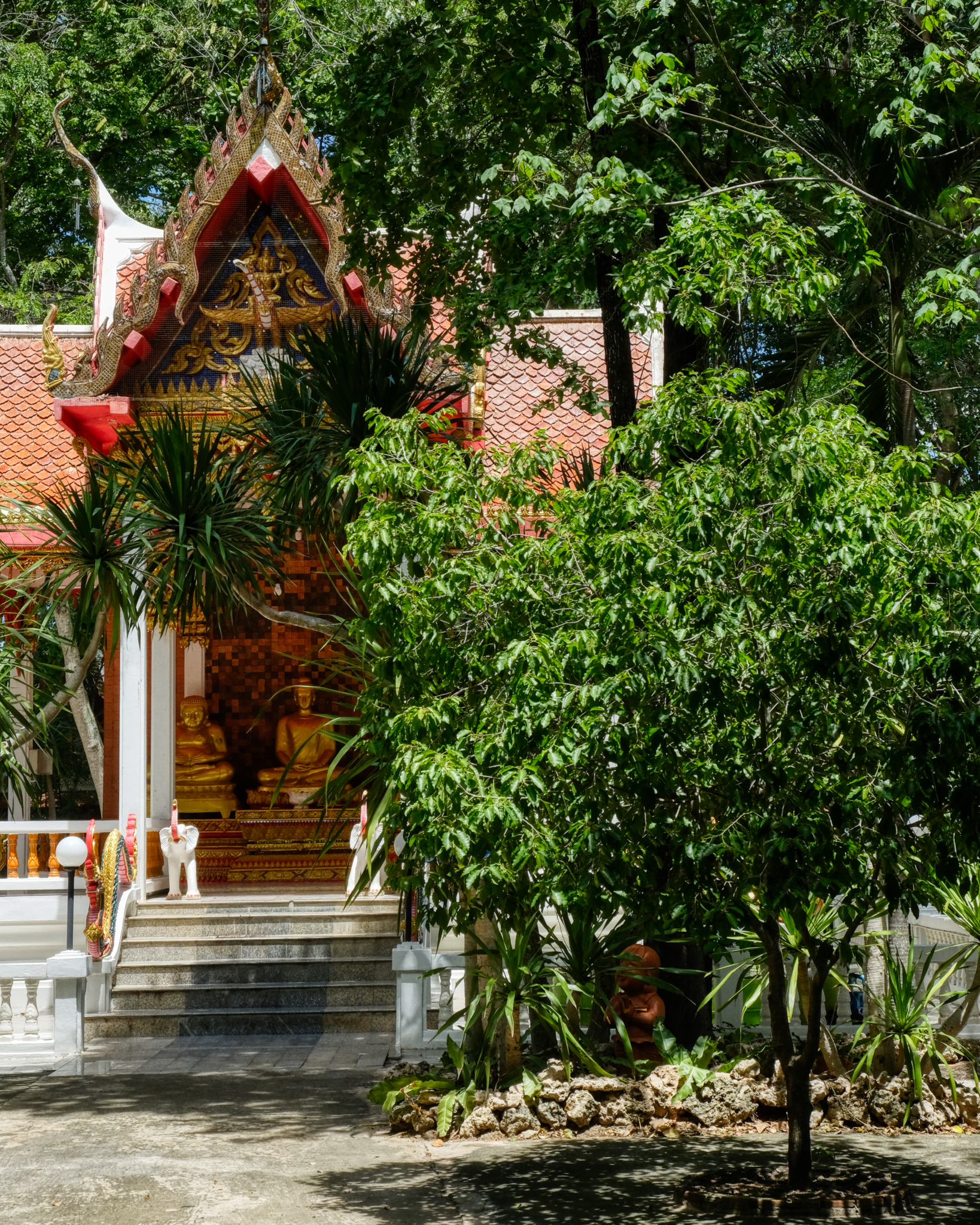 Such a wonderful Buddha sala . . .
Such a wonderful Buddha sala . . .
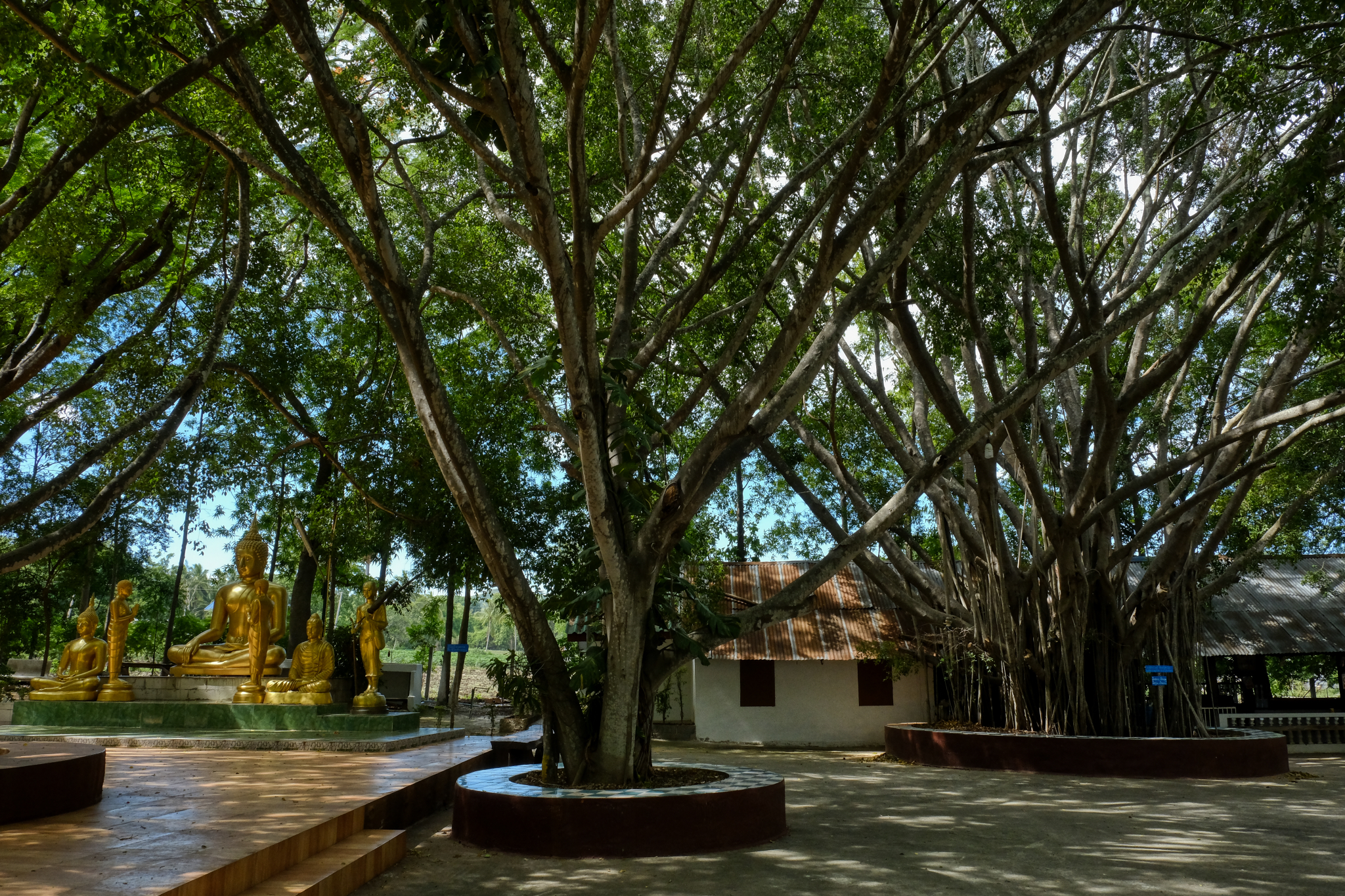 I found a place to park and as I stepped out of the car this is what I saw! Remarkable!
I found a place to park and as I stepped out of the car this is what I saw! Remarkable!
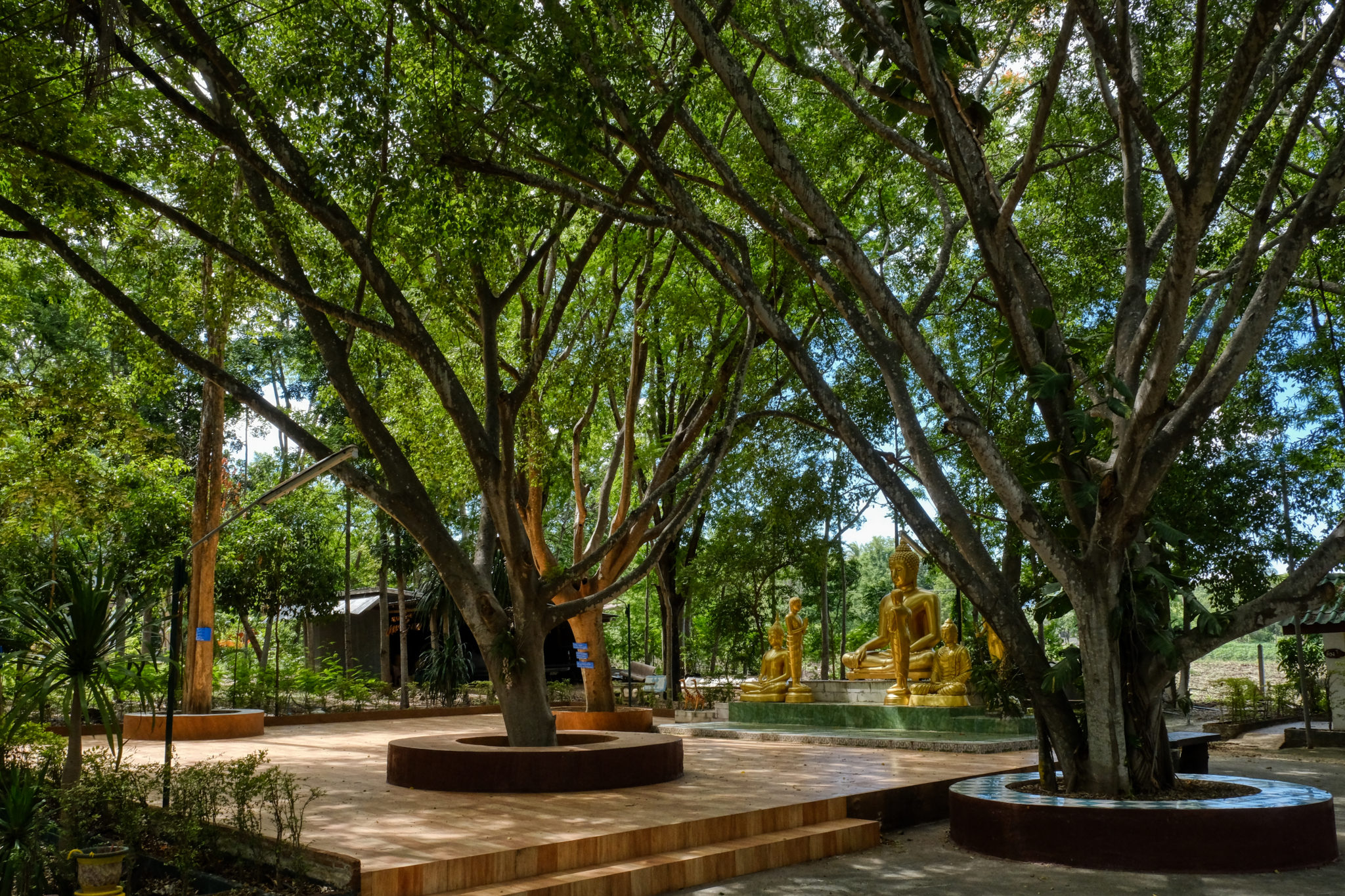 There was a powerful spiritual presence in this place.
There was a powerful spiritual presence in this place.
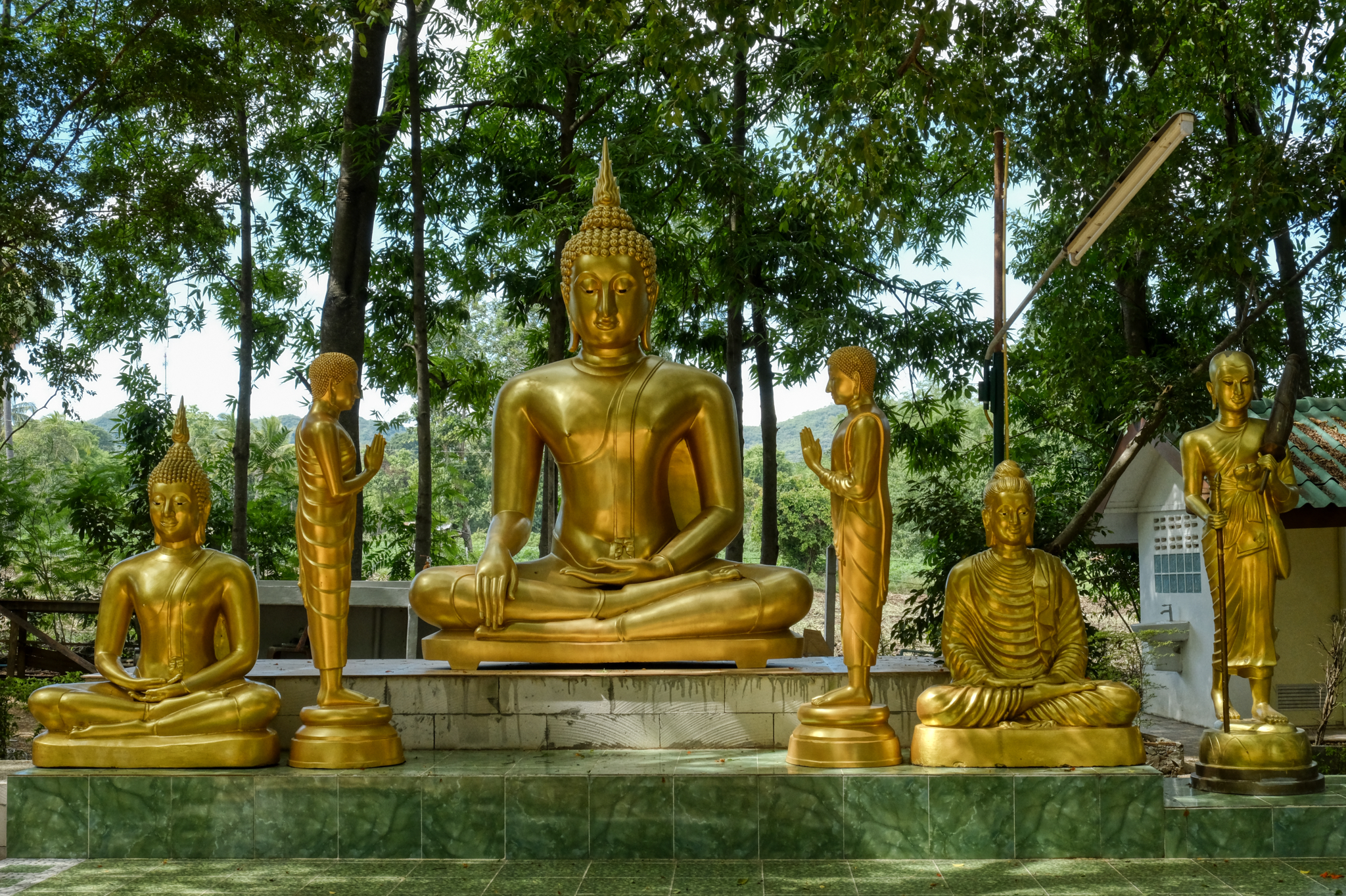 I sat here for quite awhile . . . and lost myself . . .
I sat here for quite awhile . . . and lost myself . . .
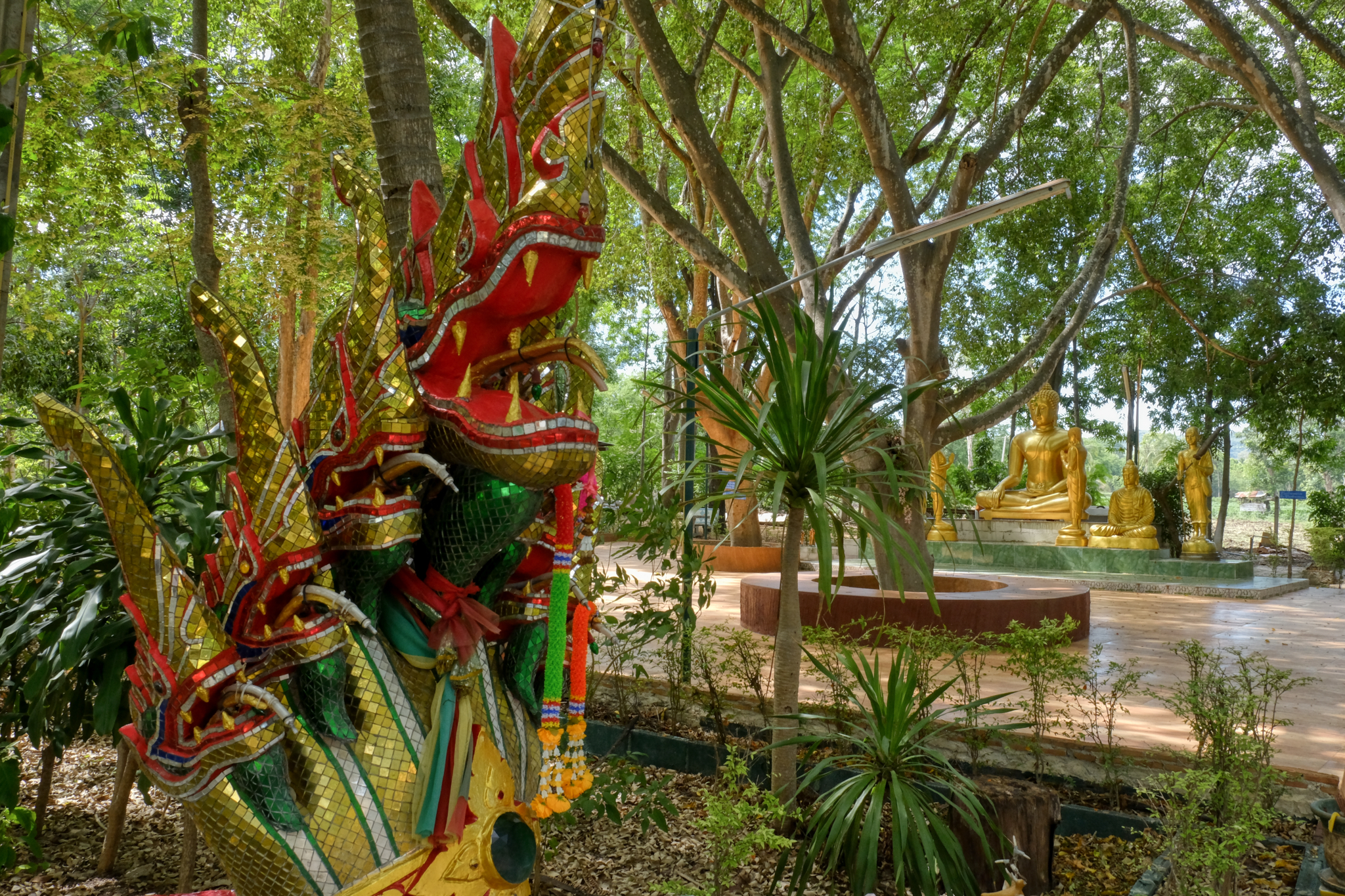 After sitting . . . I went for a walk to appreciate the spiritual environment I had fortunately found.
After sitting . . . I went for a walk to appreciate the spiritual environment I had fortunately found.
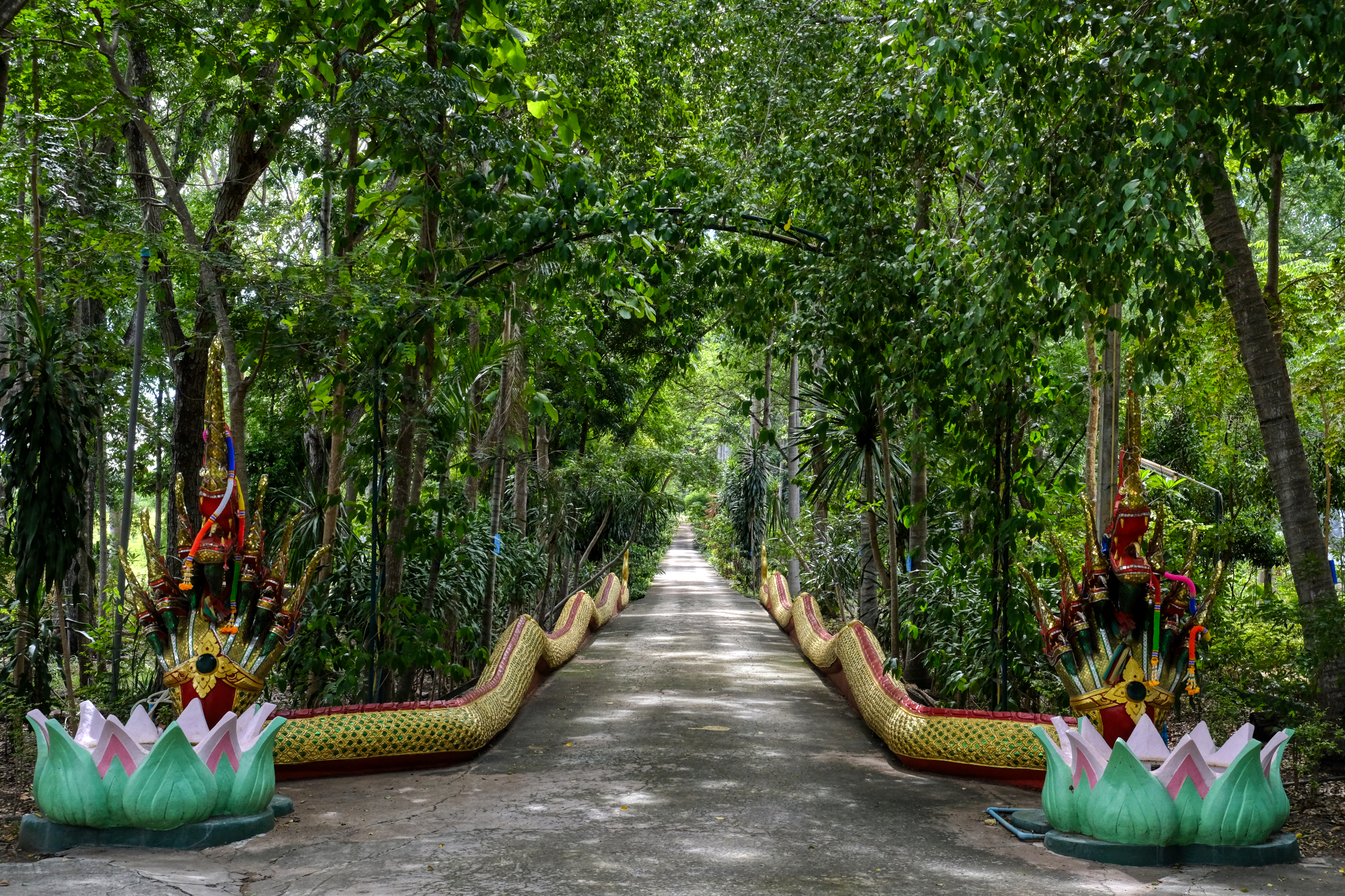 When I spotted this inviting road, I had to find out what was up there . . .
When I spotted this inviting road, I had to find out what was up there . . .
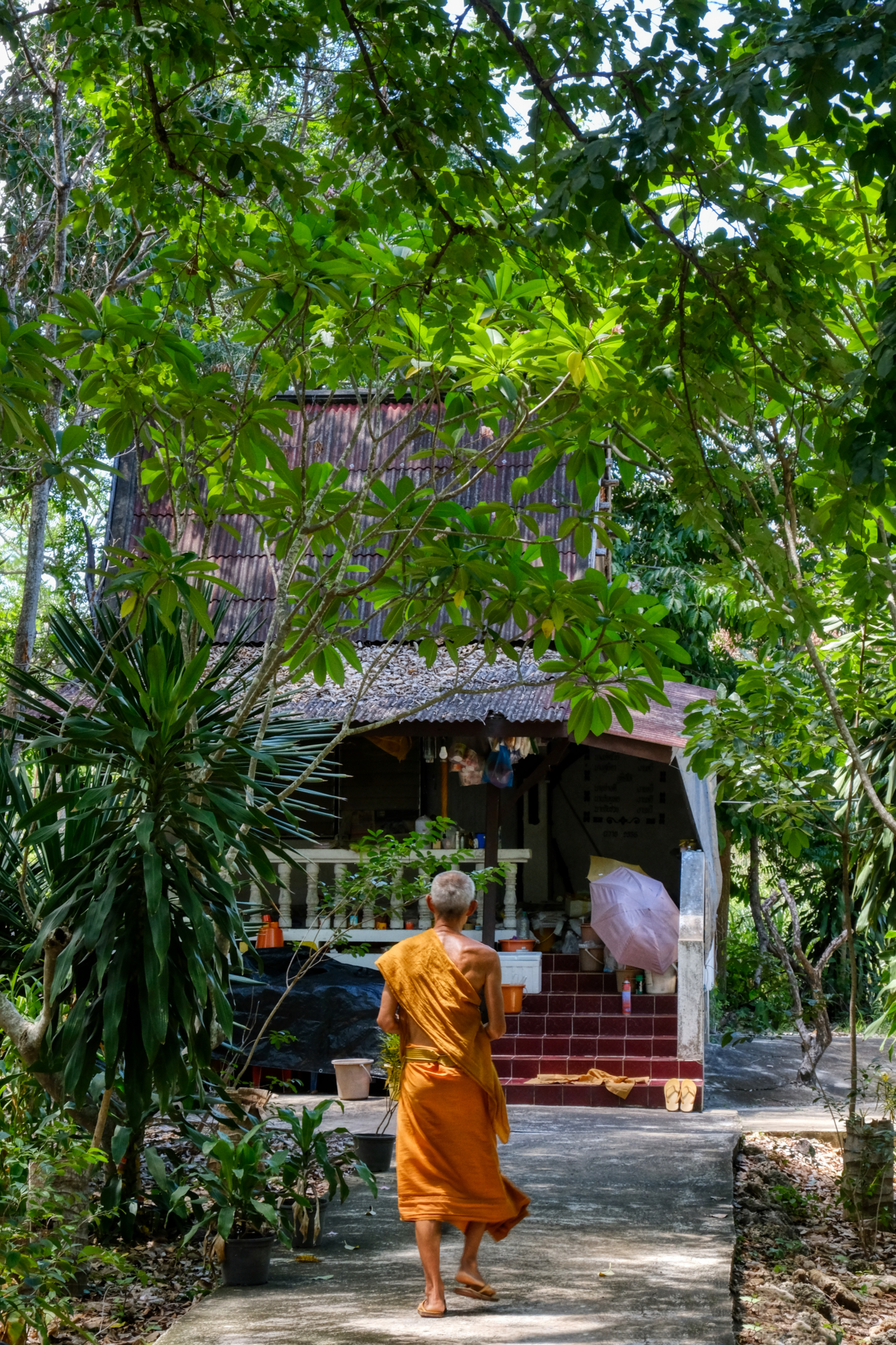 What I found at first were several very sweet monks' houses set in the trees.
What I found at first were several very sweet monks' houses set in the trees.
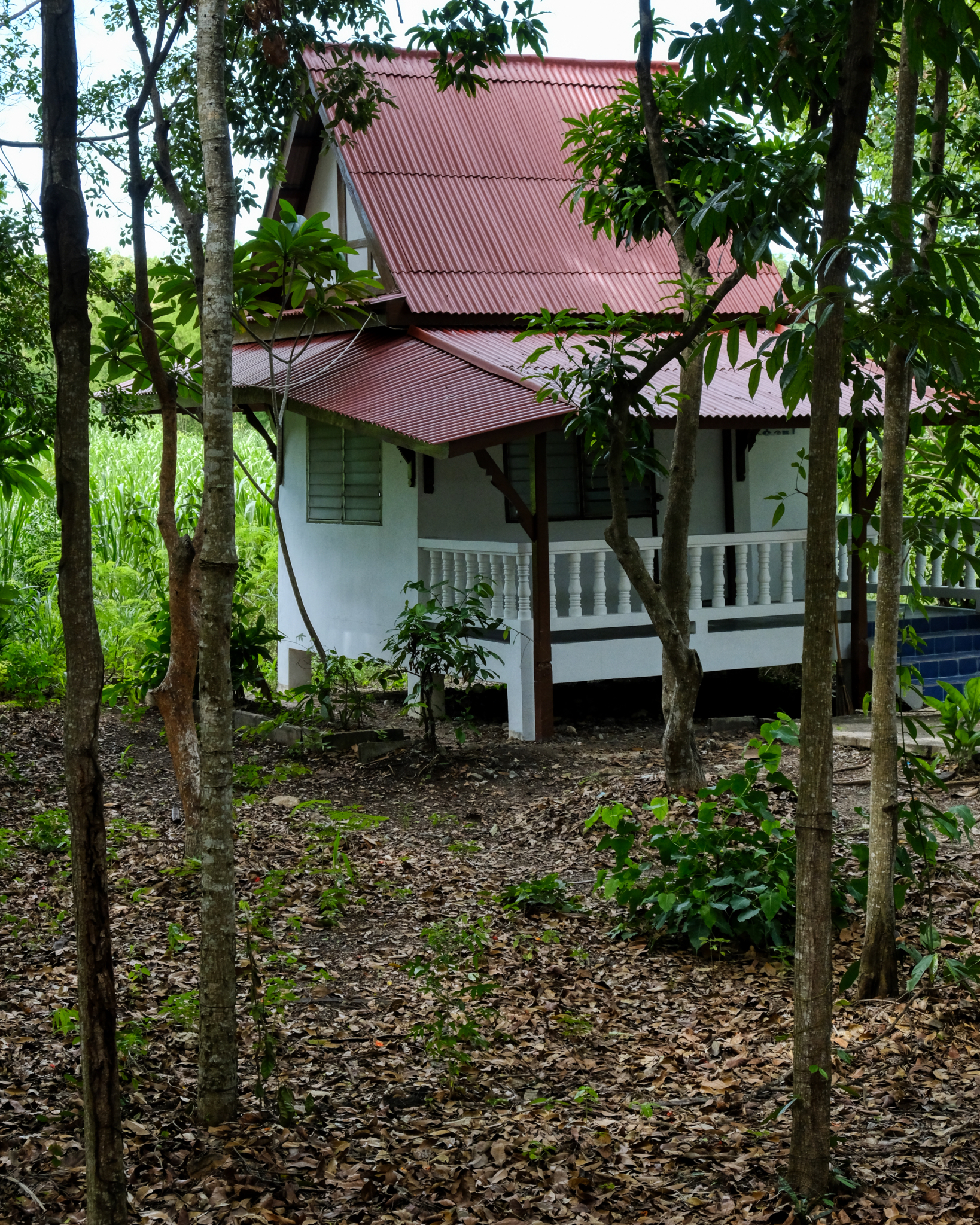 A simple, but attractive, monks quarters.
A simple, but attractive, monks quarters.
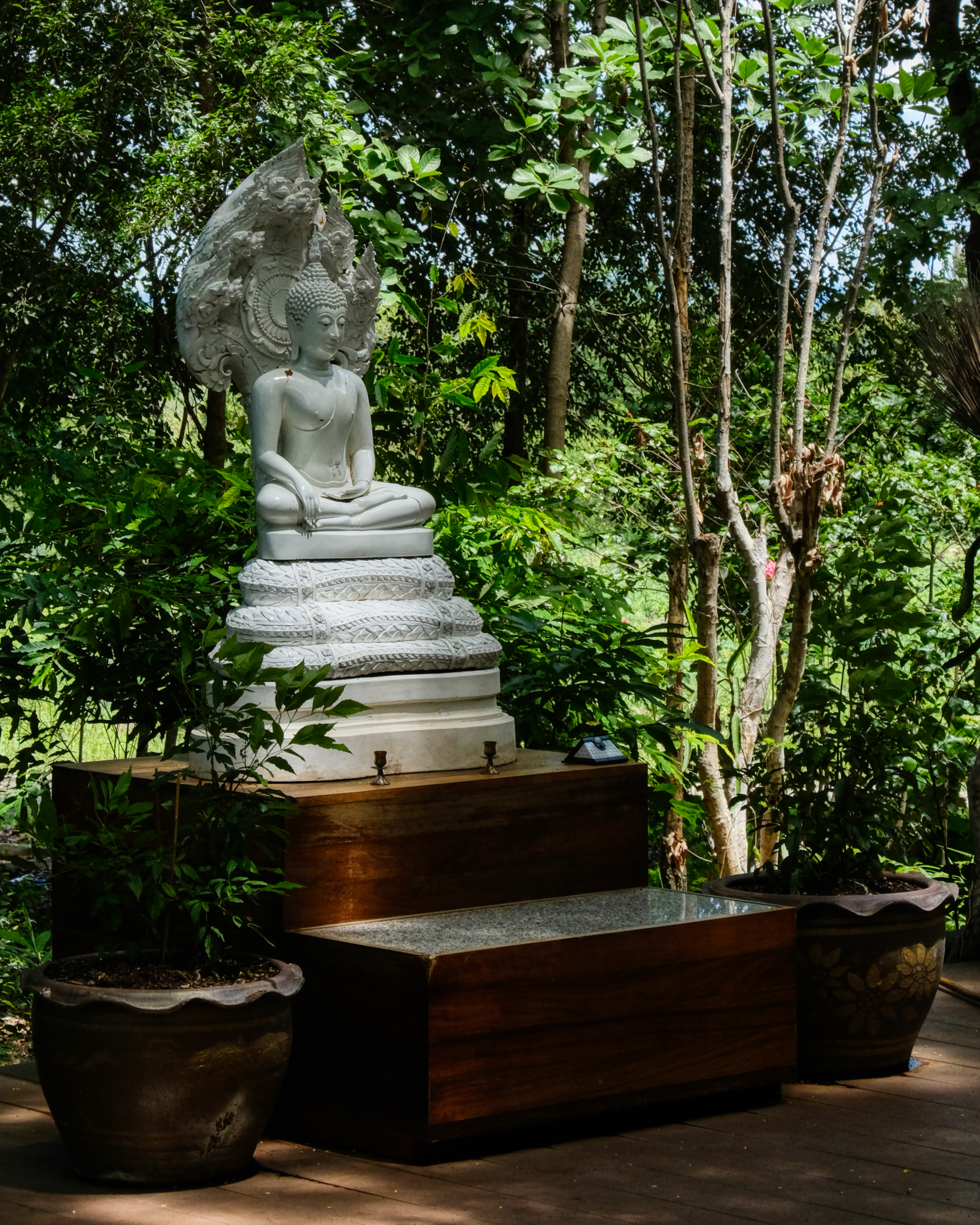 This remarkable Buddha was outside one of the modest monk's quarters.
This remarkable Buddha was outside one of the modest monk's quarters.
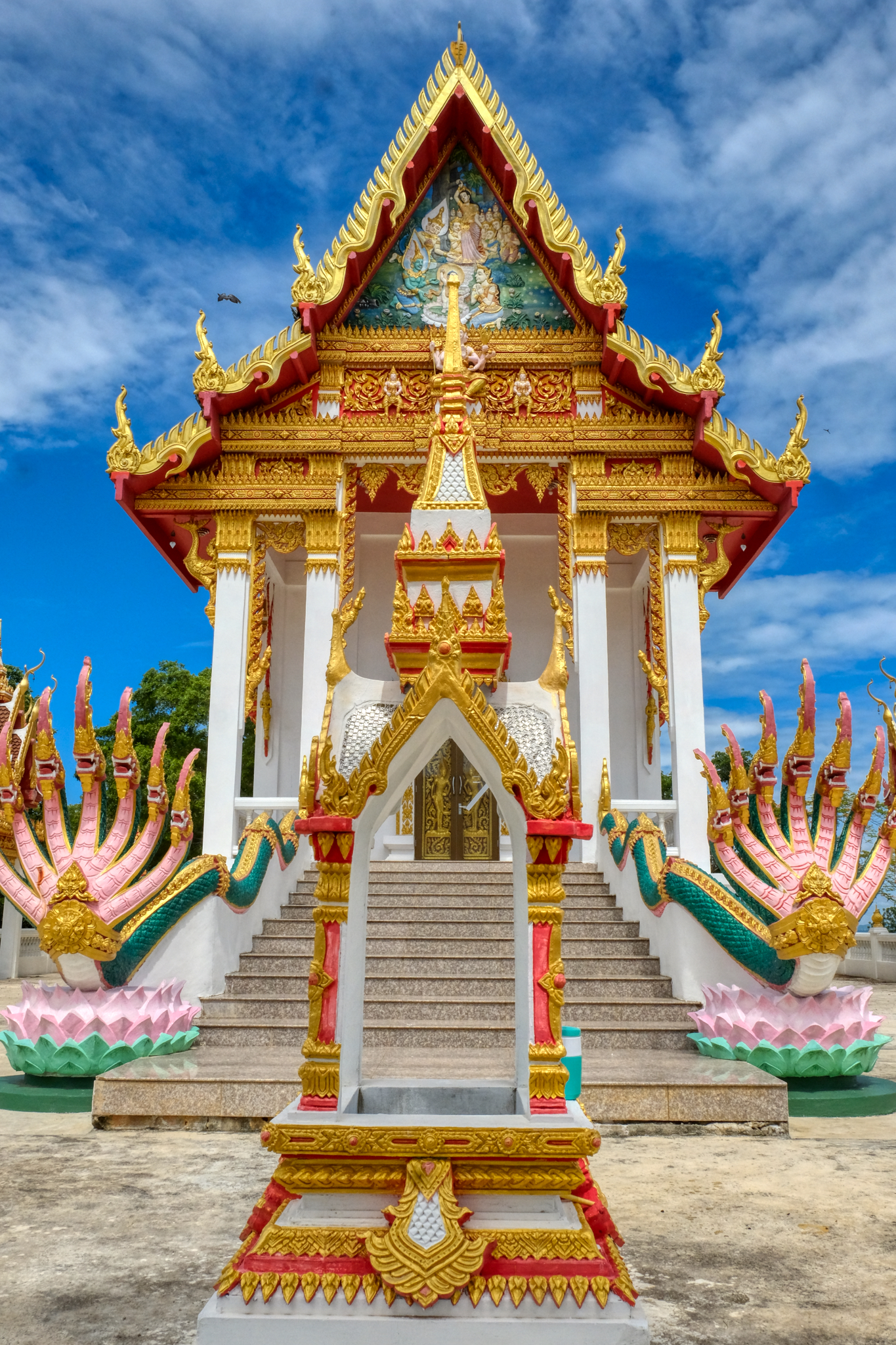 My long walk up the hill was rewarded with this view of a new wat building nearing completion. A brand new Thai Buddhist Temple, Wat PA Phrom Prathan.
My long walk up the hill was rewarded with this view of a new wat building nearing completion. A brand new Thai Buddhist Temple, Wat PA Phrom Prathan.
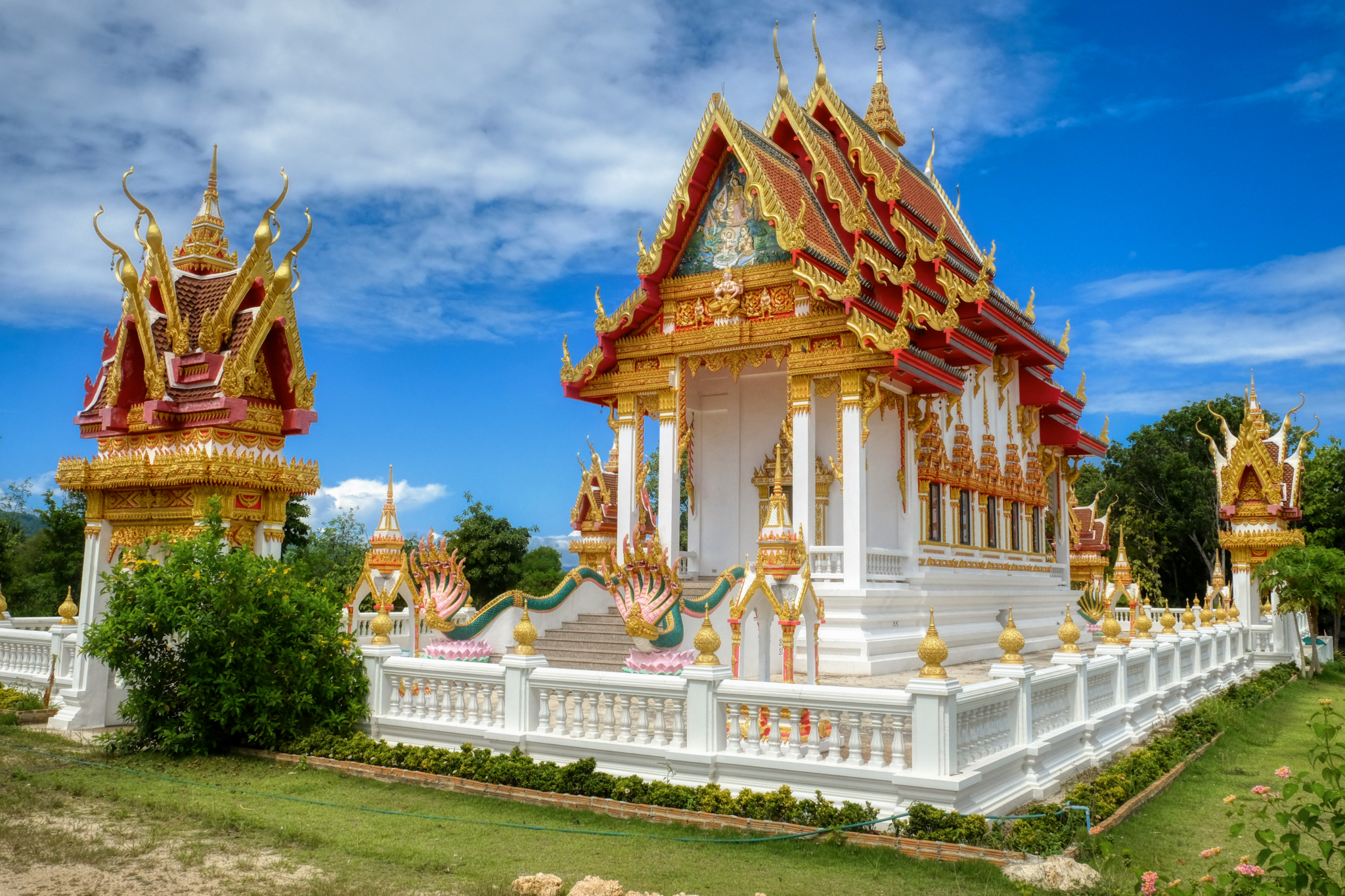 The new wat sat high on a hill over the valley. I walked around the site several times marveling at its fresh, pristine beauty.
The new wat sat high on a hill over the valley. I walked around the site several times marveling at its fresh, pristine beauty.
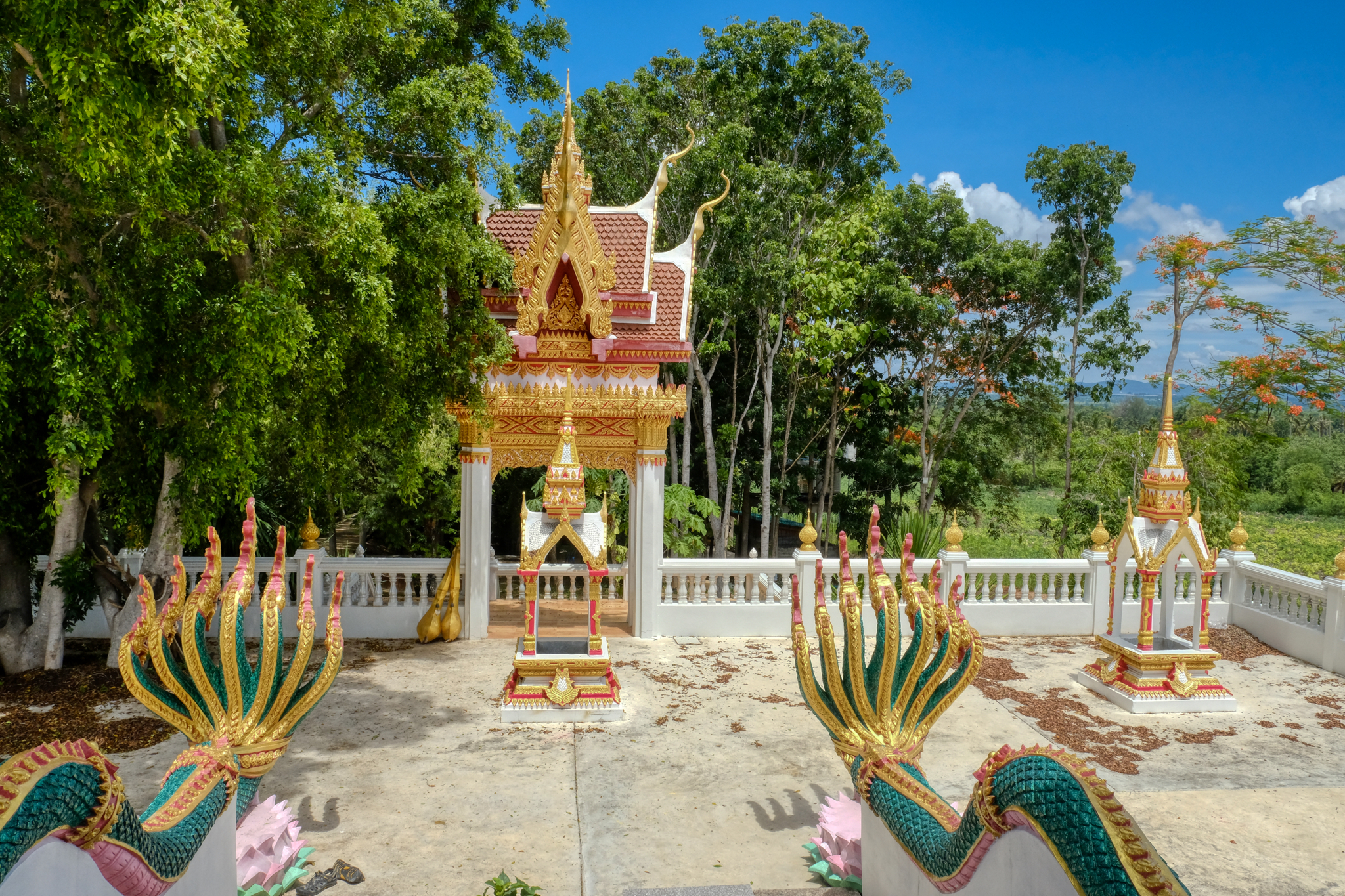 I noticed that the inner spaces of the wat were not swept or tiled . . . I knew this meant that they had not officially moved in . . . they were still working on it. The door was ajar, so I peaked in . . .
I noticed that the inner spaces of the wat were not swept or tiled . . . I knew this meant that they had not officially moved in . . . they were still working on it. The door was ajar, so I peaked in . . .
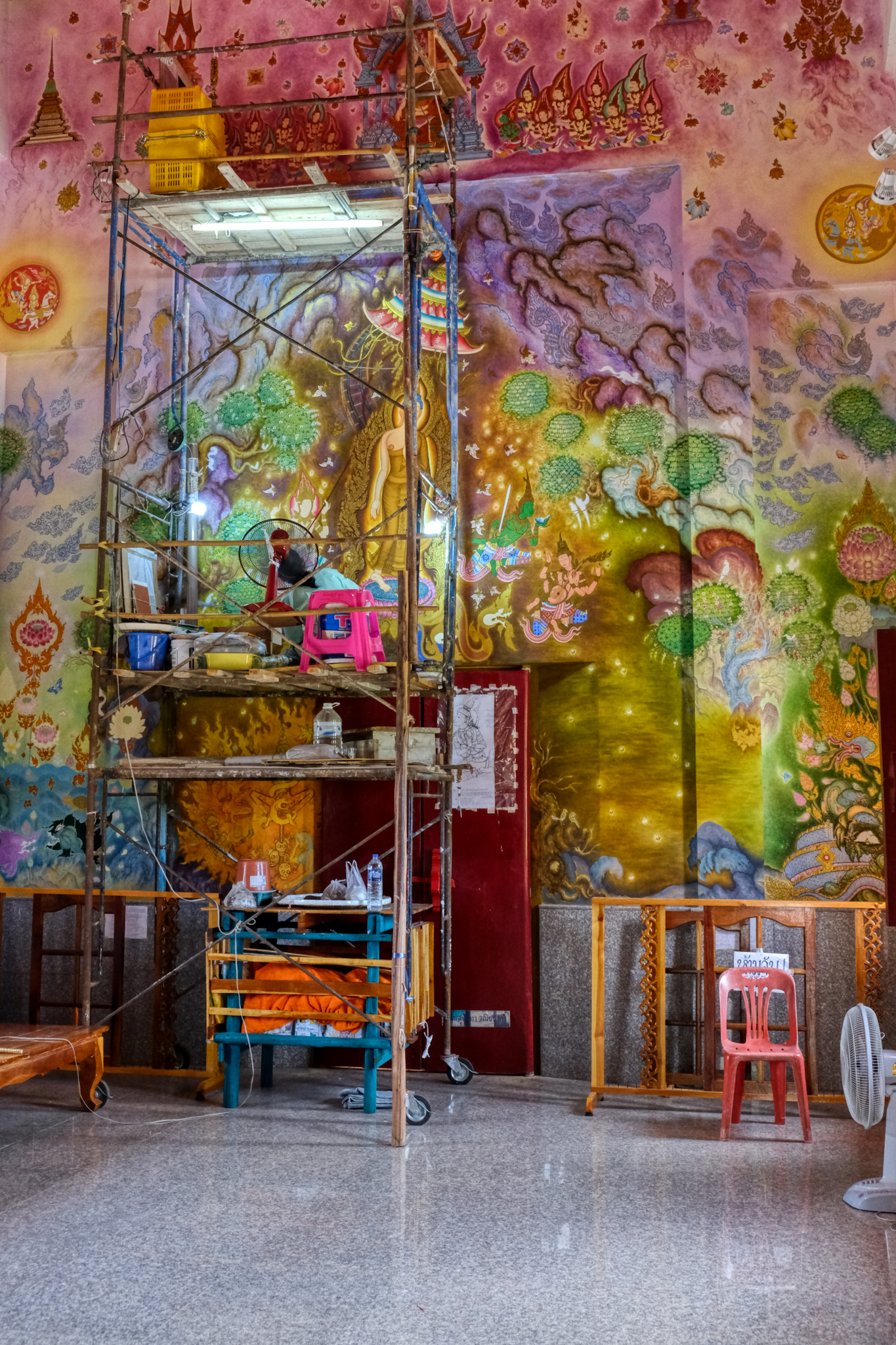 And this is what I saw when I opened the door . . . an artist on scaffolding painting an amazing mural on the far wall. WOW!
And this is what I saw when I opened the door . . . an artist on scaffolding painting an amazing mural on the far wall. WOW!
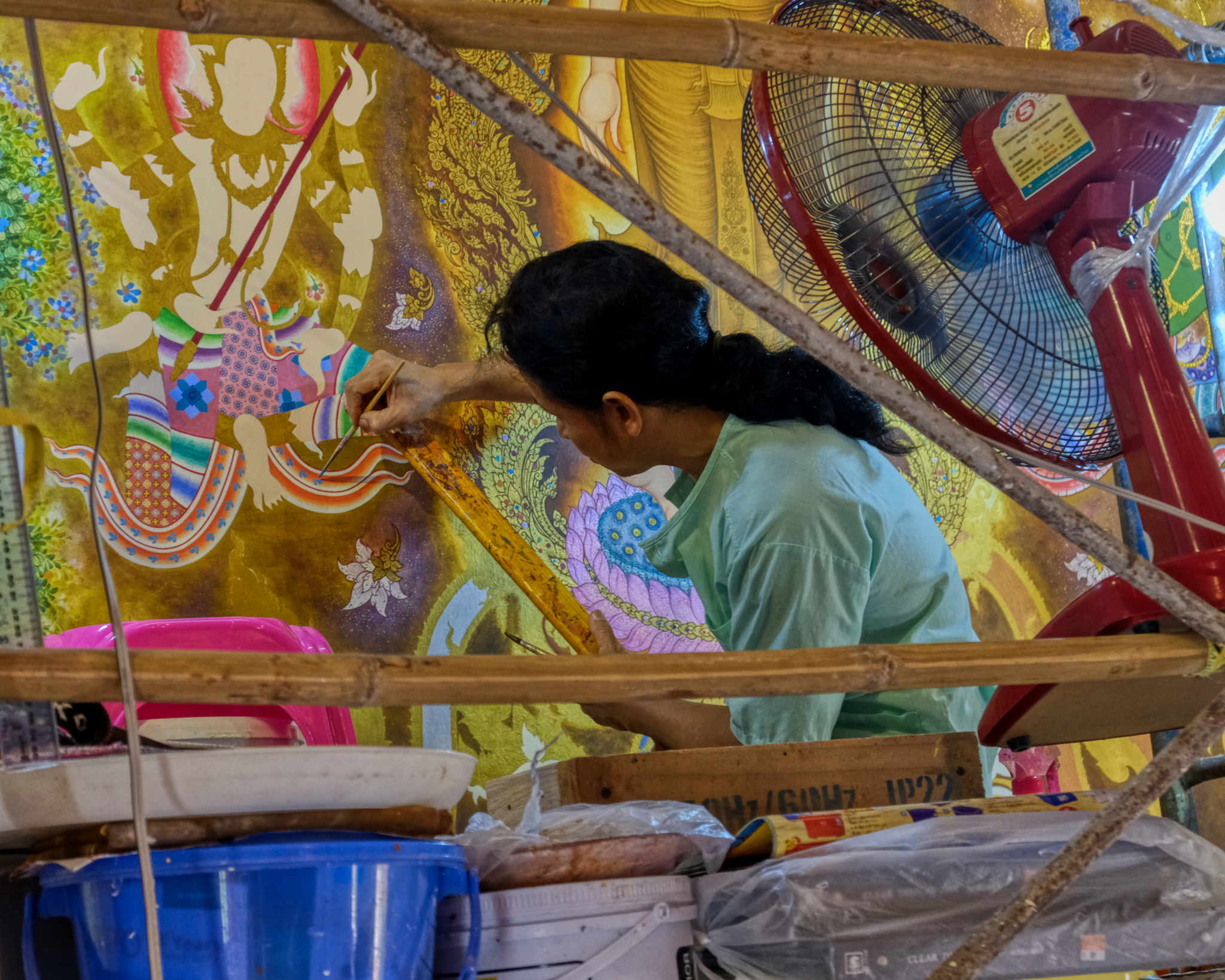 The artist at work.
The artist at work.
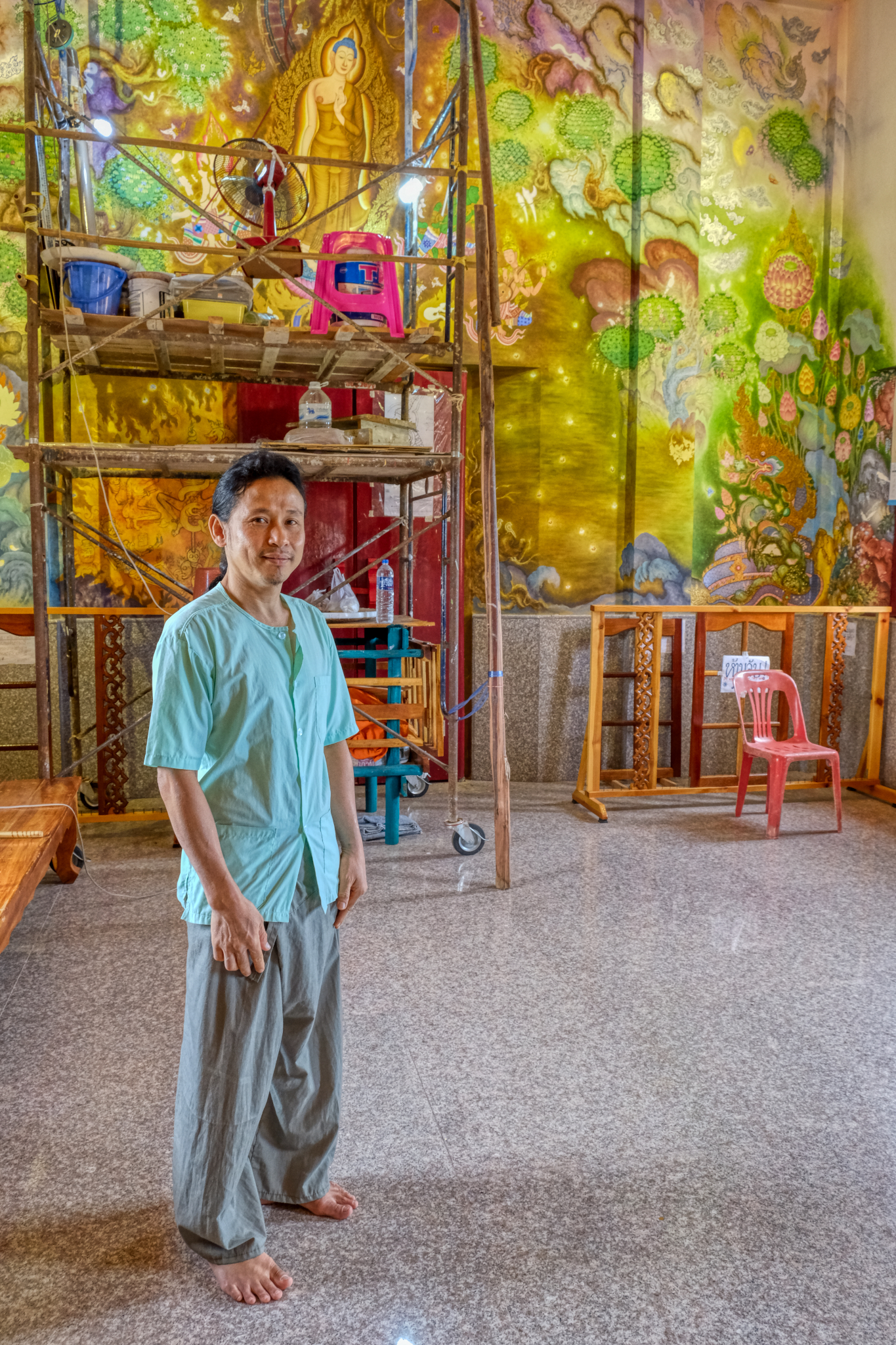 The artist came down off the scaffolding to offer me some water. I declined as I had my own. We chatted for a while. He said he had been working on that wall for three years already and that there were two or three more years left to finish the rest of the interior.
The artist came down off the scaffolding to offer me some water. I declined as I had my own. We chatted for a while. He said he had been working on that wall for three years already and that there were two or three more years left to finish the rest of the interior.
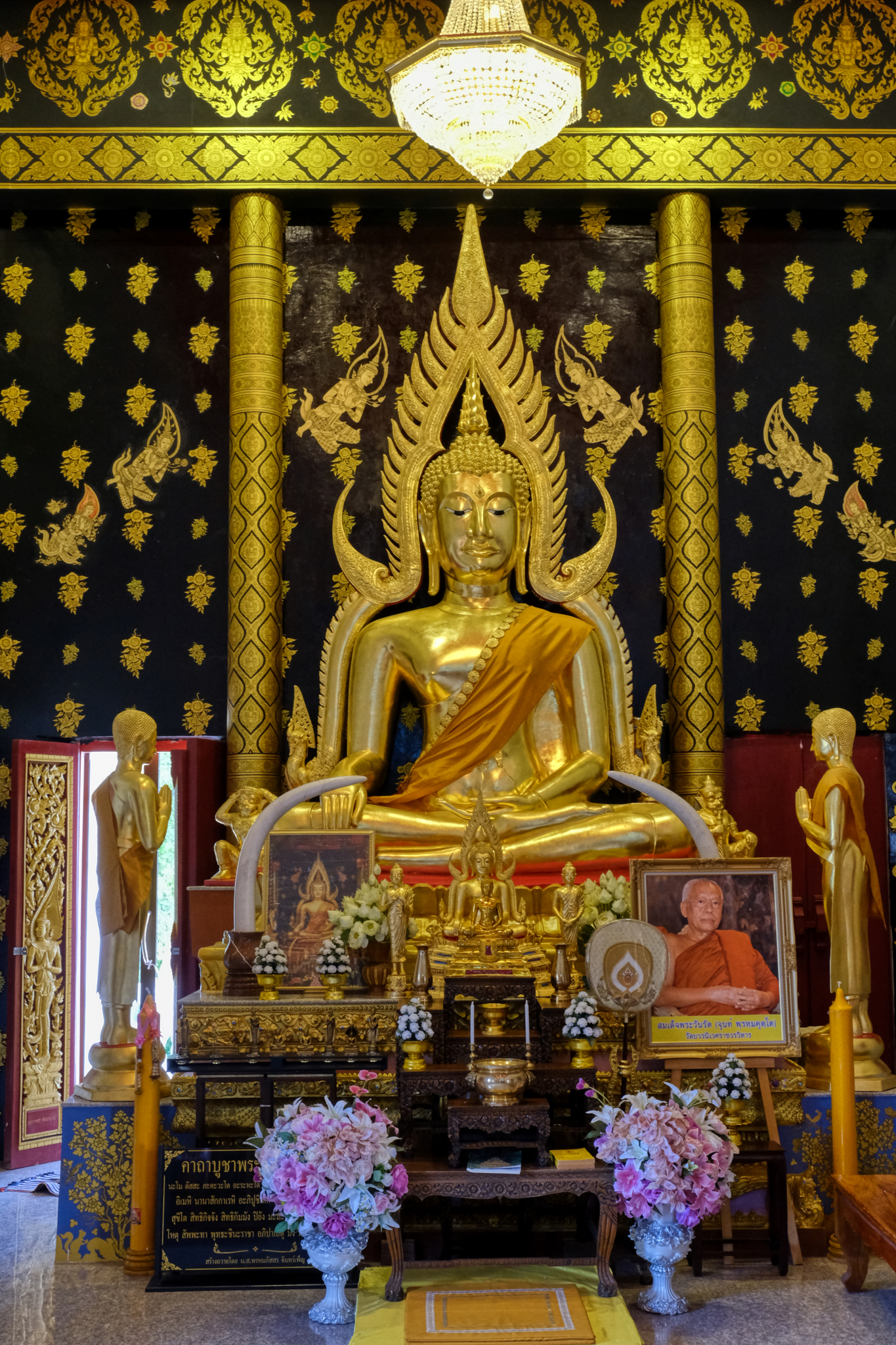 This altar faced the wall he was currently painting. He said that this wall only took six months to paint.
This altar faced the wall he was currently painting. He said that this wall only took six months to paint.
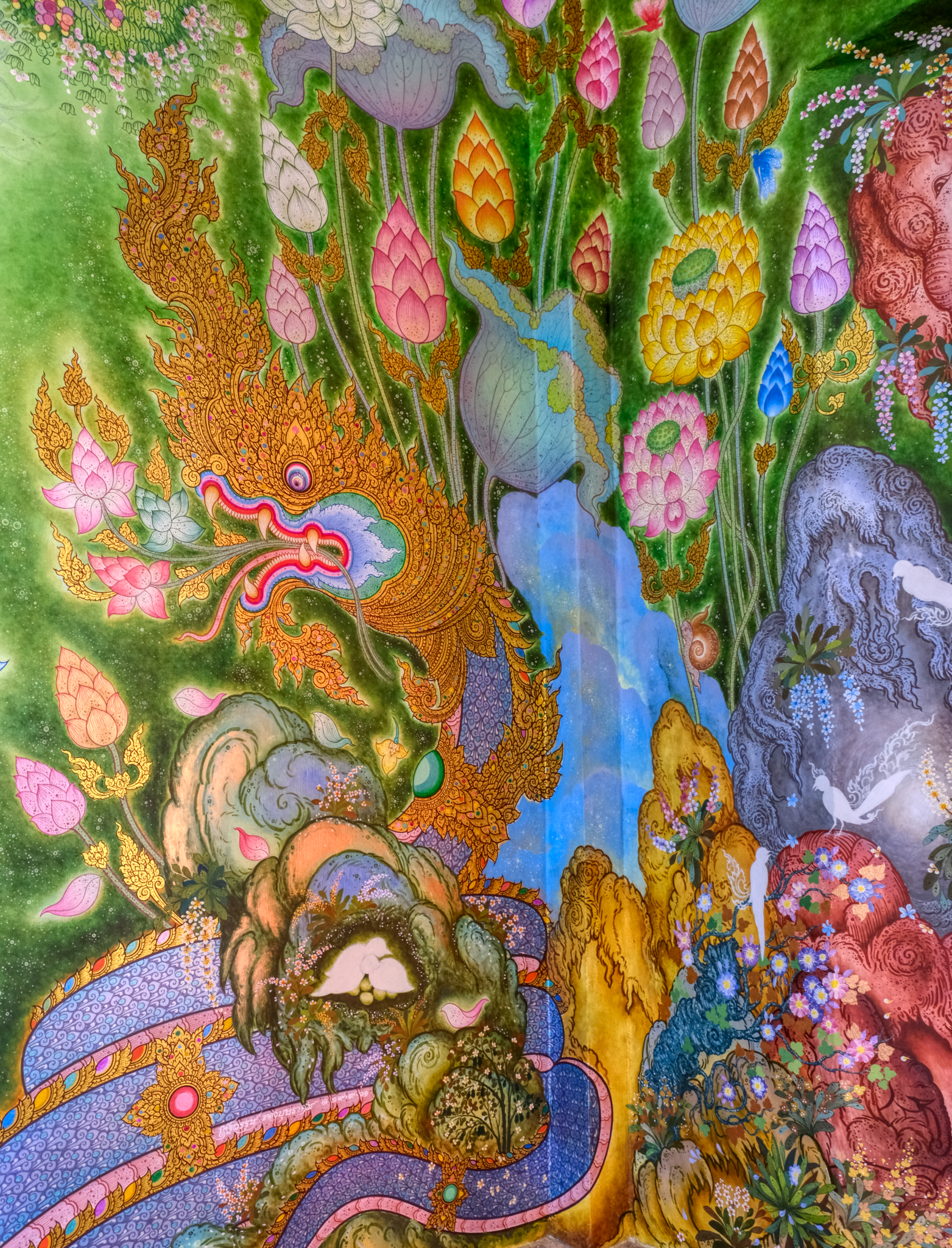 The artist's work and workmanship were masterful.
The artist's work and workmanship were masterful.
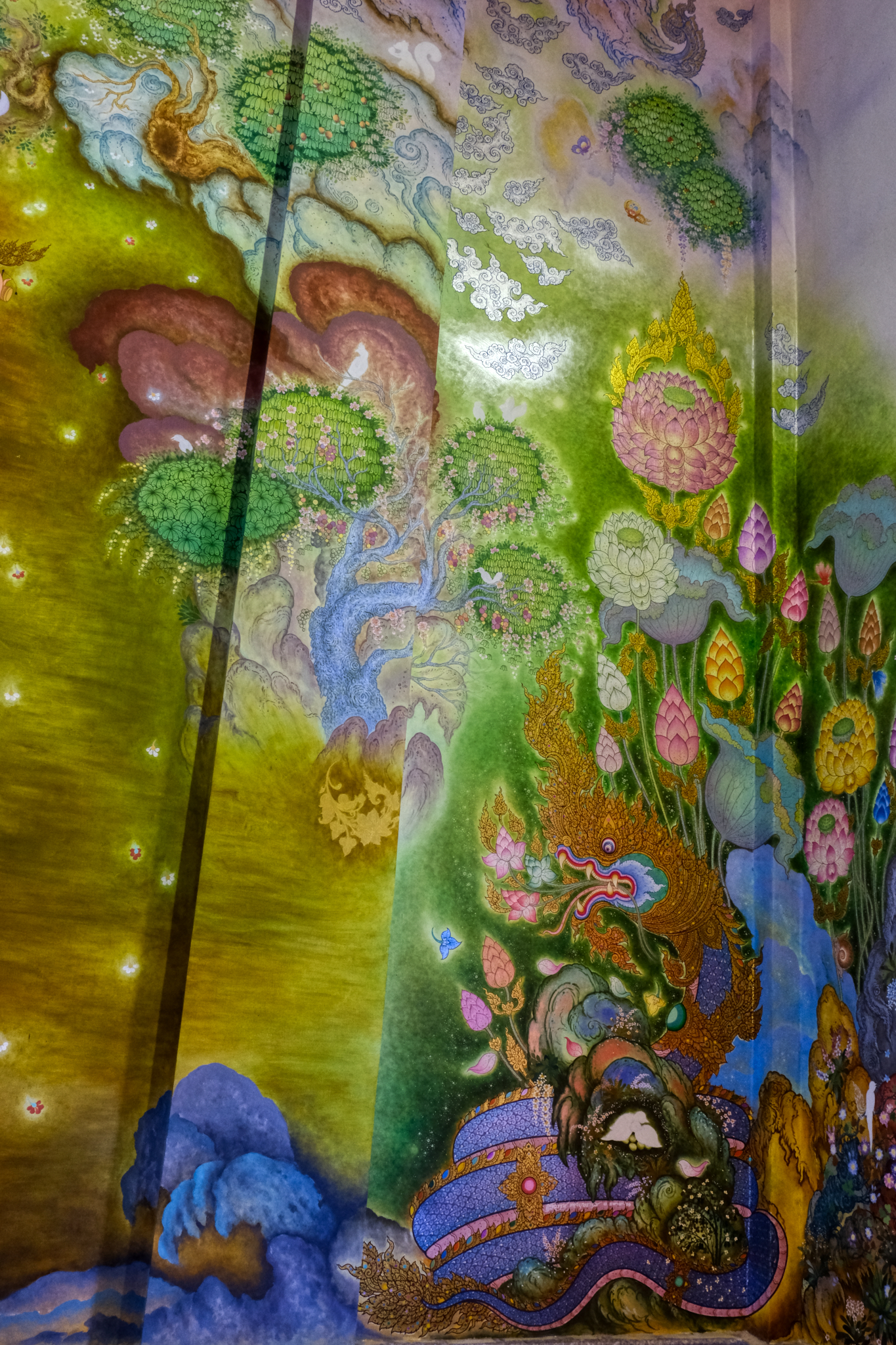 The huge mural depicted Buddhist and Thai iconography, as well as scenes from the life of the Buddha Gotama.
The huge mural depicted Buddhist and Thai iconography, as well as scenes from the life of the Buddha Gotama.
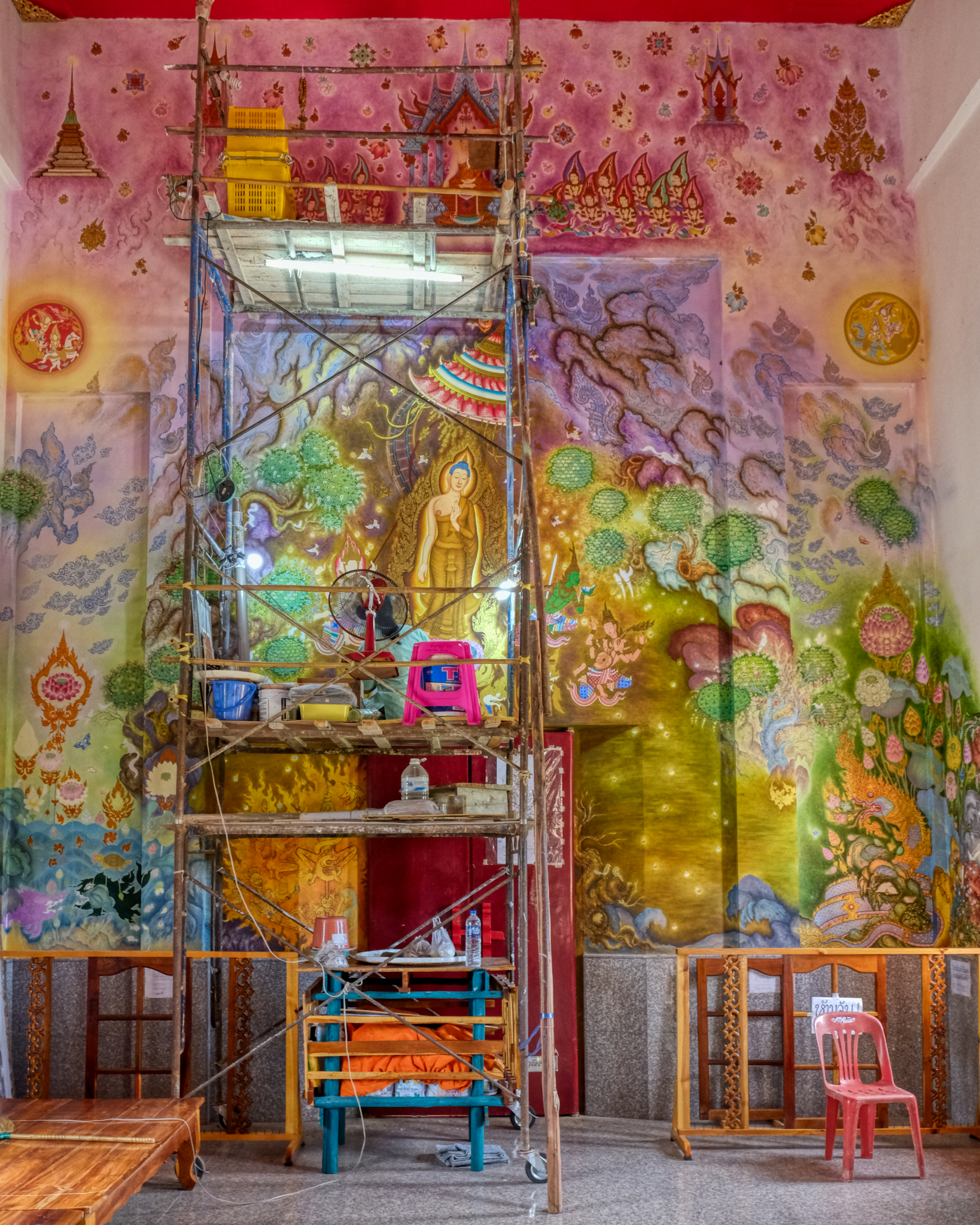 After we spoke he climbed back up to his platform and resumed painting. I sat watching him paint for quite awhile.
After we spoke he climbed back up to his platform and resumed painting. I sat watching him paint for quite awhile.
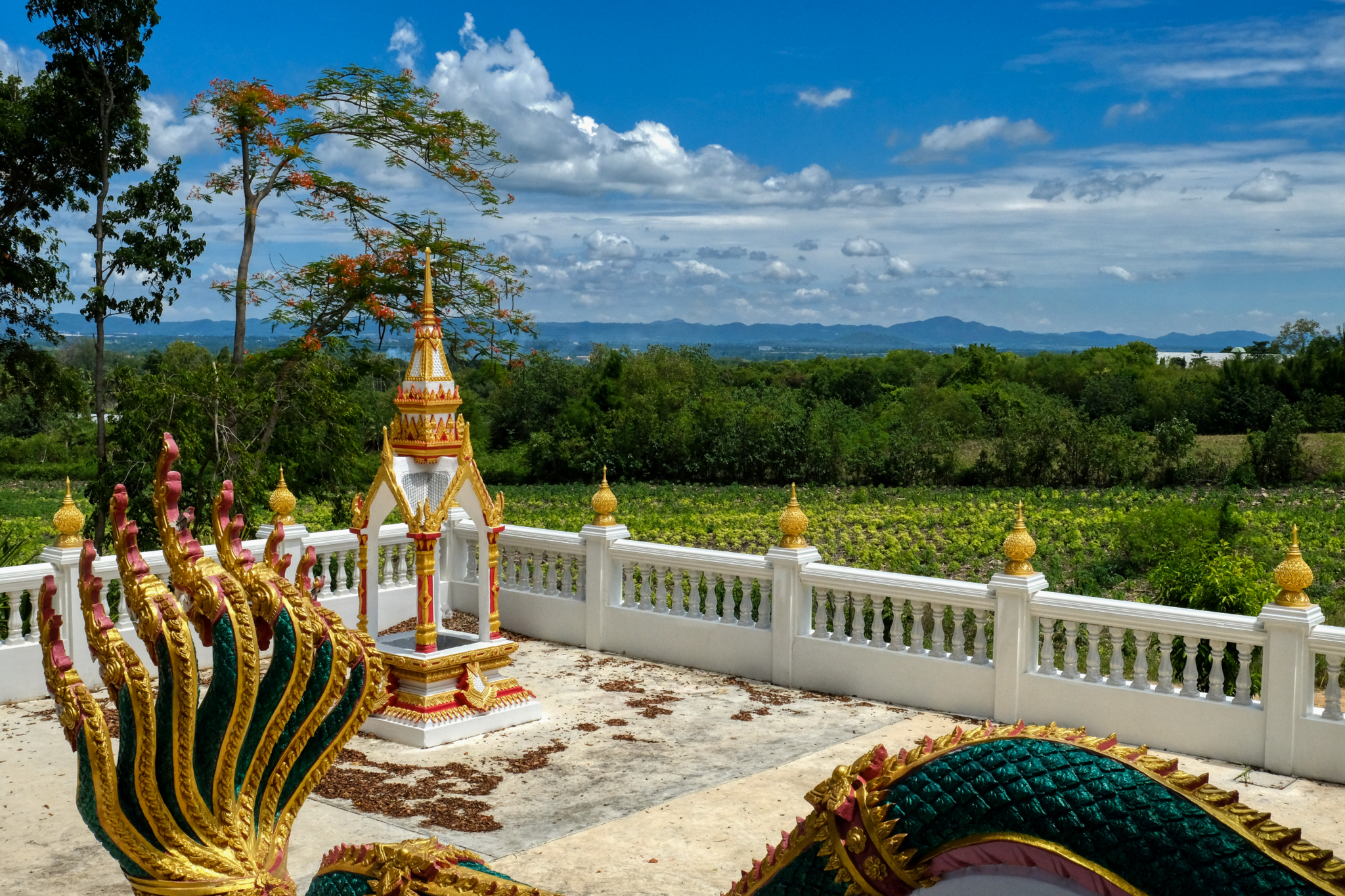 Standing outside the new wat enjoying the hilltop view out over the agricultural landscape of Khao Yai.
Standing outside the new wat enjoying the hilltop view out over the agricultural landscape of Khao Yai.
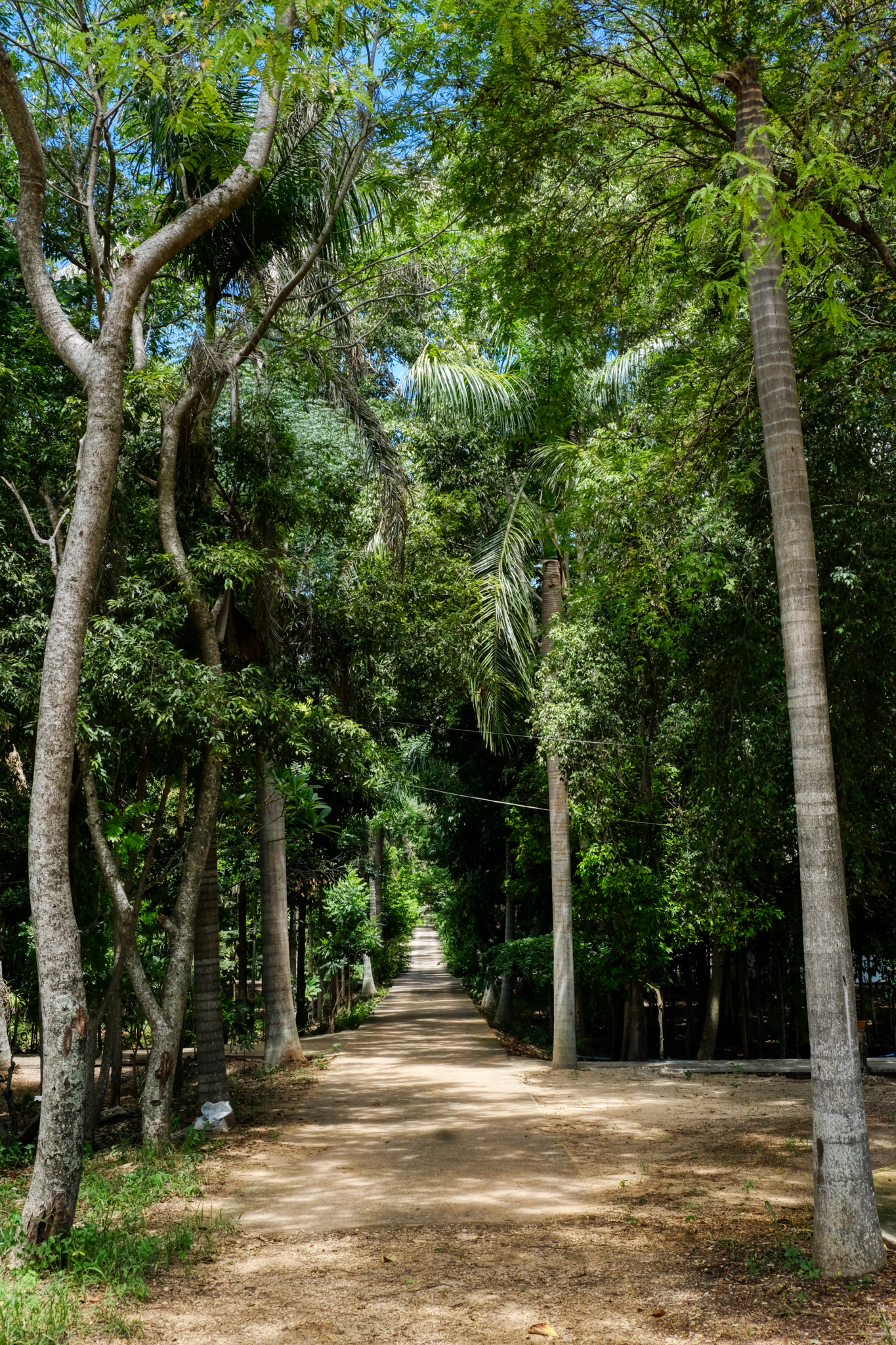 I walked back down the wooded land past the many monks cabins.
I walked back down the wooded land past the many monks cabins.
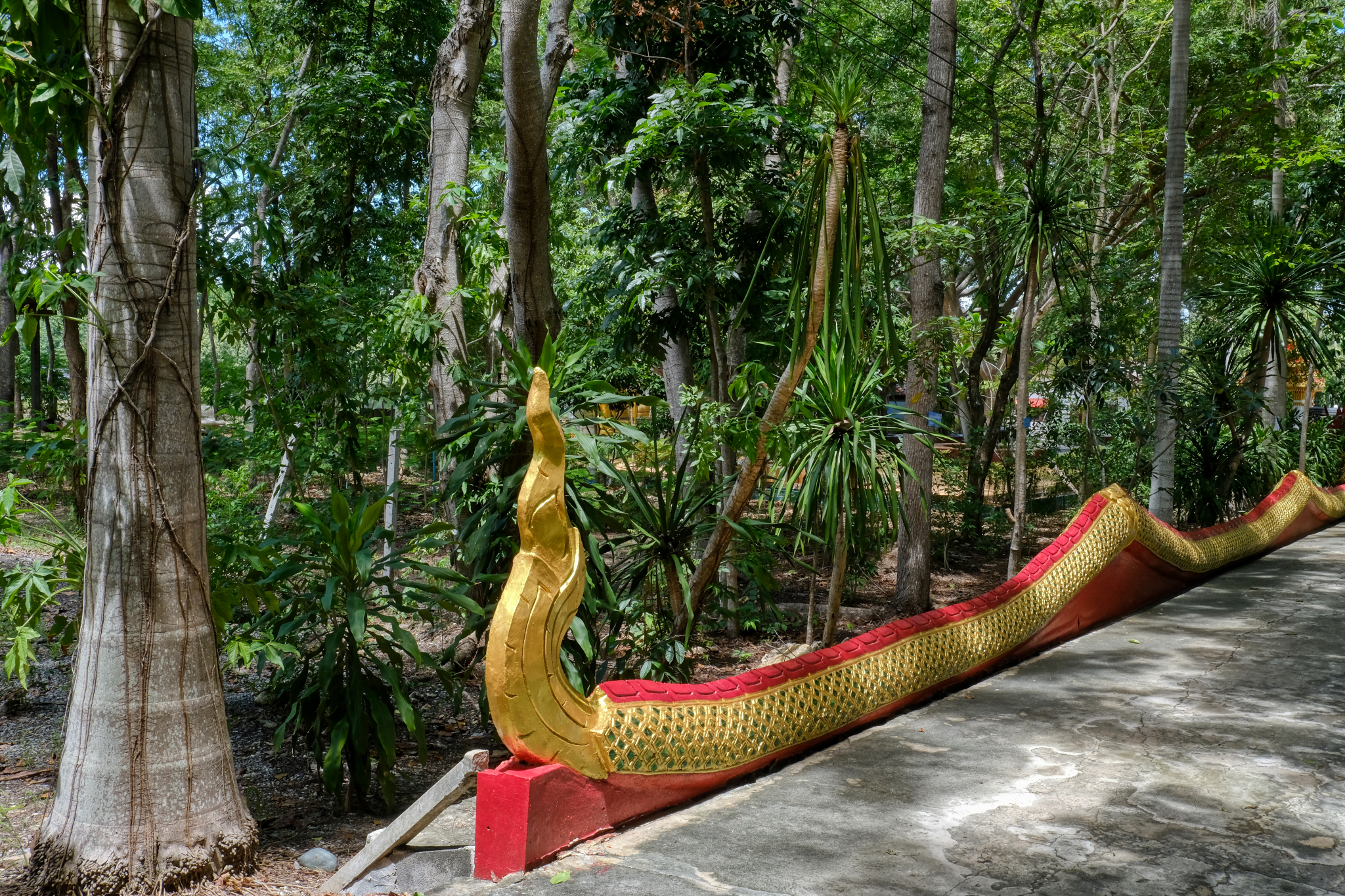 On the way back down I stopped at the tail of the many-headed dragon-snake that had welcomed me when I started up the hill.
On the way back down I stopped at the tail of the many-headed dragon-snake that had welcomed me when I started up the hill.
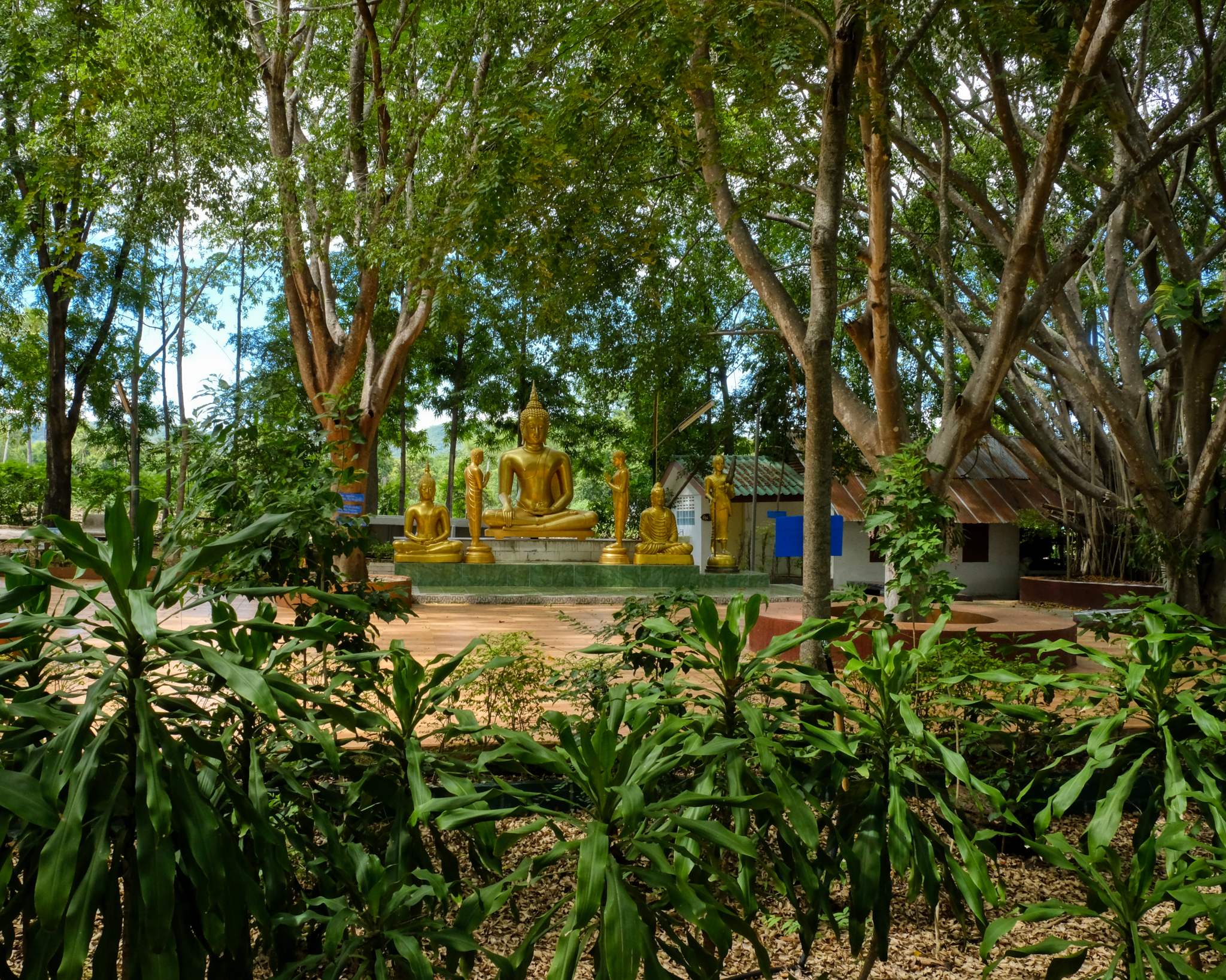 Back where I started, at the tree sheltered Buddha altar.
Back where I started, at the tree sheltered Buddha altar.
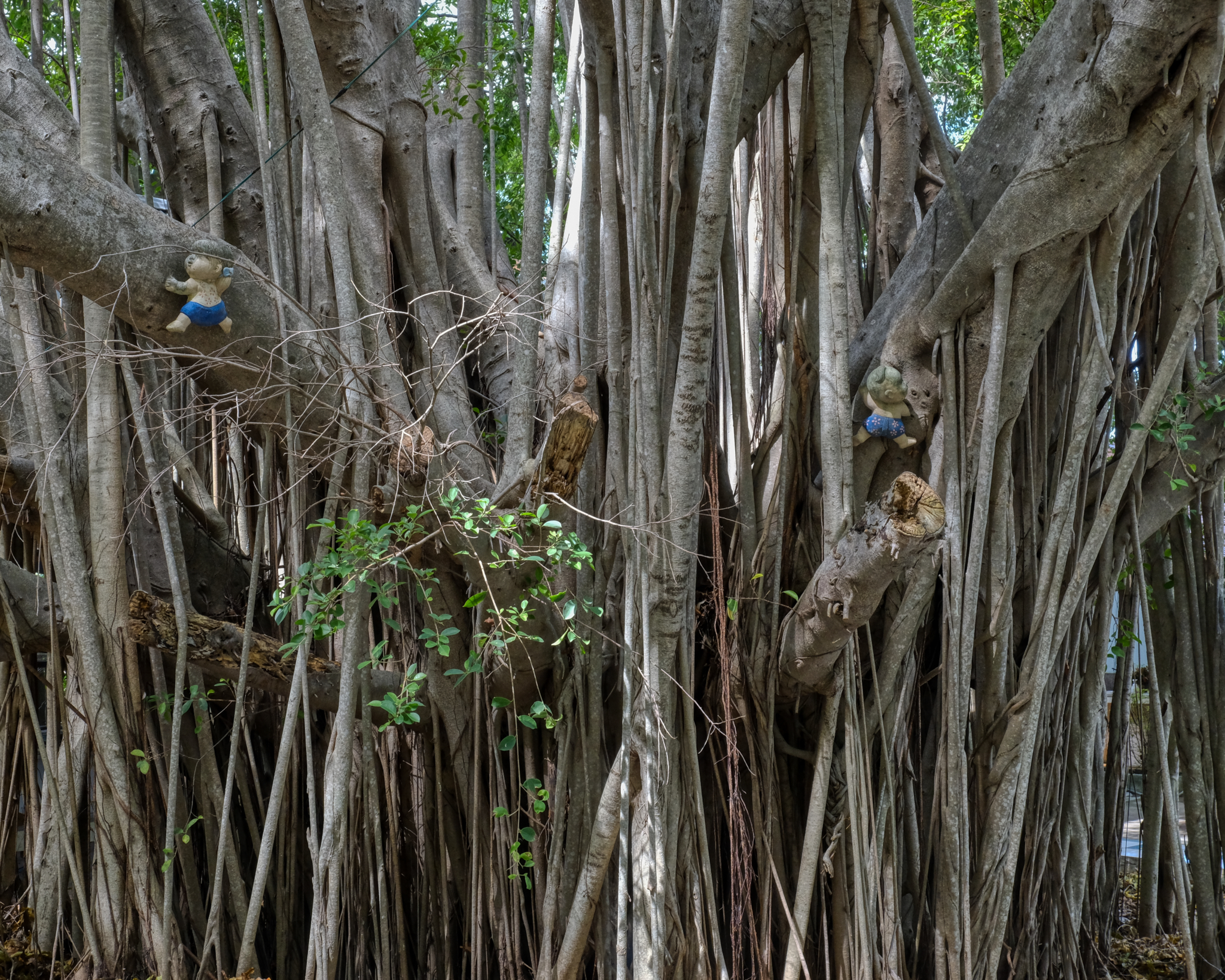 Extraordinary 'bodi' trees at this wat.
Extraordinary 'bodi' trees at this wat.
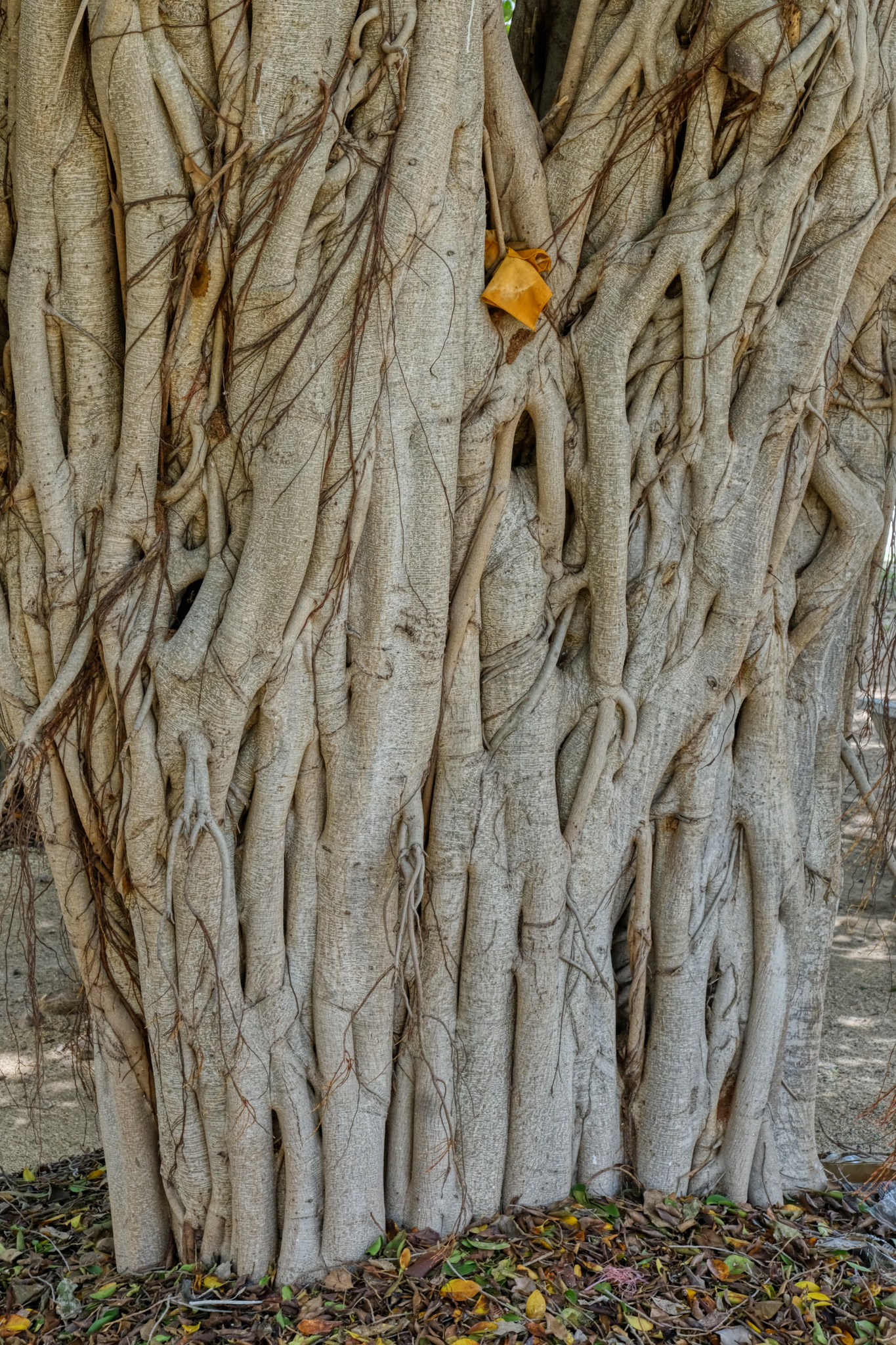 These trees!!!
These trees!!!
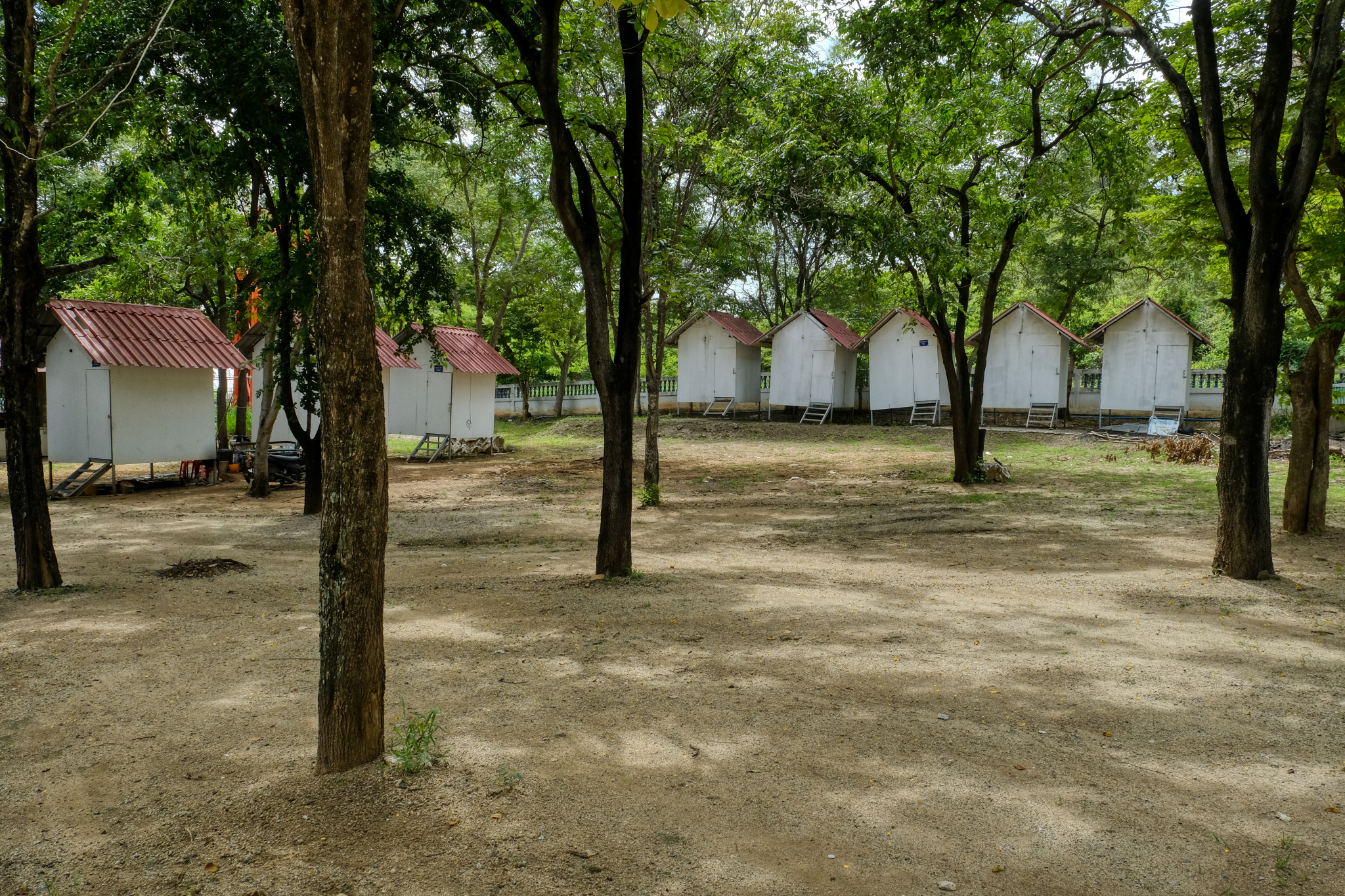 I strolled around the rest of the temple grounds and came upon these monks' cells. I assume this was a wat that took in novice/new monks and trained them here. Very austere . . .
I strolled around the rest of the temple grounds and came upon these monks' cells. I assume this was a wat that took in novice/new monks and trained them here. Very austere . . .
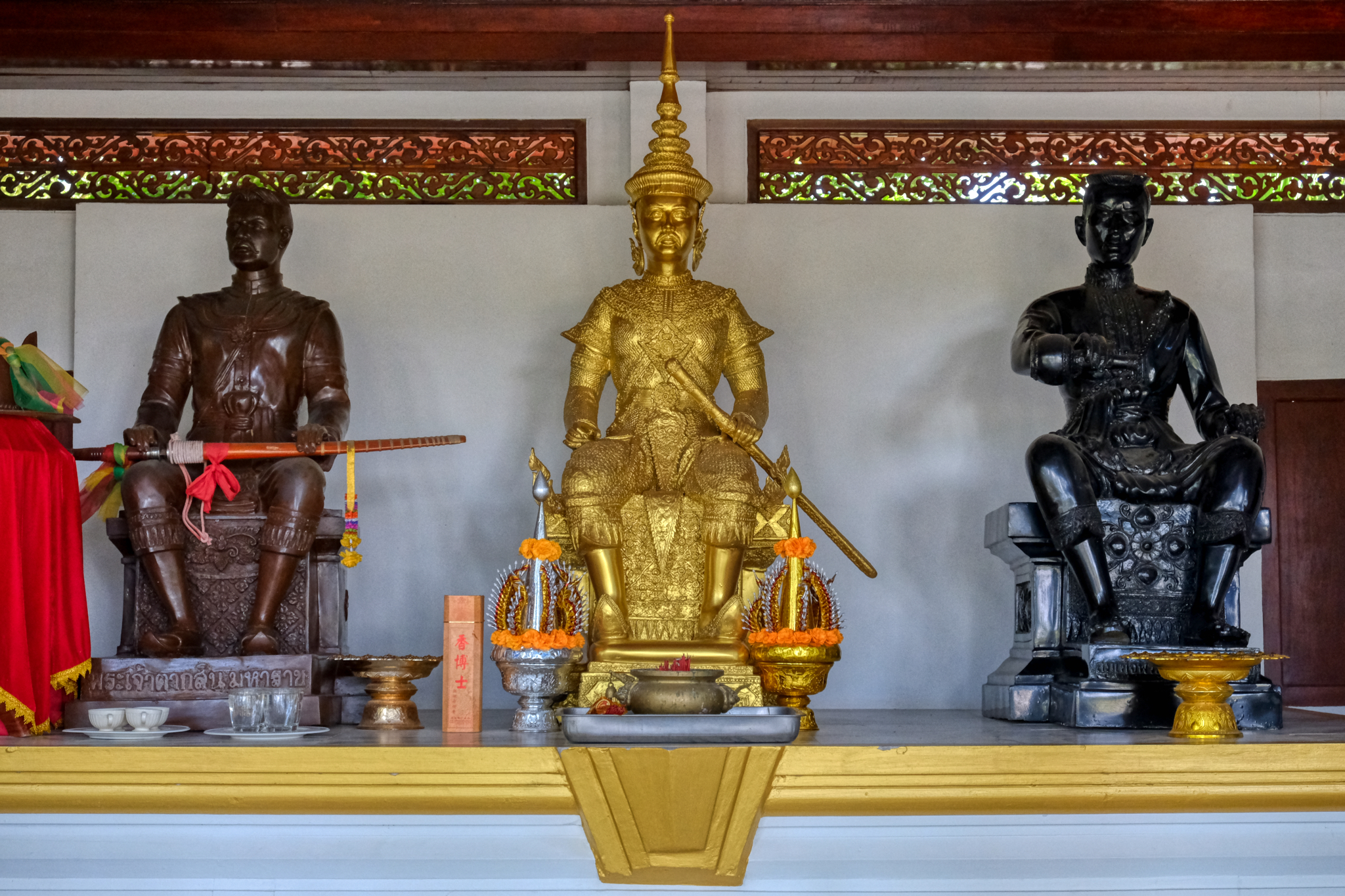 Someone had built a very nice sala with statues of three ancient Thai Kings. Sweet.
Someone had built a very nice sala with statues of three ancient Thai Kings. Sweet.
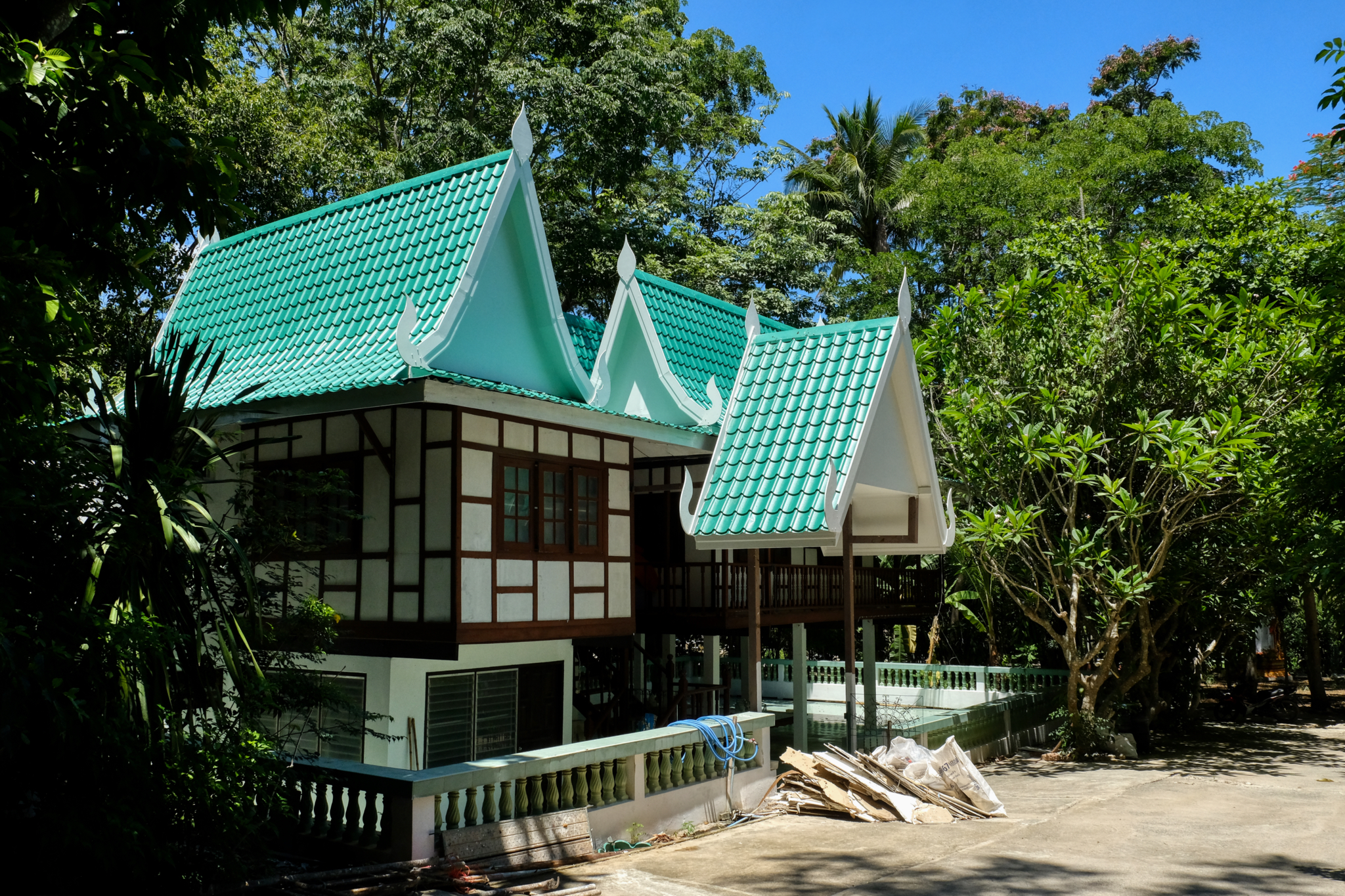 What I assumed to be the head Abbot's house getting the finishing touches on a new roof.
What I assumed to be the head Abbot's house getting the finishing touches on a new roof.
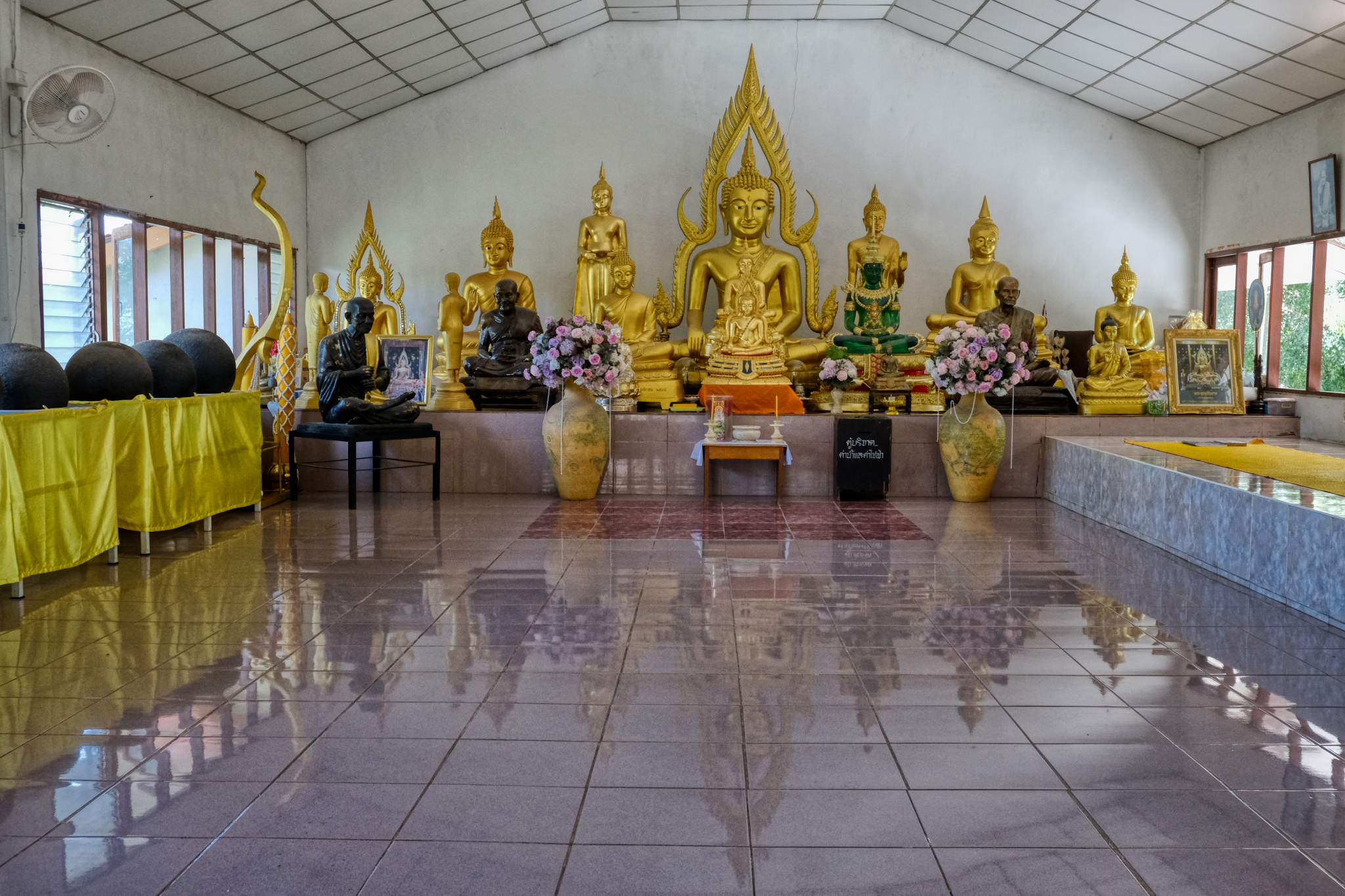 The current main hall where the monks daily meet to meditate and chant. The door was open and I went in. I had been looking for the donation box and I found it here. I left a substantial donation toward the construction and maintenance of this wonderful place.
The current main hall where the monks daily meet to meditate and chant. The door was open and I went in. I had been looking for the donation box and I found it here. I left a substantial donation toward the construction and maintenance of this wonderful place.
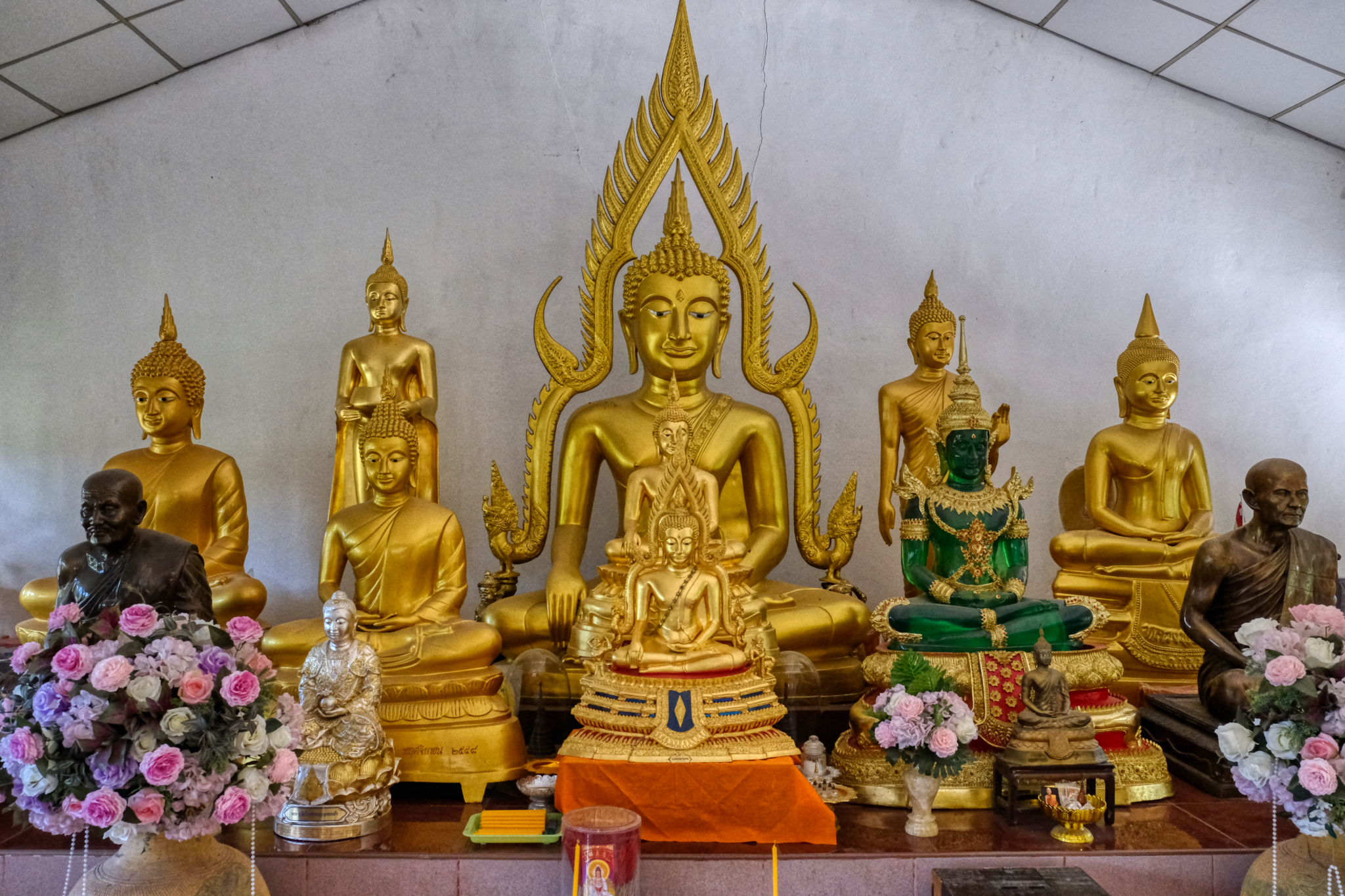 I left this wat after many hours exploring its beauty and spirituality.
I left this wat after many hours exploring its beauty and spirituality.
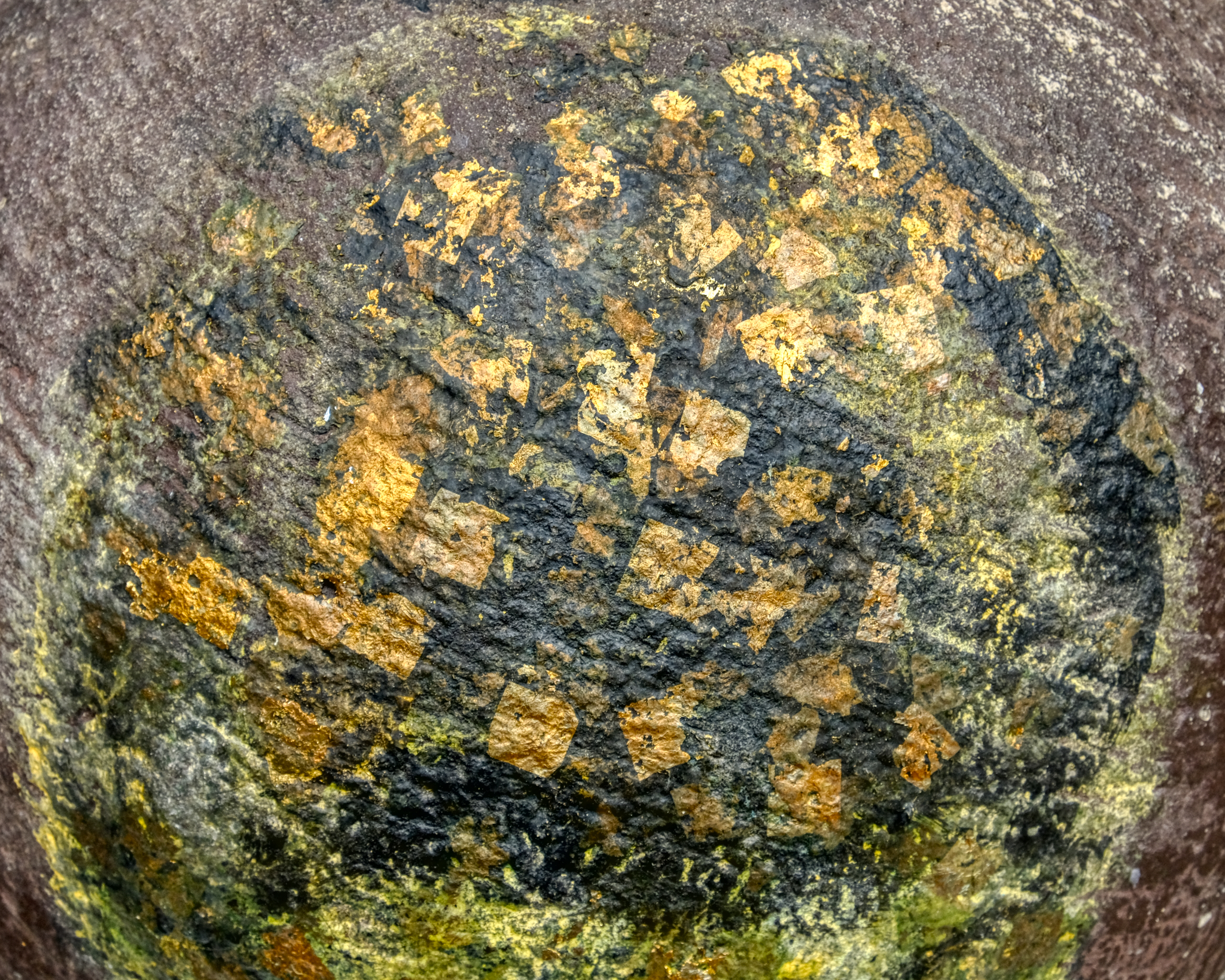
Poland: Kraków is a beautiful vacation destination!
 Friday, April 17, 2020 at 9:03AM
Friday, April 17, 2020 at 9:03AM We visited Poland (Kraków and Gdańsk) in the summer of 2014. The entry for Gdańsk can be found HERE.
KRAKÓW:
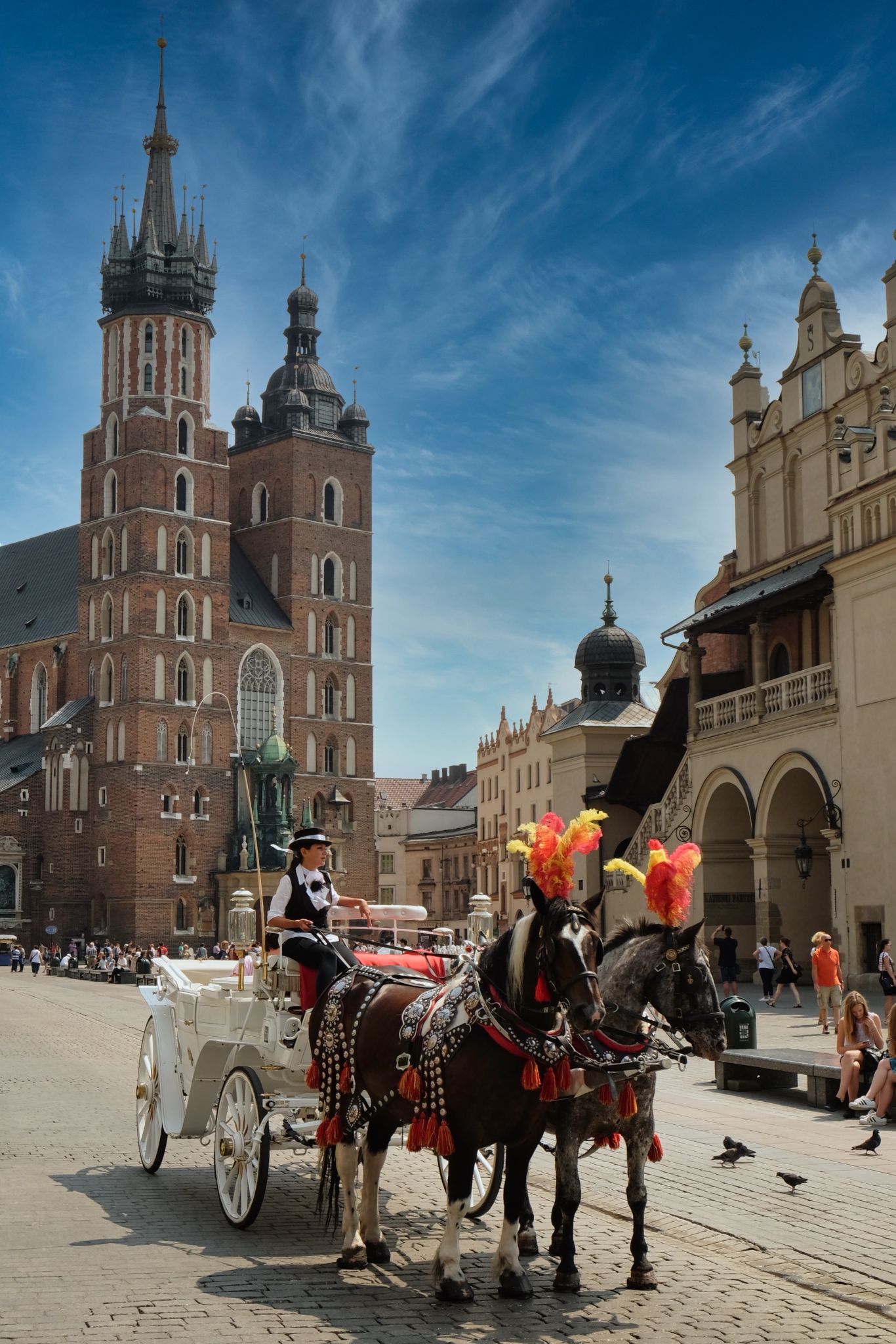 Central city Kraków in early summer is such a wonderful place to visit. The marvelous 14th century St. Mary's Basilica on the square.
Central city Kraków in early summer is such a wonderful place to visit. The marvelous 14th century St. Mary's Basilica on the square.
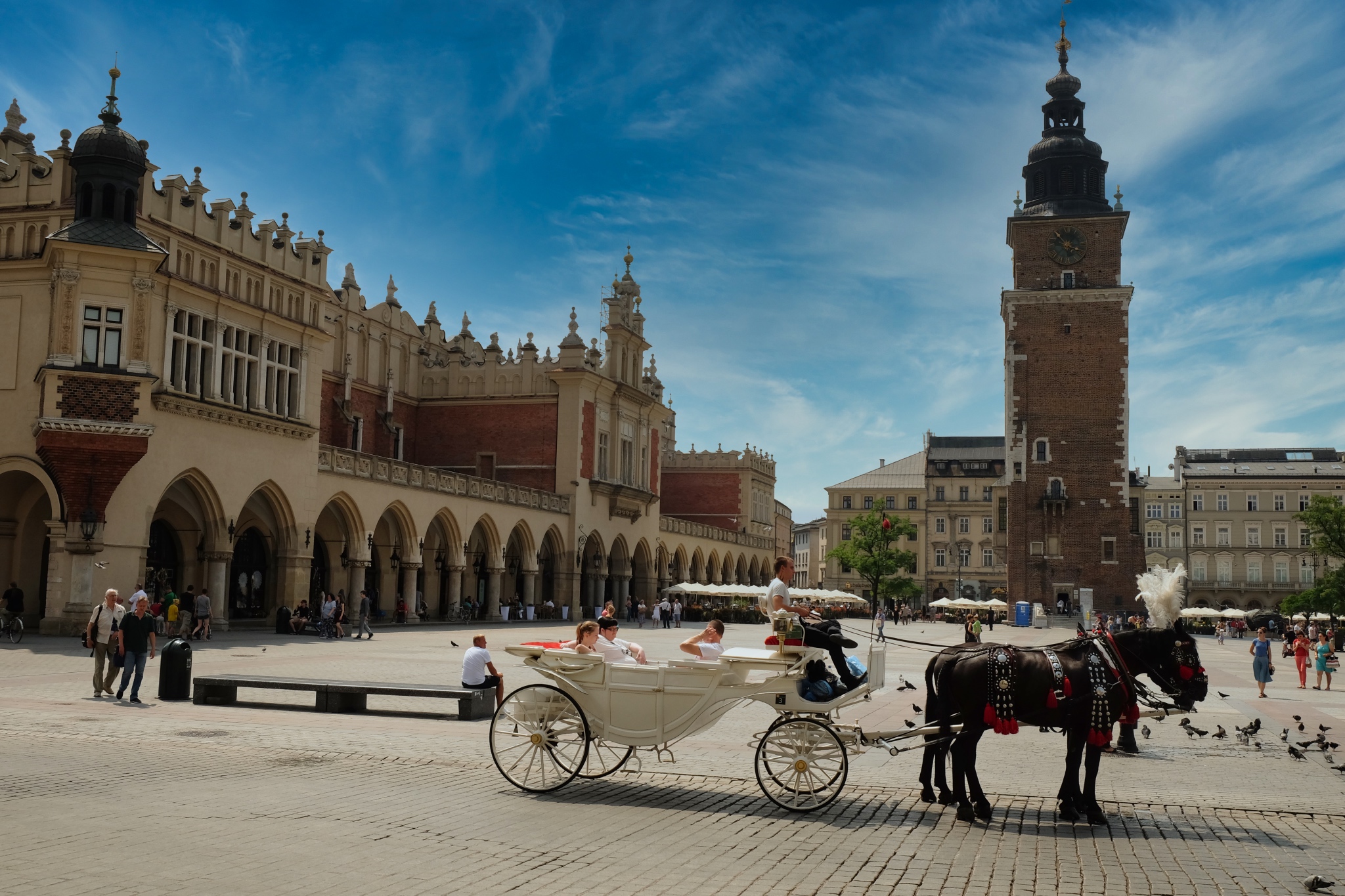 The Main Square in Kraków dates from the 13th century and is the largest town square in all of Europe (@ 9.2 acres, or 3.79 ha).
The Main Square in Kraków dates from the 13th century and is the largest town square in all of Europe (@ 9.2 acres, or 3.79 ha).
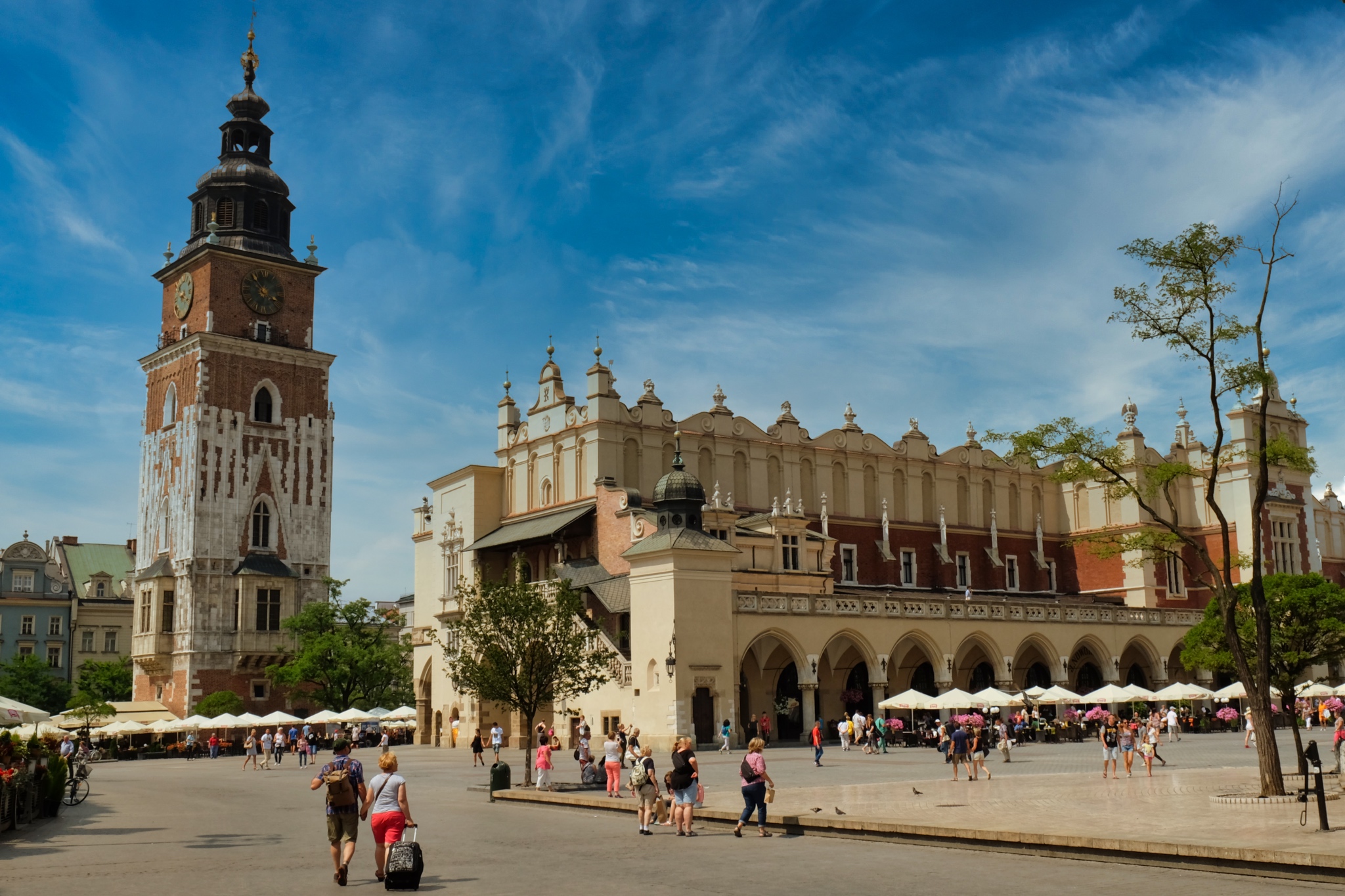 Kraków Main Square with the Cloth Hall (right, now a tourist galleria) built in the 15th century, and the City Hall Tower (left) built in the 14th Century. The original town hall, which was attached to the tower, was demolished in the mid-1800s.
Kraków Main Square with the Cloth Hall (right, now a tourist galleria) built in the 15th century, and the City Hall Tower (left) built in the 14th Century. The original town hall, which was attached to the tower, was demolished in the mid-1800s.
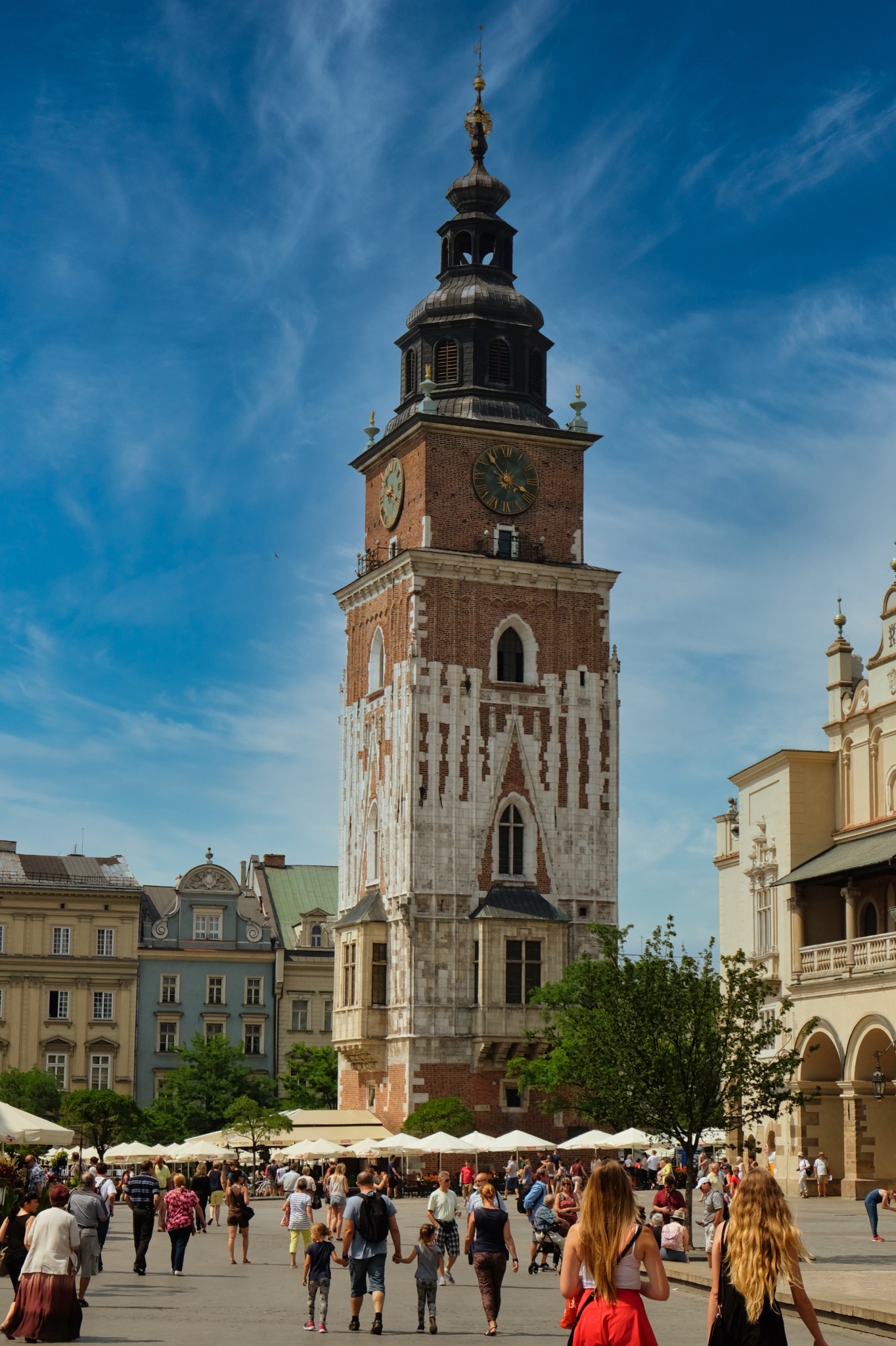 A wonderful medieval tower.
A wonderful medieval tower.
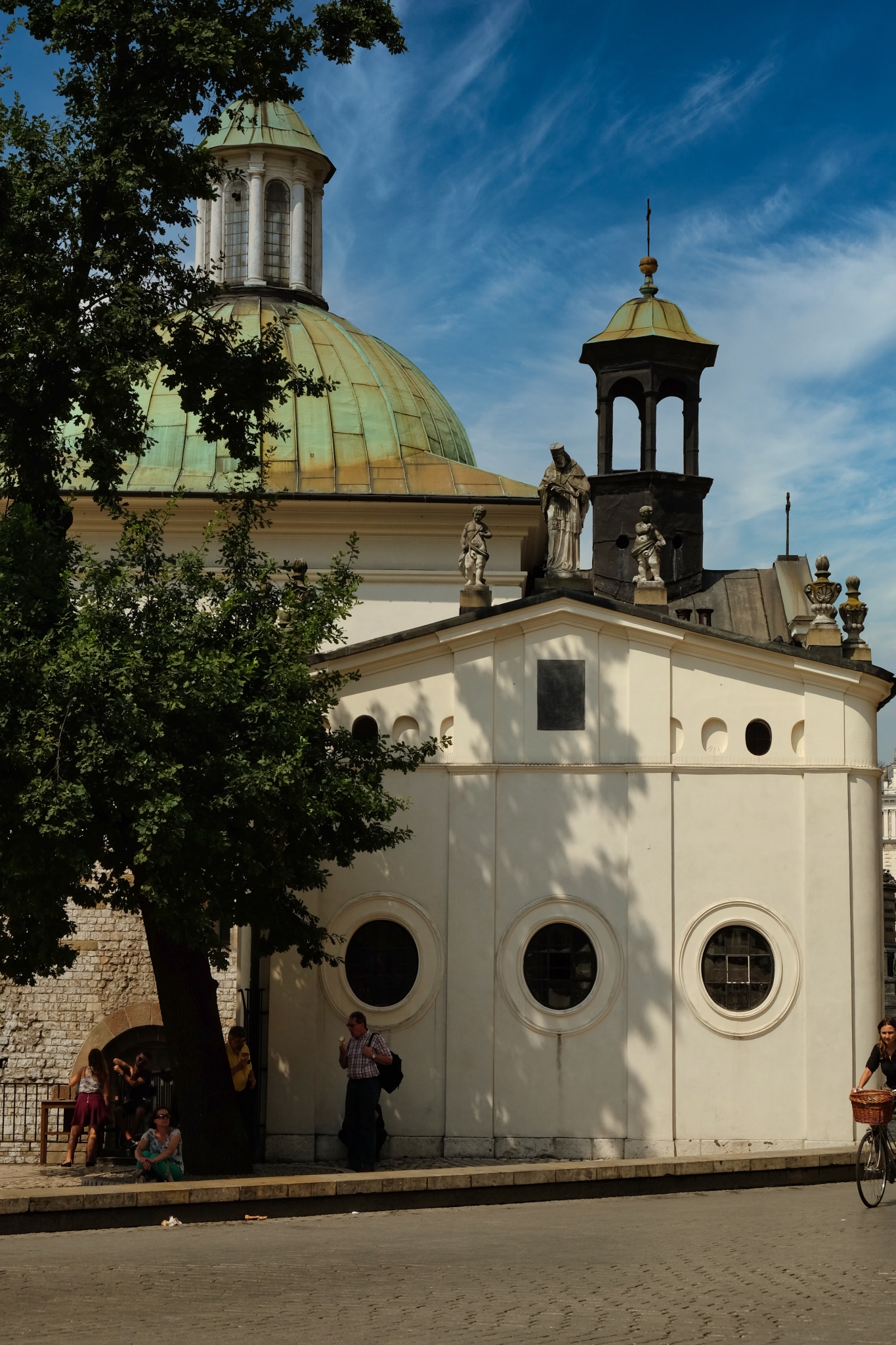 Also on the Kraków Main Market Square is the 11th century Church of Saint Adalbert.
Also on the Kraków Main Market Square is the 11th century Church of Saint Adalbert.
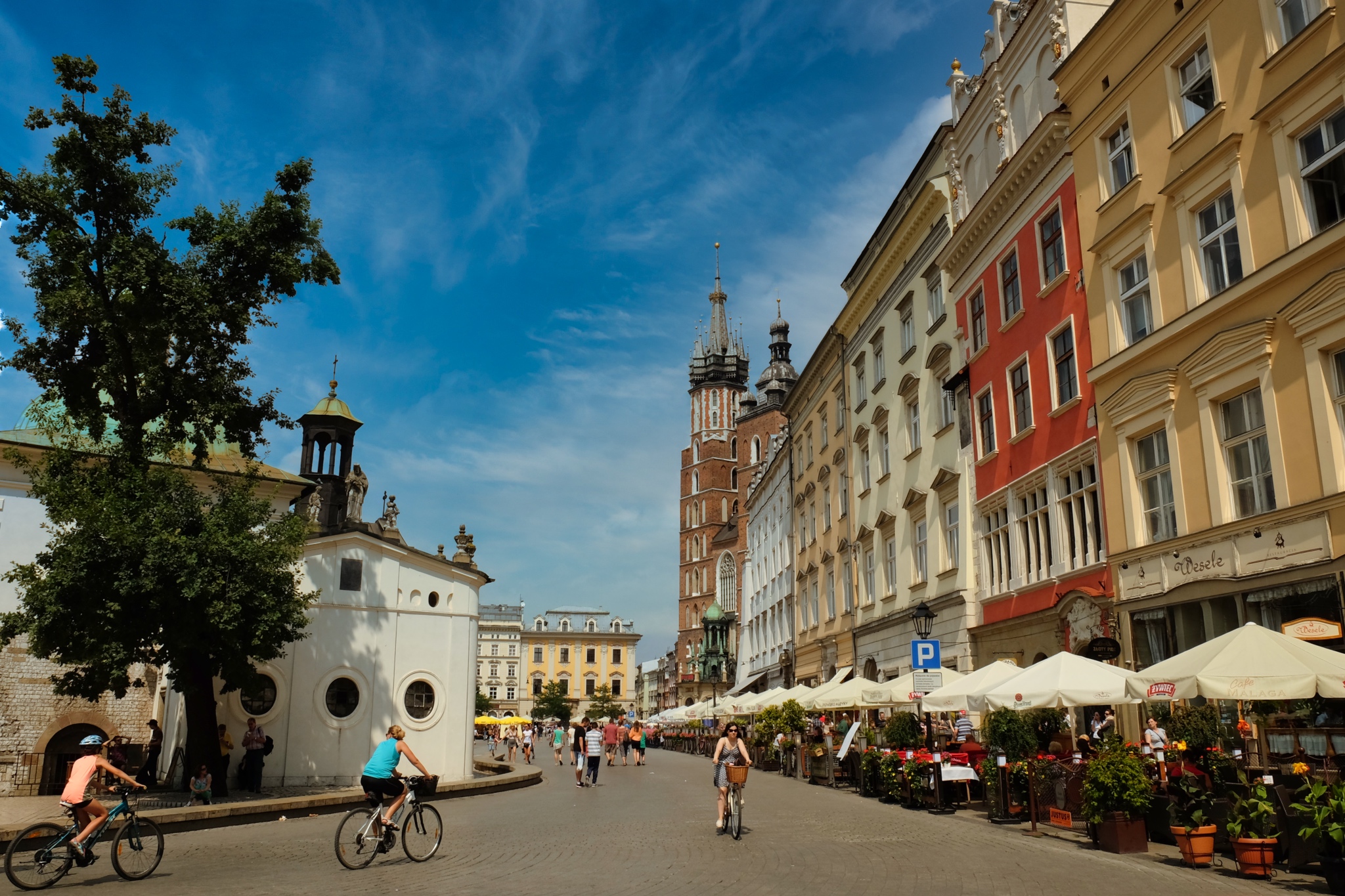 The Main Square is lined by small shops and boutiques . . . and a solid line of sidewalk cafés all around.
The Main Square is lined by small shops and boutiques . . . and a solid line of sidewalk cafés all around.
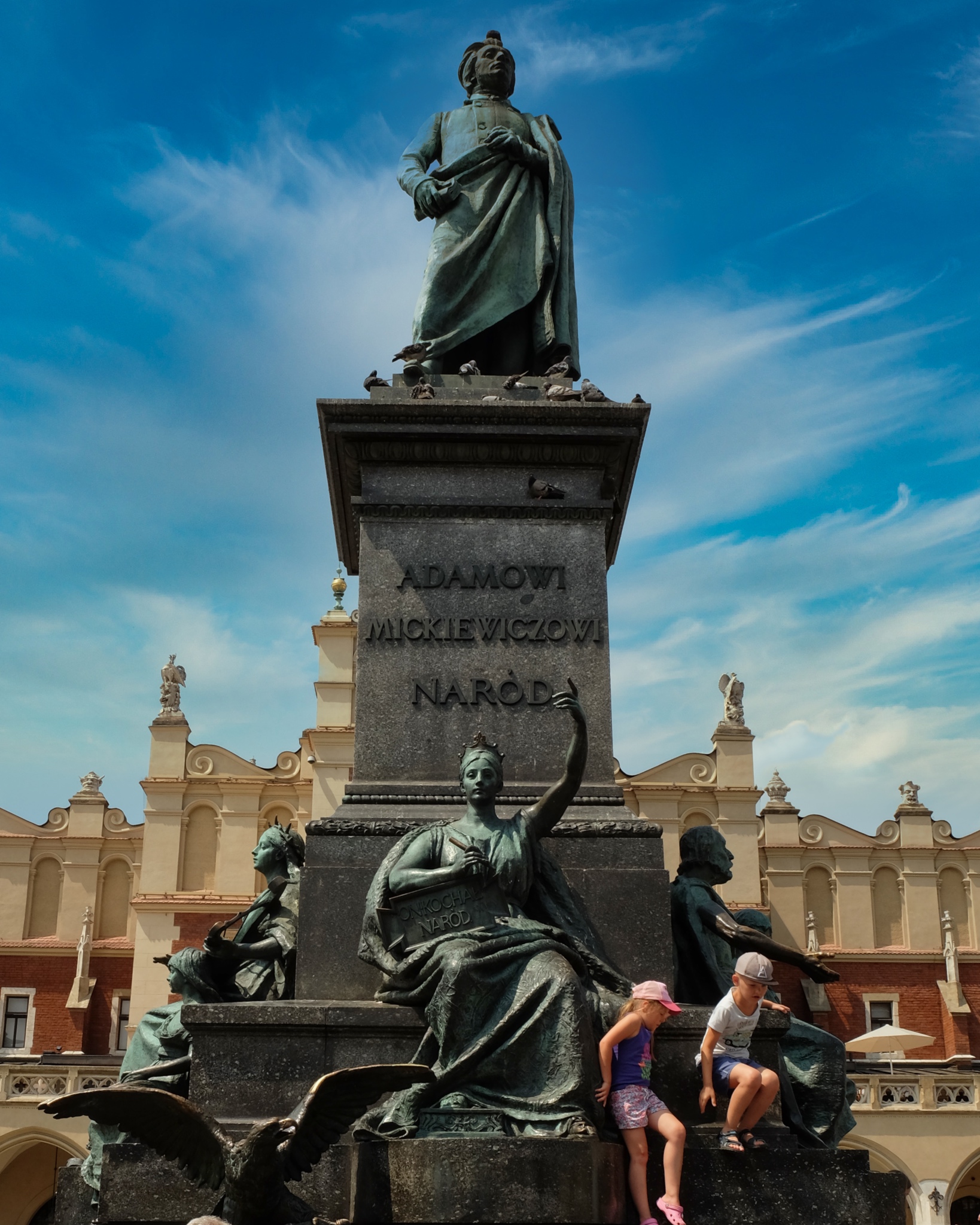 The Main Square attracts lots of tourists and, presumably, local children as well. Her they climb on the memorial statue to Adam Mickiewicz, a 19th century Polish poet.
The Main Square attracts lots of tourists and, presumably, local children as well. Her they climb on the memorial statue to Adam Mickiewicz, a 19th century Polish poet.
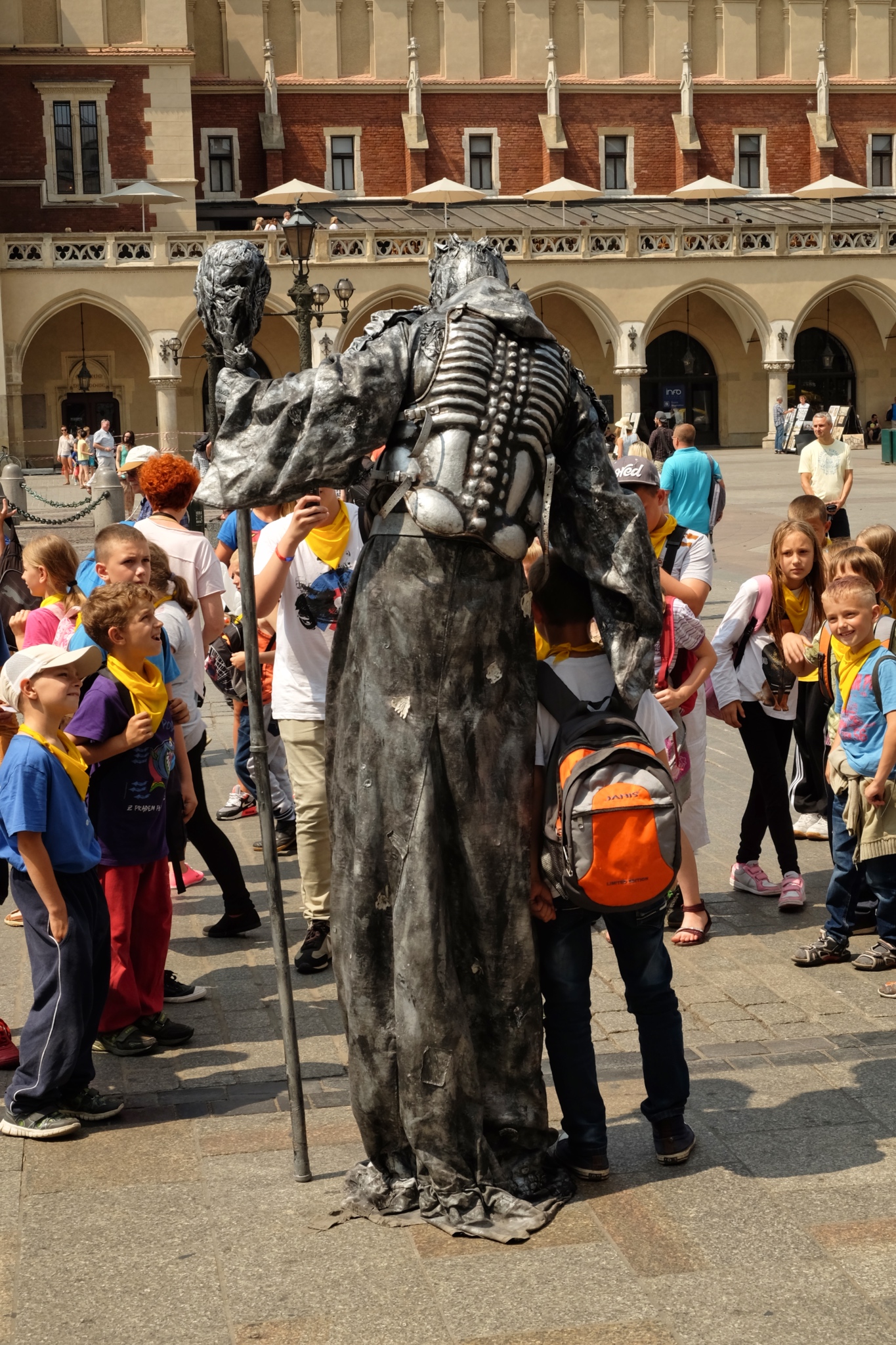 Making money on the square . . . Monster Photo Ops $5.oo.
Making money on the square . . . Monster Photo Ops $5.oo.
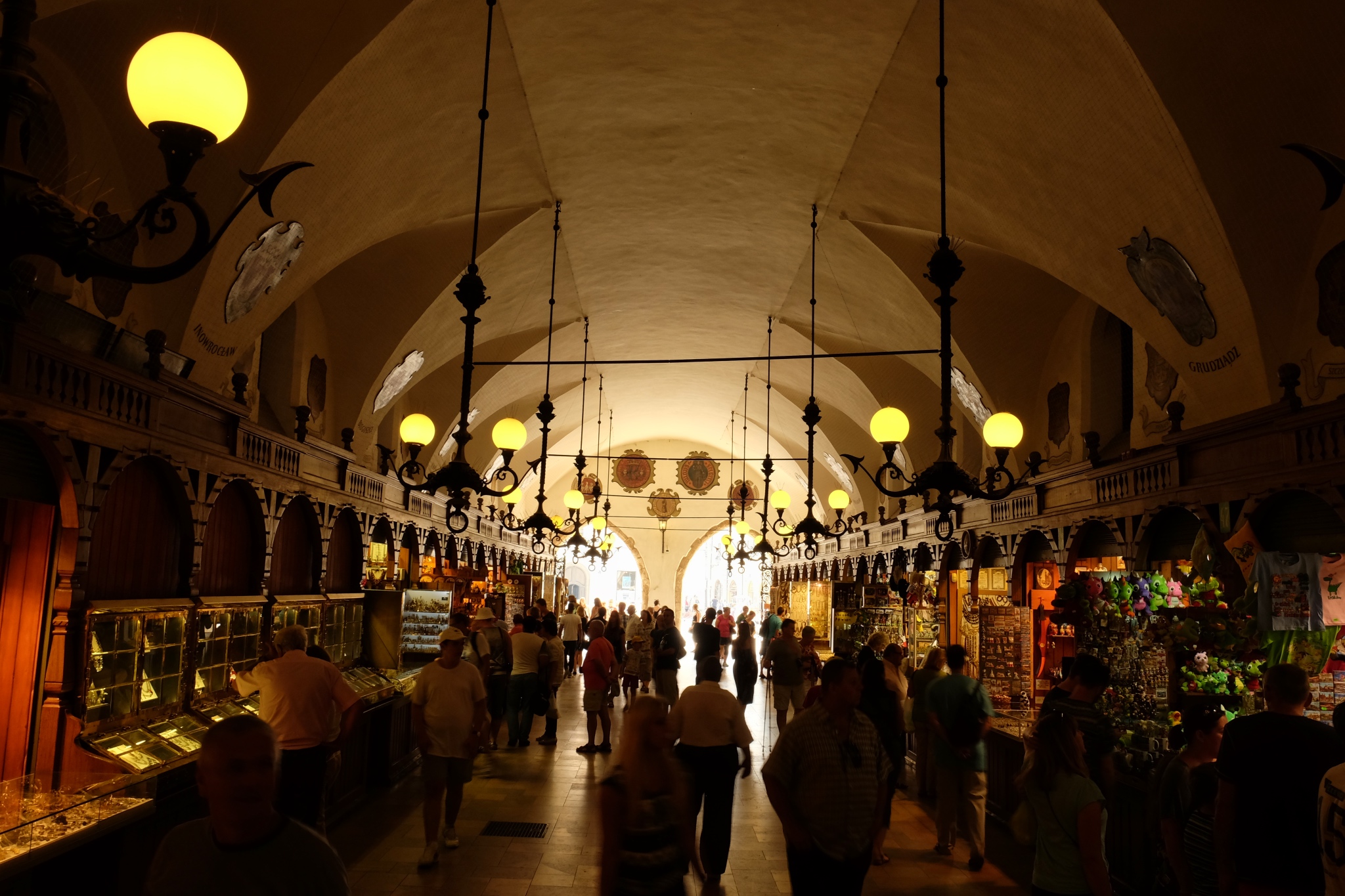 Inside the Cloth Hall, now a curios galleria.
Inside the Cloth Hall, now a curios galleria.
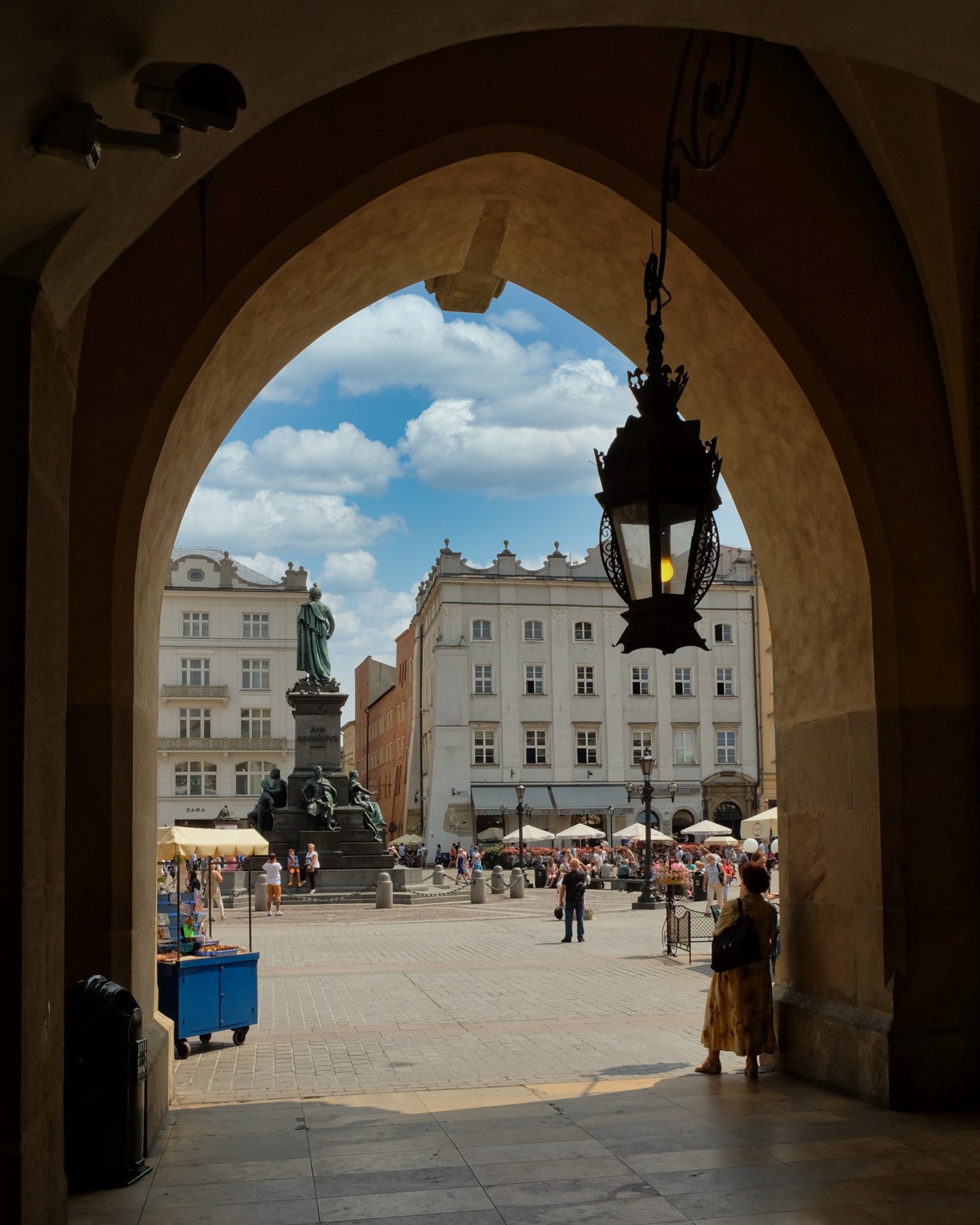 Looking out onto the square from the Cloth Hall.
Looking out onto the square from the Cloth Hall.
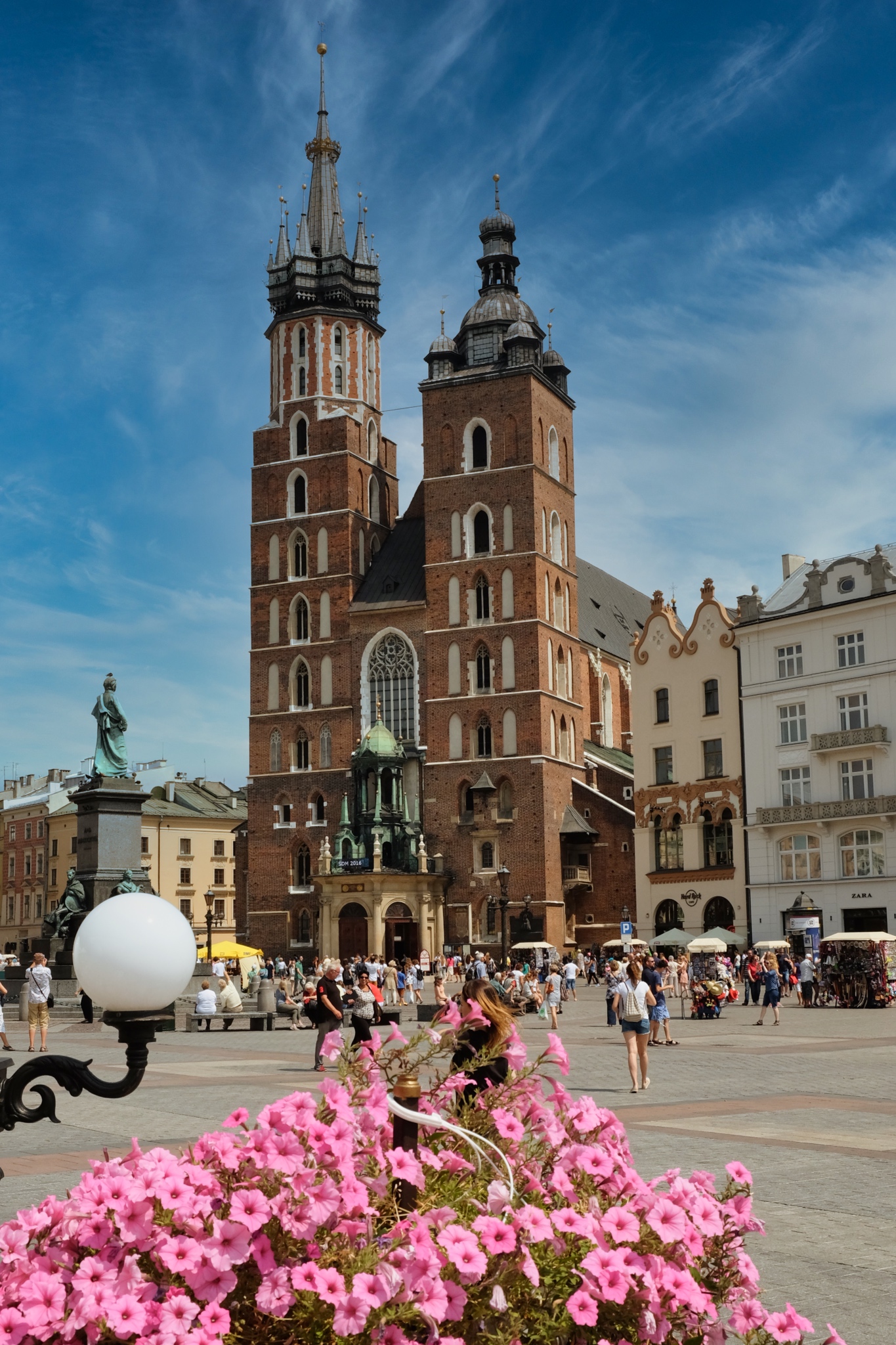 Saint Mary's Basilica looked inviting. There are not too many 13th century basilicas left in their original state in Europe. I wanted to see the interior of this Polish Gothic structure.
Saint Mary's Basilica looked inviting. There are not too many 13th century basilicas left in their original state in Europe. I wanted to see the interior of this Polish Gothic structure.
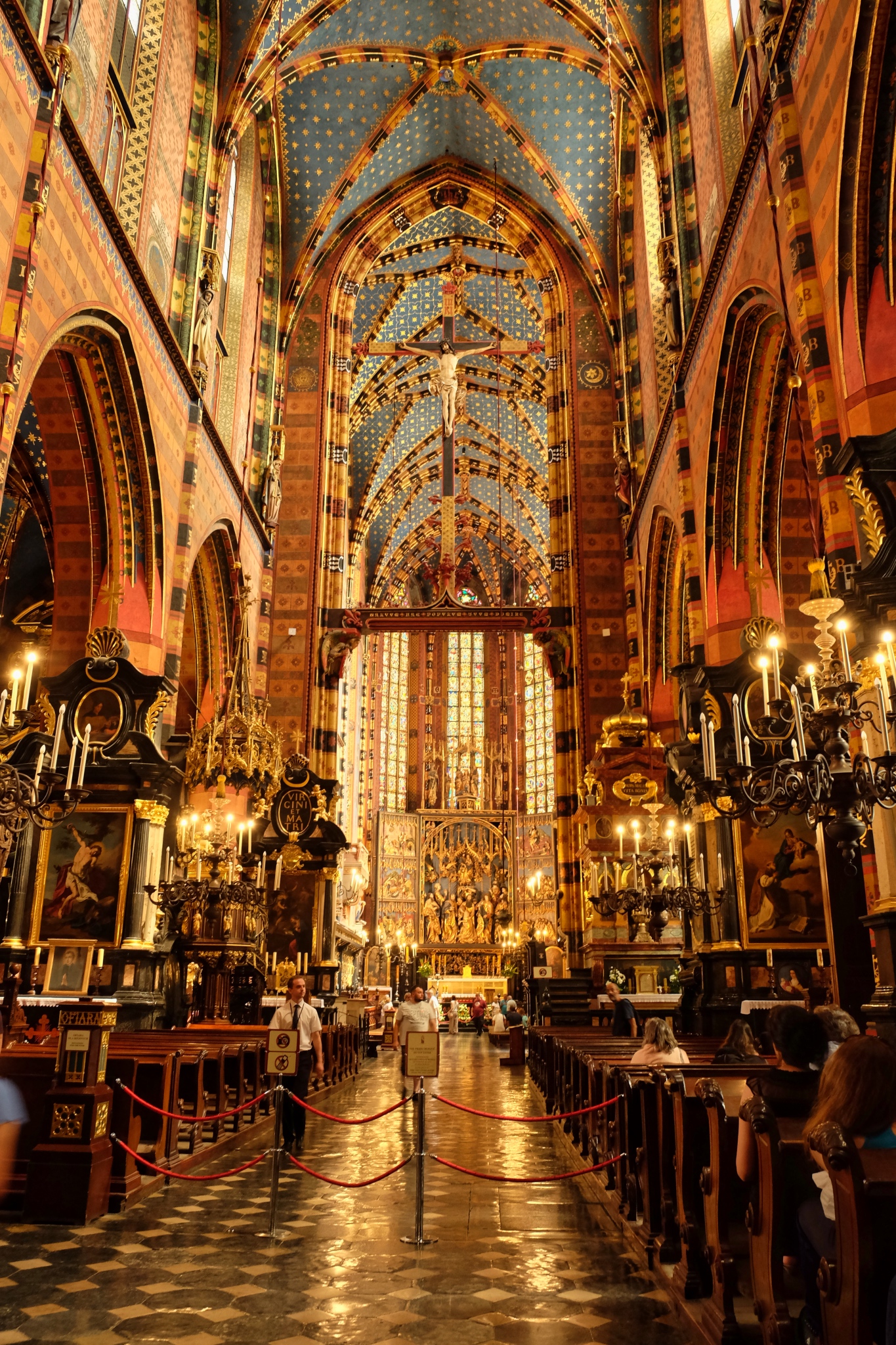 I was not disappointed. Magnificent . . . which is the idea, one assumes.
I was not disappointed. Magnificent . . . which is the idea, one assumes.
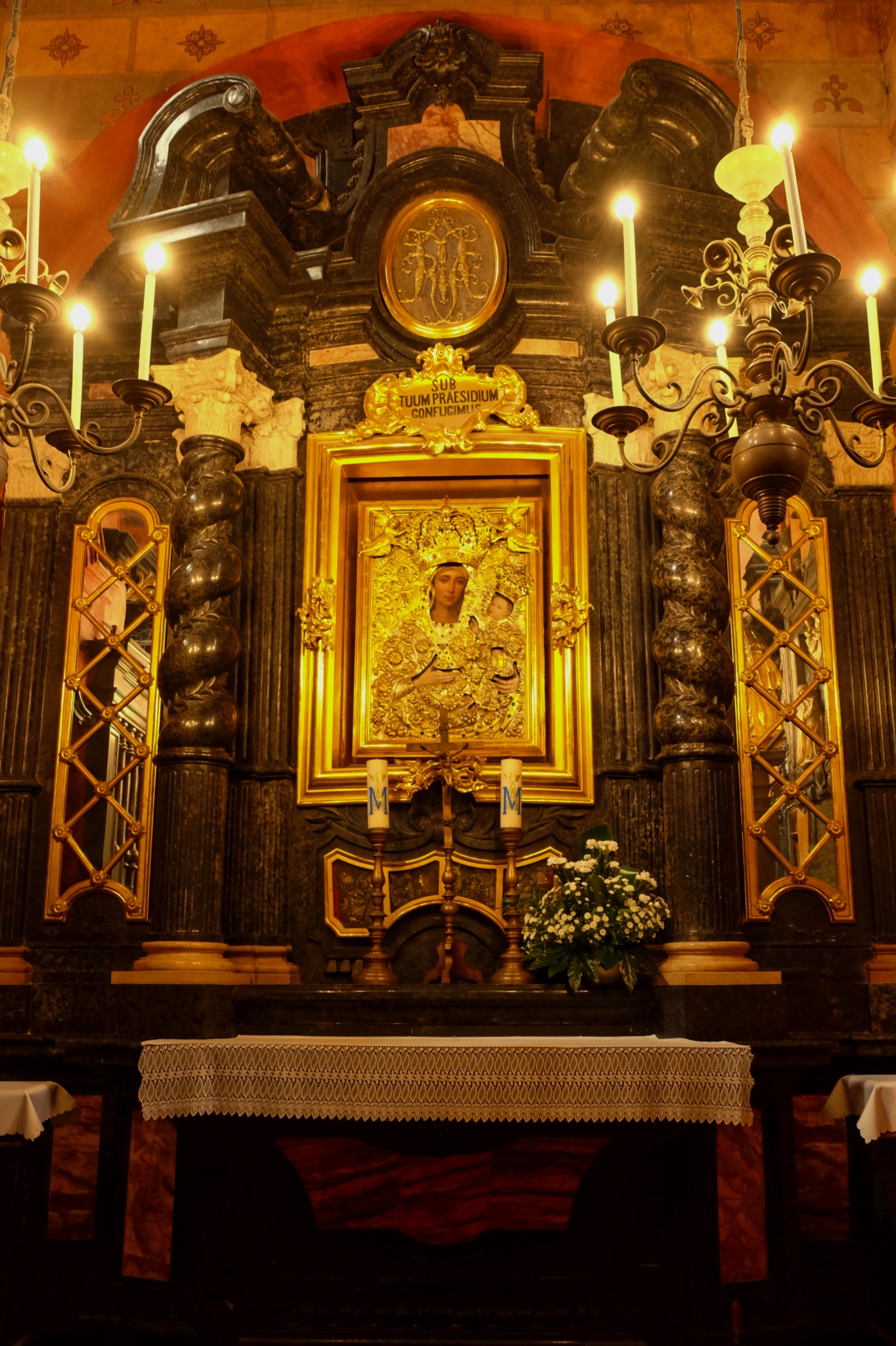 Beautiful Christian iconography everywhere.
Beautiful Christian iconography everywhere.
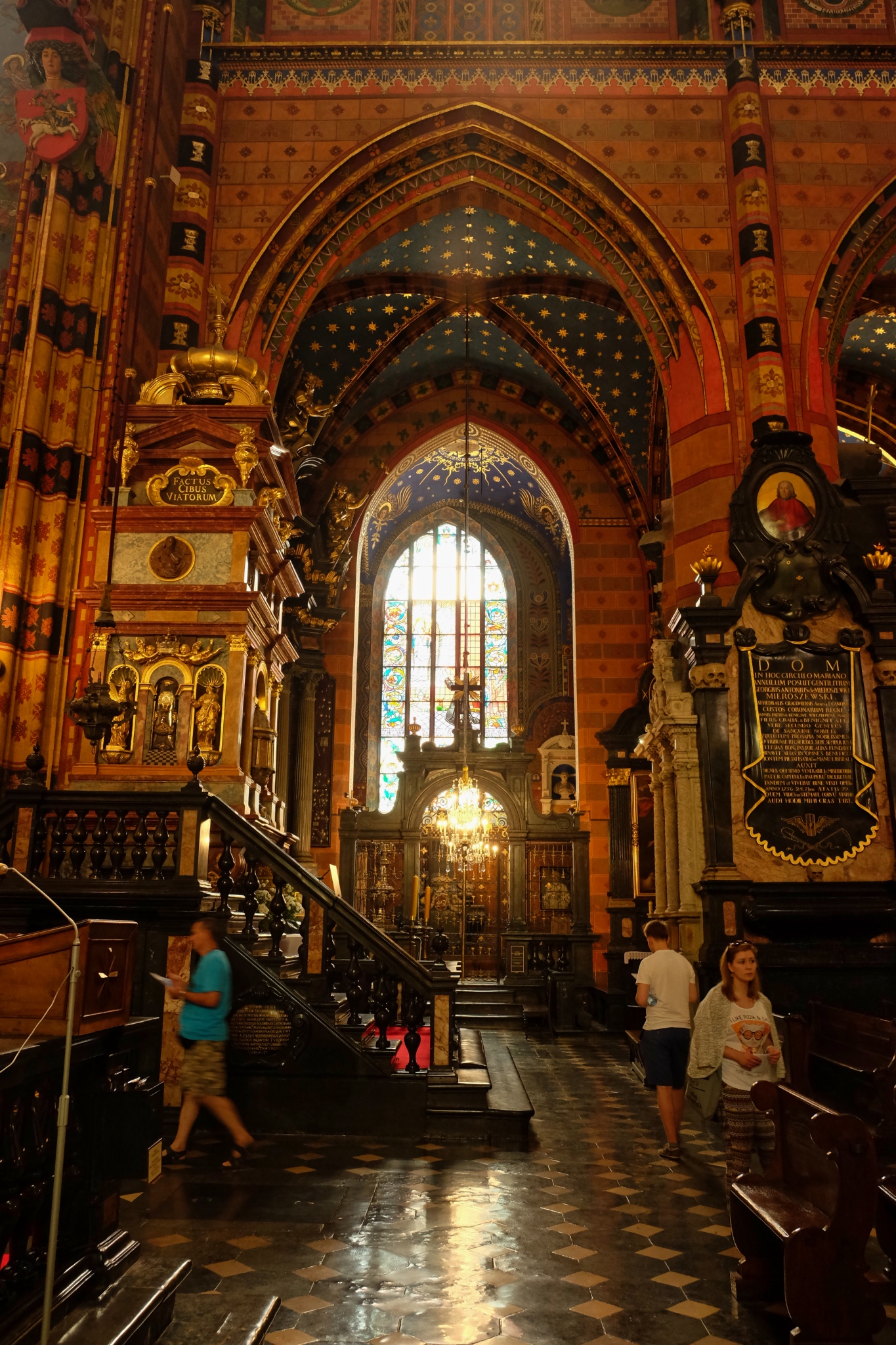 Beautiful and ornate vestibules lined the main hall.
Beautiful and ornate vestibules lined the main hall.
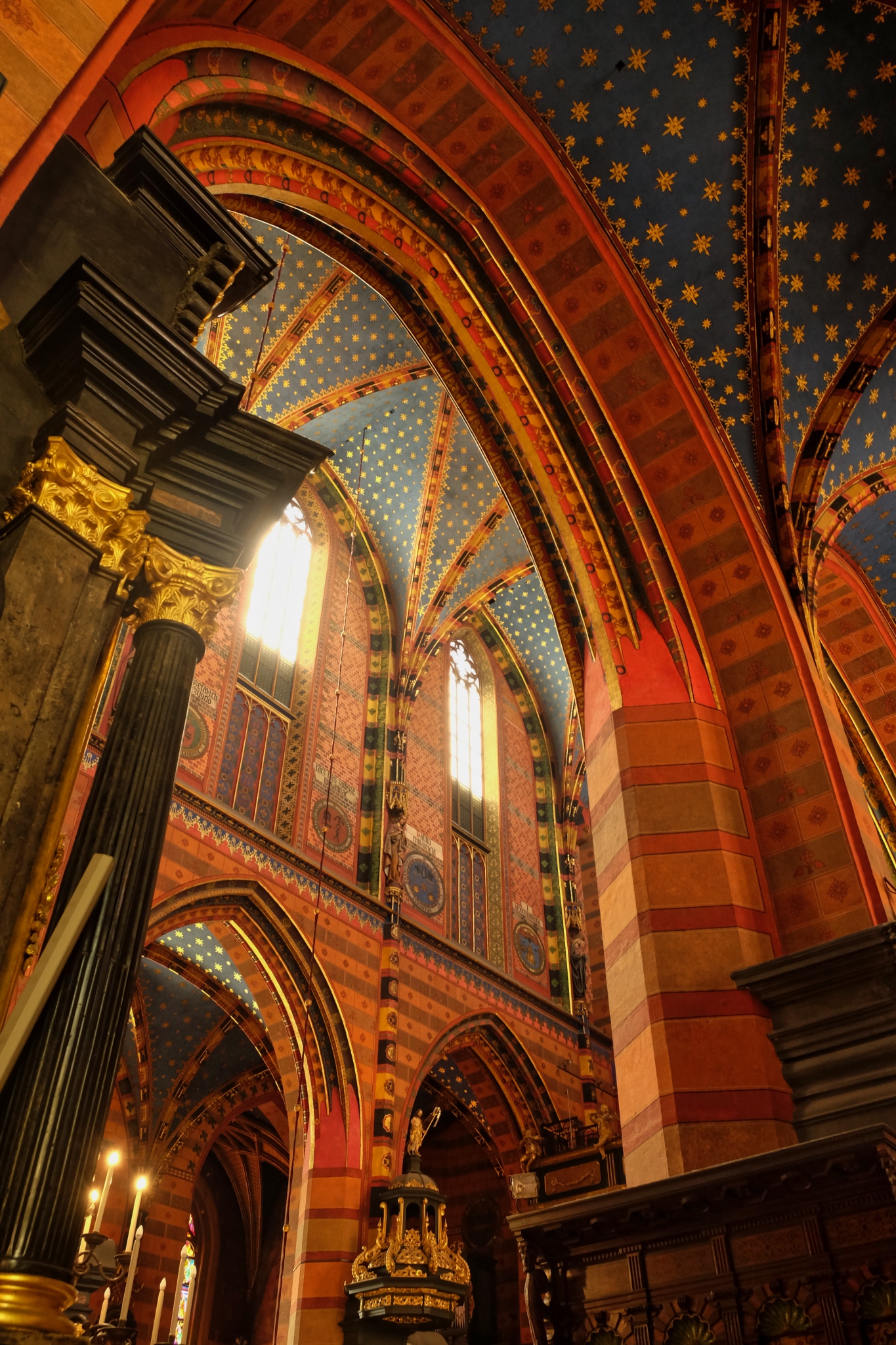 I loved the colorfully painted ceiling details. So many churches in Europe seem to think that bare stone is a better look . . . I prefer the color.
I loved the colorfully painted ceiling details. So many churches in Europe seem to think that bare stone is a better look . . . I prefer the color.
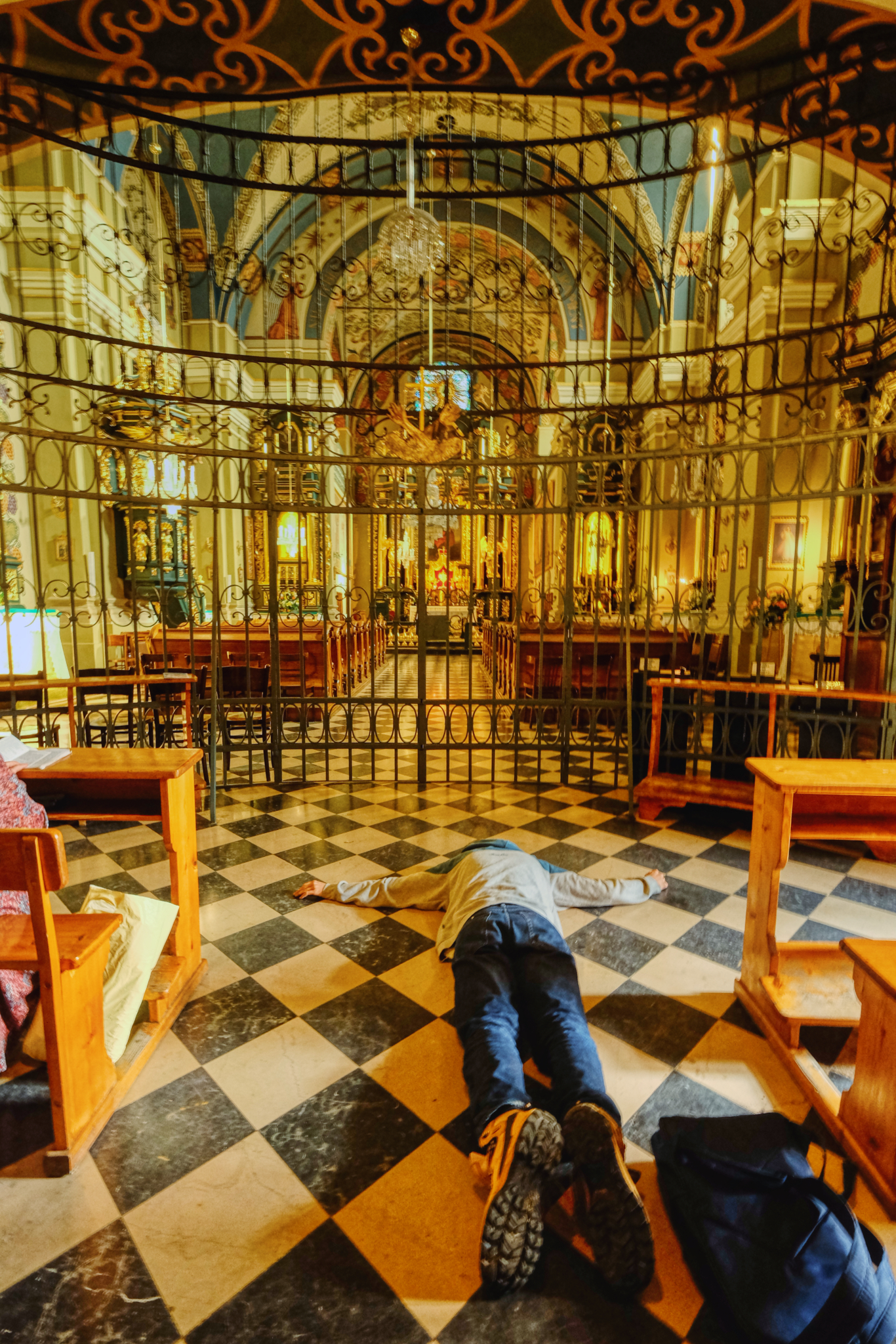 A Kraków Christian devotee on a bad day, one would assume.
A Kraków Christian devotee on a bad day, one would assume.
 My wife and I admired the interior of the St. Mary's Basilica for quite a while, but it was a beautiful day outside, and there was so much more to explore.
My wife and I admired the interior of the St. Mary's Basilica for quite a while, but it was a beautiful day outside, and there was so much more to explore.
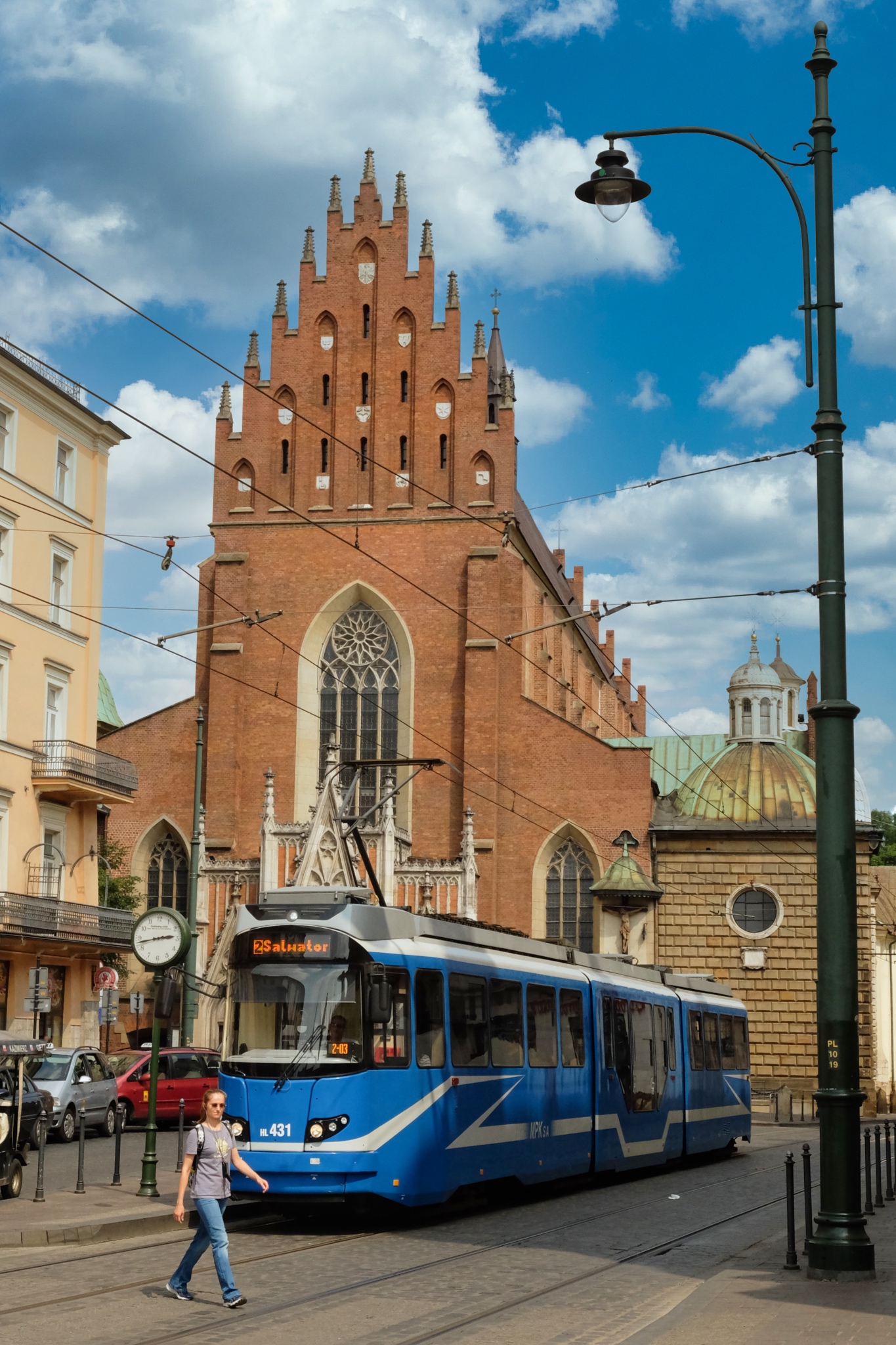 We left the main Karców city center square to walk around in the narrow streets of Kraków's historic center (on the original UNESCO World Heritage list).
We left the main Karców city center square to walk around in the narrow streets of Kraków's historic center (on the original UNESCO World Heritage list).
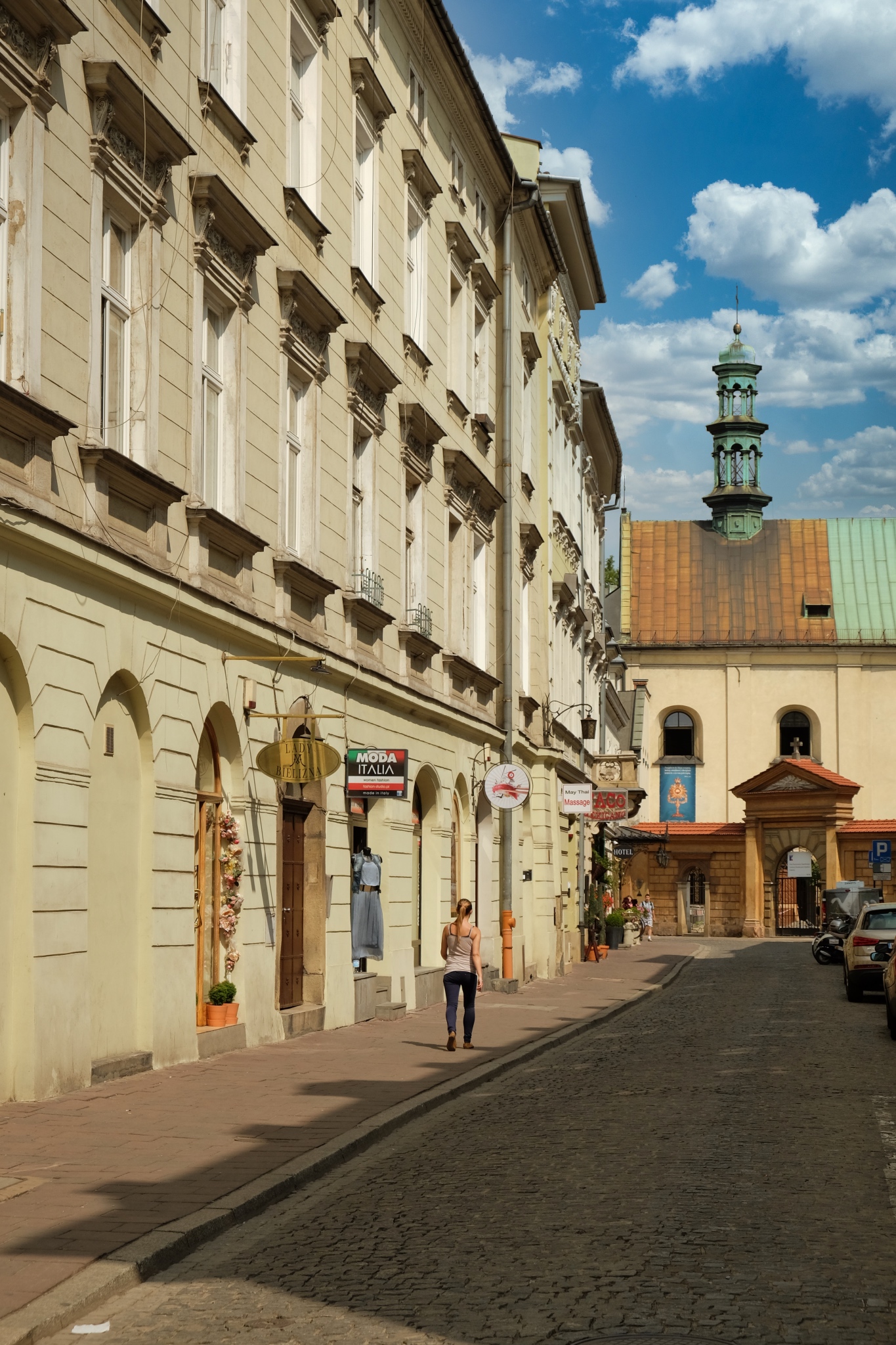 As we walked around in the back streets of the city center, we became aware of the significance that this is a city that had never been bombed in a war and had never had a major fire, as so many of the other major medieval European cities had. There were no new buildings: it was an intact ancient city . . . and living today.
As we walked around in the back streets of the city center, we became aware of the significance that this is a city that had never been bombed in a war and had never had a major fire, as so many of the other major medieval European cities had. There were no new buildings: it was an intact ancient city . . . and living today.
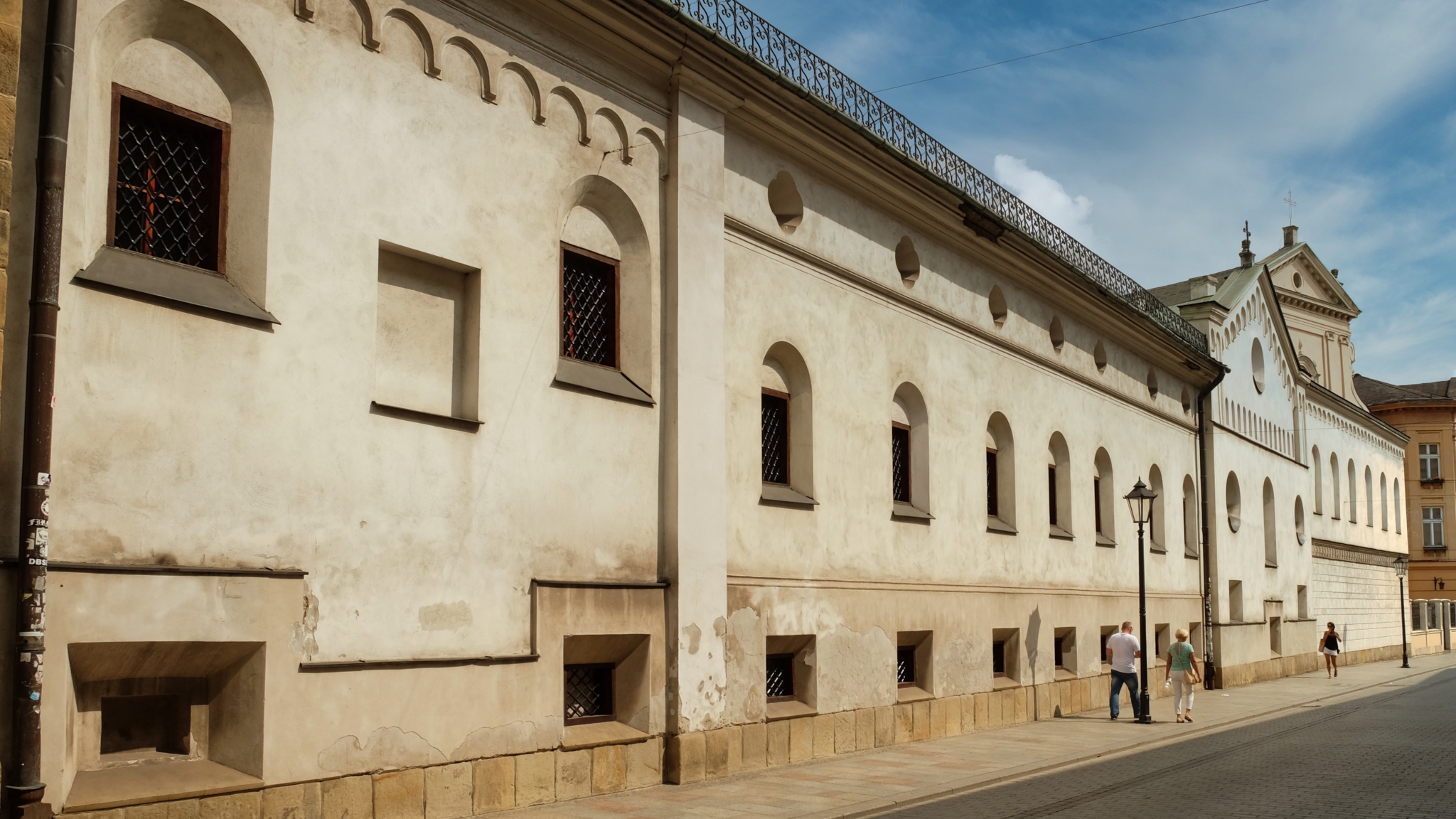 Interesting and varied architecture all around.
Interesting and varied architecture all around.
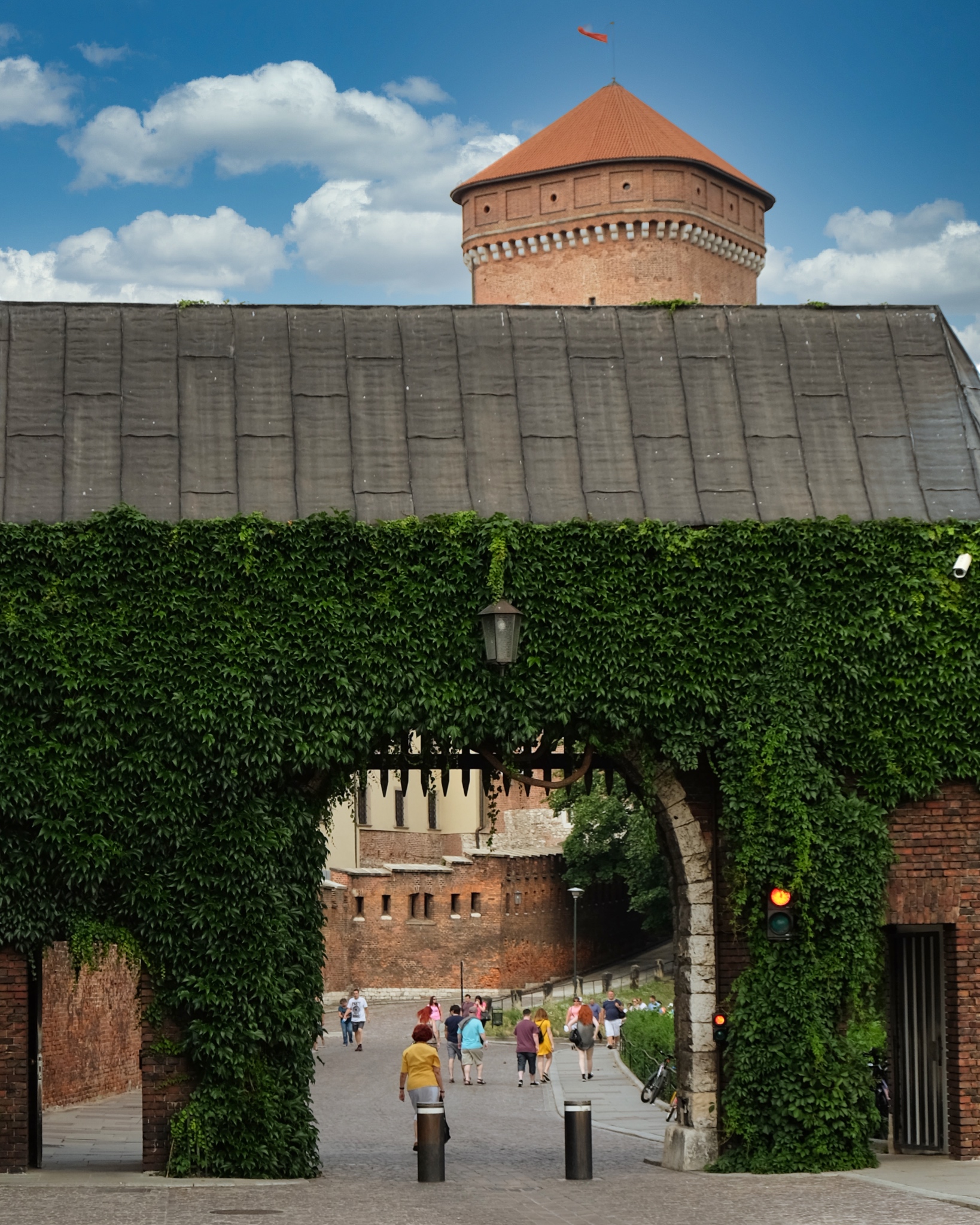 Such a charming city.
Such a charming city.
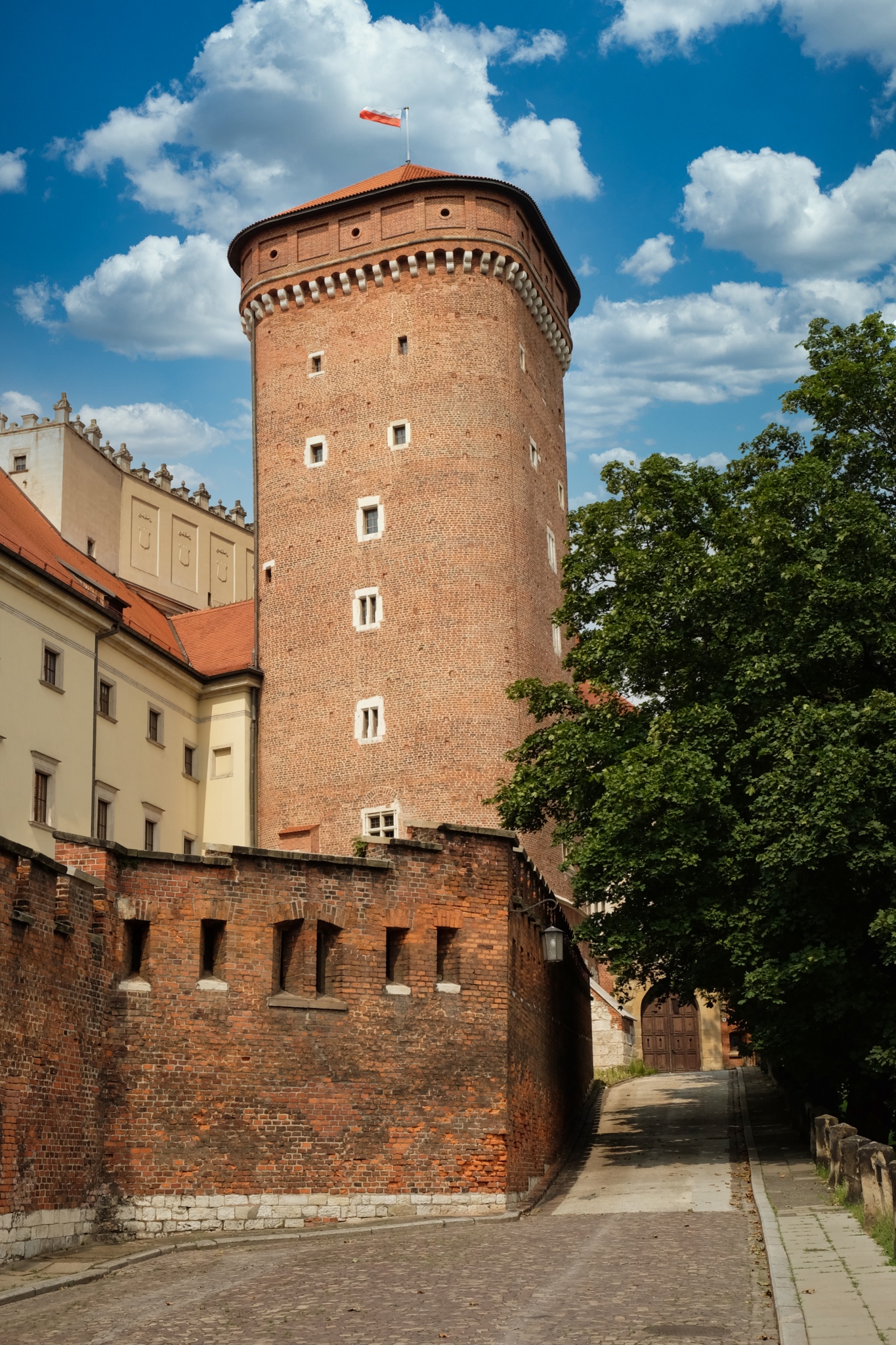 I found this tower fascinating. Towers were very popular throughout Europe in medieval times
I found this tower fascinating. Towers were very popular throughout Europe in medieval times
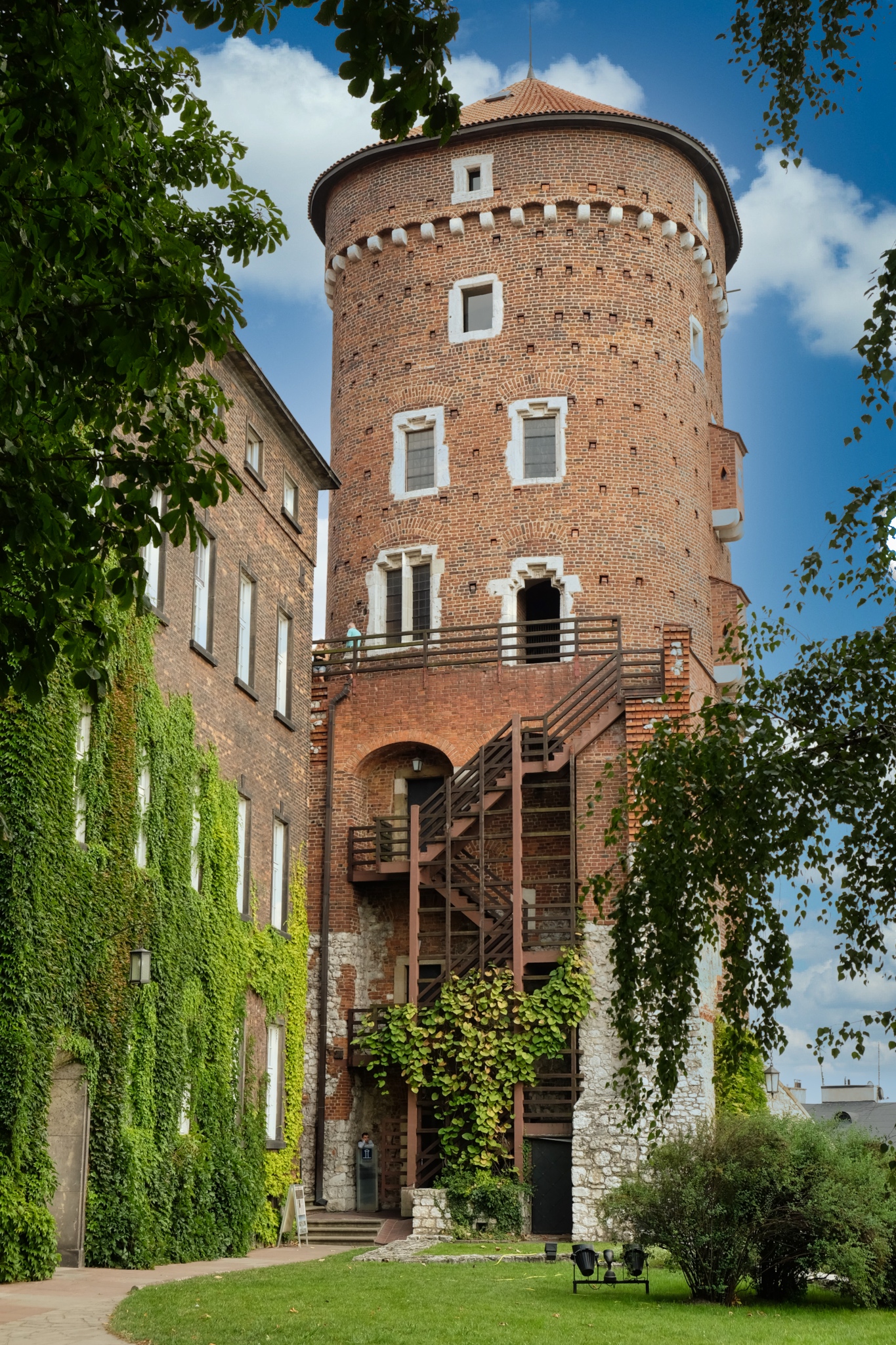 The back of the tower was also very interesting. I enjoy looking at and figuring out these old architectural gems.
The back of the tower was also very interesting. I enjoy looking at and figuring out these old architectural gems.
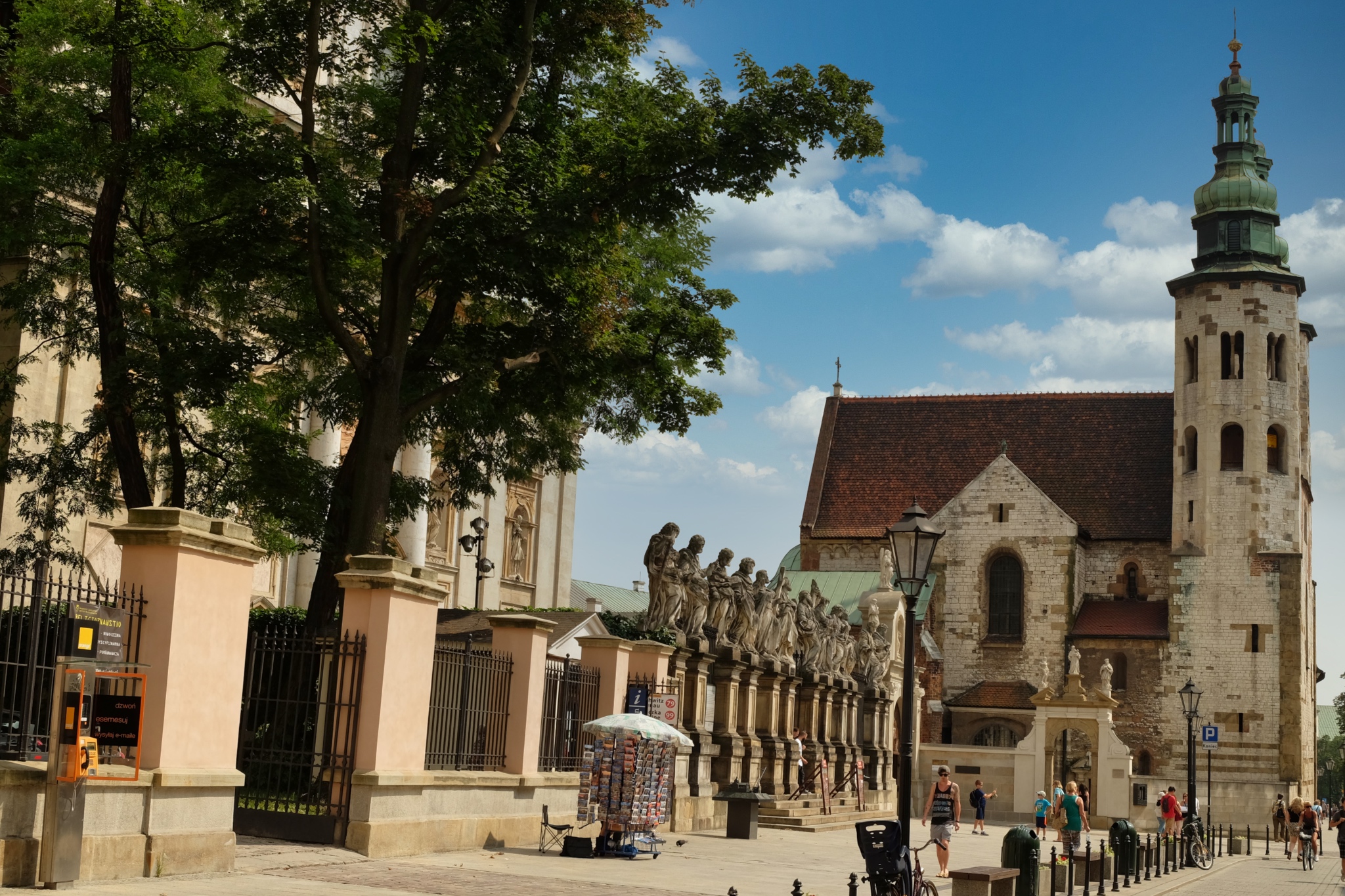 One city space leads to another . . . and always interesting and fascinating.
One city space leads to another . . . and always interesting and fascinating.
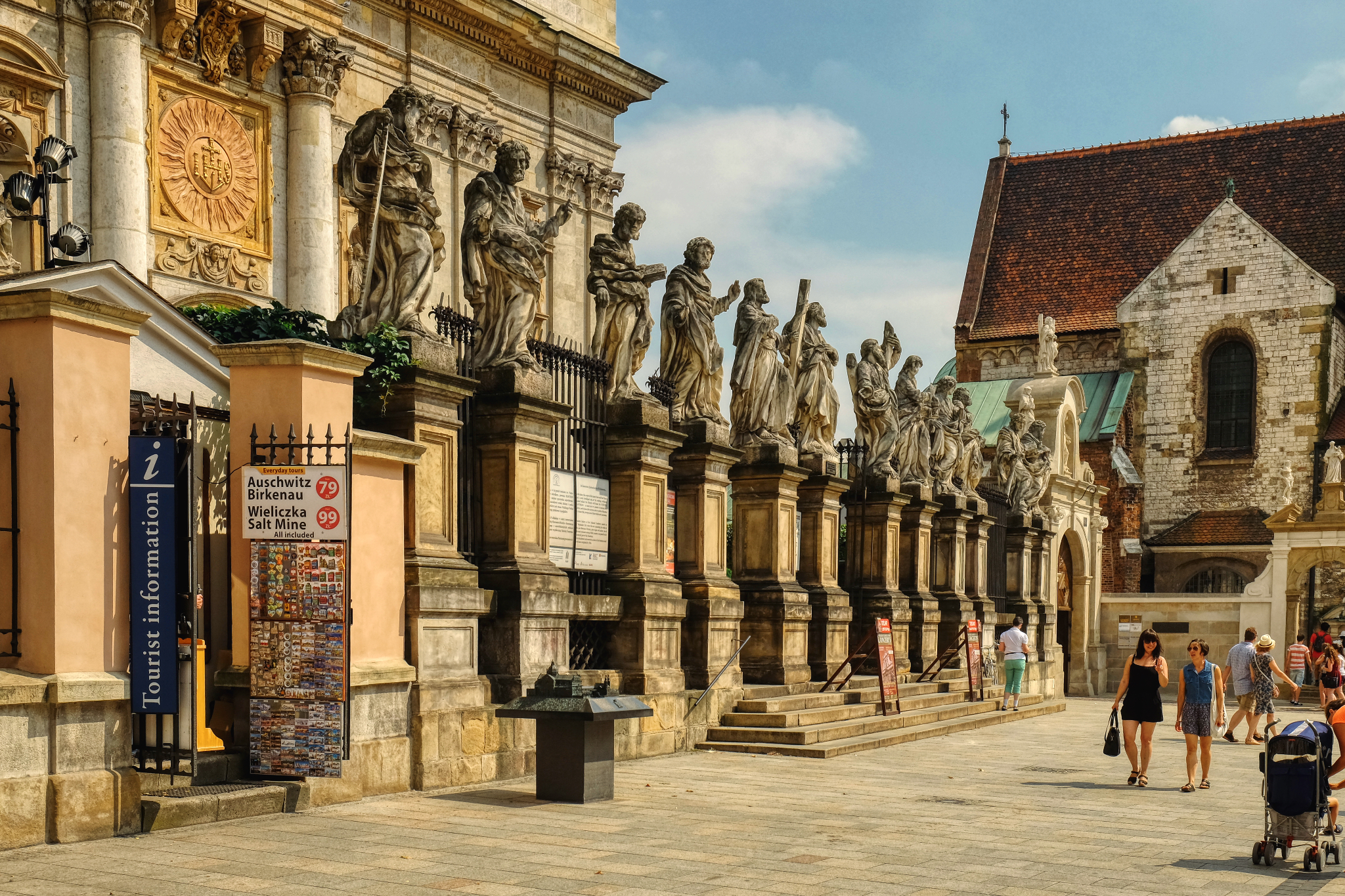 A row of Christian saints. Notice the advertisement for tours of the Nazi death camps near Kraków . . . we did not go.
A row of Christian saints. Notice the advertisement for tours of the Nazi death camps near Kraków . . . we did not go.
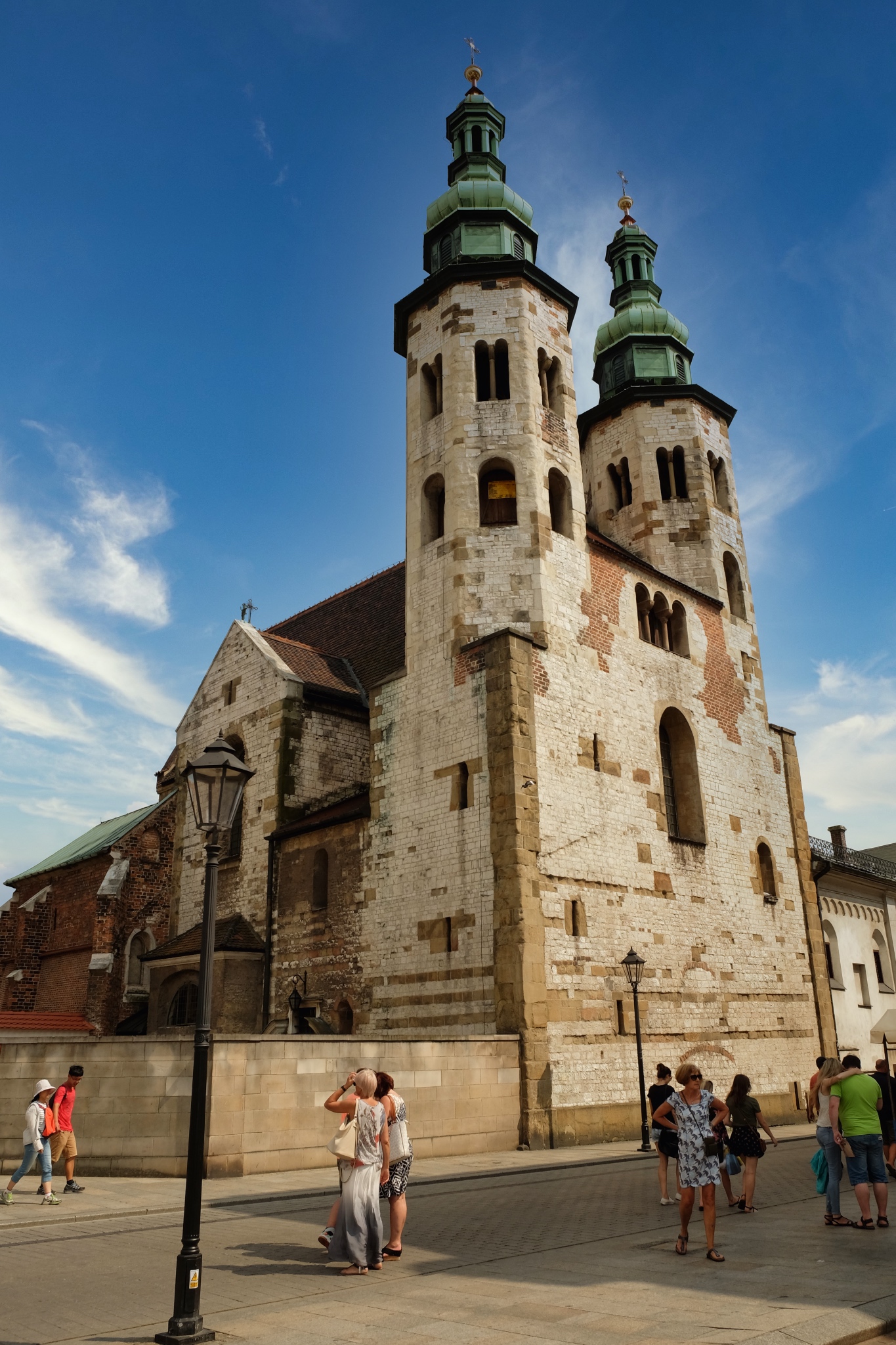 Such a charming old church.
Such a charming old church.
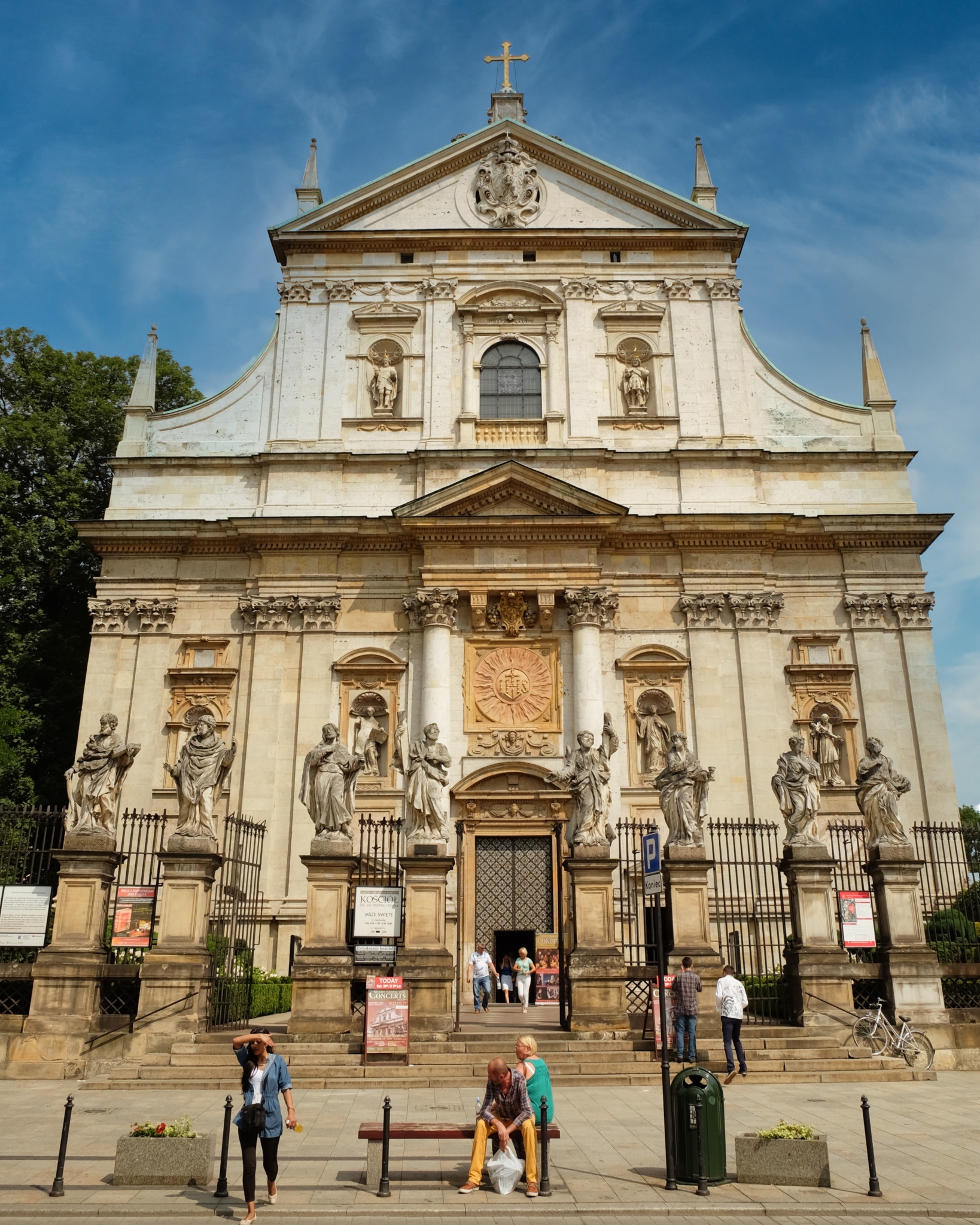 Saints Peter and Paul Church, built 1597 in the Polish Baroque style.
Saints Peter and Paul Church, built 1597 in the Polish Baroque style.
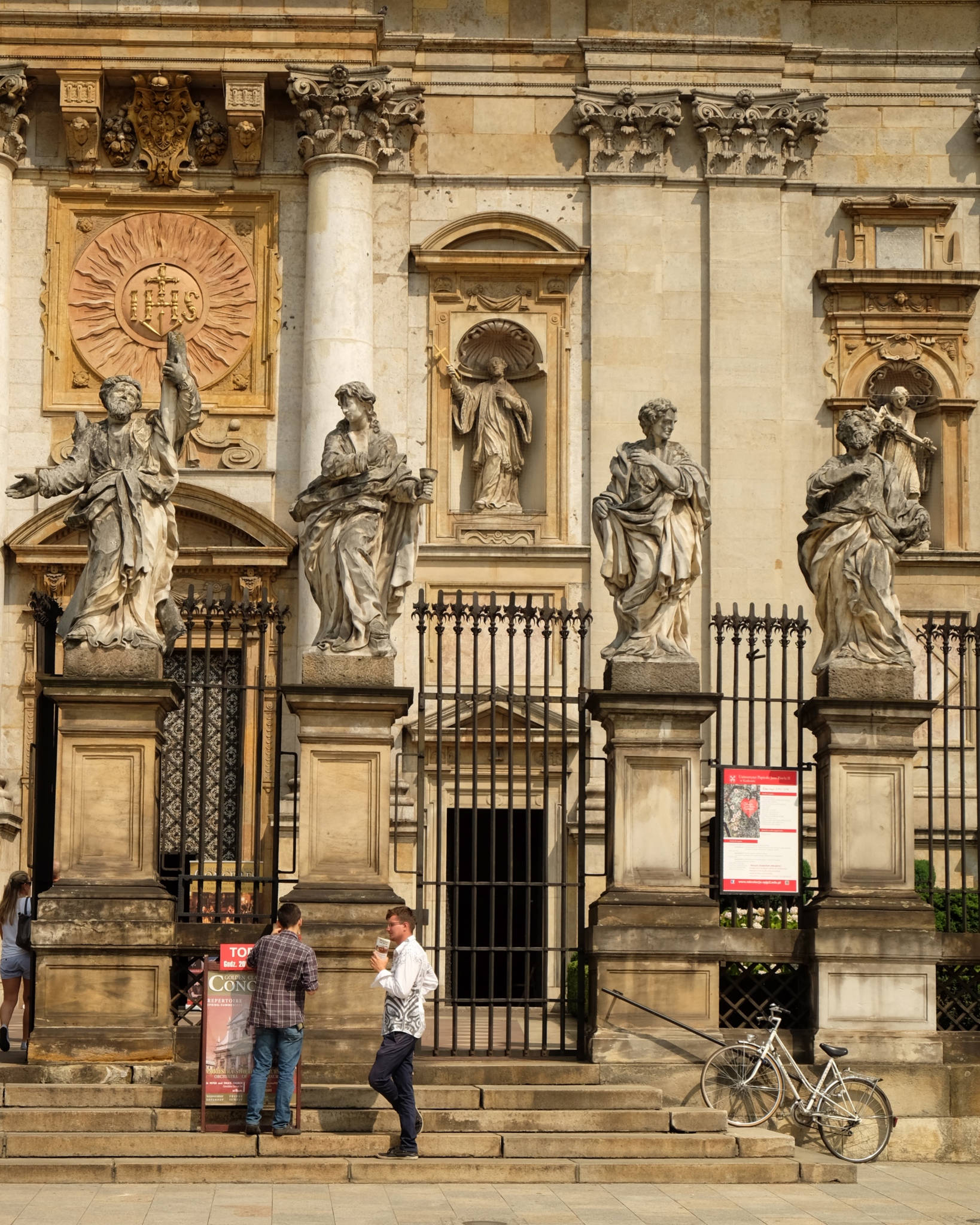 A detail of the Saints Peter and Paul Church . . . looking more like a library than a church somehow.
A detail of the Saints Peter and Paul Church . . . looking more like a library than a church somehow.
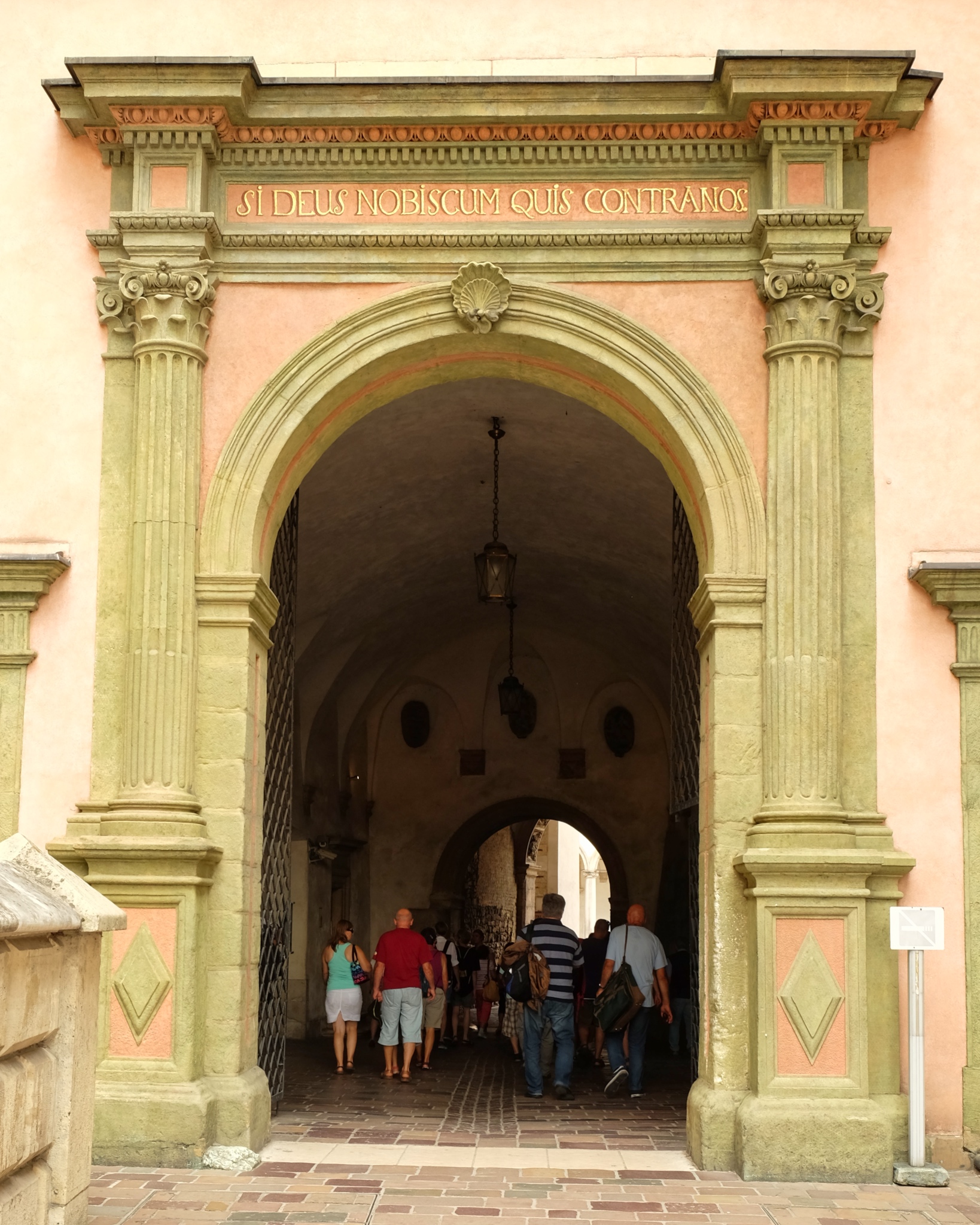 One of the interesting features of Kraków are the many arched passageway through buildings.
One of the interesting features of Kraków are the many arched passageway through buildings.
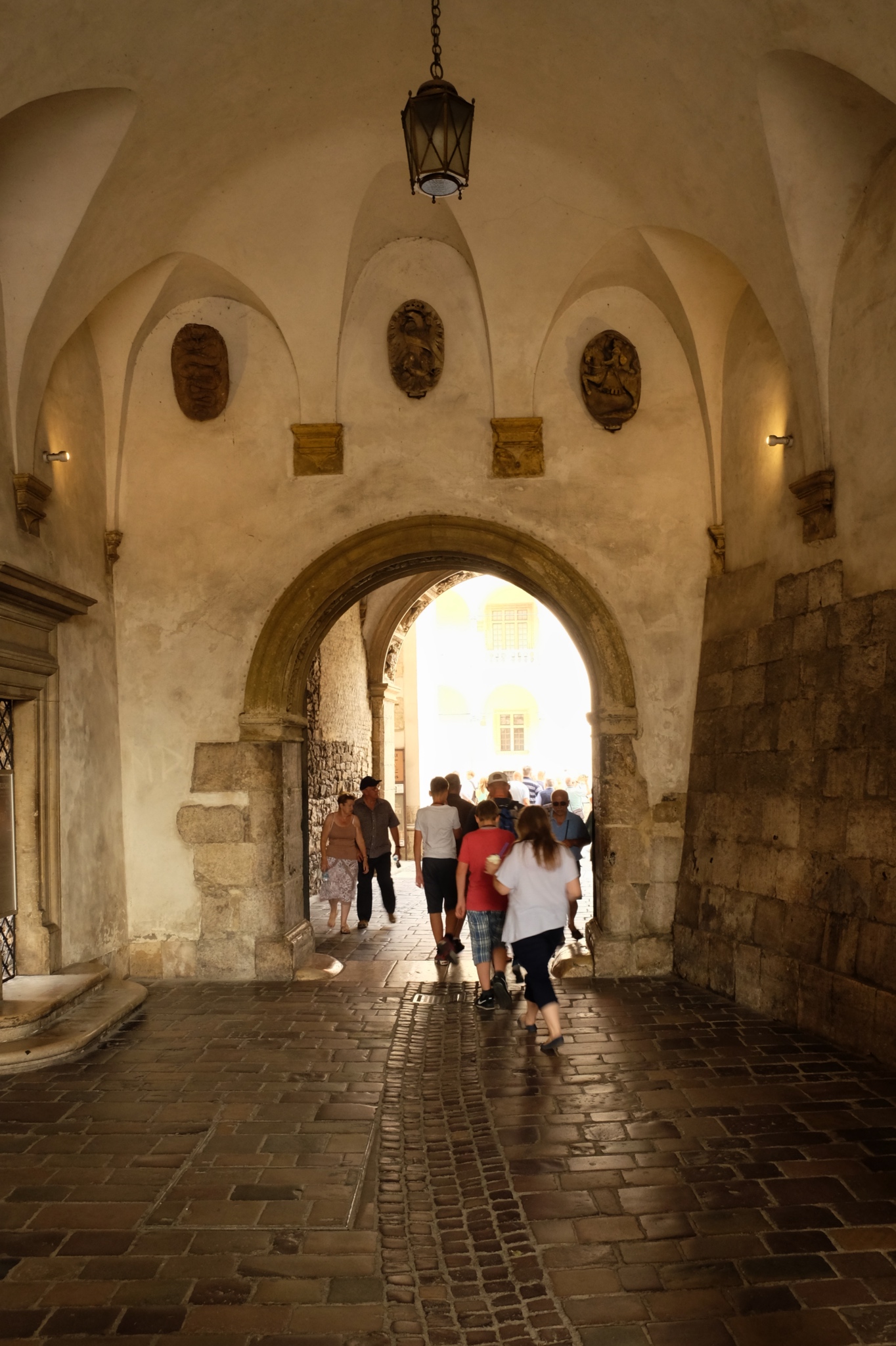 When the street you are walking on takes a turn through an arched passage you never know what you will see on the other side. Wonderful surprises all over town.
When the street you are walking on takes a turn through an arched passage you never know what you will see on the other side. Wonderful surprises all over town.
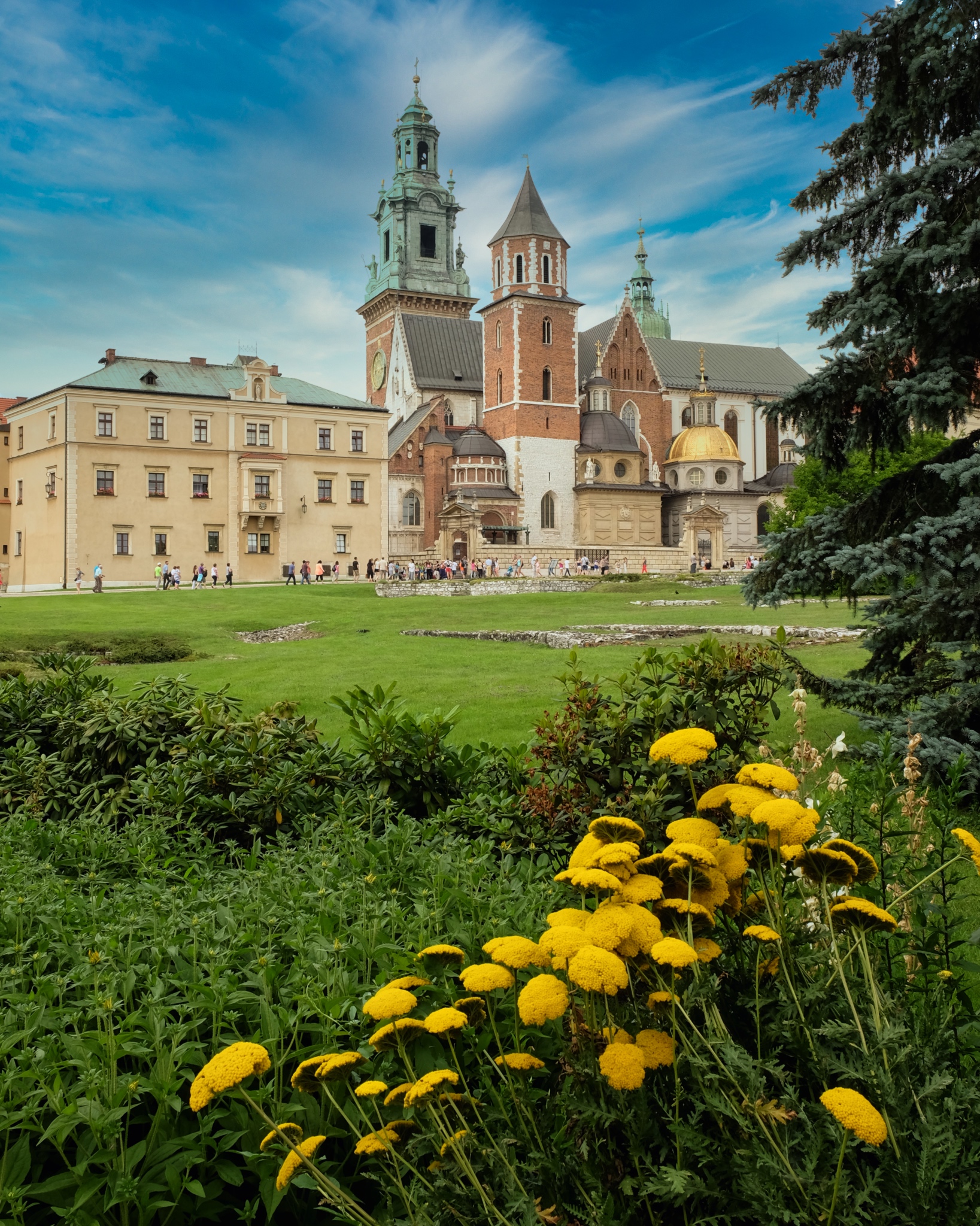 Sometimes you pop put of a street passage onto a beautiful park with. . . .
Sometimes you pop put of a street passage onto a beautiful park with. . . .
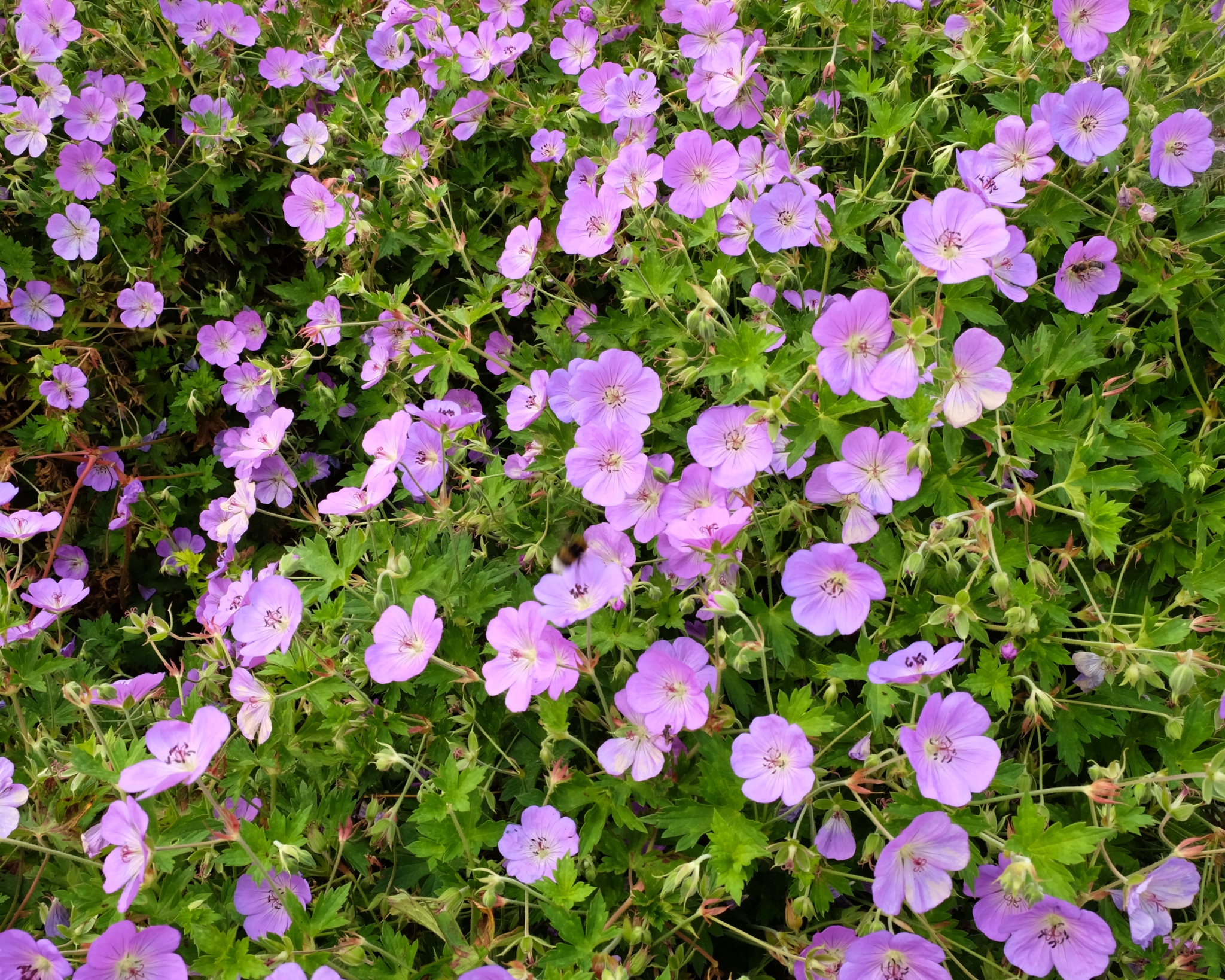 . . . beautiful flower beds.
. . . beautiful flower beds.
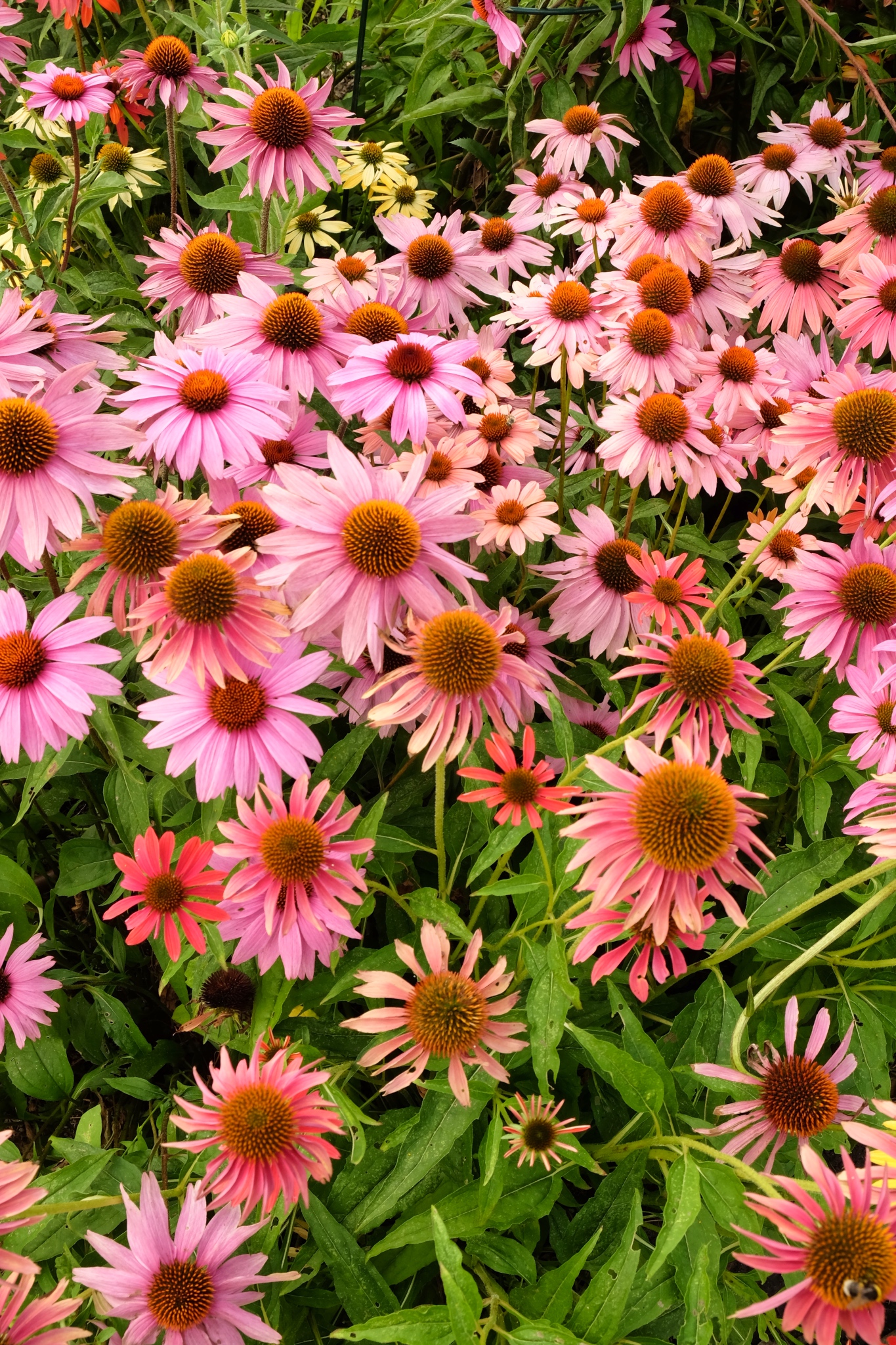 Beautiful summer flowers.
Beautiful summer flowers.
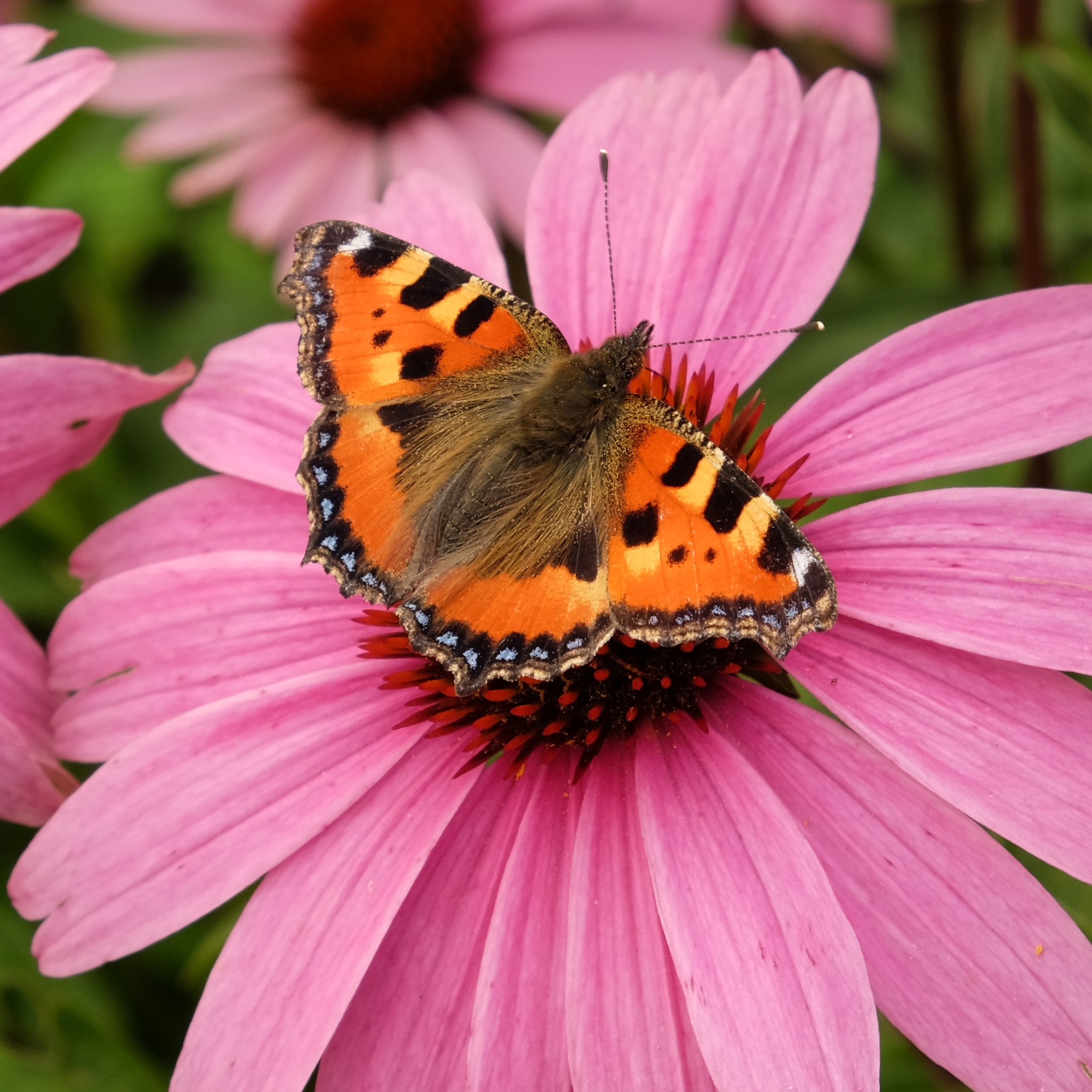 What a wonderful hairy moth flitting from flower to flower.
What a wonderful hairy moth flitting from flower to flower.
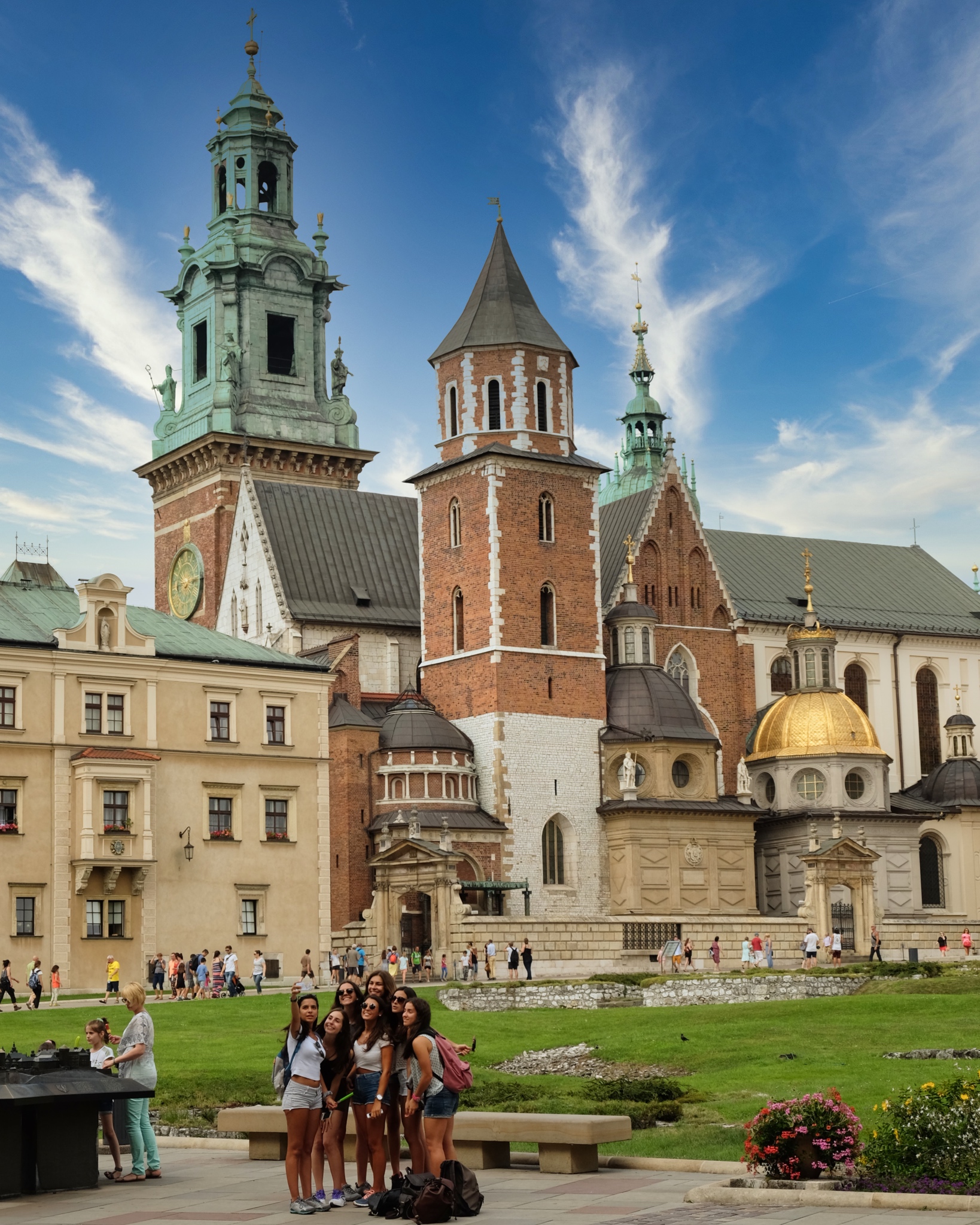 Tourists taking a group selfie in front of the historic Wawel Cathedral, first built in the 11th century, burned in 1302, and rebuilt in the 14th century.
Tourists taking a group selfie in front of the historic Wawel Cathedral, first built in the 11th century, burned in 1302, and rebuilt in the 14th century.
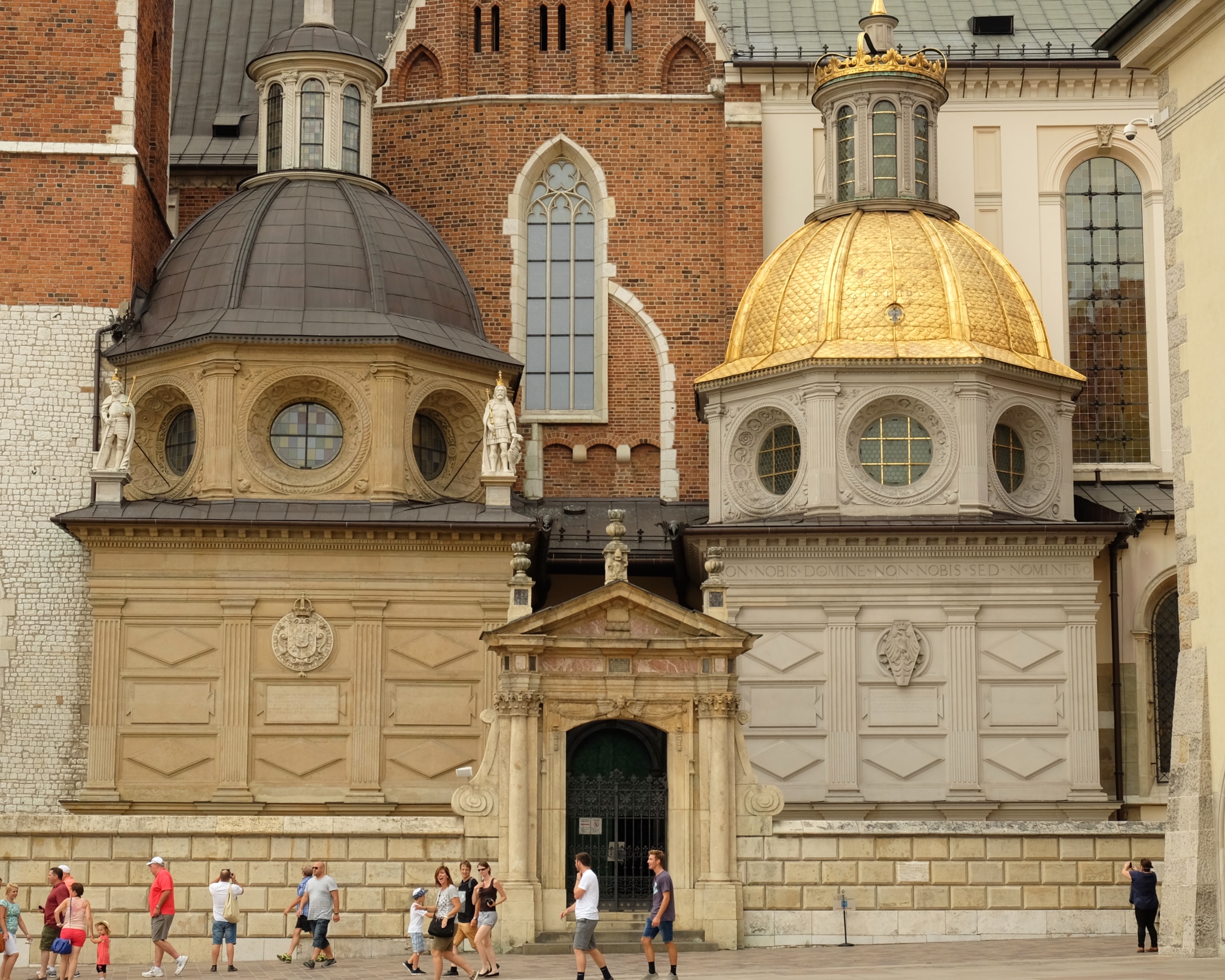 The domed facade of Wawel Cathedral.
The domed facade of Wawel Cathedral.
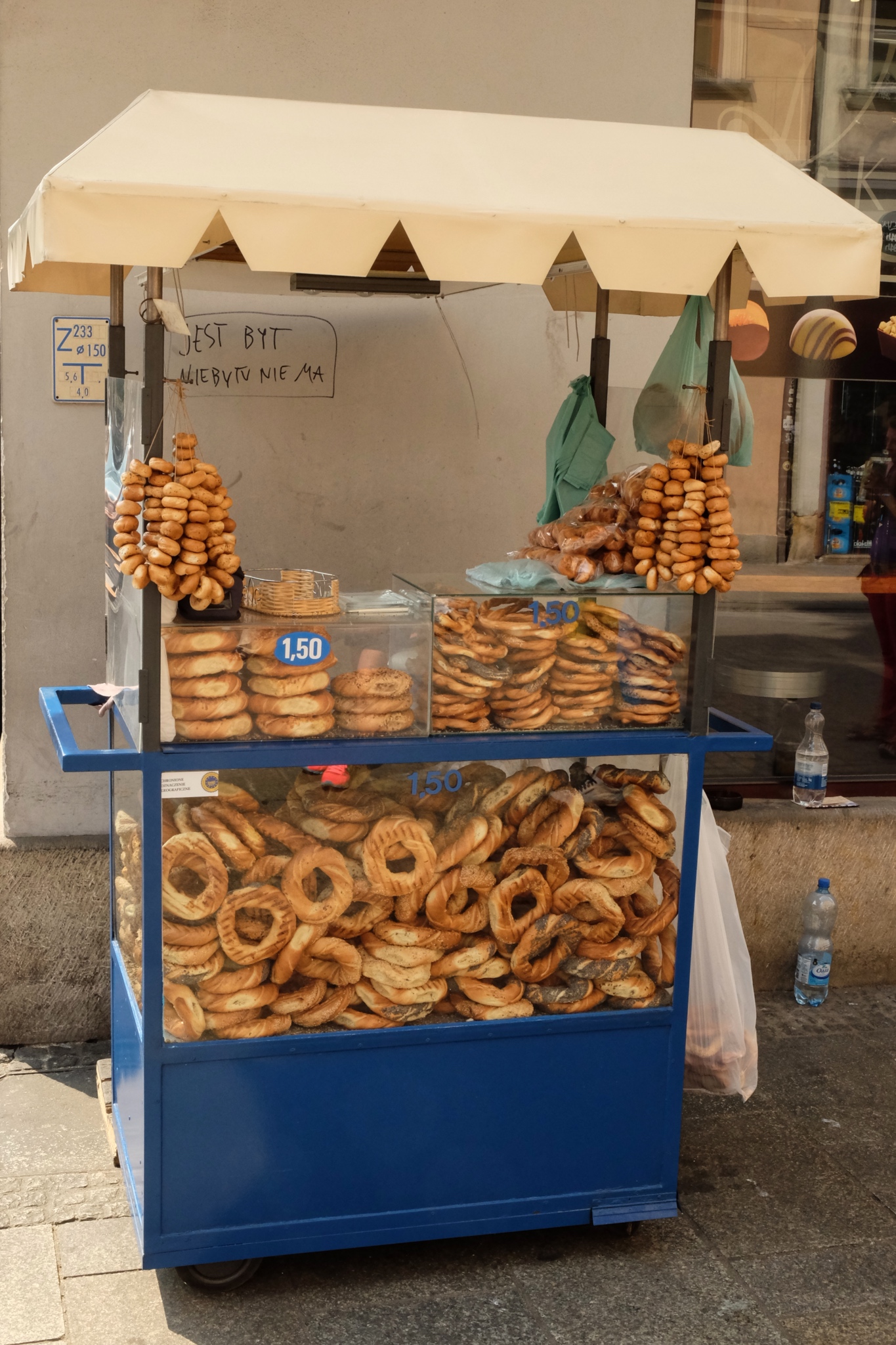 Beautiful bread snackage.
Beautiful bread snackage.
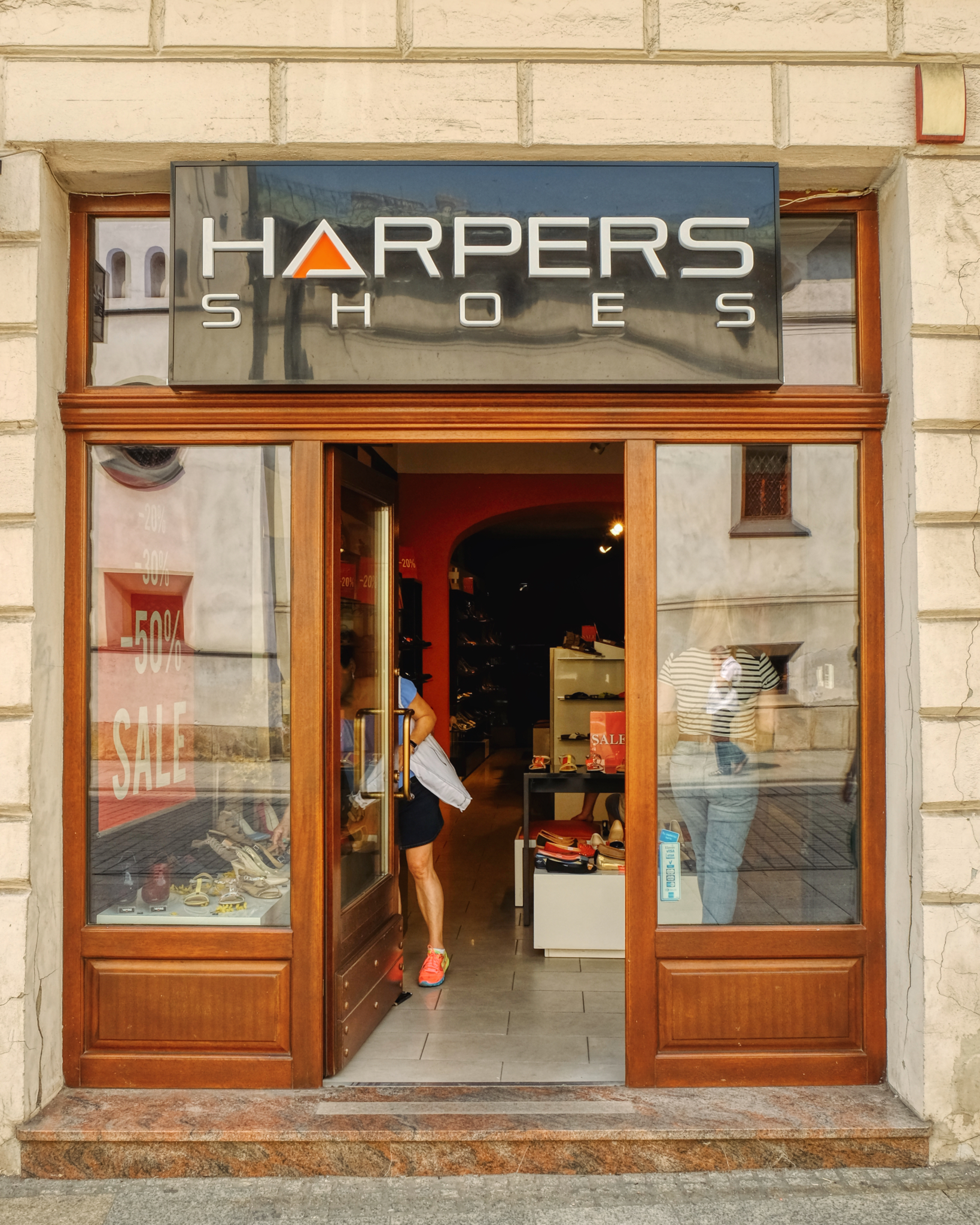 I couldn't resist!!!
I couldn't resist!!!
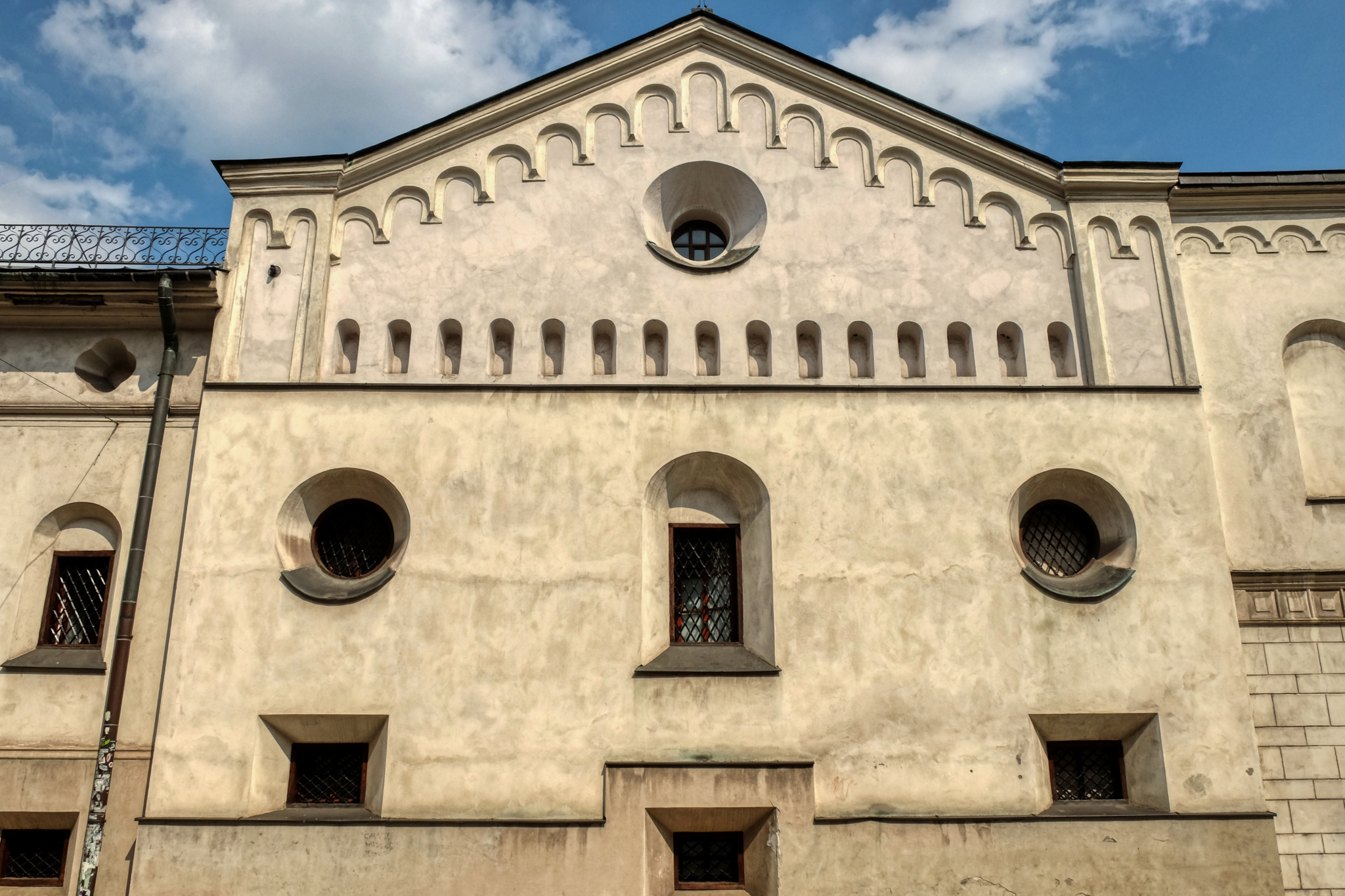 I absolutely love the architectural style of this city center monastery.
I absolutely love the architectural style of this city center monastery.
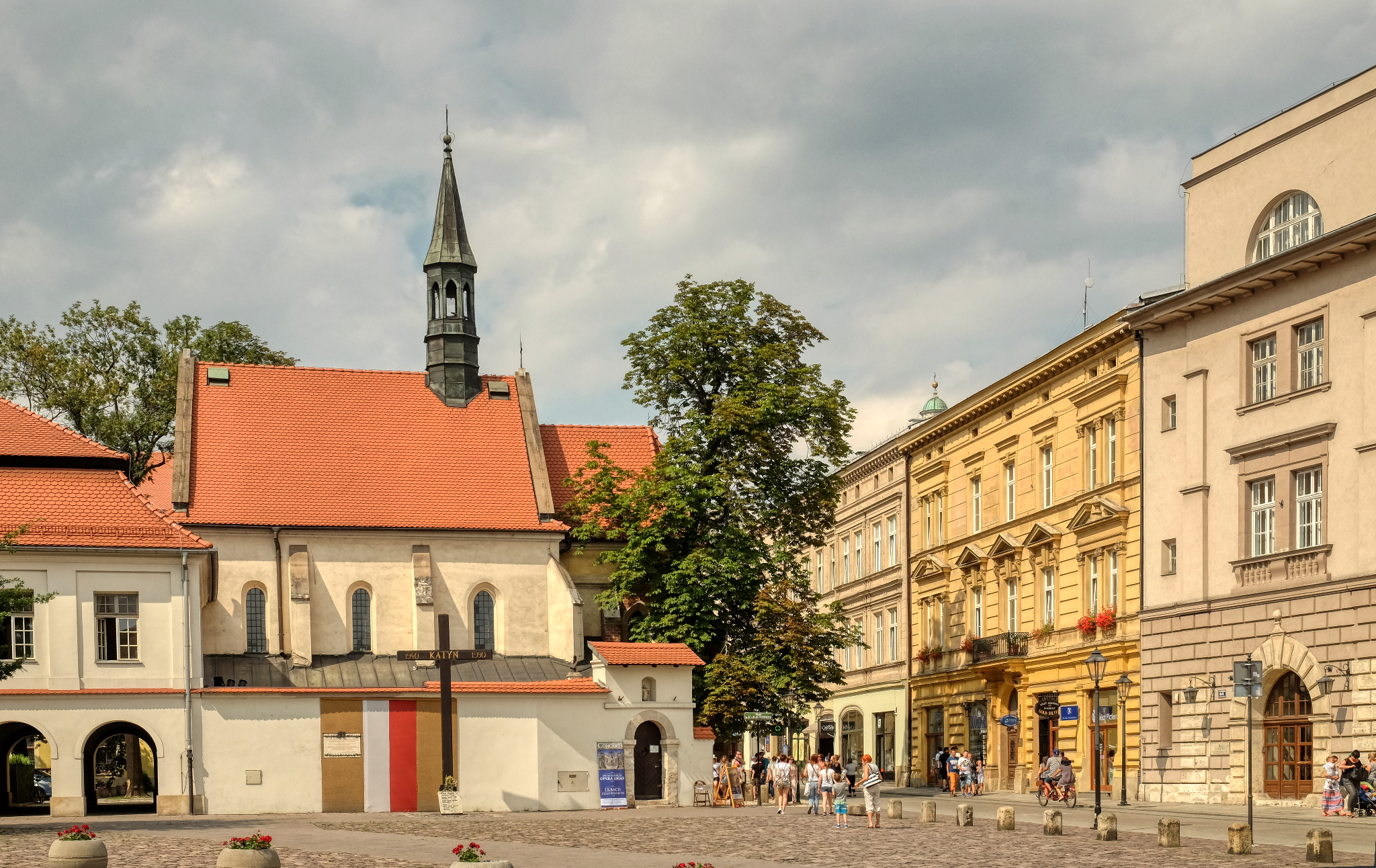 A wonderful city for just ambling around.
A wonderful city for just ambling around.
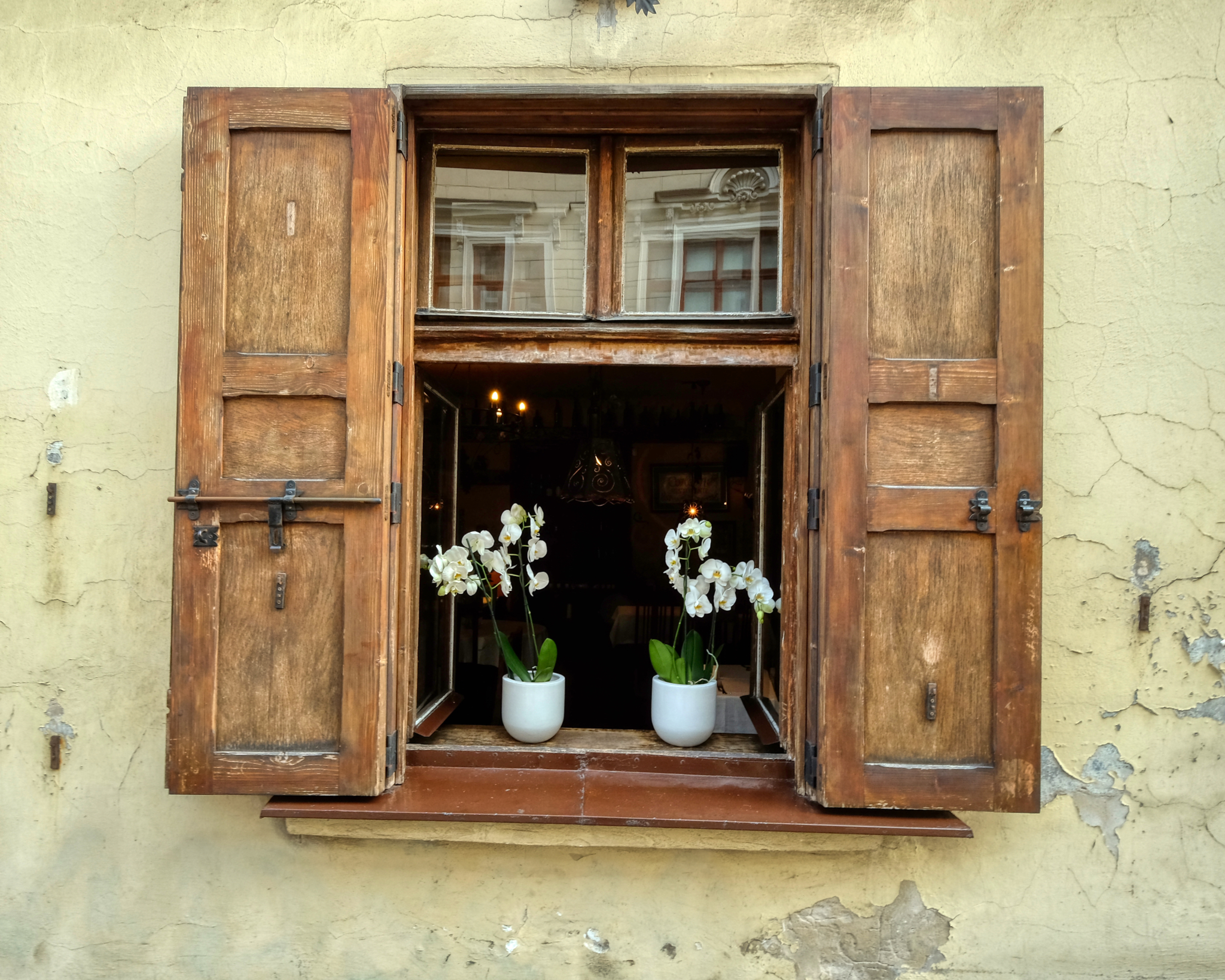 Ah! Orchids! Reminded us of our home in Thailand.
Ah! Orchids! Reminded us of our home in Thailand.
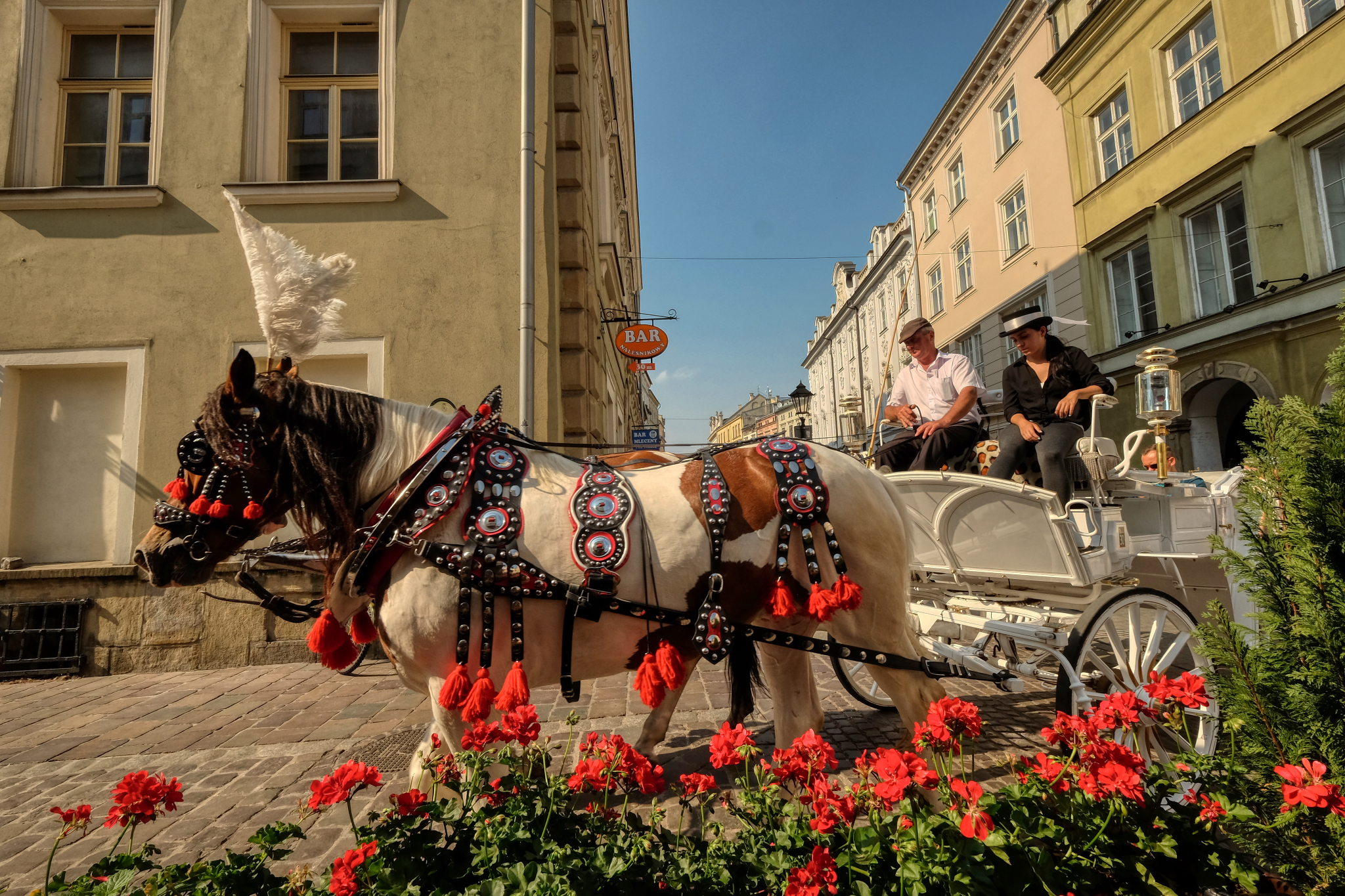 We stopped in at a cafe on a small side street only to discover it was on the route of the central square horse carriage route. They came by every two minutes!
We stopped in at a cafe on a small side street only to discover it was on the route of the central square horse carriage route. They came by every two minutes!
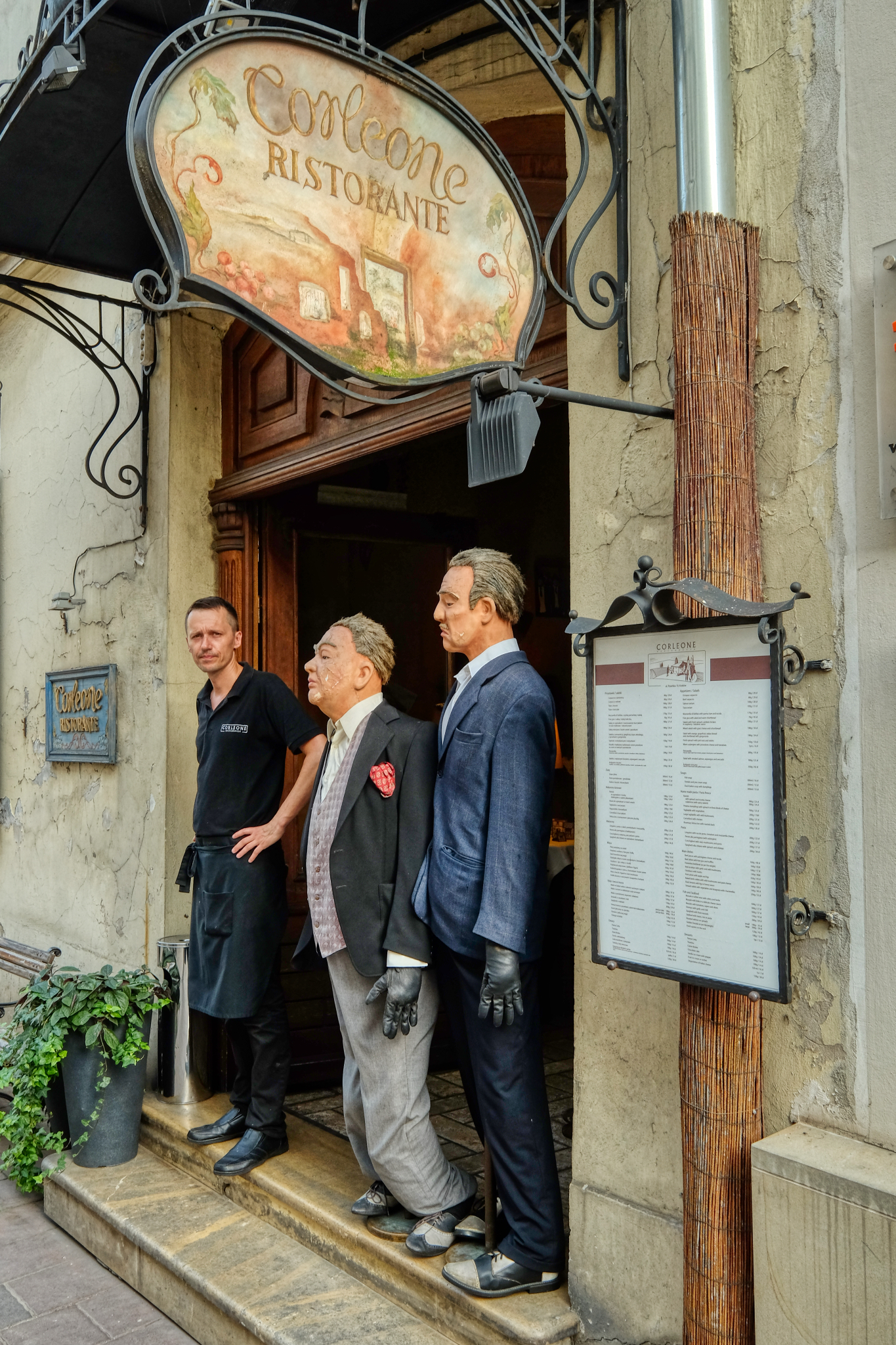 A restaurateur with a sense of humor.
A restaurateur with a sense of humor.
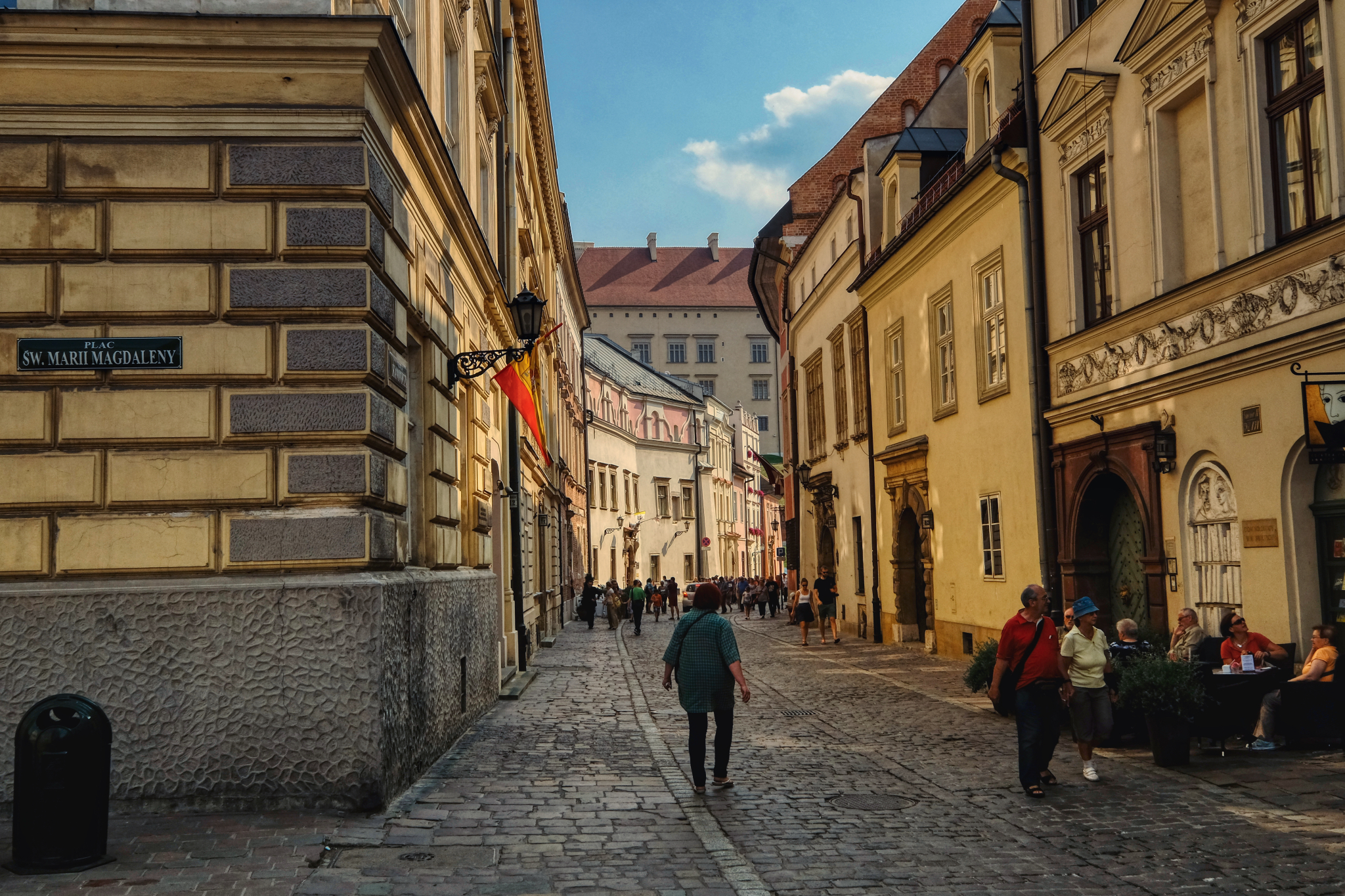 Lovely medieval cobbled lanes.
Lovely medieval cobbled lanes.
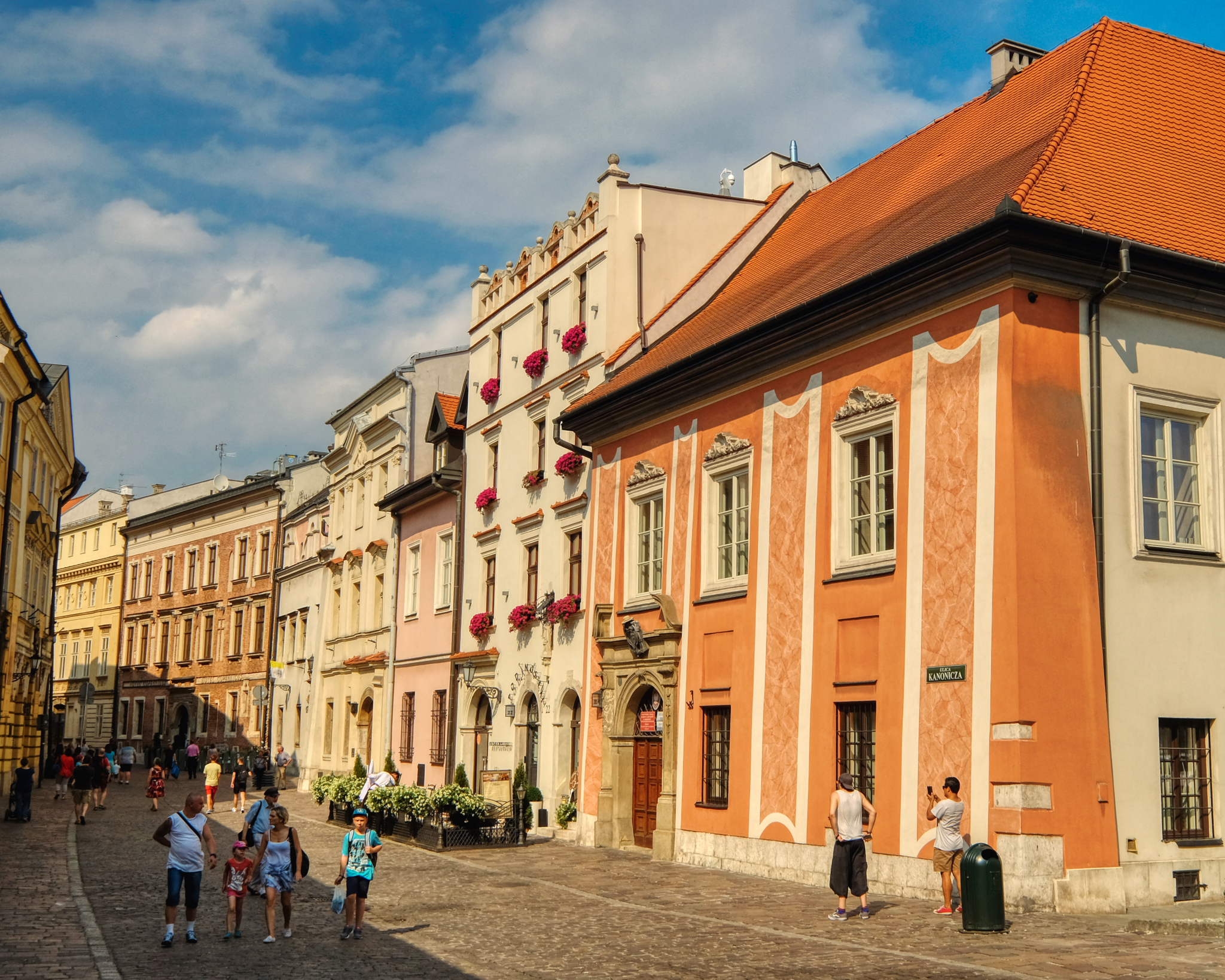 The old medieval city center as it was 500 years ago . . .
The old medieval city center as it was 500 years ago . . .
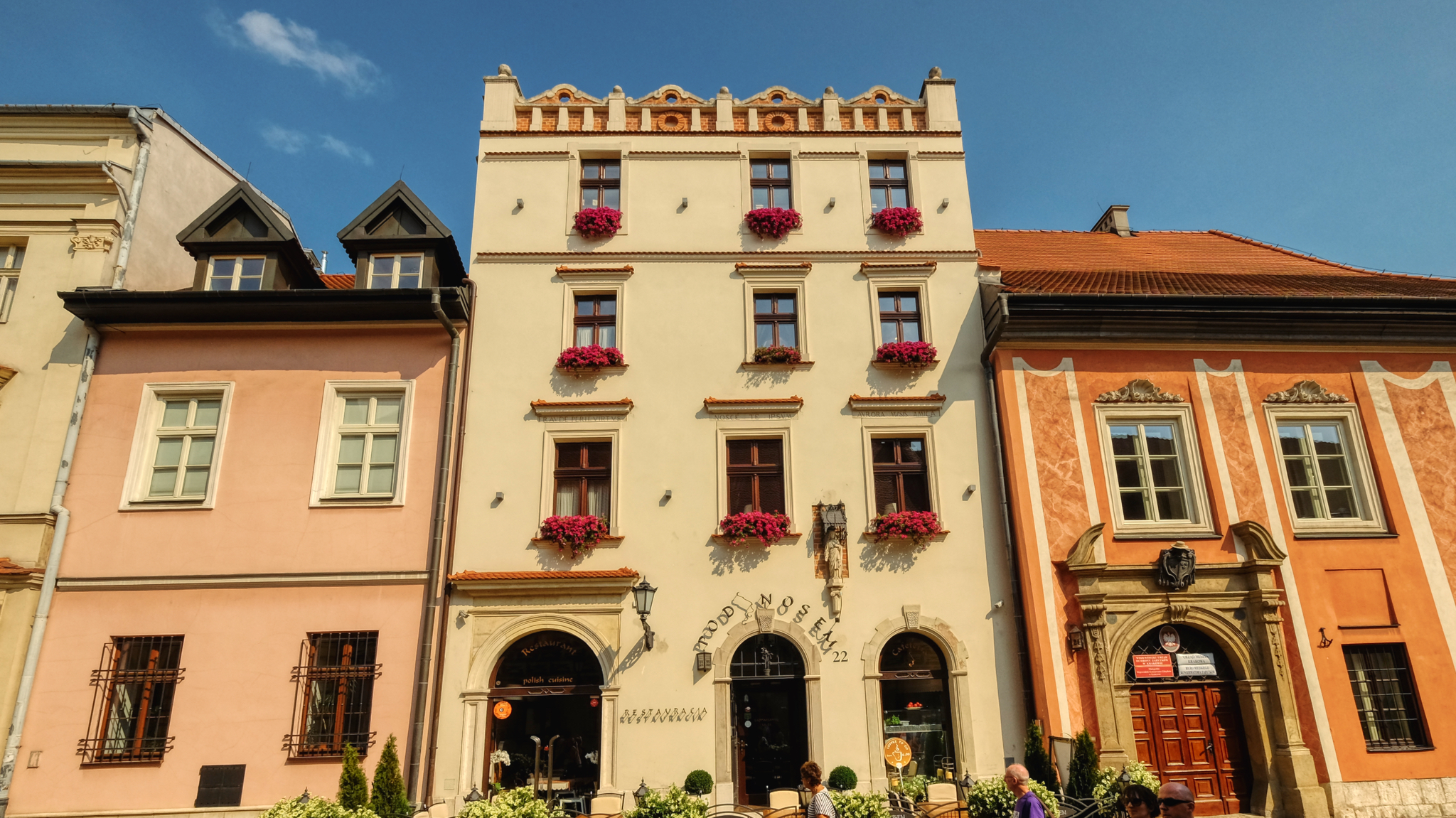 Beautifully decorated and adorned cityscape.
Beautifully decorated and adorned cityscape.
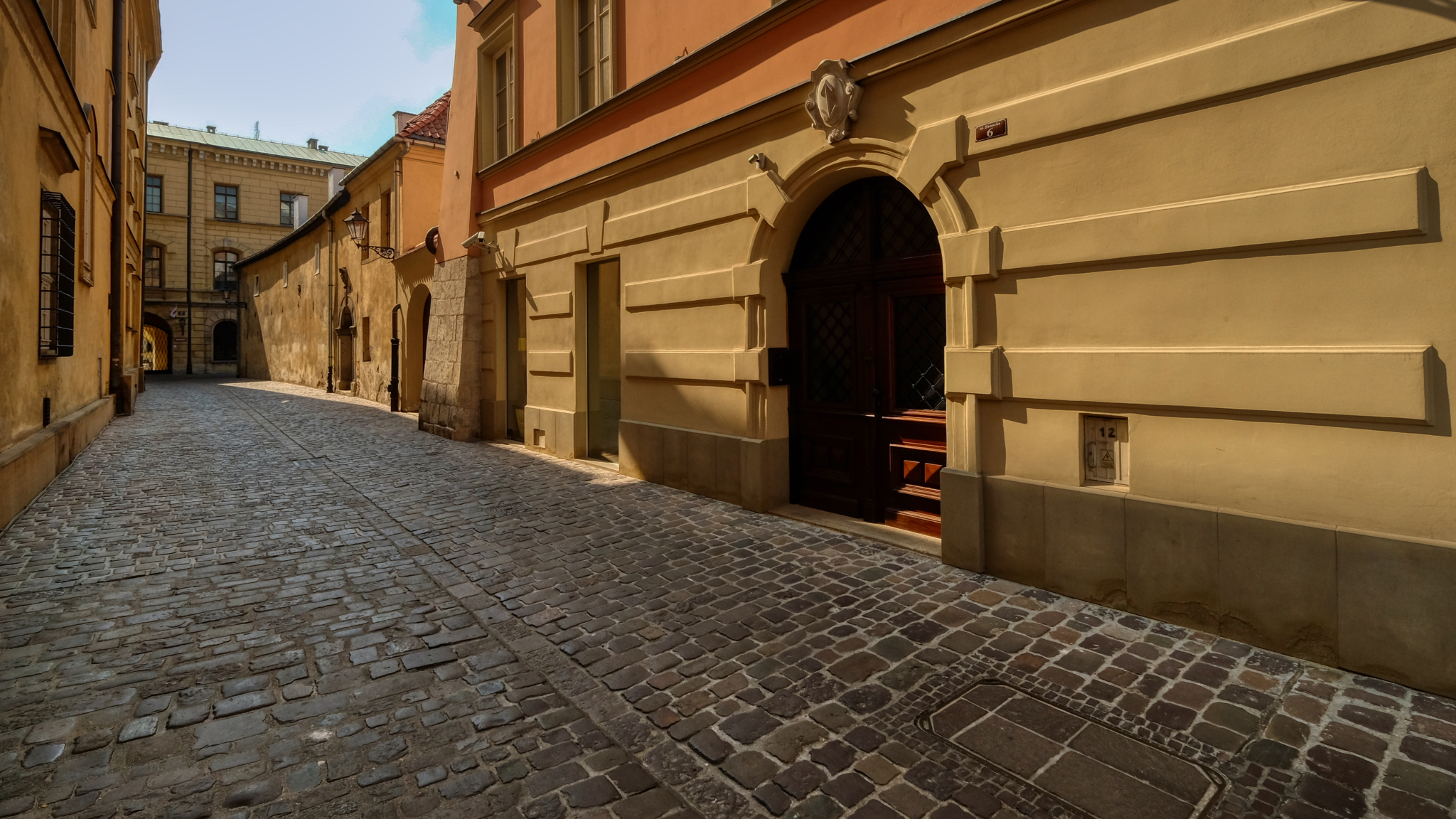 Monumental architecture along a cobbled alley.
Monumental architecture along a cobbled alley.
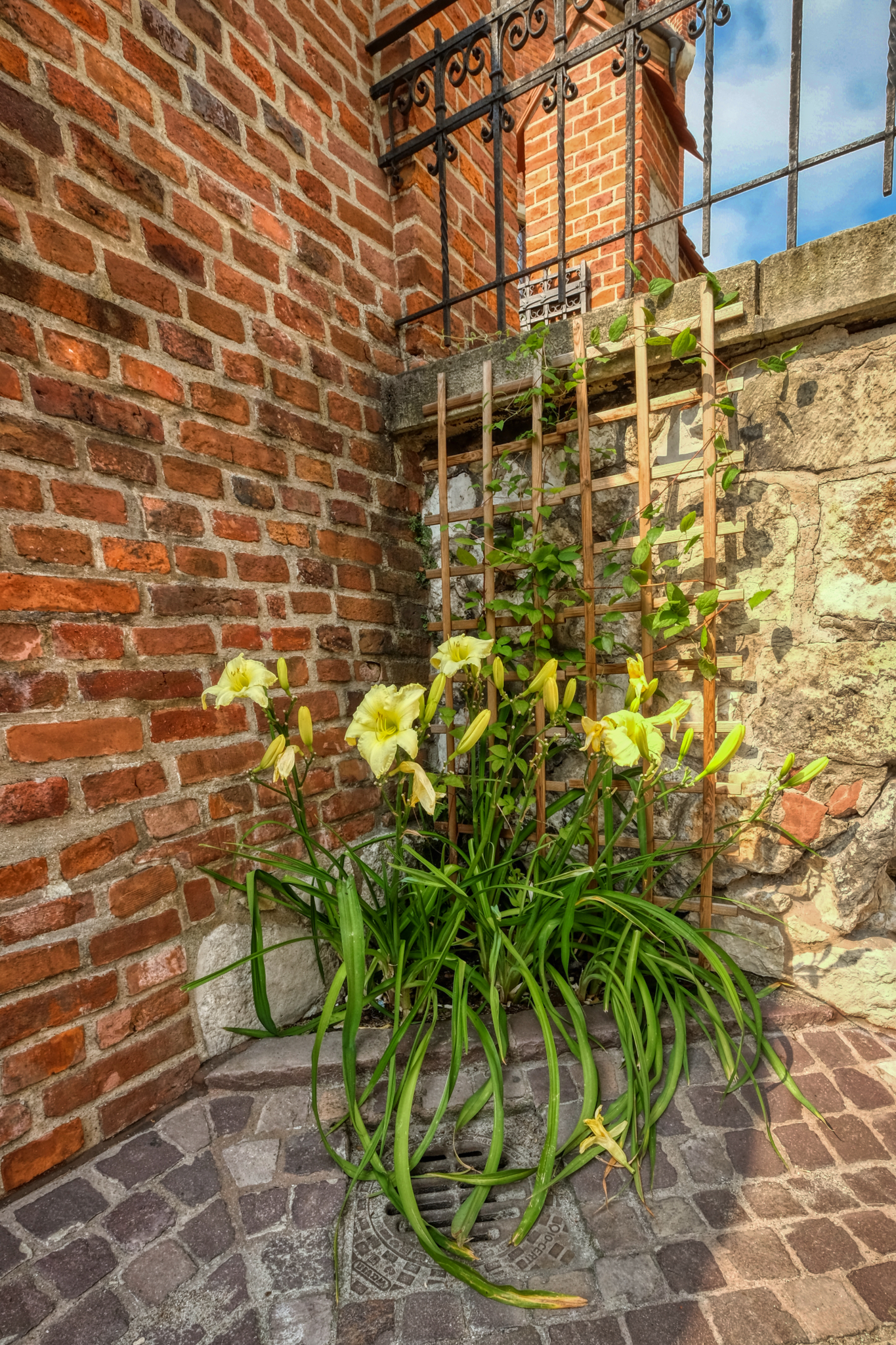 Little beauty arrangements here and there throughout this charming old city.
Little beauty arrangements here and there throughout this charming old city.
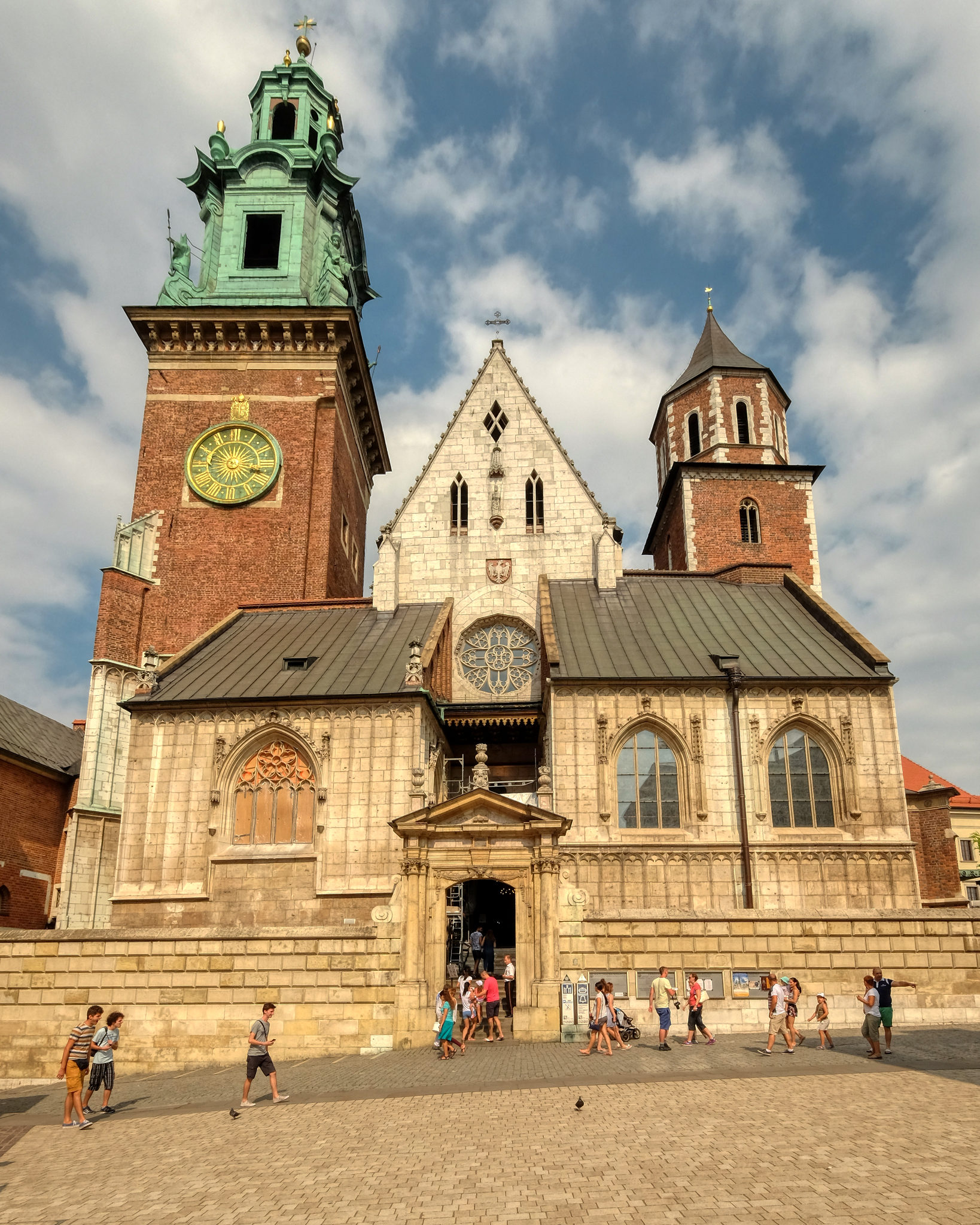 The castle chapel square.
The castle chapel square.
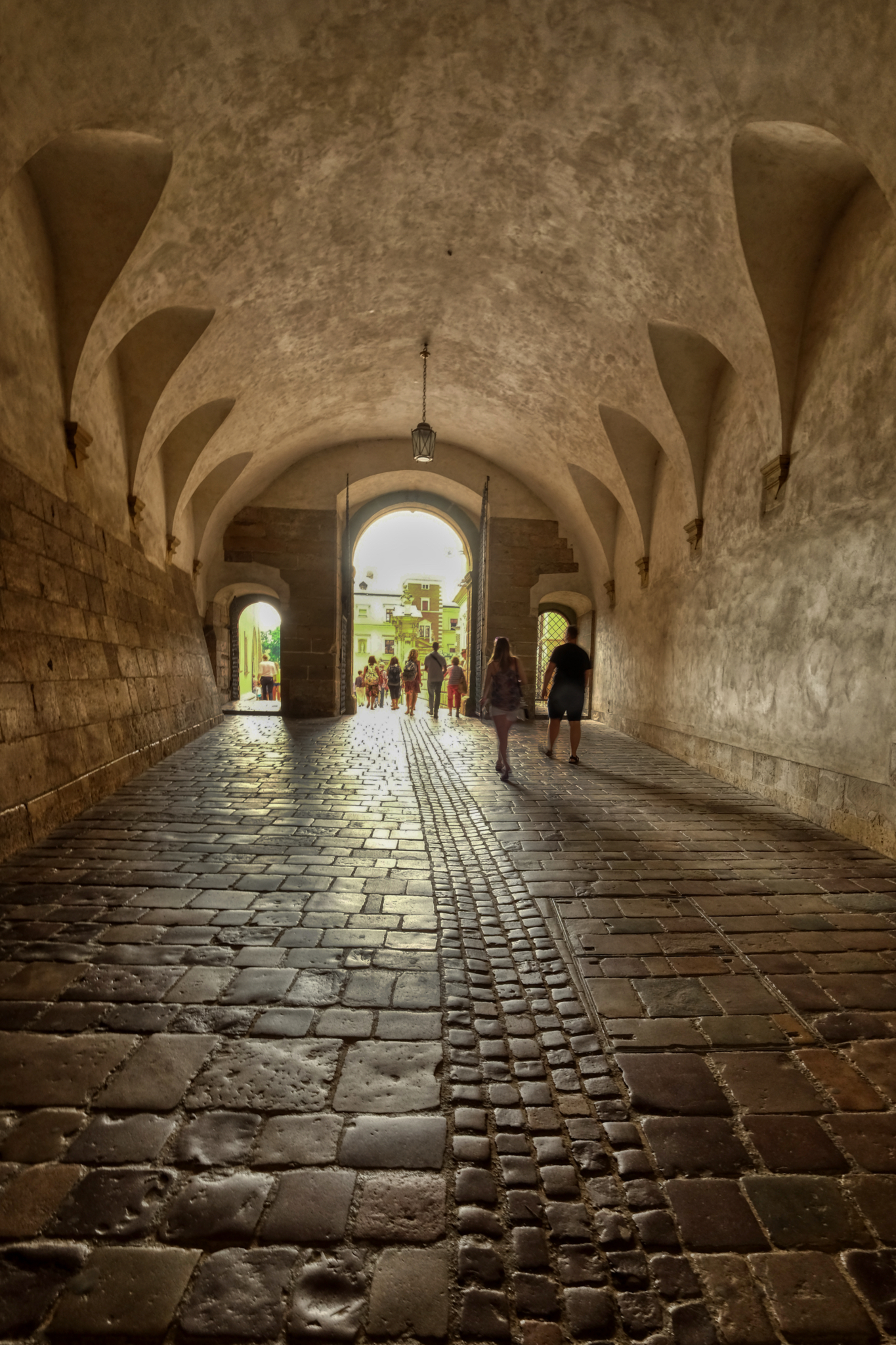 A passage to . . . ?
A passage to . . . ?
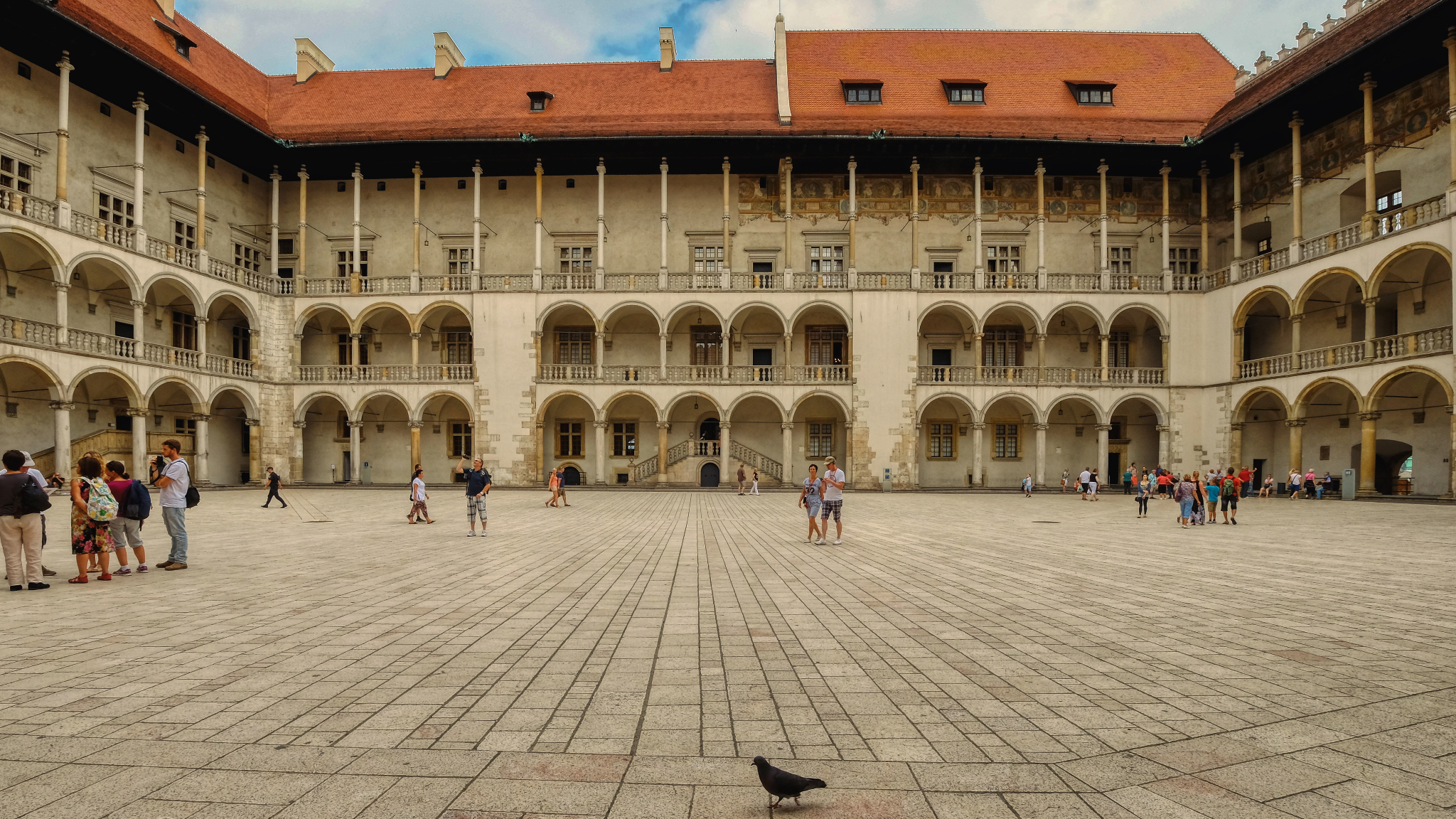 The courtyard of Kraców's Wawel Castle.
The courtyard of Kraców's Wawel Castle.
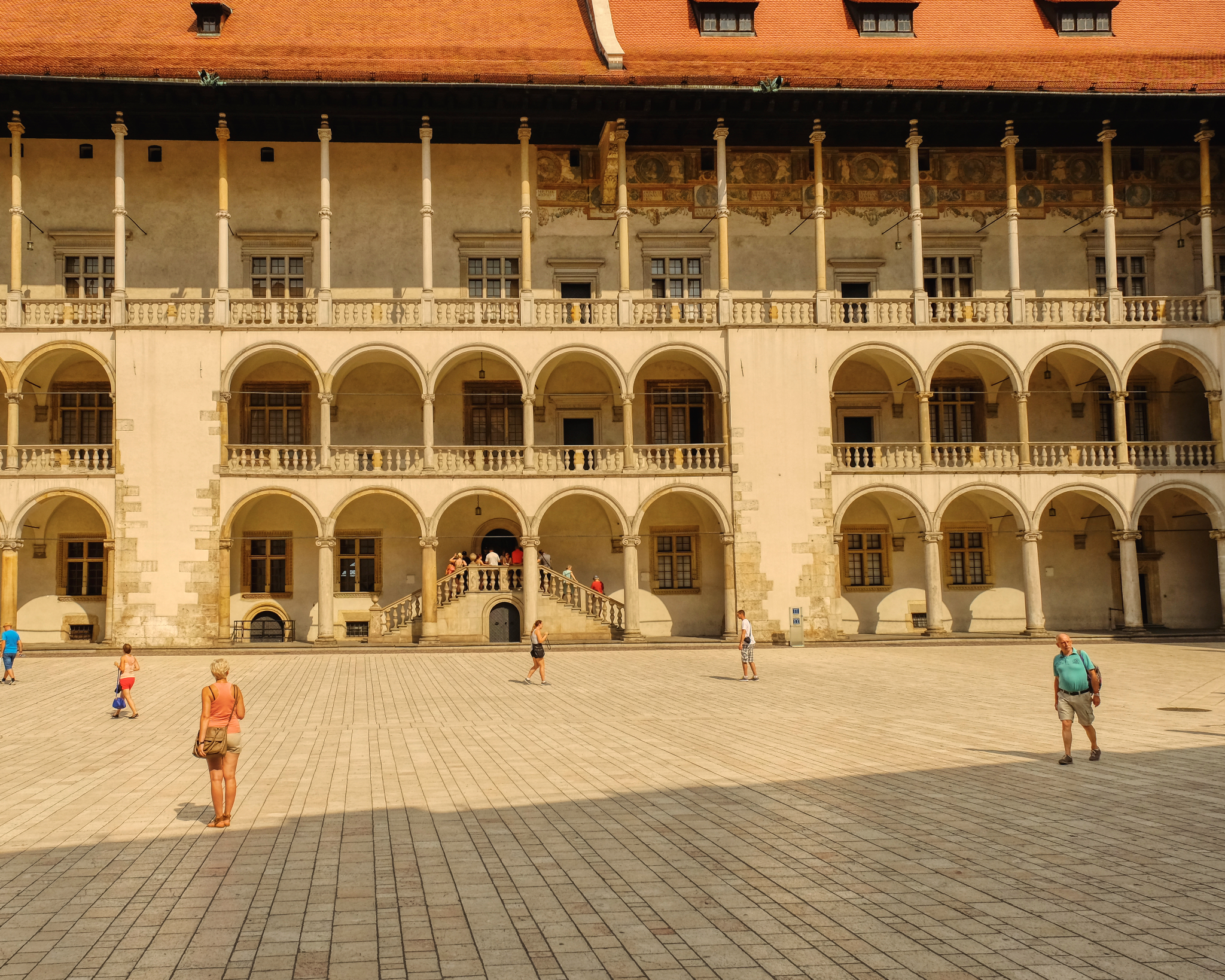 The castle courtyard . . . layers of balconies and doors . . . what mysteries have taken place here?
The castle courtyard . . . layers of balconies and doors . . . what mysteries have taken place here?
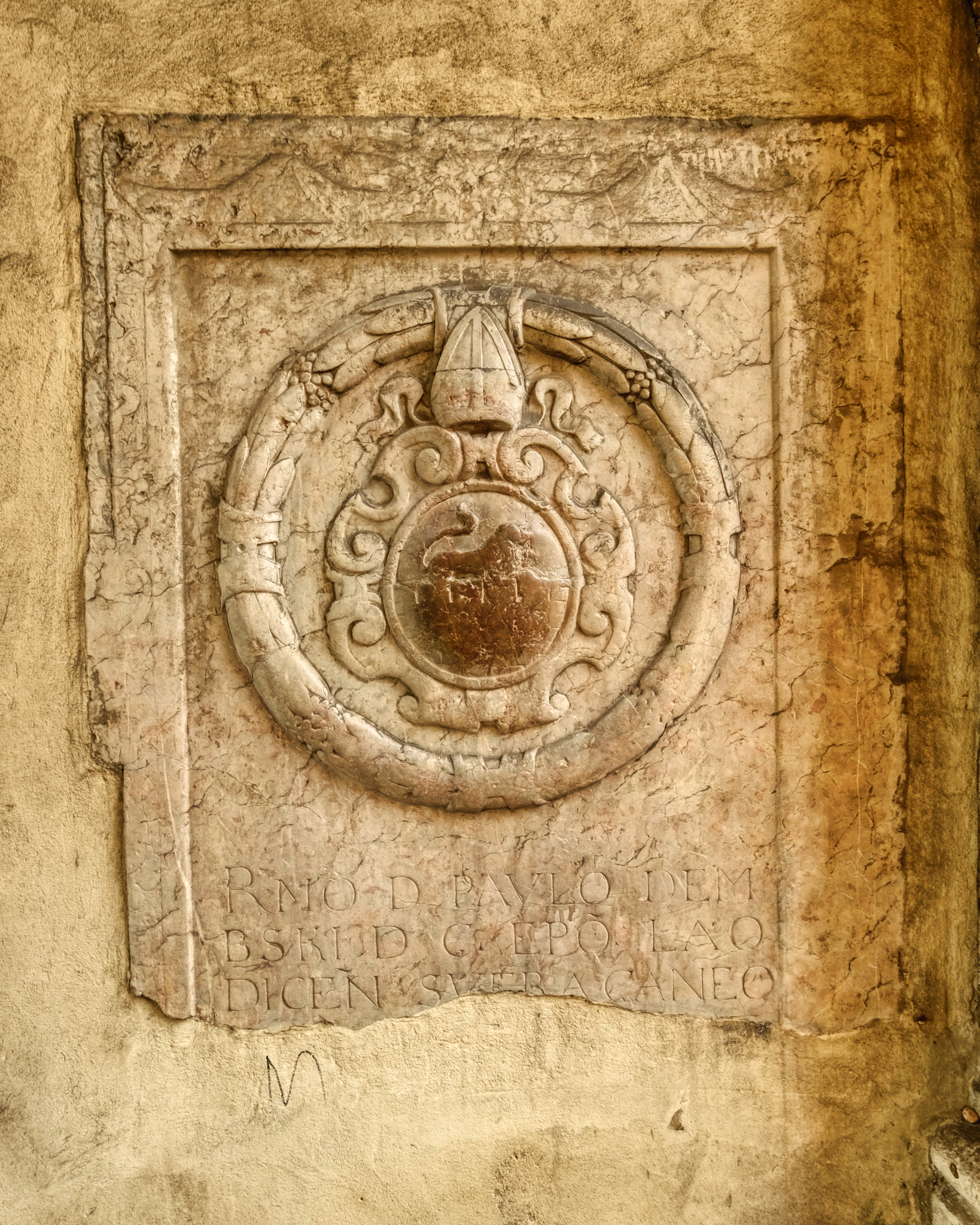 Turn your head one way and you see a royal insignia . . . turn it the other way . . .
Turn your head one way and you see a royal insignia . . . turn it the other way . . .
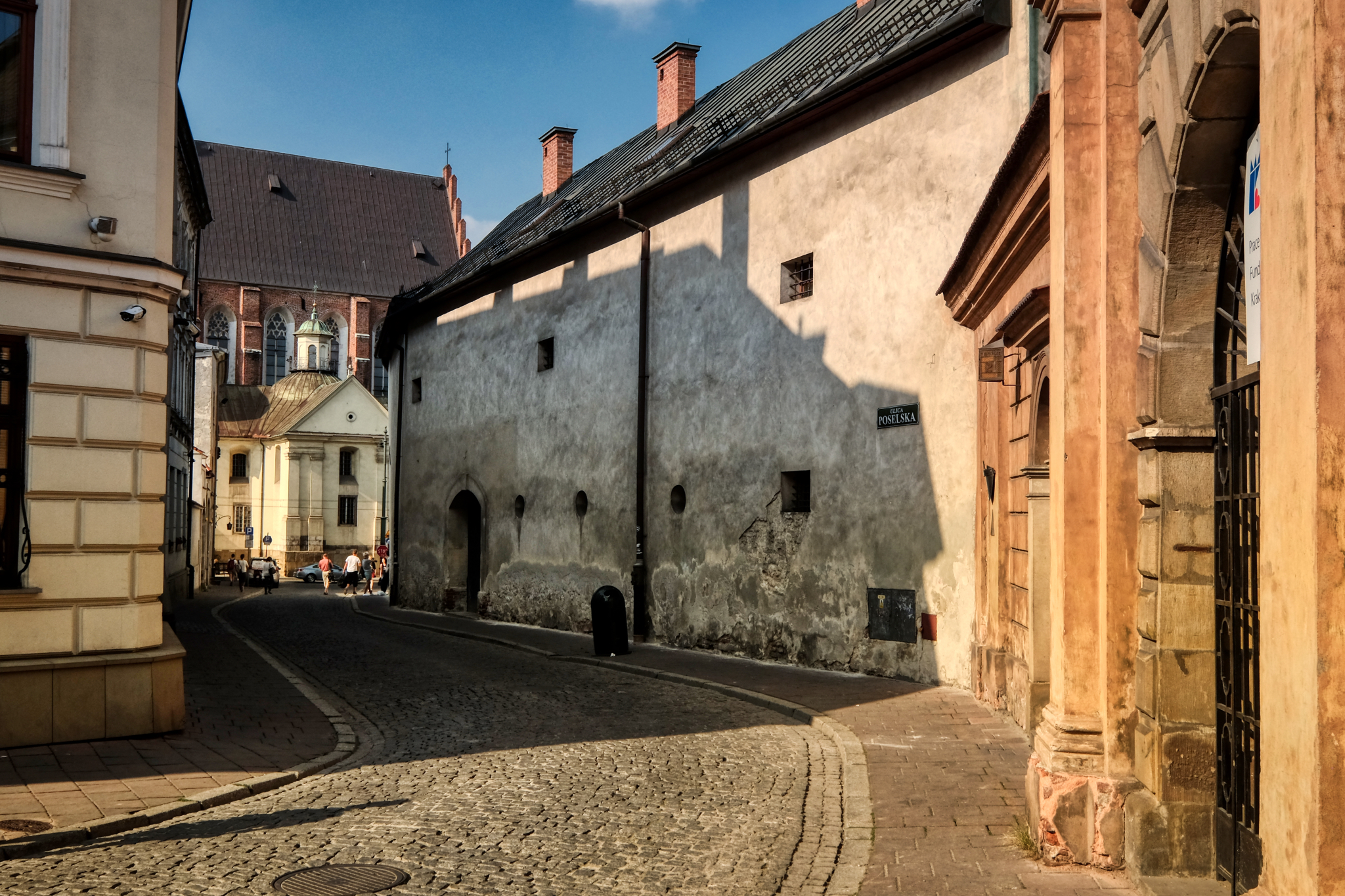 Strolling along the narrow side streets next to the castle.
Strolling along the narrow side streets next to the castle.
 . . . the entrance to a calm peaceful old chapel . . .
. . . the entrance to a calm peaceful old chapel . . .
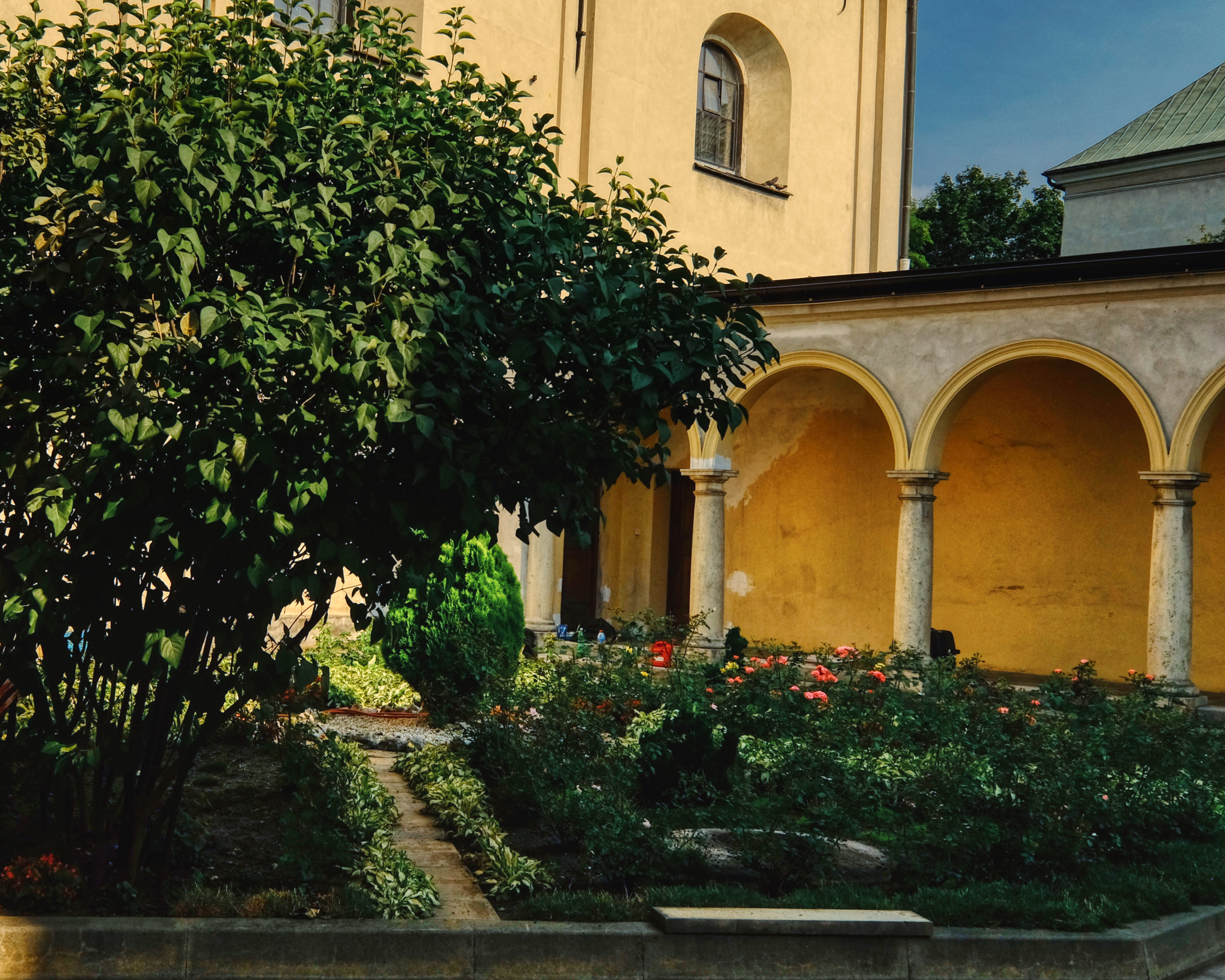 . . . and the quiet garden within.
. . . and the quiet garden within.
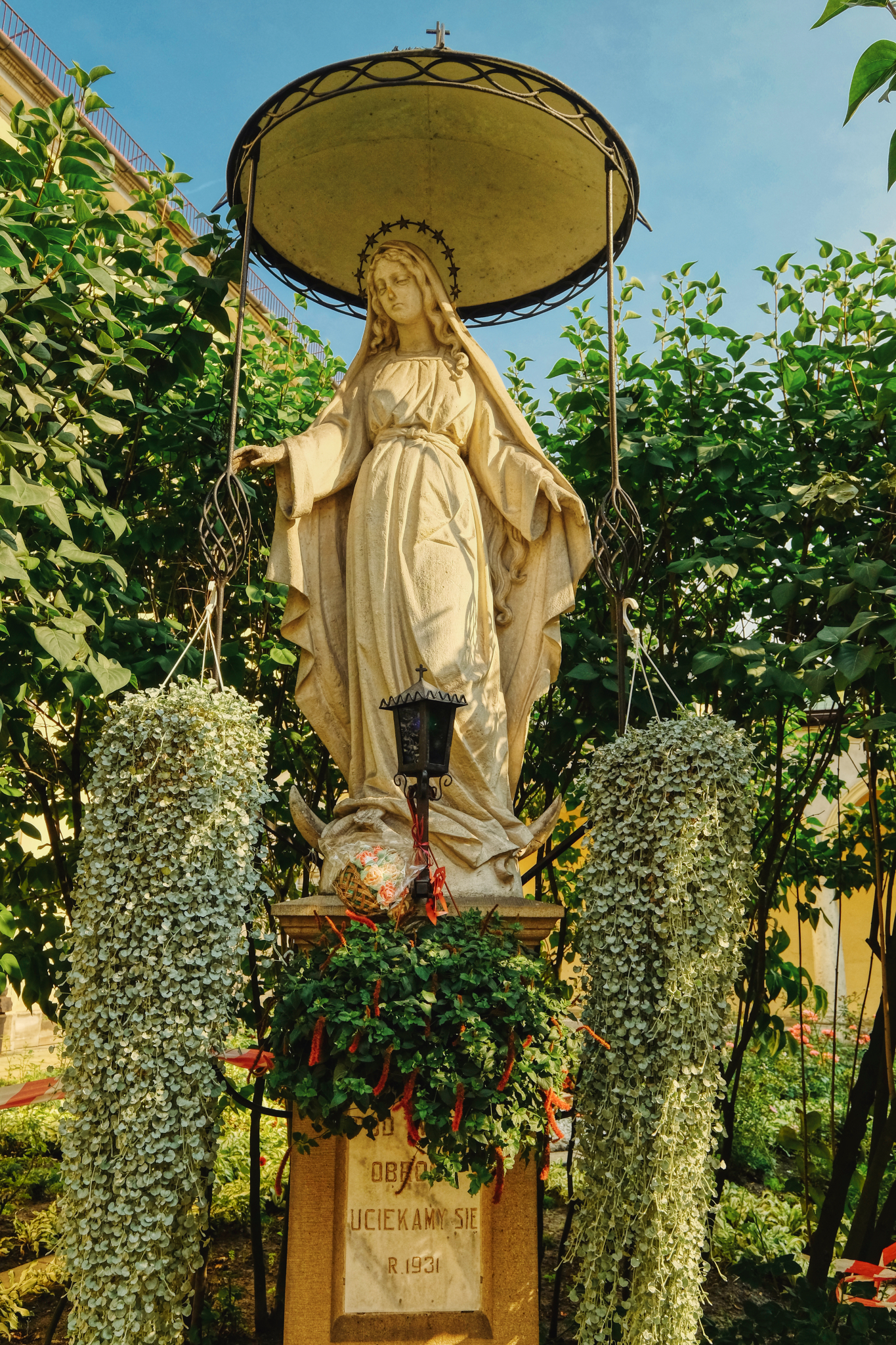 One of thousands of statues of Mary throughout the city. Poland is still a heavily Catholic country.
One of thousands of statues of Mary throughout the city. Poland is still a heavily Catholic country.
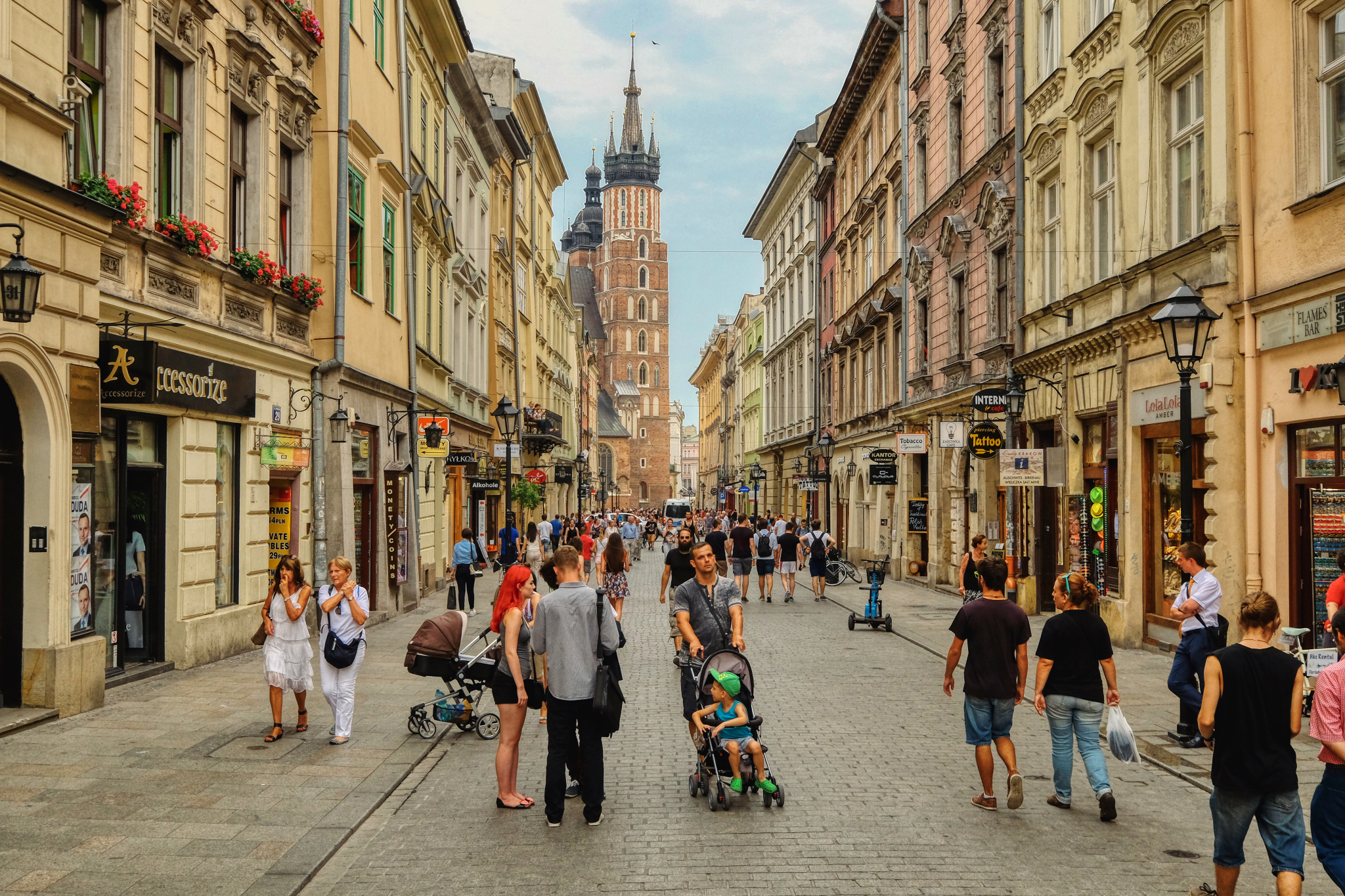 The attractive main shopping area, Floriańsk Street.
The attractive main shopping area, Floriańsk Street.
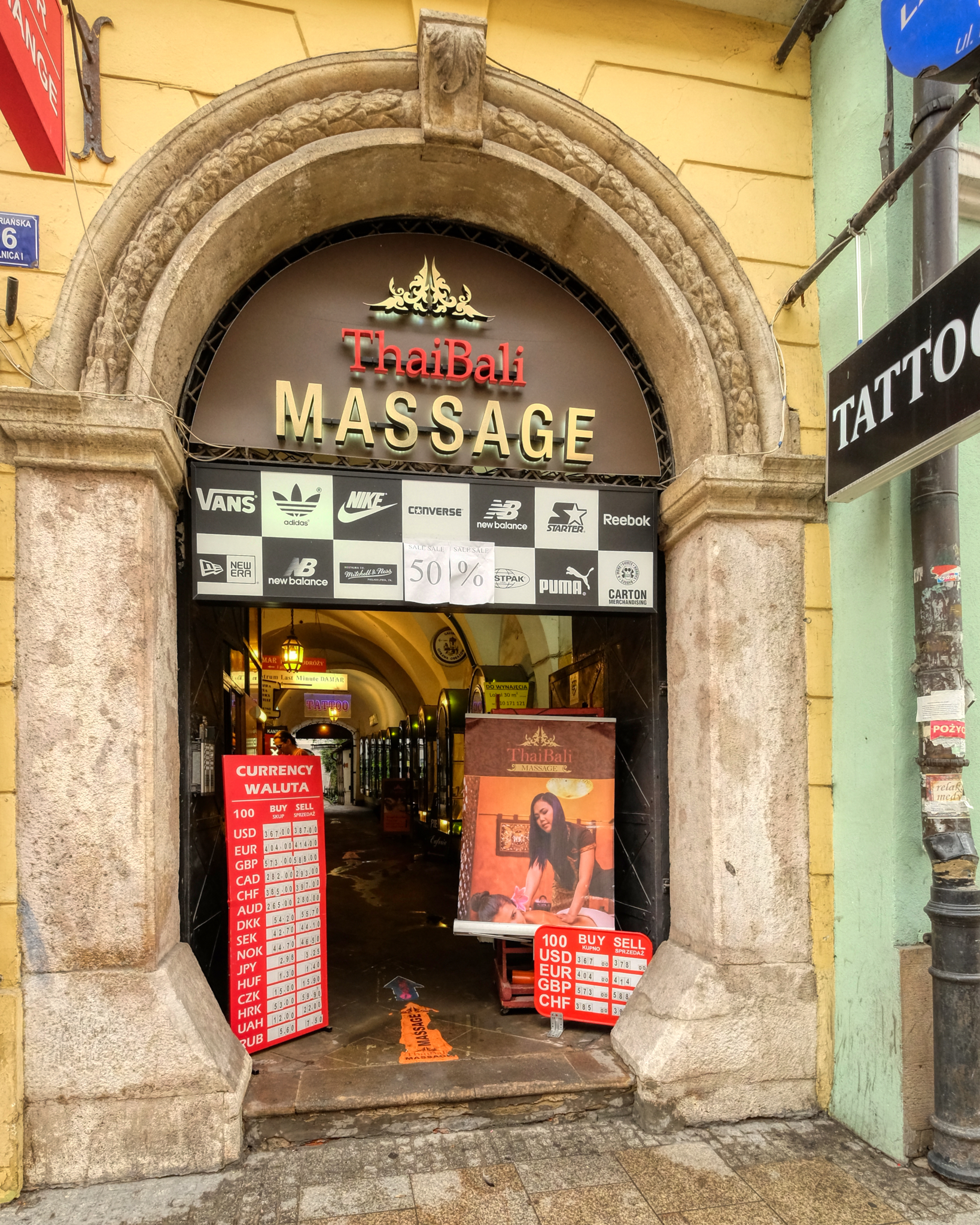 Thai massage! We were tempted!!! Some of the very old buildings held modern shopping malls in their interiors.
Thai massage! We were tempted!!! Some of the very old buildings held modern shopping malls in their interiors.
 Interesting floor in the passage to a high-end shopping galleria.
Interesting floor in the passage to a high-end shopping galleria.
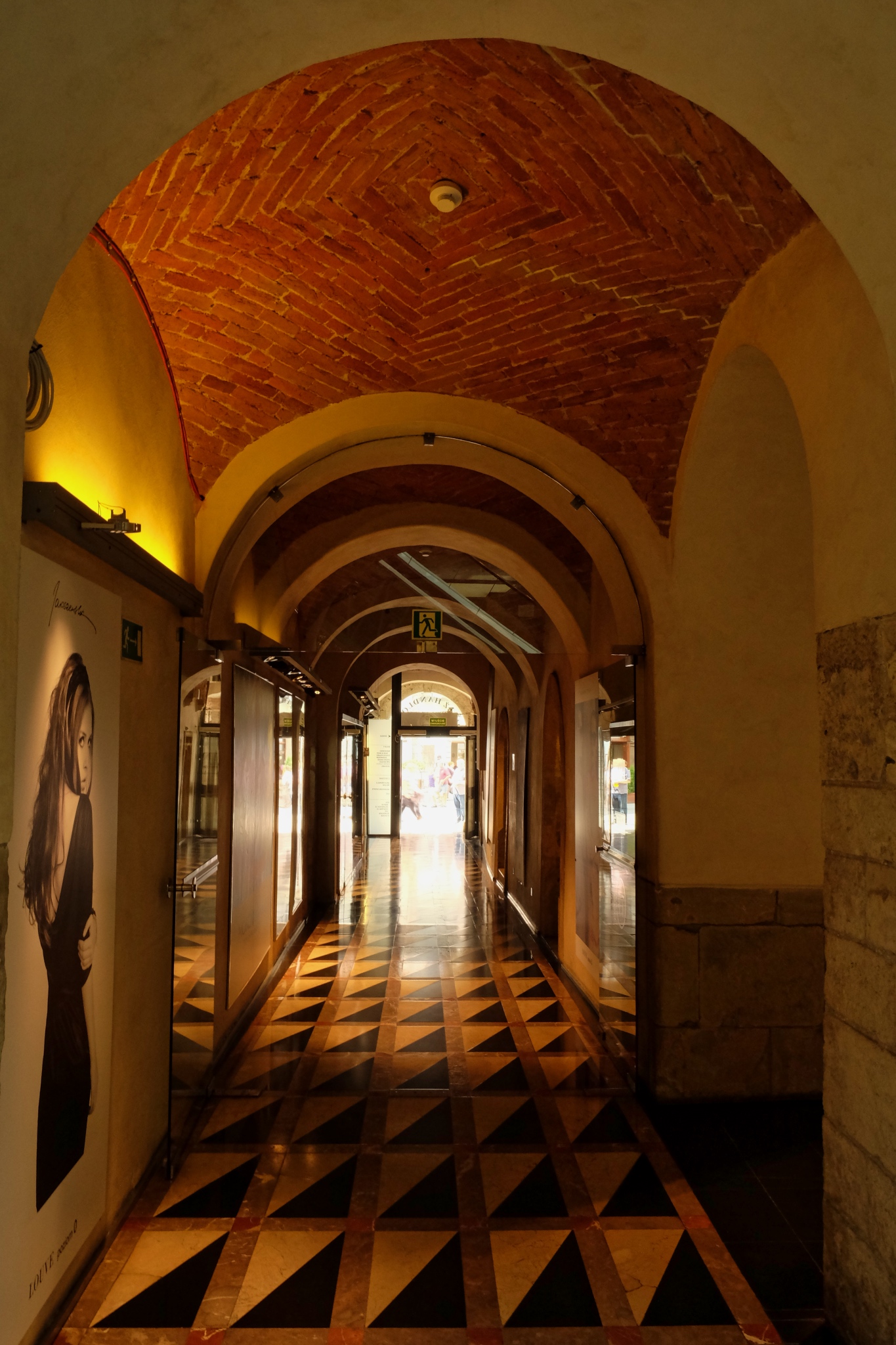 Nice the way the old features have been integrated into the modern shopping area.
Nice the way the old features have been integrated into the modern shopping area.
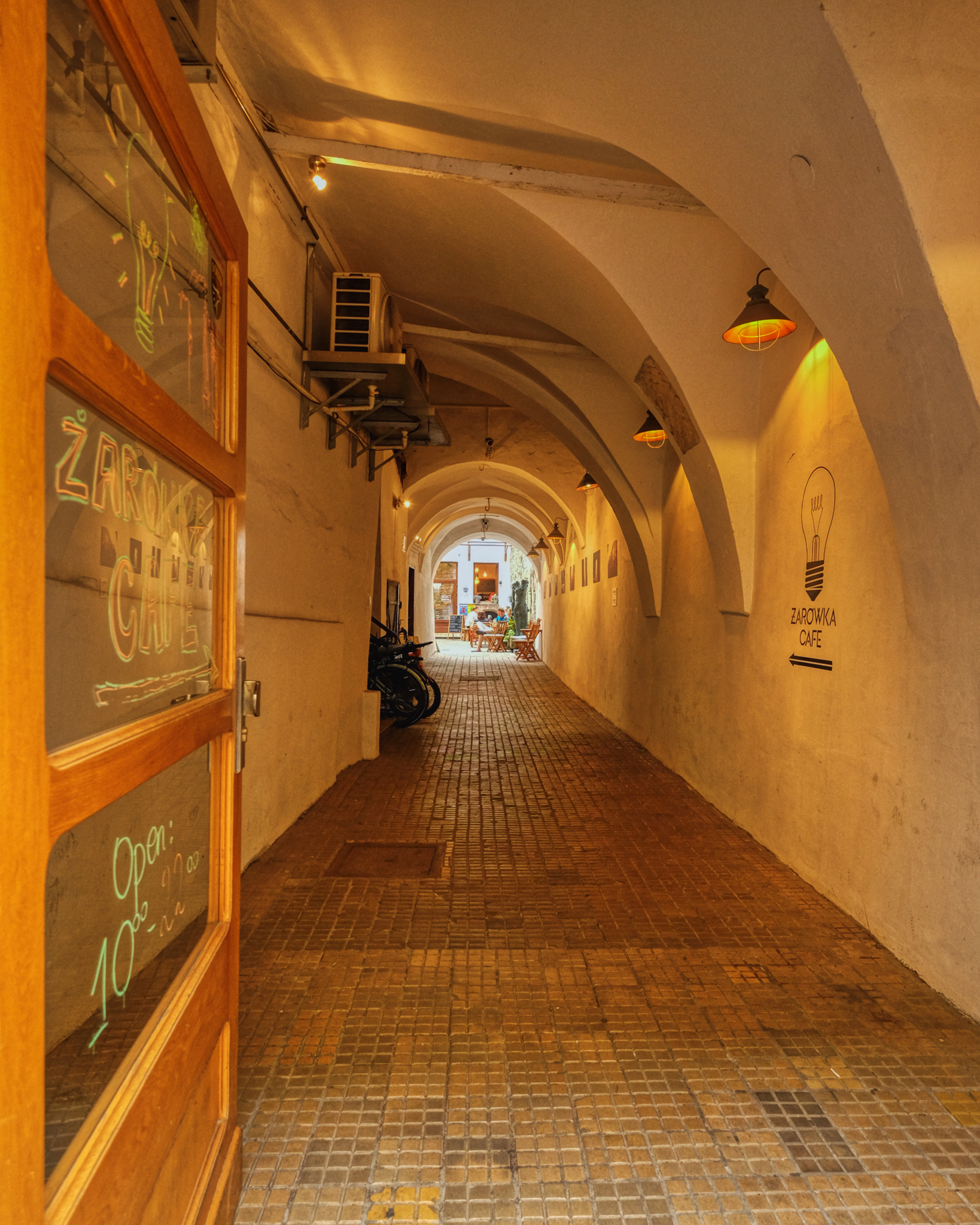 It was so interesting how many little passages lead back into courtyards filled with shops and restaurants. I would love to live in this city!
It was so interesting how many little passages lead back into courtyards filled with shops and restaurants. I would love to live in this city!
 Exploring the little streets, arched passages, and small alleys always lead to big surprises.
Exploring the little streets, arched passages, and small alleys always lead to big surprises.
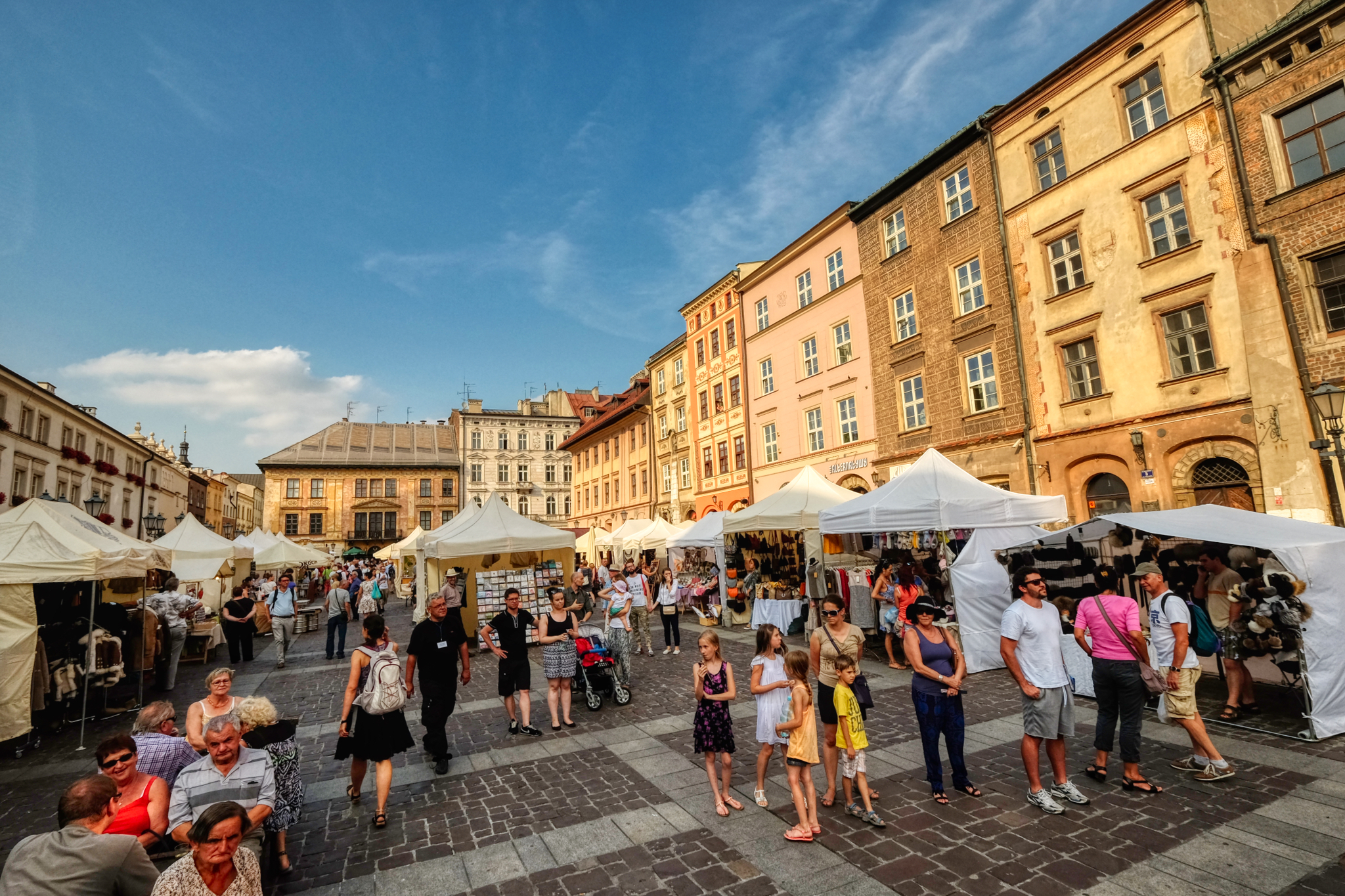 A discovery! A market square! We spent quite a long time here pawing everything!
A discovery! A market square! We spent quite a long time here pawing everything!
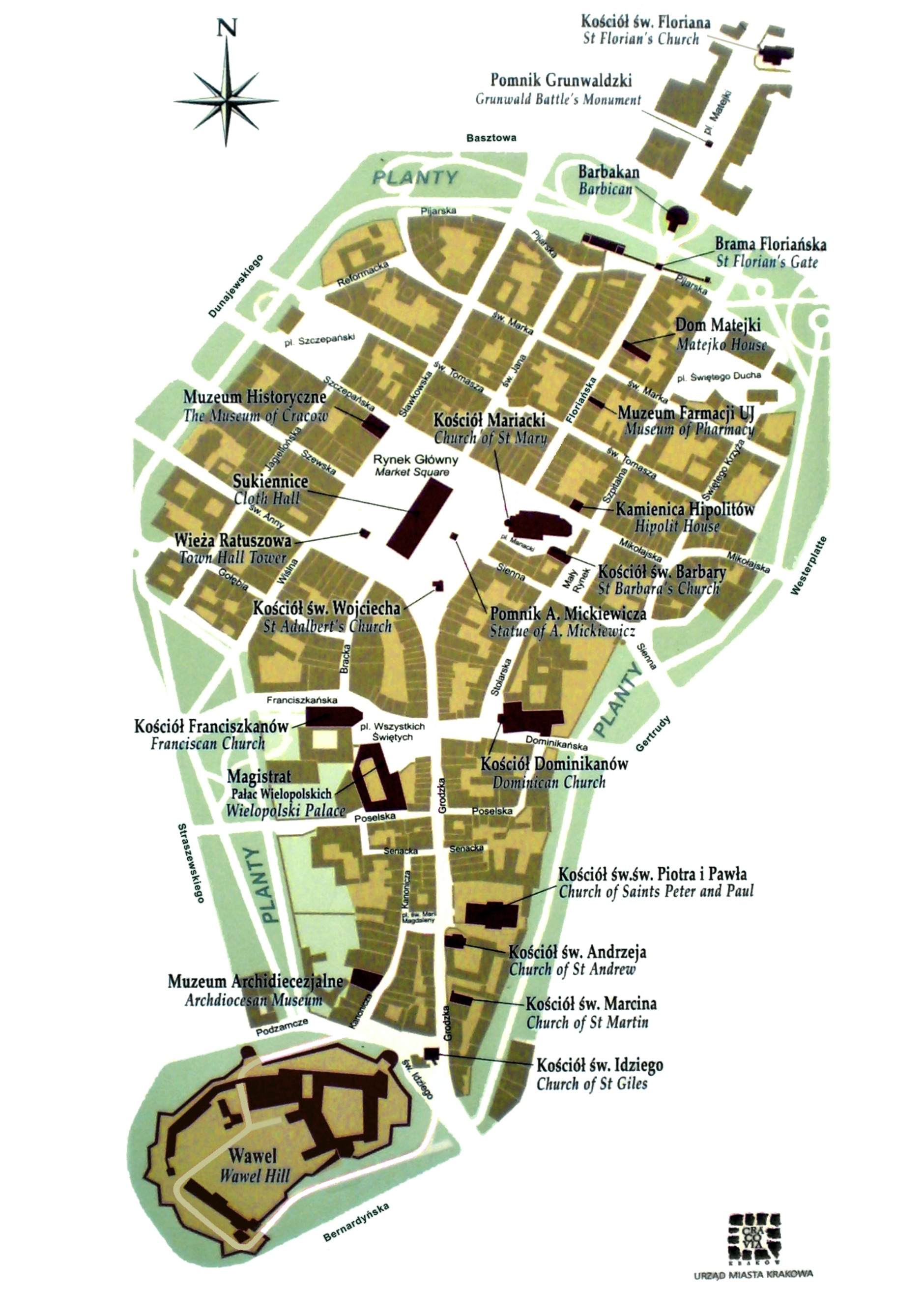 Kraków is an excellent 'walking city' to spend several days wandering around enjoying yourself.
Kraków is an excellent 'walking city' to spend several days wandering around enjoying yourself.
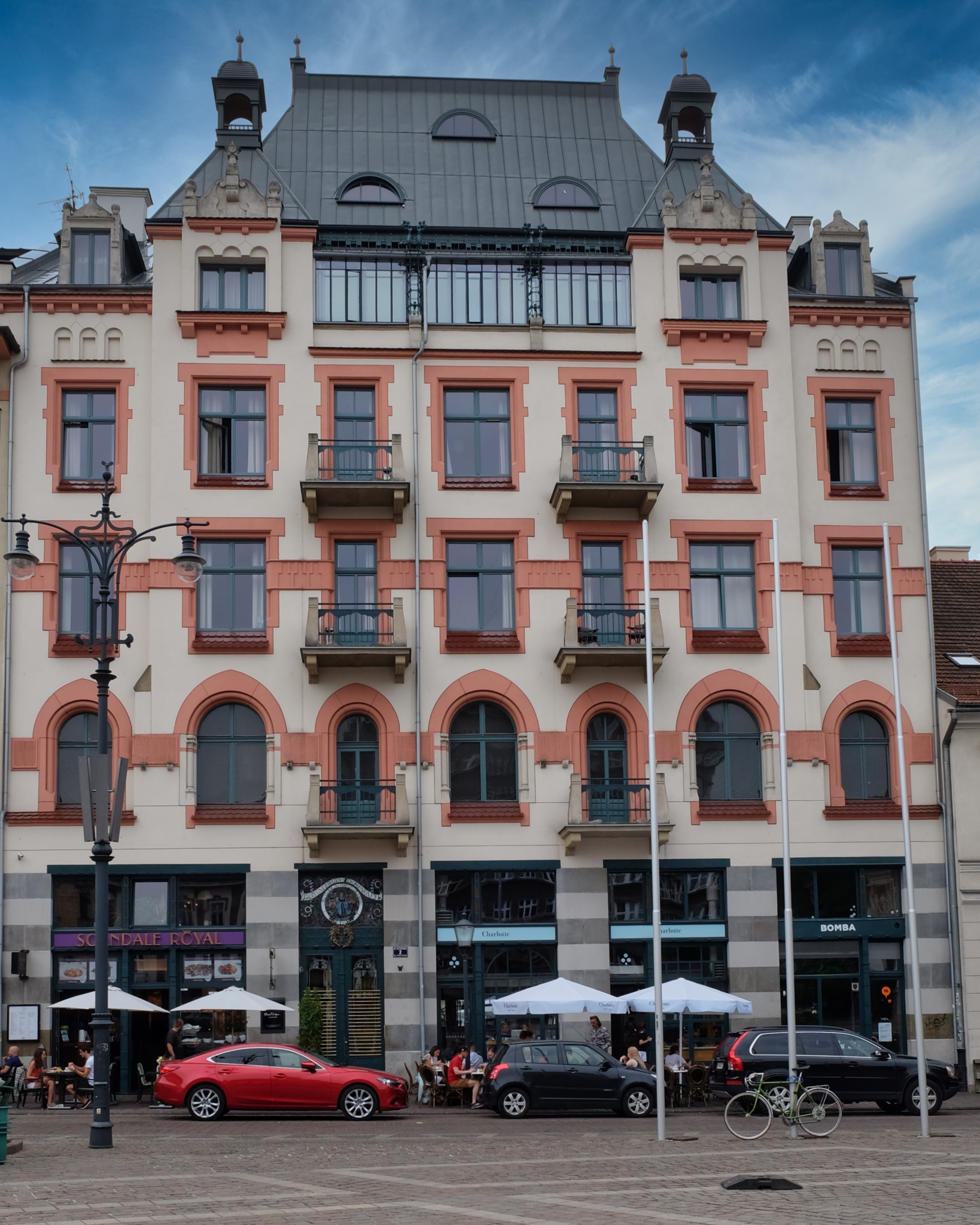 Our hotel was in this old building just off of the main square, and across from an art museum.
Our hotel was in this old building just off of the main square, and across from an art museum.
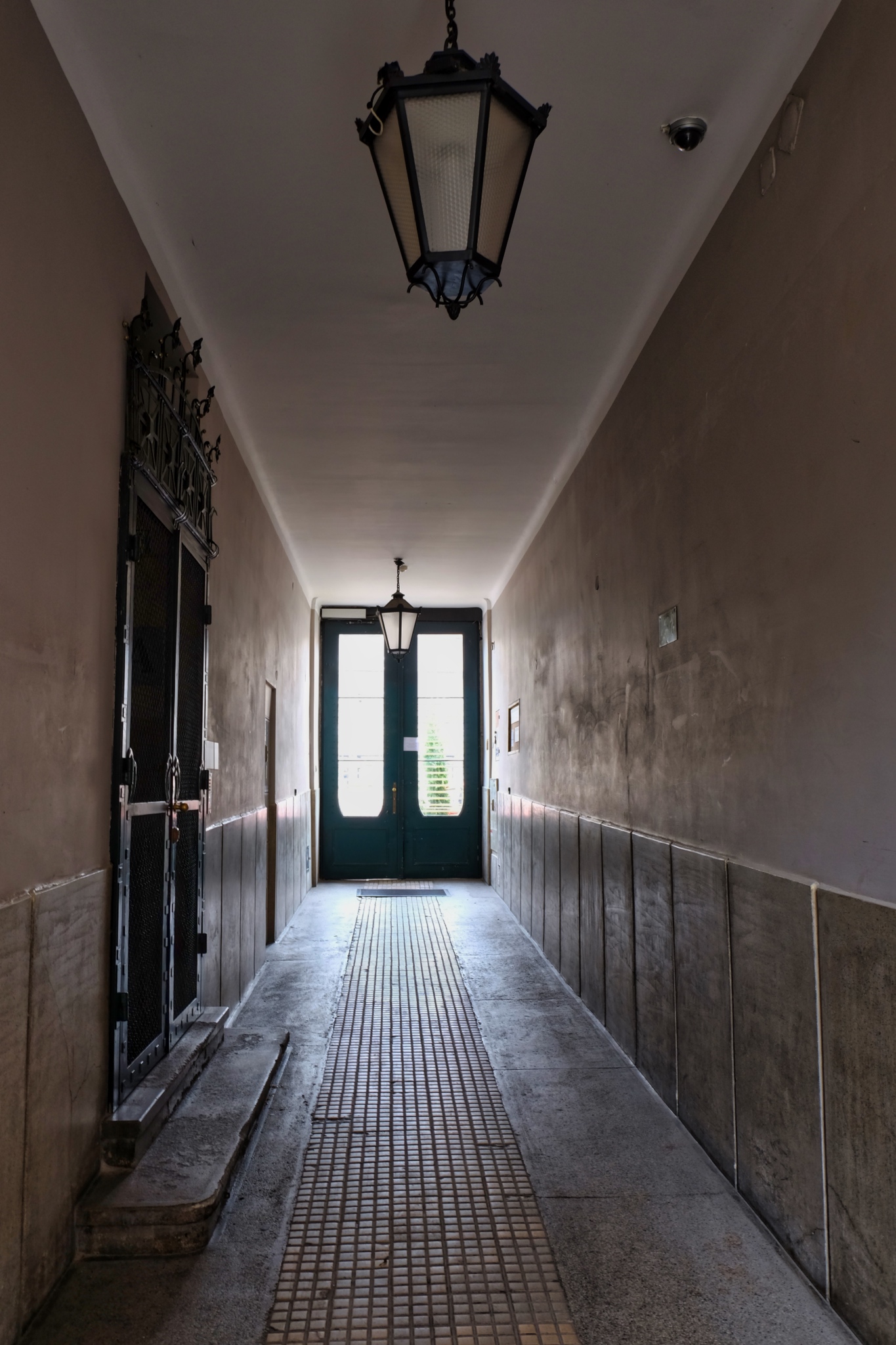 The interior can only be described as "Soviet Era Minimalism." I loved it.
The interior can only be described as "Soviet Era Minimalism." I loved it.
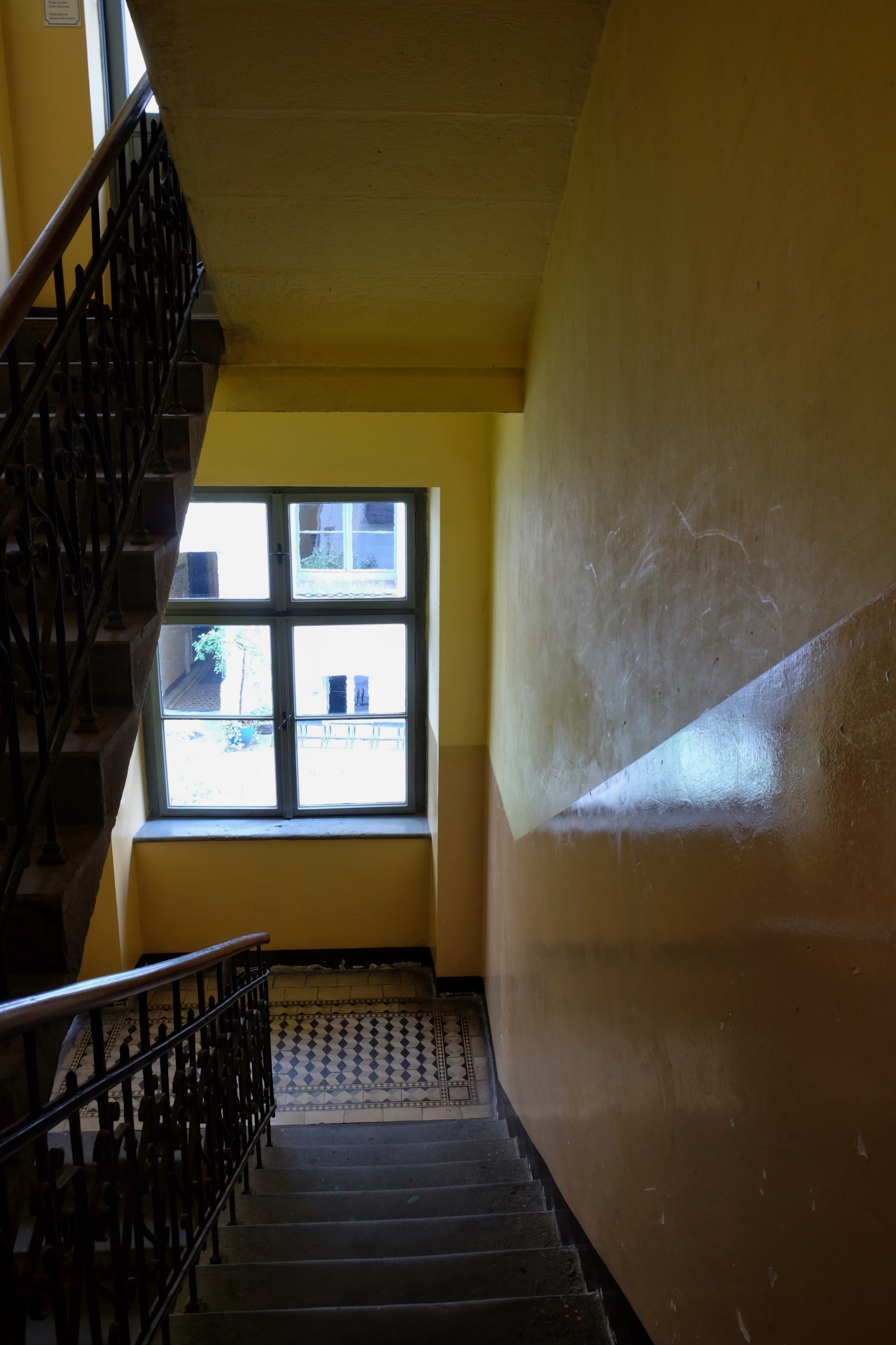 No expense was spared to create the perfect Soviet-workers-on-vacation guest quarters effect.
No expense was spared to create the perfect Soviet-workers-on-vacation guest quarters effect.
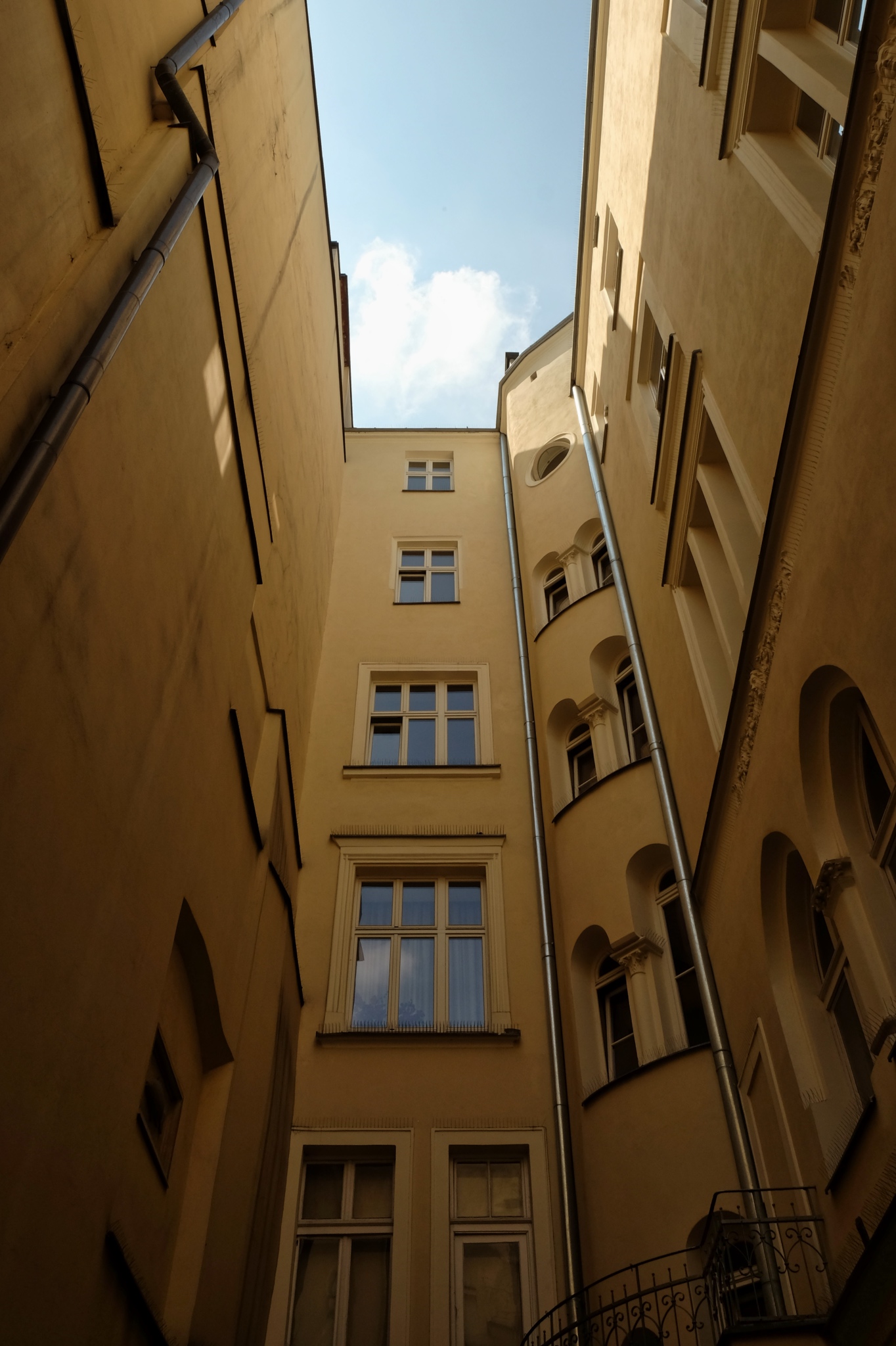 After entering the hotel from the street, you arrived in this austere courtyard to check in. Yes, I was correct, the manager said the old hotel had indeed been remodeled during the Soviet era as a workers lodge. Our room had a panoramic view onto this courtyard. We loved it: it was one block off the main city square and it was cheap!
After entering the hotel from the street, you arrived in this austere courtyard to check in. Yes, I was correct, the manager said the old hotel had indeed been remodeled during the Soviet era as a workers lodge. Our room had a panoramic view onto this courtyard. We loved it: it was one block off the main city square and it was cheap!
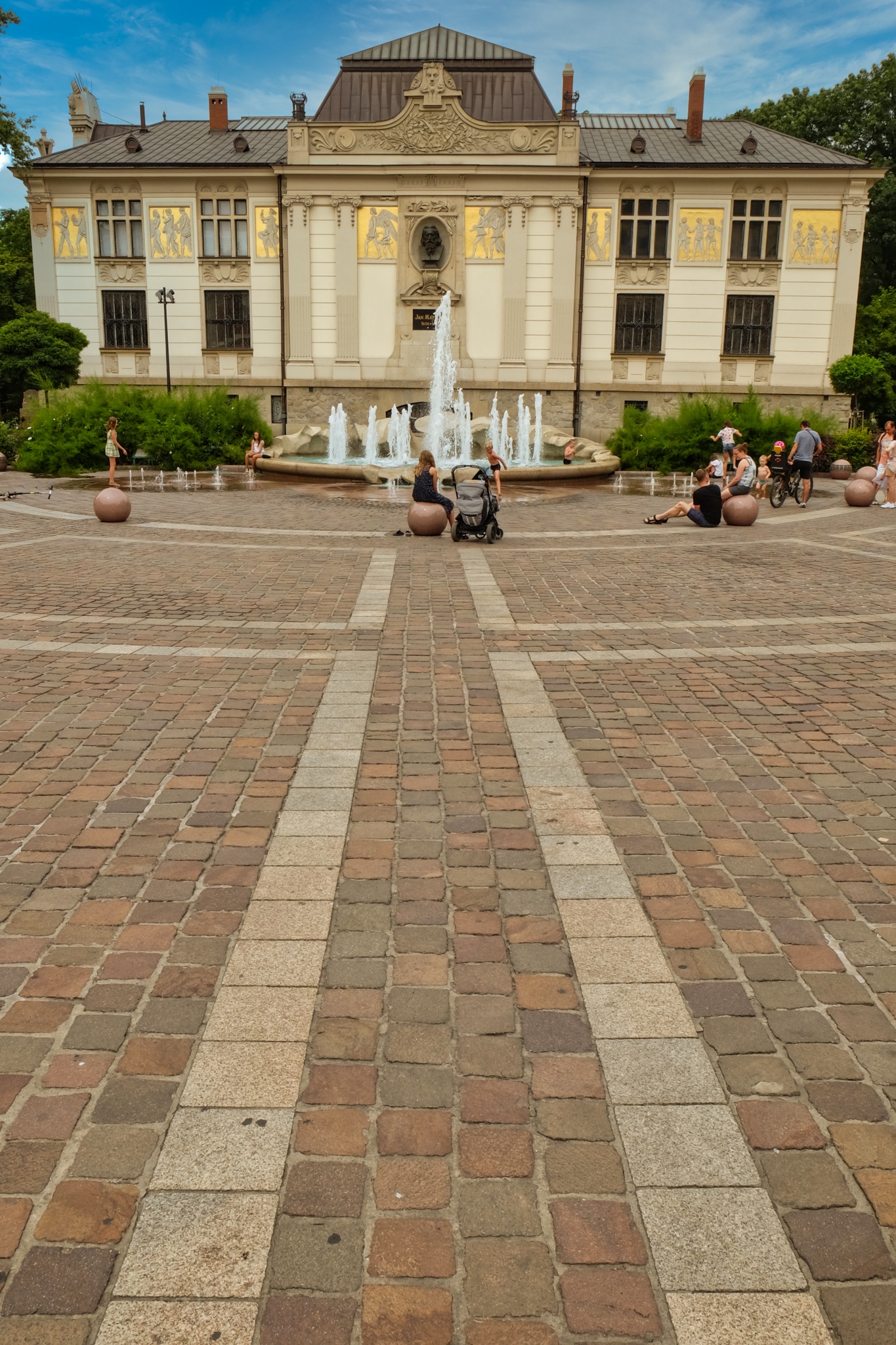 The Palace of Art (circa. 1901) was just outside our hotel.
The Palace of Art (circa. 1901) was just outside our hotel.
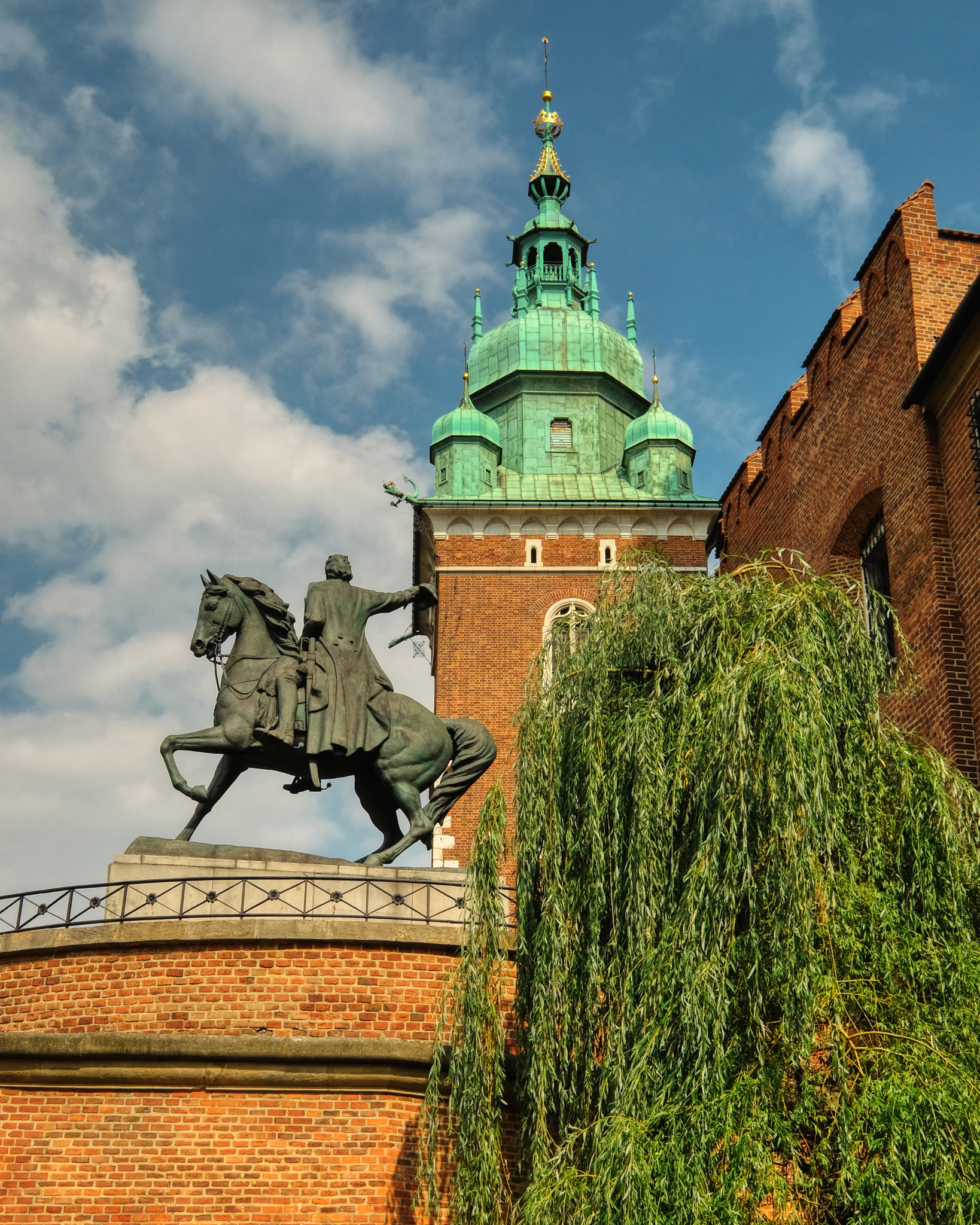 We spent three days just wandering around this marvelous city.
We spent three days just wandering around this marvelous city.
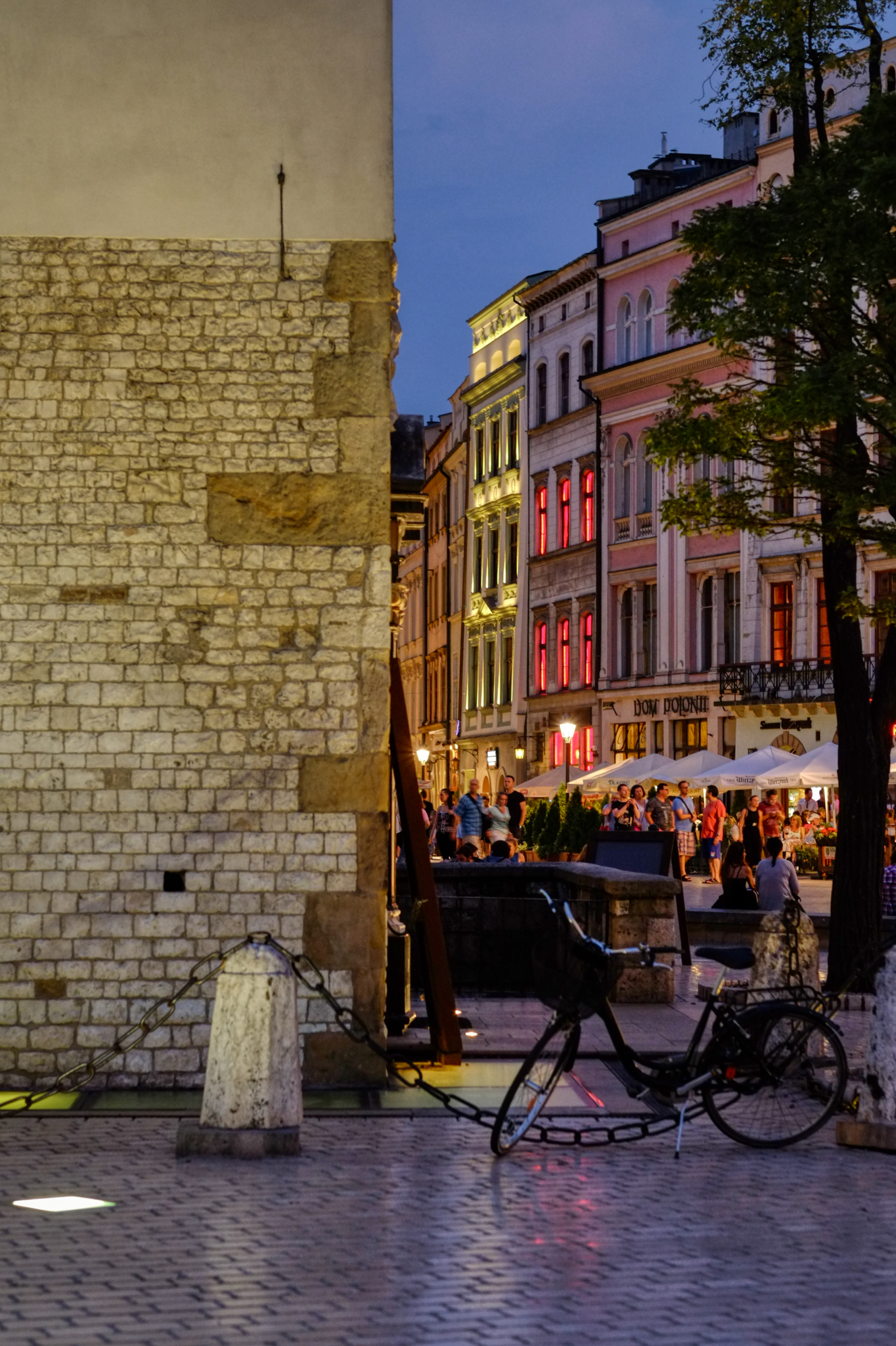 We loved Kraków by day . . . but at night it became a colorful dreamscape!
We loved Kraków by day . . . but at night it became a colorful dreamscape!
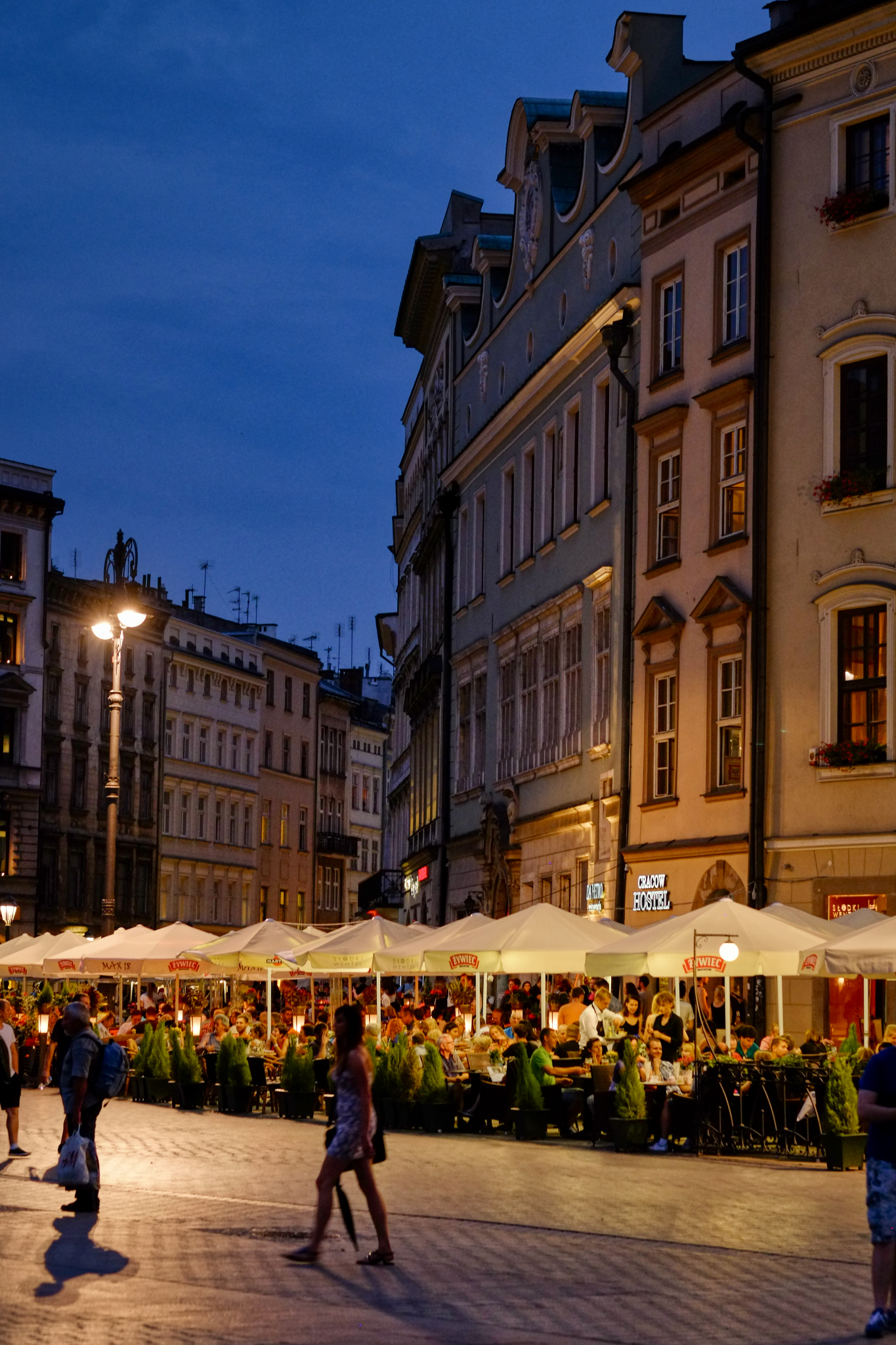 The crowds came out on a fine summer evening for a meal and a drink.
The crowds came out on a fine summer evening for a meal and a drink.
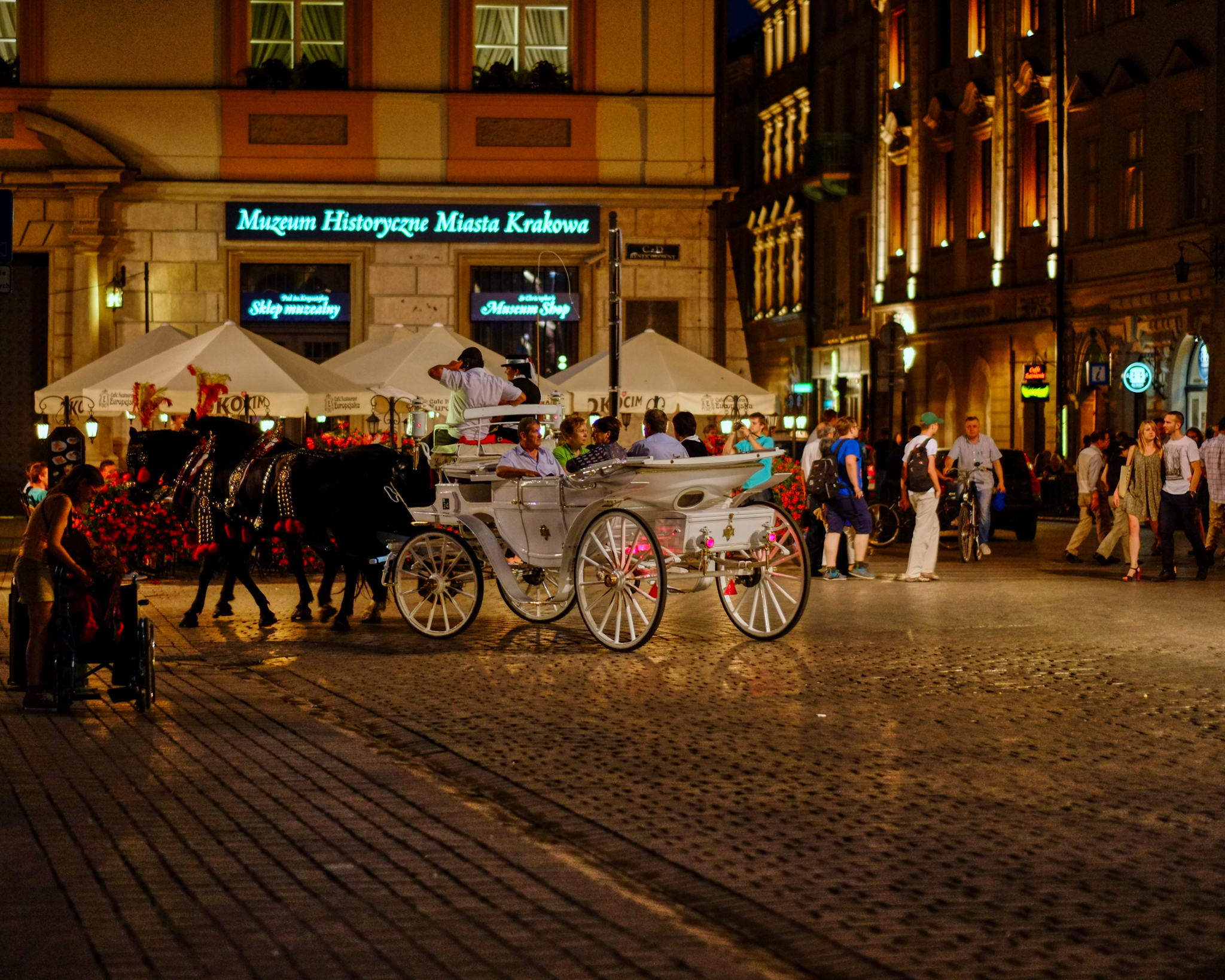 All day and evening, the tourist carriage rides never stopped. I assumed they changed the horses periodically, though I never saw it happen.
All day and evening, the tourist carriage rides never stopped. I assumed they changed the horses periodically, though I never saw it happen.
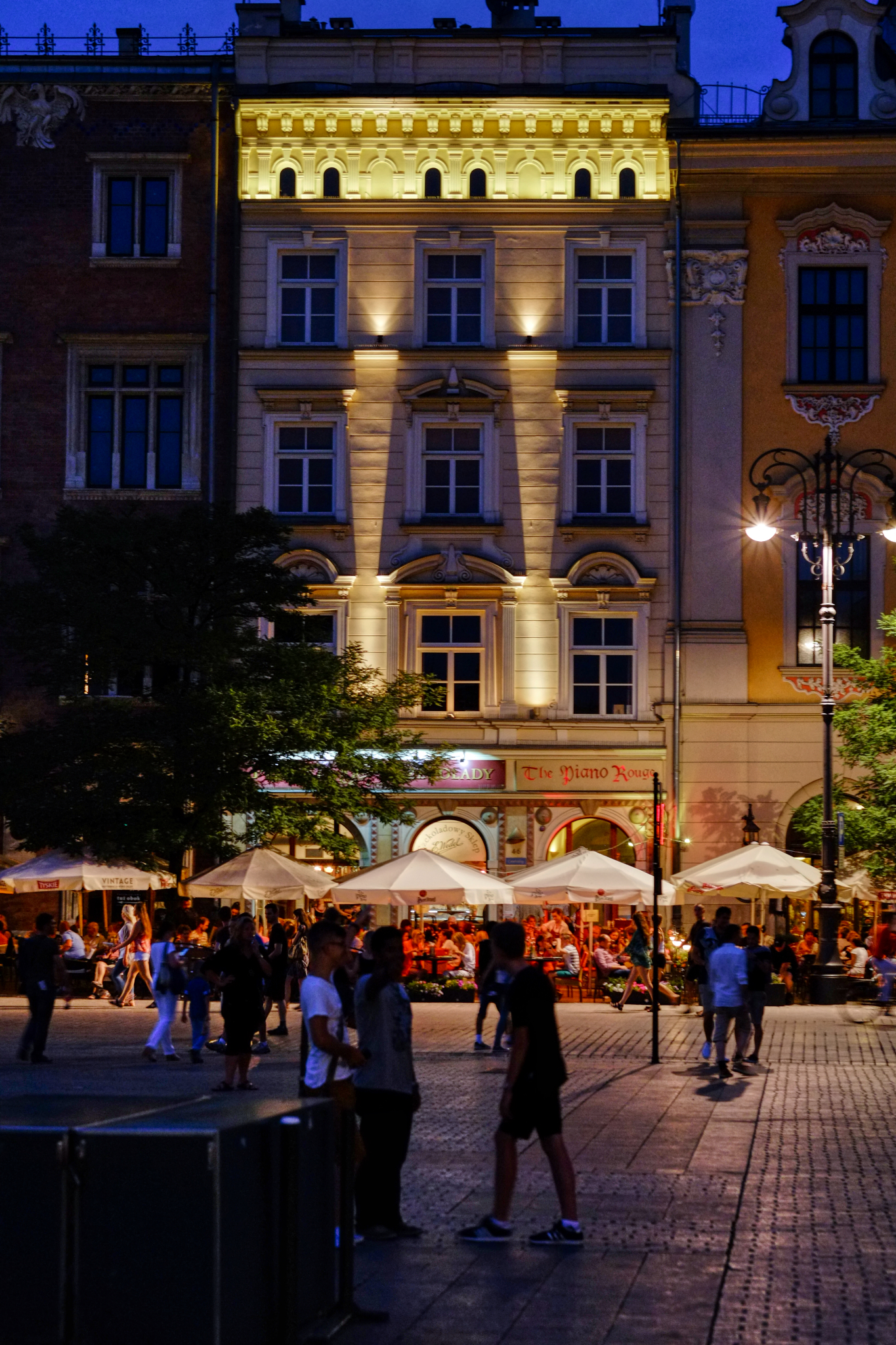 The pleasant evenings brought everyone out to the cafés on the central square.
The pleasant evenings brought everyone out to the cafés on the central square.
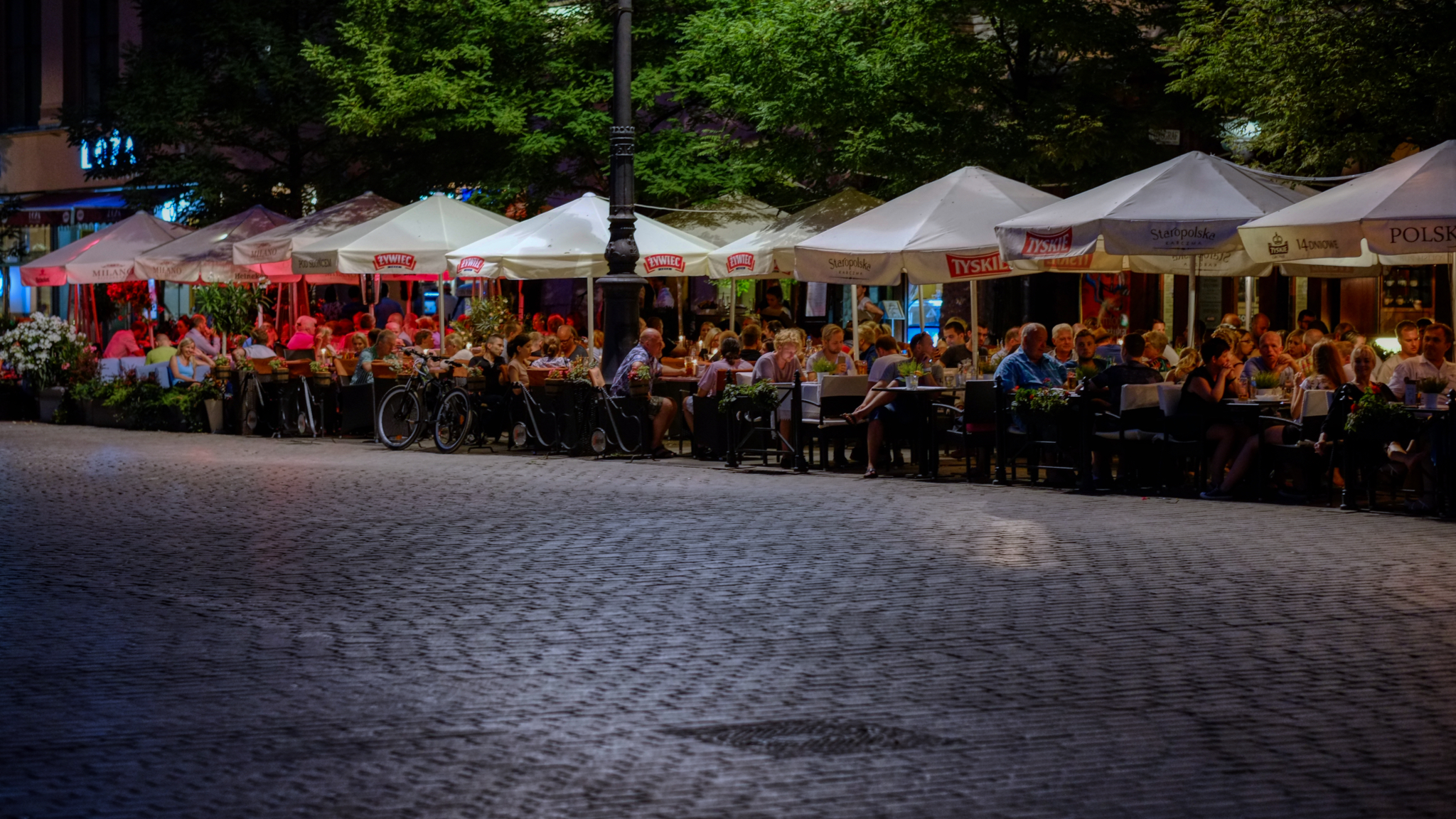 Everyone seemed to be enjoying themselves eating, drinking, and chatting.
Everyone seemed to be enjoying themselves eating, drinking, and chatting.
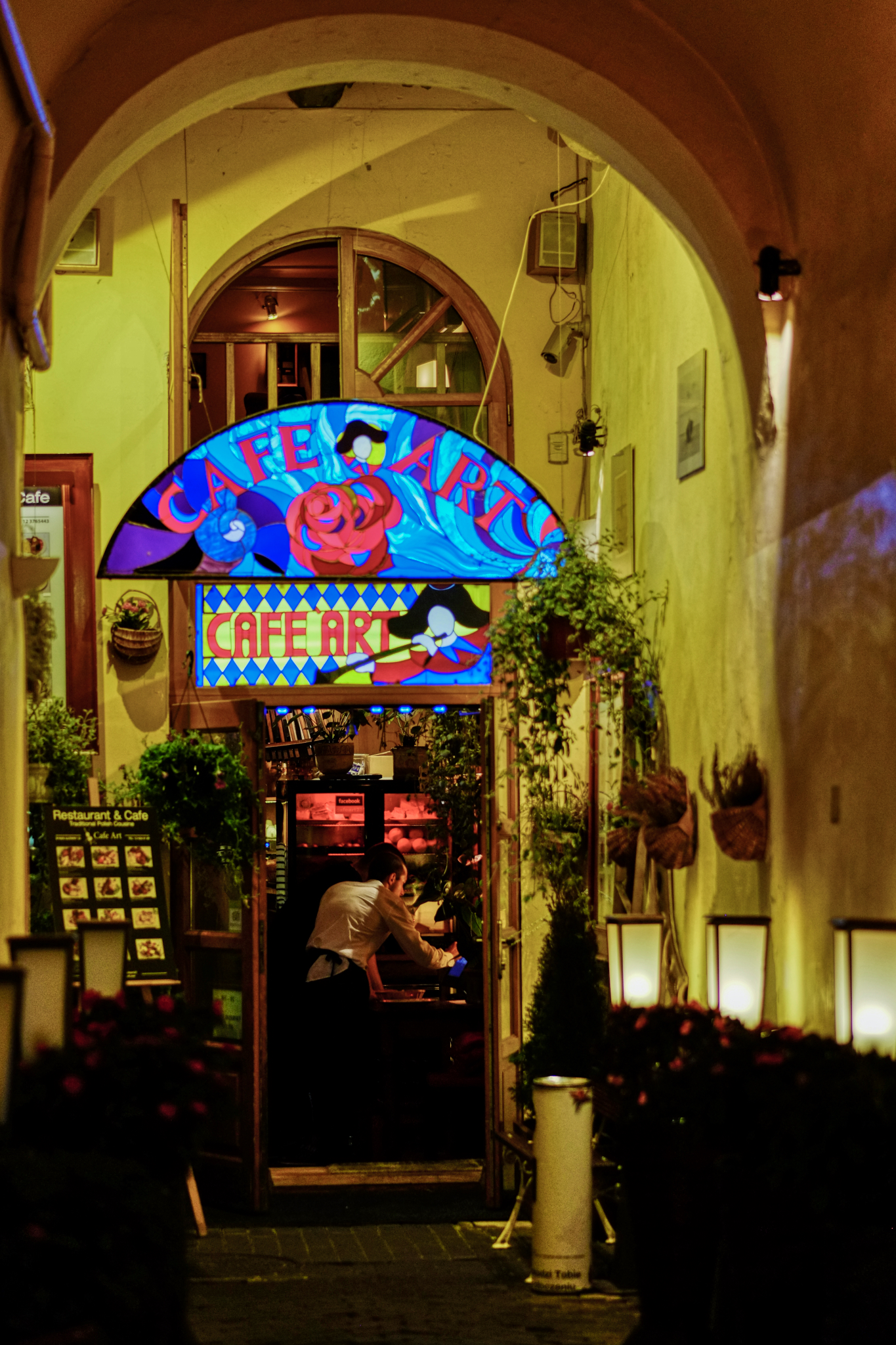 This one looks inviting . . . lets go in.
This one looks inviting . . . lets go in.
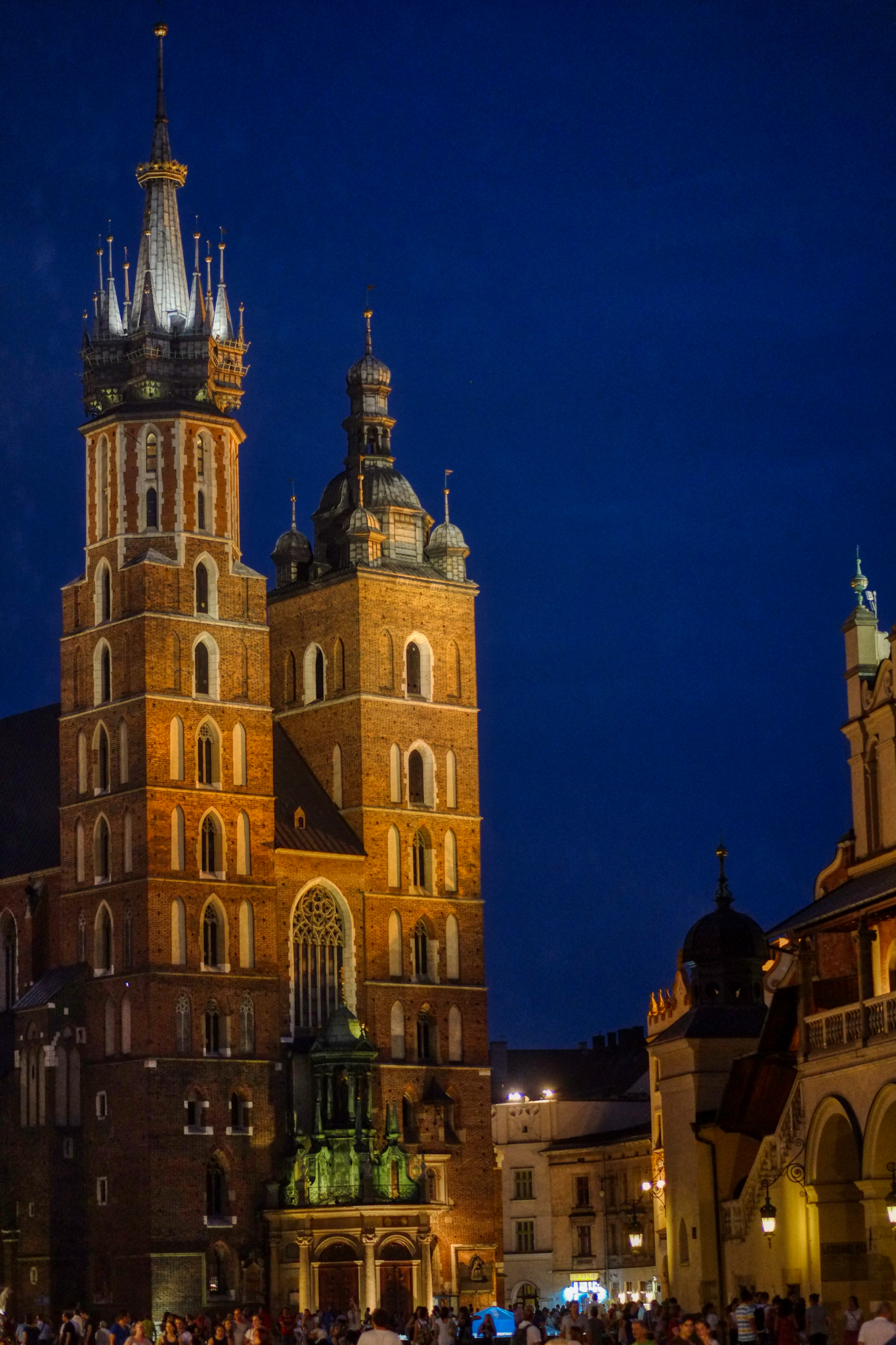 St. Mary's Basilica by night. We loved our short stay in Kraków and would be more than happy to go back again.
St. Mary's Basilica by night. We loved our short stay in Kraków and would be more than happy to go back again.
 Dr. Jeff Harper
Dr. Jeff Harper
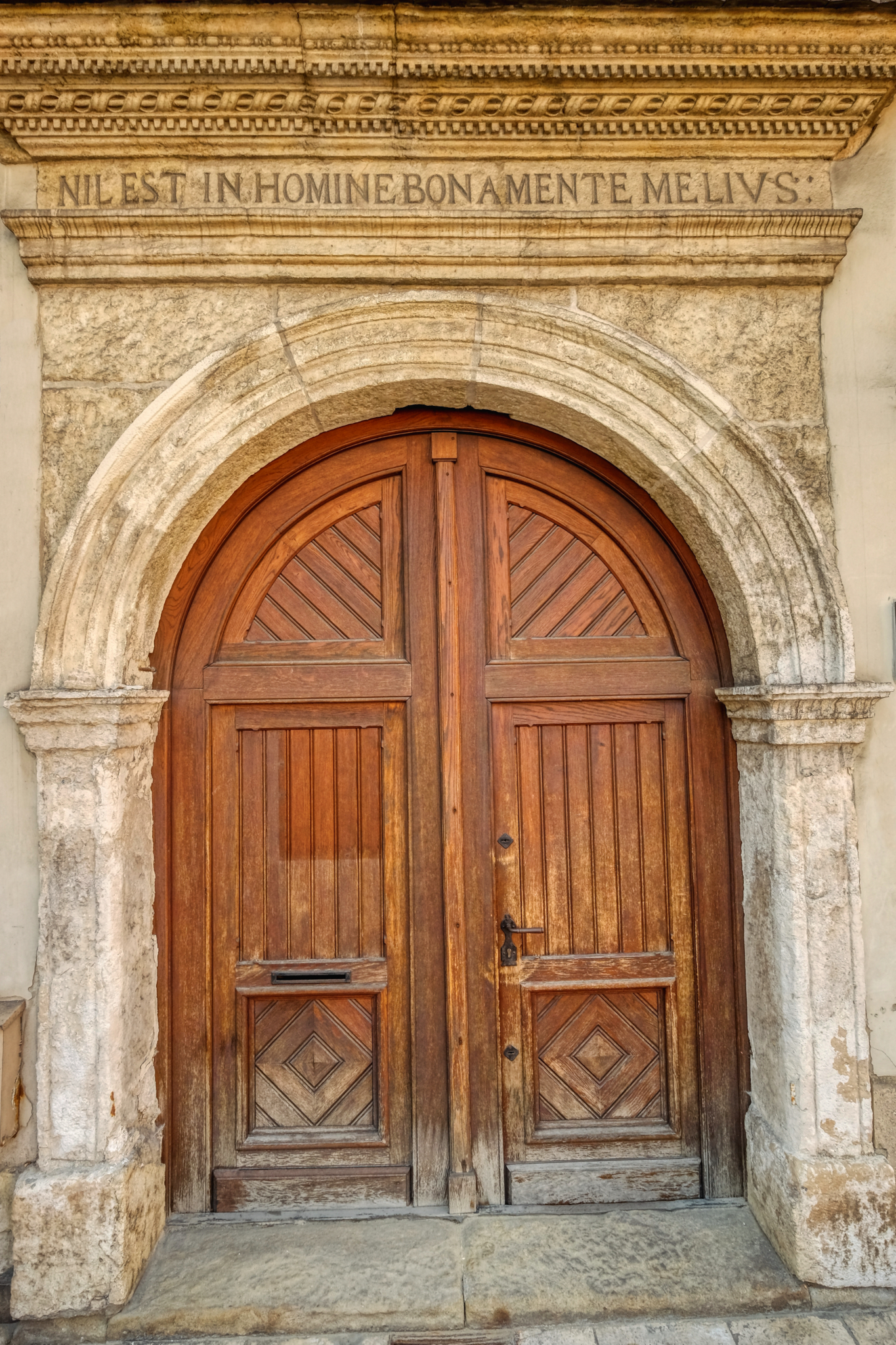 One of my favorite photographic subjects are very old doors, windows, and walls. I was in heaven in Kraków!
One of my favorite photographic subjects are very old doors, windows, and walls. I was in heaven in Kraków!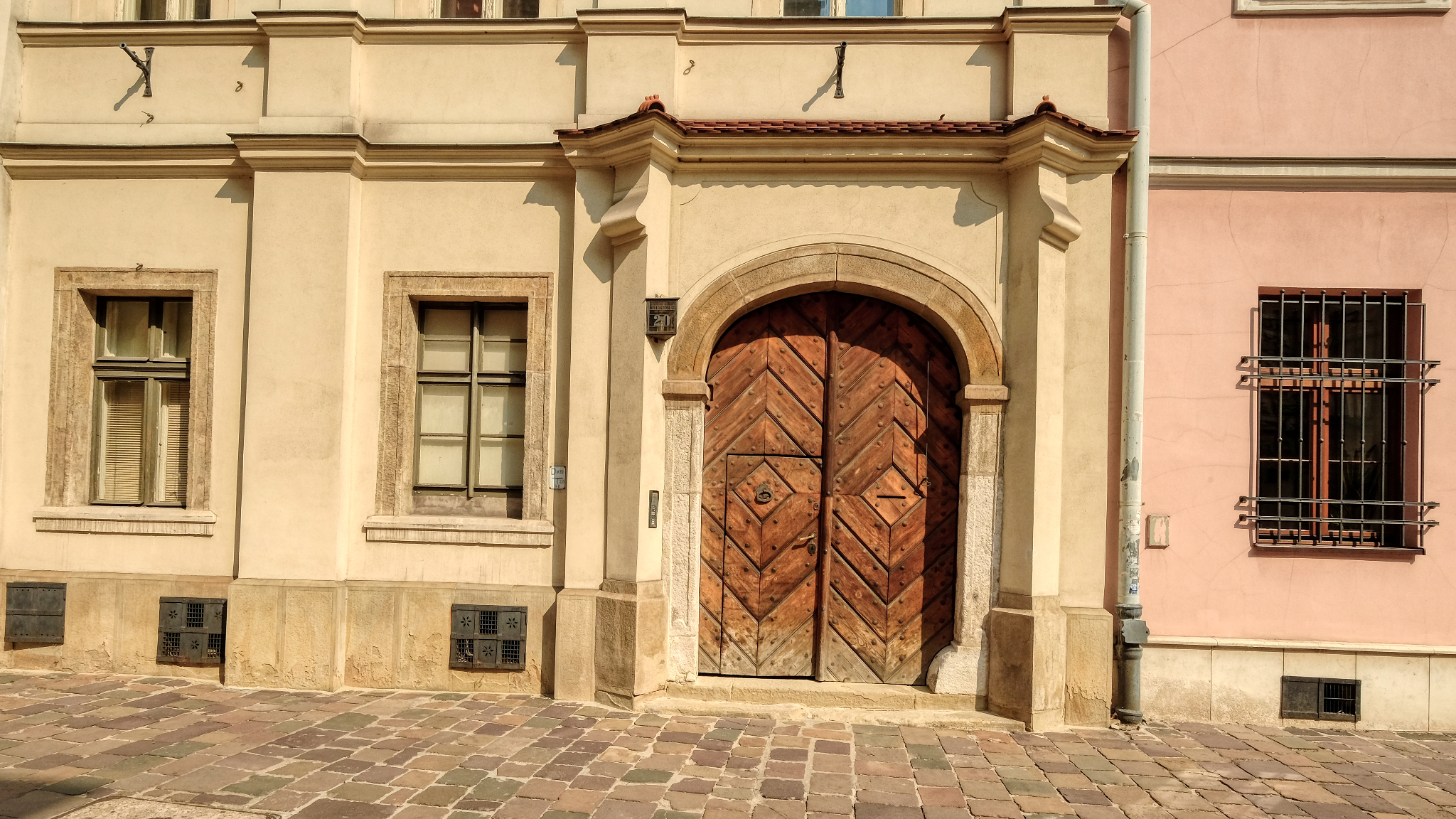 Everywhere, on every street, there was another amazing door . . . or window . . . or wall. They all speak to me somehow. They are all telling me their story.
Everywhere, on every street, there was another amazing door . . . or window . . . or wall. They all speak to me somehow. They are all telling me their story.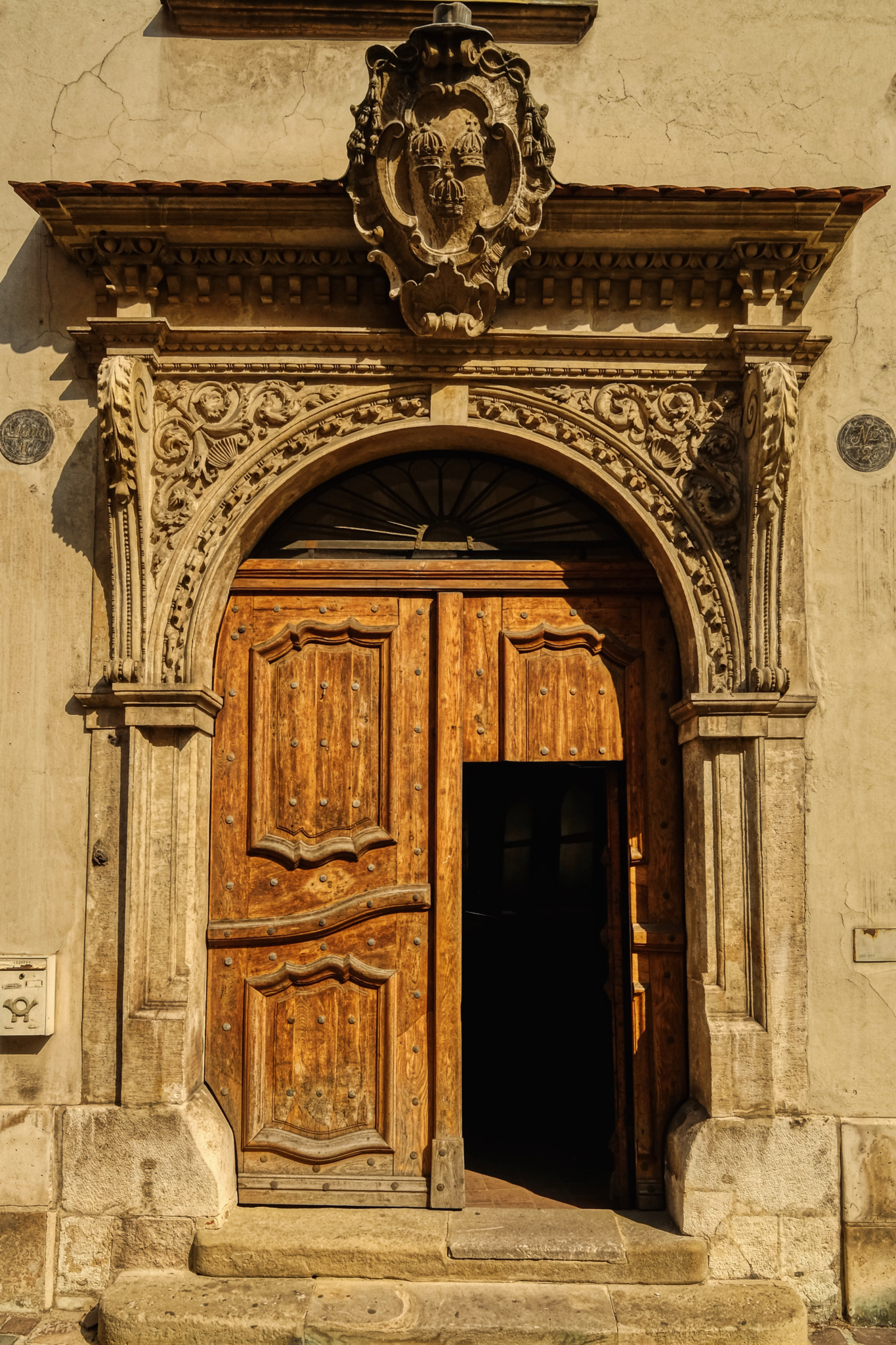 The door is the mouth on the face of a house or building. As such, it speaks, it expresses something about the character of what is inside.
The door is the mouth on the face of a house or building. As such, it speaks, it expresses something about the character of what is inside.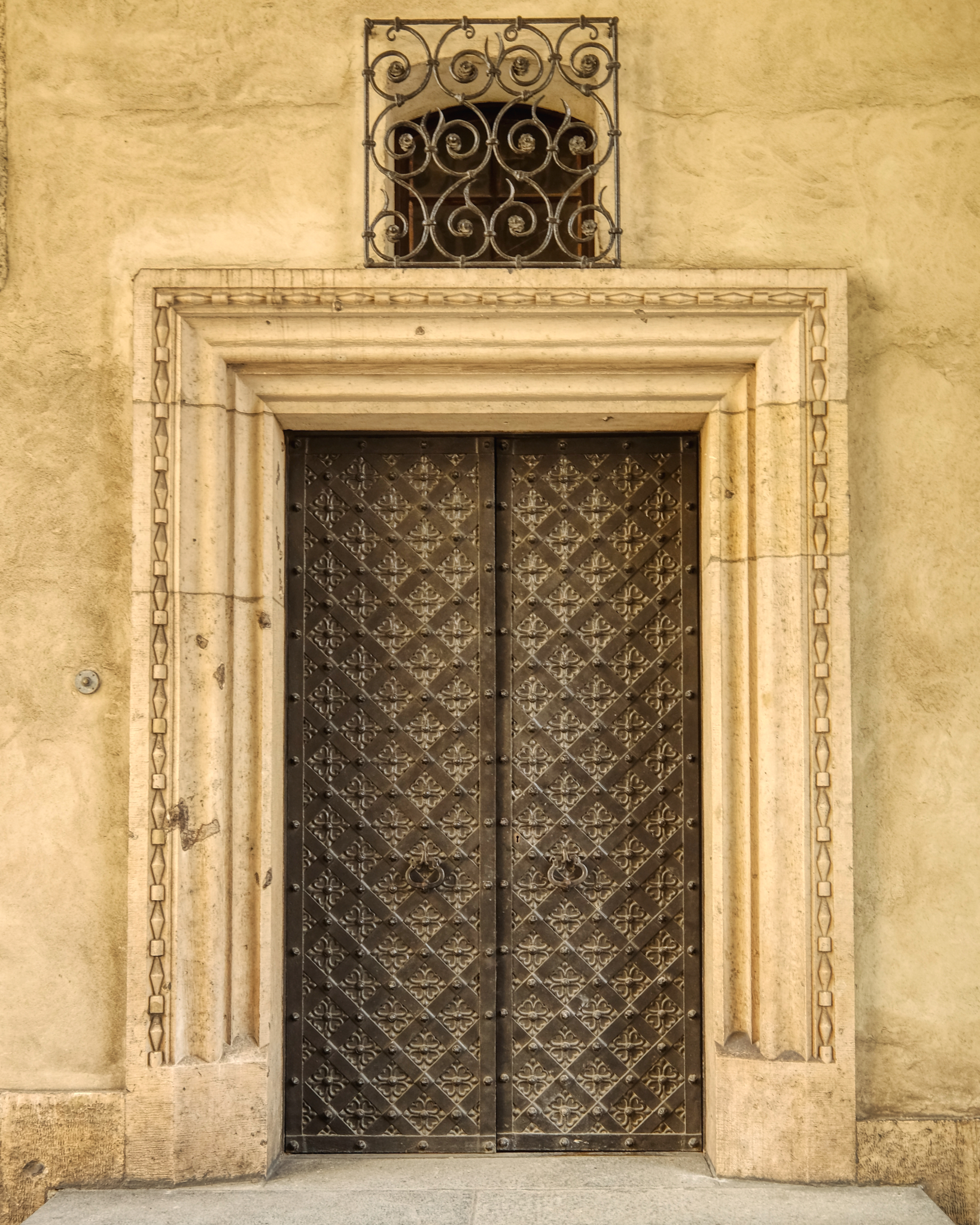 An interior door of Wawel Castle.
An interior door of Wawel Castle.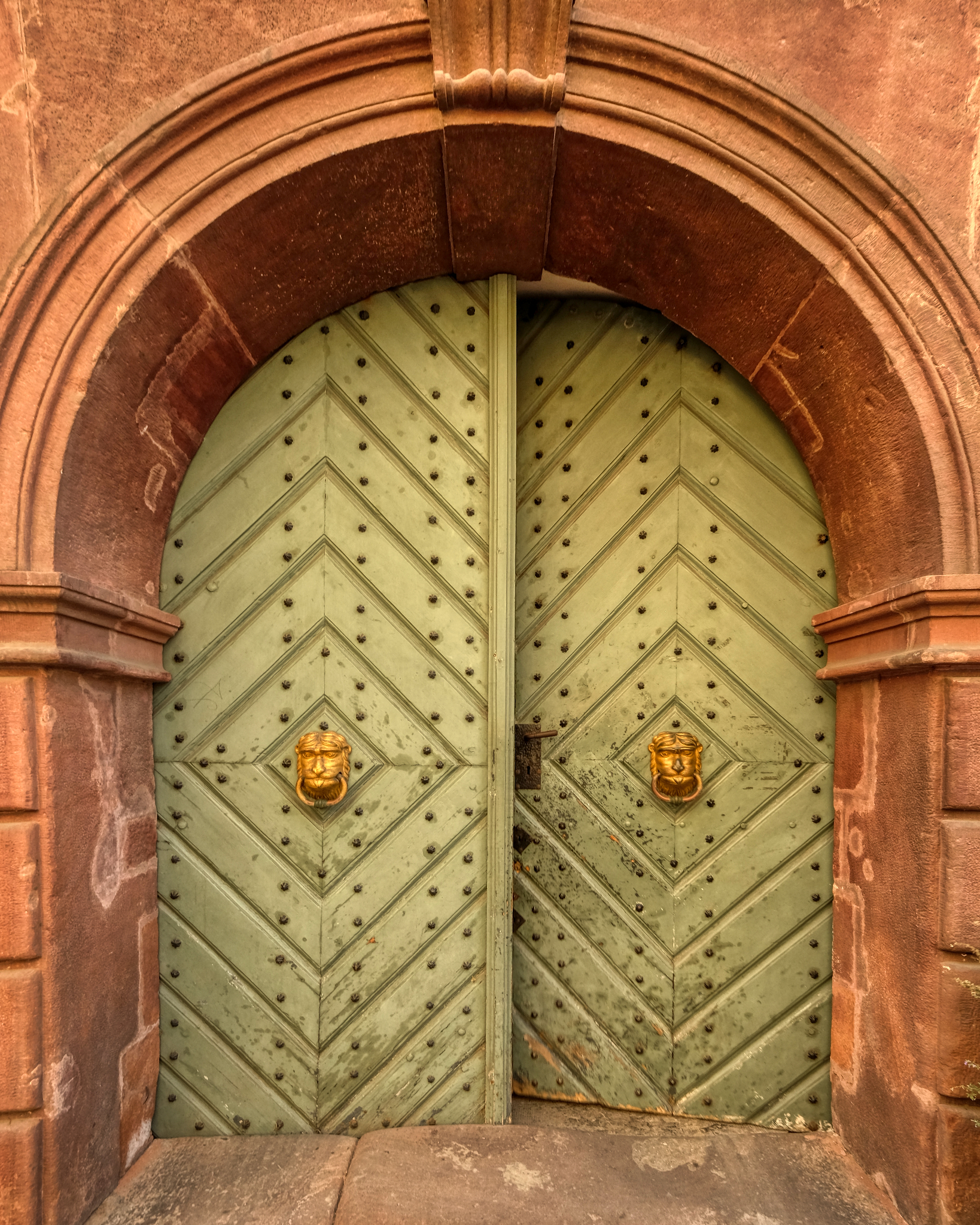 Doors are often restored, but it seems almost never replaced in the life of a building.
Doors are often restored, but it seems almost never replaced in the life of a building.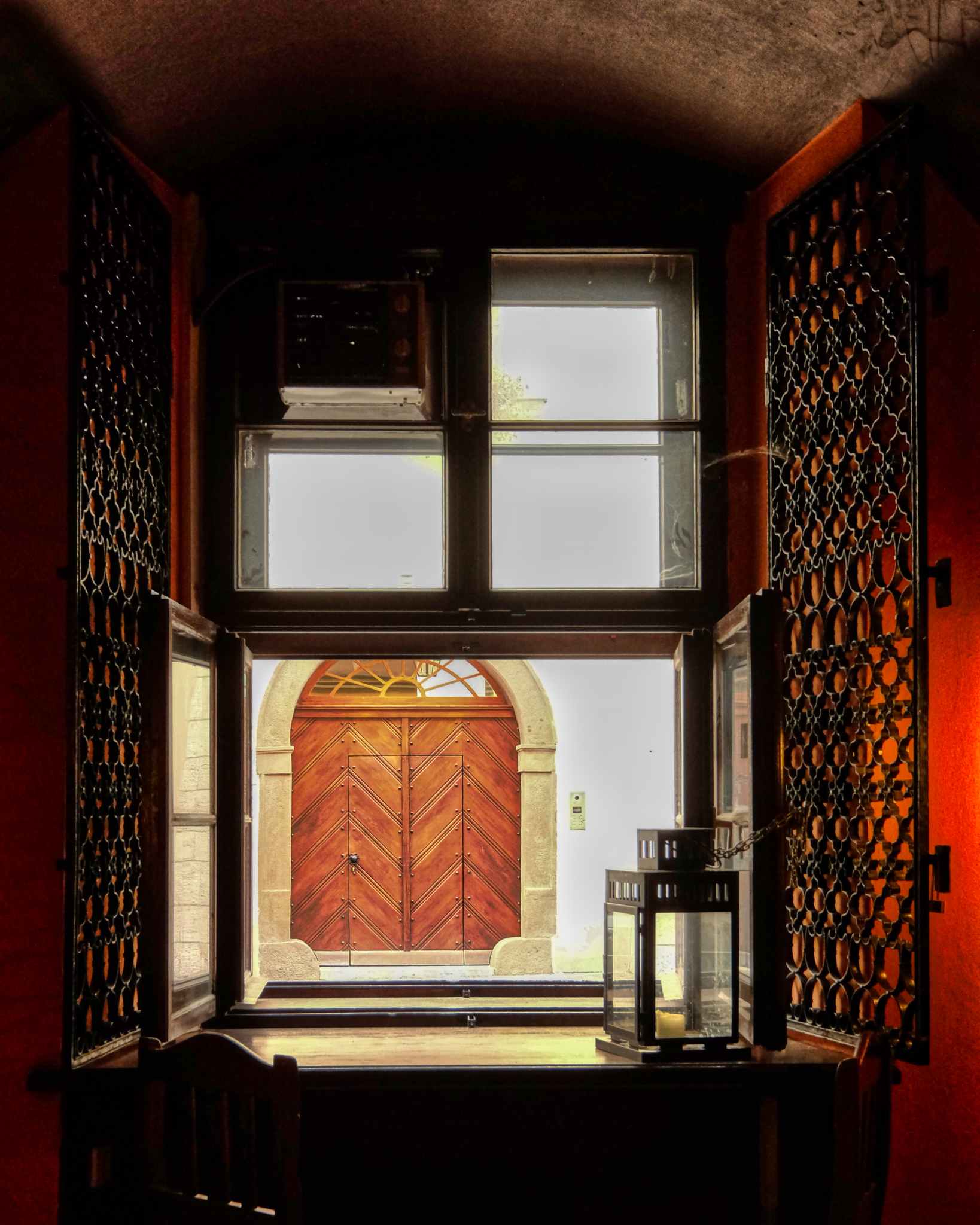 Looking out the window of a restaurant I saw this door. Stunning.
Looking out the window of a restaurant I saw this door. Stunning.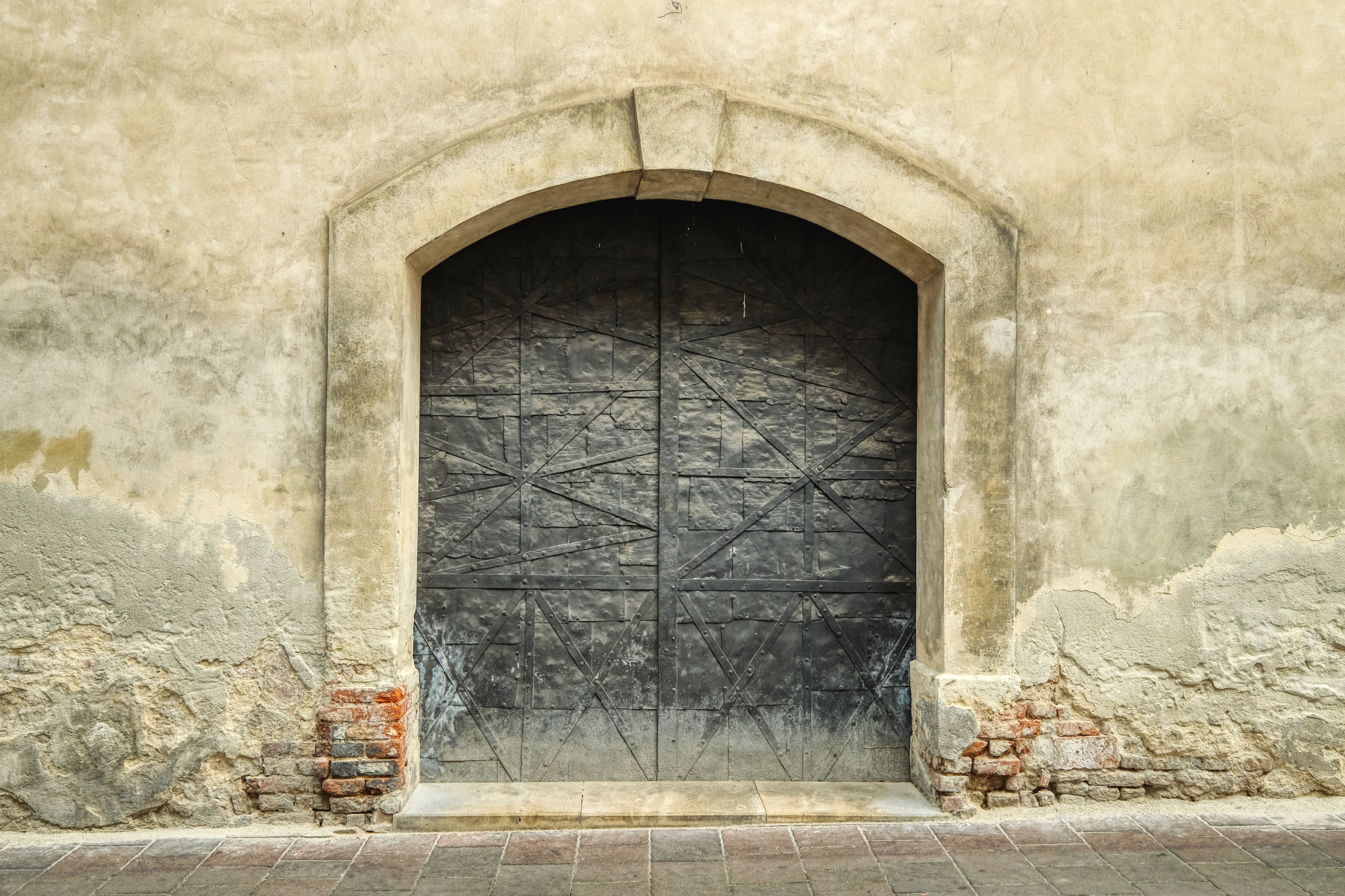 Some doors seem to have a power to draw you in.
Some doors seem to have a power to draw you in.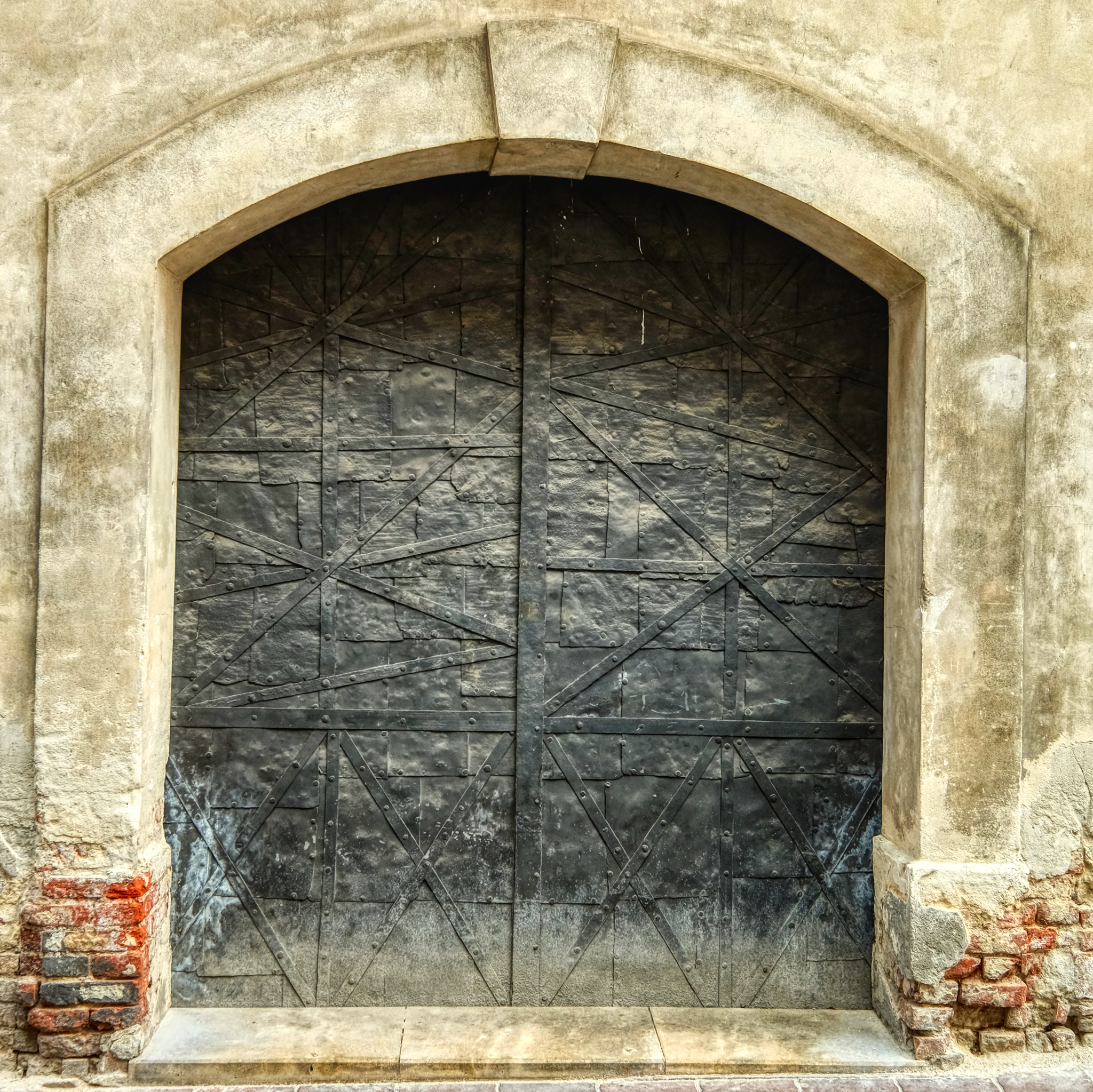 The strength of a steel door . . . with a story of repair.
The strength of a steel door . . . with a story of repair.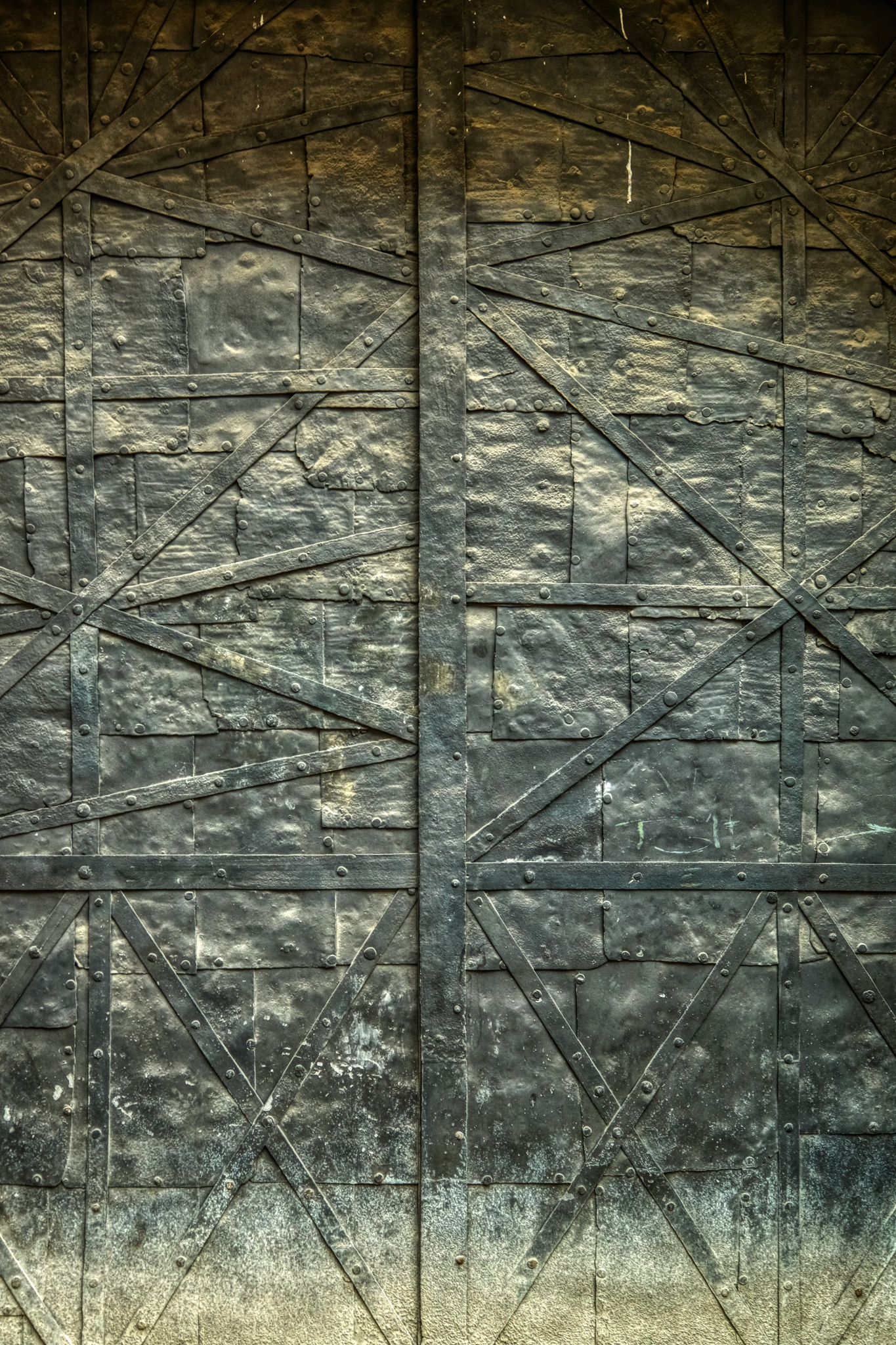 The textures! The patterns! The reflections!
The textures! The patterns! The reflections!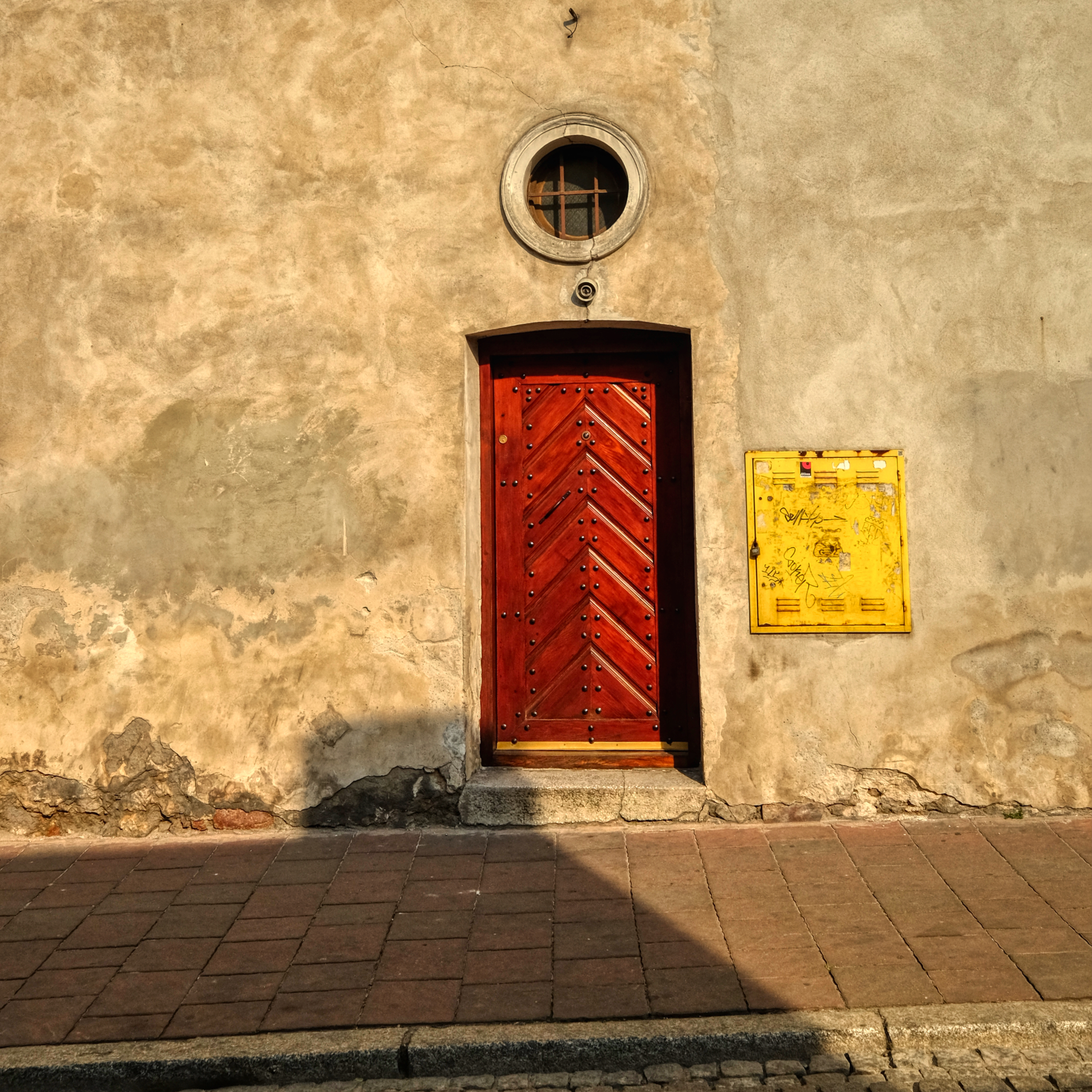 That wall! That Red door! That yellow service box! Astonishing.
That wall! That Red door! That yellow service box! Astonishing.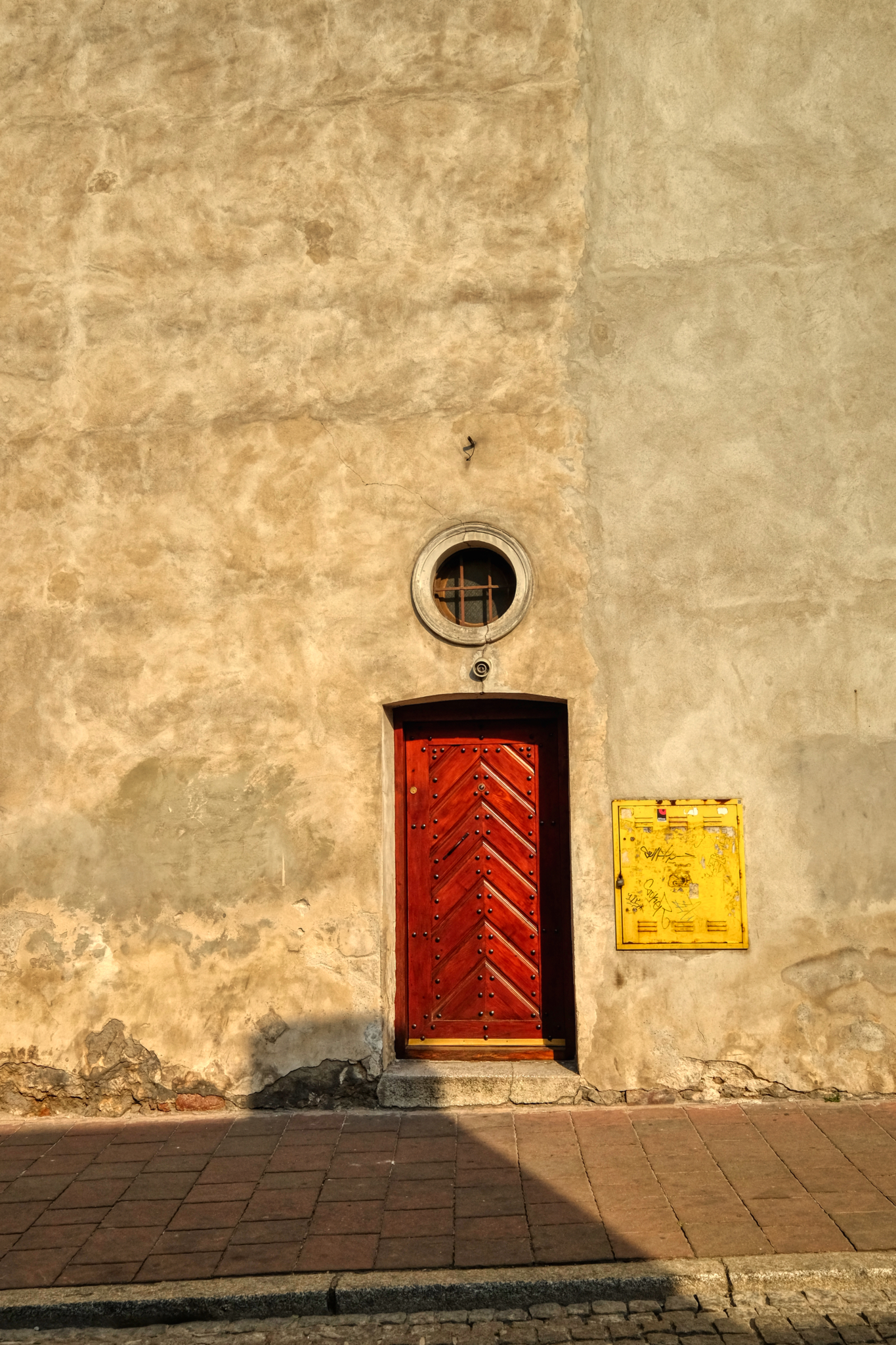 Same wall with different framing to emphasize the height of the wall . . . to make the wall powerful in the photograph.
Same wall with different framing to emphasize the height of the wall . . . to make the wall powerful in the photograph.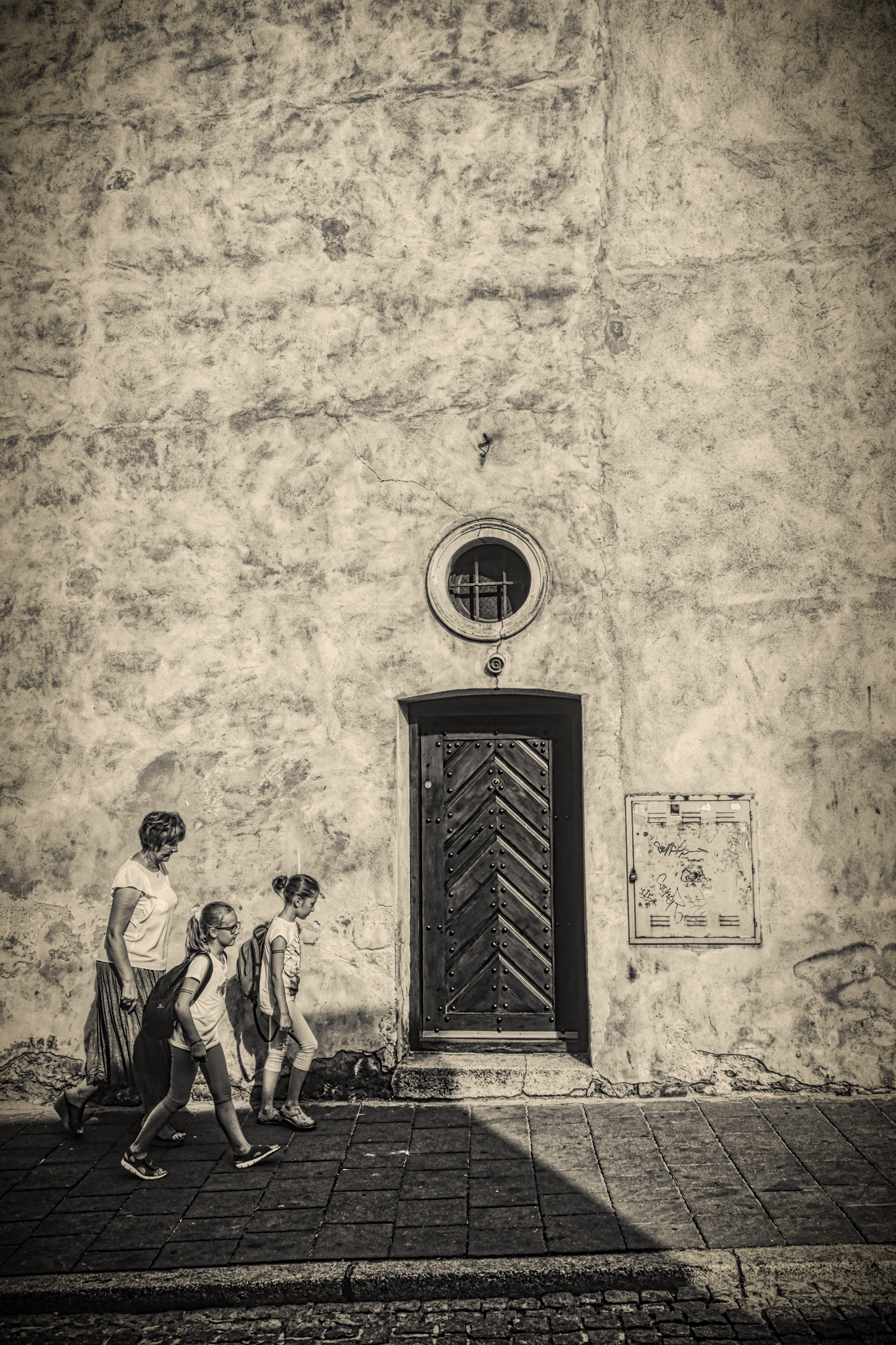 This family (?) walked in front while I was shooting these wall photos. I do not normally use aftereffects in my photography, but this one seemed to want this sepia tone. I like it.
This family (?) walked in front while I was shooting these wall photos. I do not normally use aftereffects in my photography, but this one seemed to want this sepia tone. I like it.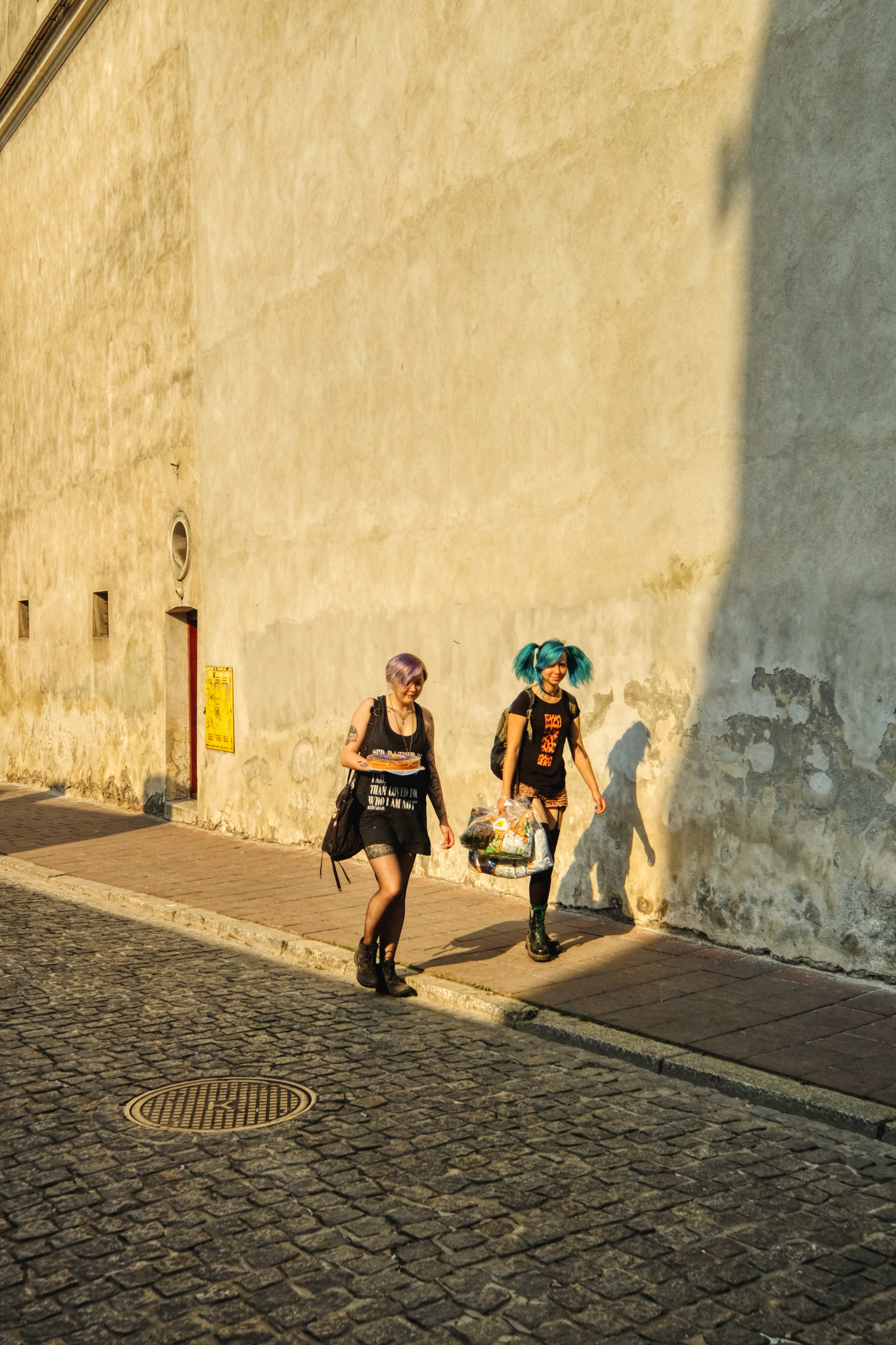 Same wall, door, service panel but different feeling. Punks bringing home lunch.
Same wall, door, service panel but different feeling. Punks bringing home lunch.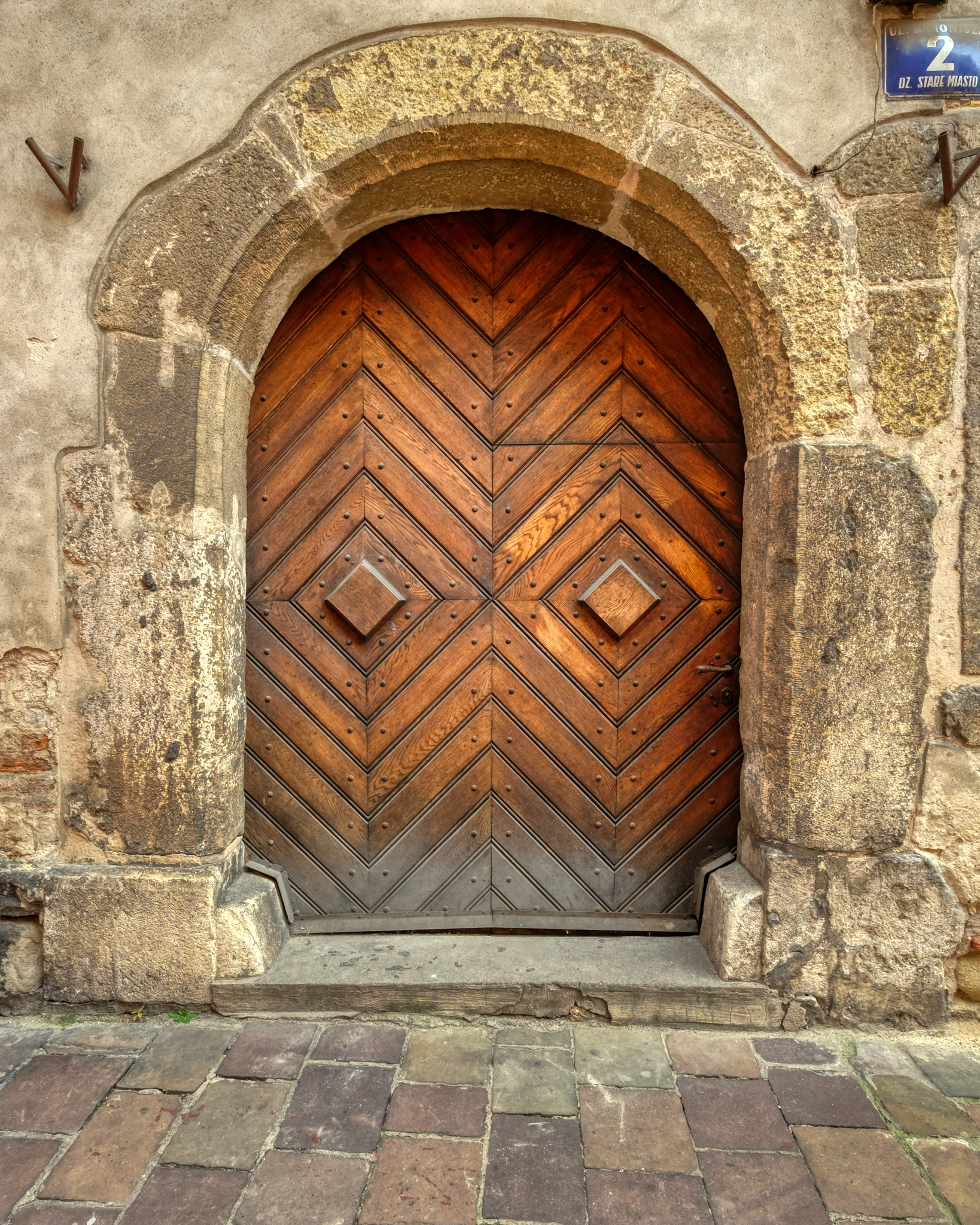 So many anncient doors . . .
So many anncient doors . . .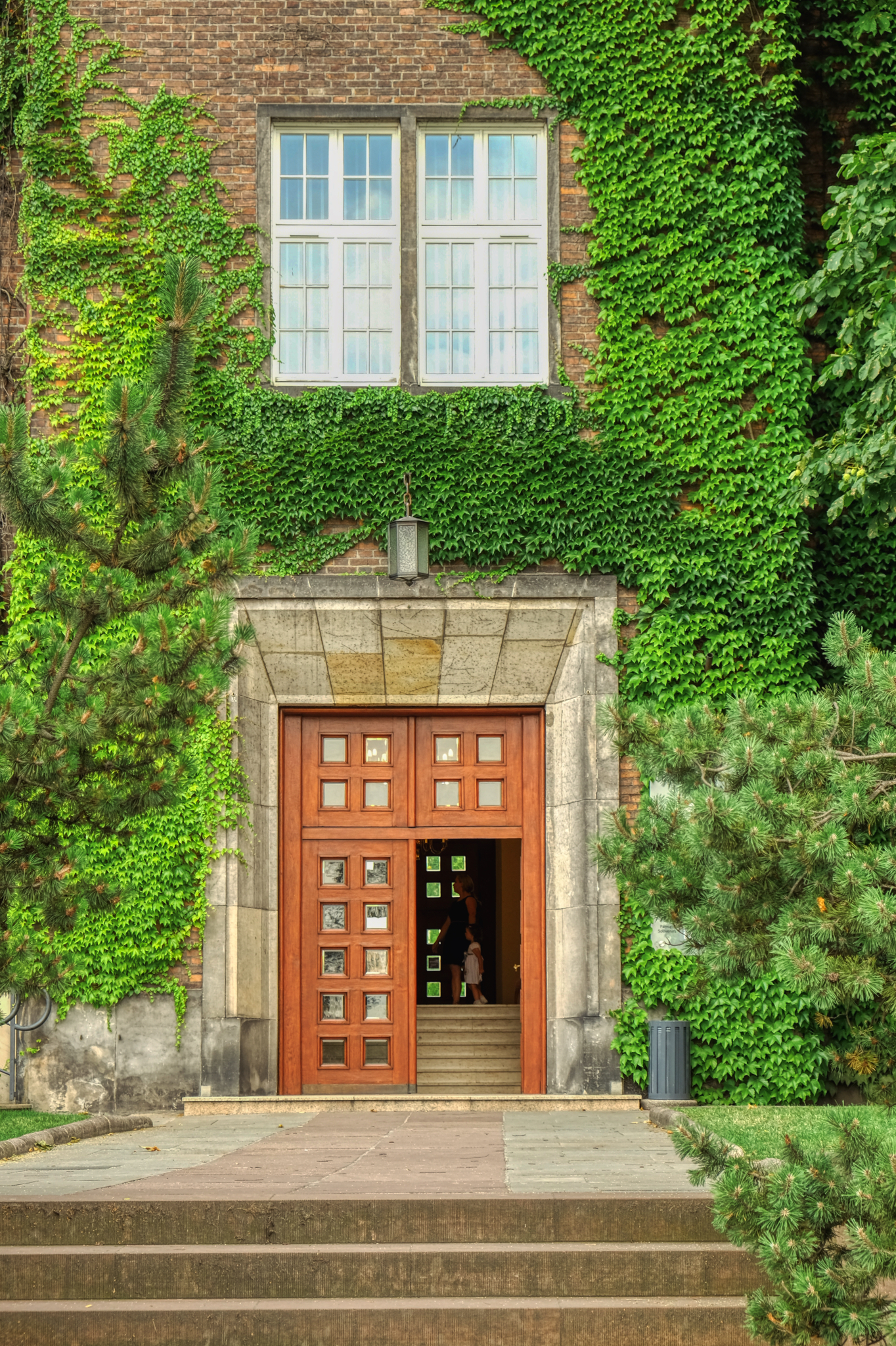 Lovely crawling ivy surrounding this artistic door.
Lovely crawling ivy surrounding this artistic door.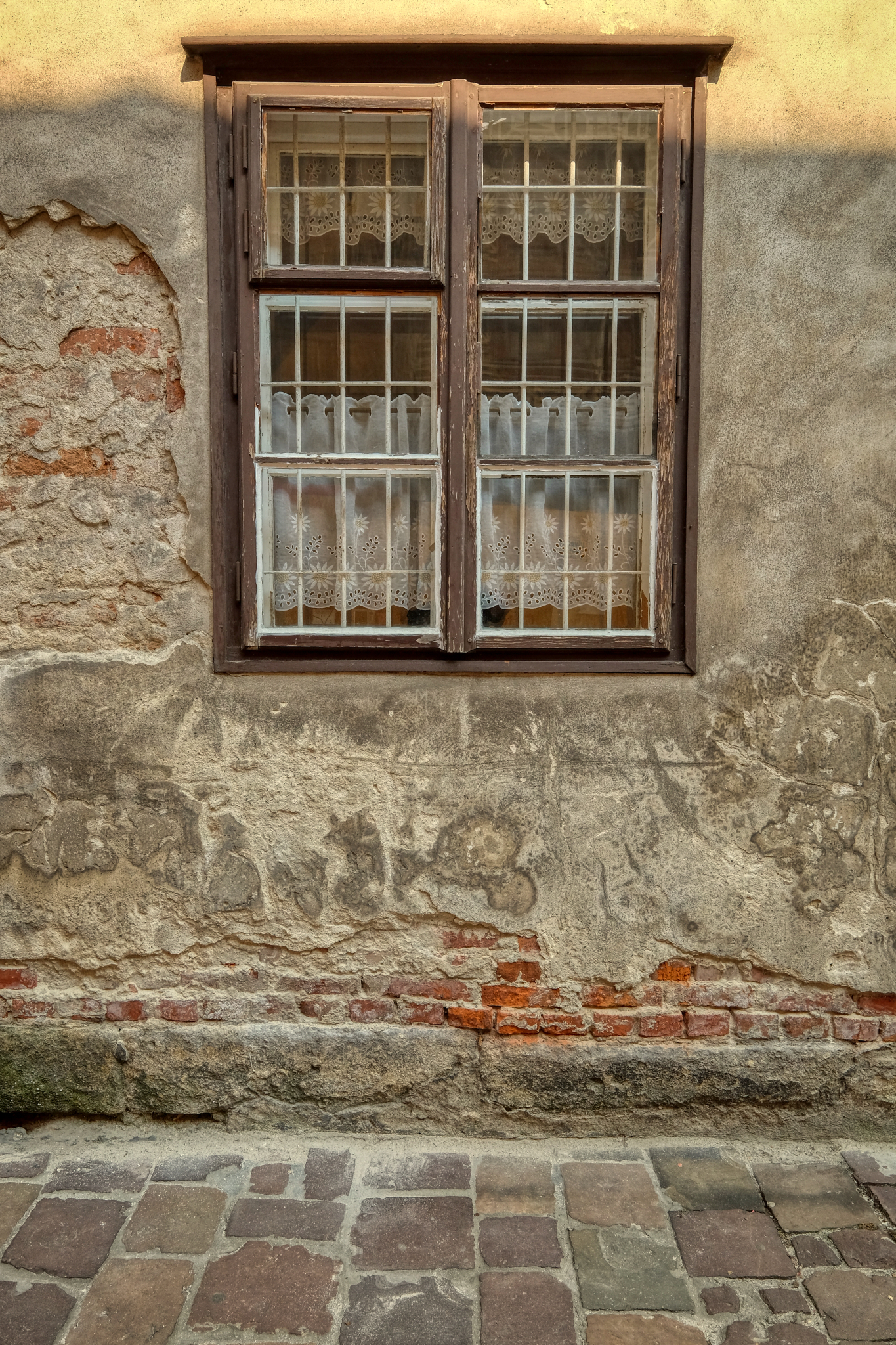 The windows are the eyes of a building . . . they can reveal so much.
The windows are the eyes of a building . . . they can reveal so much.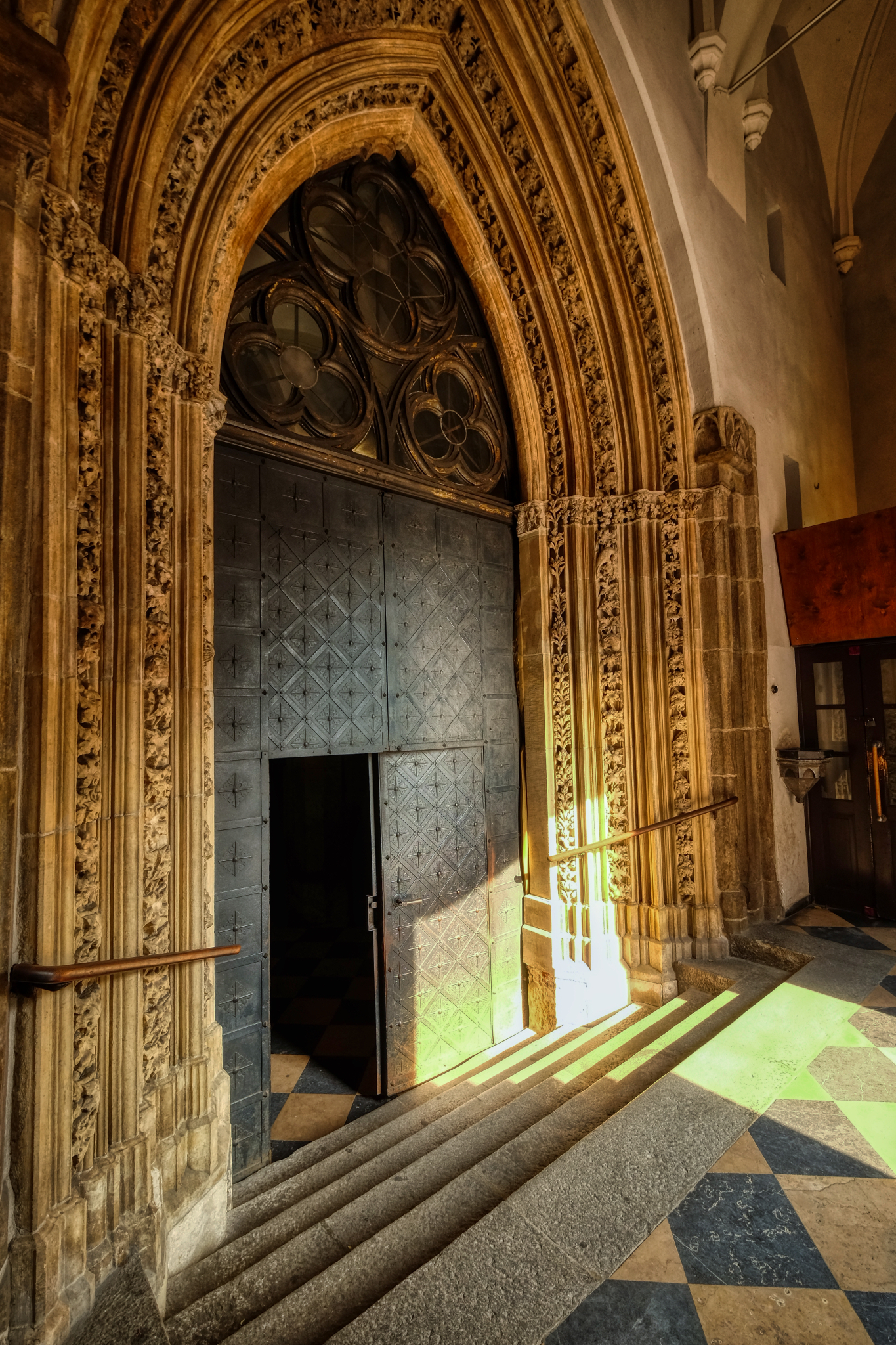 A church/cathedral door, and all it promises, and all of its history, and all of its sorrow.
A church/cathedral door, and all it promises, and all of its history, and all of its sorrow.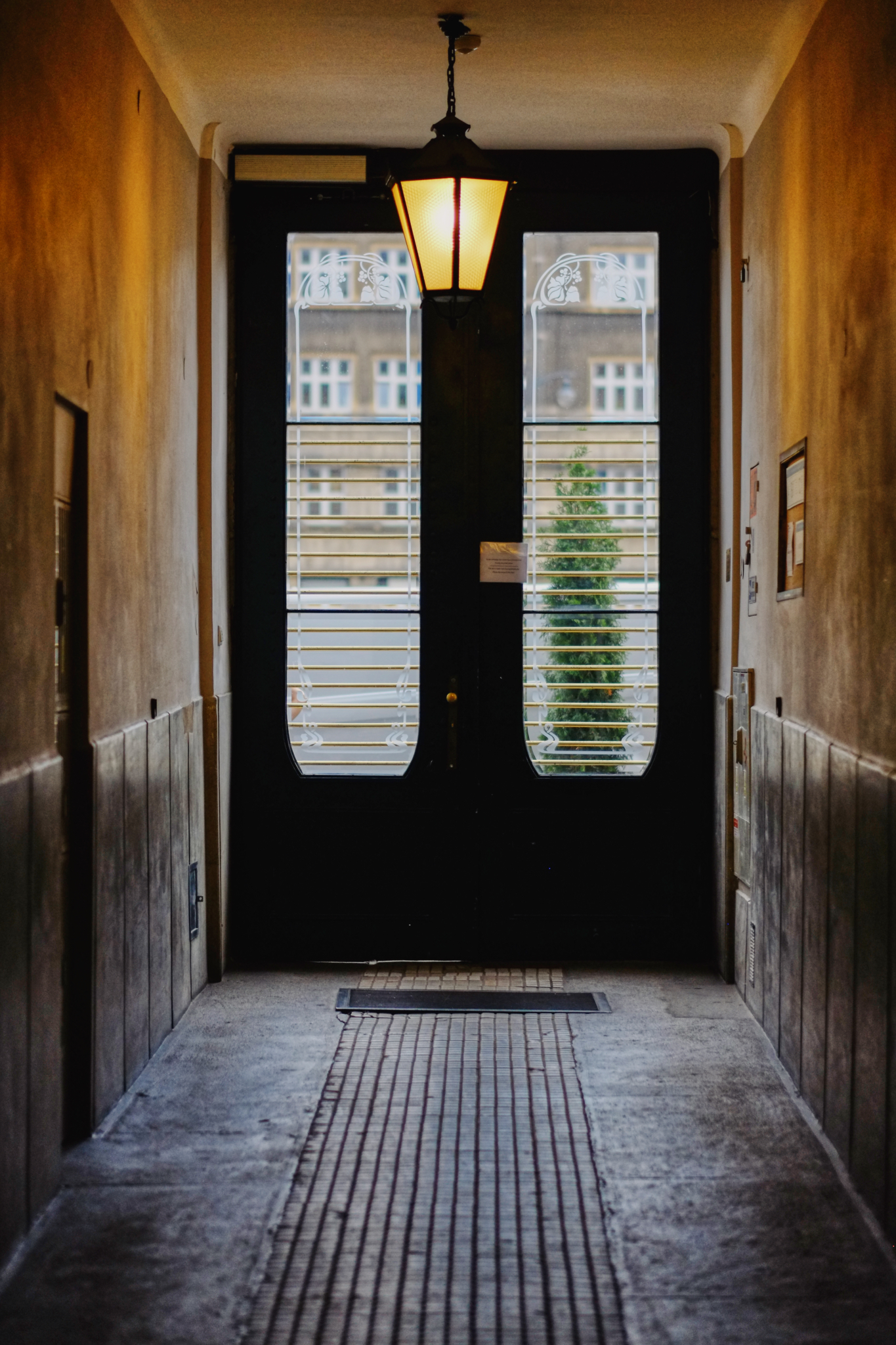 My last door photo . . . our Soviet-era hotel. Simple, honest . . . opening to the marvelous city of Kraków.
My last door photo . . . our Soviet-era hotel. Simple, honest . . . opening to the marvelous city of Kraków.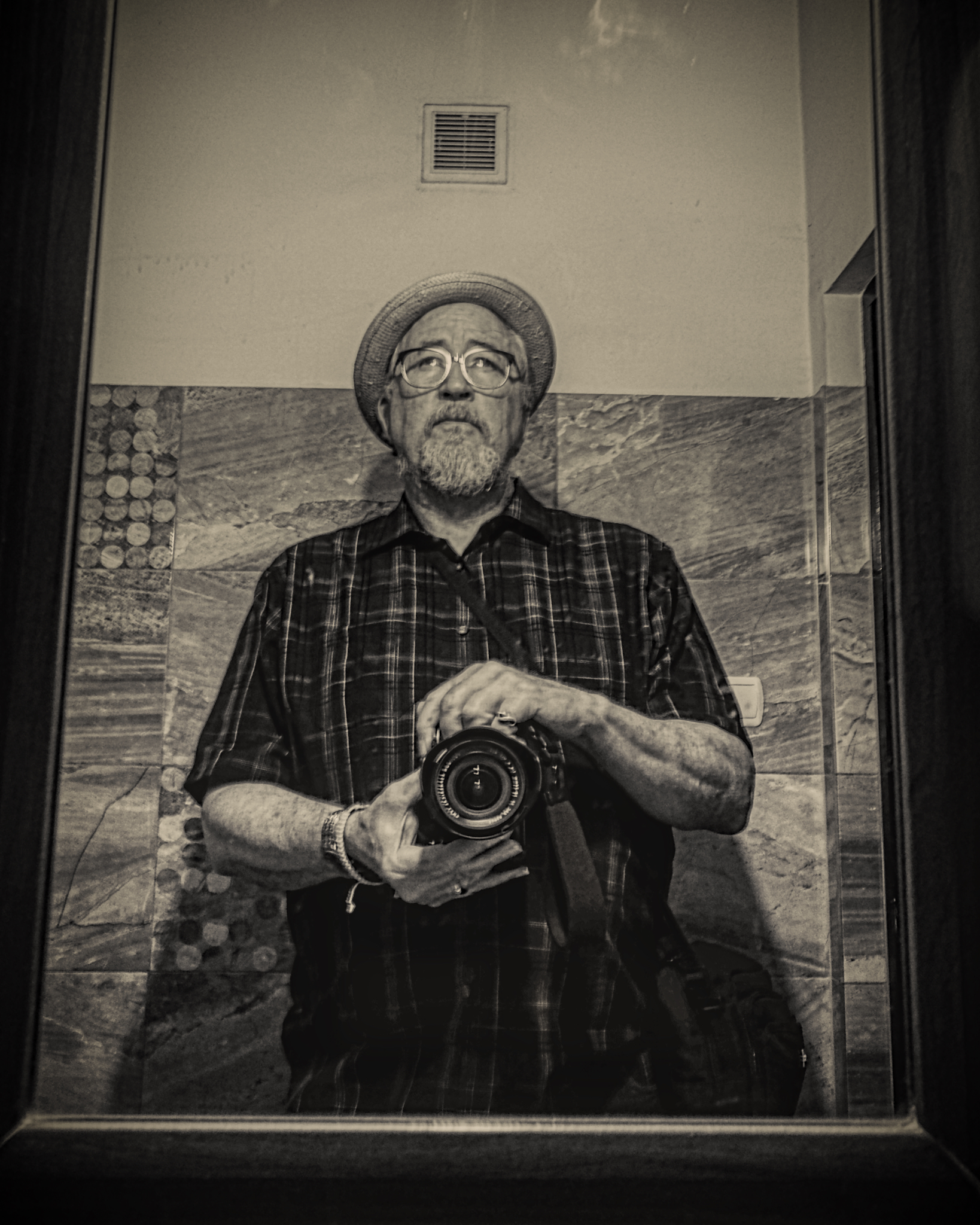 I saw this guy in the mirror of an elevator in Kraków, Poland and wondered who he was.
I saw this guy in the mirror of an elevator in Kraków, Poland and wondered who he was.Visitors From Abroad Day Trip: Pak Khlong Flower Market
 Tuesday, March 31, 2020 at 5:45PM
Tuesday, March 31, 2020 at 5:45PM 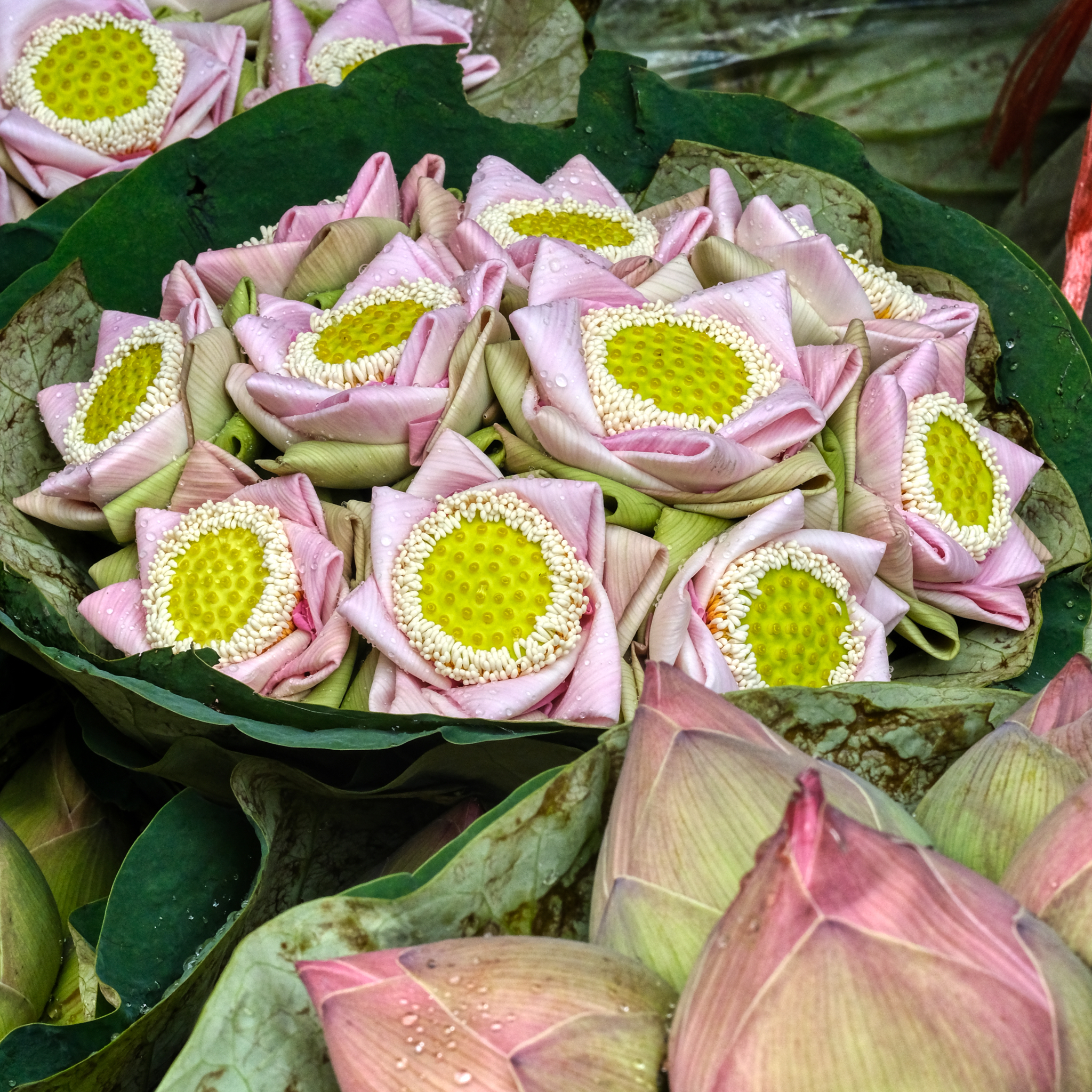 Pak Khlong Talat is Bangkok's great flower market . . . and one of the largest flower markets in the world.
Pak Khlong Talat is Bangkok's great flower market . . . and one of the largest flower markets in the world.
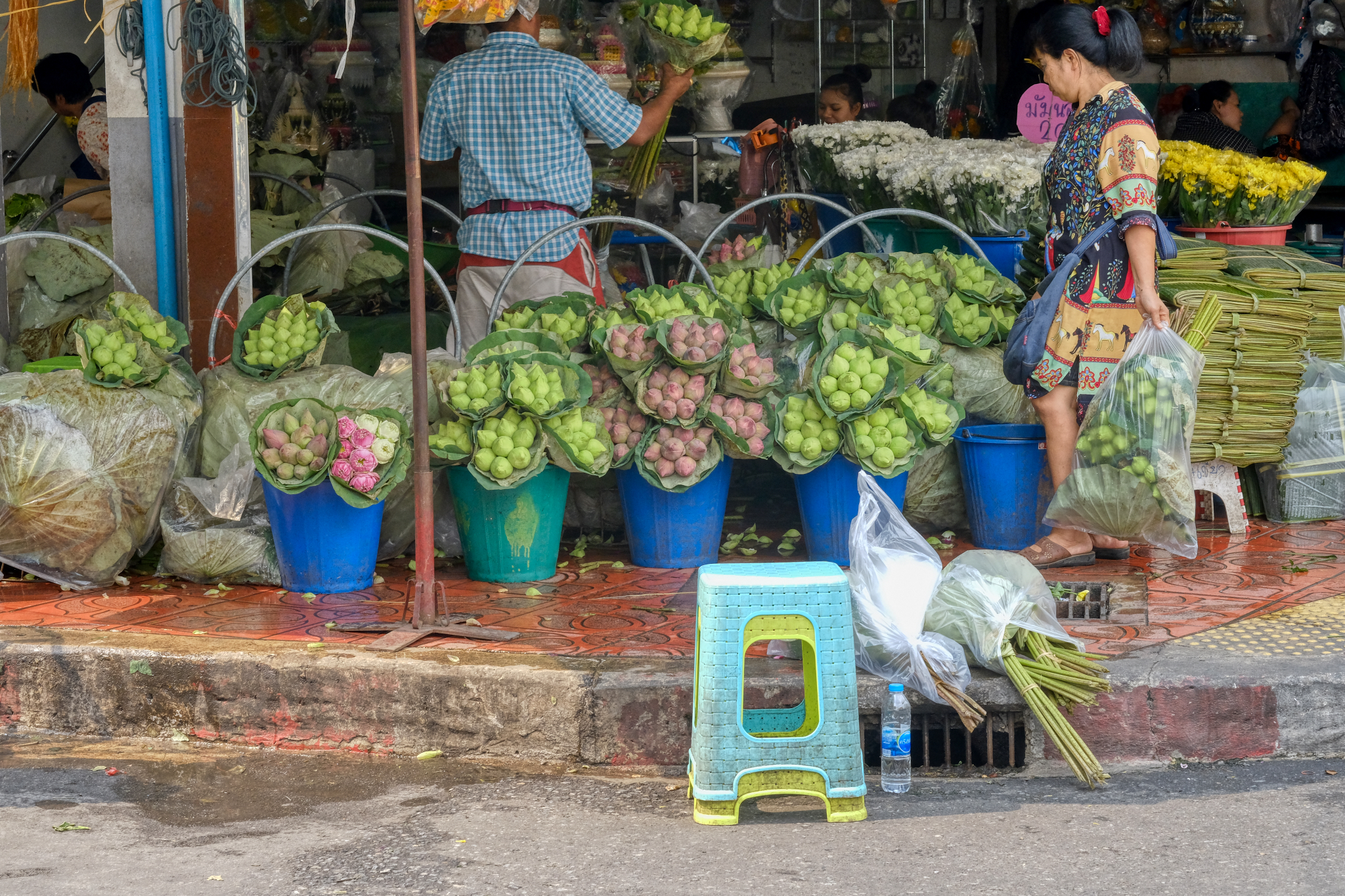 Literally millions of fresh lotus buds and flowers every day pass through this flower market.
Literally millions of fresh lotus buds and flowers every day pass through this flower market.
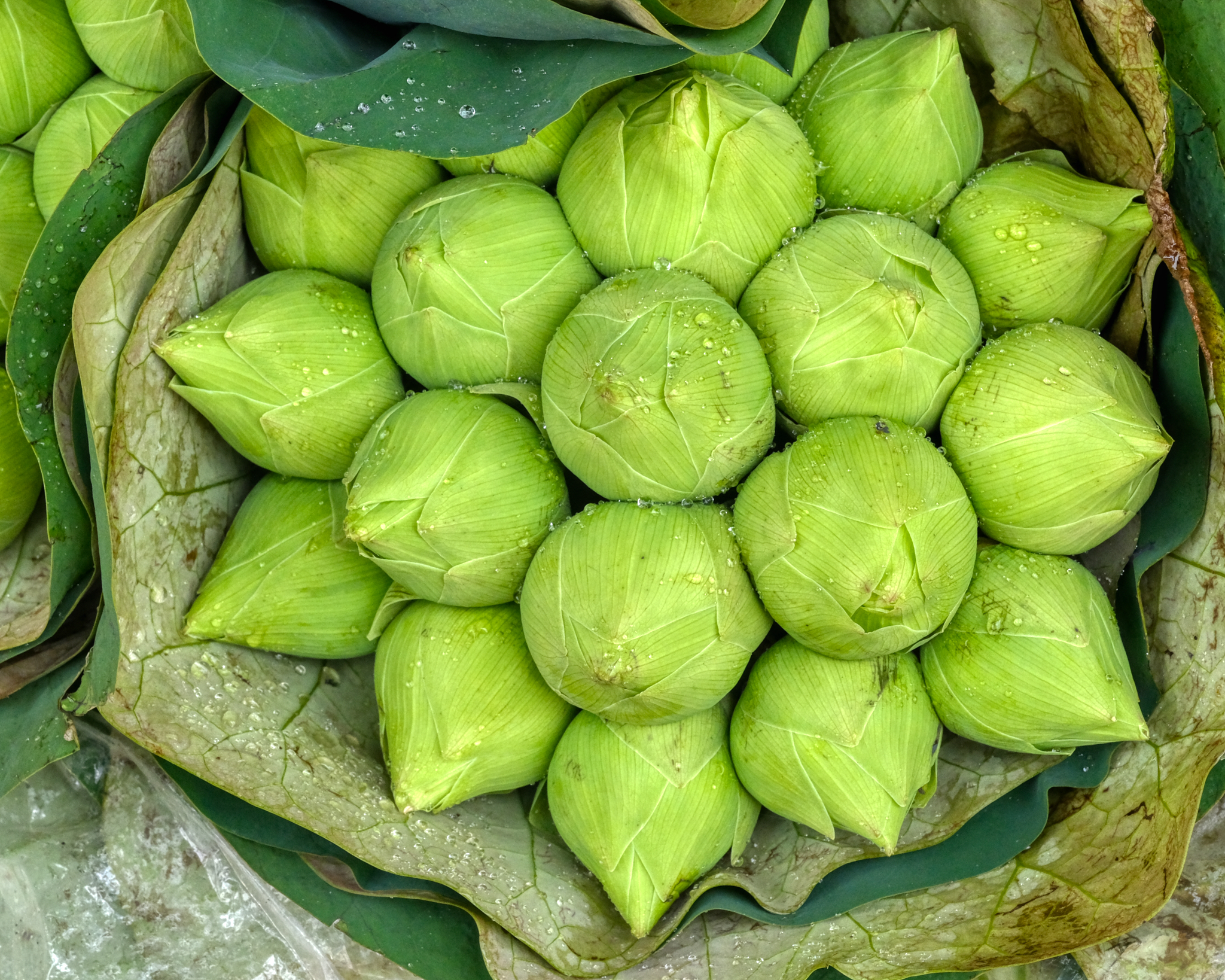 The lotus bud is a powerful symbol in Buddhist thought.
The lotus bud is a powerful symbol in Buddhist thought.
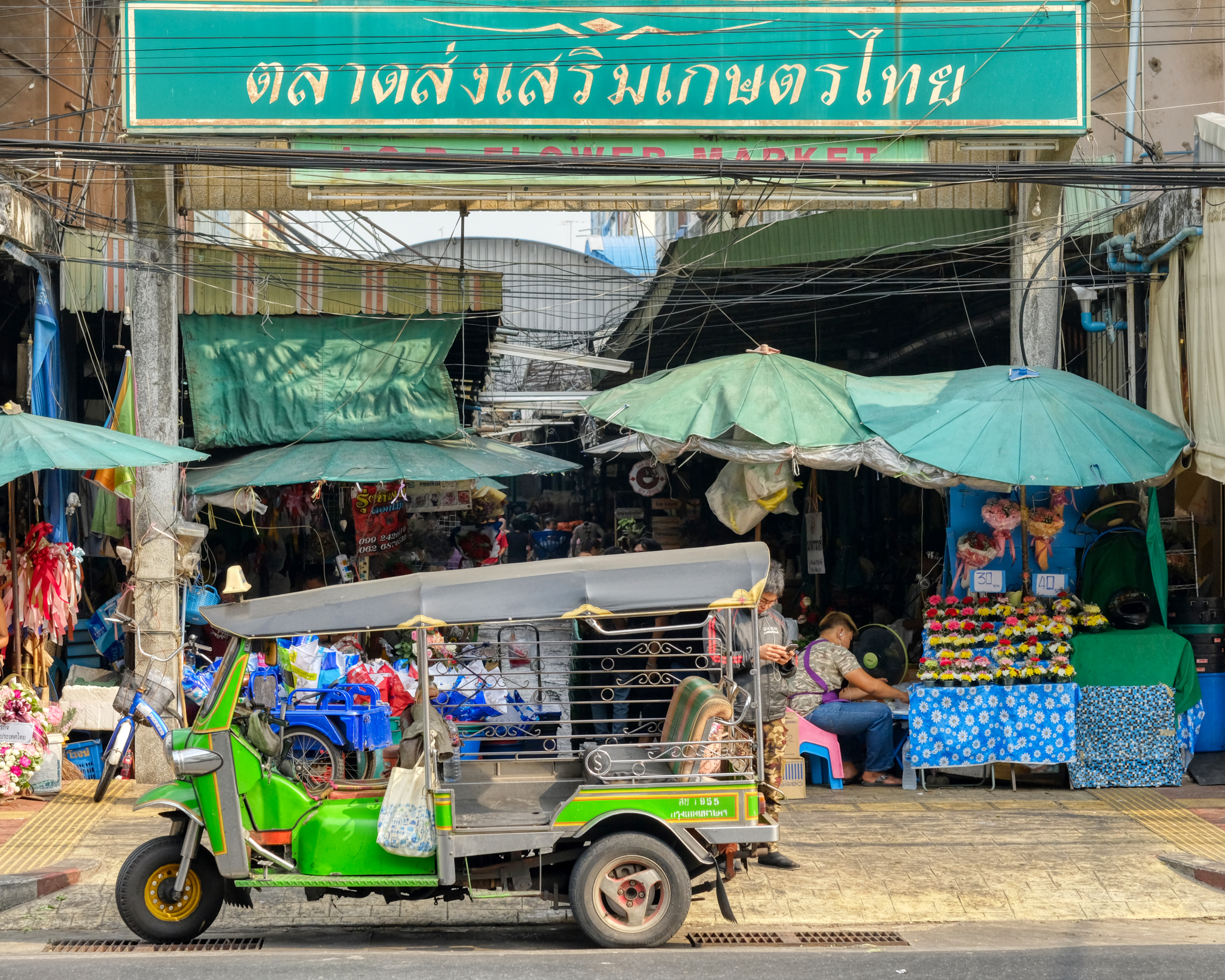 Pak Khlong Talat is a huge flower market with large indoor spaces and narrow alleys all full of flowers . . . it is a wholesale market, so many buyers come every morning and send their purchases back to their shops by tuk-tuk.
Pak Khlong Talat is a huge flower market with large indoor spaces and narrow alleys all full of flowers . . . it is a wholesale market, so many buyers come every morning and send their purchases back to their shops by tuk-tuk.
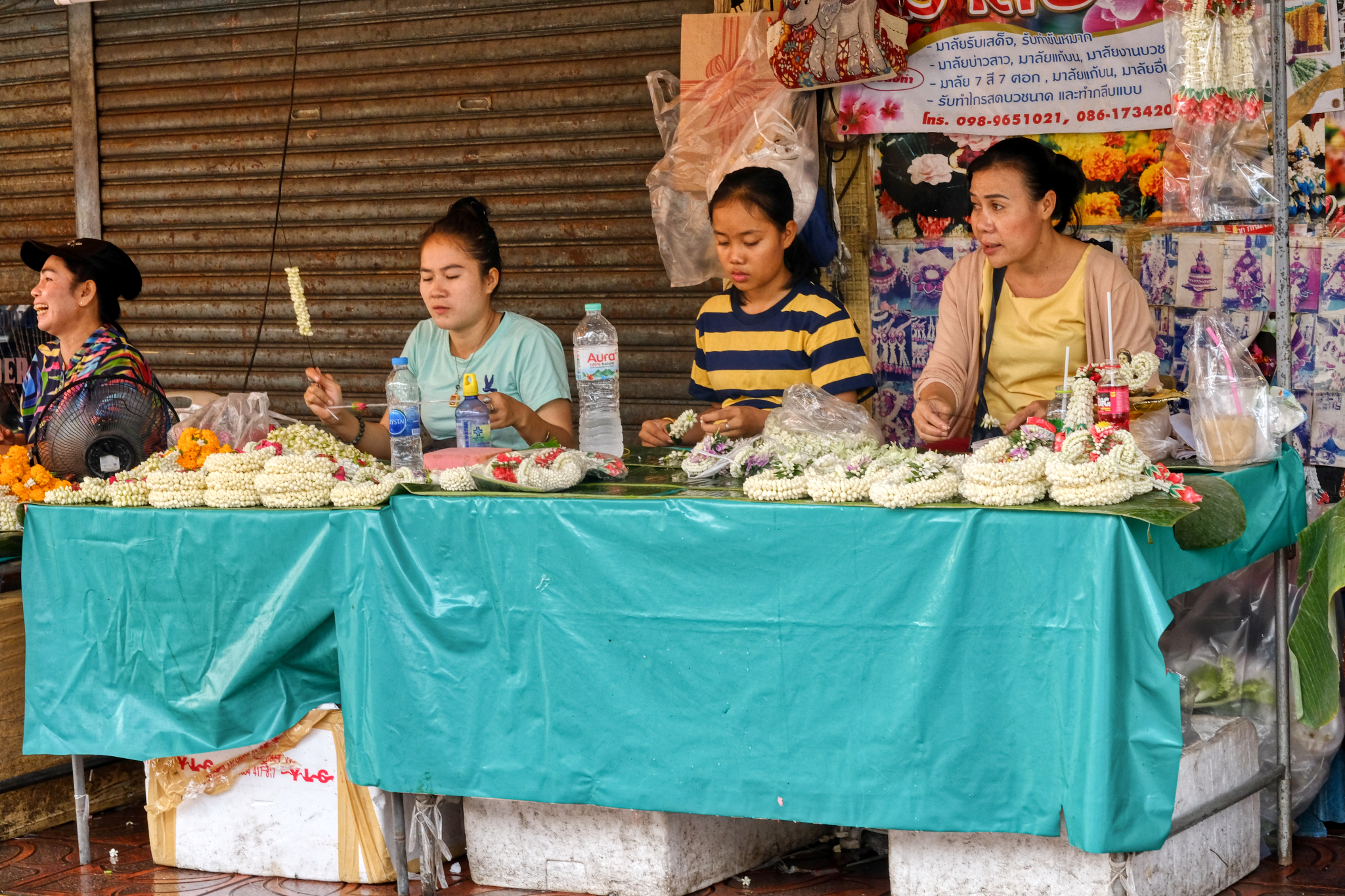 Some buyers come to buy 'raw' flowers for arrangement elsewhere, and some come to buy ready-made arrangements, like these aromatic jasmine bud garlands (used in Buddhist blessings). Imagine how wonderful these women smell after a days' work!!!
Some buyers come to buy 'raw' flowers for arrangement elsewhere, and some come to buy ready-made arrangements, like these aromatic jasmine bud garlands (used in Buddhist blessings). Imagine how wonderful these women smell after a days' work!!!
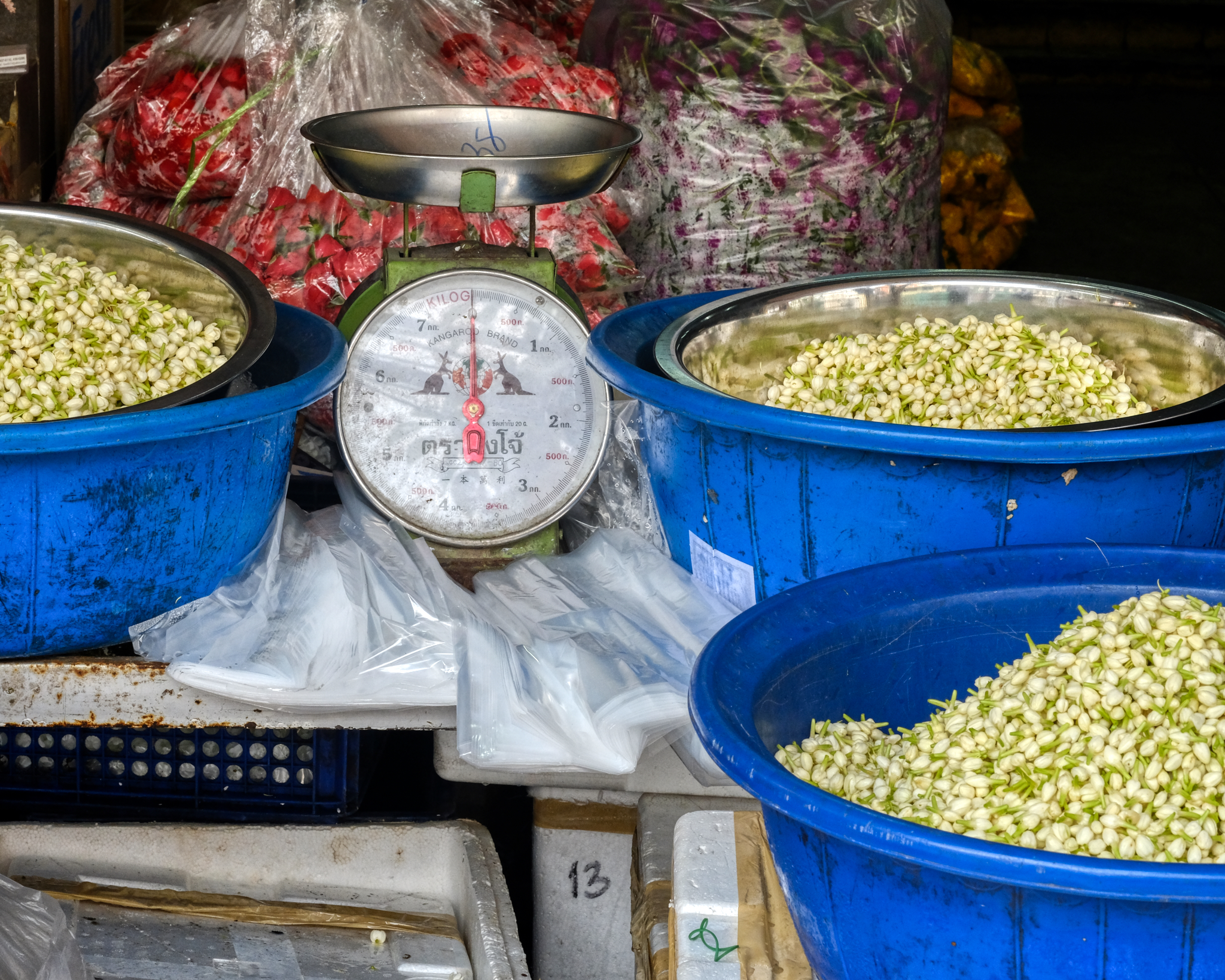 Fragrant jasmine buds being weighed.
Fragrant jasmine buds being weighed.
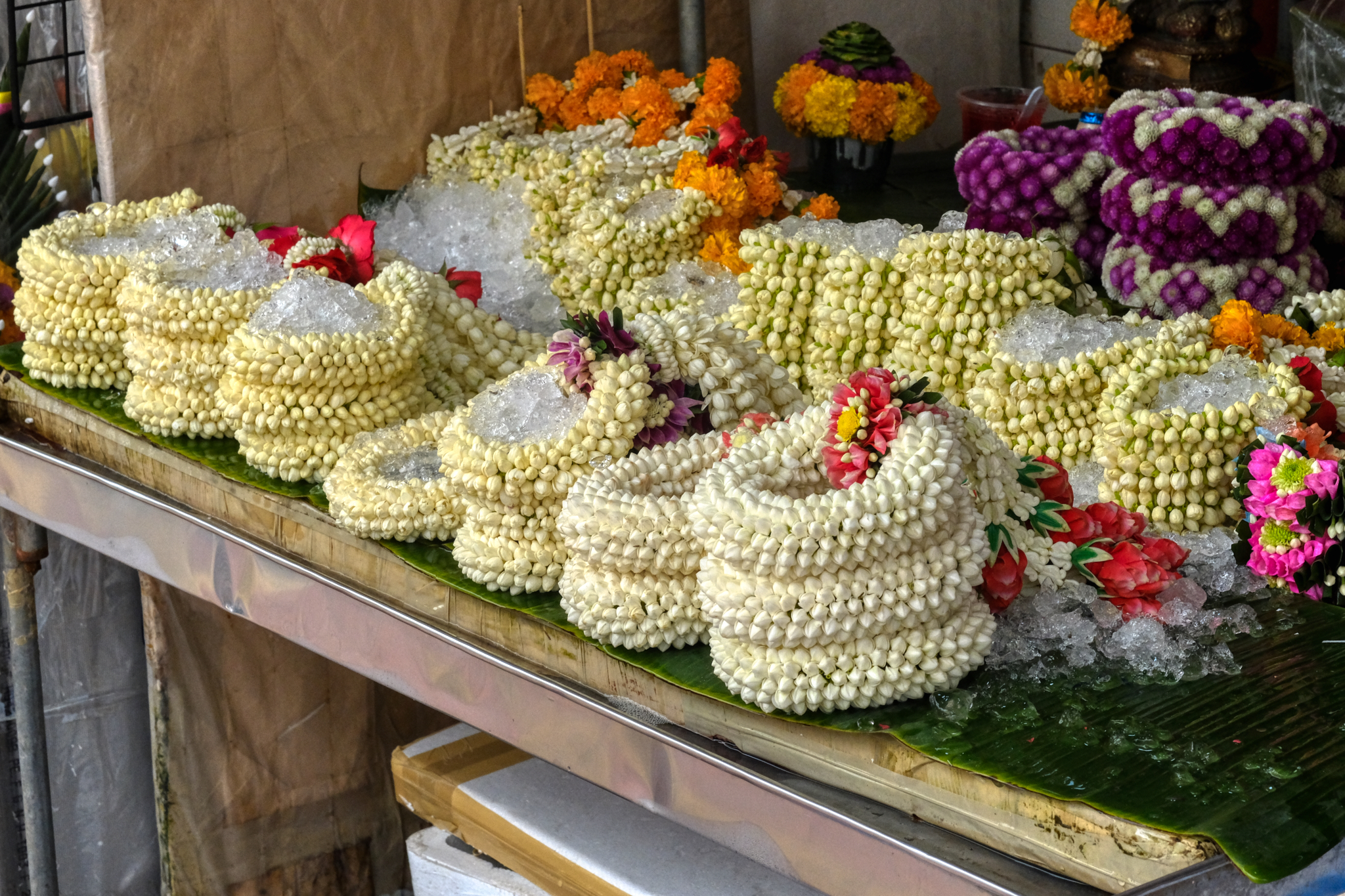 Beautifully made jasmine garlands on ice, ready for sales.
Beautifully made jasmine garlands on ice, ready for sales.
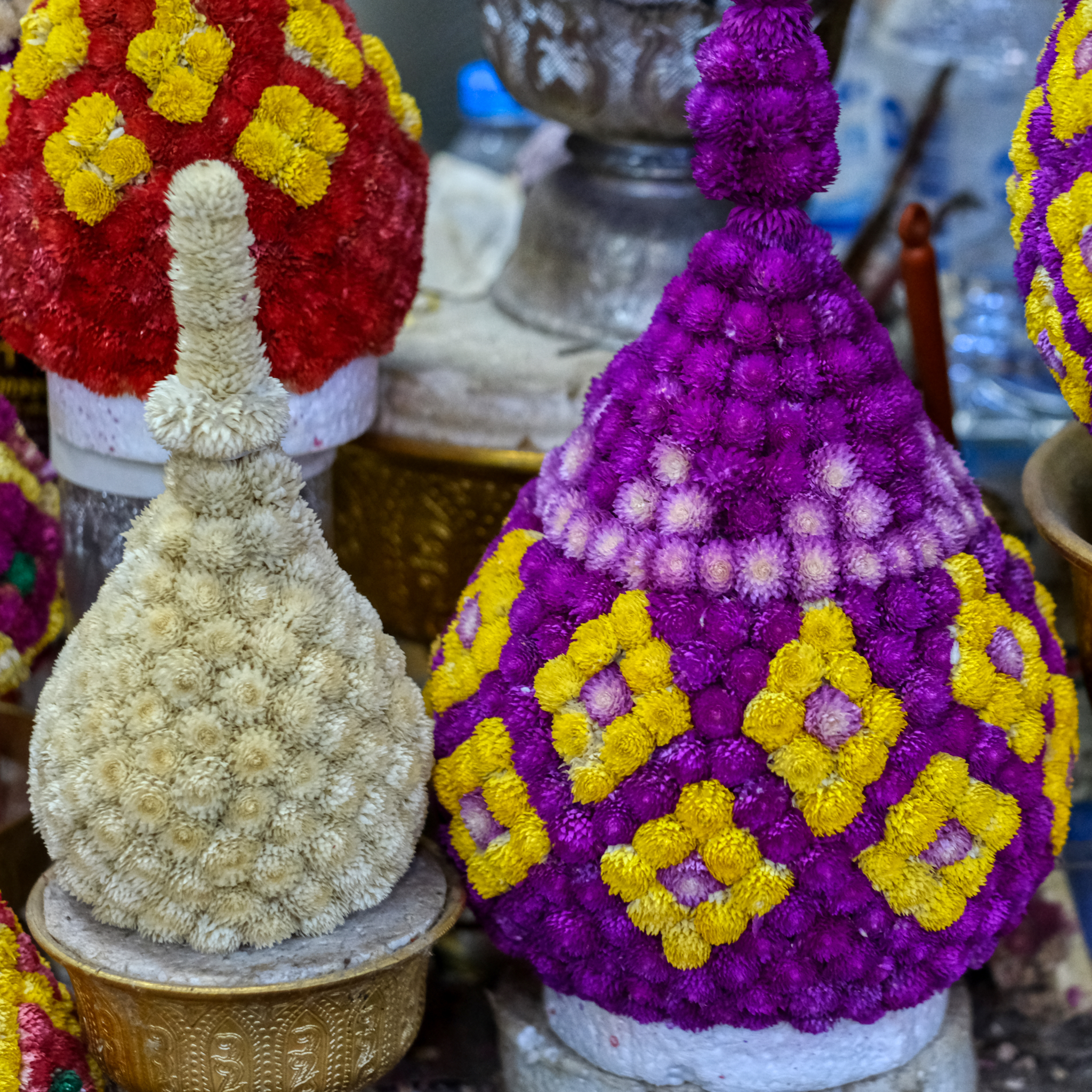 Many kinds and styles of Buddhist votive flower arrangements were being made everywhere.
Many kinds and styles of Buddhist votive flower arrangements were being made everywhere.
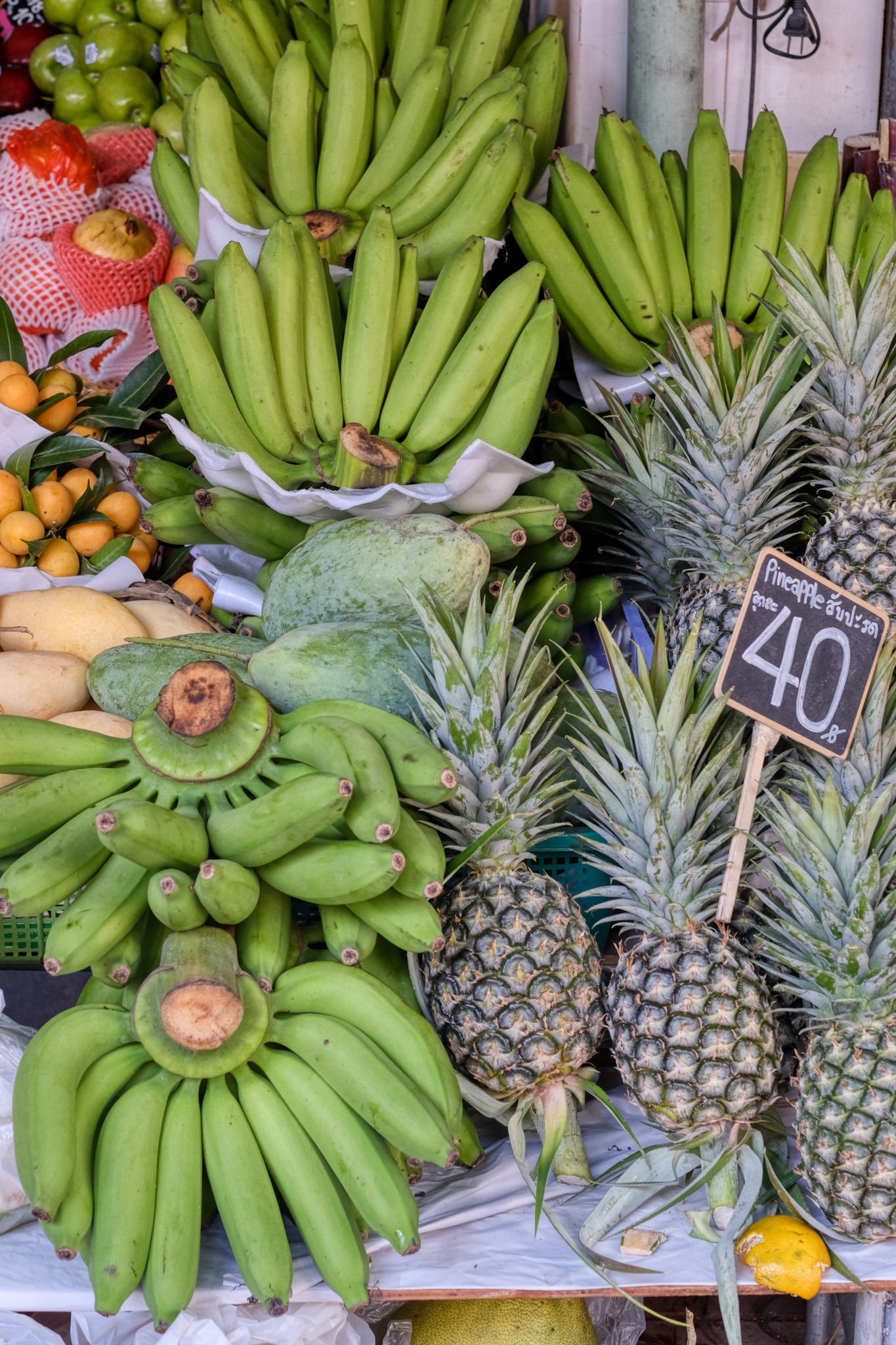 The market has more than flowers for sale . . . fruit for the hundreds, if not thousands of flower market workers.
The market has more than flowers for sale . . . fruit for the hundreds, if not thousands of flower market workers.
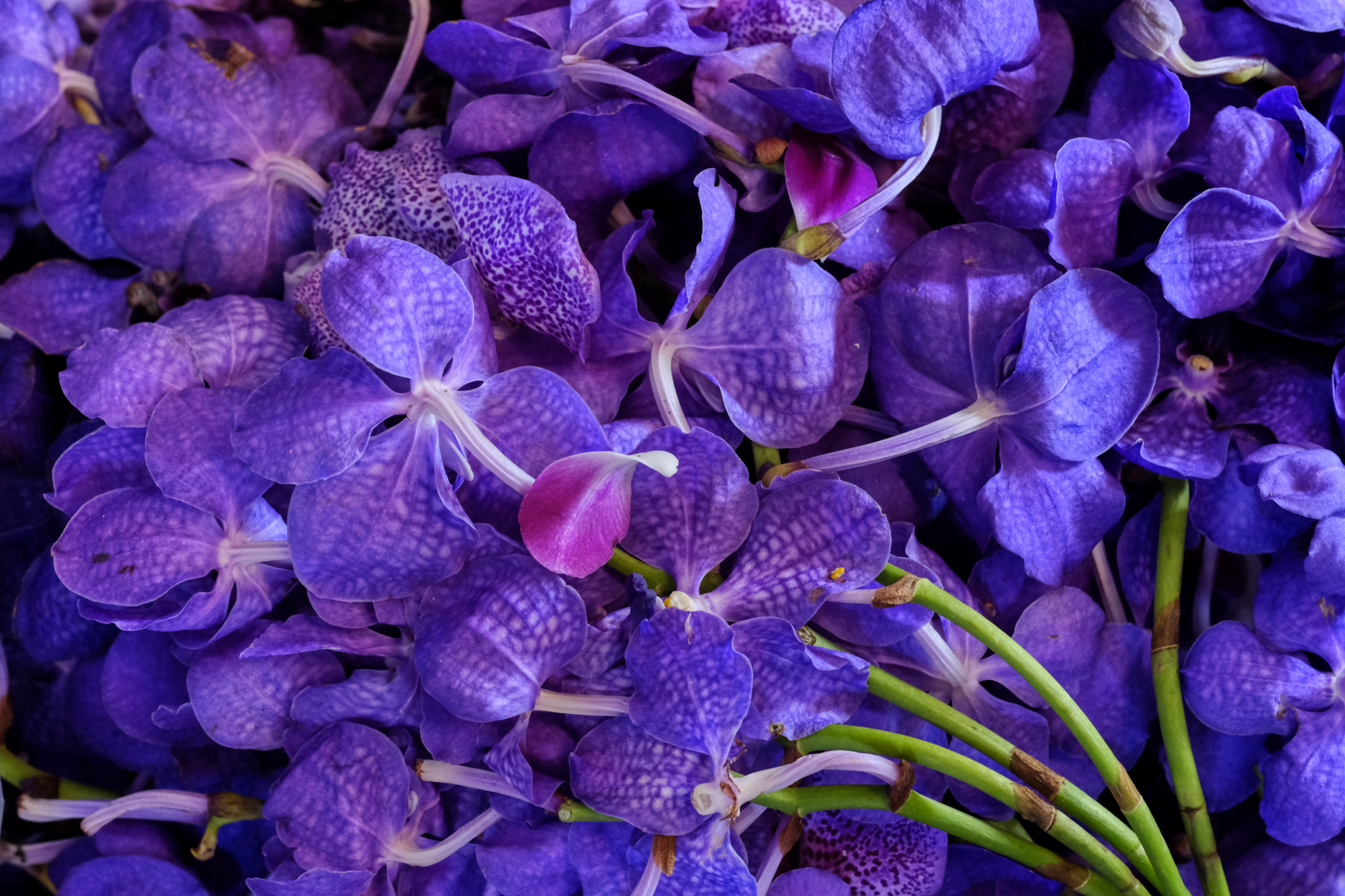 But, of course, it is the flowers that amaze a visitor to the flower market. Orchids everywhere!
But, of course, it is the flowers that amaze a visitor to the flower market. Orchids everywhere!
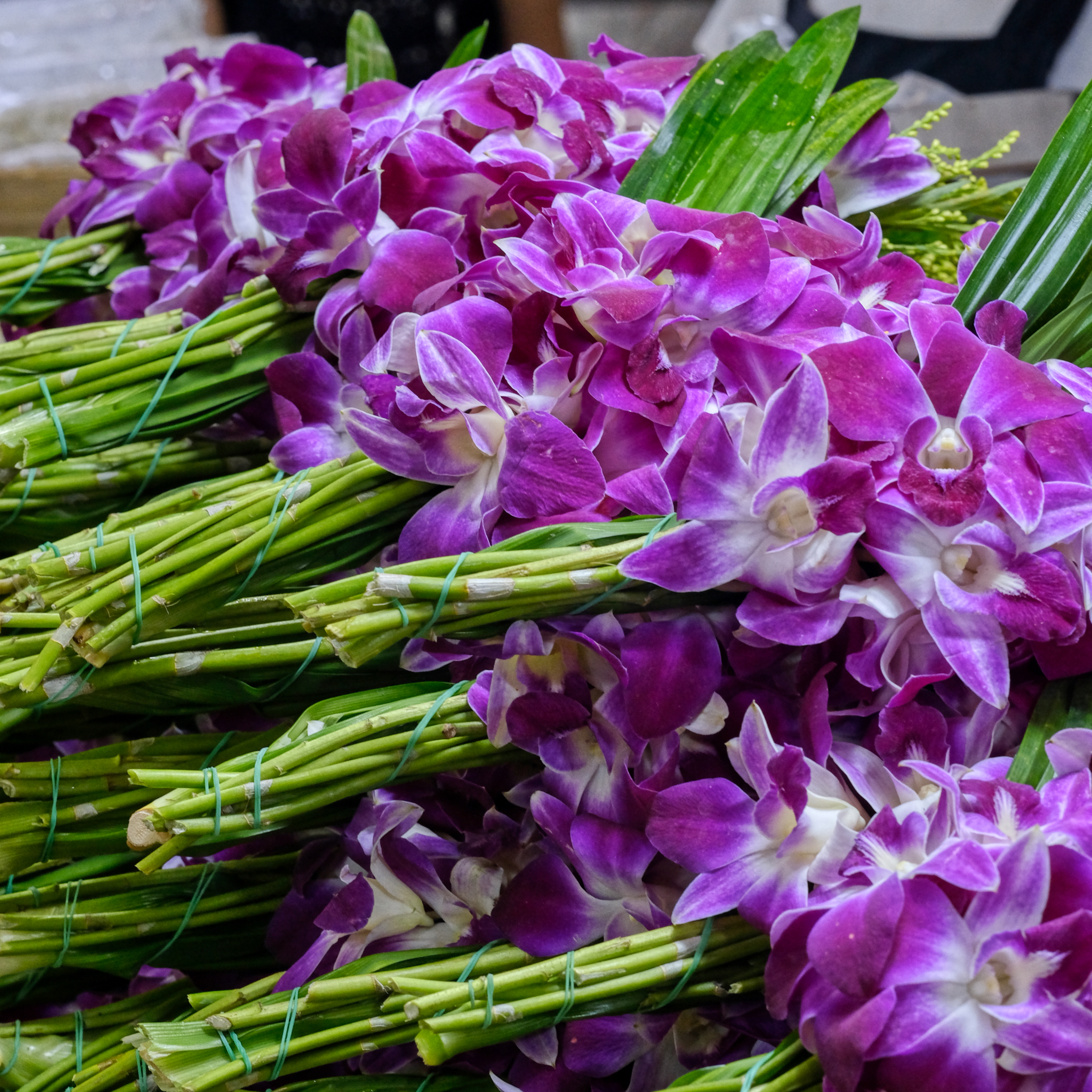 Thailand's hot and humid climate means that orchids grow outside all year long. Just nail one on a tree and it grows!
Thailand's hot and humid climate means that orchids grow outside all year long. Just nail one on a tree and it grows!
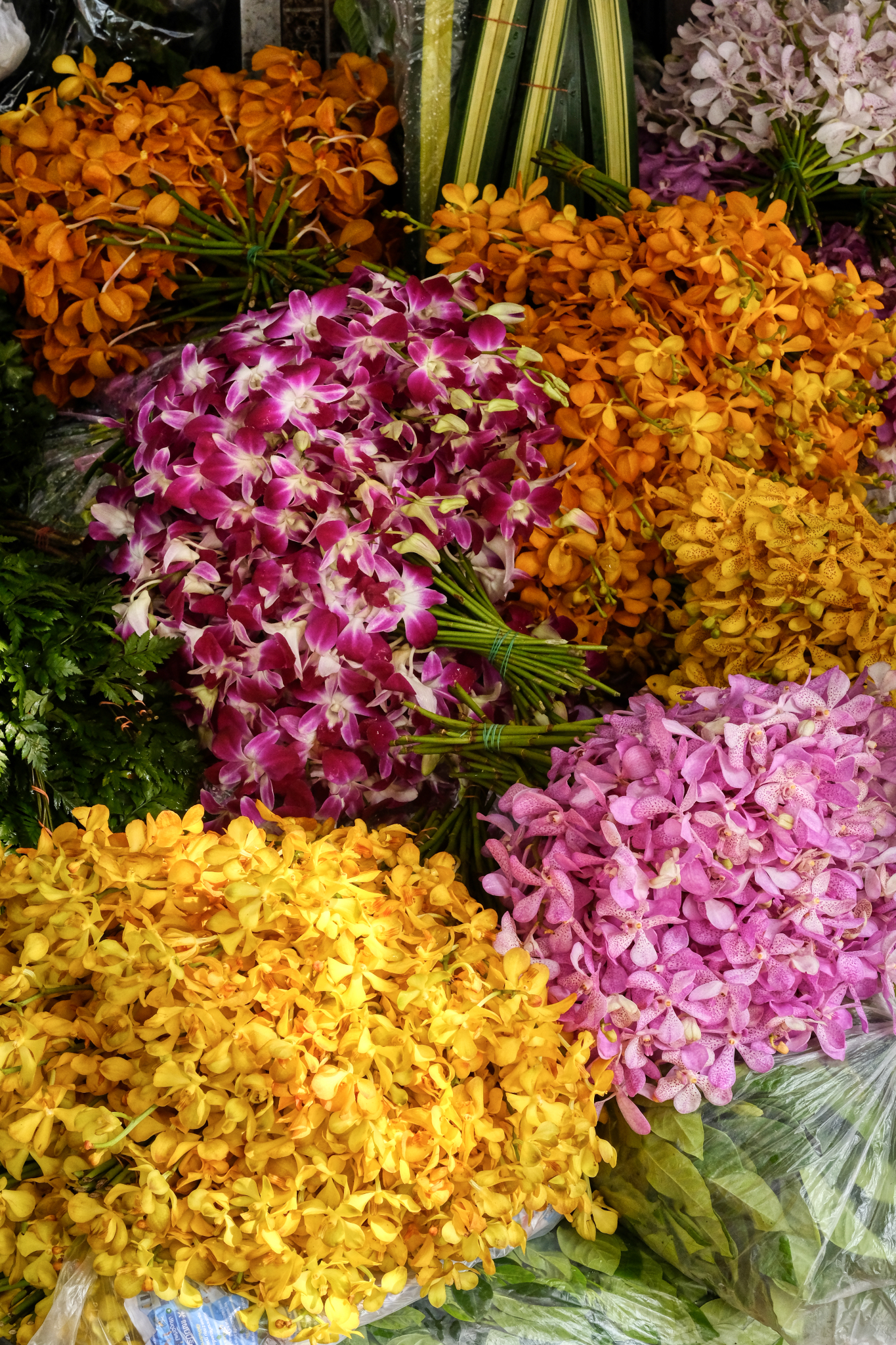 Orchids come in every color of the rainbow . . .
Orchids come in every color of the rainbow . . .
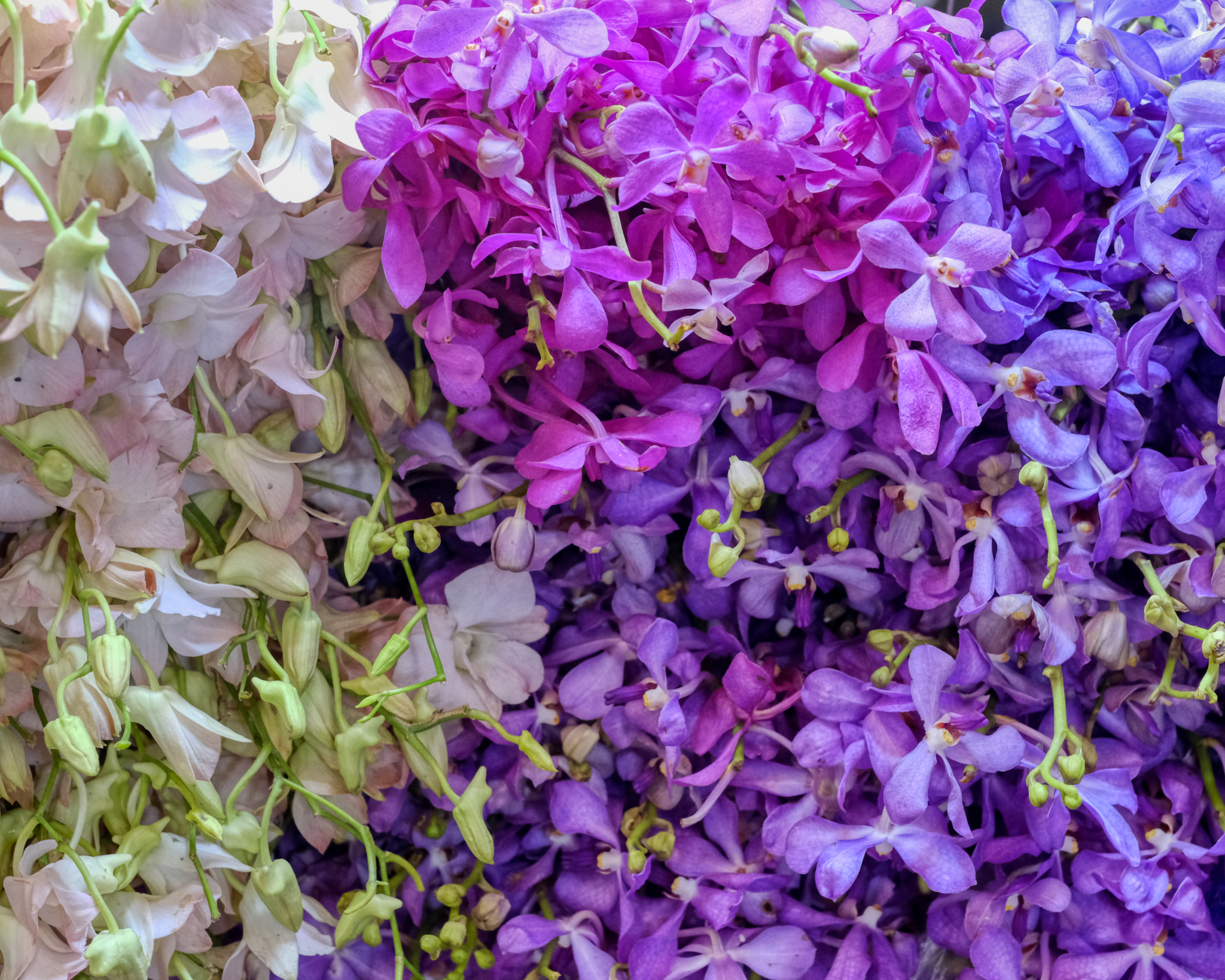 Exquisite orchids.
Exquisite orchids.
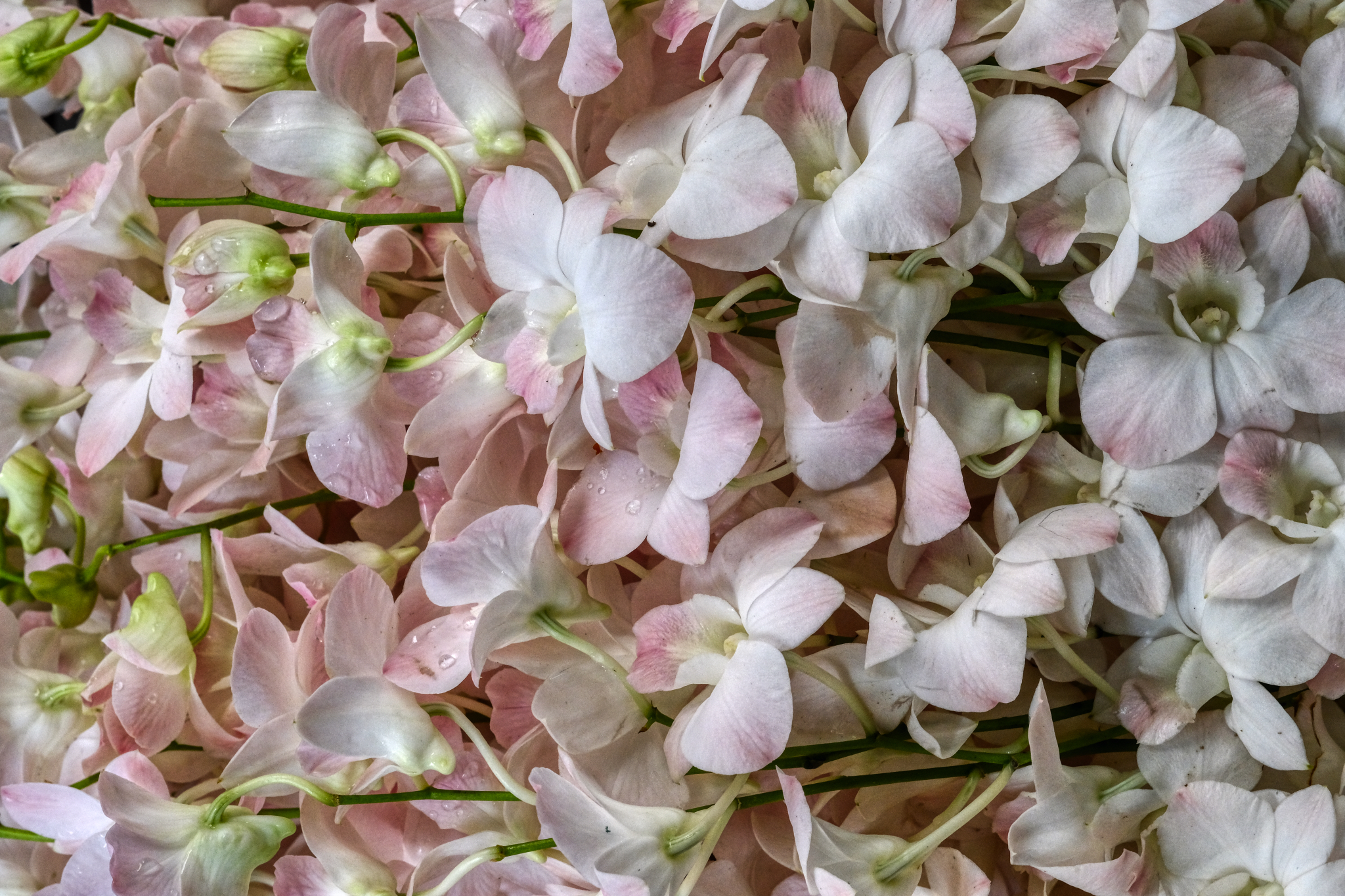 . . . including white orchids.
. . . including white orchids.
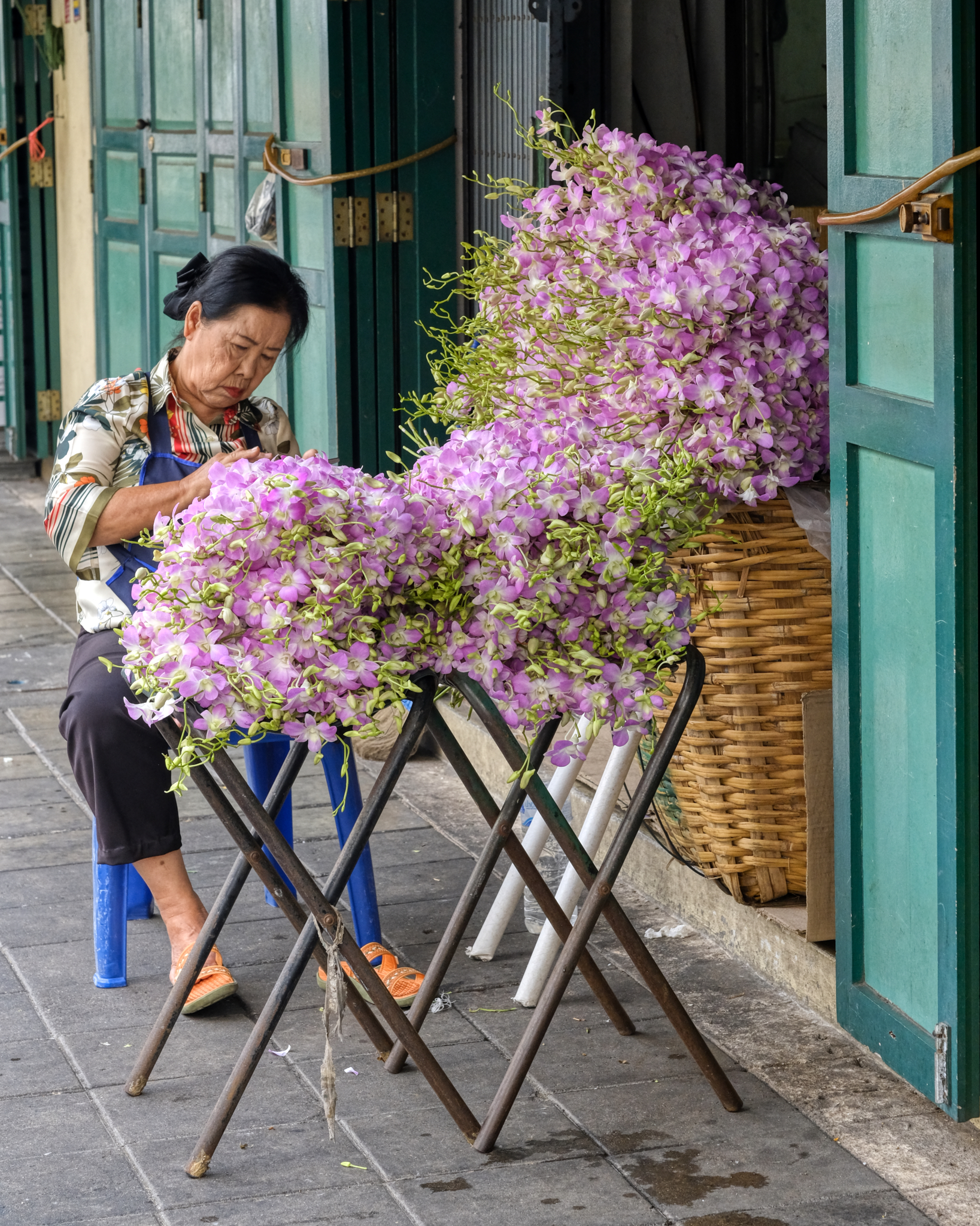 An orchid hawker tending her product.
An orchid hawker tending her product.
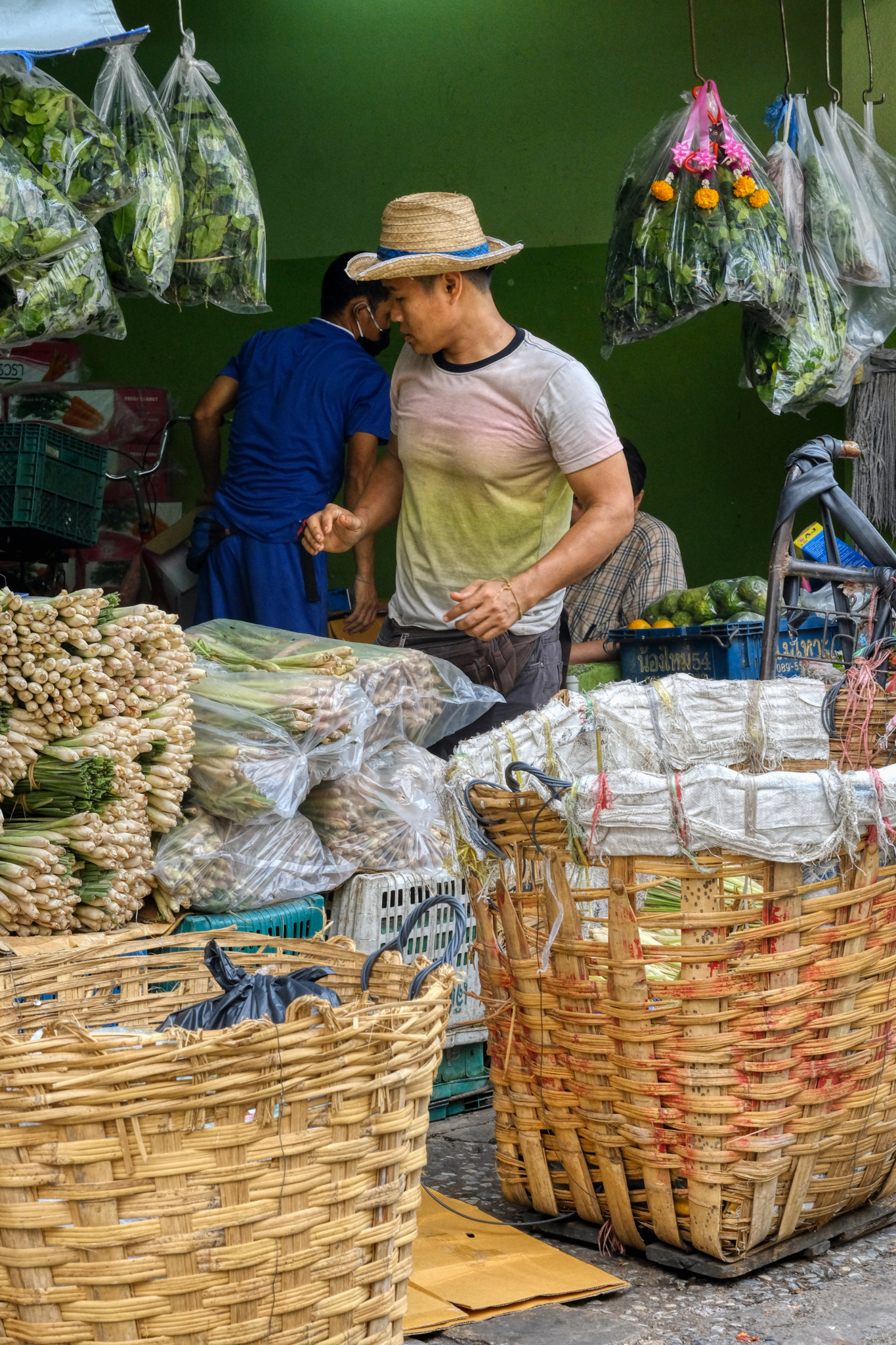 The flower market is also a good place to get people photos.
The flower market is also a good place to get people photos.
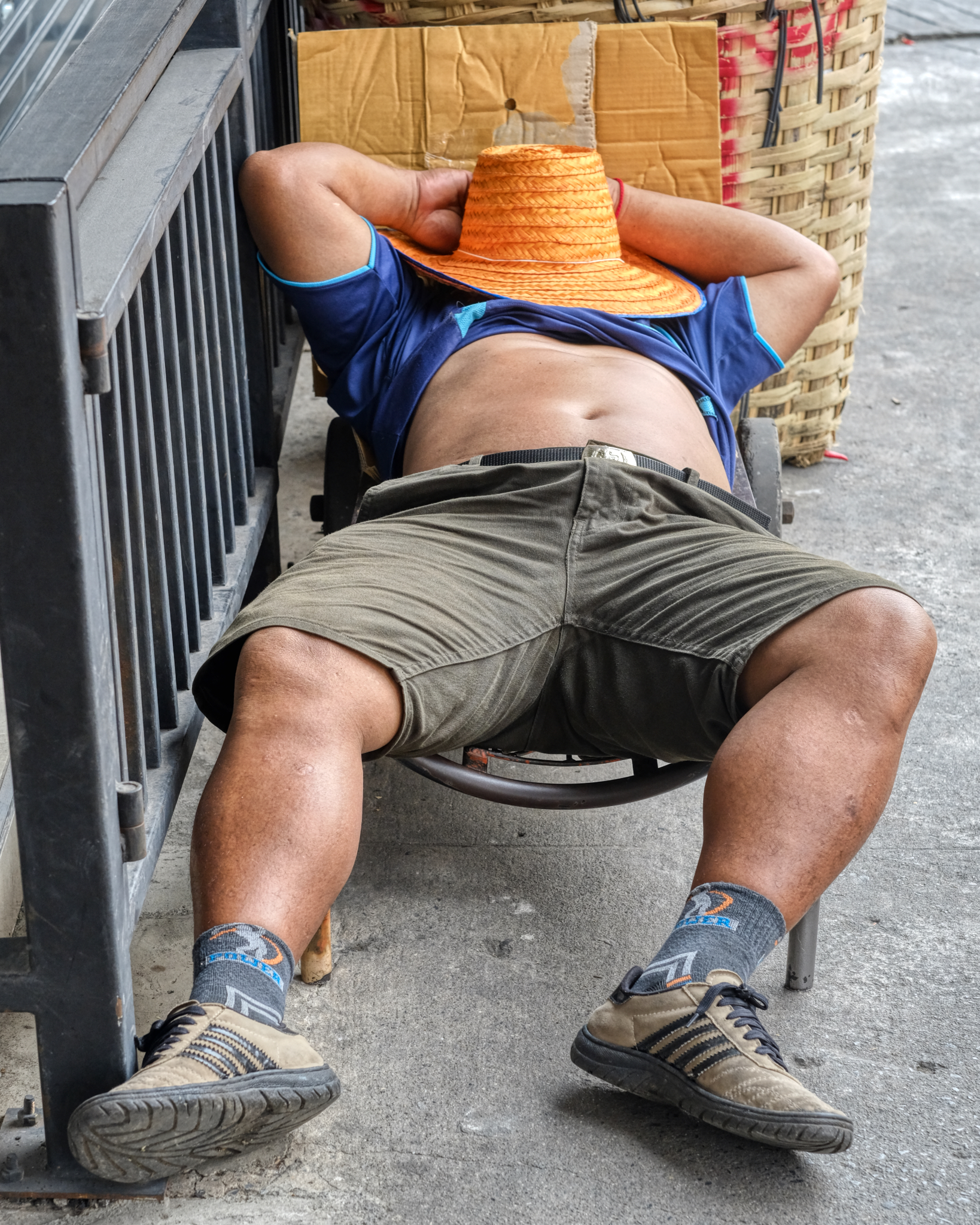 The market opens at 3:00am when the growers begin to bring in their flowers . . . and buyers begin to purchase and ship. This draymen looks tired!
The market opens at 3:00am when the growers begin to bring in their flowers . . . and buyers begin to purchase and ship. This draymen looks tired!
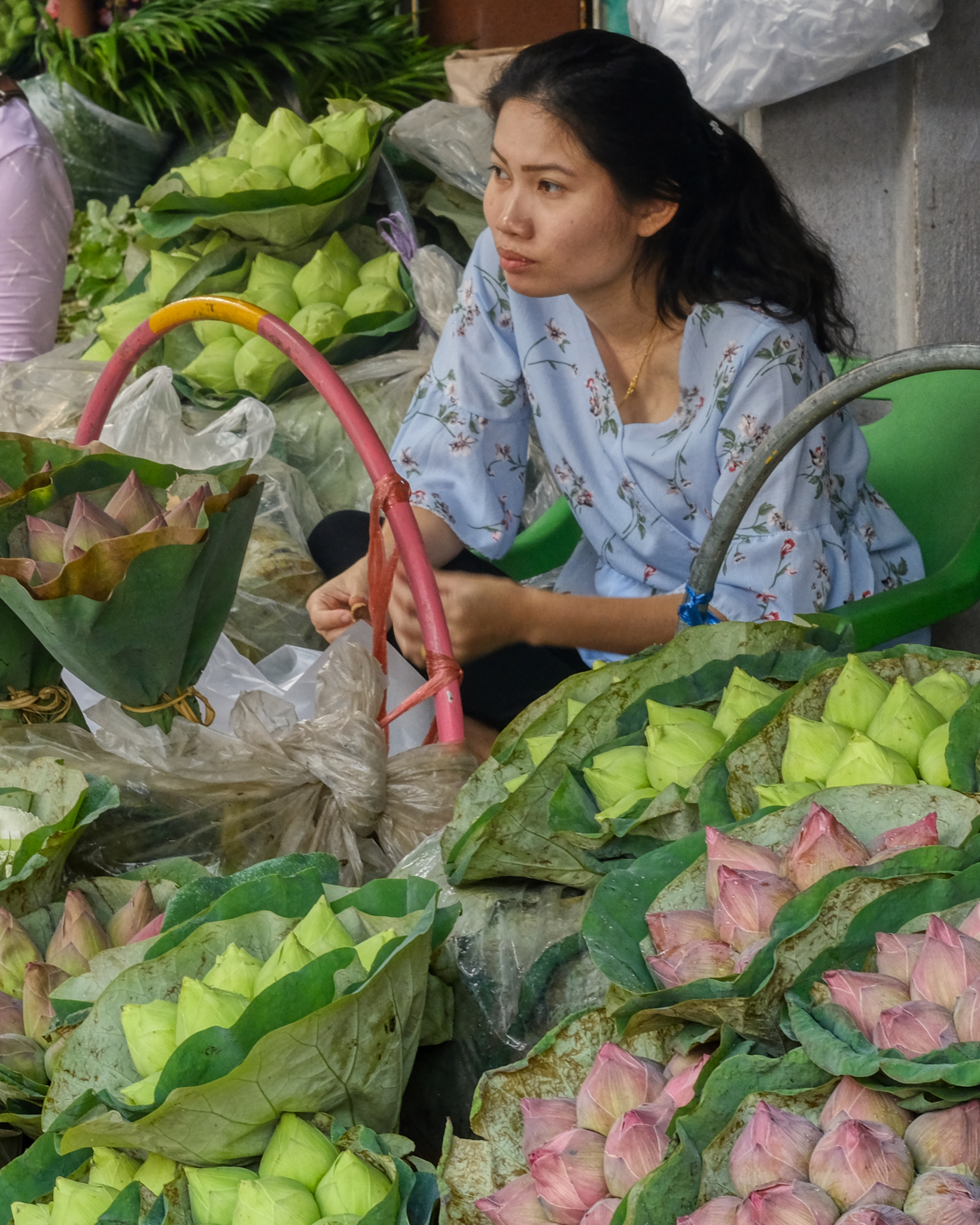 Hoping for a big sale.
Hoping for a big sale.
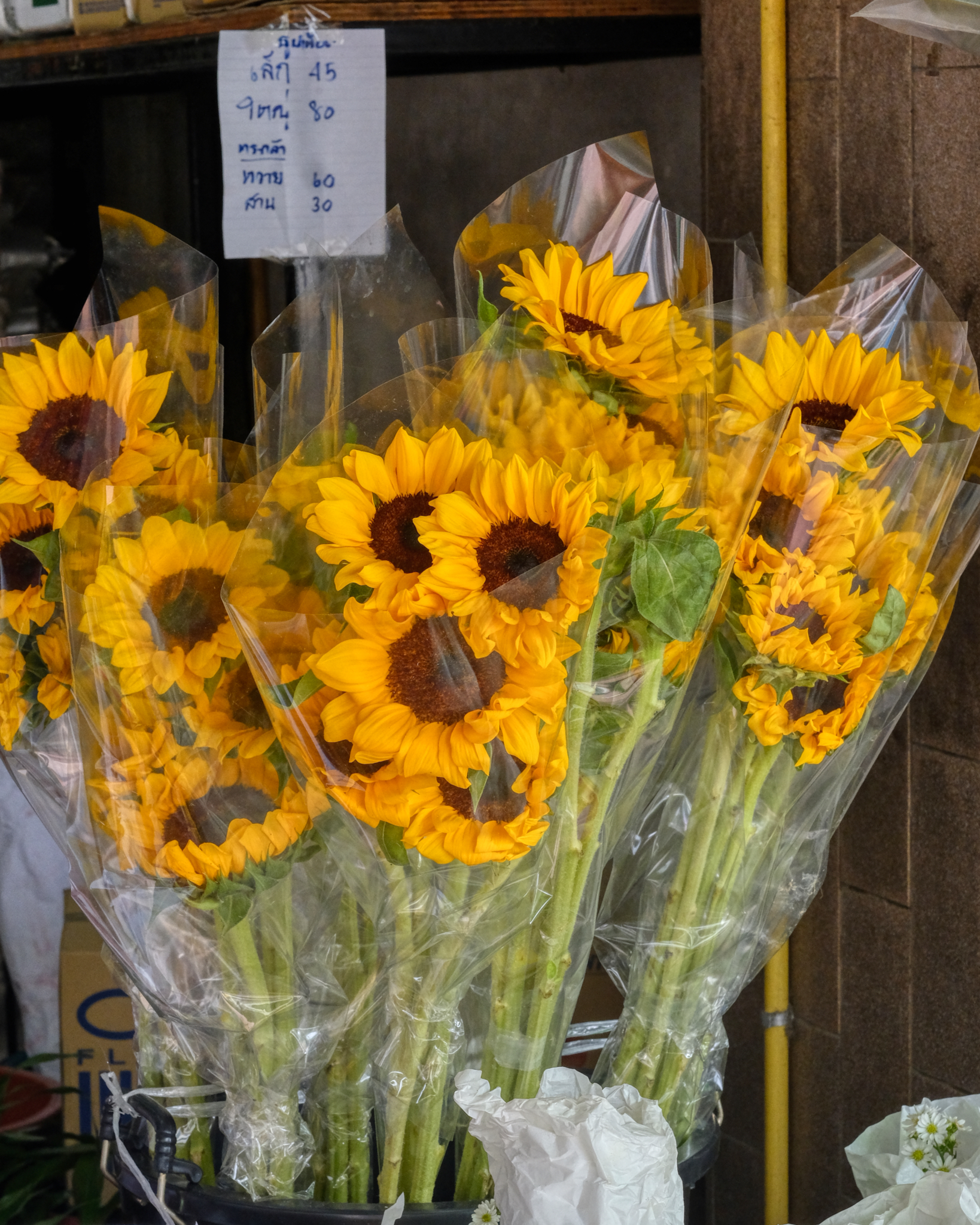 The kinds and varieties of flowers available for sale was staggering! These sunflowers are from Thailand.
The kinds and varieties of flowers available for sale was staggering! These sunflowers are from Thailand.
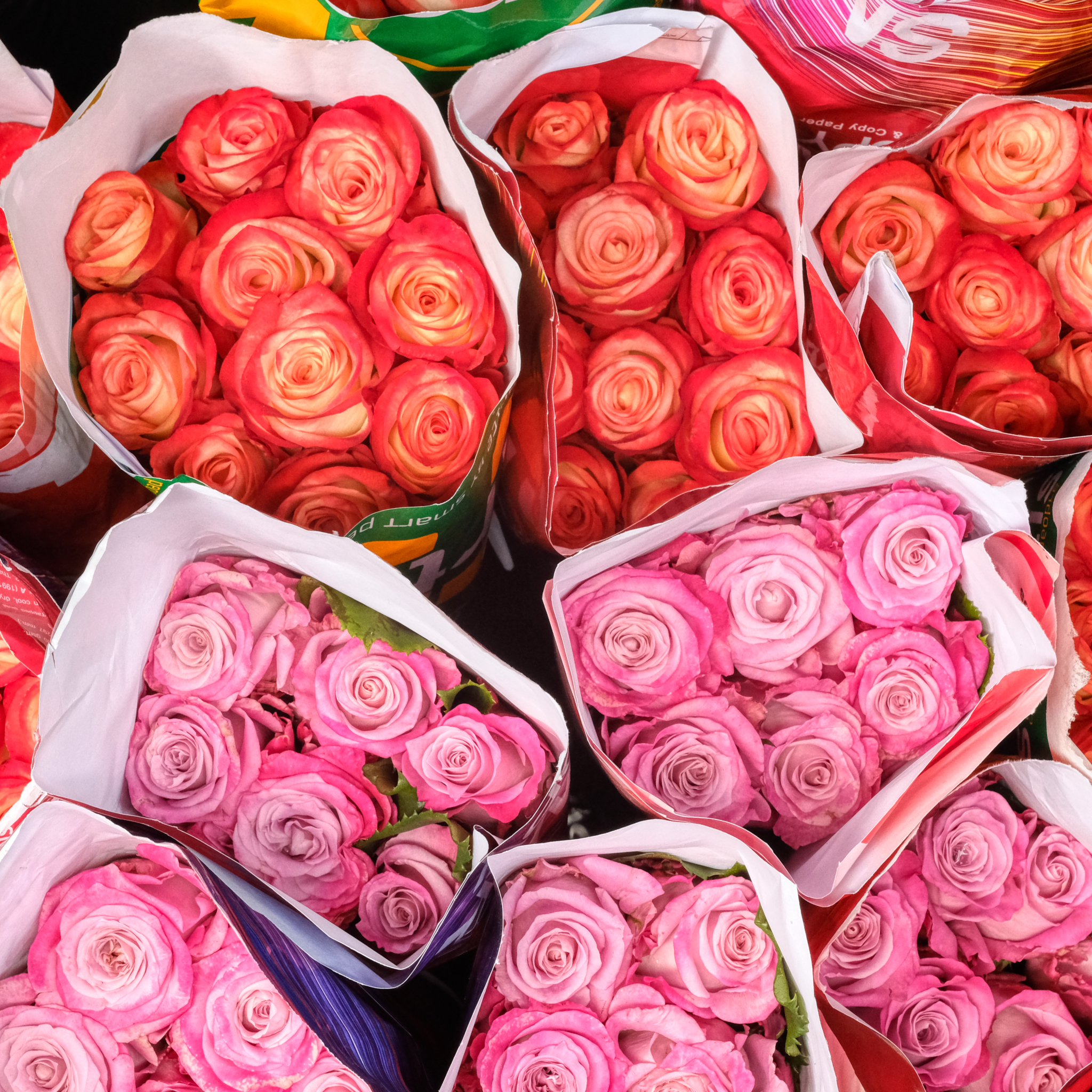 Roses, roses, roses . . .
Roses, roses, roses . . .
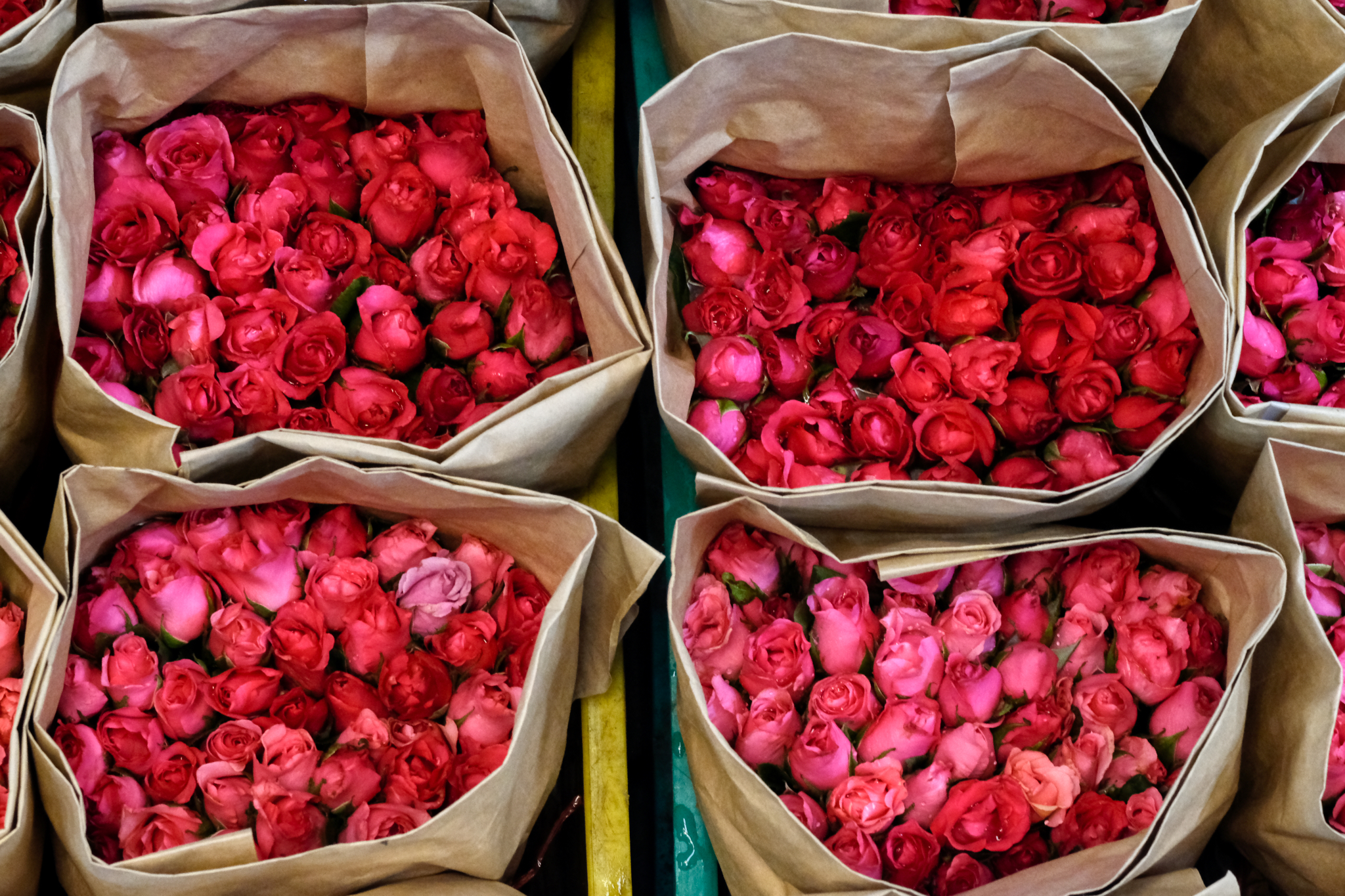 . . . roses, roses, roses . . .
. . . roses, roses, roses . . .
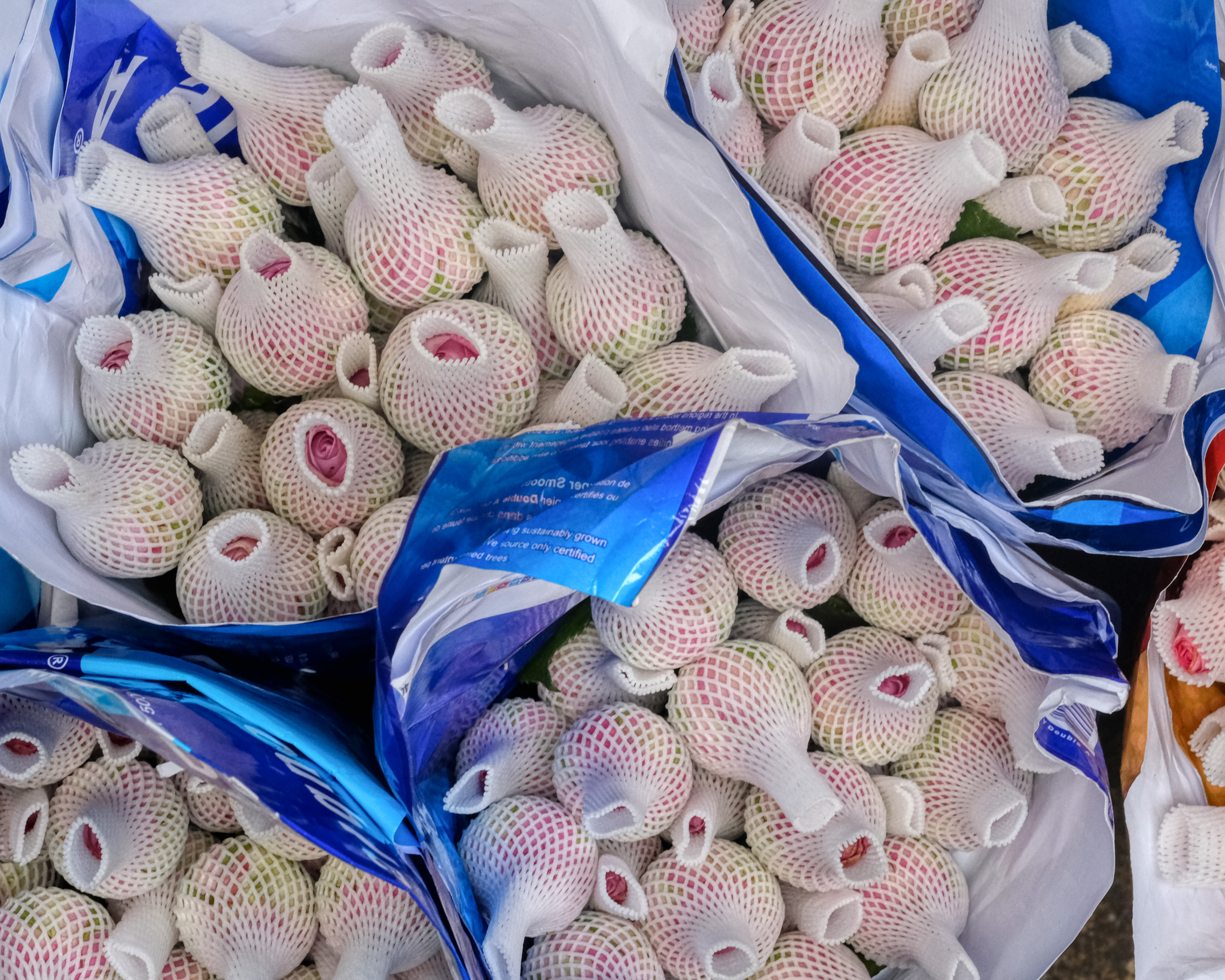 . . . and more roses. These wrapped roses were imported from Europe.
. . . and more roses. These wrapped roses were imported from Europe.
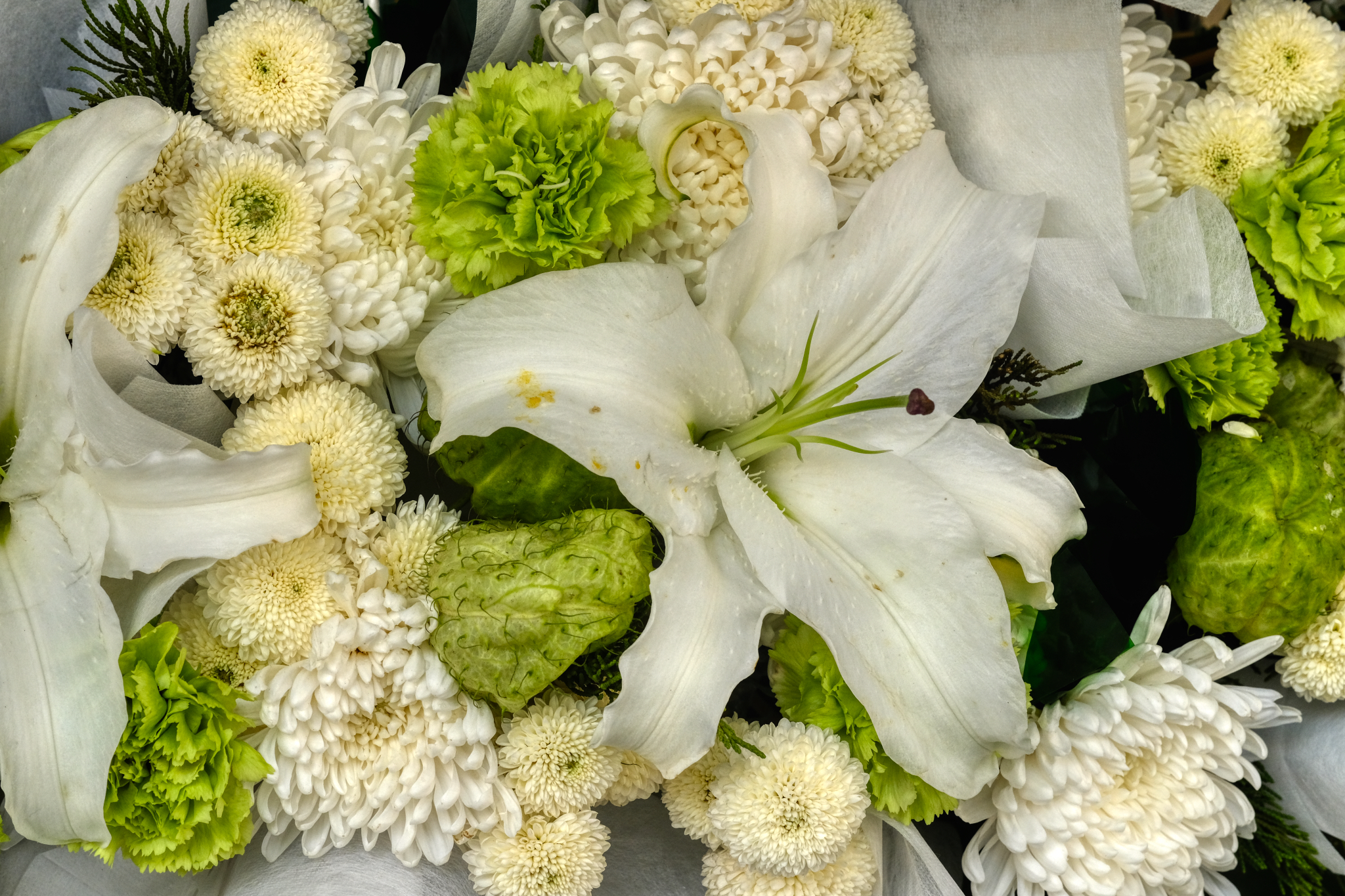 Some flowers were sold as already made arrangements, like this white lily ensemble.
Some flowers were sold as already made arrangements, like this white lily ensemble.
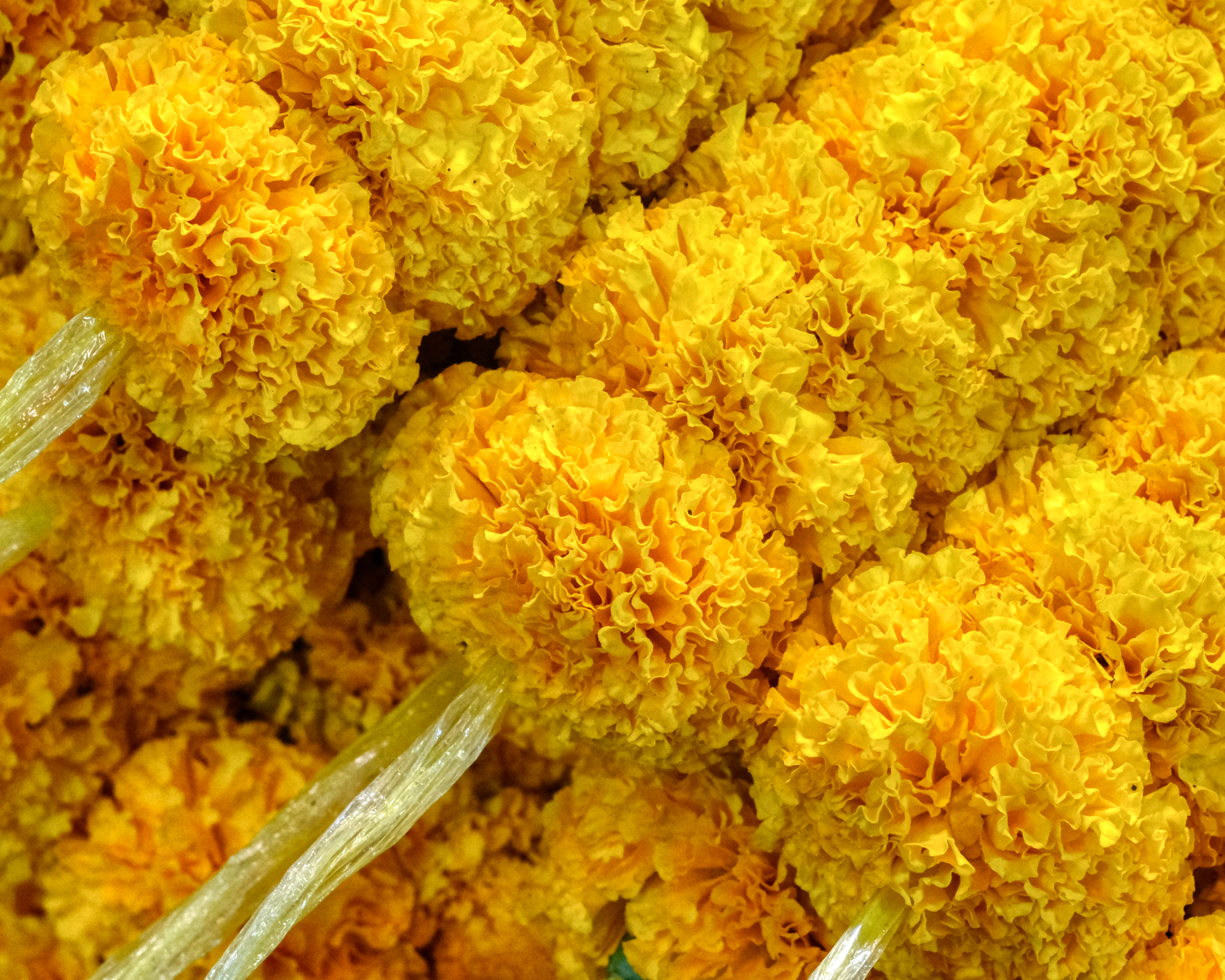 Marigold flowers sold on nylon strings.
Marigold flowers sold on nylon strings.
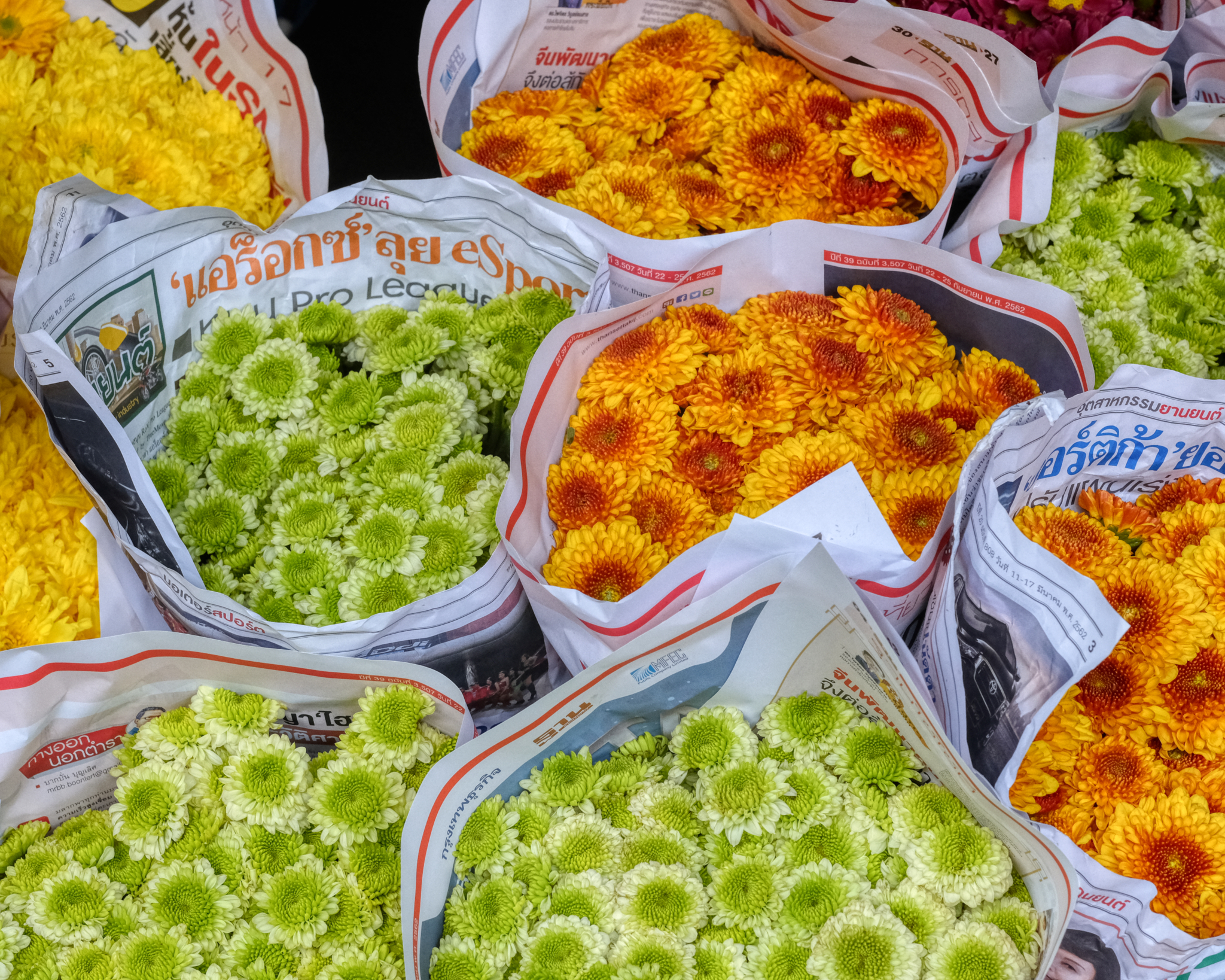 Such a beautiful and colorful array . . .
Such a beautiful and colorful array . . .
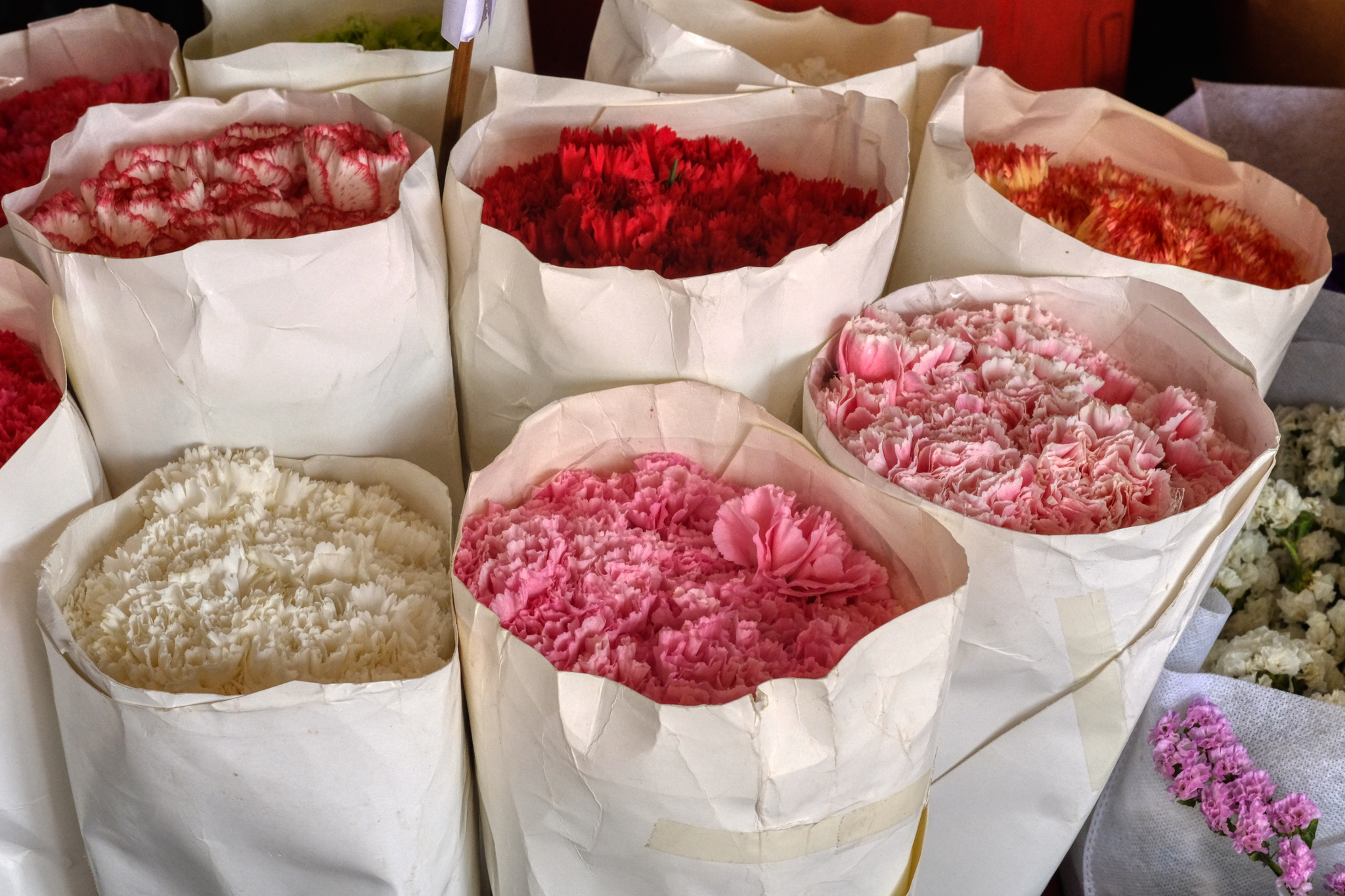 Although the light in the market was not ideal for flower photography, every once in a while there was magic light!
Although the light in the market was not ideal for flower photography, every once in a while there was magic light!
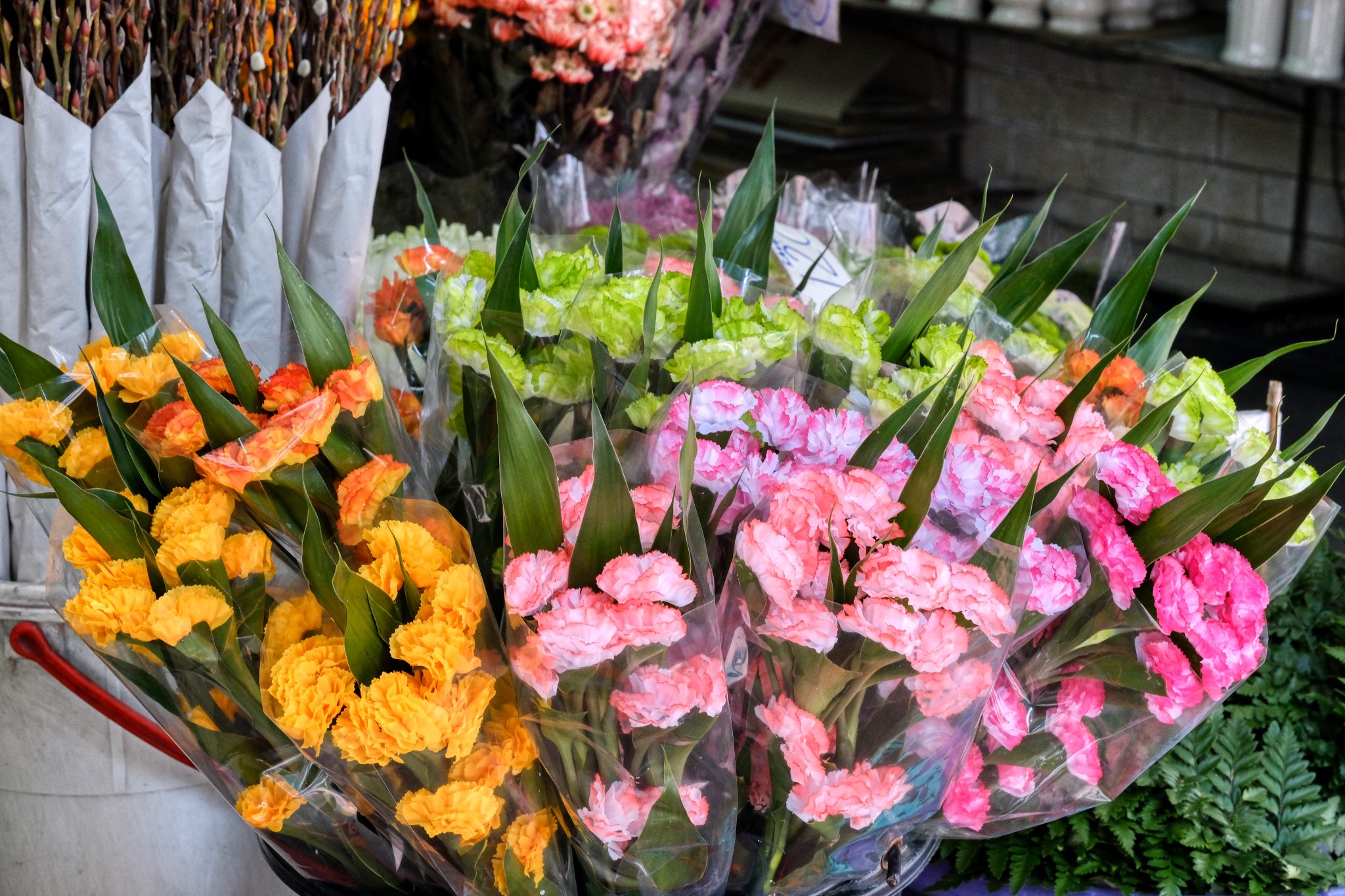 Pretty little things!
Pretty little things!
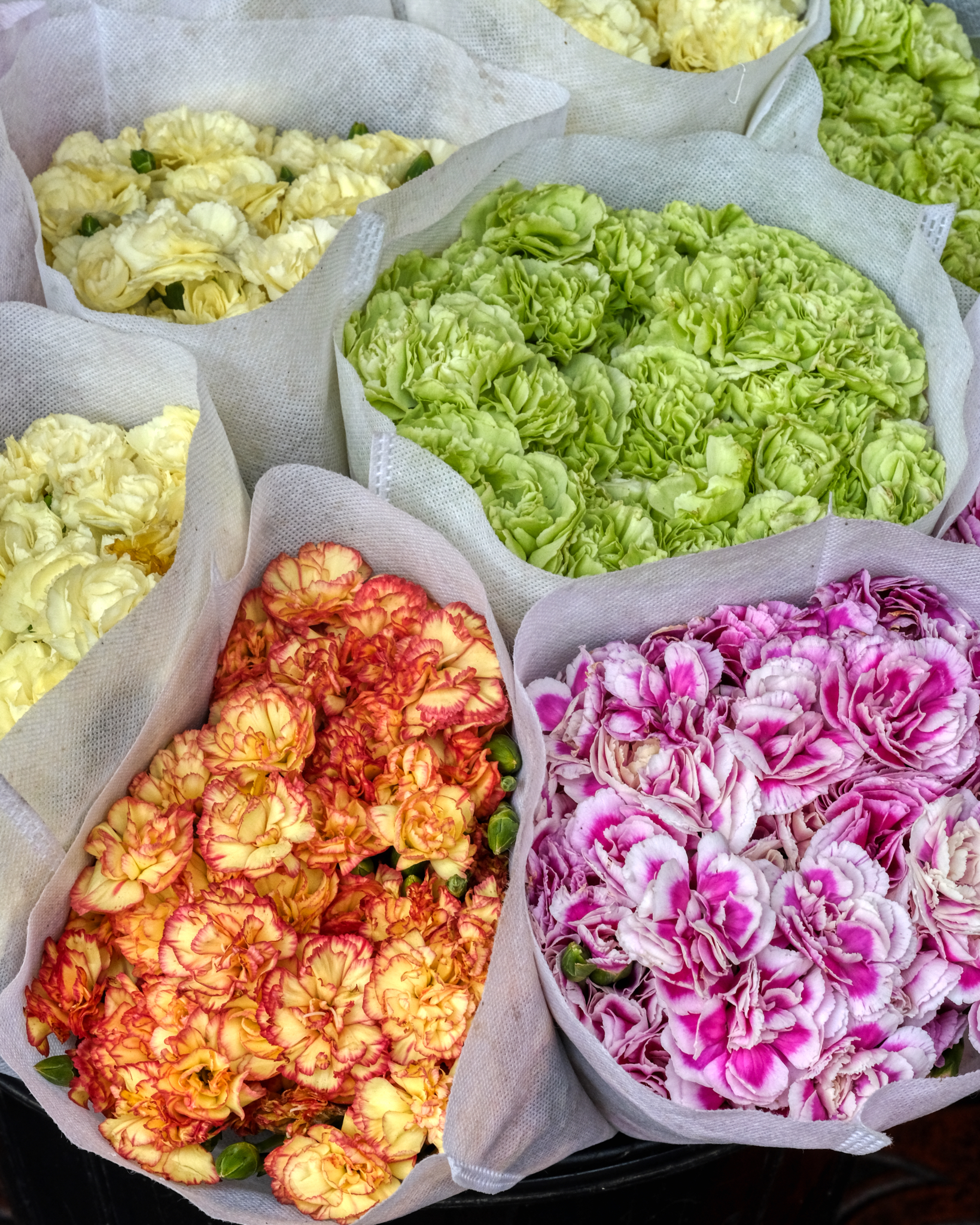 Bunches and bunches of flowers.
Bunches and bunches of flowers.
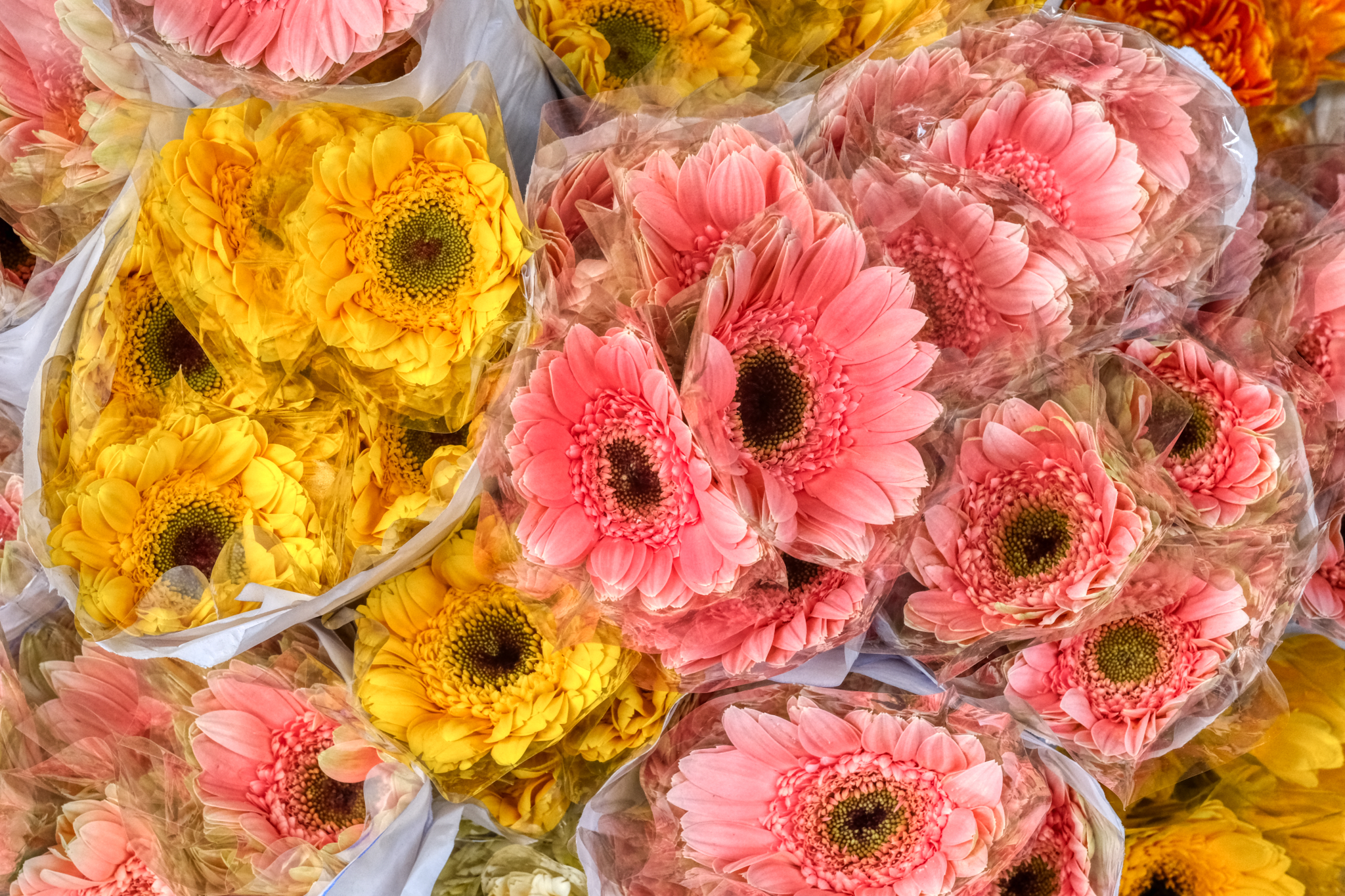 And bundles and bundles of beautiful flowers.
And bundles and bundles of beautiful flowers.
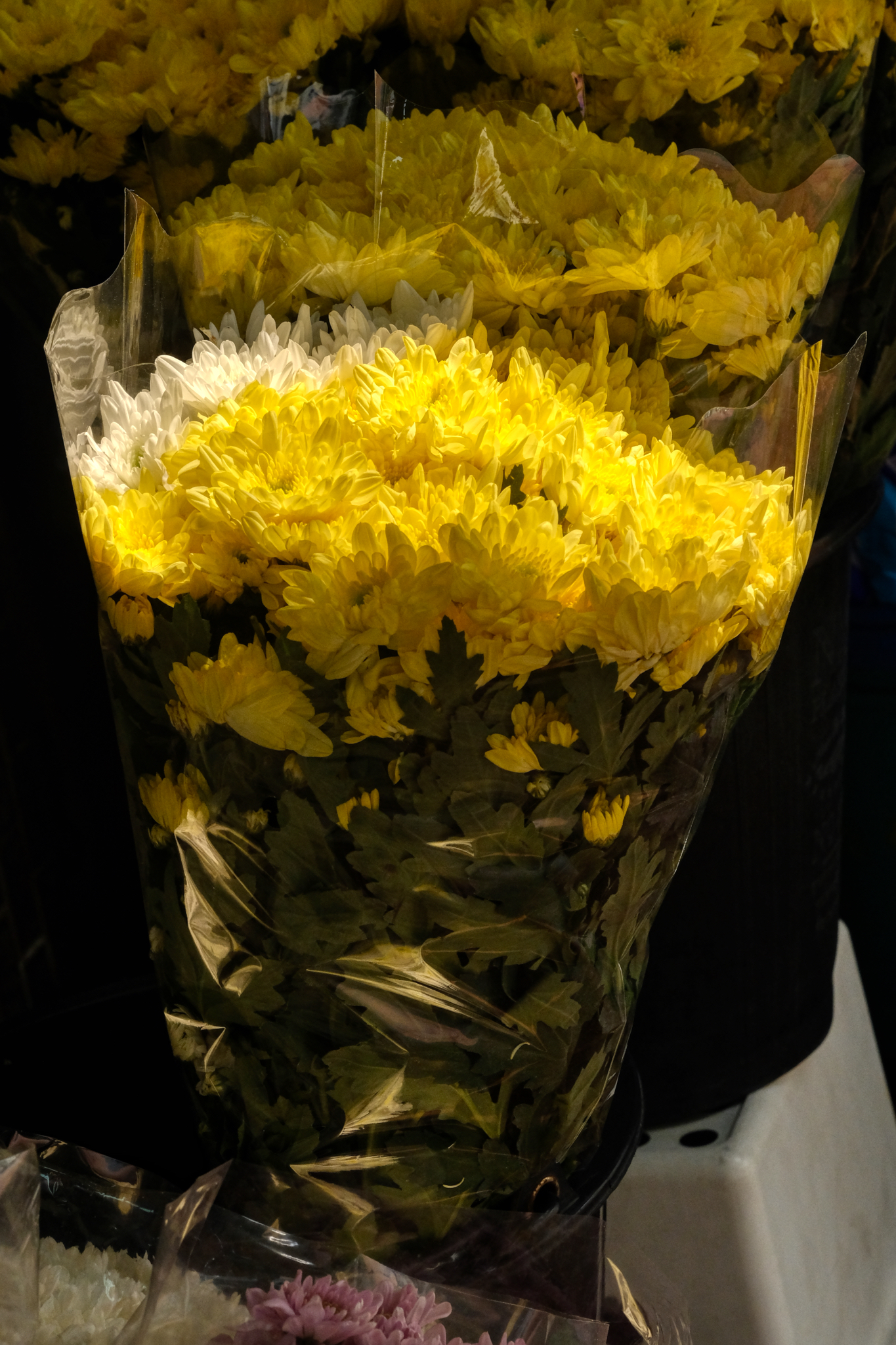 And this extraordinary bouquet!
And this extraordinary bouquet!
 Individually hand-wrapped chrysanthemums.
Individually hand-wrapped chrysanthemums.
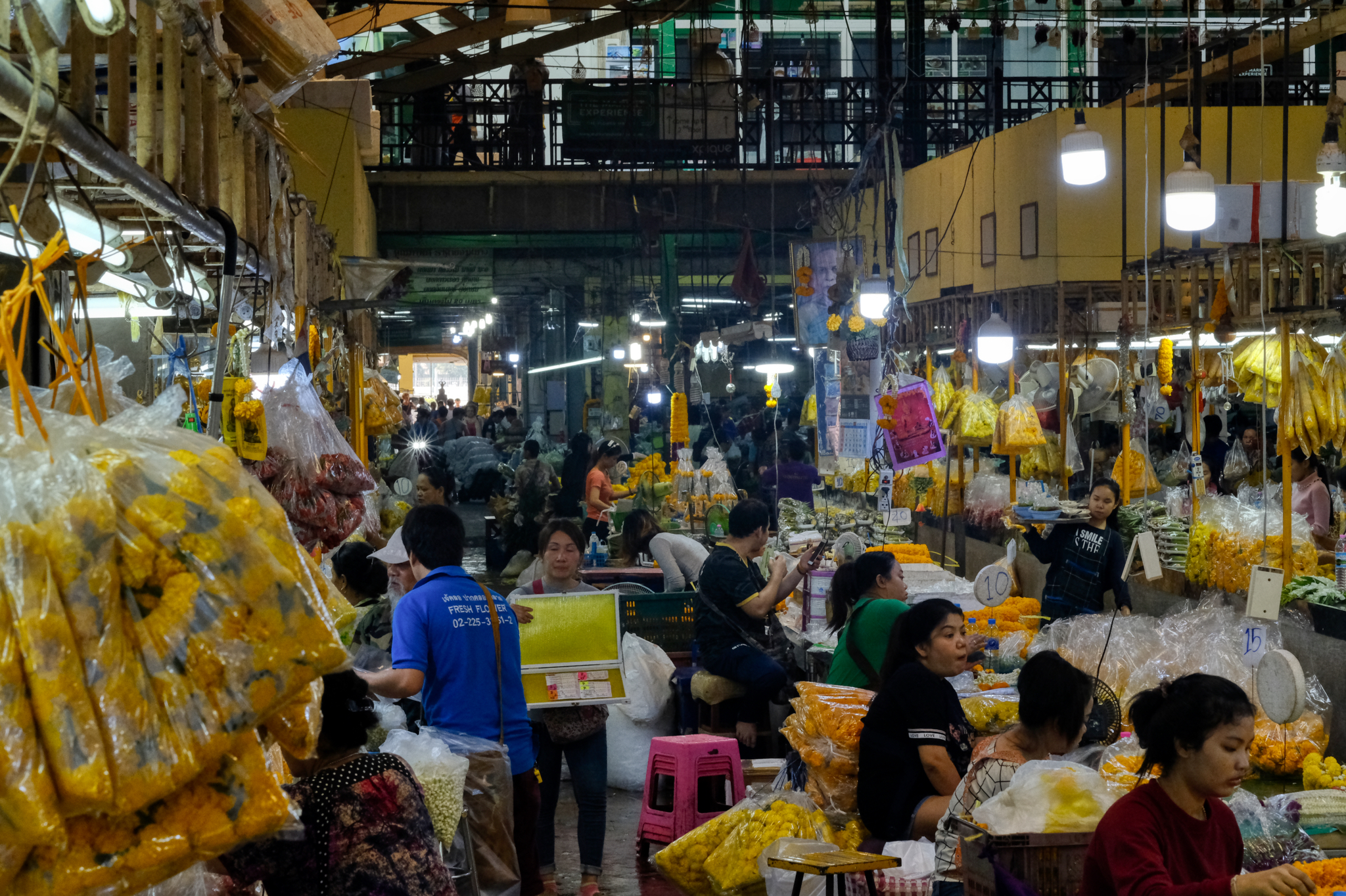 Inside the flower market. This was at around 9:30am and lots of the stalls were already closed . . . sold out.
Inside the flower market. This was at around 9:30am and lots of the stalls were already closed . . . sold out.
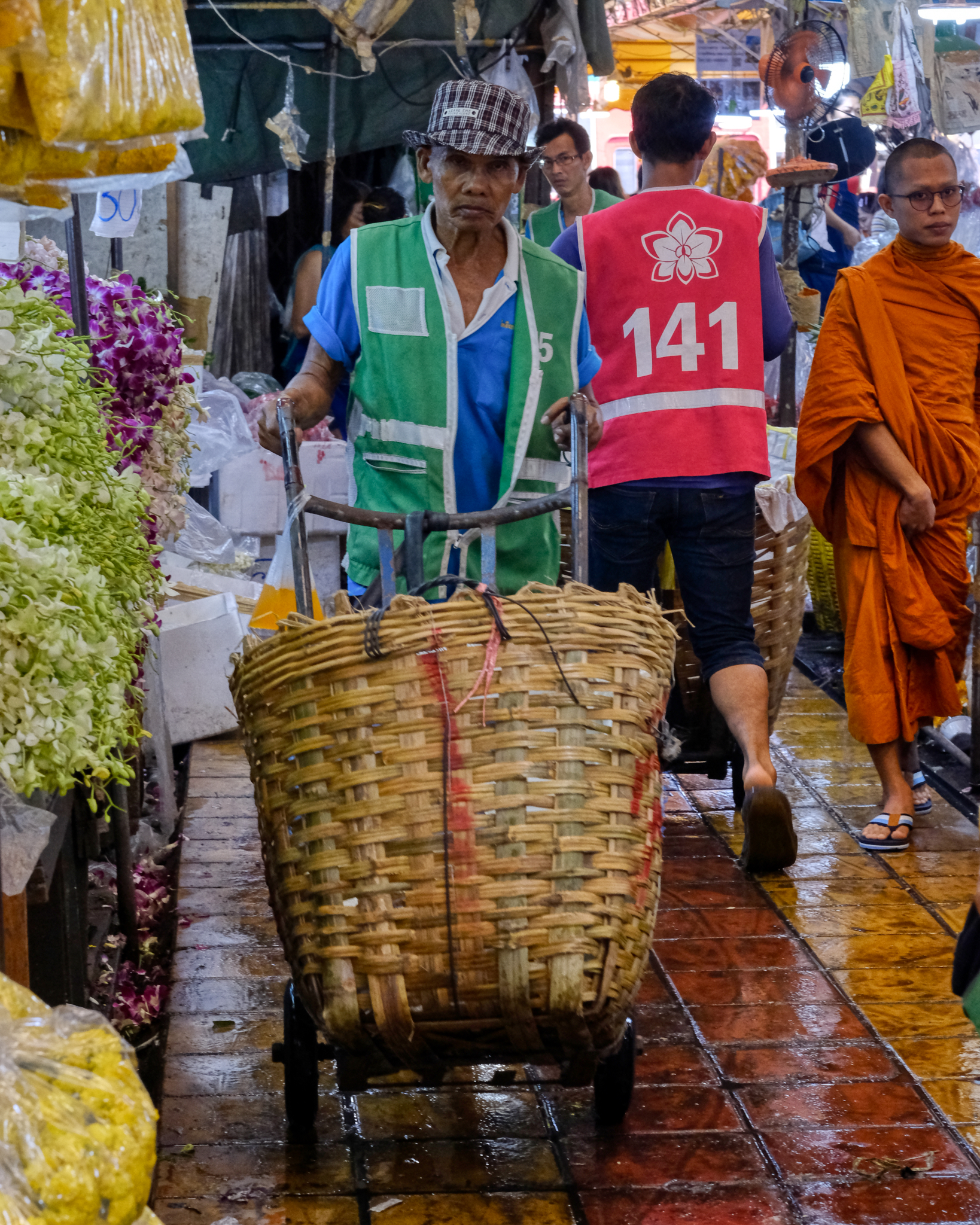 A market draymen moving purchases out of the market to waiting tuk-tuk delivery.
A market draymen moving purchases out of the market to waiting tuk-tuk delivery.
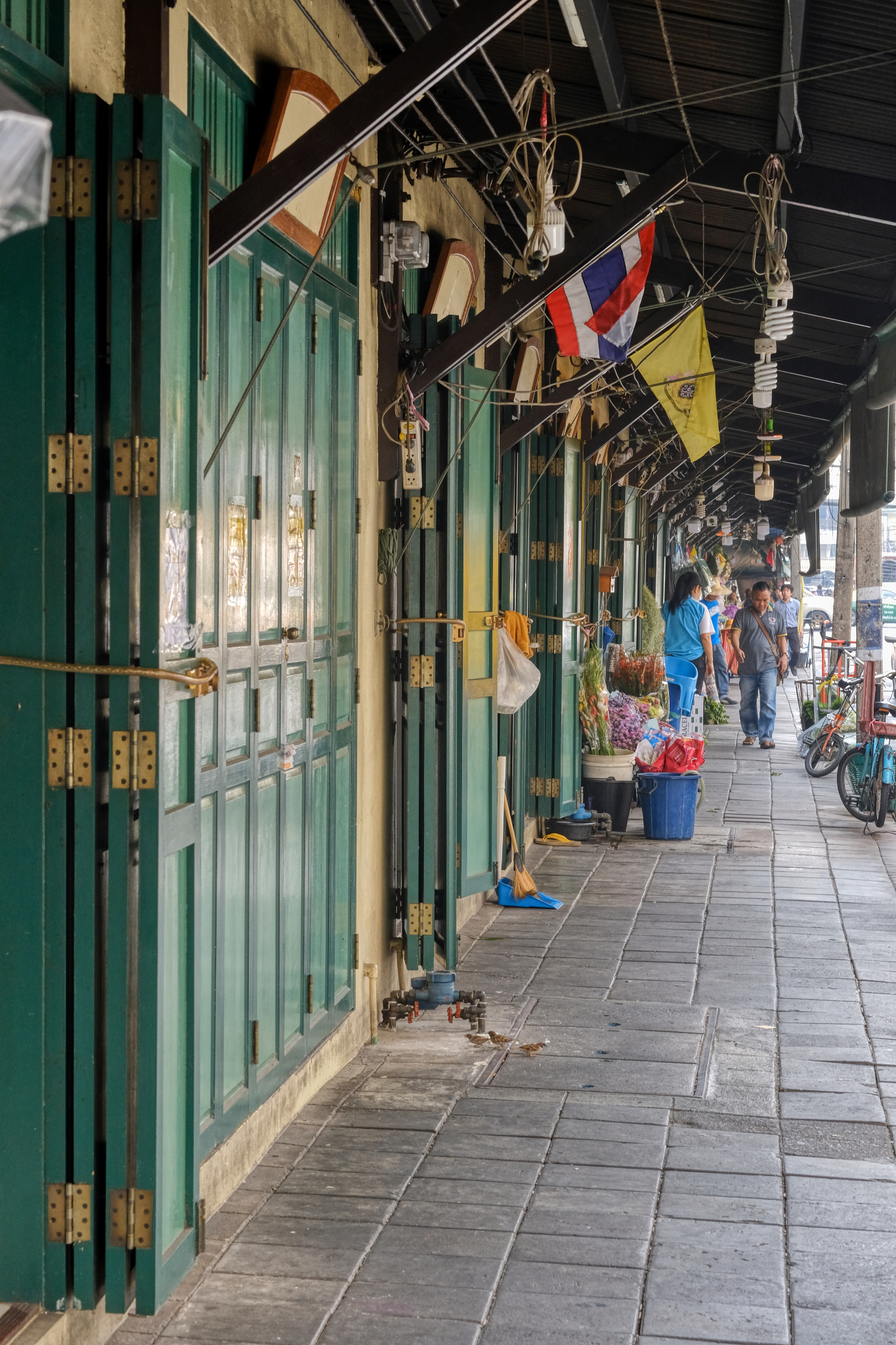 The area around the flower is made up of many rows of old shop houses.
The area around the flower is made up of many rows of old shop houses.
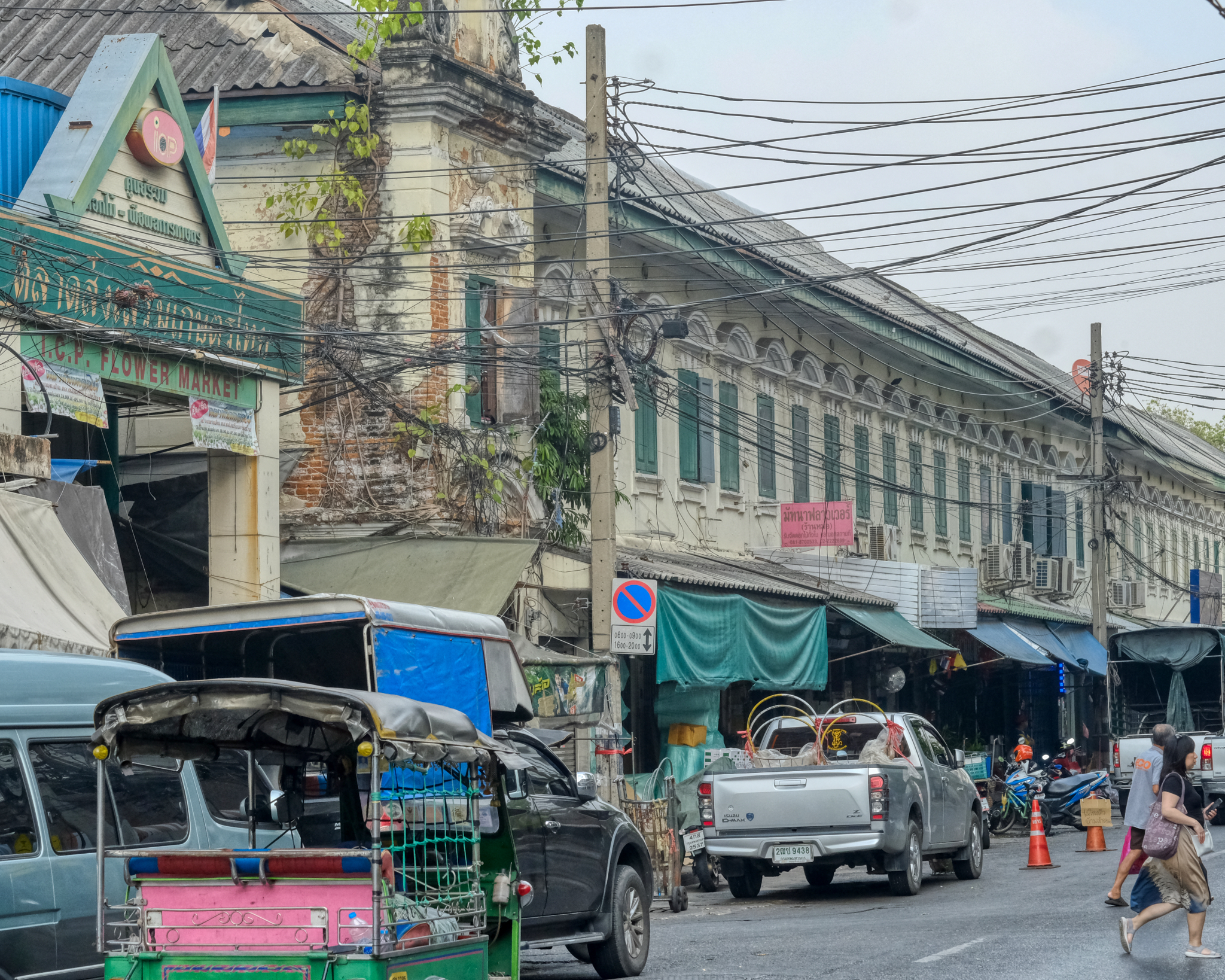 The flower market is in a very old part of Bangkok, not far from the Chao River and just north of the Chinatown district.
The flower market is in a very old part of Bangkok, not far from the Chao River and just north of the Chinatown district.
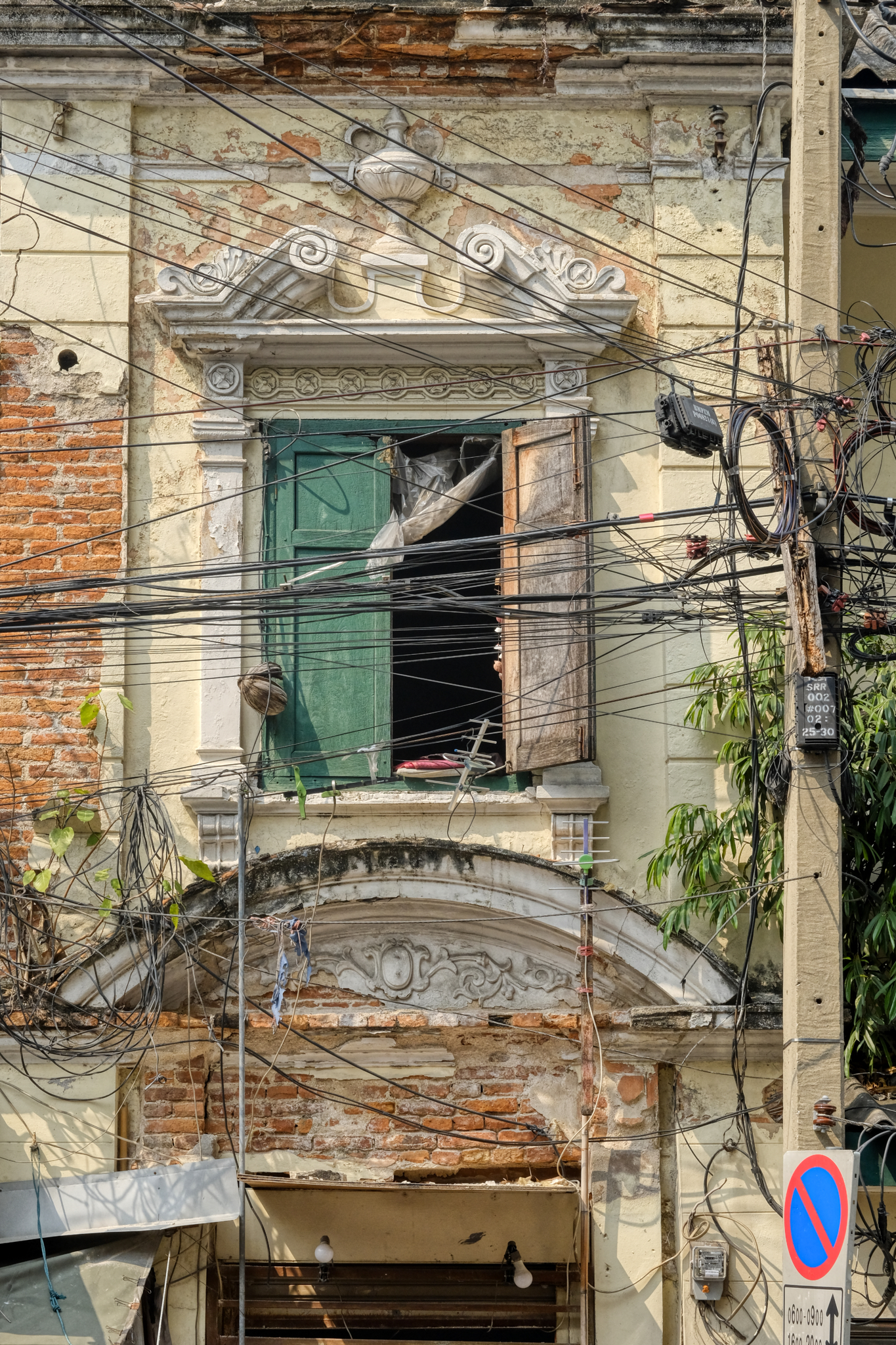 Remnants of Old Bangkok can be seen in and among the complexity of the streets.
Remnants of Old Bangkok can be seen in and among the complexity of the streets.
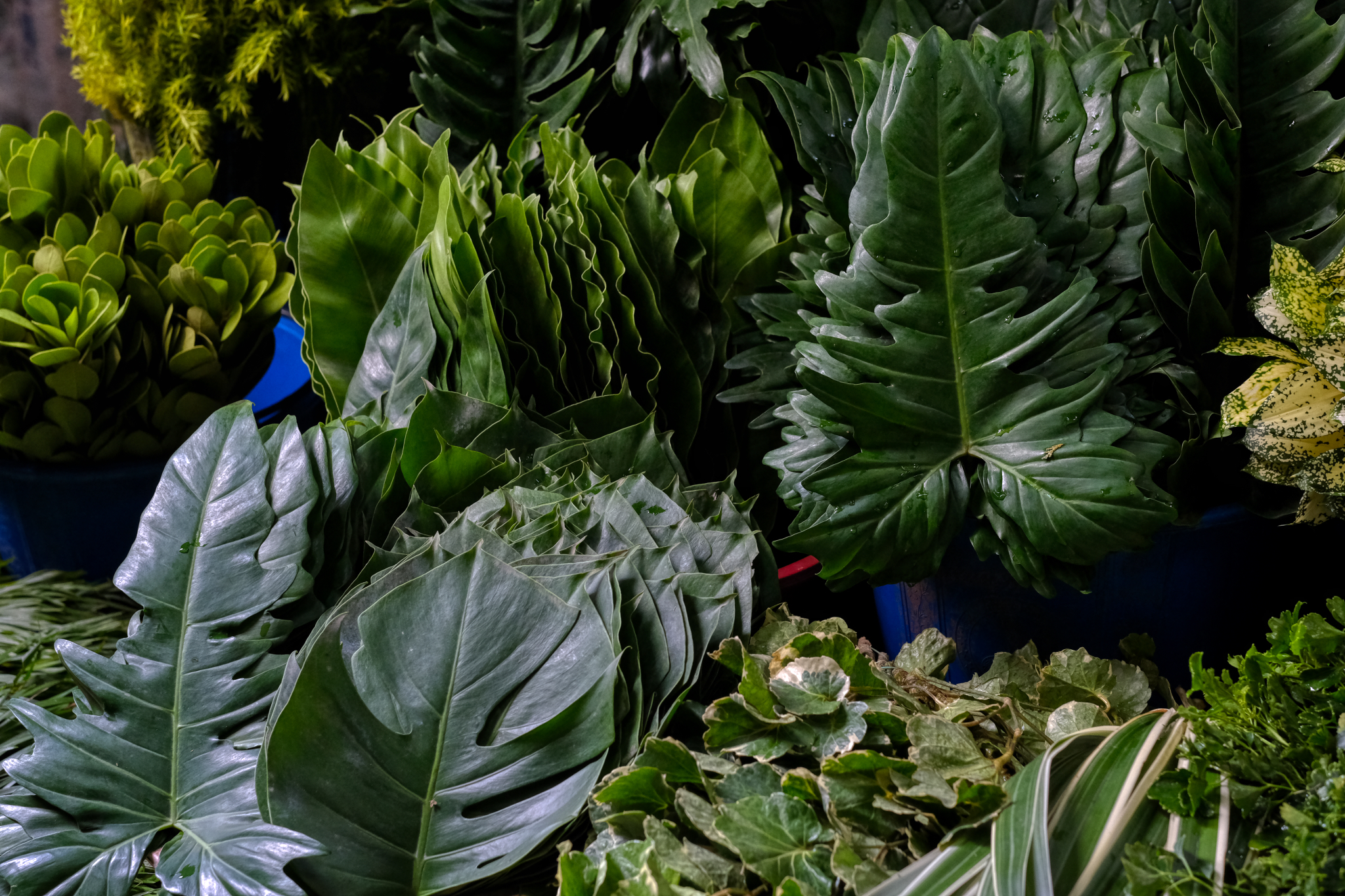 Not only flowers . . . but everything a creative flower arranger might want to employ in a tropical flower arrangement!
Not only flowers . . . but everything a creative flower arranger might want to employ in a tropical flower arrangement!
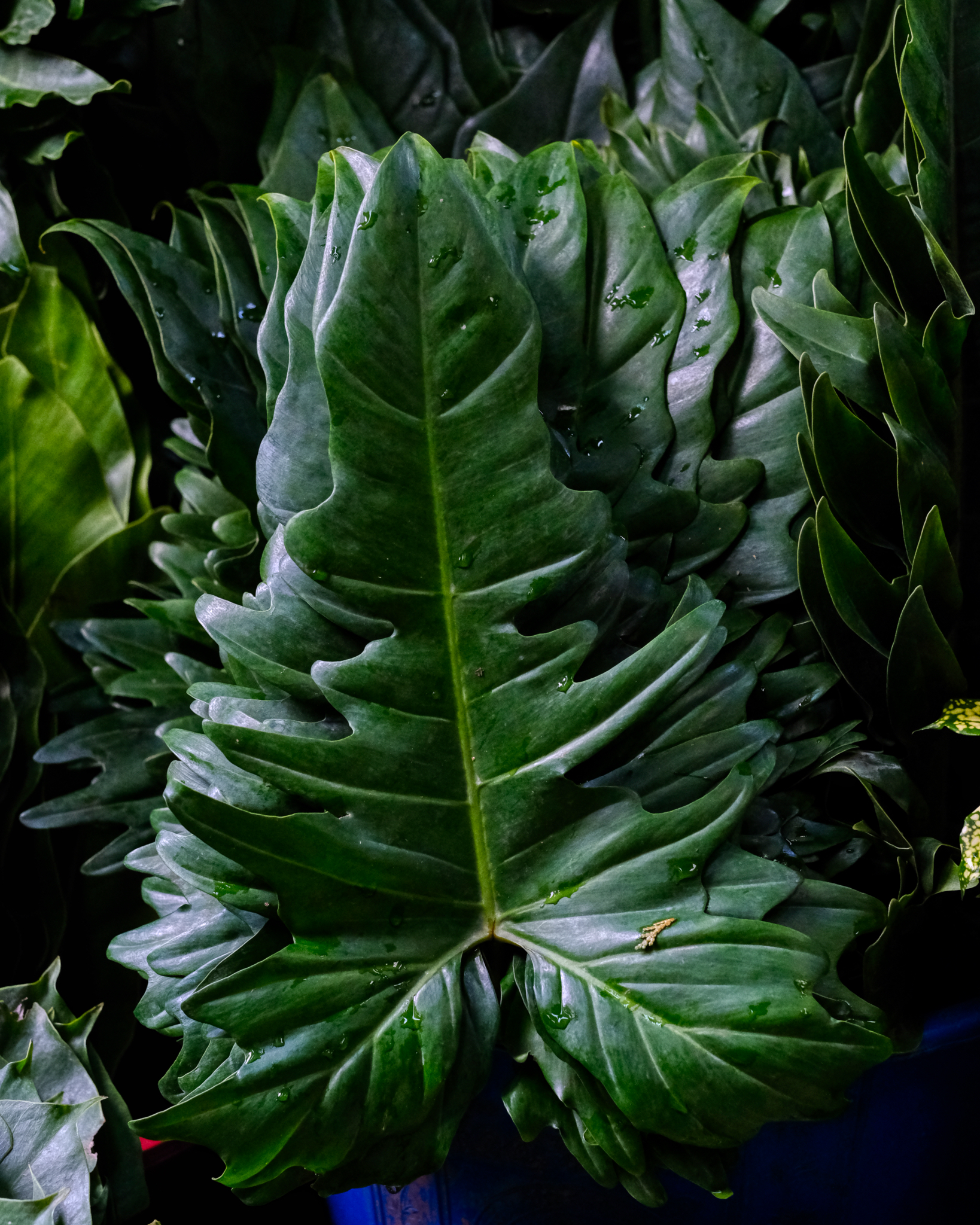 Existentially beautiful tropical leaf.
Existentially beautiful tropical leaf.
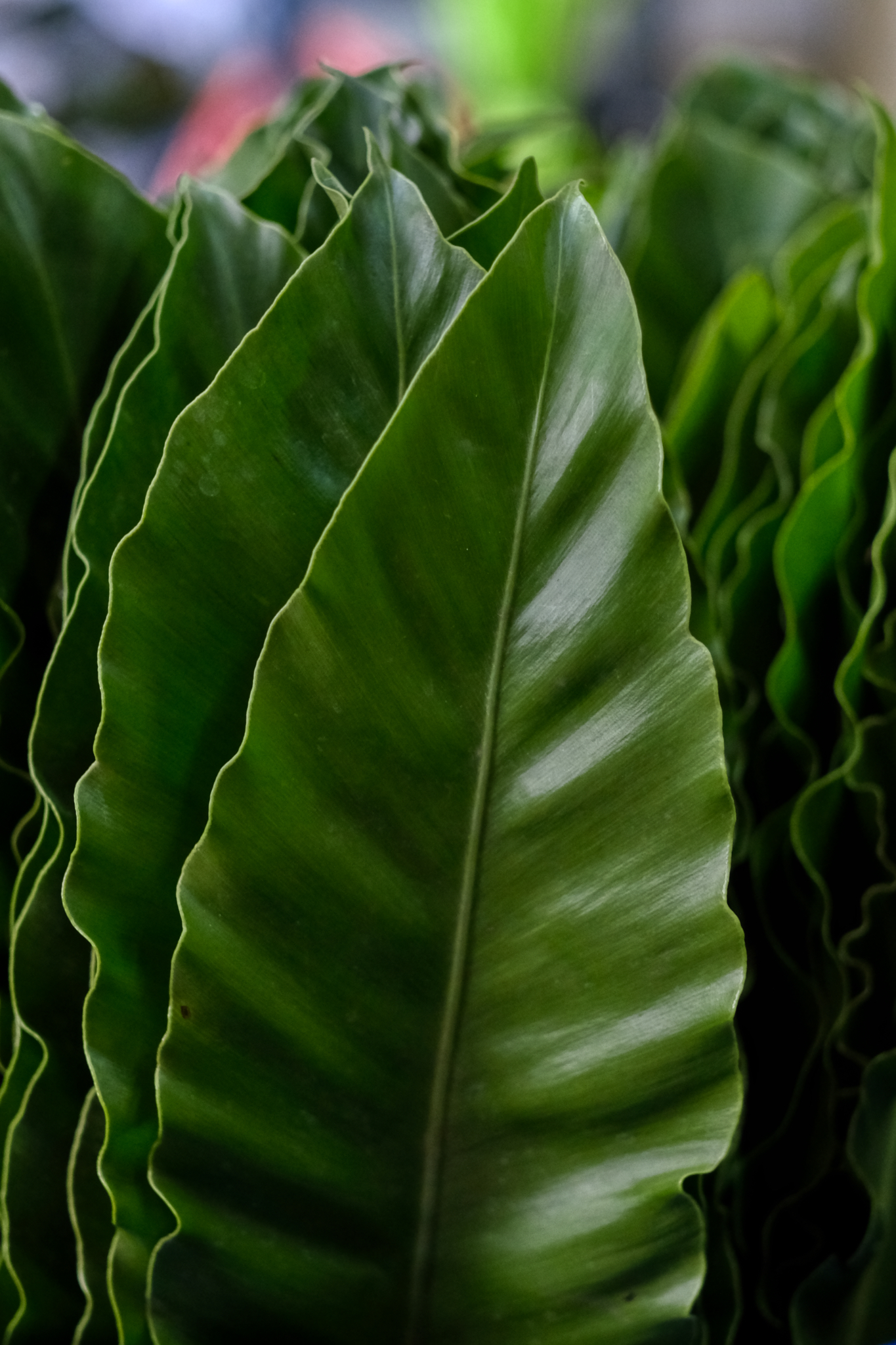 Gorgeous.
Gorgeous.
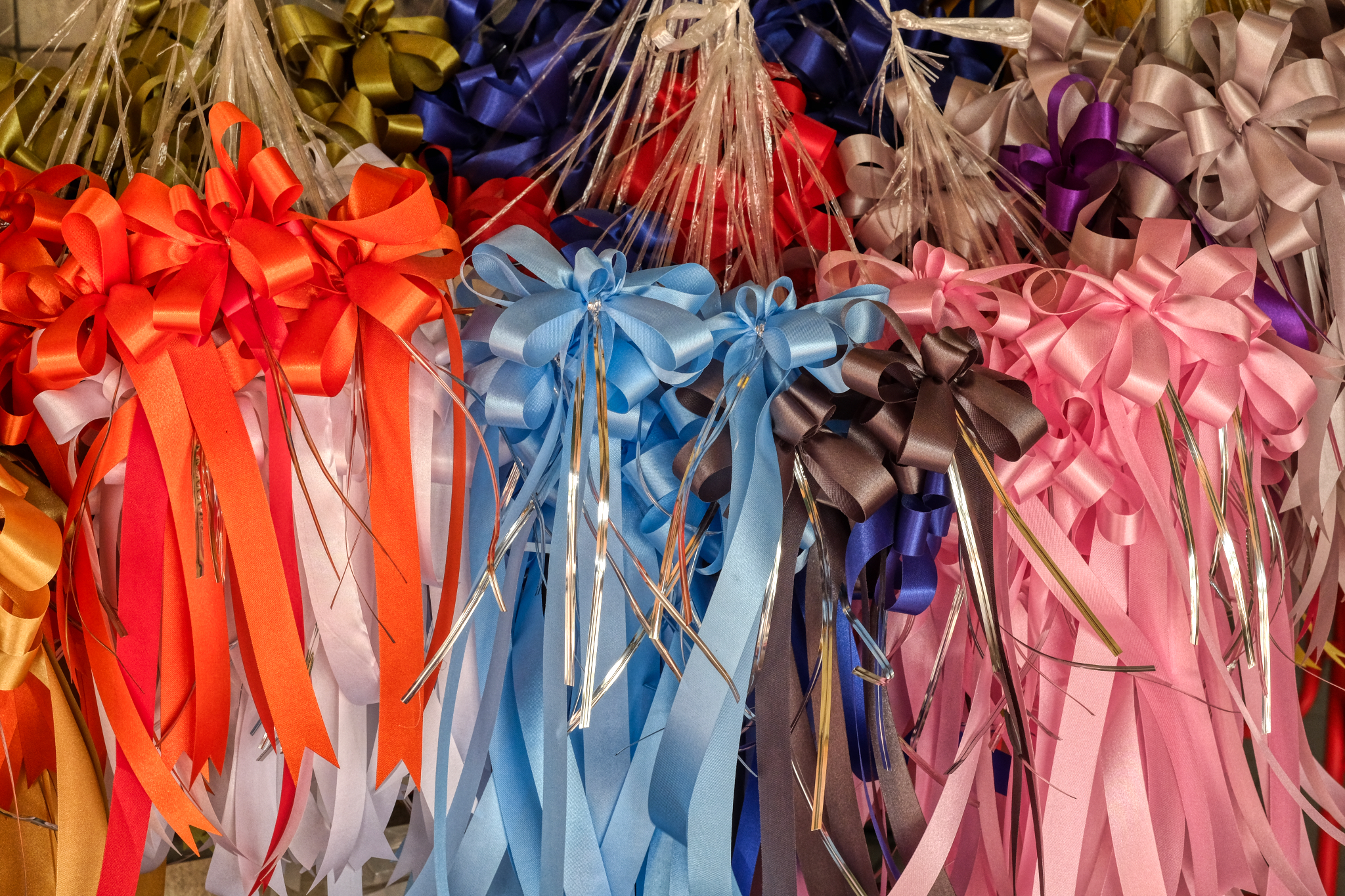 And ribbons and bows for that special wedding or graduation event.
And ribbons and bows for that special wedding or graduation event.
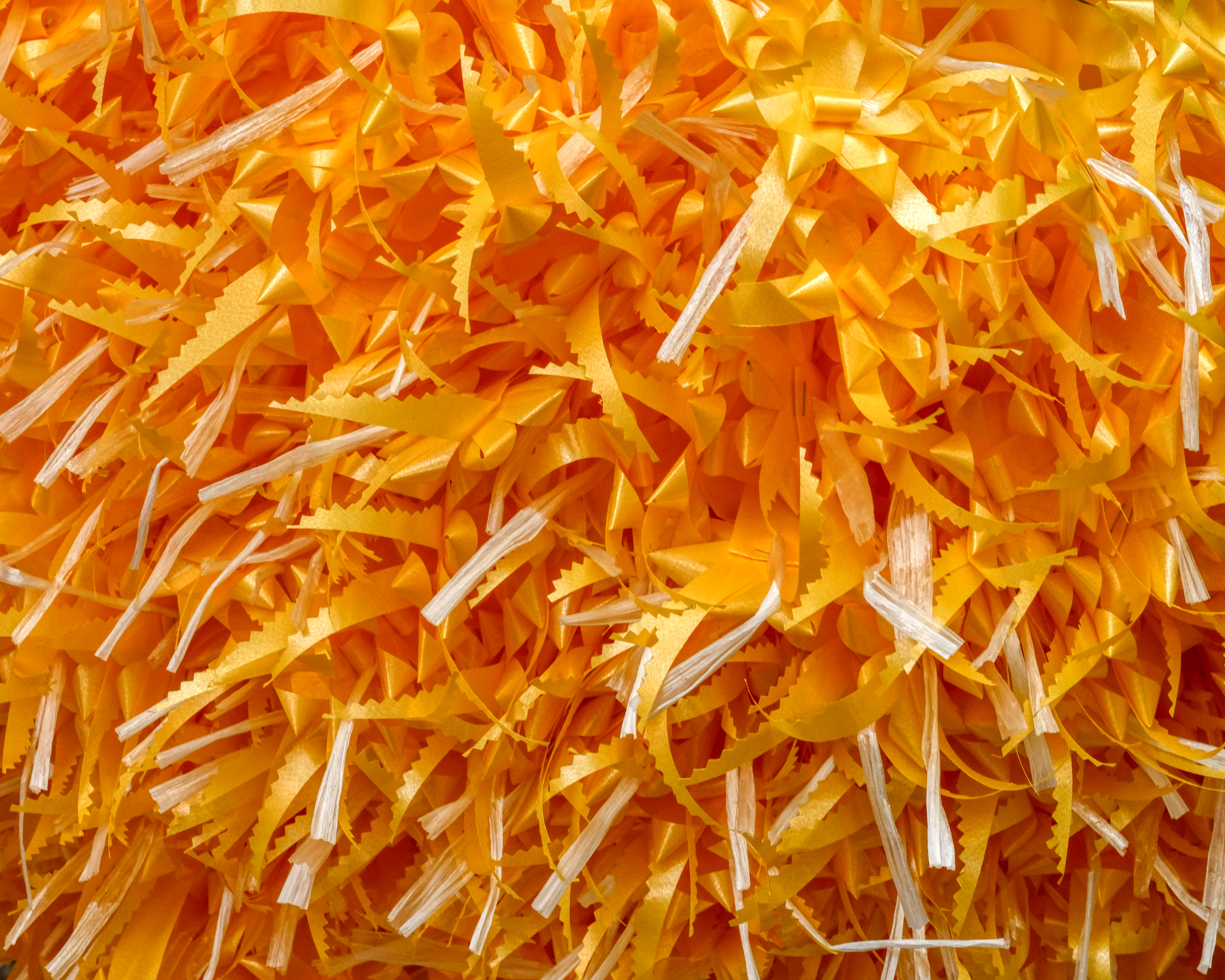 A complete flower arranger super store!
A complete flower arranger super store!
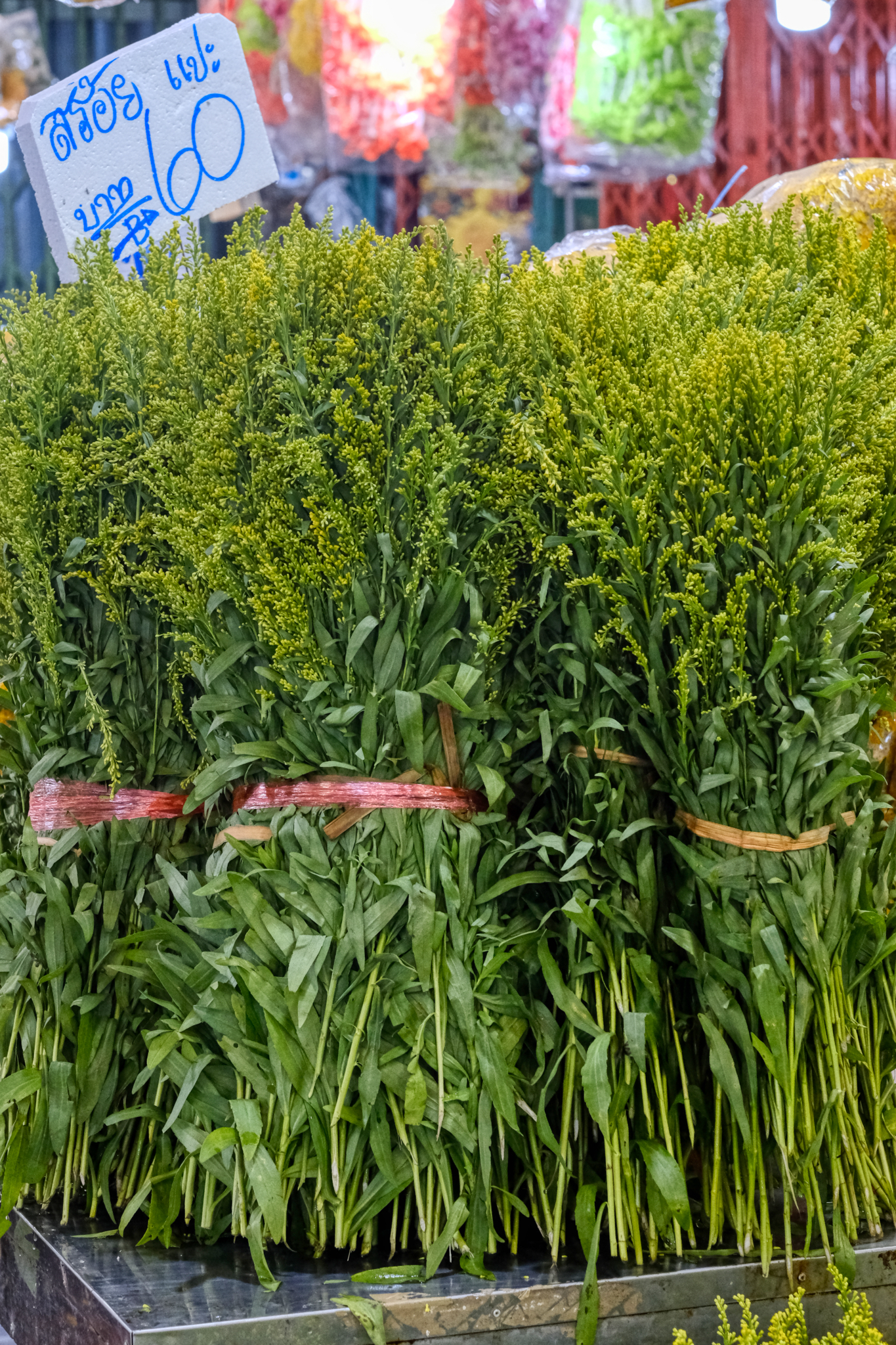 Need some green sprigs with little buds for your arrangement . . . sure, they have them.
Need some green sprigs with little buds for your arrangement . . . sure, they have them.
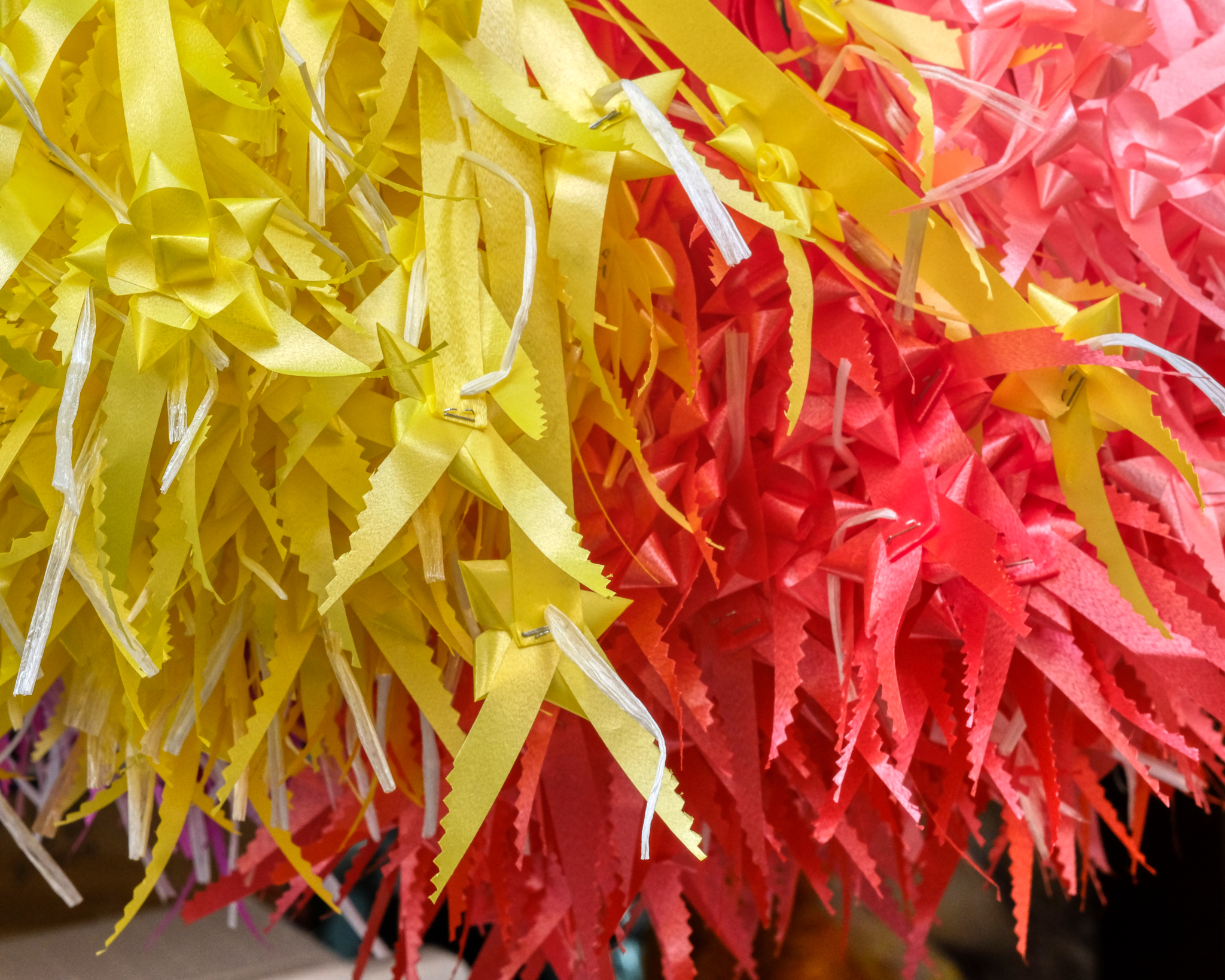 And ribbons and bows . . .
And ribbons and bows . . .
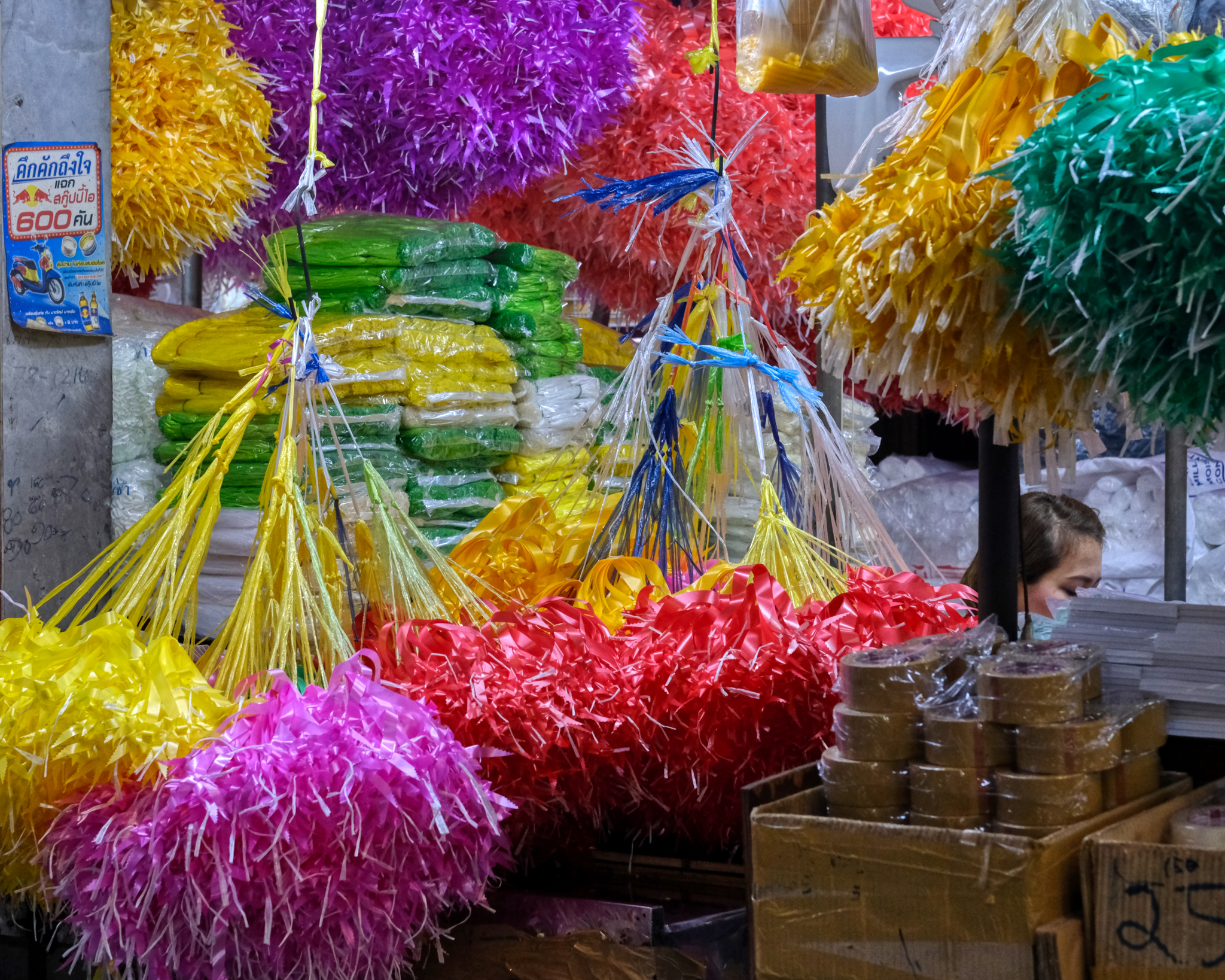 . . . bunches and bunches of ribbons and bows.
. . . bunches and bunches of ribbons and bows.
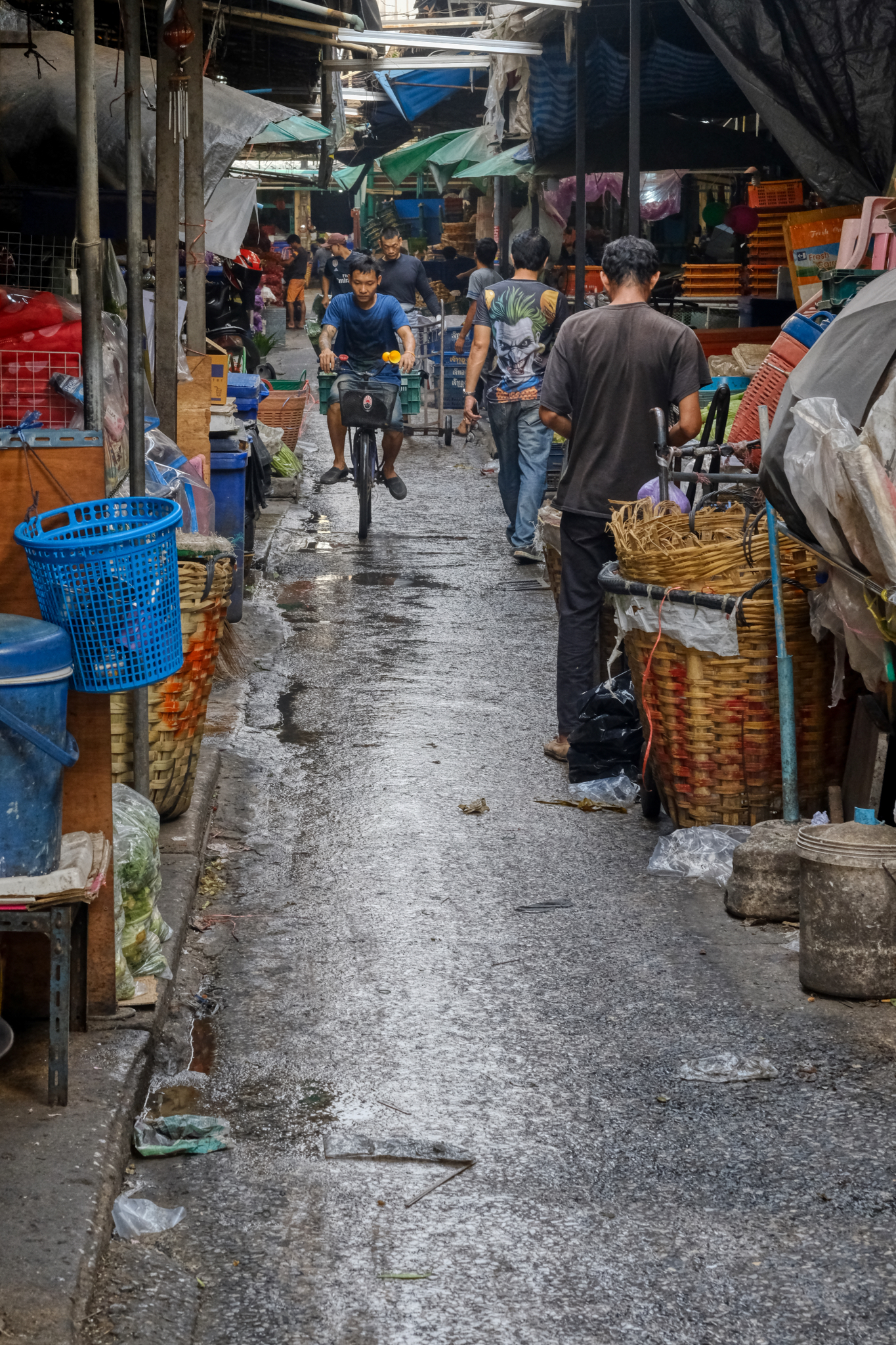 The back side of the flower market blends into a traditional, and common, Bangkok "wet market" -- a fresh fruit and vegetable market.
The back side of the flower market blends into a traditional, and common, Bangkok "wet market" -- a fresh fruit and vegetable market.
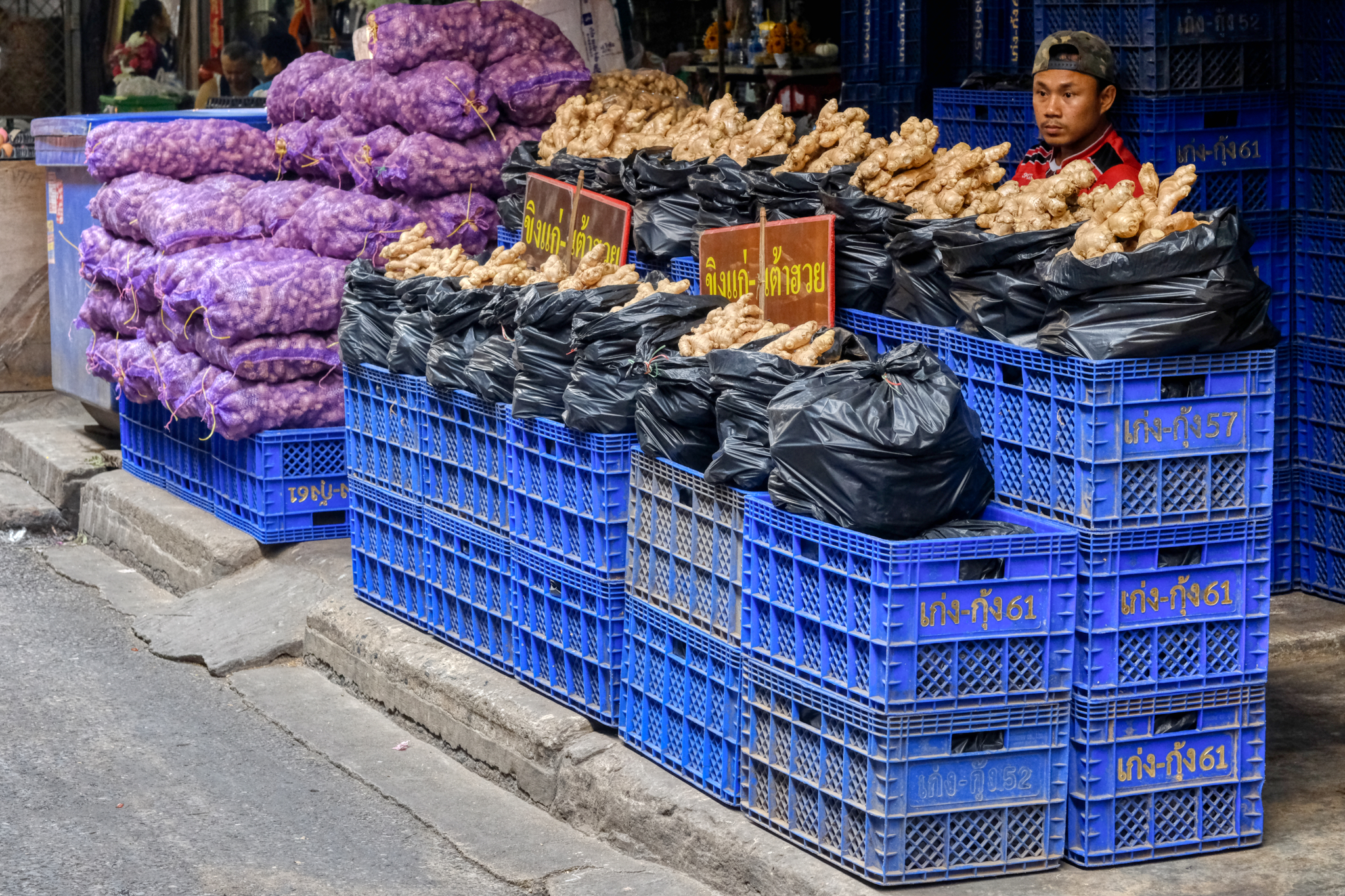 A ginger hawker's display.
A ginger hawker's display.
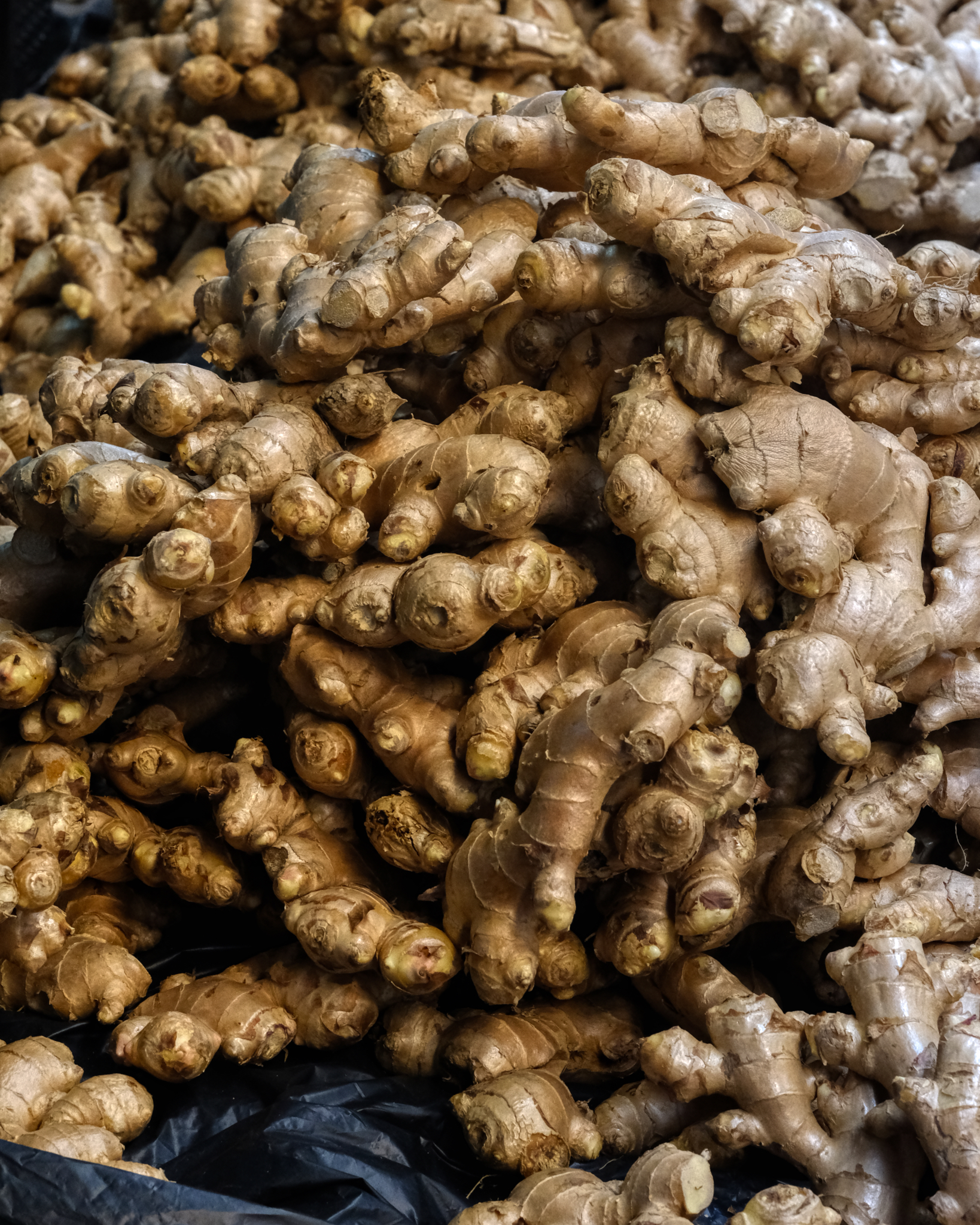 Beautiful ginger. I love ginger . . . and many Thai dishes are made with ginger . . . especially Thai desserts, my favorite.
Beautiful ginger. I love ginger . . . and many Thai dishes are made with ginger . . . especially Thai desserts, my favorite.
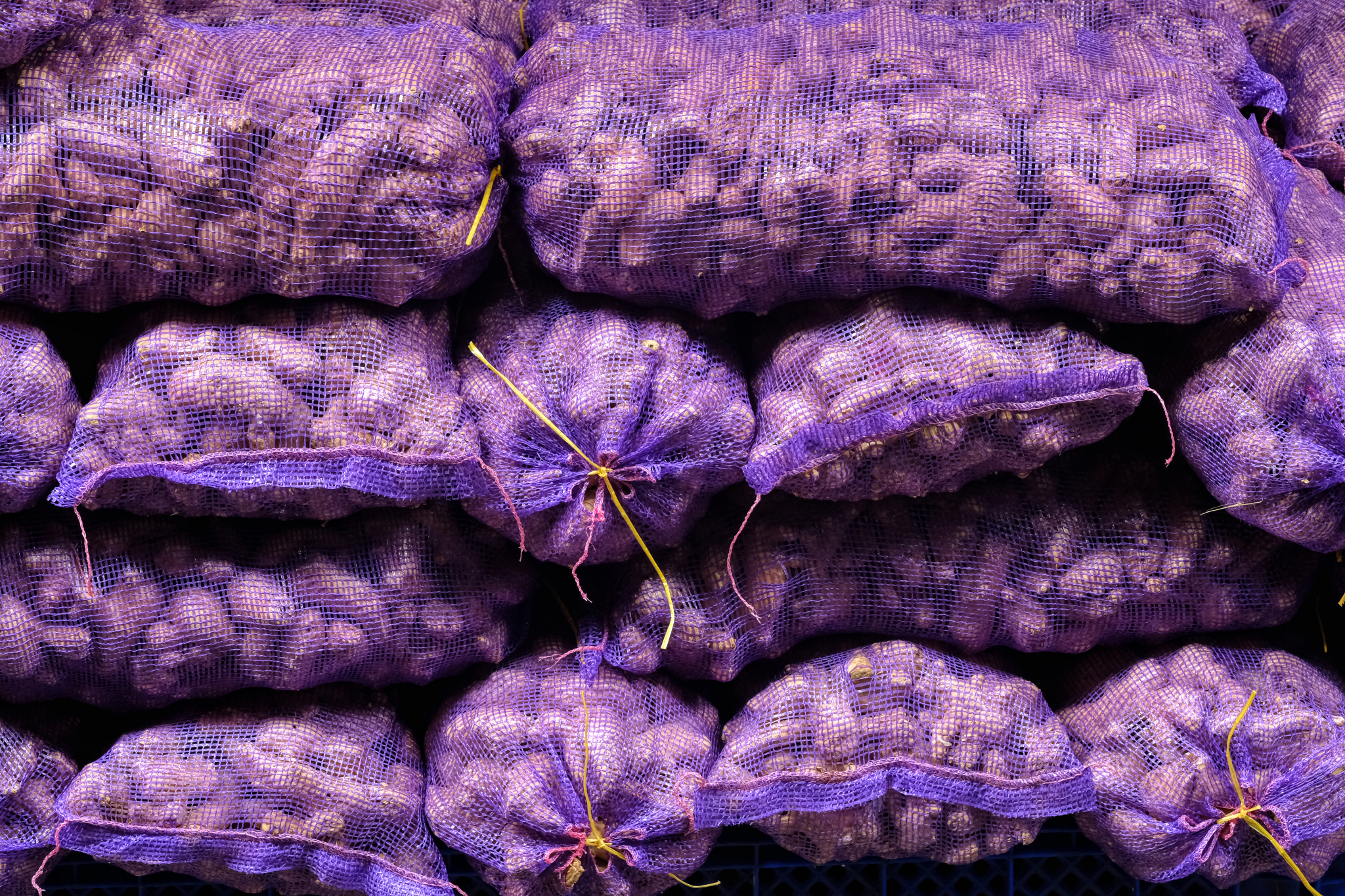 Purple net sacks full of potatoes.
Purple net sacks full of potatoes.
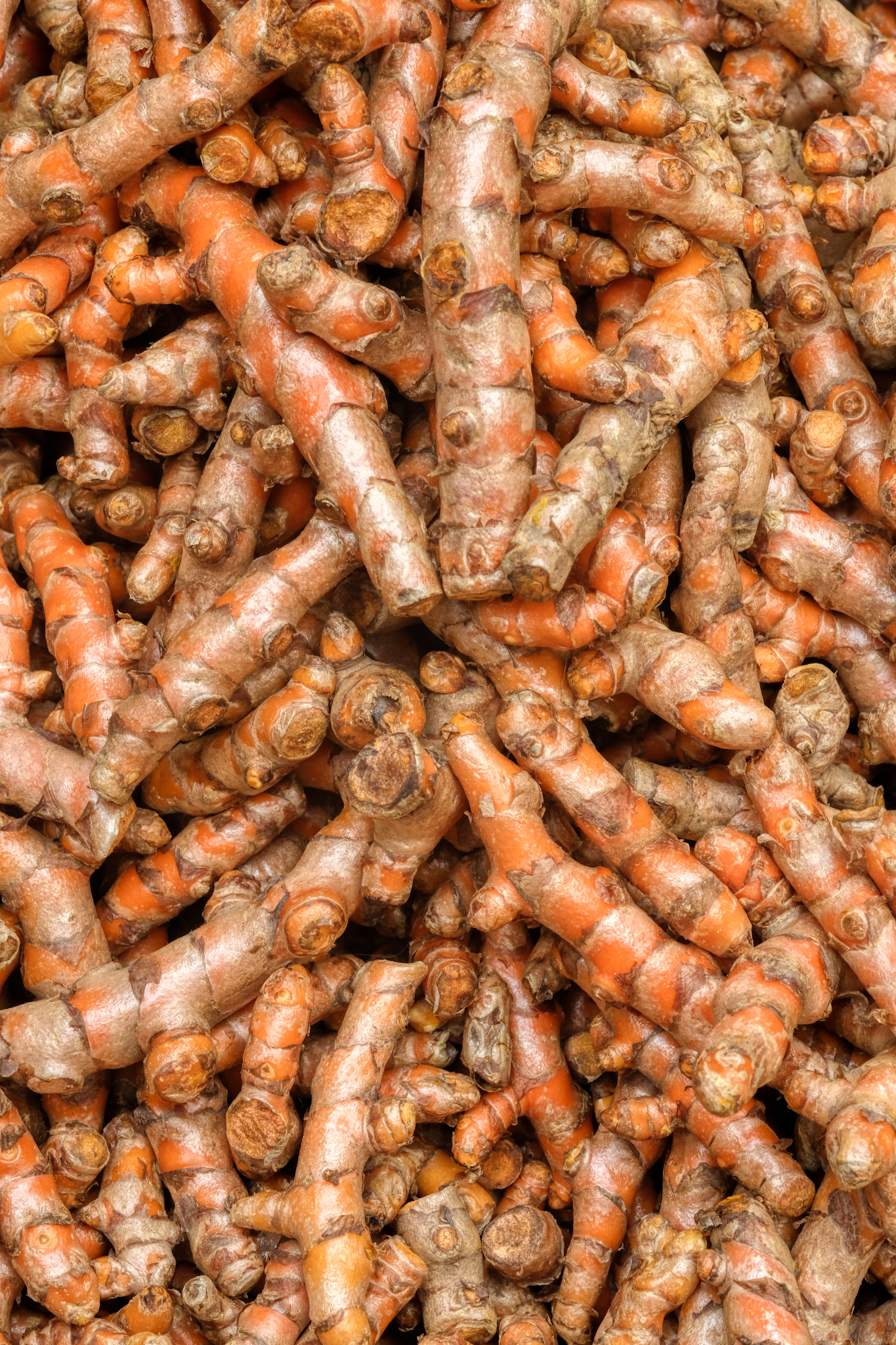 A stack of spice root.
A stack of spice root.
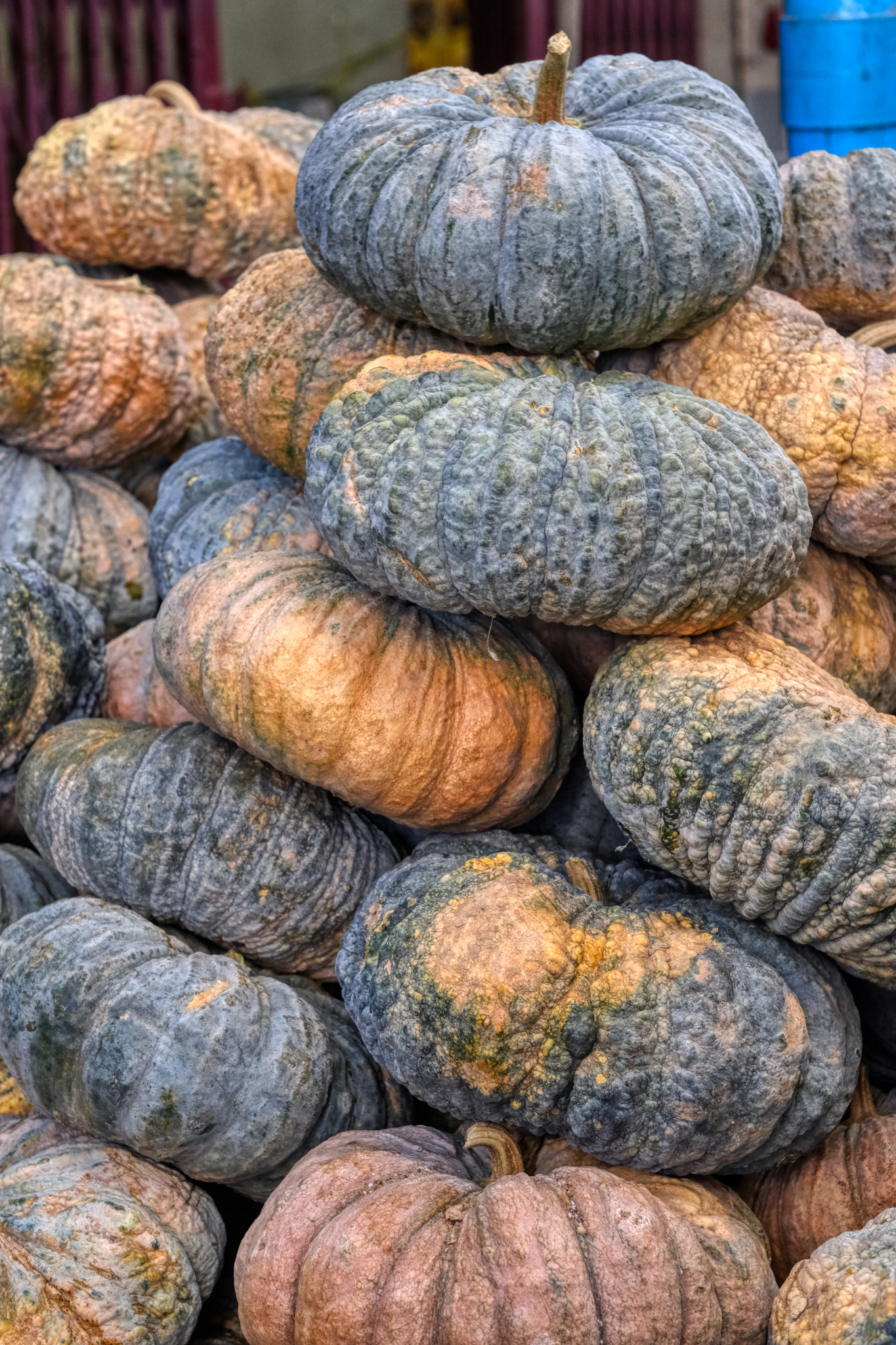 A stack of Thai squash ("fucktong" in Thai).
A stack of Thai squash ("fucktong" in Thai).
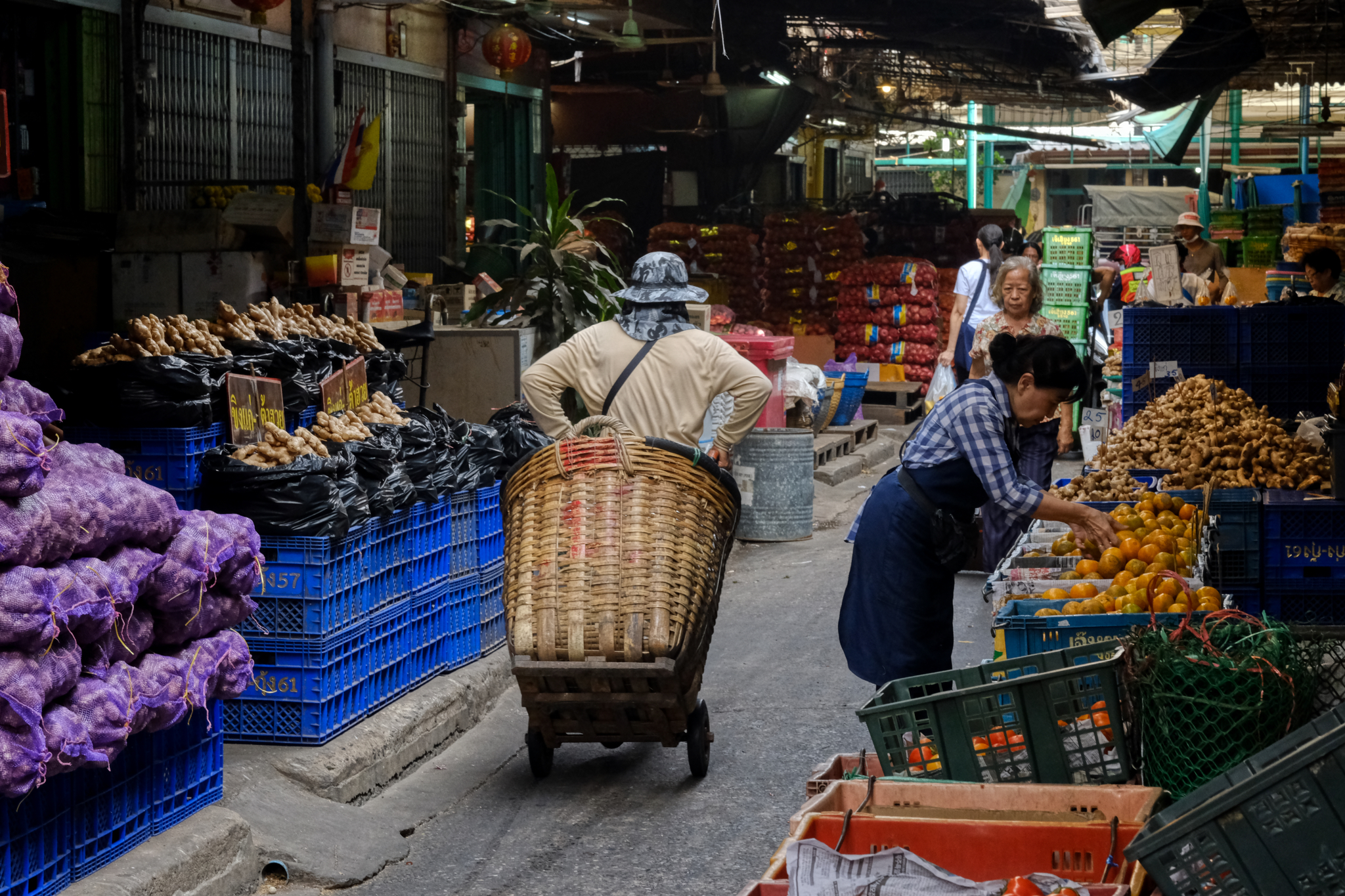 A lot of activity in the vegetable wholesale market.
A lot of activity in the vegetable wholesale market.
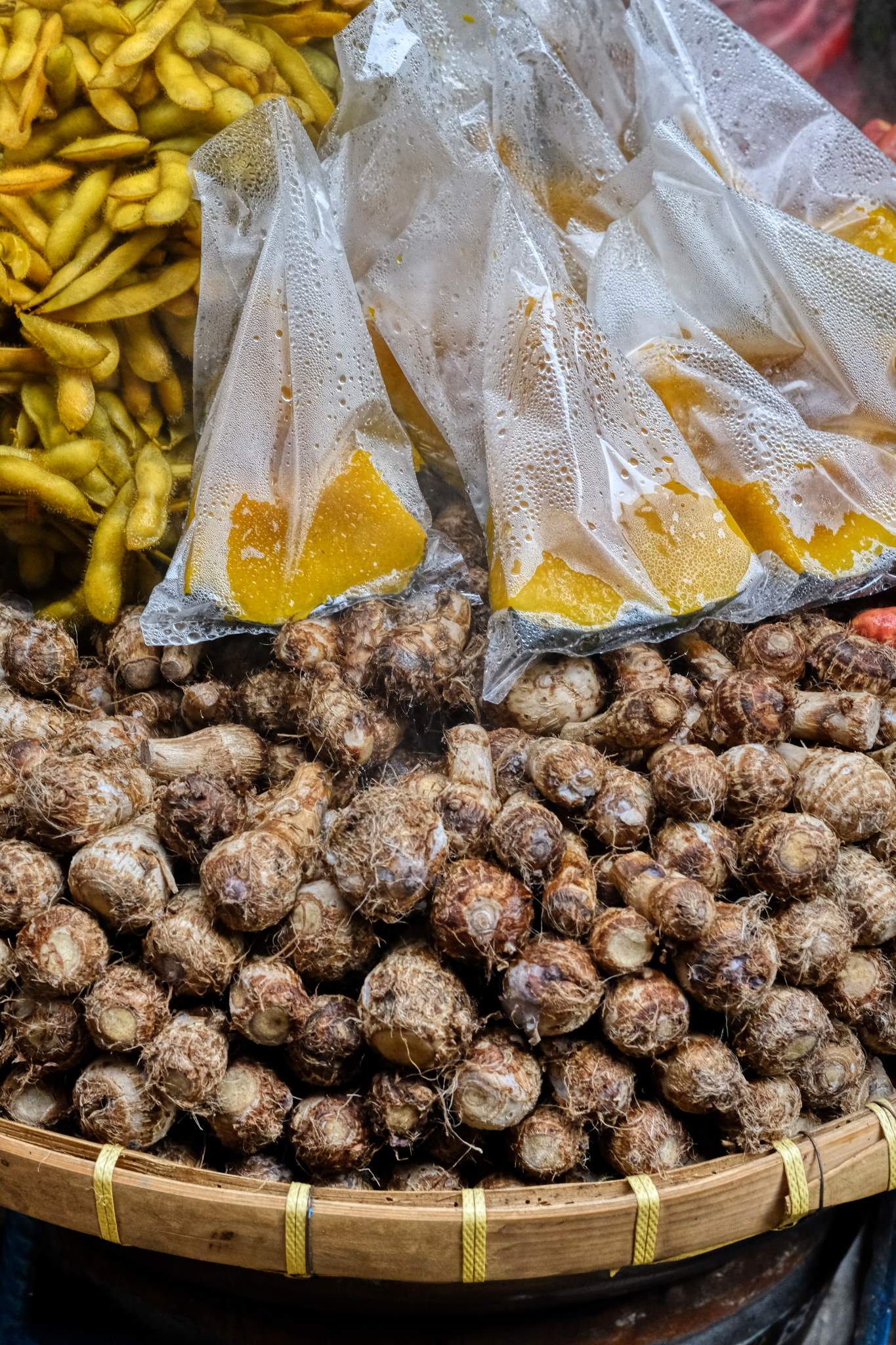 Unique ingredients are what make Thai food so tasty.
Unique ingredients are what make Thai food so tasty.
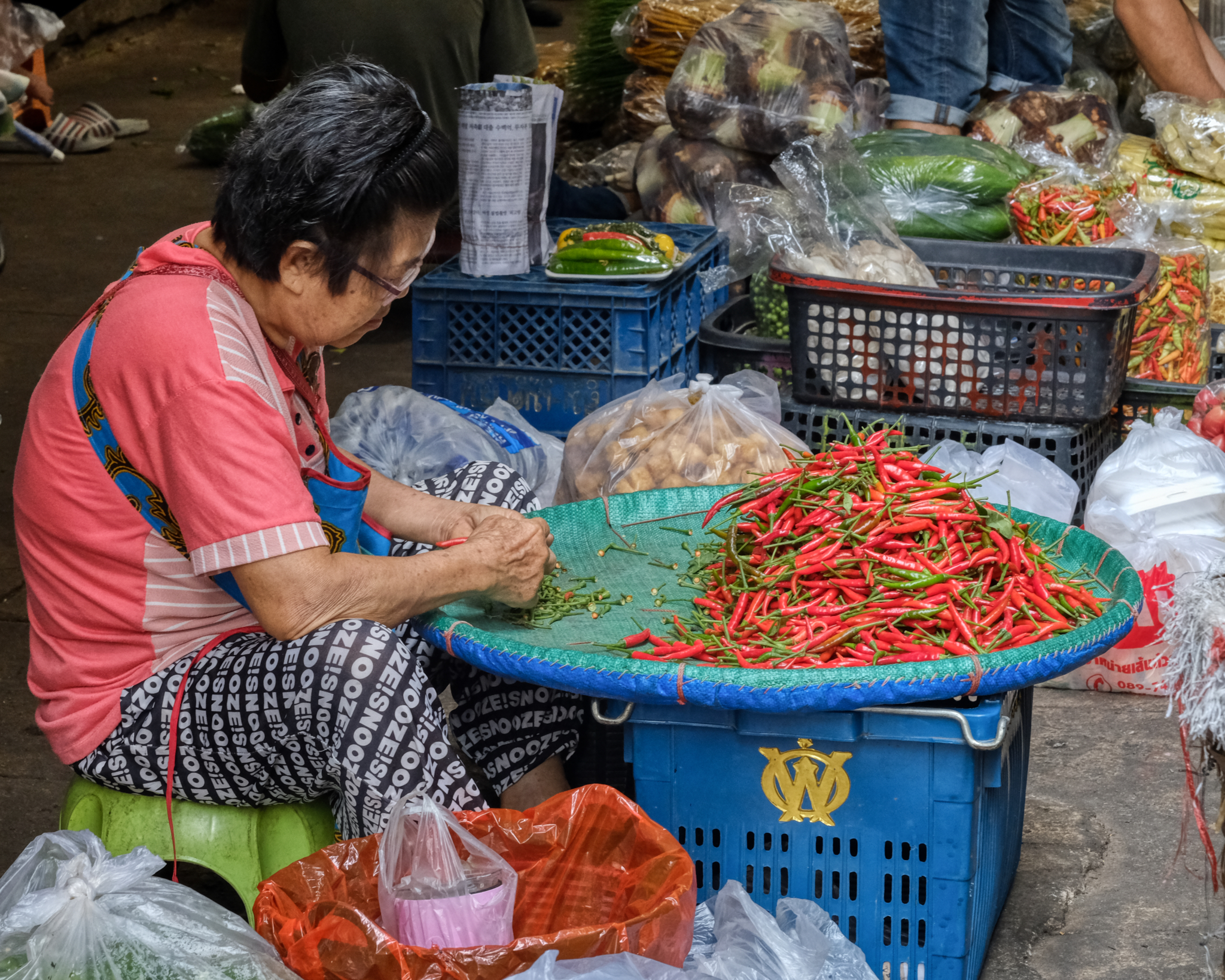 A market chili sorter . . . she did not smell like flowers!!!
A market chili sorter . . . she did not smell like flowers!!!
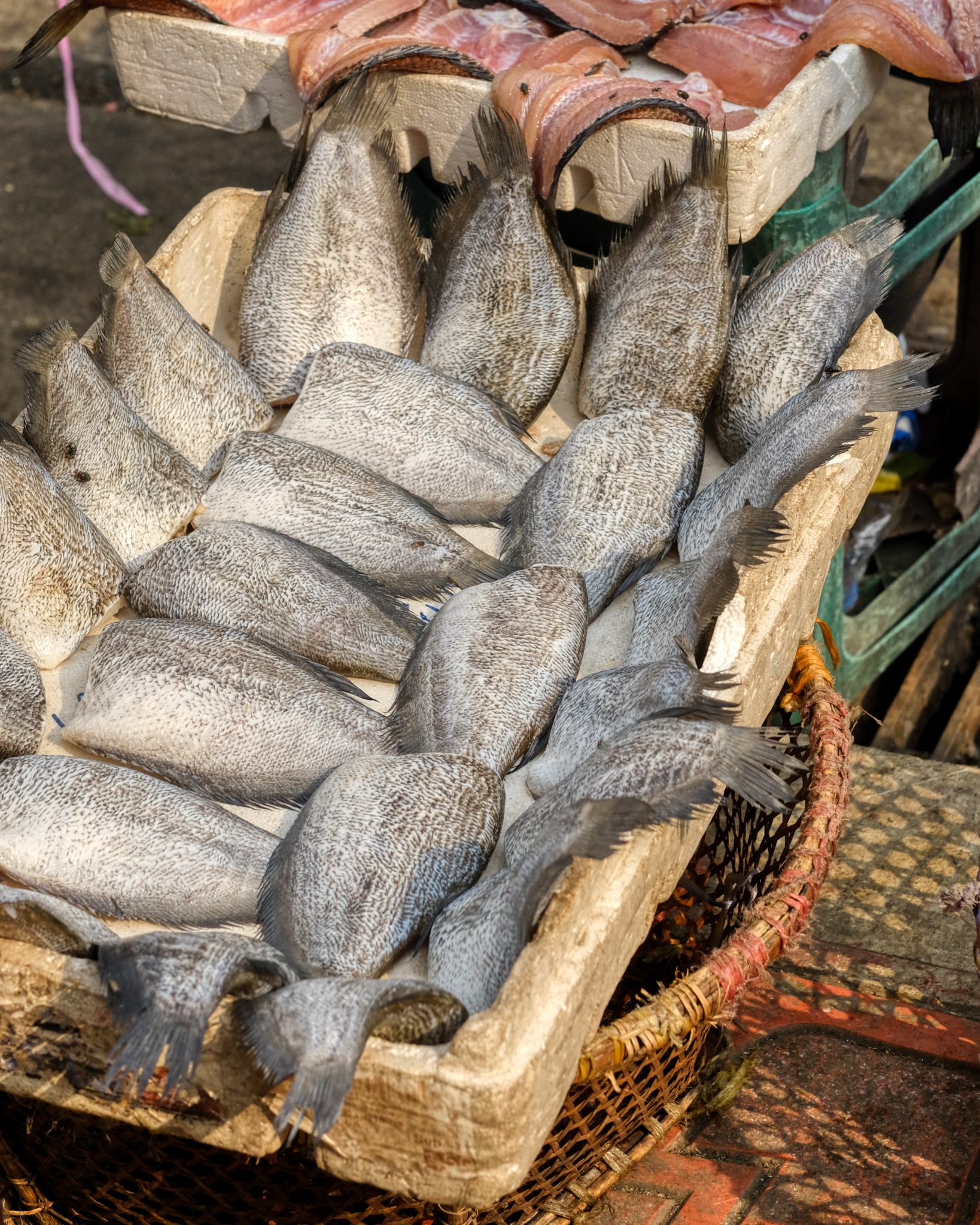 A small sale of fish . . . no doubt intended for the market workers to take home for dinner.
A small sale of fish . . . no doubt intended for the market workers to take home for dinner.
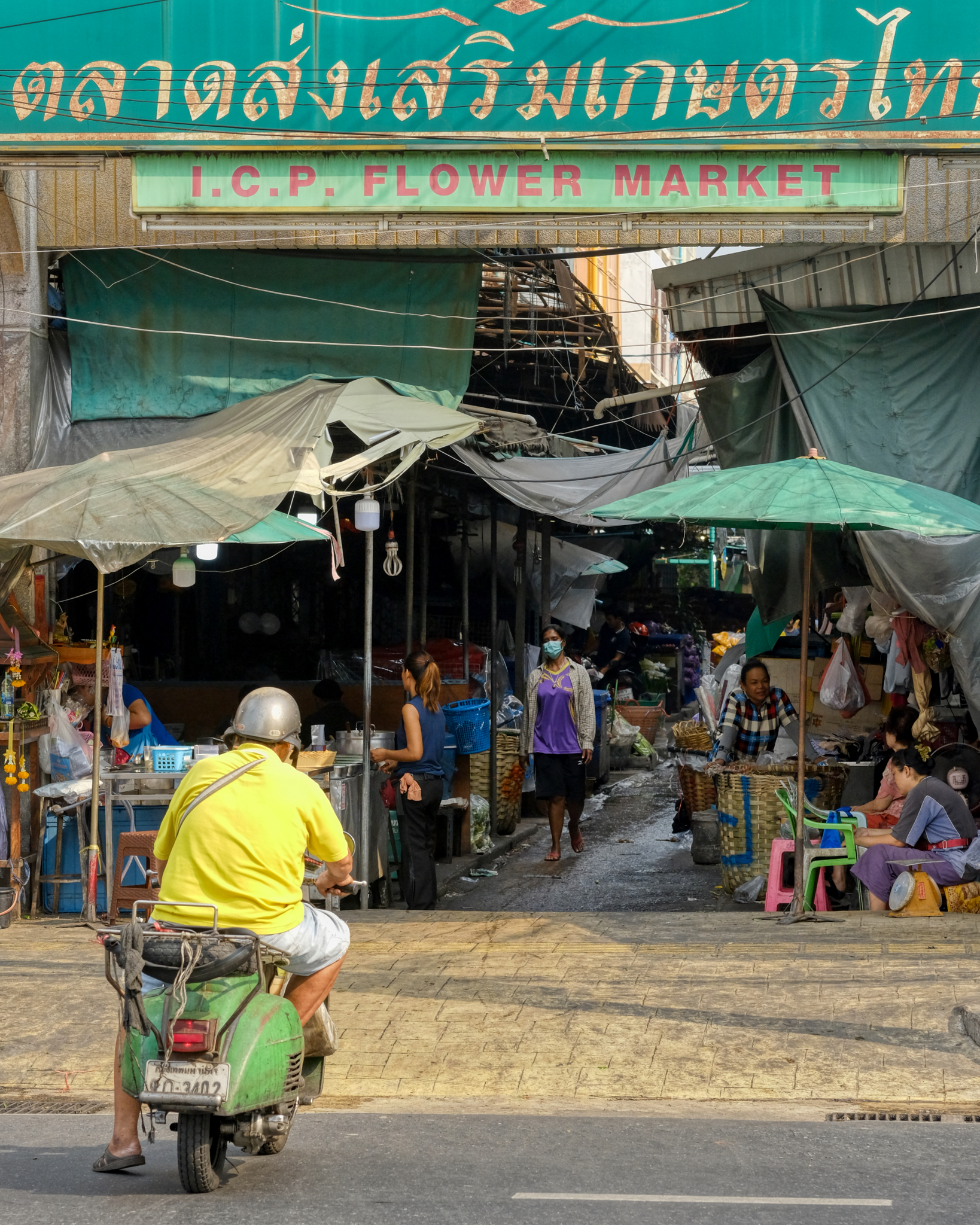 After three hours (!!) we finally stepped outside the markets.
After three hours (!!) we finally stepped outside the markets.
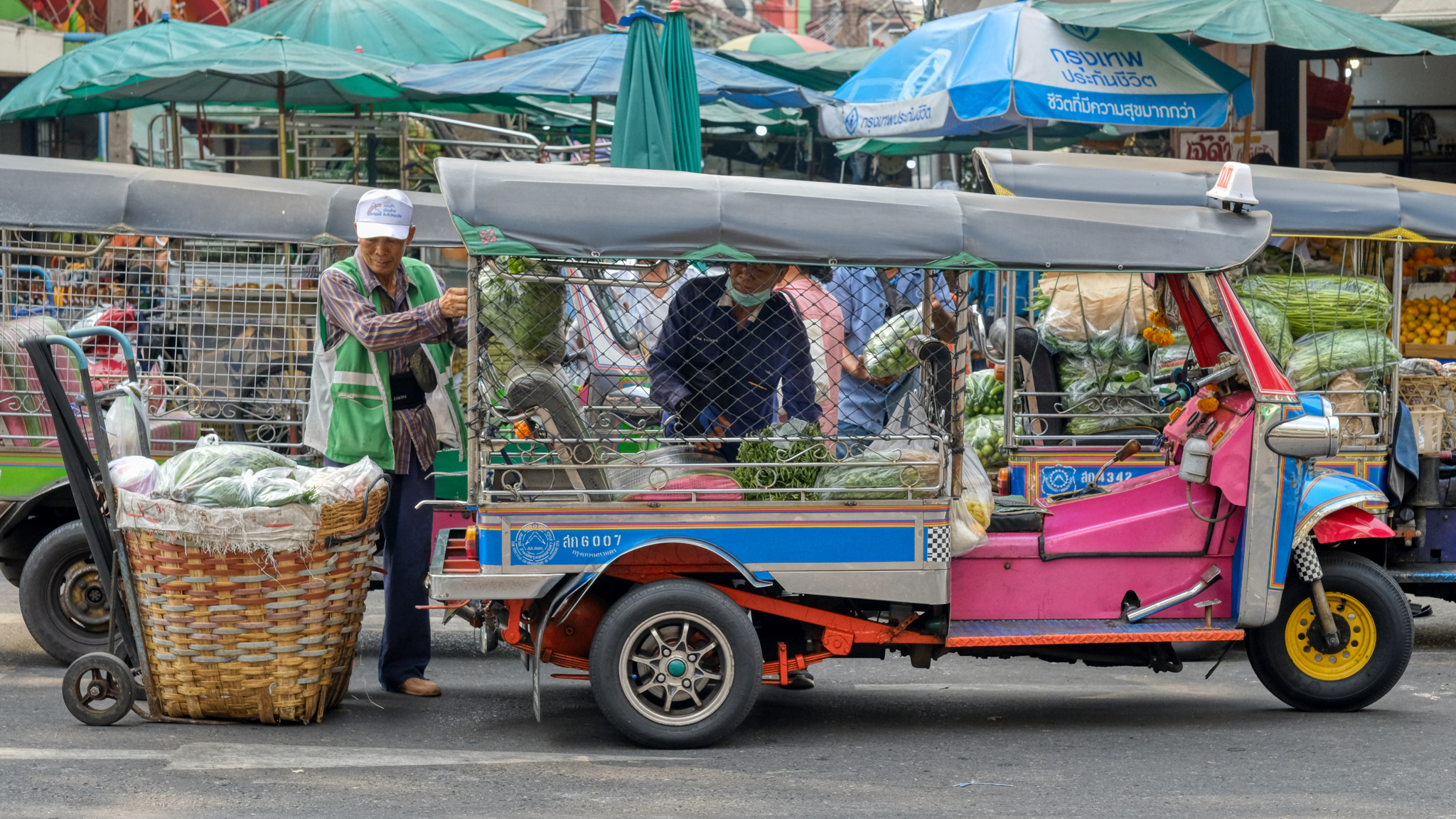 Loading up the produce . . . outside the market.
Loading up the produce . . . outside the market.
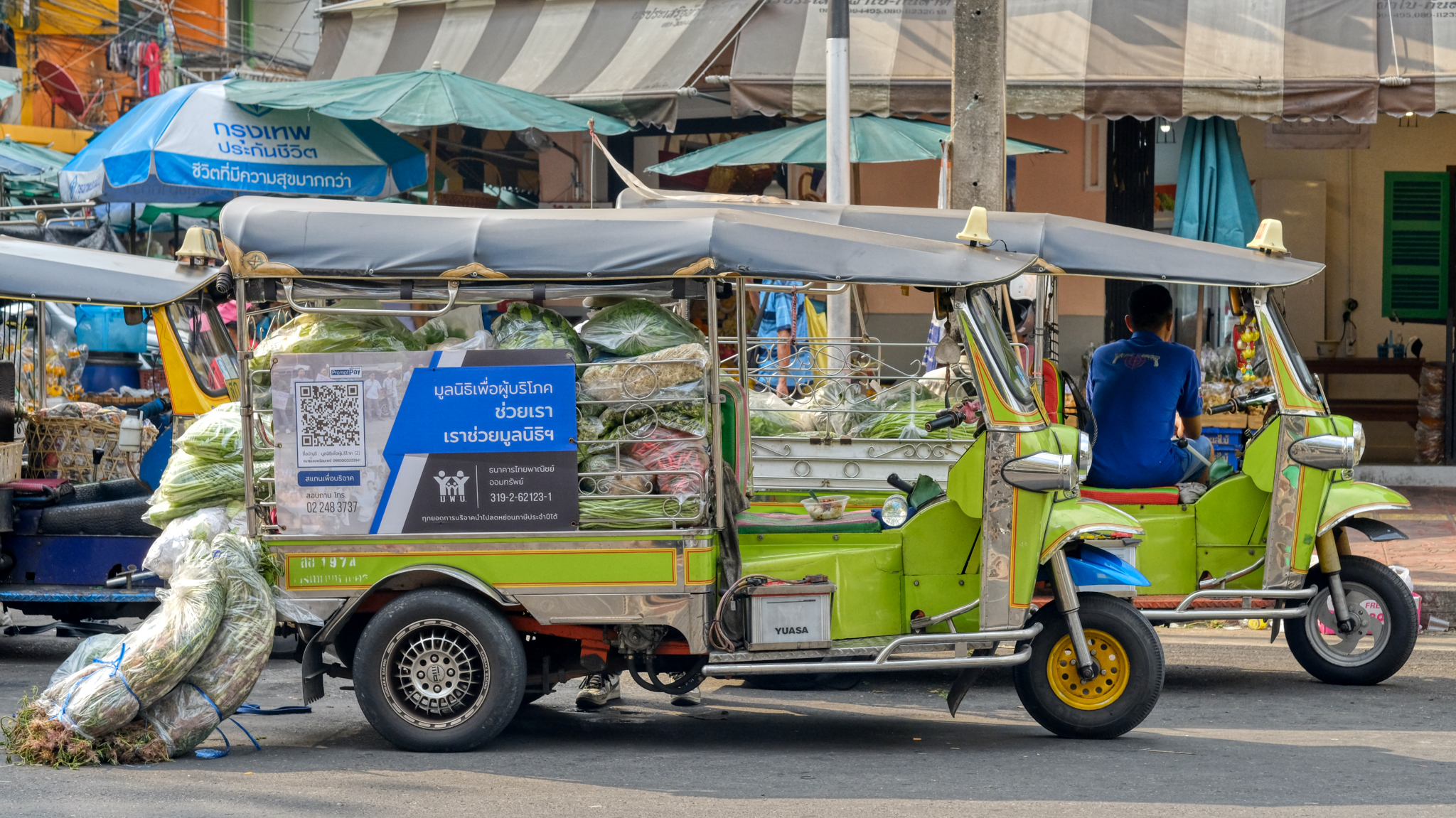 Produce all loaded in the tuk-tuk bound for a restaurent or small market somewhere in the city.
Produce all loaded in the tuk-tuk bound for a restaurent or small market somewhere in the city.
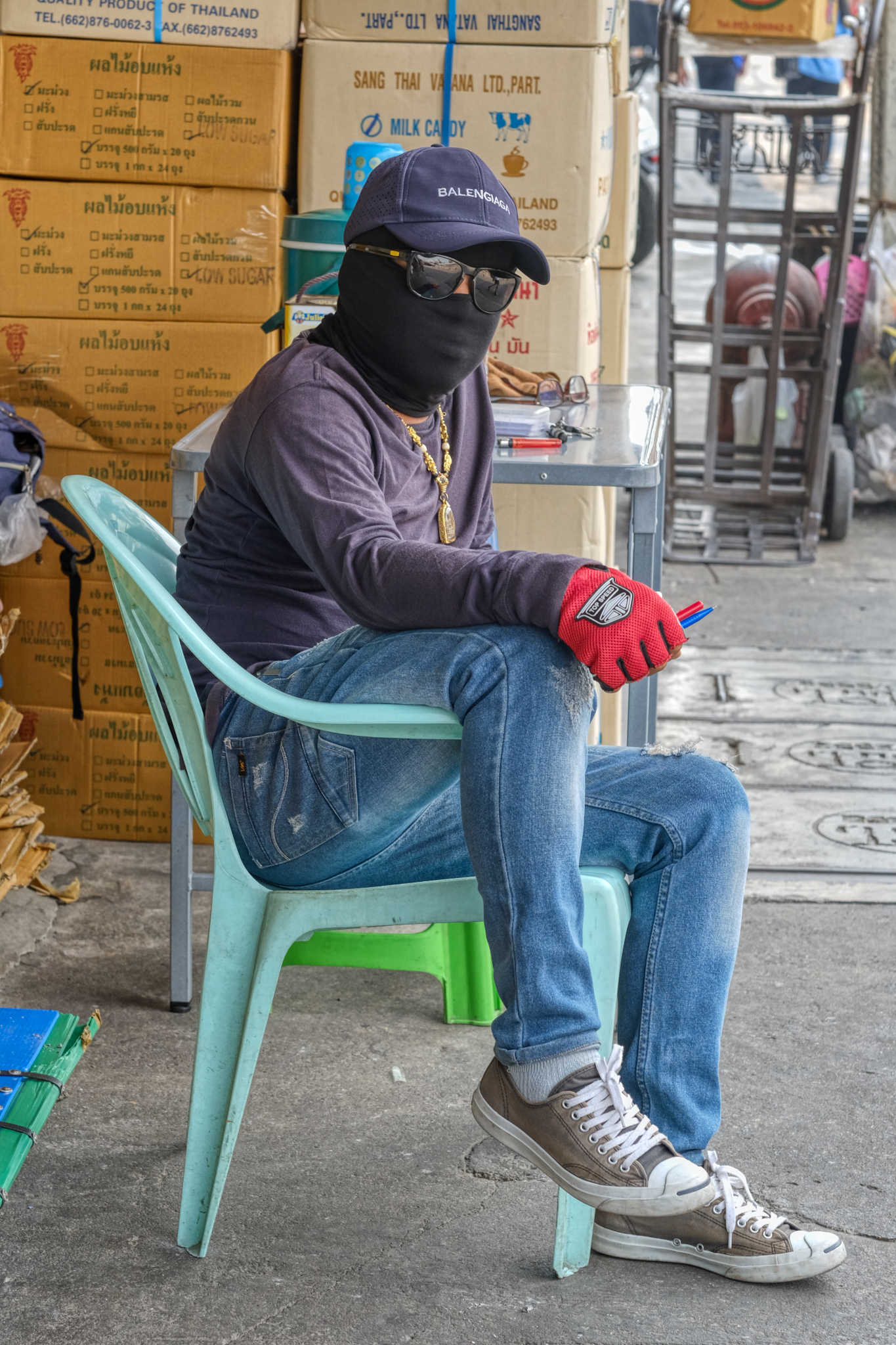 Who was that masked man? A flower market worker taking a break.
Who was that masked man? A flower market worker taking a break.
-------------------------------------------------
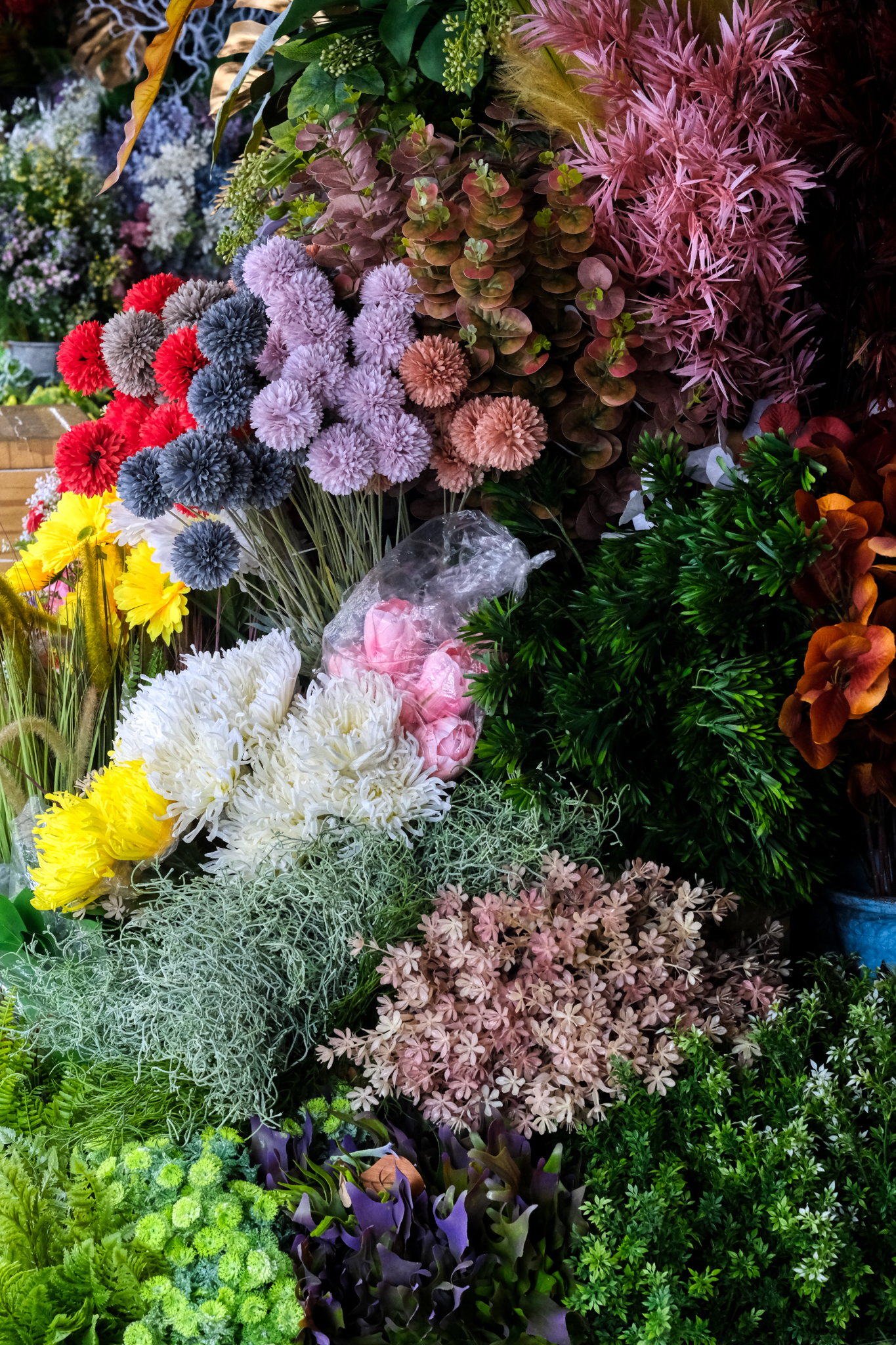 We walked a few blocks from the flower market to find a very good cup of coffee . . . and stumbled upon this shop selling "fake" plastic flowers: incredibly realistic plastic flowers. I guess some people get tired of having to buy fresh flowers over and over . . .
We walked a few blocks from the flower market to find a very good cup of coffee . . . and stumbled upon this shop selling "fake" plastic flowers: incredibly realistic plastic flowers. I guess some people get tired of having to buy fresh flowers over and over . . .
Luang Prabang, Laos - Wat Xieng Thong
 Sunday, October 27, 2019 at 8:55AM
Sunday, October 27, 2019 at 8:55AM 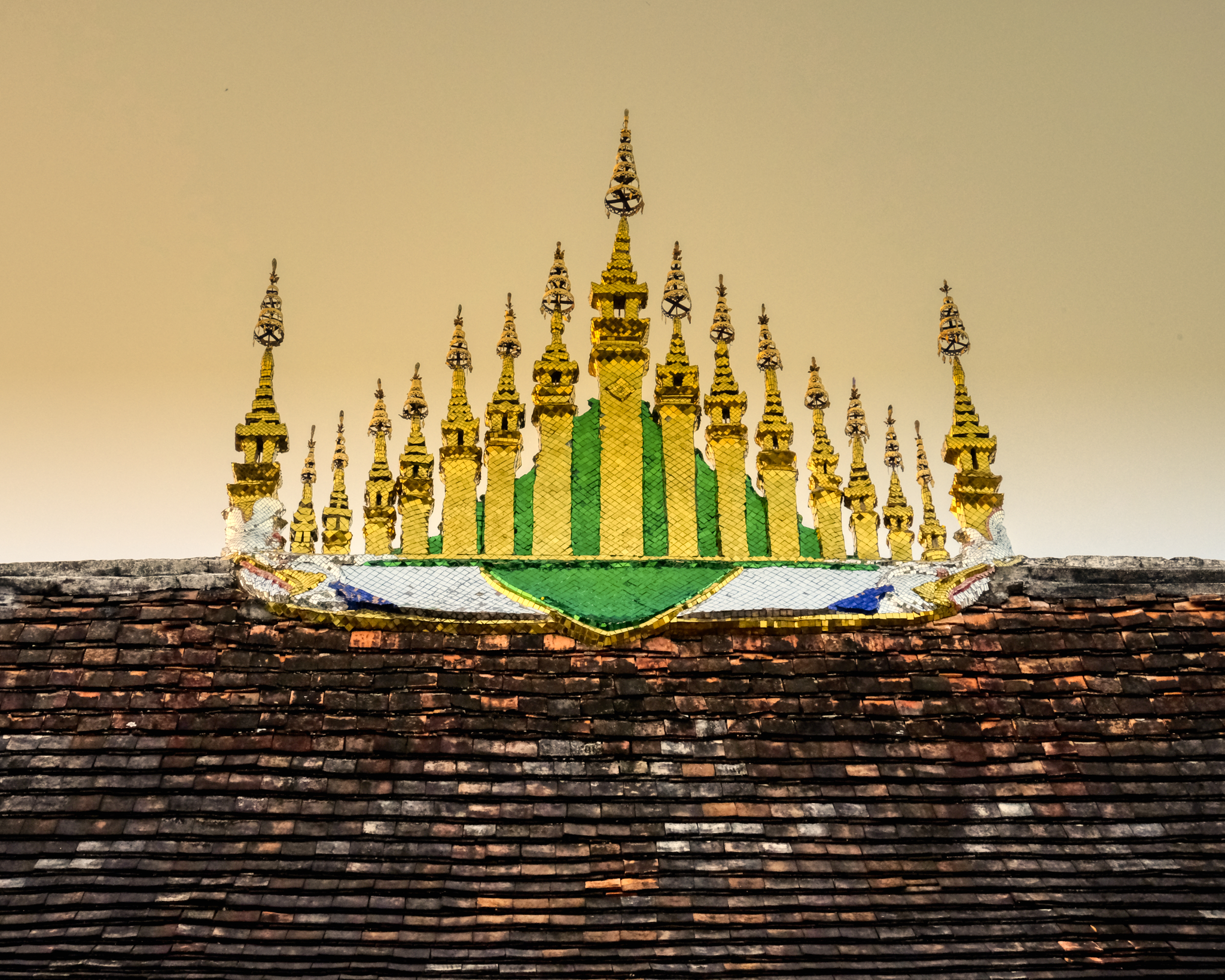
Luang Prabang is a UNESCO Word Heritage Site locate in west-central Laos. I was last here 22 years ago and always wanted to go back. I finally did . . . and I was very happy I did.
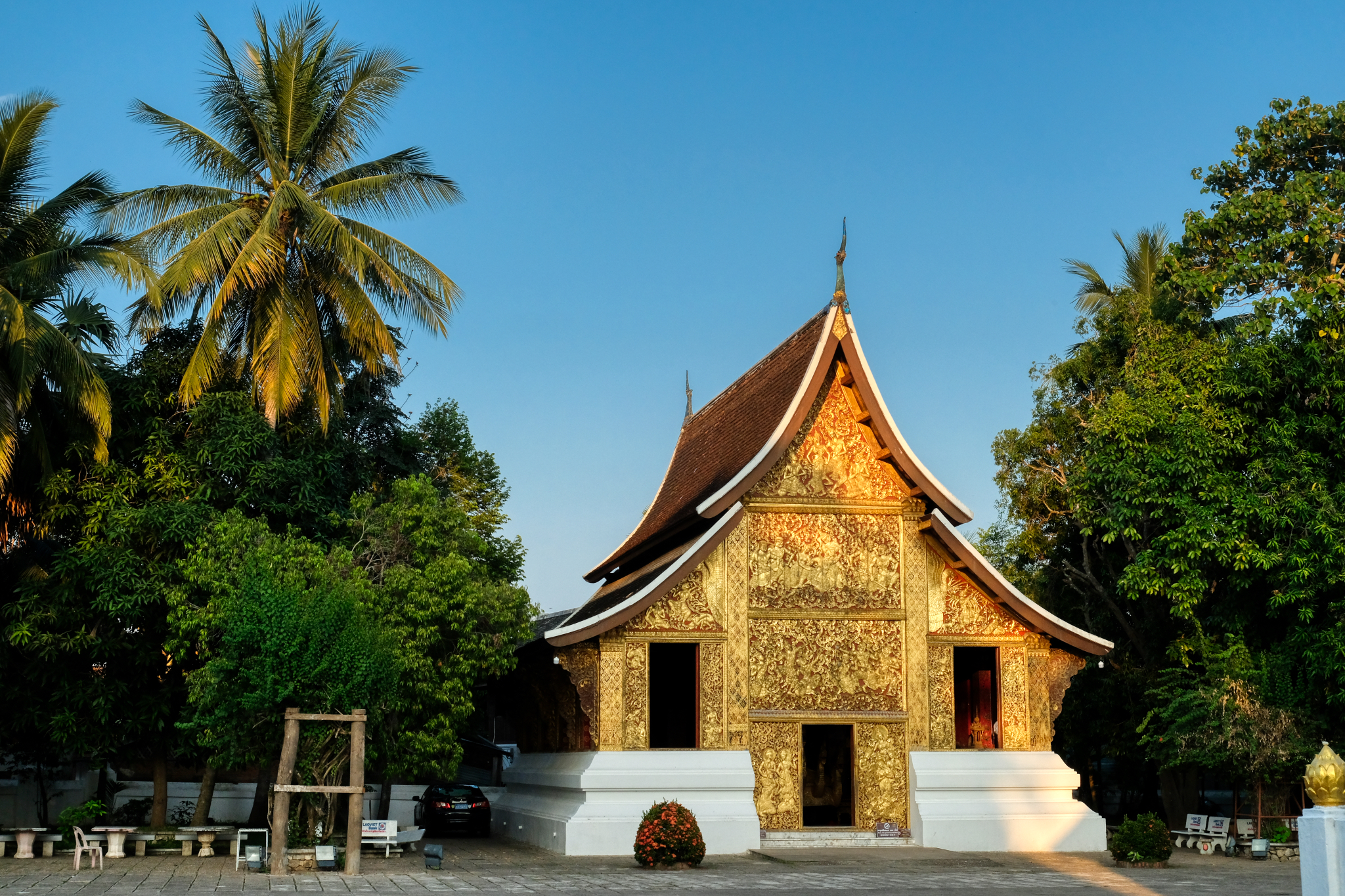
Wat Xieng Thong (c.1559) is the most revered Buddhist temple (wat) in all of Luang Prabang.
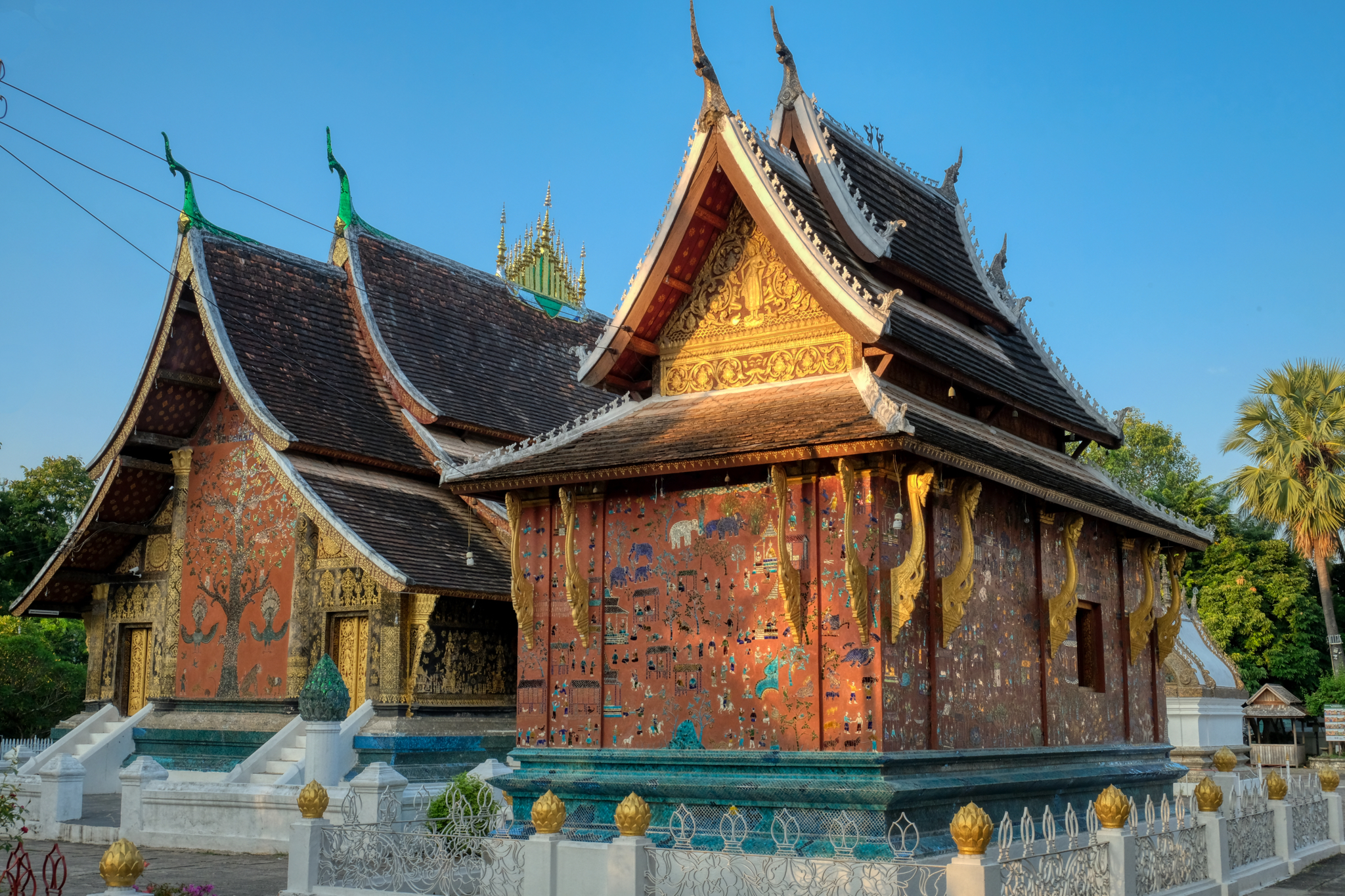
Wat Xieng Thong had many buildings within the grounds. Many had fine, primitive mosaic depictions of life in long gone times.
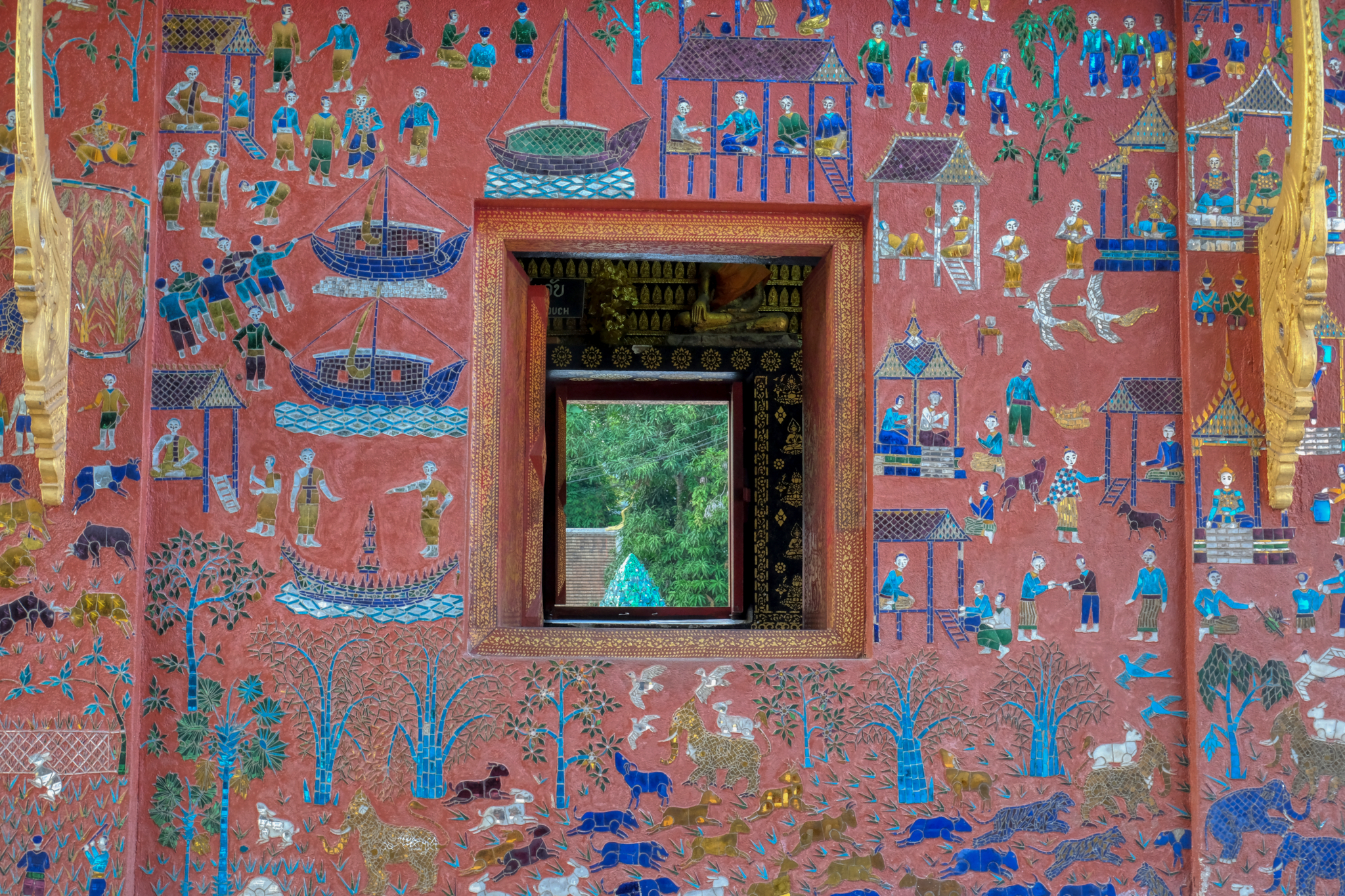 The state of preservation, restoration, love, and care of all of the wats in Luang Prabang was exemplary.
The state of preservation, restoration, love, and care of all of the wats in Luang Prabang was exemplary.
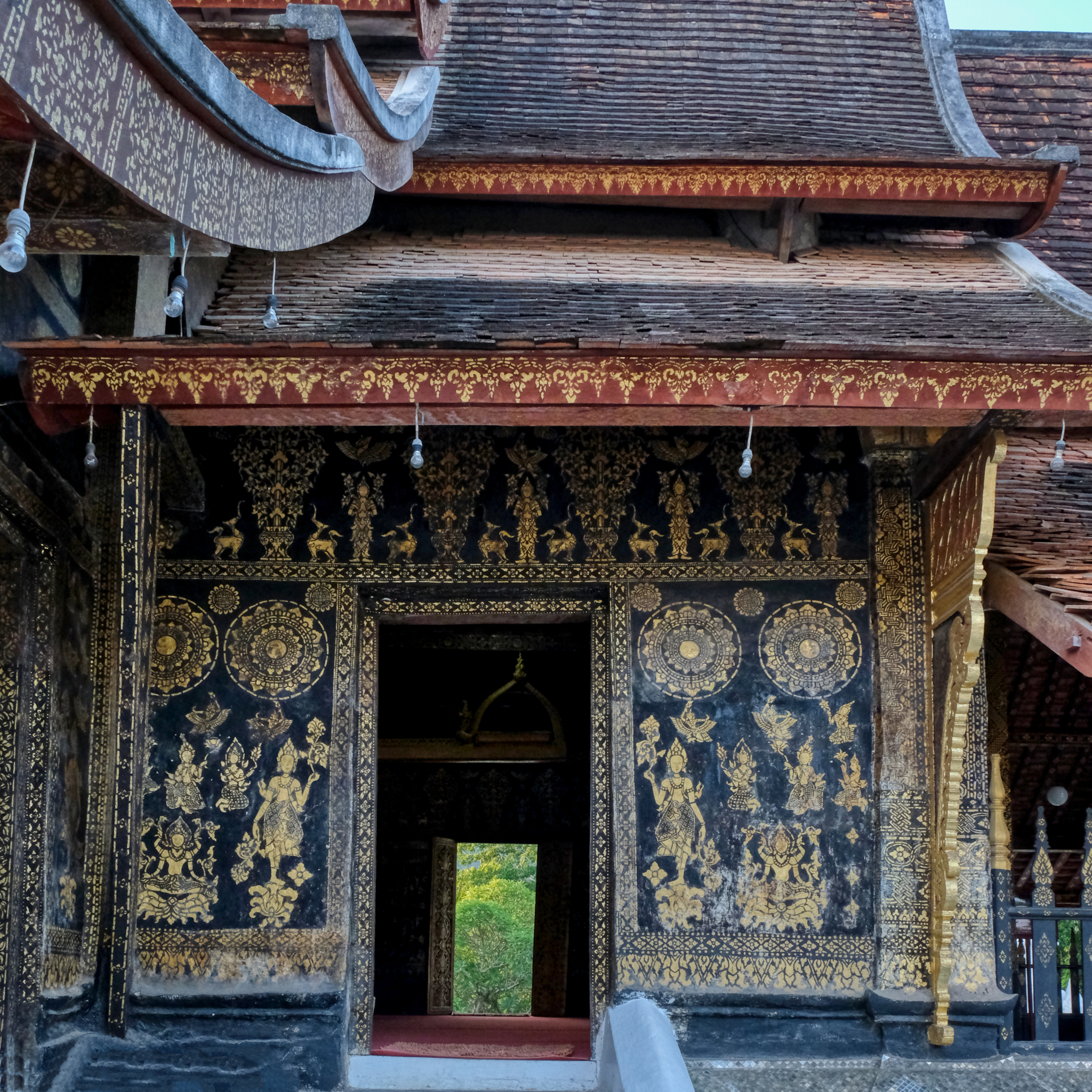 Ancient stenciled patterns on many walls.
Ancient stenciled patterns on many walls.
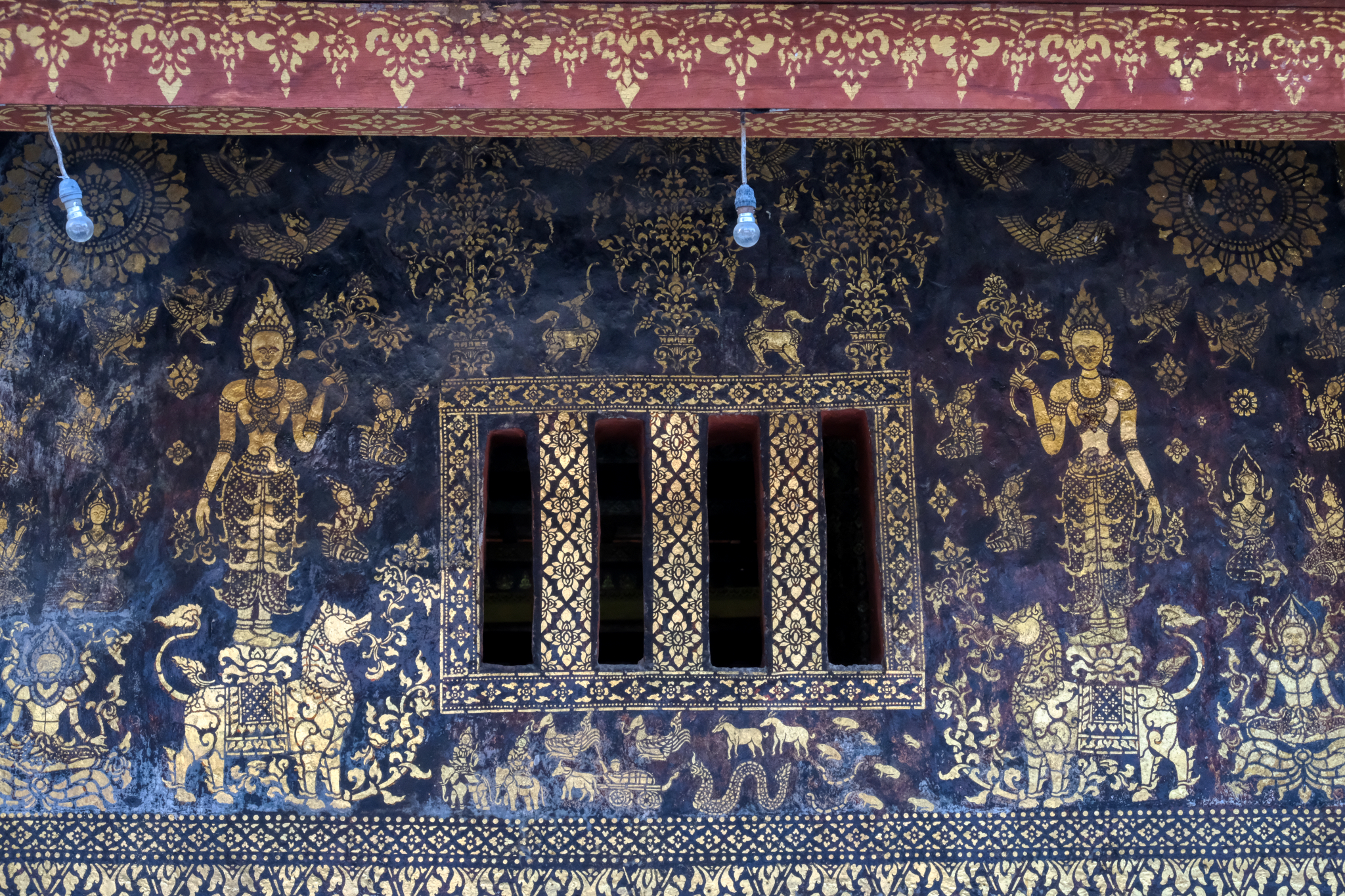 Lovely work.
Lovely work.
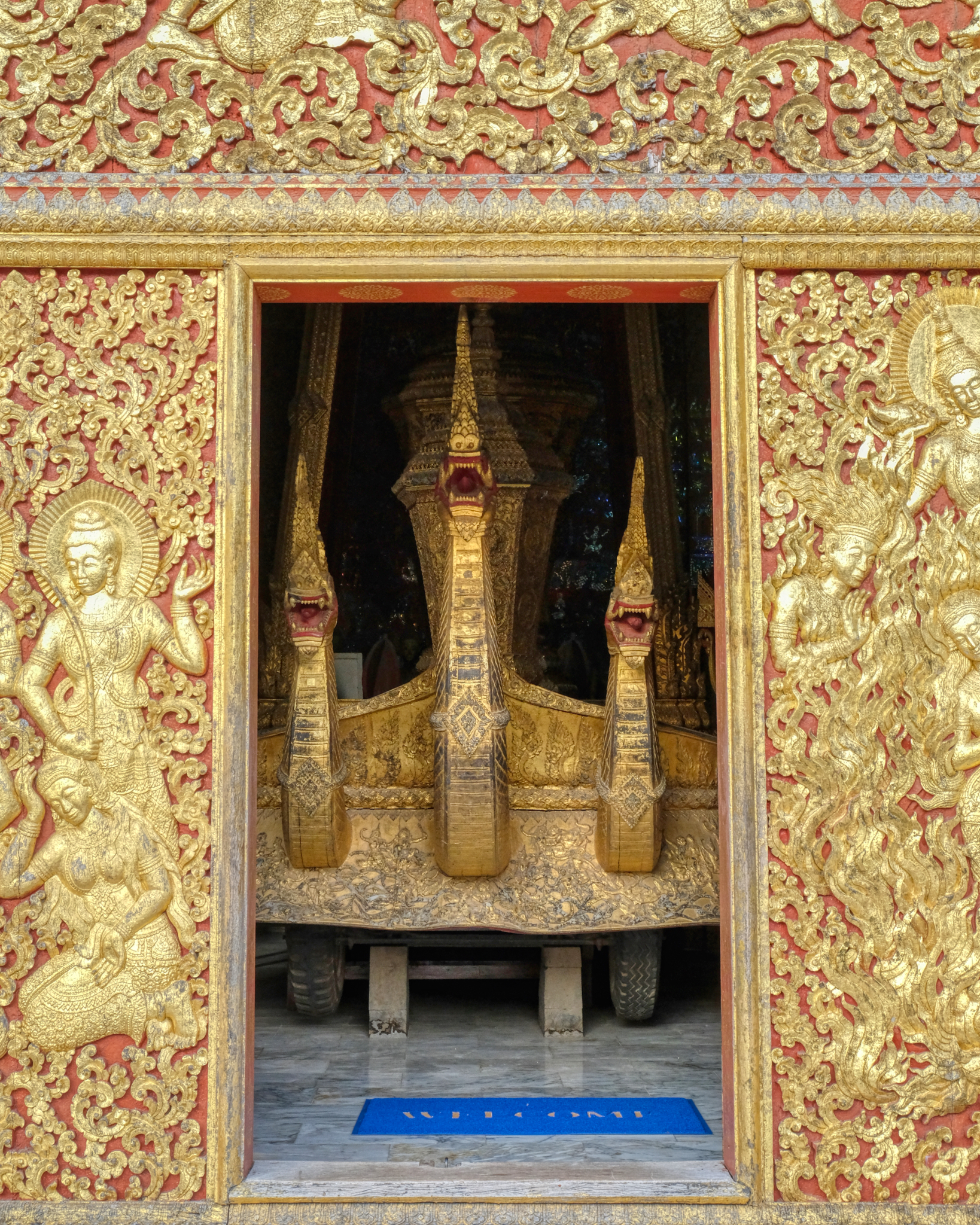 A special building was built to house this gold leaf funerary carriage.
A special building was built to house this gold leaf funerary carriage.
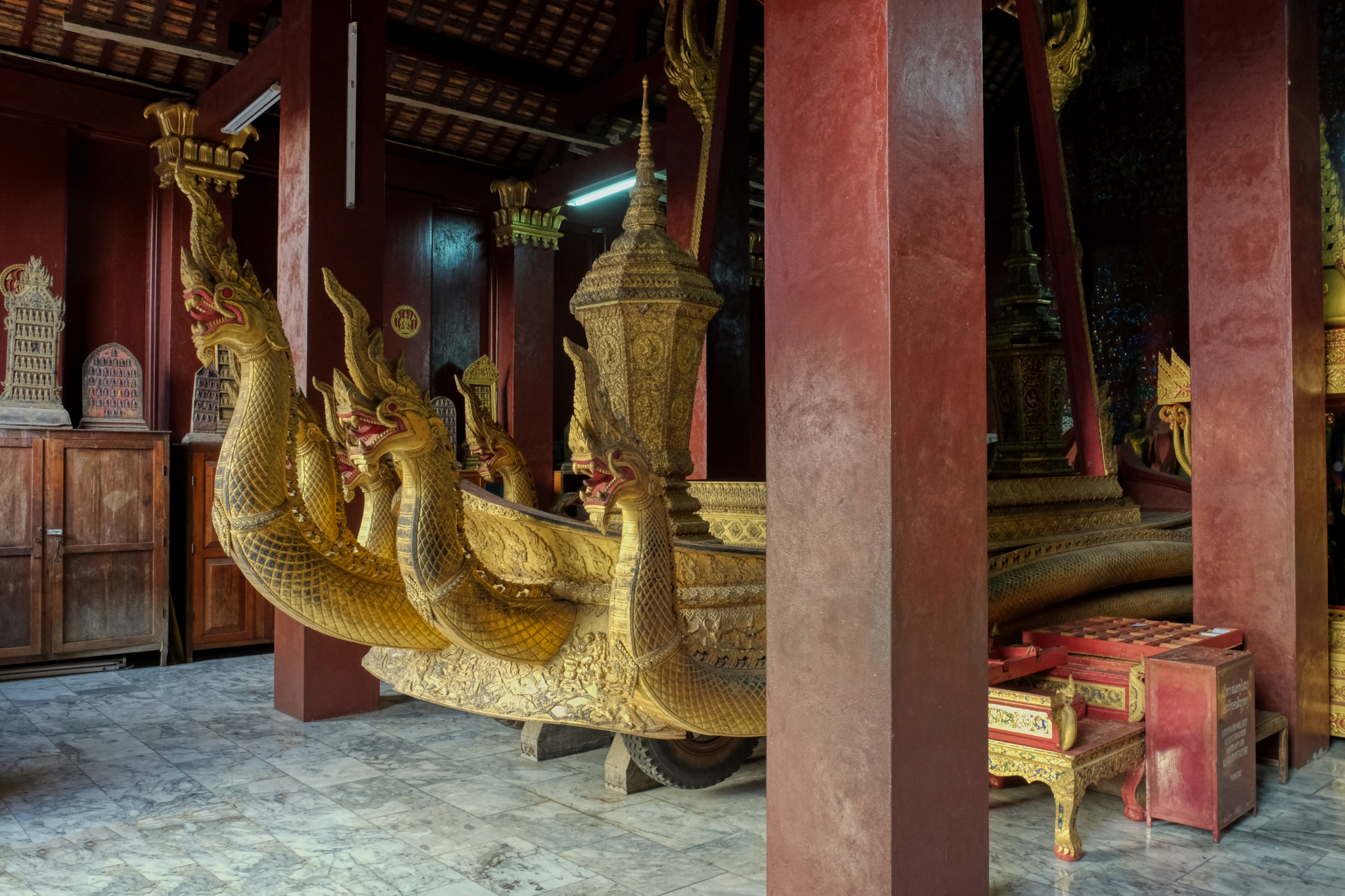 The inside of the funerary carriage temple was astounding! Such a surprise . . . and many nooks and crannies to look into.
The inside of the funerary carriage temple was astounding! Such a surprise . . . and many nooks and crannies to look into.
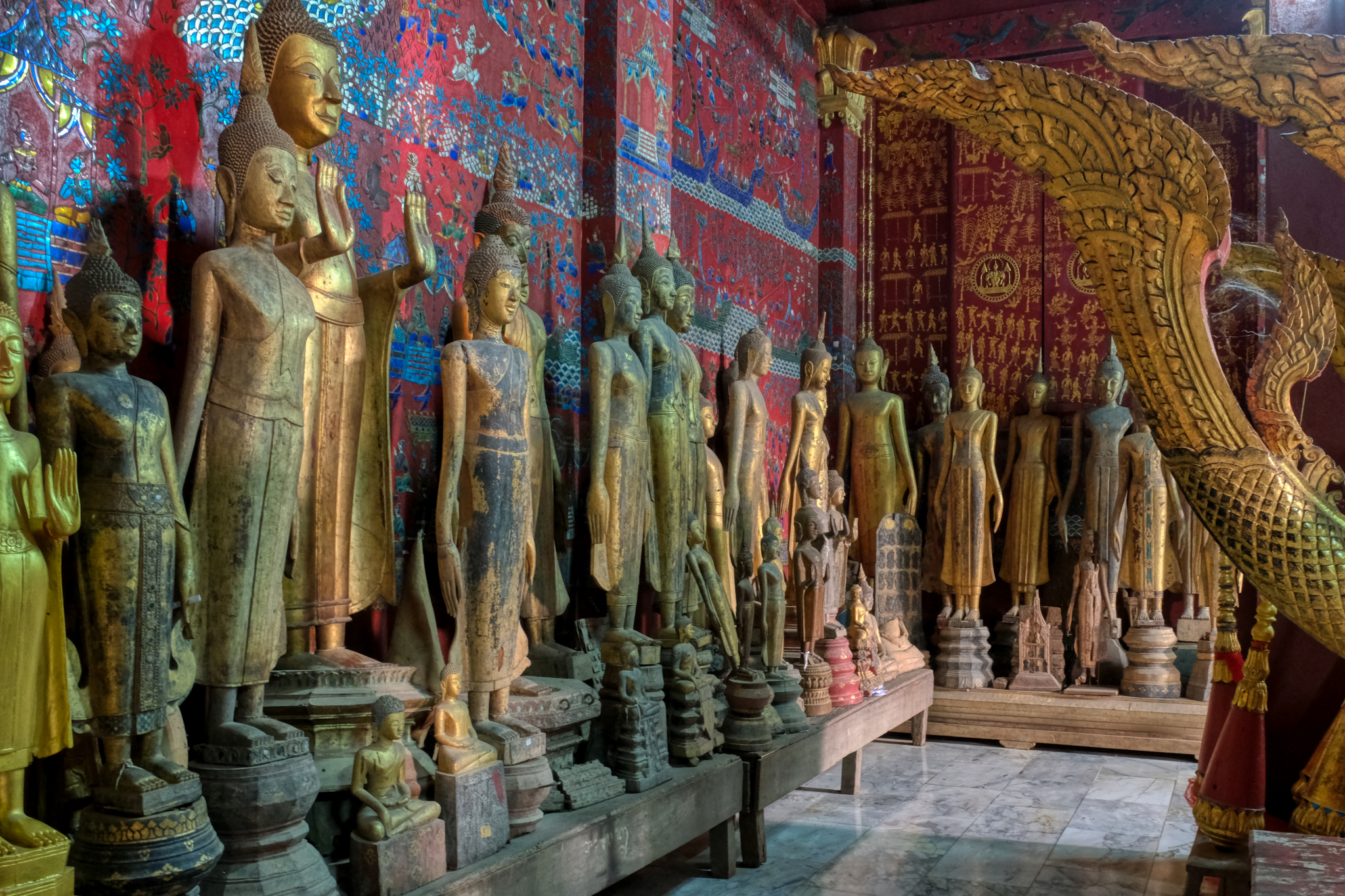 A mosaic covered wall with a line of ancient Buddha statuary.
A mosaic covered wall with a line of ancient Buddha statuary.
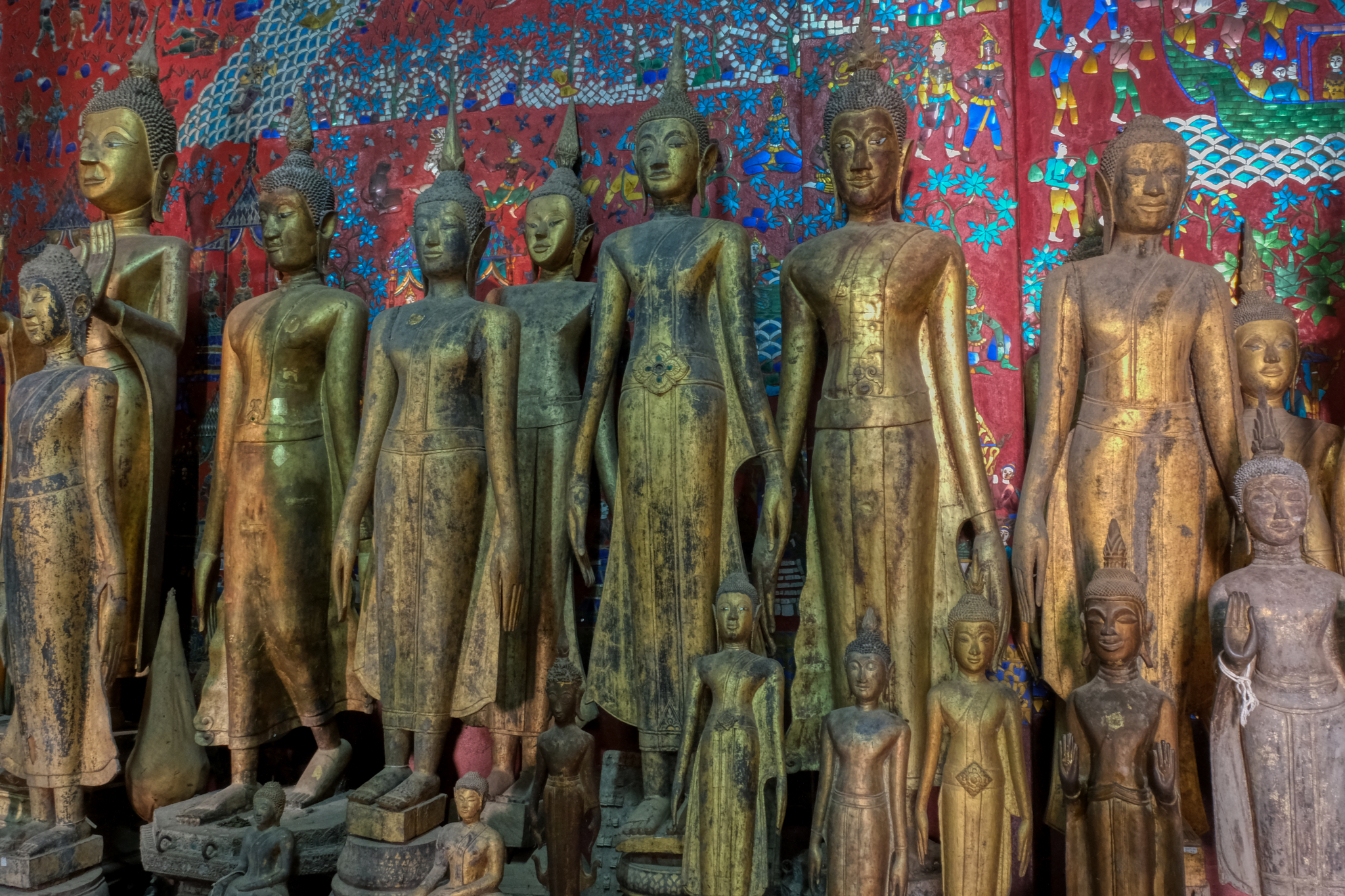 Spiritual simplicity depicted.
Spiritual simplicity depicted.
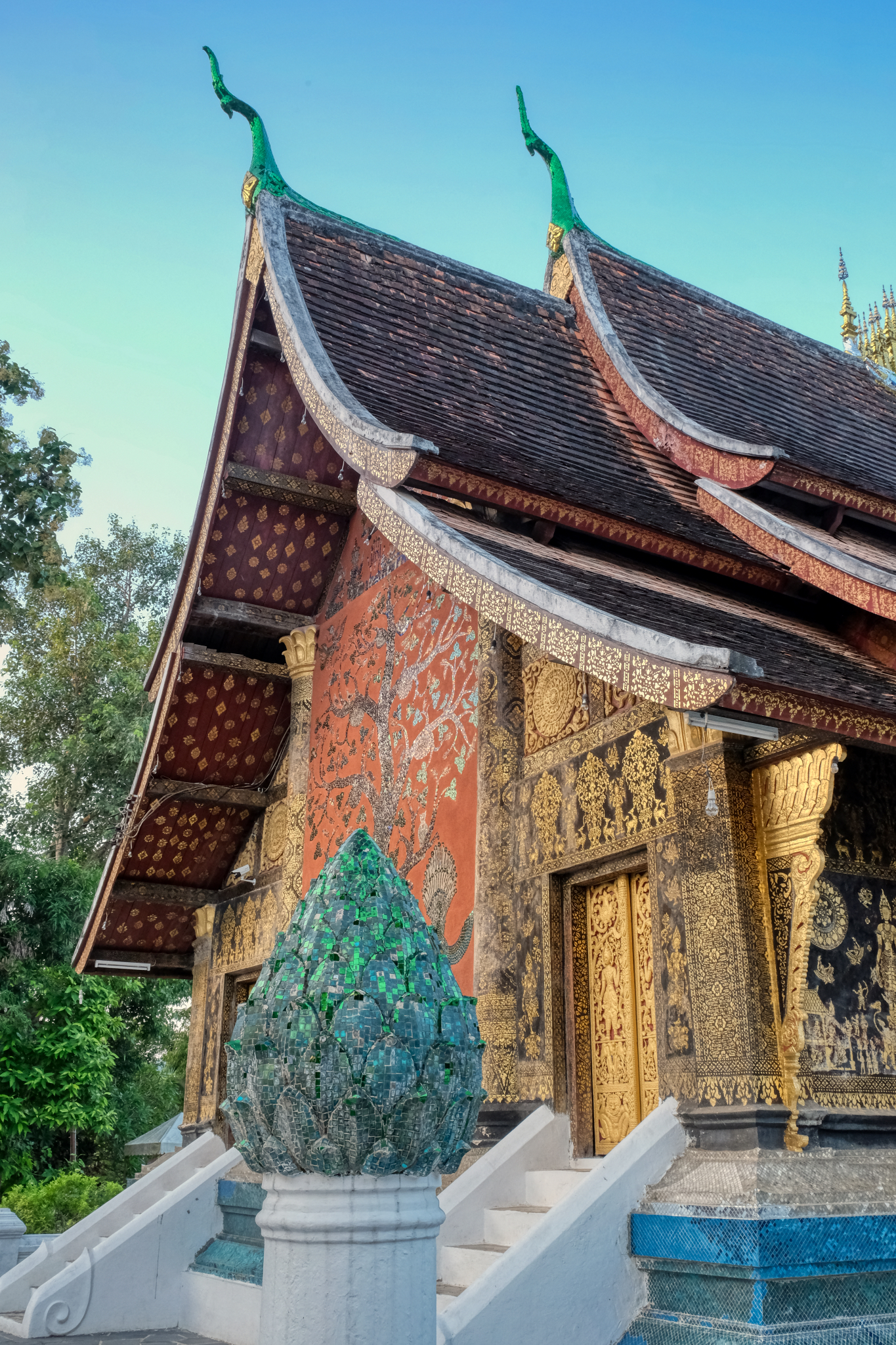 There were many structures to explore at this wat. I came twice with my camera as it was very close to our hotel.
There were many structures to explore at this wat. I came twice with my camera as it was very close to our hotel.
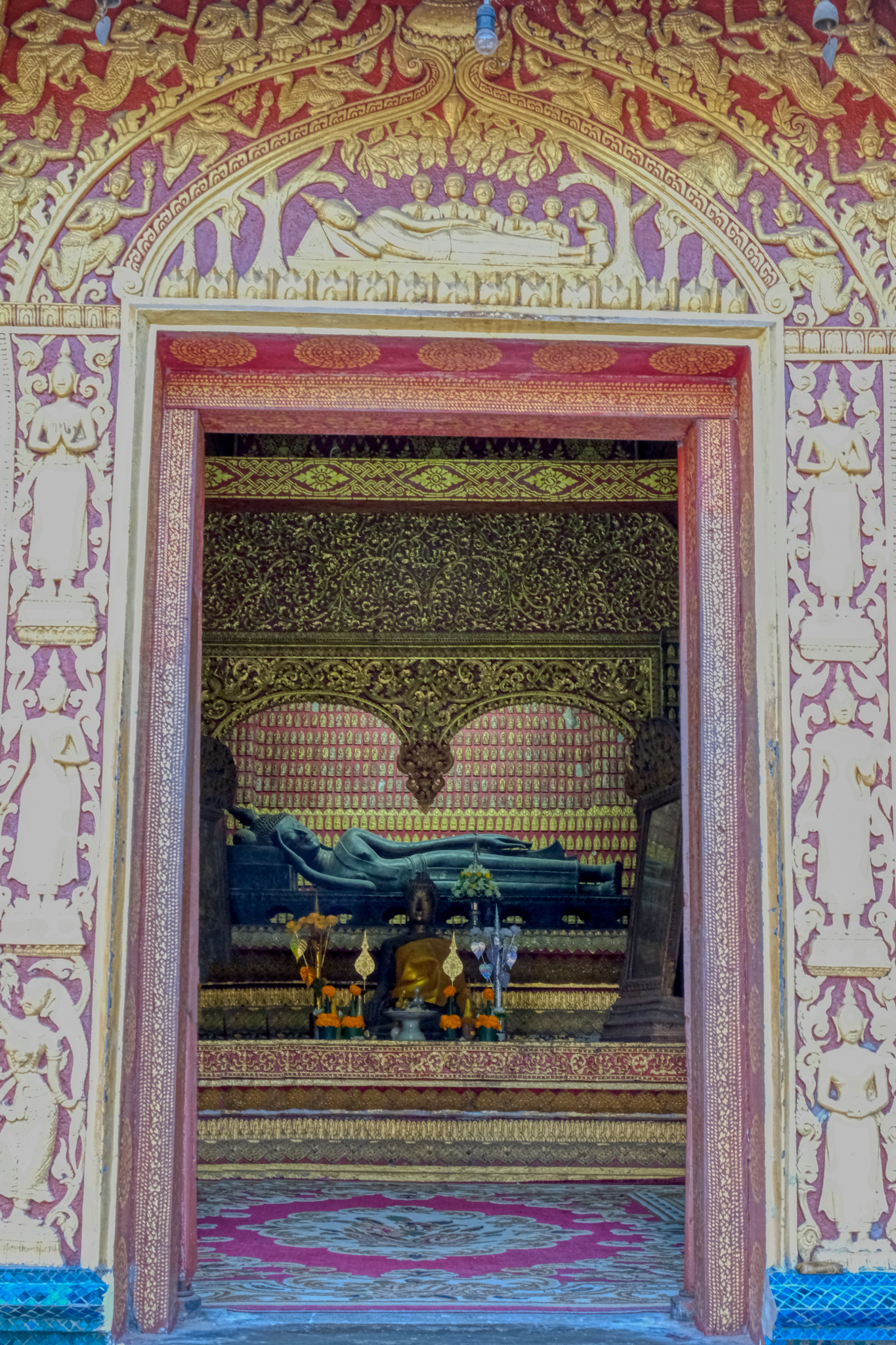 An inviting open temple.
An inviting open temple.
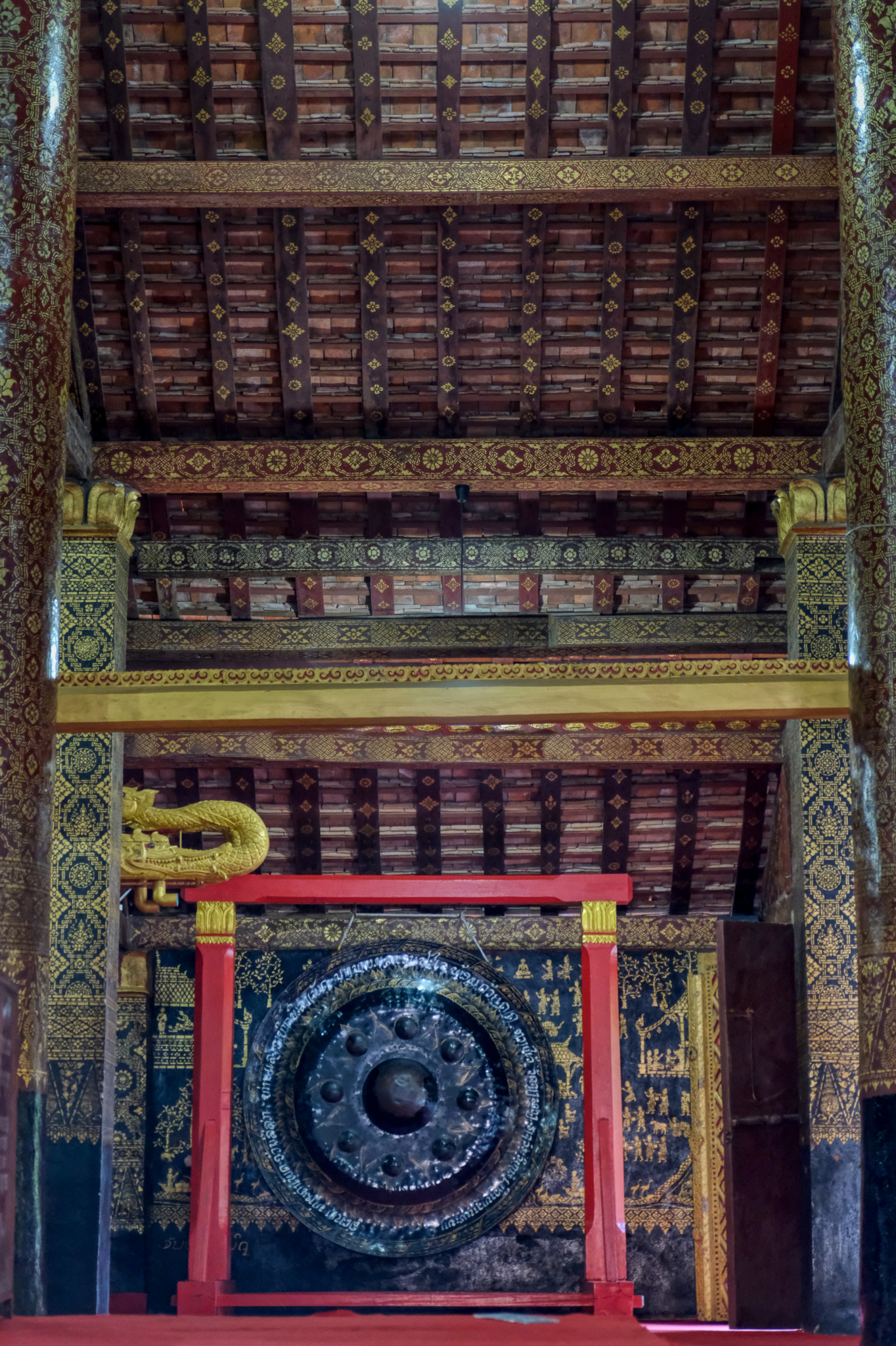 A temple gong.
A temple gong.
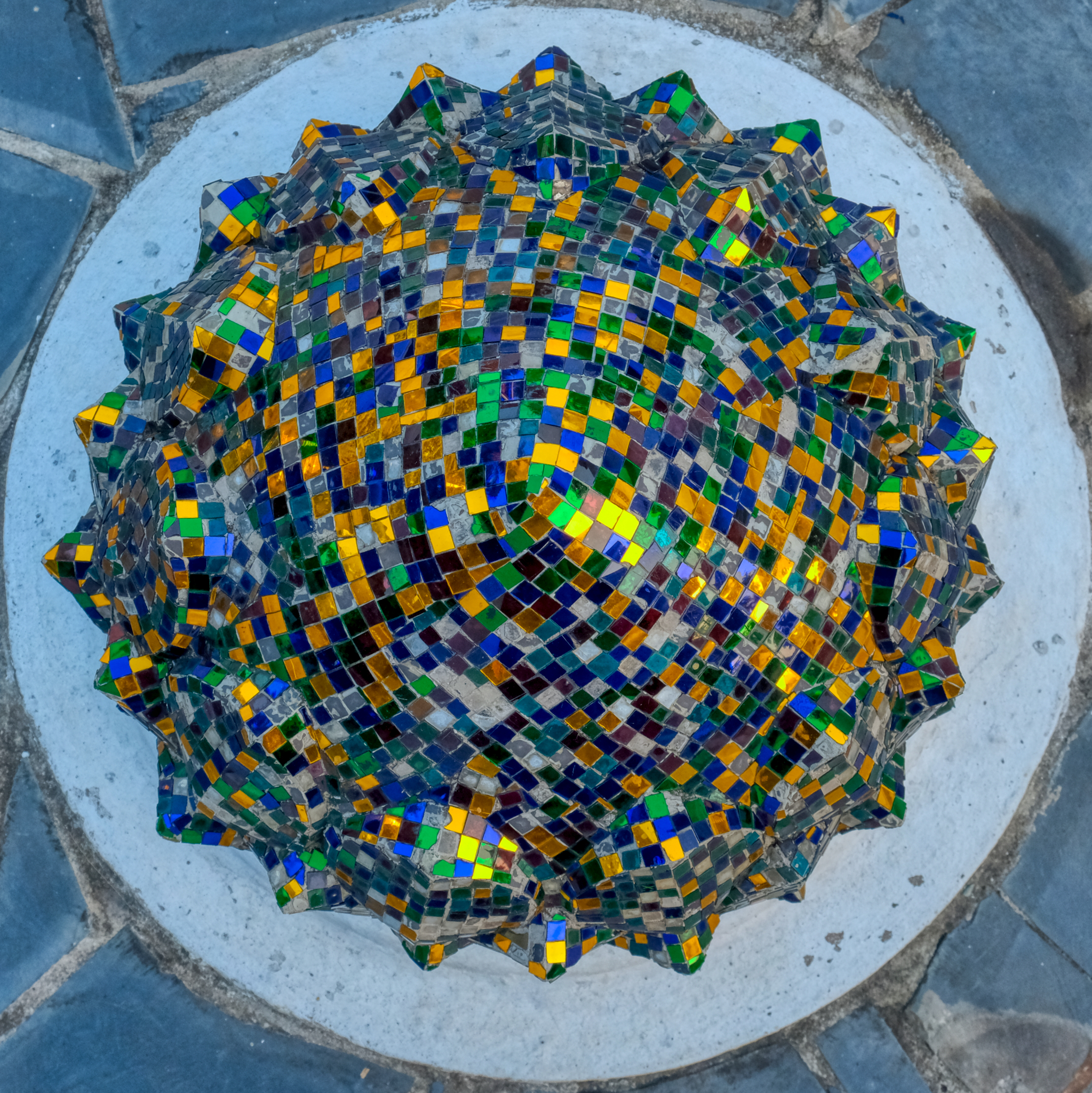 Shiny outdoor decoration.
Shiny outdoor decoration.
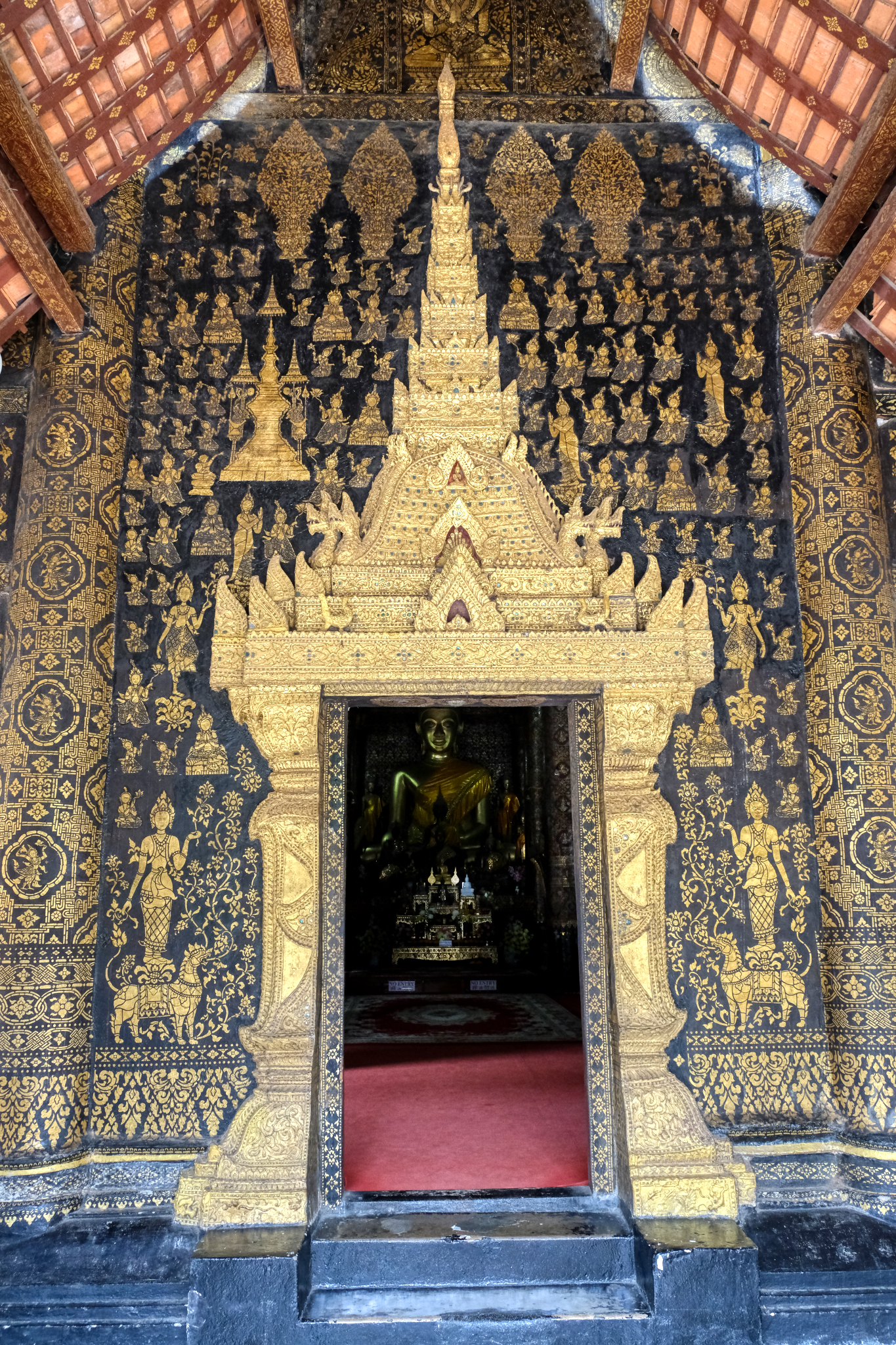 This looks inviting . . .
This looks inviting . . .
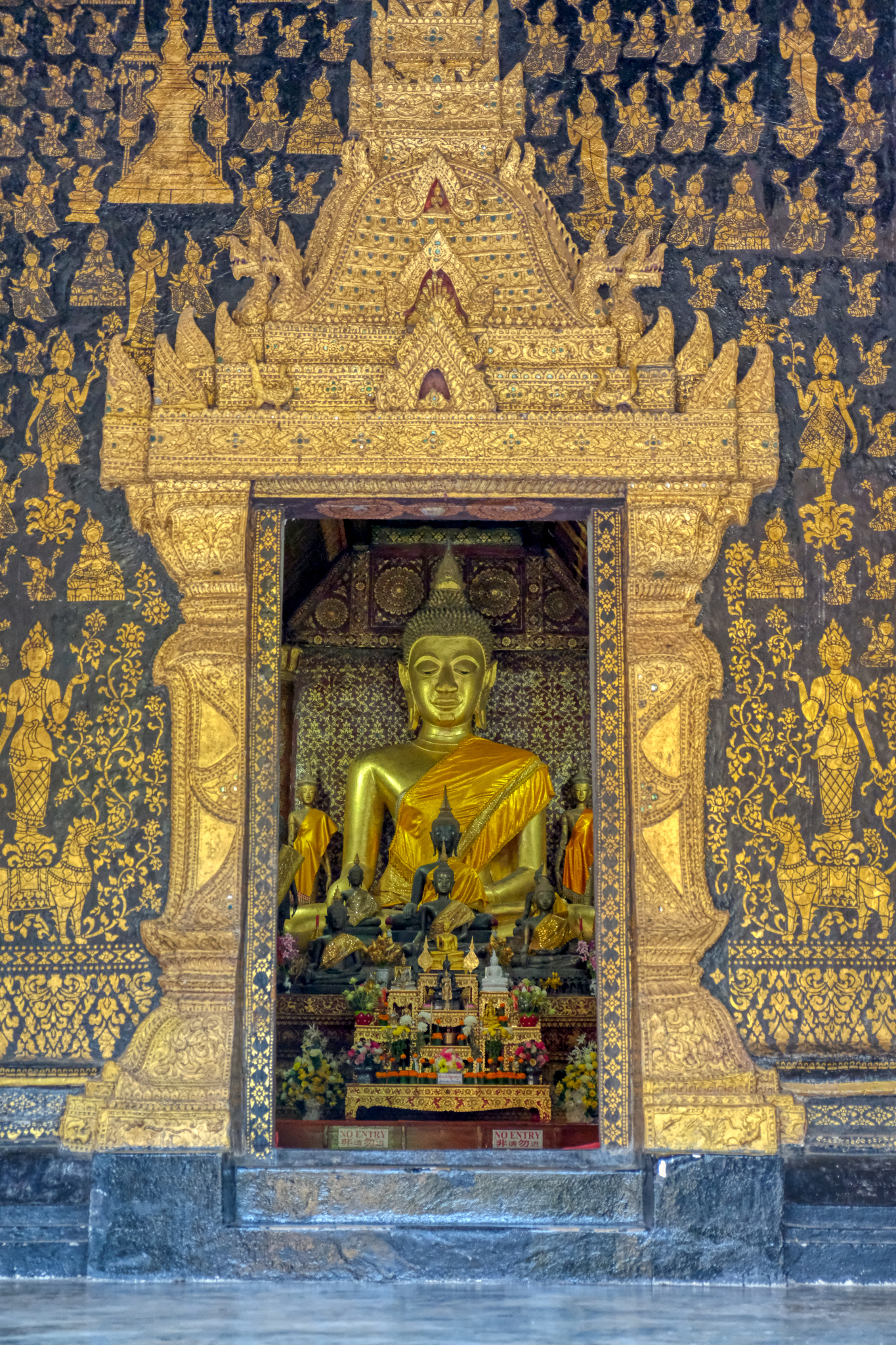 A view to the Buddha altar in the main hall. Magnificent architecture.
A view to the Buddha altar in the main hall. Magnificent architecture.
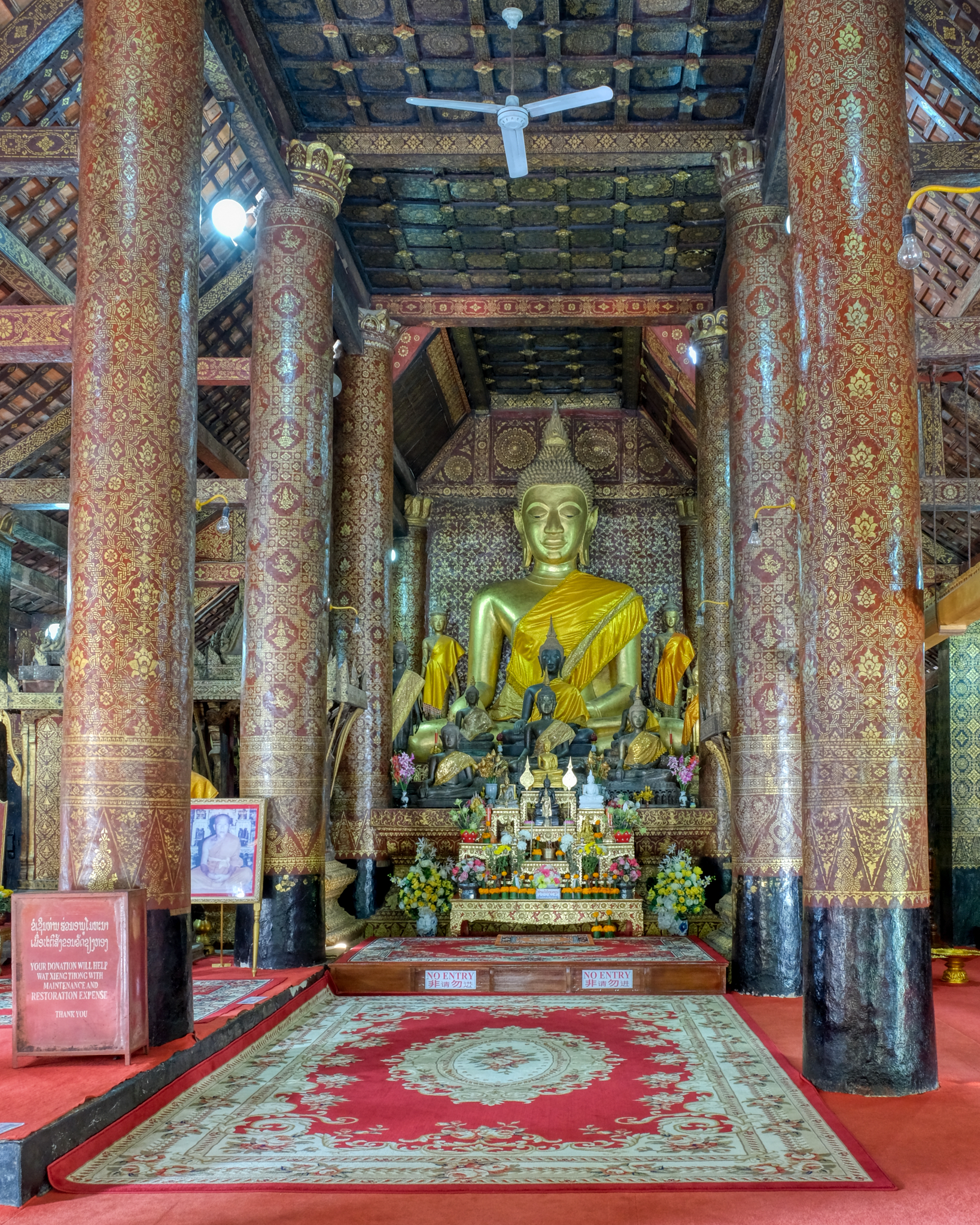 The main altar of Wat Xieng Thong.
The main altar of Wat Xieng Thong.
 A favorite altar.
A favorite altar.
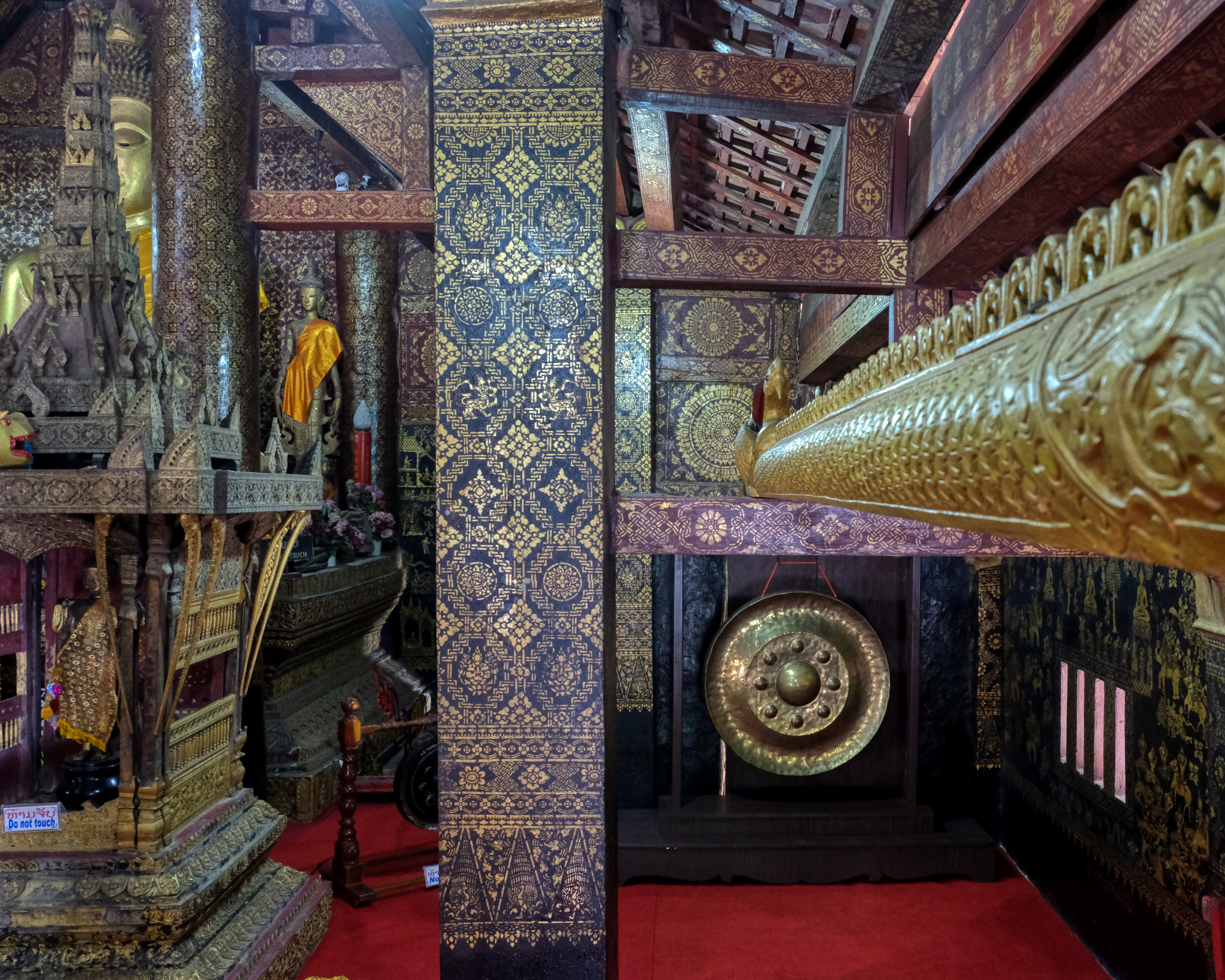 Rich detail in the main hall decoration.
Rich detail in the main hall decoration.
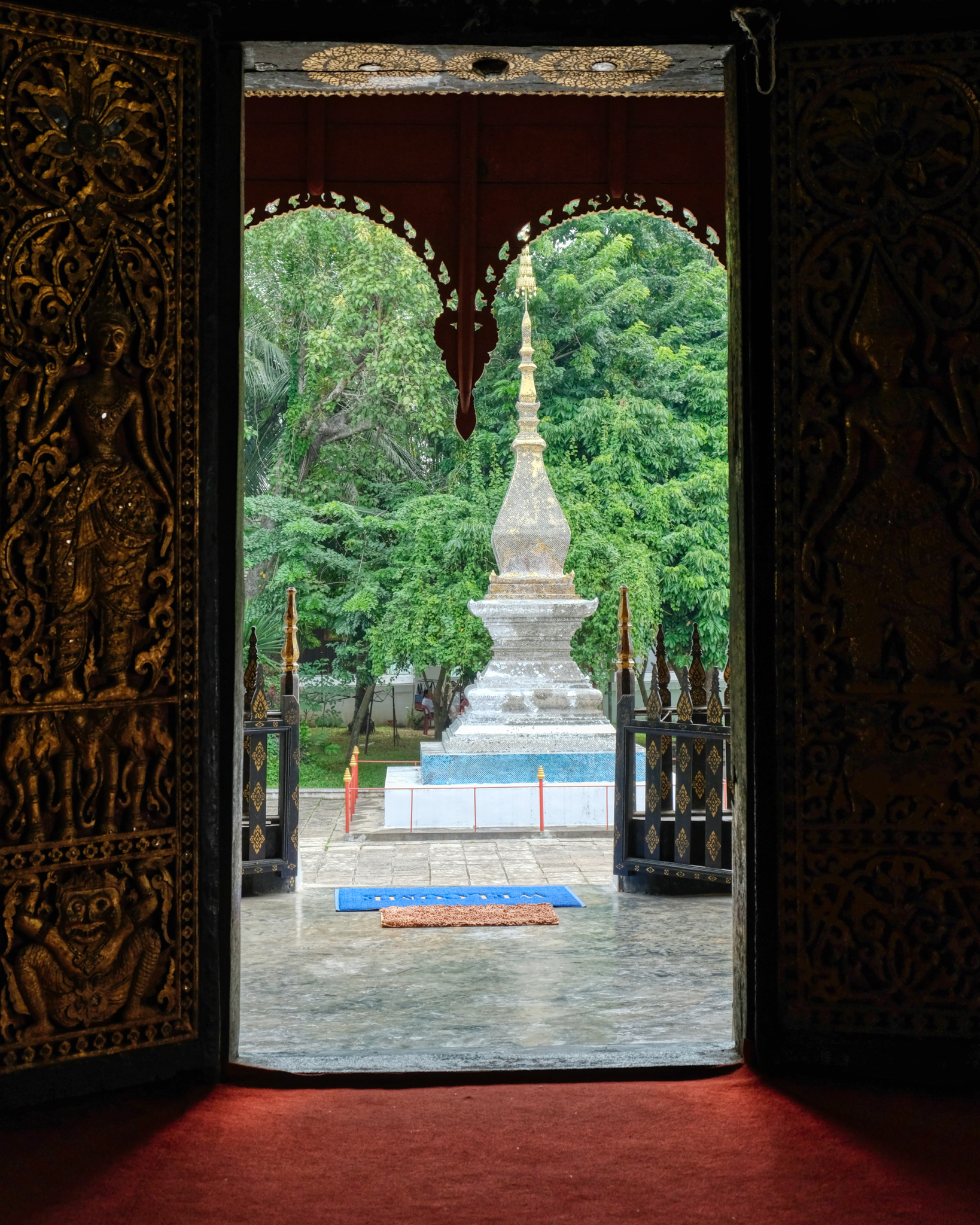 A view from inside the main hall to a glowing chedi on the temple grounds.
A view from inside the main hall to a glowing chedi on the temple grounds.
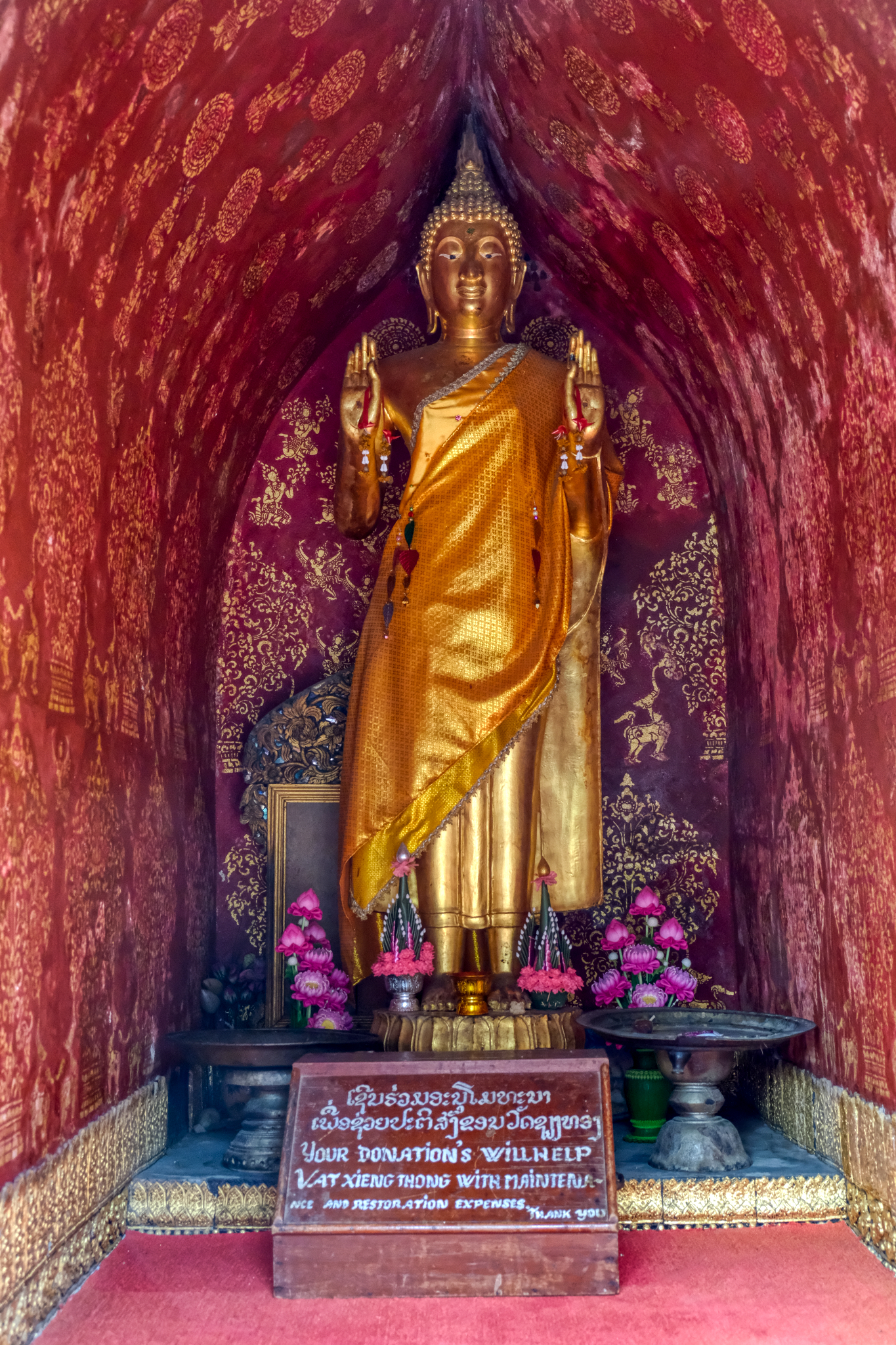 A lovely standing Buddha in a small grotto.
A lovely standing Buddha in a small grotto.
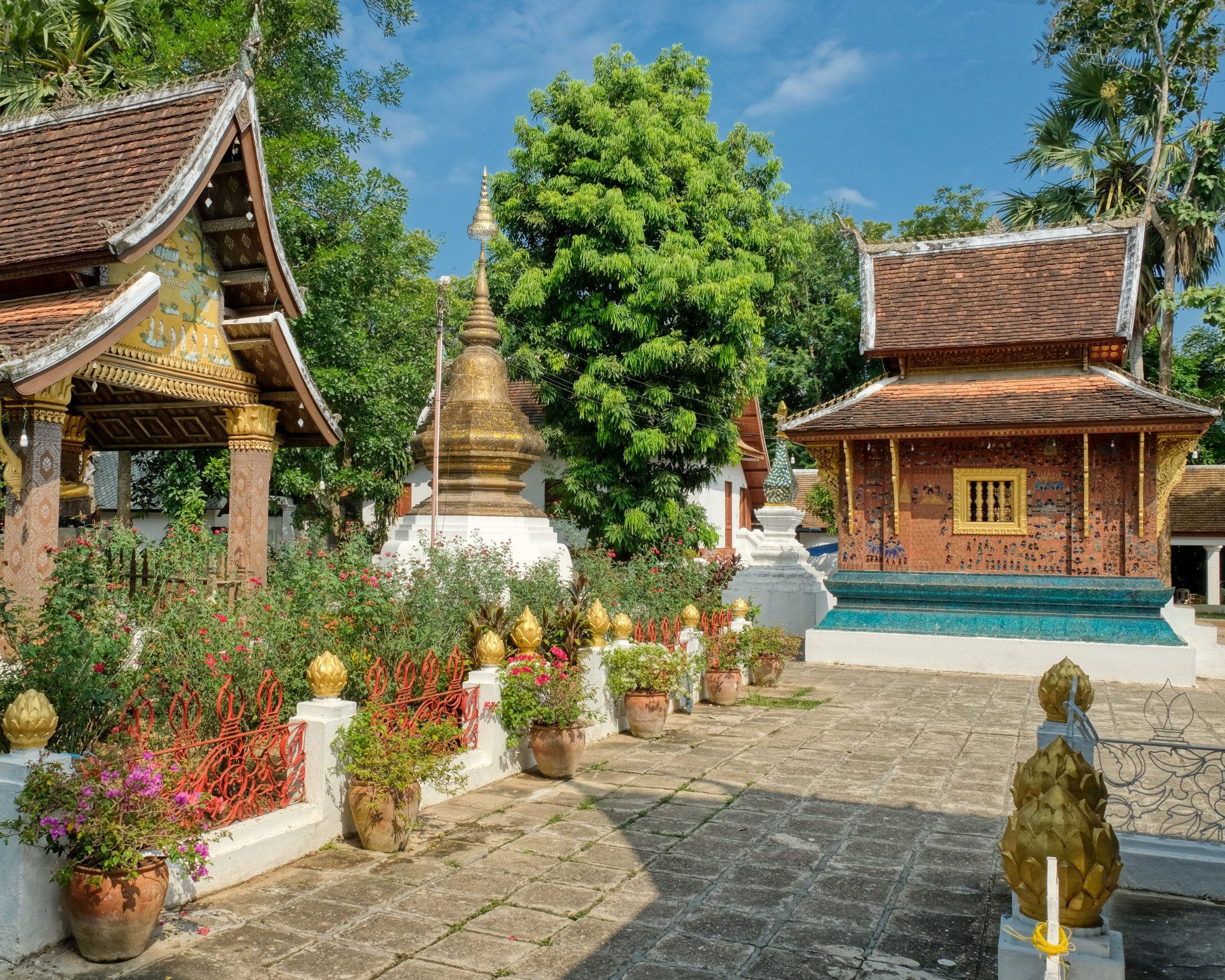 Such a pleasant and peaceful place.
Such a pleasant and peaceful place.
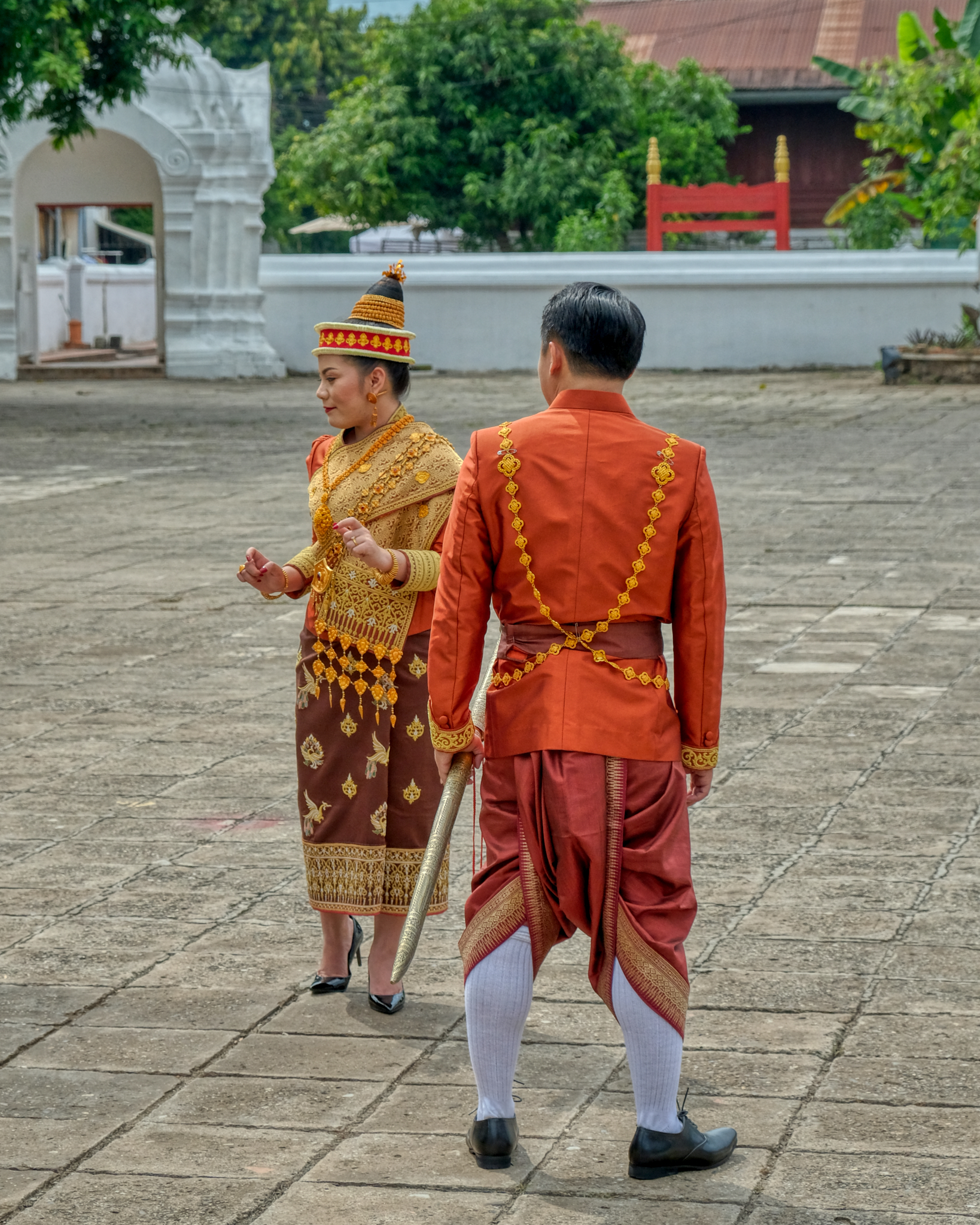 It was my good luck to be at the temple when a soon-to-be-married couple showed up for their bridal photo shoot in traditional Lao costume.
It was my good luck to be at the temple when a soon-to-be-married couple showed up for their bridal photo shoot in traditional Lao costume.
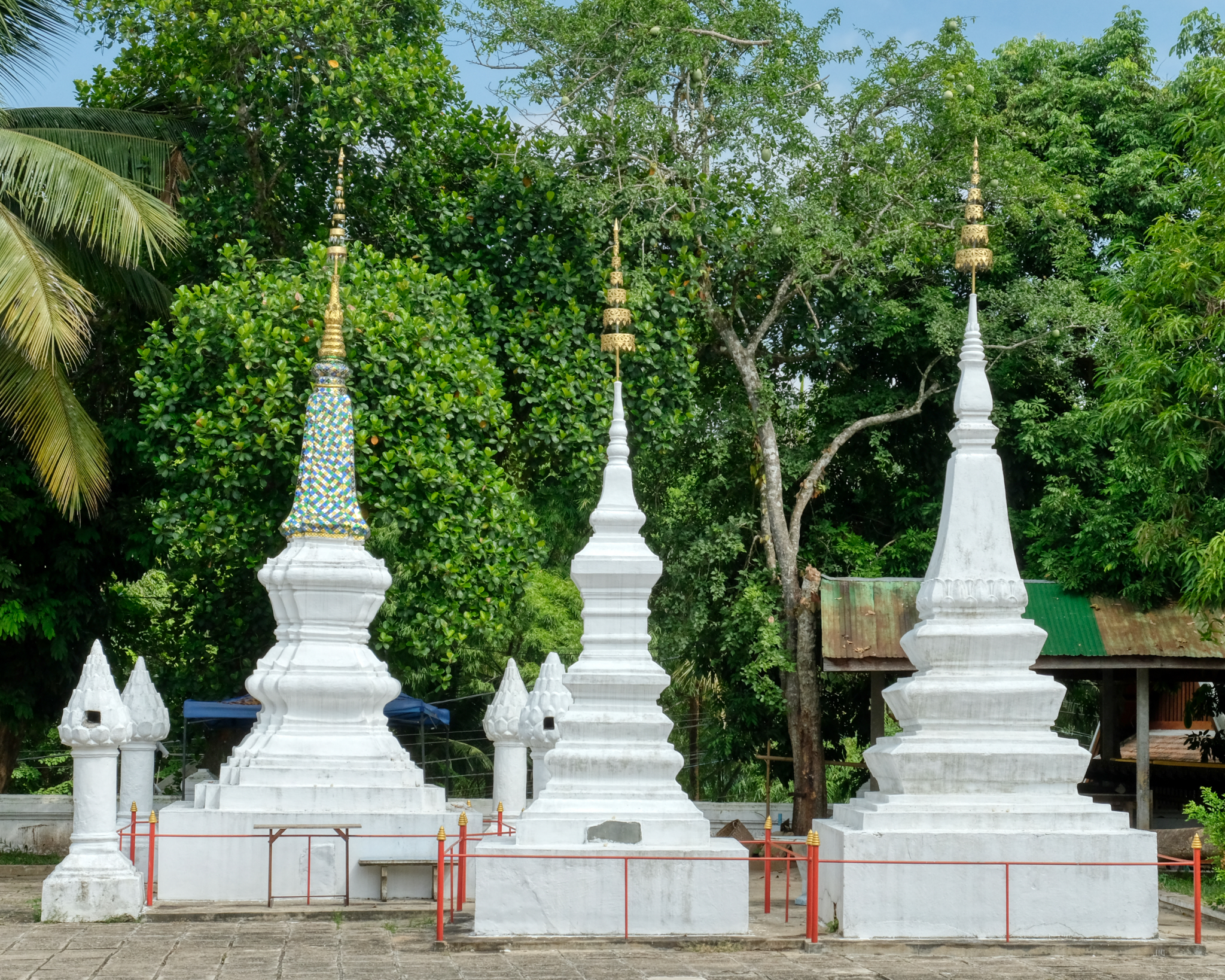 These chedis likely contain the remains of revered monks, abbots, and those who have made big donations to this wat.
These chedis likely contain the remains of revered monks, abbots, and those who have made big donations to this wat.
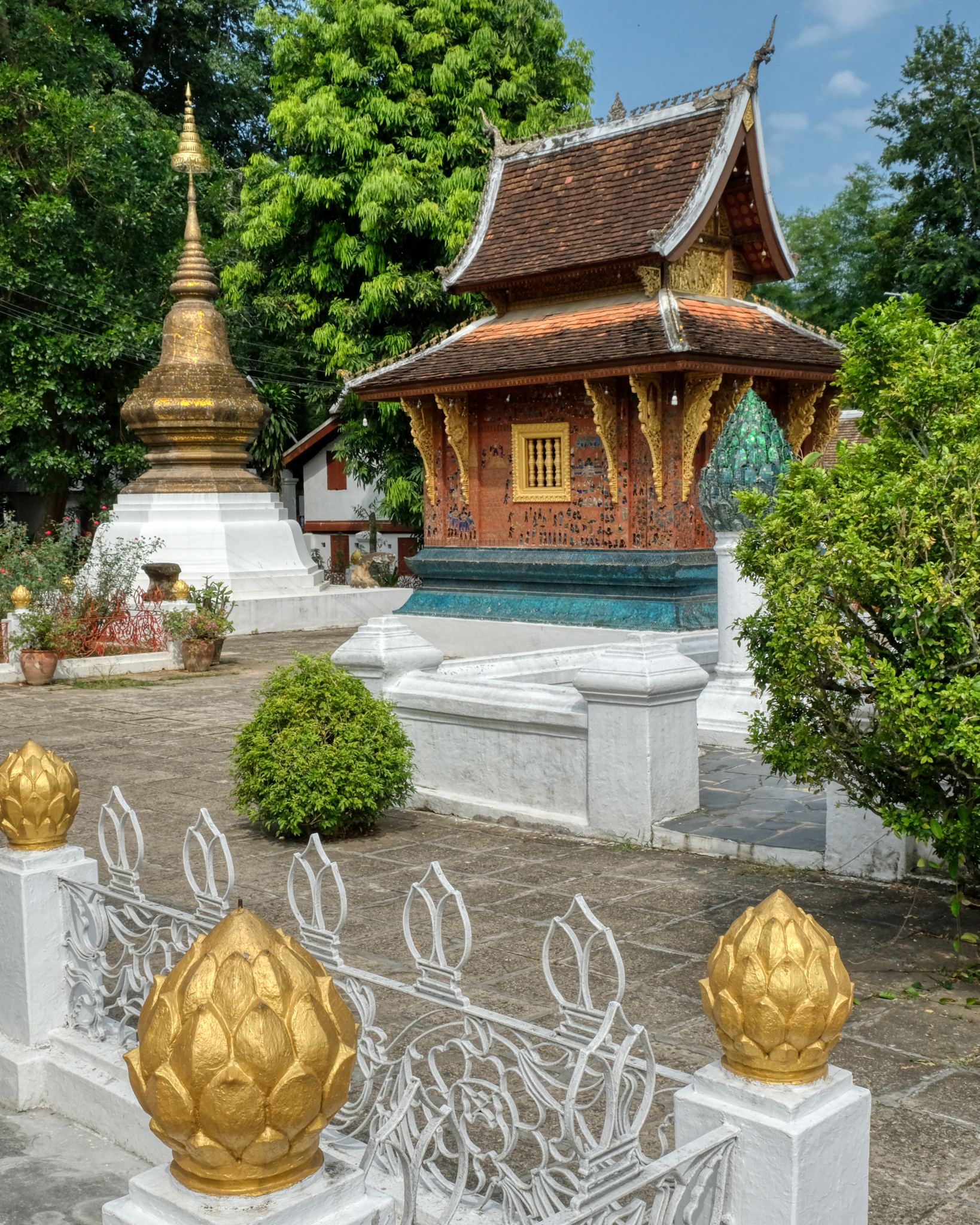 I have been to many, many Buddhist temples in many countries, but this one is one of the most beautiful.
I have been to many, many Buddhist temples in many countries, but this one is one of the most beautiful.
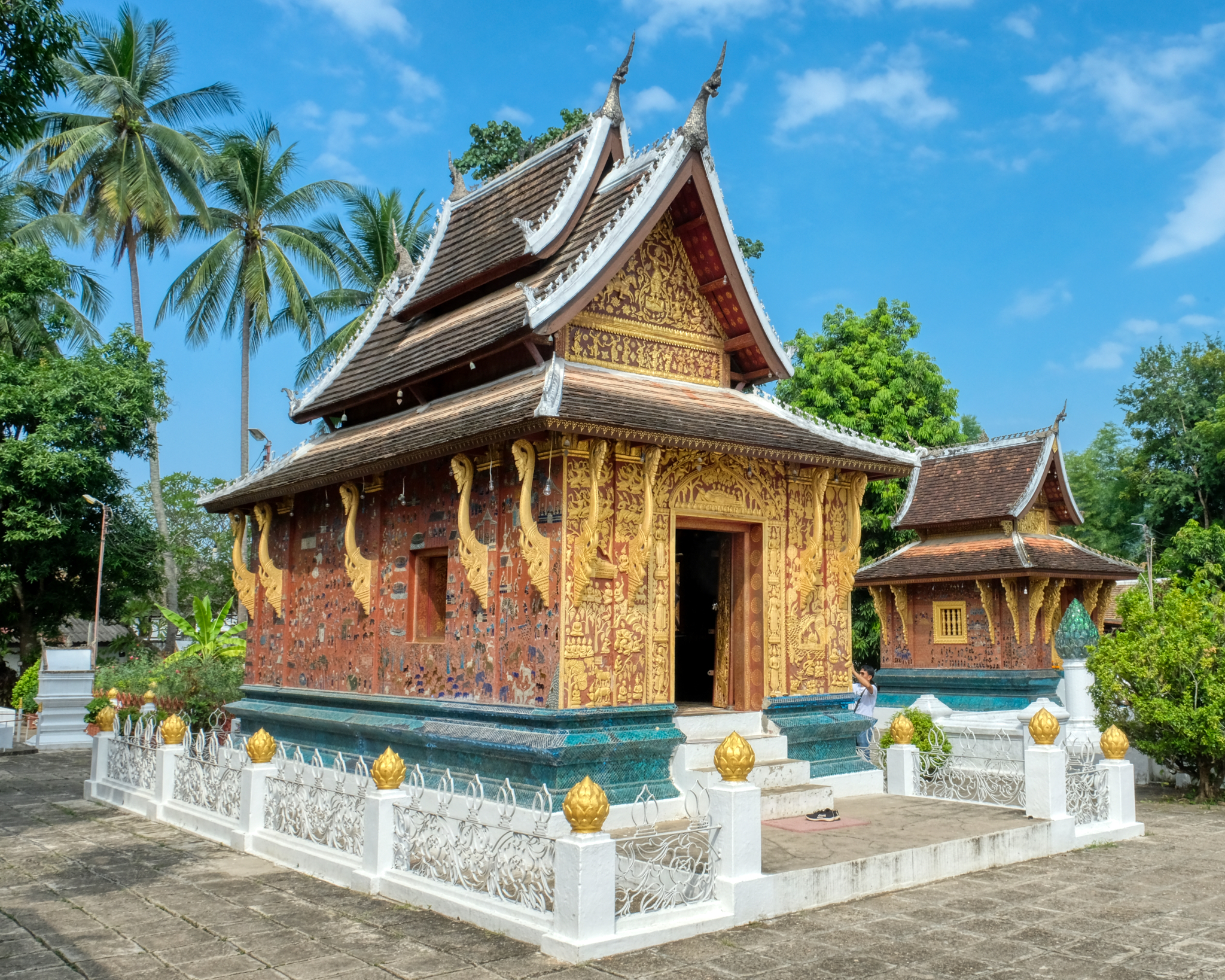 Many small structures for individual Buddha altars.
Many small structures for individual Buddha altars.
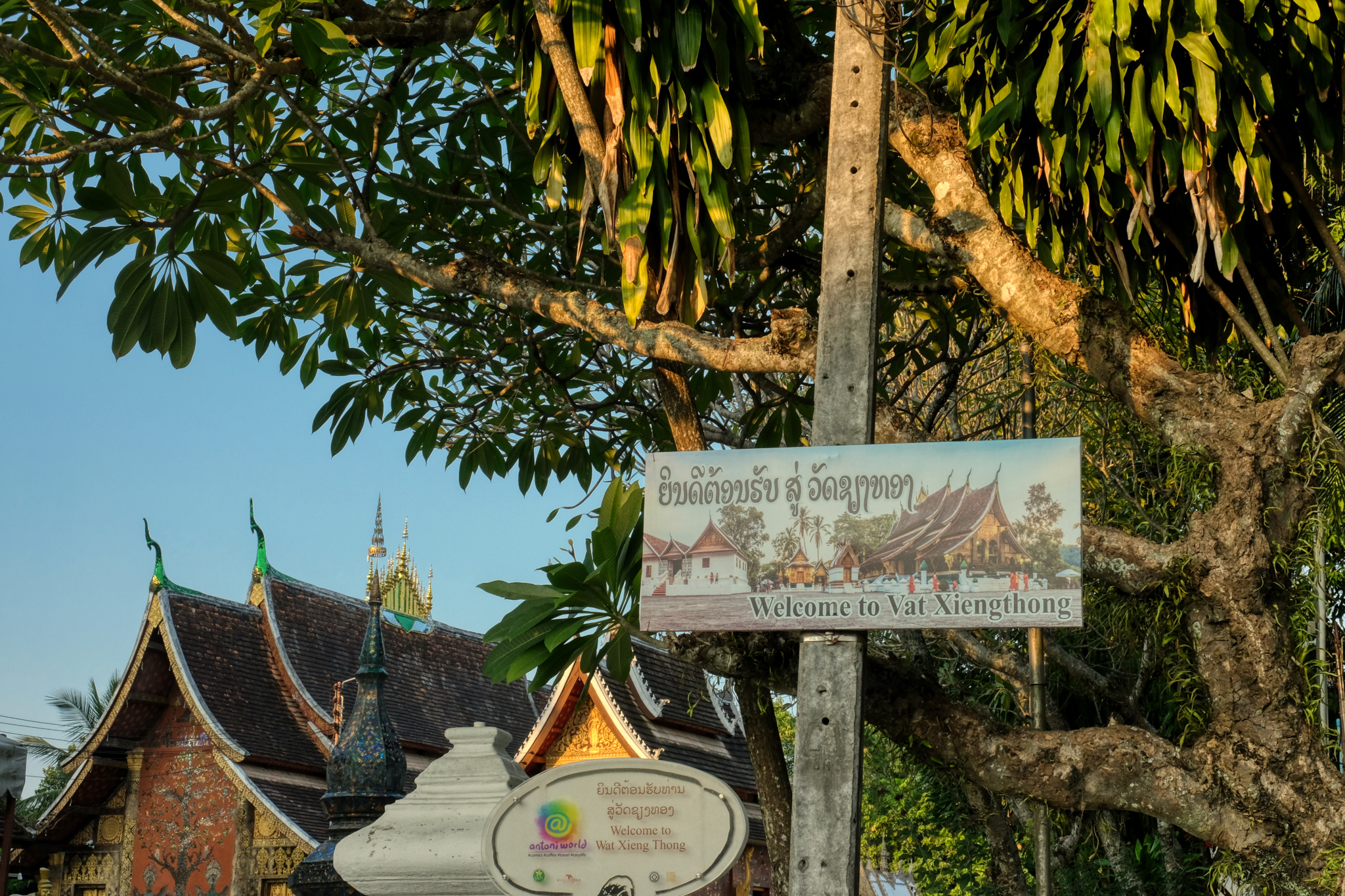 I came back one evening after dinner when the light was changing to a golden hue.
I came back one evening after dinner when the light was changing to a golden hue.
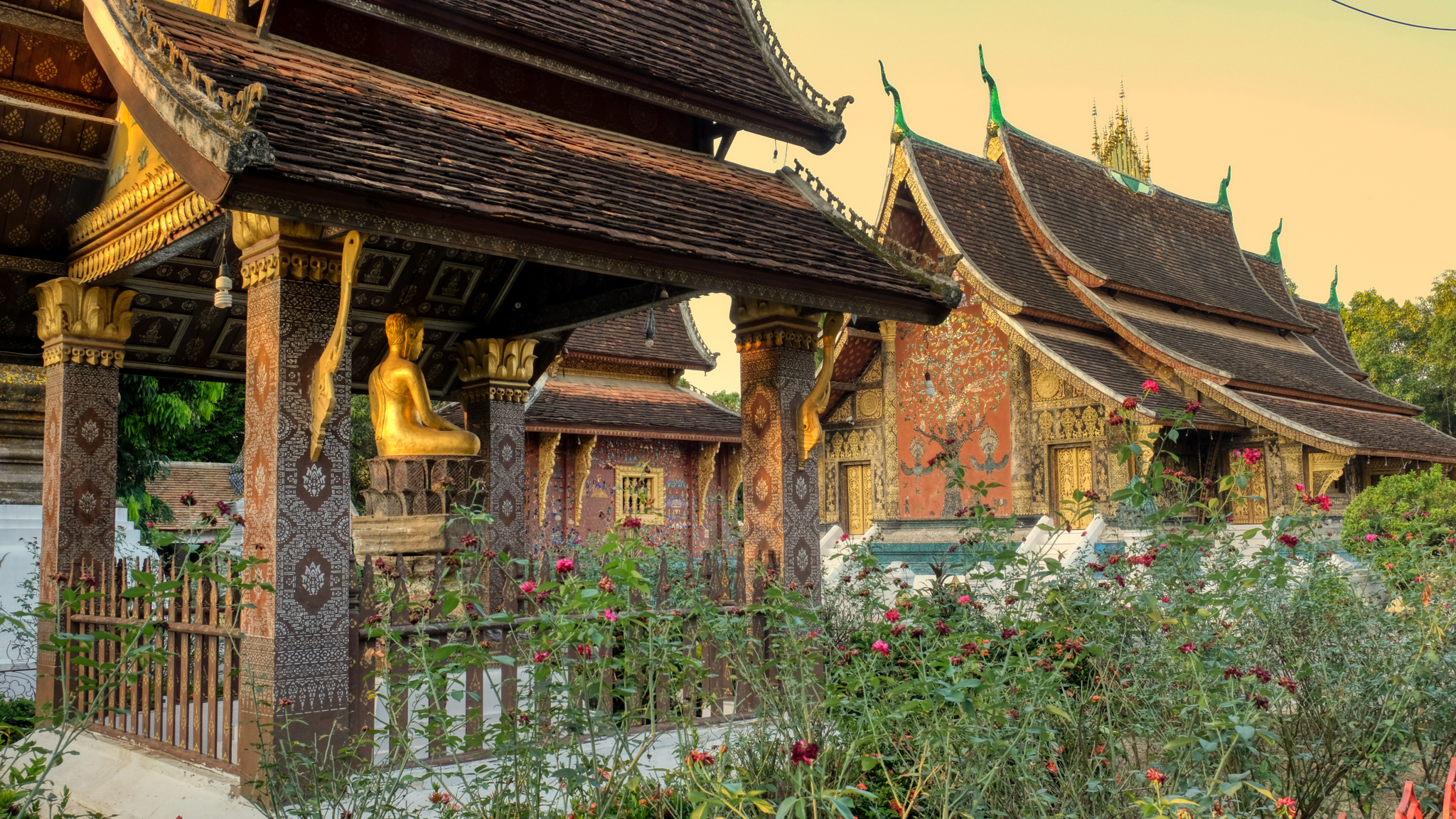 Magic light.
Magic light.
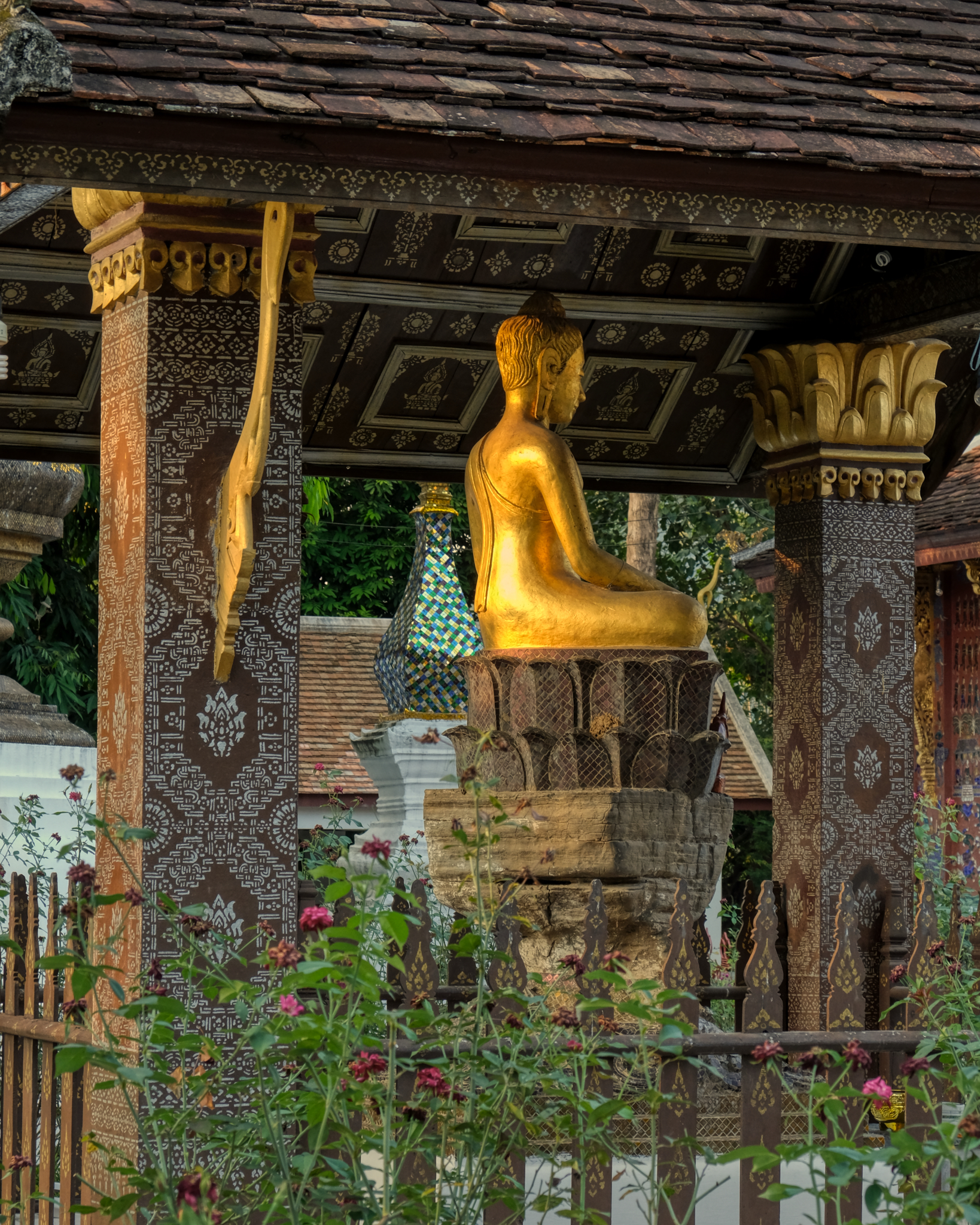 I will be back to Luang Prabang, and when I do, I will revisit Wat Xieng Thong.
I will be back to Luang Prabang, and when I do, I will revisit Wat Xieng Thong.
